15 best things to do in Kyoto
Jan 25, 2024 • 9 min read
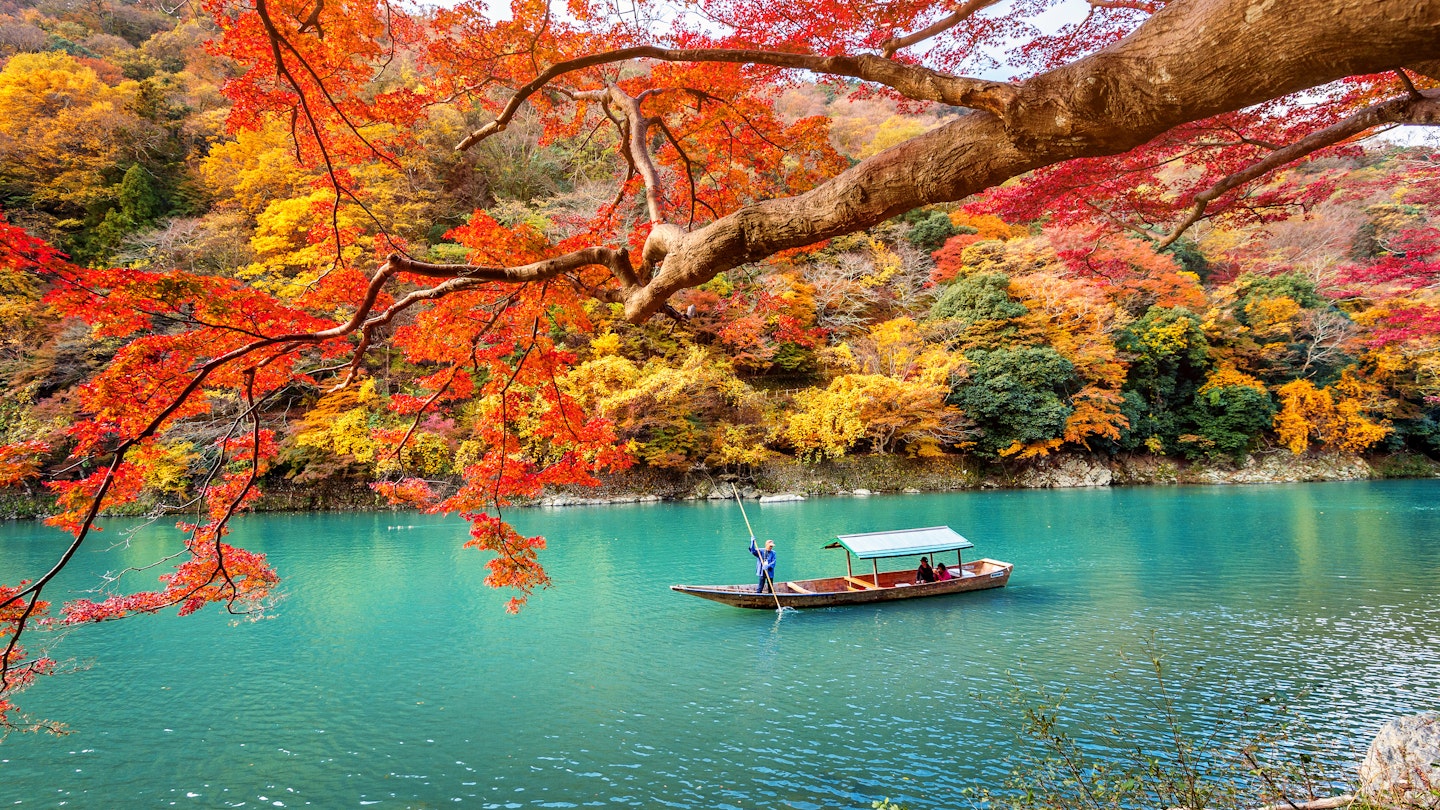
Beautiful Kyoto offers tons of things to do and see - here are our favorites © Guitar Photographer / Shutterstock
Kyoto is on the travel list of most first-time visitors to Japan for good reason. With its fleet of over 2000 temples, lush gardens and traditional tea houses, Kyoto is one of Japan’s major historical hubs – to say nothing of being easy on the eye (enjoy a sunset on the hill in Kiyomizu-dera to see what we mean).
It can be easy to get lost in the tangle of streets – Kyoto is one of those cities where it’s easy to just pick a walking direction and see what you find, whether it’s an unexpected shrine in the middle of a commercial street, sakura-lined canal or well-appointed park. But sometimes, it pays to prioritize. Plan a trip around the following can’t-miss sights and experiences to maximize your time in the city.
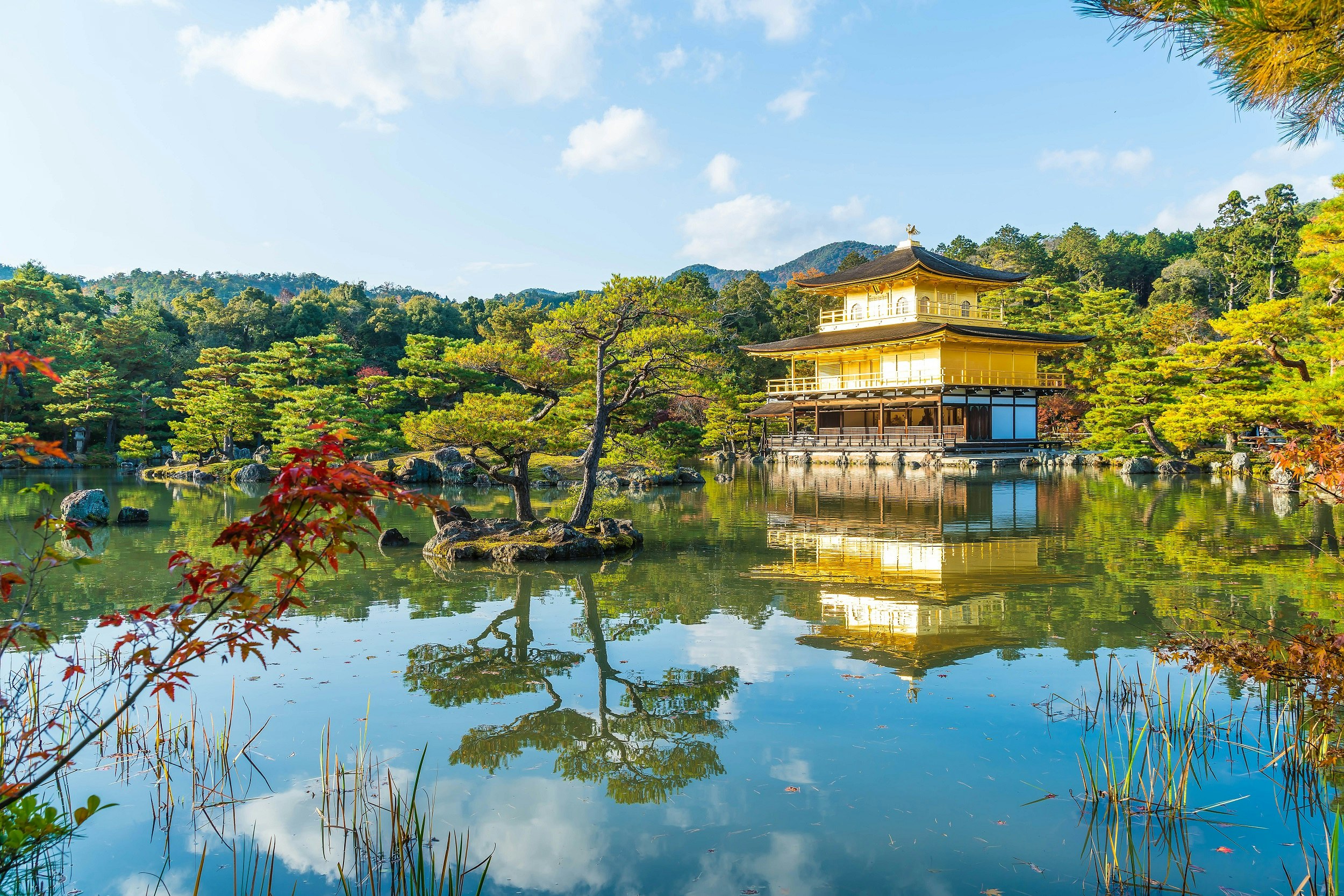

1. Stay golden at Kinkaku-ji
Kinkaku-ji is a tourist favorite – nicknamed Golden Pavilion for its gold-leaf gilded upper layers, this zen temple is a magnificent sight regardless of the time of year. One-way foot traffic flows fairly consistently but tends to bunch up directly in front of the temple, where visitors tend to pause to grab a show-stopping photo of the temple reflected in the pond (again, who can blame them?).
Consider visiting on a weekday to avoid the rush.

2. Walk through the iconic orange gates of Fushimi Inari Taisha
There’s a reason that Fushimi Inari-Taisha ranks high on every visitor’s list: the 10,000 vibrant orange torii (gates) snaking up the hill to create the ultimate photo op. The practice of donating a gate to the temple has been in place since the Edo Period and carries on today as businesses celebrate their successes with an act of gratitude.
Start at the lower level to admire the skulk of fox statues – the manifestation of the Shintō god Inari, the protector of rice, tea, agriculture and industry. The full loop takes two to three hours to complete, but it’s worth making the climb to avoid the throng of visitors that usually populate the lower levels (don’t worry, there are plenty of vending machines to keep you hydrated along the way).
Alternatively, it’s worth considering a sunrise visit, when the local monks are making their way up the hill to work and the resident cat population is out to play.
3. Find fortune at Kiyomizu-dera
Located in Eastern Kyoto, Kiyomizu-dera literally towers over the city with the help of 139 stilts. During the Edo period, seekers would jump from the temple's platform to the ground 43ft below in order to make their wishes come true. Today, you can instead find your fortune at the sacred Otowa Waterfall. Located on the temple’s lower level, the stream is divided into three sections, delivering longevity, academic success or luck in love depending on which one you drink from (take note that drinking from more than one stream is considered greedy). But you don’t need any luck to enjoy the temple’s panoramic views over the city, which are enhanced by spring sakura (cherry blossom) season, autumn foliage and stunning sunsets.
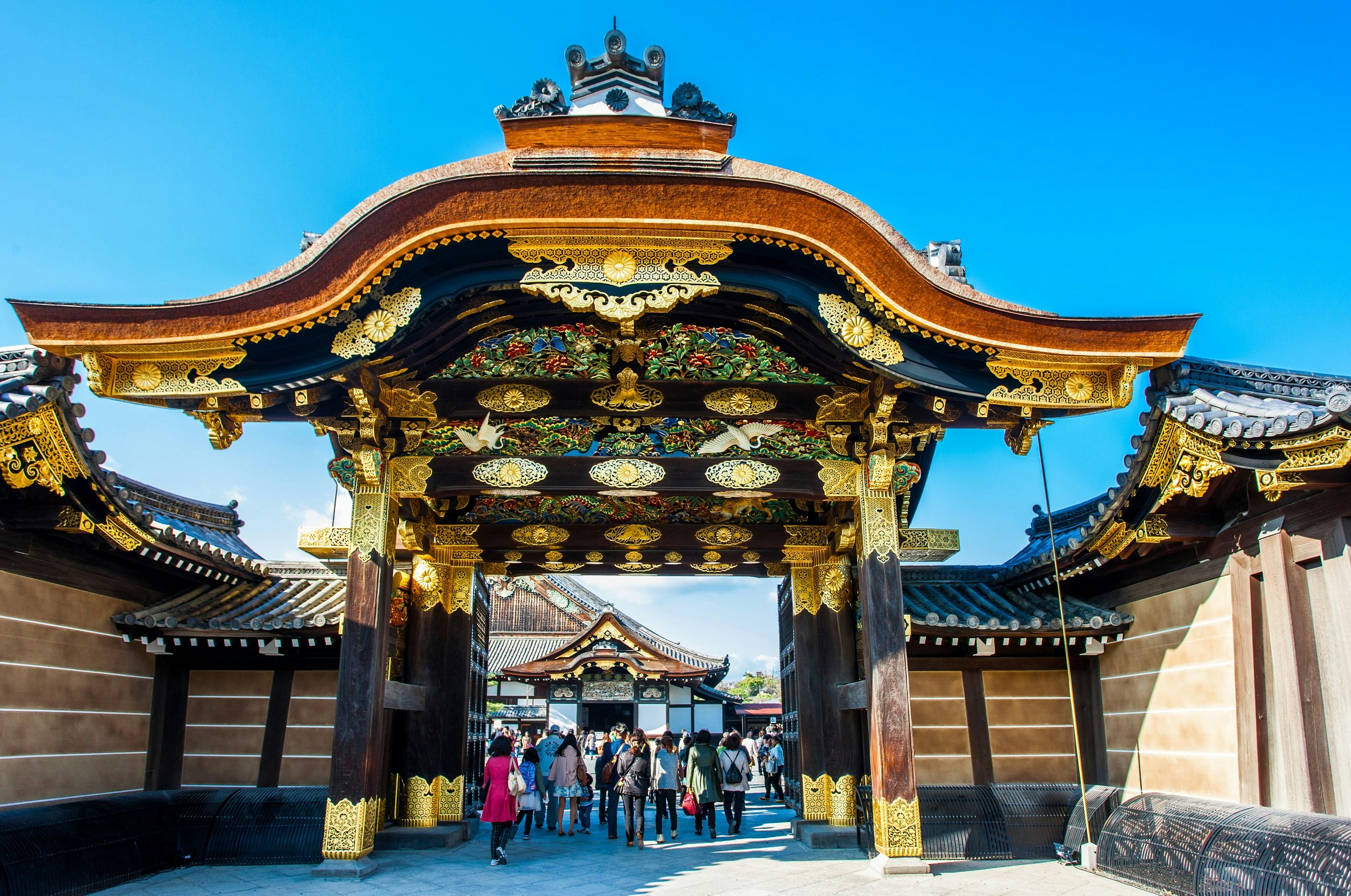
4. Time travel at Nijō-jo
Enter through Nijō-jō 's large eastern battlements to step back in time. The castle was the former home of Tokugawa shoguns, and its lavishly appointed gardens and opulent chambers filled with detailed murals and intricate carvings speak to the warlord collective’s extreme wealth.
Keep an eye out for the painted lions (created by an artist who had yet to see the real thing in person), and experience the sensation of walking barefoot across the “nightingale floors,” which chirp like the birds they’re named after – a built-in sonic defense against intruders.
5. Enjoy a stroll at Koke-dera
Koke-dera (the nickname for Saiho-ji ) is so stunning that the temple inspired “Moss Garden,” a track on David Bowie’s 1977 album Heroes . However, walking in Ziggy Stardust’s footsteps takes some advance planning. In order to preserve Koke-dera’s tranquility, visitors must register at least one day in advance (although up to two months earlier is advisable due to capacity restraints).
Once inside, guests are asked to participate in an act of devotion, usually copying a series of Buddhist sutras. Consider it an appetizer for the main course: a half-hour stroll through the scenic garden blanketed in 120 different kinds of moss.

6. Sip on some matcha
Matcha was originally drunk by Chinese Buddhist monks who believed the highly caffeinated beverage assisted in their quest for nirvana. When the religion spread to Japan, matcha came with it, particularly in the southern region of Kyoto Prefecture, which has an 800-year tradition of cultivation. To learn more about the beverage, start with a traditional tea ceremony at Camellia for an experience that will not only walk you through the elaborate steps of preparation but also explain the historical and practical reason behind each movement.
For a more modern take, stop by Maccha House . Their flagship store on Shijō Kawaramachi serves a number of unique twists on the beverage, including a brown sugar matcha latte and their signature Uji Matcha Tiramisu. Tea shops like Ippōdō and Marukyu Koyamaen (located in Kyoto Isetan department store adjacent to Kyoto Station) can help you bring the zen home with you.
While you’re at it, be sure to grab some wagashi , a delicate red bean and sugar pastry that pairs perfectly with the matcha’s earthy essence.
7. Get your ramen fix
Kyoto’s food scene is often overlooked thanks to neighboring Osaka, aka “the nation’s kitchen.” However, the city has been teasing out different types of the famous noodle soup since the first ramen street stall was set up in 1961.
Kyoto Gogyo is known for its high-end burnt ramen, with broth cooked at extremely high temperatures to create a smoky char and entertaining fiery show while you eat – so be sure to request a seat at the bar. Vegan Ramen UZU Kyoto ’s mushroom-based ramen is served in a darkened dining room, lit by TeamLab’s “Reversed Indiscretion,” a mesmerizing piece of digital art that creates calligraphy-like swoops across the walls and table. Engine Ramen has become a favorite due to its ability to make any item on the menu vegan or gluten-free. Just be sure to line up early as the restaurant regularly fills up after it opens for dinner at 4pm.

8. Embrace all the options at Nishiki Market
If variety is your spice of life, then Nishiki Market is your place. Also known as “Kyoto’s Kitchen,” this five-block collection of over 100 restaurants and shops is the perfect place for snacking on local specialties. It also doesn’t hurt that many stalls give out free samples. Feeling brave? Try the shockingly photogenic t ako tamago ( a baby octopus with an egg in its head), or beef sushi.
Other crowd-pleasers include soy milk donuts, rice crackers, and dashimaki – a Japanese rolled omelet that some stalls serve as tempura.
9. Bring home sustainable souvenirs
From bento boxes to washi (handmade paper) and porcelain, Kyoto is a great place to pick up souvenirs. You could easily spend the day browsing tourist-favorite department stores Takashimaya and Daimaru Kyoto. To bring home a piece of history, consider a stop at Vintage Kimono AN Gion , a cozy storefront crammed with vintage kimonos. Not only do they sell the historical robes at extremely reasonable prices (often as low as ¥1000), but they also offer obi belts and damaged kimonos for those looking to repurpose the silk.

10. Stay at a ryokan
Kyoto is considered one of the great historical epicenters of Japan, so there’s no better way to experience the region's essence than by staying in a ryokan. These traditional inns are generally smaller than their western counterparts and outfitted with woven tatami mats, futons that are rolled out every night and all matter of meaningful art. The intimate setting allows owners to provide guests with more personalized attention in addition to the kind of lavish meals you’re unlikely to find elsewhere.
For the ultimate indulgence, consider a night in the Tawaraya Ryokan , where David Bowie and Iman stayed during their honeymoon. This historic ryokan is 300 years old and in its 12th generation of family ownership. It’s regularly considered one of the most exclusive hotels in the world.
11. Relax in an onsen
More than just a bath (although it certainly is that), onsen are a great way to connect with nature and friends while participating in an act of self-care, provided you’re comfortable with group nudity. Carefully wash yourself from head to toe before slipping into hot water with a mineral content that locals claim can cure a WebMD worth of ailments.
If you want to soak within the city limits, head to Fu-fu-no-yu , a facility with stunning rock-lined pools inches from the Katsura River.

12. Wander through Arashiyama
The sound of bamboo in the wind is part of Japan's national heritage. Located in the Western Kyoto district of Arashiyama, the Arashiyama Bamboo Grove is one of the most famous places in the world to hear it. Just keep in mind that, while scenic, the 140m (459ft) walk isn’t as quiet as you might have been led to believe thanks to its popularity. If you’re in the market for the ultimate selfie, or just a more restful experience, visit at sunrise.
Not an early riser? Opt to visit Shoden-ji , a temple in Northern Kyoto with an abundant bamboo groove that’s often overlooked by tourists.

13. Enjoy an urbane escape at Ōkōchi Sansō
Despite its proximity to Arashiyama Bamboo Grove, many tourists miss Ōkōchi Sansō in their rush to grab that perfect Instagram snap. This former home of 1920s samurai film actor Ōkōchi Denjirō is the perfect place to escape the crowds. Work up a thirst with a wander through the immaculate hillside gardens that offer panoramic views of the city from the top. Then retreat to the on-site tea house for a proper break with a side of complimentary matcha and Japanese sweets.
14. Embrace the seasons at Osawa Pond
Osawa Pond is a 15-minute walk from JR Saga-Arashiyama Station, but the garden feels plucked from an entirely different era. The human-made pond is the oldest known surviving Japanese garden and a peaceful refuge to enjoy fall colors and spring sakura season. Be sure to visit Daikaku-ji next door, a sprawling Shingon Buddhist temple with architecture so untouched by time it’s often used as a filming location for historical dramas.
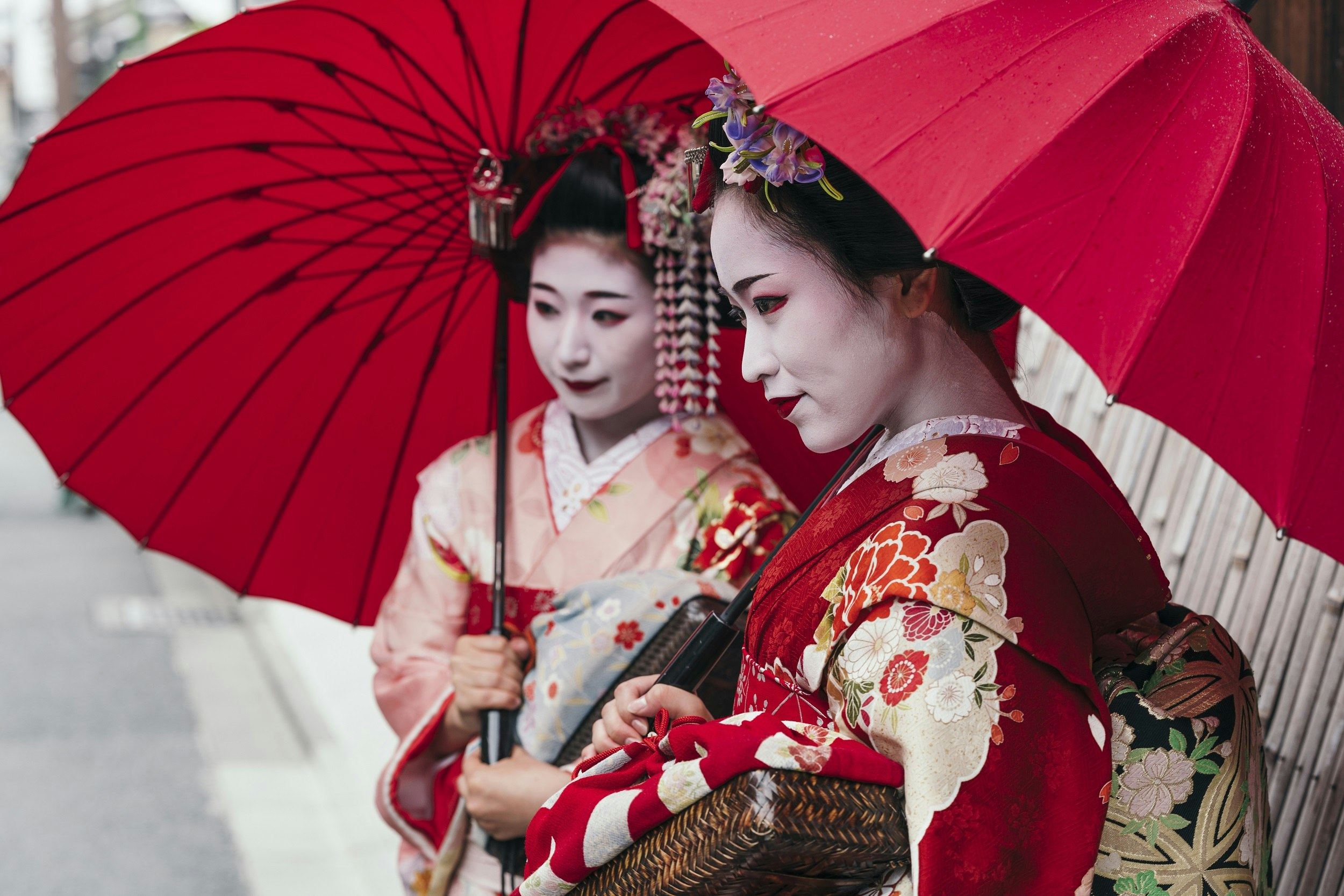
15. Explore Gion District
Geisha, or geiko as they’re called in Kyoto, are one of the icons of the city. These skilled hostesses and entertainers are usually employed at dinners and other high-end events at venues along the lantern-lined streets of the Gion neighborhood. Like the geiko themselves, the district is a living tribute to the Edo era, with its narrow wooden storefronts, teahouses, and stores dedicated to traditional handicrafts creating the perfect escape from the modern era.
This article was first published March 2020 and updated January 2024
Explore related stories
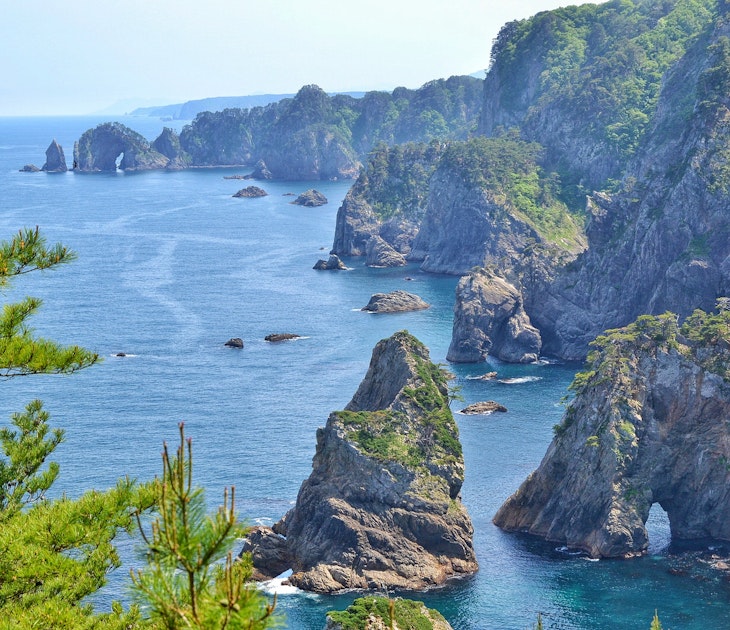
Architecture
Sep 24, 2019 • 5 min read
A beautiful and varied natural landscape, traditional craft-making culture, and noodle specialities are just a few reasons to explore Iwate Prefecture.
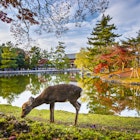
Sep 3, 2019 • 5 min read

Apr 2, 2024 • 10 min read

Mar 26, 2024 • 8 min read

Mar 25, 2024 • 6 min read

Mar 25, 2024 • 10 min read

Mar 23, 2024 • 17 min read

Mar 13, 2024 • 6 min read

Mar 1, 2024 • 6 min read
20 Popular Tourist Attractions in Kyoto – An Overview Per Area
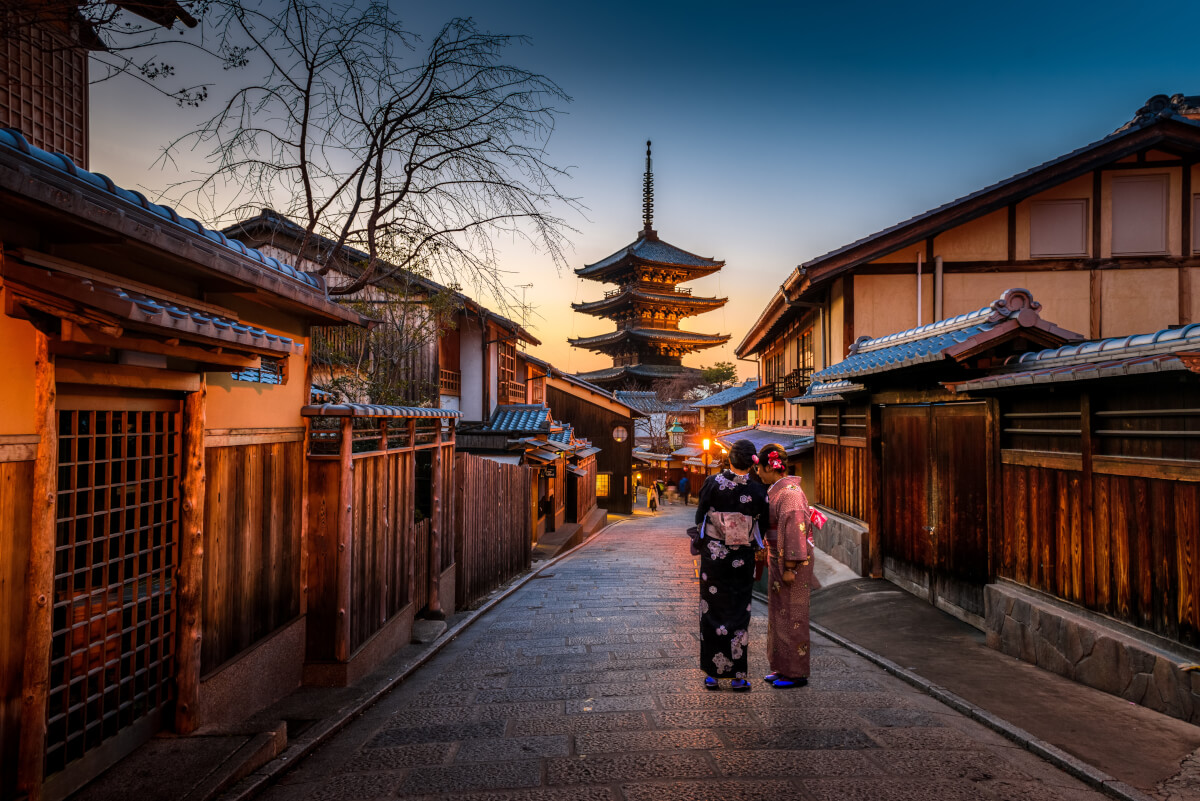
Kyoto, the ancient capital of Japan, is always listed among the most popular tourist destinations in Japan. It is a wonderful place to visit, all year round and offers an abundance of things to see and do. Like many of the other bigger cities such as Tokyo and Osaka, it has been through rapid growth as a center of the economy. Many amazing sightseeing spots draw many tourists to the city. Once you open a travel guide in Kyoto, you might get a little confused and feel lost as there are so many places to go and things to do there. In this article, we list Kyoto’s most popular tourist attractions (and some hidden attractions), and tell you more about each area and its’ highlights! But first, let’s start with an introduction to a beautiful city!
▼ Want the real Kyoto experience? Meet some Maiko and Geiko (geisha) and explore the Gion area with us!
About Kyoto
1. kyoto station, 2. kyoto imperial palace & kyoto gyoen, 3. gion district, 4. nijo castle, 5. nishiki market, 6. kinkakuji temple, 7. ryoanji temple, 8. kurama temple and kifune shrine, 9. fushimi inari shrine, 10. tofukuji temple, 11. gekkeikan okura sake museum, 12. kiyomizu-dera temple, 13. sanjusangendo temple, 14. arashiyama bamboo groves, 15. togetsukyo bridge, 16. arashiyama monkey park iwatayama, 17. amanohashidate, 20. yokai street, kimono rental in kyoto, find other experience, where to stay in kyoto, other articles you may like.
Kyoto (京都, Kyōto) is Japan’s oldest city and served as the nation’s capital and the emperor’s residence for over 1,000 years, from 794 until 1868. Over the centuries, the city has been destroyed by many wars and fires, however, because of its cultural and historical value Kyoto was largely spared by the WWII bombings. It is for this reason that you can still visit many old cultural landmarks and historical sites. And because of the preserved townscape, you will find many people walking around in a beautiful kimono (traditional Japanese clothing) in Kyoto! If you want to try on a kimono and explore the city, you can easily find some kimono rental shops in Kyoto to complete the look to match the historical sites.
Present day, Kyoto is home to about 2,000 temples and shrines such as the Fushimi-Inari Shrine, the Kinkaku-ji (The Golden Pavilion), and Kiyomizu-dera Temple. Some of Kyoto’s other famous tourist destinations include the Imperial Palace and the Gion district.
Kyoto is often combined with day trips to some of Japan’s famous tourist destinations that are located nearby, including Nara, Kobe, and Hiroshima.

Kyoto station is the city’s main gateway located in the very center of Kyoto. This is where most tourists start their trip in Kyoto as almost all of the public transportation lines depart and arrive here. The station is also known as a huge shopping complex, where you can try local foods and find perfect souvenirs to take home. Around the station, there are several attractive spots that can be seen from the observation deck of Kyoto Tower, which offers an amazing view of the entire city of Kyoto!
For more things to do around Kyoto Station have a read below!
▶Book your Kyoto Tower Observation Deck Admission E-ticket here
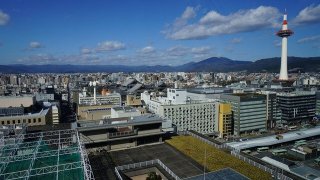
Other famous tourist attractions are also accessible by bus or subway. Kyoto Imperial Palace (also known as Kyoto Gosho), one of the most popular historical spots in Kyoto, can be reached by a 10-minute comfortable ride on the subway from Kyoto Station. Kyoto Imperial Palace is the former residence of the imperial family for over 1,000 years. The current building was reconstructed in 1855 after it burned down but the architecture kept the ancient style. It is located in the vast park of Kyoto Gyoen, and you can see the other important historical sites and enjoy beautiful gardens.
Learn all about Kyoto’s Imperial Palace and Kyoto Gyoen in the article below!
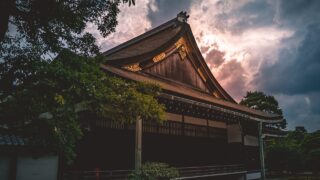
Gion district, often described as the geisha district, is the famous entertainment district that is home to many beautiful traditional restaurants and is great for strolling around. For those who want to have a more special experience, you can also visit traditional performances by geisha. It’s not easy to see the geisha’s performance since many of the places don’t allow first-timers. It’s best to book the walking tour including access to meet geisha and maiko who are apprentices of geisha and see their beautiful performance if you are interested in their history, culture, and traditions.
Recommended tour:
Another must-visit spot called Nijo Castle, which is designated as a UNESCO World Heritage Site is within walking distance from Kyoto Gyoen. This castle was originally built in 1603 and used as a temporary stay for the shogun when visiting from Tokyo and the lookout for Kyoto Gosho. The big reconstruction had been done with gorgeous paintings on the sliding doors, and it was the event that showed the power of the Edo shogunate throughout Japan. However the prosperity didn’t last forever, the end of the flourishing Edo period, one of the biggest historical events of Japan, happened here in 1867, when the imperial court regained its power once again when the last shogun returned its power to the court. The gorgeous interior and beautiful paintings on the sliding doors can be seen in the main hall, Honmaru Goten. Also, you can enjoy a relaxing stroll around the gardens at the castle site.

If you’re feeling hungry, Nishiki Market is the ideal spot to sample delicious Japanese traditional cuisine amid the unique atmosphere of the small stores lining the lively, narrow street. Located in the central part of Kyoto, it’s easily accessible from the city’s popular tourist attractions. Known as the Kitchen of Kyoto, Nishiki Market offers a variety of foods to try. For instance, Takotamago, a small octopus stuffed with a boiled quail egg, and Yuba, a traditional regional specialty made from tofu skin that forms on the surface of boiled soy milk which has been enjoyed in Kyoto since ancient times. Another Kyoto specialty is Hamo, which is Japanese pike conger eel. Its tempura is especially delicious. With so many shops, it can be hard to decide what to try. But don’t worry, leave it to the local guide and make sure you sample all the best foods that Nishiki Market has to offer!
On this Nishiki Market Food and Drink Tour , you can not only enjoy local food and drink, but also discover where the people of Kyoto shop and eat, learn about the area’s history, and explore both traditional and modern parts of the city.
▼Book our food and drink tour in Nishiki Market! This locally guided tour takes you on a food adventure at Nishiki Market, and then, you will stroll two Geisha districts. One is Pontocho Alley known as a scenic and quaint grummet spot along the most quaint river, Kamogawa, and the other one is Gion District, the biggest Geisha district of Kyoto. Let’s try several Kyoto local foods, sake, and sweets on the tour!
The most prestigious site is Kinkakuji Temple, also known as Golden Pavilion, a Zen Buddhist temple widely known because of its stunning design and appearance covered with gold leaf. You can take a relaxing walk in the Japanese traditional garden around the temple as well. In winter, the magnificent view of the golden temple covered by snow can be seen if you are lucky!
Learn more about the Kinkakuji area below!

Ryoanji Temple is another Zen temple listed as a UNESCO World Heritage Site with a famous rock garden which represents a simple, but important aspect of Japanese culture.
Explore all of the other zen and rock gardens Kyoto has to offer in the article below.

Further north in the mountains, there are two historical sites, Kurama Temple and Kifune Shrine. This area is also known as the best spot to enjoy hiking on the sacred mountain while exploring the spiritual sites in nature. The atmosphere here is different from what you can feel in the city, and the place offers an unforgettable memory! Although it is a bit out of the way, it is definitely worth visiting.
▼Book our Kurama & Kibune Private Trekking Tour! In this private tour, the guide will pick you up at your hotel and take a local train to the sacred mountain of Kurama. While hiking to the top, you will find many shrines and temples the guide will explain. During summer, you can have lunch at a traditional ‘kawadoko’, a riverside restaurant in the Kibune area!
This is probably what most tourists think of when they think of Kyoto. The southern part of Kyoto City has the most popular tourist attraction in Kyoto; the Fushimi Inari Shrine. What makes it so special and popular is the long line of thousands of red torii gates known as Senbon Torii. You have probably seen the iconic red torii gate pictures online or in guidebooks before. And to be honest, this is actually a must-visit spot that is also easily accessible by train from Kyoto station.
Discover everything that Fushimi Inari has in store below.

Besides Fushimi Inari Shrine, there are a number of other tourist spots in the area. Tofukuji Temple is one of them which is known as the best place to see the beautiful view of the colorful leaves in autumn. It’s one of the principal Zen temples in Kyoto and the large temple site includes the Zen garden and the oldest gate of the Zen temples in Japan which is designated as the National Treasure.
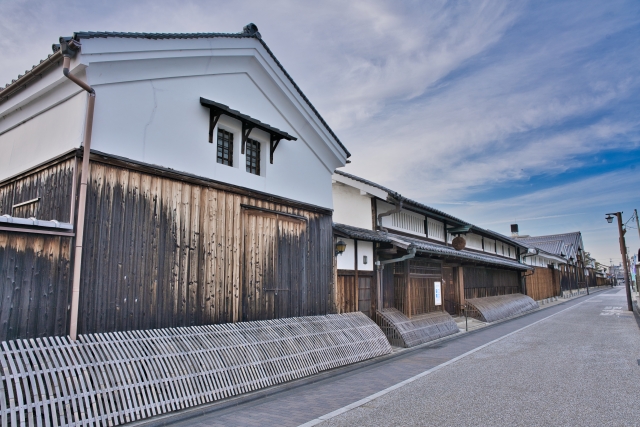
It’s a museum about Japanese sake, renovated from the old sake brewery. You can learn the history and process of making sake using a traditional method, but of course, you can taste some sake at the end of the tour! There’s an optional tour to visit the small sake brewery where a fermentation process can be observed through the window.
Sake Spectacular: Museum Tour & Tasting in Fushimi
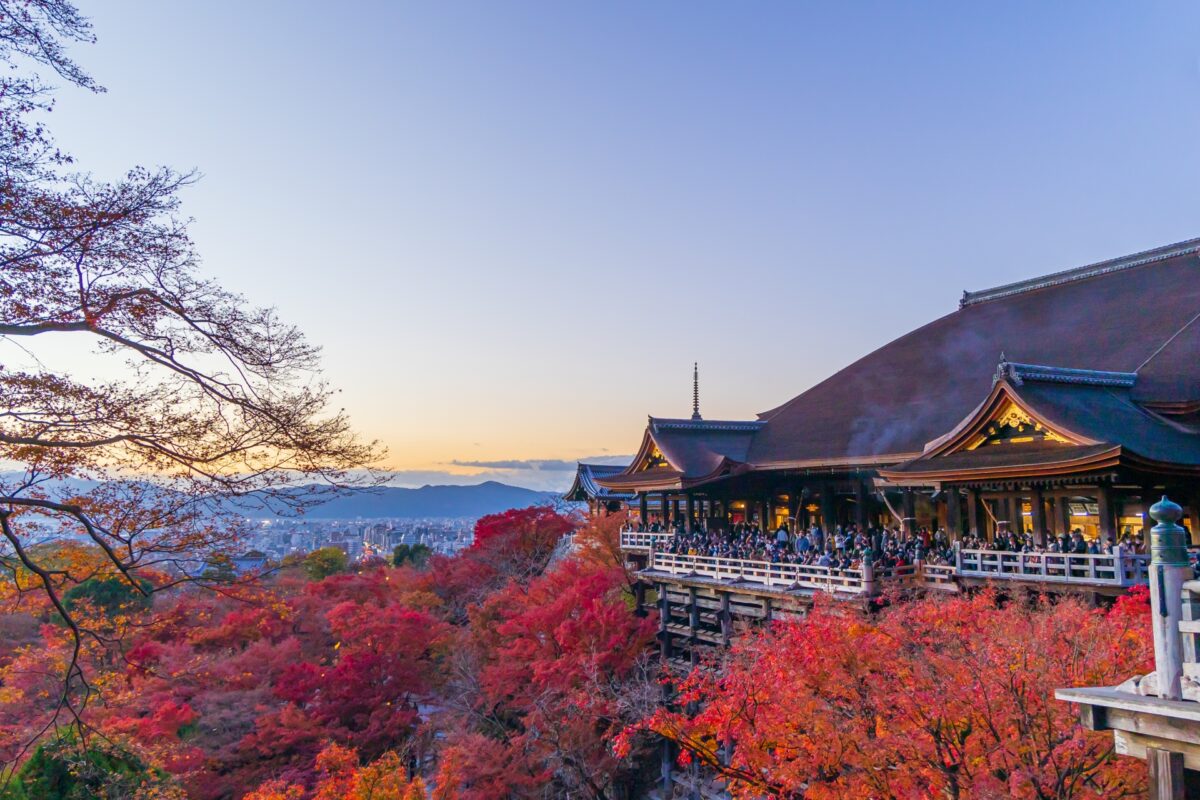
When it’s your first time in Kyoto, we recommend visiting the famous temples such as Kiyomizu-dera Temple. It’s one of the most popular tourist spots in Kyoto all year round which is always crowded with many tourists. Kiyomizu-dera is located in the middle of the mountain, and its wooden stage of the main hall is so famous that many people visit and see the view over Kyoto City from the stage. On the way up to the temple, you can enjoy some souvenir shopping and have some snacks at the stores lining up on the gentle slope path.
Explore the historic temple to it’s full potential with the article below.
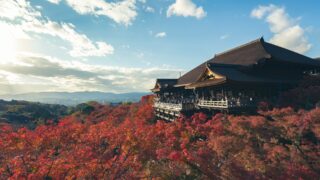
It’s nicknamed a forest of Buddha statues because 1,001 Buddha statues are nestled in the long wooden main hall of the temple. Each face of the statue is slightly different, and it is said that you can find a familiar face in them. The view of the overwhelming number of statues all lining up neatly along the hall is quite an impressive sight.
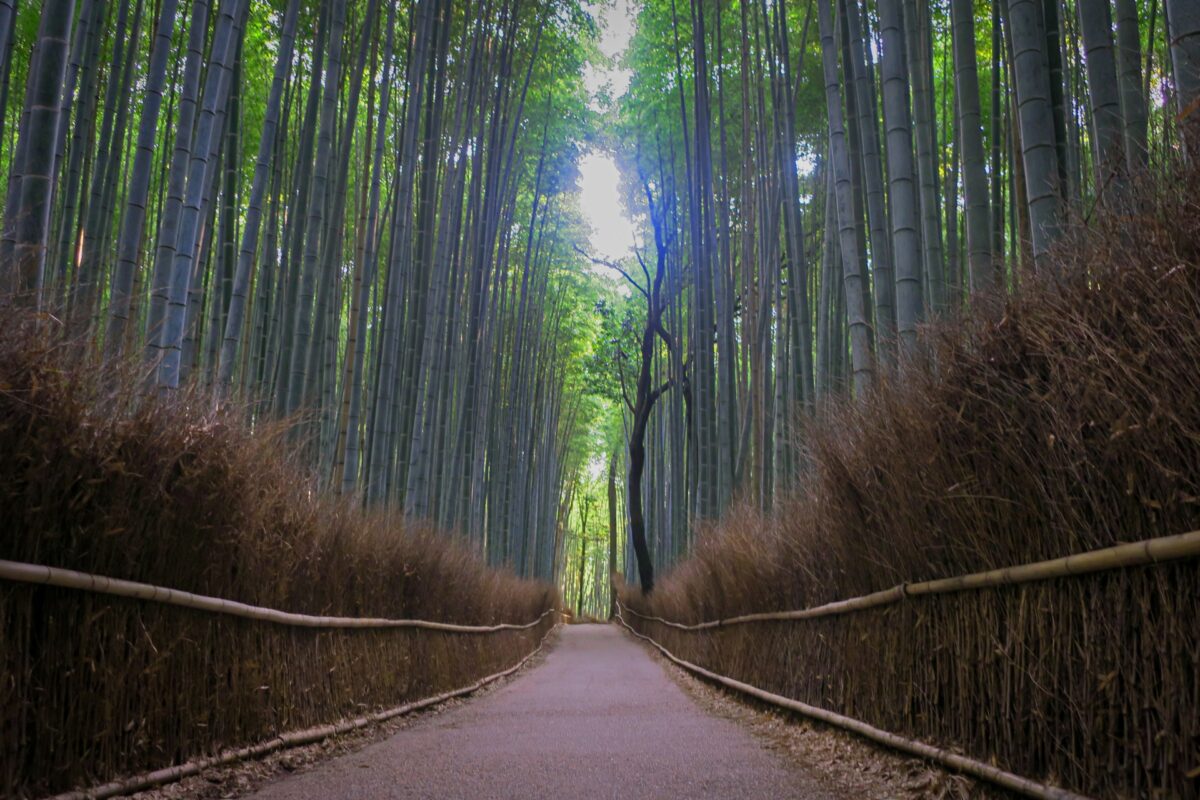
The Arashiyama area is a popular tourist attraction which is about an hour away from central Kyoto. Compared to other areas in Kyoto City, the area is relatively isolated and a bit outside of the city. However, once you visit there, you will immediately understand this is exactly where everyone should go to experience the real Japan coexisting in harmony with nature. The peaceful bamboo forest is always full of tourists but has a peaceful and relaxing atmosphere. If you stop and listen to the sound of the bamboo moving in the wind, you almost forget you are in one of the most popular places in Kyoto!
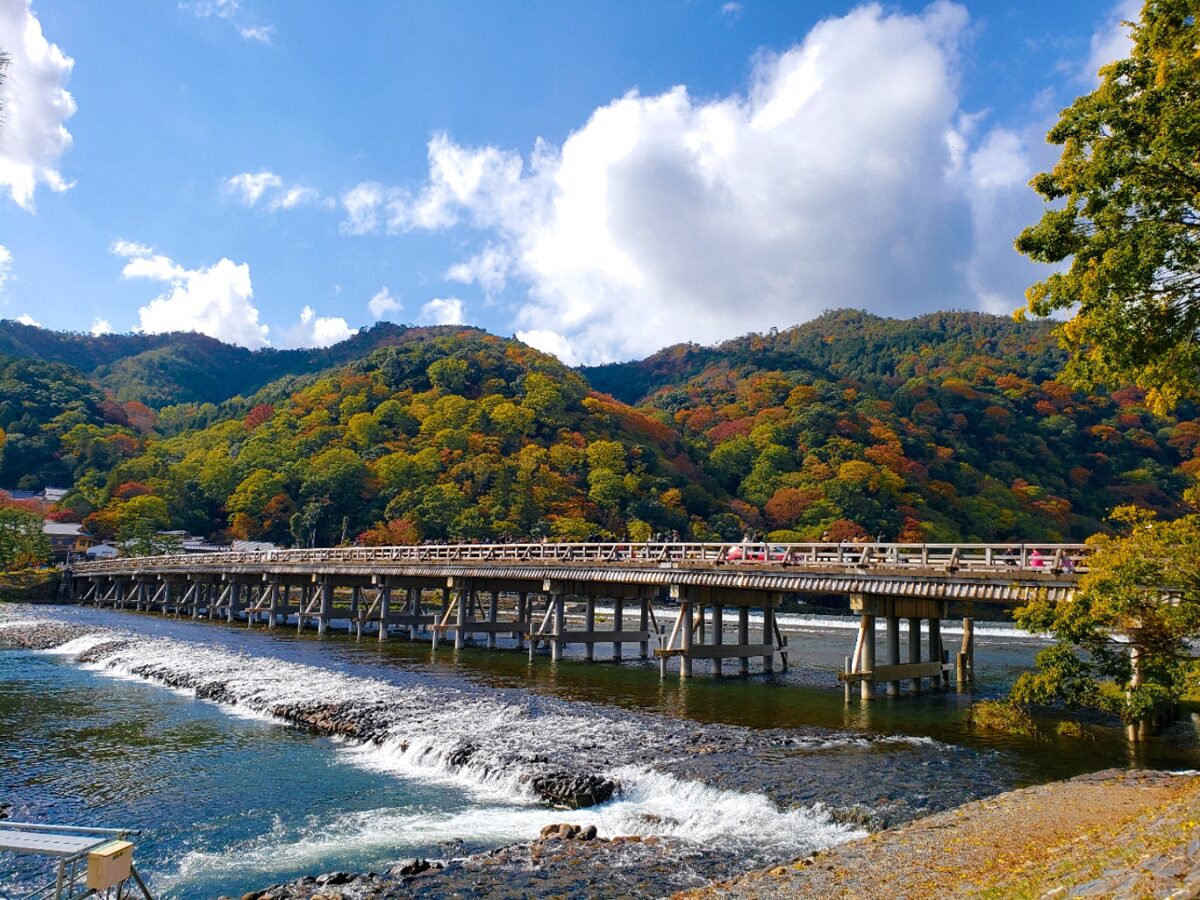
The Togetsukyo Bridge, a 155-meter-long wooden bridge over the Katsura River, creates a breathtaking view along with the Arashiyama Mountain in the background. It is the landmark of the Arashiyama area, and once you cross over the bridge, you can start exploring the main sightseeing street and spots in Arashiyama.
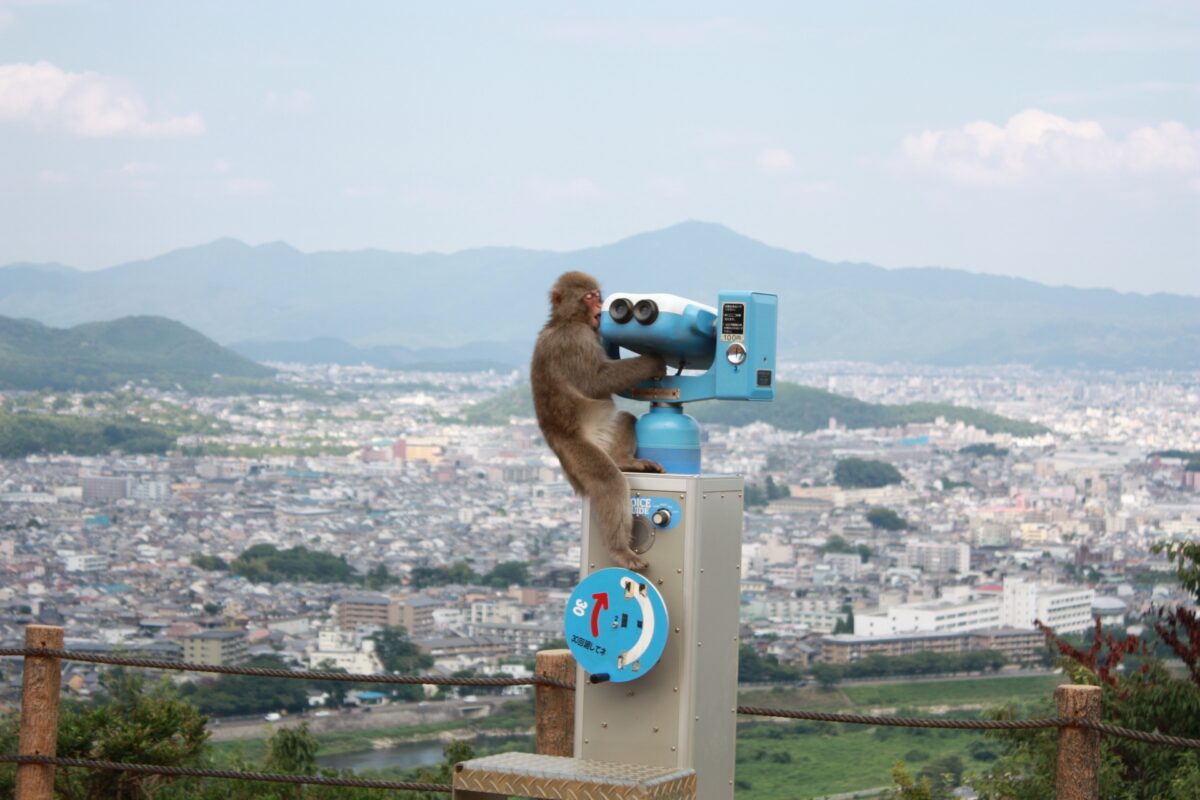
Arashiyama Monkey Park is home to about 120 wild monkeys. At the observation deck, you can check the view over Mt. Hiei and Kyoto City with the monkeys! There’s a place where you can feed monkeys with some fruits or peanuts through the wire fence, and also there’s a playground for kids.
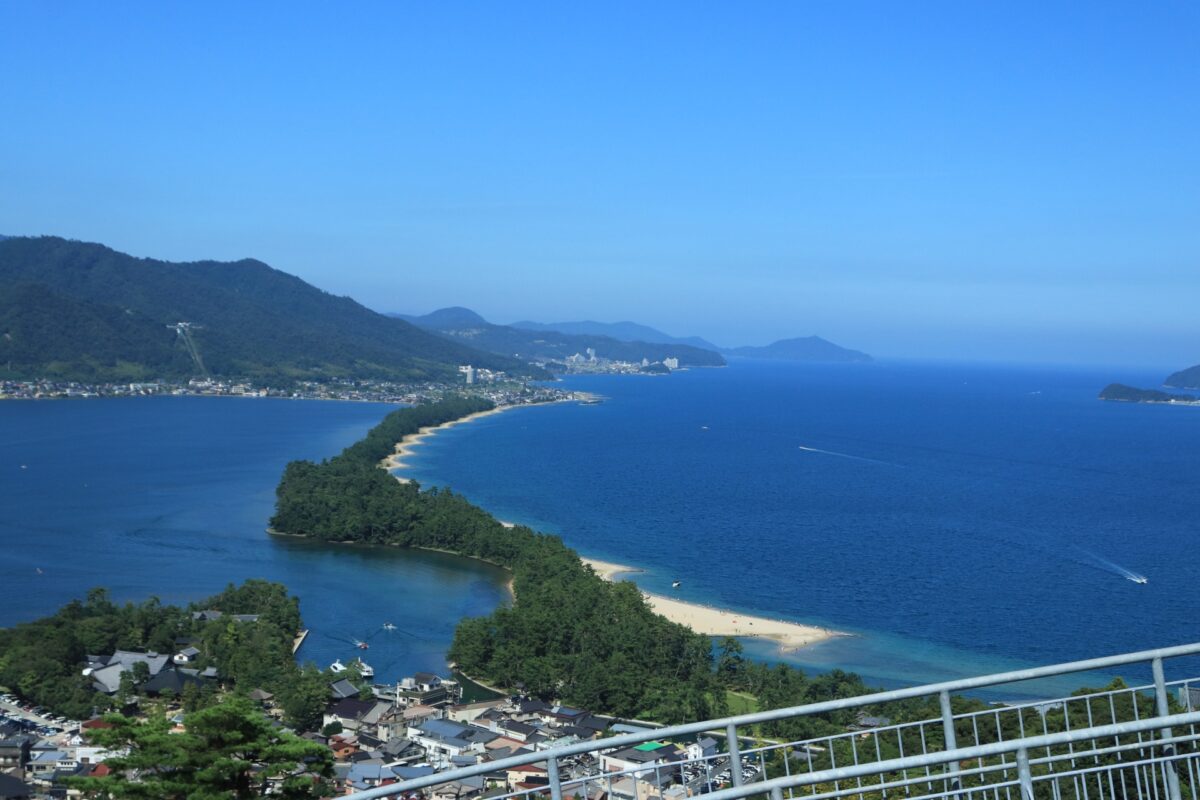
If you travel further from Kyoto City, you can discover completely different attractions of Kyoto surrounded by beautiful nature. In Northern Kyoto, there are tranquil villages near the ocean providing stunning scenery.
Amanohashidate is a popular spot located in Miyazu Bay, the 3.4 km sandbar covered with 5,000 pine trees across the bay. You can take a pleasant walk across the sandbar or cycling is popular too.
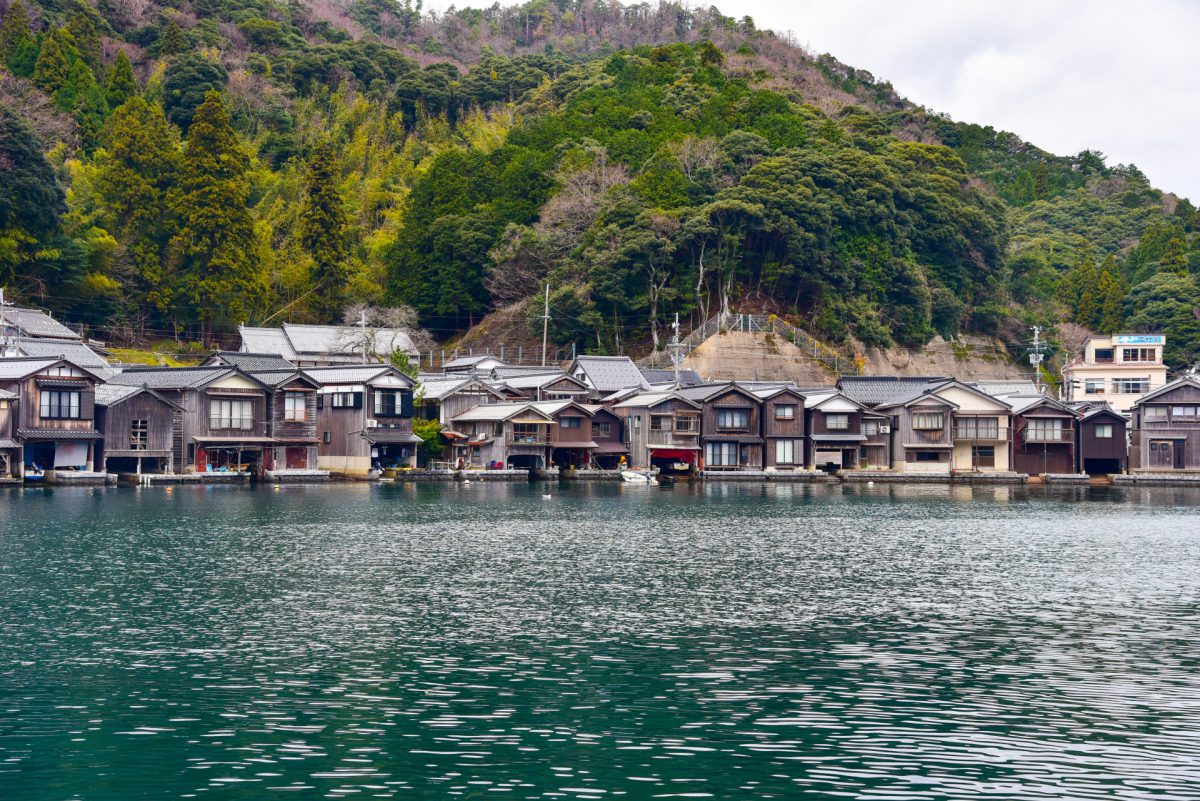
In Ine in Tango peninsula, over 230 boat houses floating in the sea create unique and beautiful scenery. It can only be accessed by sea taxi or ferry. These unique houses were originally built for fishermen, who parked their boats on the first floor and then used the second floor as their residence. Please note that to respect the residents, it’s strongly recommended to take a guided tour if you would like to explore the area.
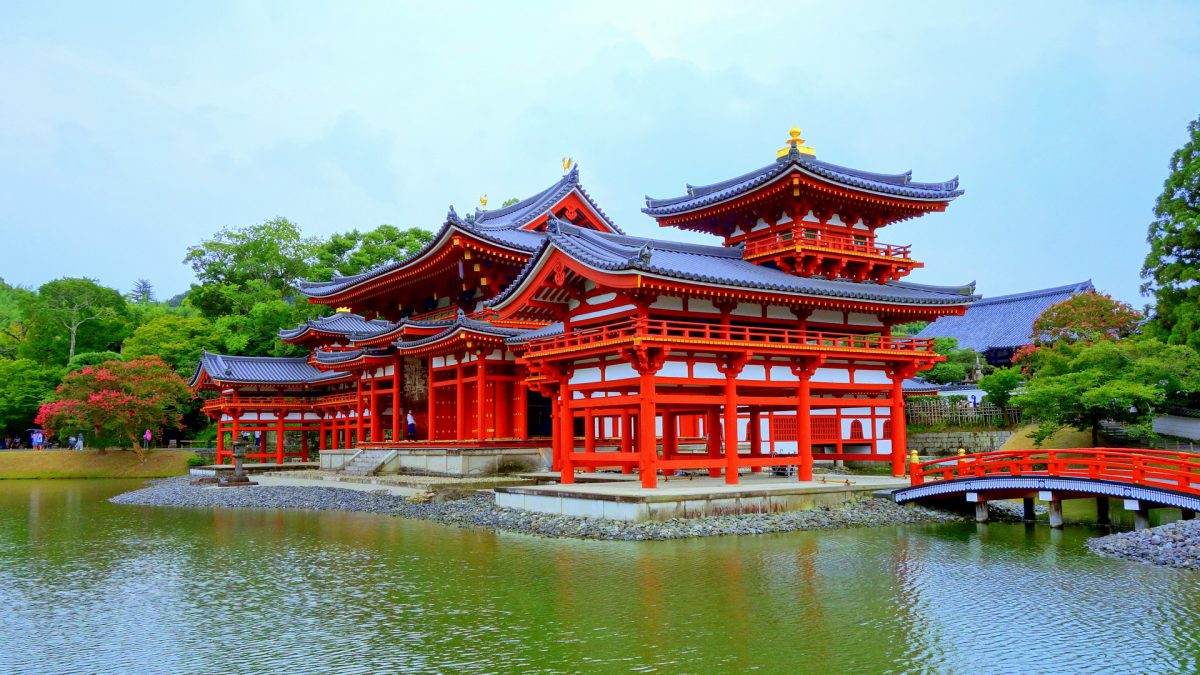
Uji is a small town located a bit far from central Kyoto City. It is known for its matcha tea and the historical temple. Byodo-in temple is a beautiful temple originally built in the Heian period. Flip the 10 yen coin and you’ll find a picture of it! Uji is also known as their tea field and Uji matcha is one of the high-quality brands of tea.
Learn more about the matcha tea capital of Japan below!
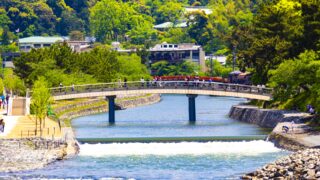
▼Book a one-day tour from Kyoto or Osaka to explore Northern Kyoto Traveling to the countryside of Japan is sometimes a little tricky in terms of the convenience of transportation and lack of English signs. If you are looking for the easiest and most comfortable trip to Northern Kyoto, take a private tour exploring Ine, Amanohashidate, and more beautiful attractions in the area!
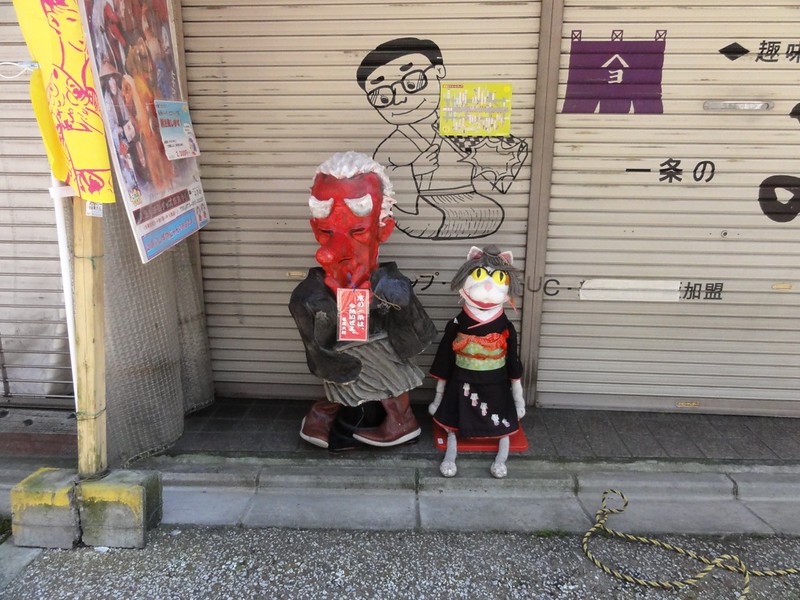
Last but not least, there are many unique and mysterious spots in Kyoto. Yokai Street is one of them. Yokai are legendary creatures that appear in folklore. Yokai Street is a shopping street where you can spot some marks of Yokai and is best known for the Yokai parade that is carried out on the second Saturday in October every year. You think it’s similar to the Halloween parade but somehow it’s more beautiful yet scary with hundreds of Yokai walking solemnly on the street. It will get you a chill up and down the spine.
Read more to find 10 Mysterious Spots and Stories in Kyoto

Are you looking to get the full Kyoto experience and dress up in a nice kimono while you’re in the beautiful area? We offer a number of affordable kimono rental plans that are suited for everyone. With shops in both Gion and near Kyoto Tower, and hundreds of different kimono to choose from, you are sure to find something that you like. Check out our plans below and let our staff do the rest!
Book your rental here !
Japan Wonder Travel Tours in Kyoto
When you are visiting Kyoto and you need some help organizing your trip, you came to the right place. We’re happy to help you make your trip to Kyoto the best trip ever. We can advise you on where to go or even better, show you around with a local, English speaking guide. Let us help you create safe, comfortable, and unforgettable memories in Kyoto!
▶ Kyoto Private Full-Day Walking Tour On this full-day private tour of Kyoto, you will be able to see the highlights of Kyoto in just one day and at the same time develop a deeper understanding of both the culture of the area and Japan as a whole.

▶ Total Kyoto Experience If you only have a day or two in Kyoto, we offer a full-day tour of the city, enabling you to immerse yourself in and fully enjoy the entire city of Kyoto in just 10 hours!
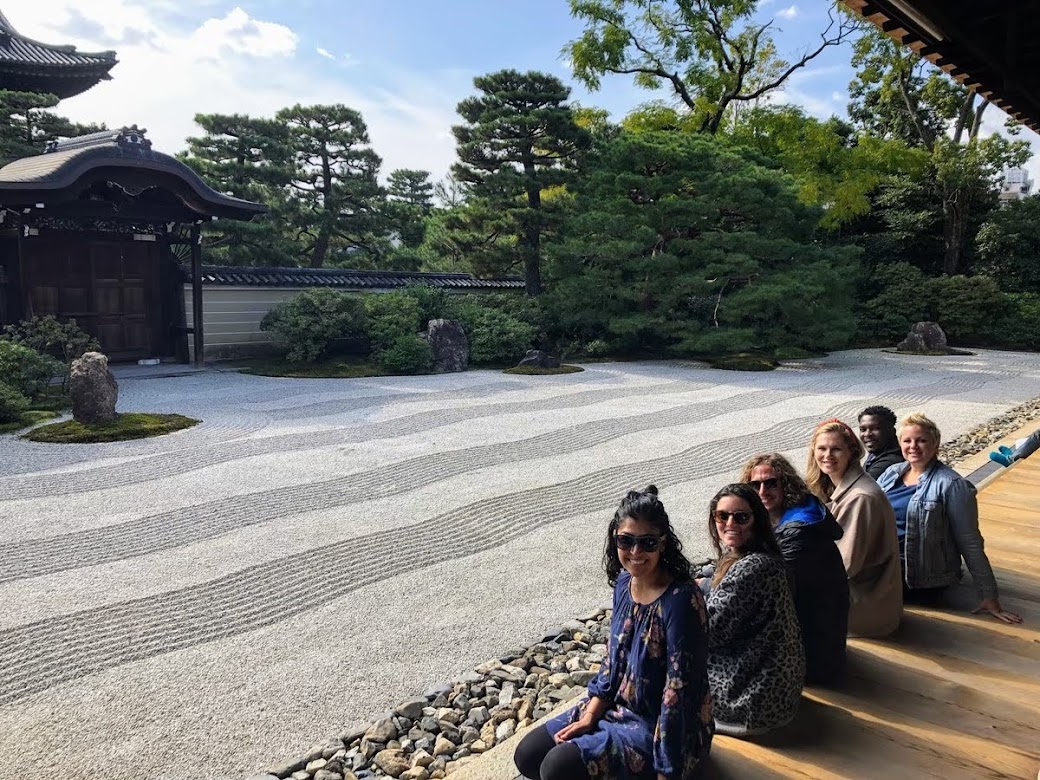
▶ Kyoto Food and Drink Tour at Nishiki Market If you’re looking to learn more about the culture and the local cuisine of Kyoto, this is the perfect tour for you! Take part in this Kyoto food and drink tour and explore the 400-year-old market and the famous surrounding areas.
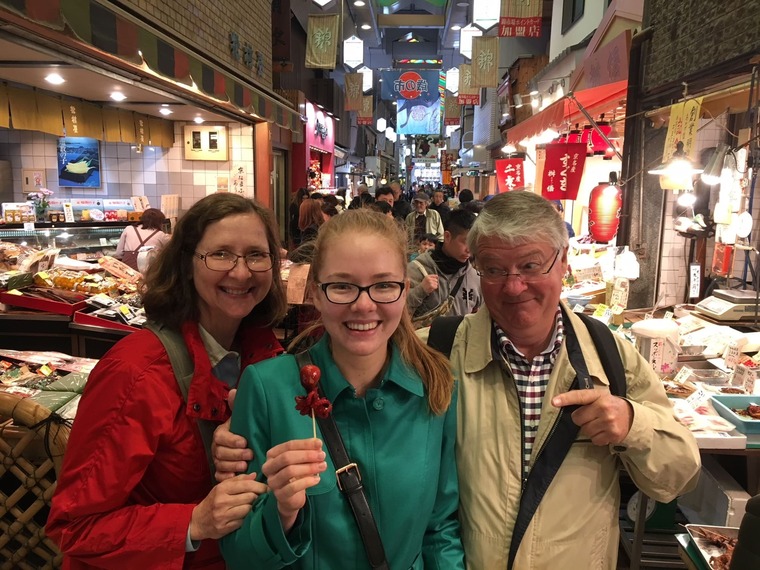
▶ Kimono Rental Kyoto is the best city to explore in kimono, Japanese traditional clothing. You can choose the one you like the most from several patterns and colors at the rental shop. In Kyoto, two locations are both accessible from the main tourist attractions which makes it easy to try it on and explore the city for a day!

By now you have an idea of what to do in the different parts of Kyoto, but then the next question arises. What is the best place to stay in Kyoto? All things considered, we recommend you stay downtown, in or near the Gion or Kawaramachi-Dori districts. These areas are well connected to public transport and central to many of the main attractions. Here you will also find an abundance of restaurants, shops, and entertainment venues.
- Tazuru – a traditional Japanese ryokan with historic charm, overlooking the Kamo river.
- Kyoto Hotel Okura – luxury hotel offering great views of Kyoto and the Higashiyama Mountains
- Gion Minami House – apartment rooms that also enable you to relax after your full day of sightseeing.
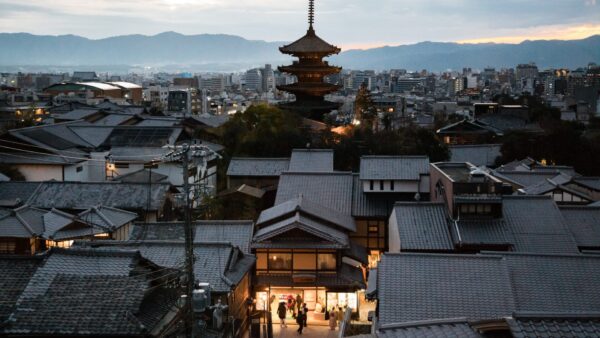
Surrounded by beautiful nature, rich with history, and filled with many interesting and beautiful places, it might be quite a challenge to decide on the best places to go in Kyoto. The former imperial and political capital of Japan has so many options and attractive places to choose from. We hope with this article you got some helpful information and that you now have an idea of where you want to go!
Find out the top 10 tours in Kyoto▼
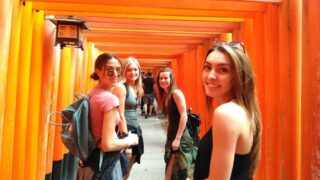
Follow us on Instagram or Facebook for more travel inspiration. Or tag us to get featured!
Happy traveling!
Stay informed of the best travel tips to Japan, the most exciting things to do and see, and the top experiences to have with the Japan Wonder Travel Newsletter. Once every two weeks we will introduce you to our latest content.
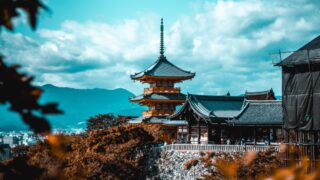
This post may contain some affiliate links. When you click through and make a purchase we may receive some commission, at no extra costs to you.
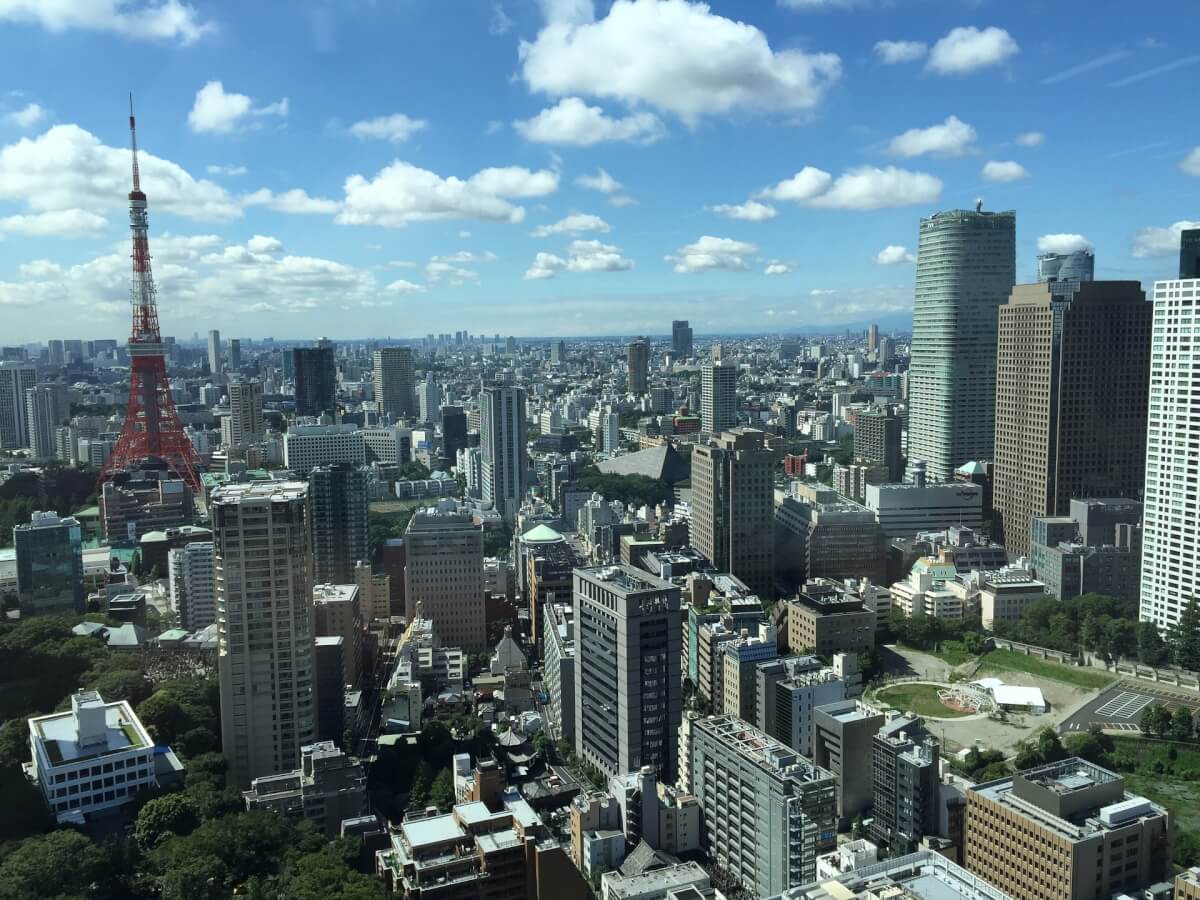
- Popular destinations
- Hidden places in Japan
- Tours and workshop
- Food and drink in Japan
- Itinerary in Japan
- Places to visit in Tokyo
- Food and drink in Tokyo
- Seasonal events
- Tours & workshops
- Tokyo This Week
- Day trip from Tokyo
- Itinerary in Tokyo
- Places to visit in Kyoto
- Food and drink in Kyoto
- Itinerary in Kyoto
- Day trip from Kyoto
- Travel tips
- Accommodation
- Cultural tips
- Transportation
- Tokyo Tours
- Kyoto Tours
- Kimono Rental
- Fukushima Tours
- Mount Fuji Tours
- Tour Package
- Media Kit(English/日本語)
Kyoto Travel Guide
Courtesy of Piriya Photography | Getty Images

15 Best Things To Do in Kyoto
Updated February 11, 2021
Kyoto receives scores of visitors each year and crowds can be overwhelming at many of the city's top attractions. But never fear: A bit of planning can yield introspective experiences in peaceful atmospheres. Climb the well-worn steps of a Shinto
- All Things To Do

Fushimi Inari Shrine Fushimi Inari Shrine free
As far as Shinto shrines go (there are about 400 in Kyoto), this one is pretty special. Perched on a wooded hillside in southern Kyoto, Fushimi Inari is a 1,300-year-old temple dedicated to Inari, the Shinto deity of rice and sake (Japanese rice wine). The shrine complex dates back to the eighth century, but it's not the star of the show. Most visitors come for the close to 10,000 red and orange lacquered torii gates that line the 2 ½-mile-long path up Mount Inari, where the shrine sits. Sometimes in dense rows and other times more staggered, the gates are all engraved with the names of Shinto devotees who donated them.
It takes about three hours to make the trek up the mountain, and some recent visitors say that the hike is mildly strenuous, but almost all agree this is a must-see spot in Kyoto, especially for first-time visitors. Plus, travelers report that there are plenty of places to stop and rest along the way. Peer at the dozens of stone and bronze foxes that line the paths along with the gates (foxes are thought to be Inari's sacred messengers). Or stop in to one of the tea houses or restaurants situated on the path, which serve udon noodle soup and sushi. Because crowds are drawn to their picturesque beauty, Fushimi Inari's trails can get quite congested during the day. To avoid the multitudes, opt for an evening stroll up the mountain – recent visitors say the pervading quiet coupled with the fading light filtering through the trees and torii gates makes for an eerie and spiritual experience. Early morning is another optimal time to experience the shrine sans the crowds.

Kiyomizu-dera Temple Kiyomizu-dera Temple
Situated on Otowa Mountain in eastern Kyoto, Kiyomizu-dera Temple wows travelers with its stunning natural scenery, which visitors say is best viewed from the verandah off the temple's main building. The "stage," as it's called, sits atop huge pillars more than 40 feet above the hillside and affords visitors panoramas of the surrounding forest. Those views are even more beautiful in the spring when the cherry blossoms are in bloom or in the fall with the changing foliage. When you're done taking in the temple's surrounding beauty, you are invited to drink from the Otowa Waterfall, which gave the temple its name ( kiyomizu means "pure water"). The waterfall is divided into three streams, each of which is said to bring longevity, academic success or love, respectively. But according to temple etiquette, drinking from all three streams is bad luck, so don't be greedy.
Also within in the complex is the Jishu Shrine, a red-lacquered temple dedicated to Okuninushi-no-mikoto, the Shinto god of love. Visitors who can successfully walk between two stones outside of the shrine with their eyes closed (the stones are about 20 feet apart) will supposedly have their love-related wishes granted. Along with toying with their fates, recent travelers also enjoyed the souvenir shops found along the path to the temple. Many visitors insist that Kiyomizu-dera Temple should be on every Kyoto traveler's to-do list.

Gion Gion free
Recent visitors to Gion were in awe of its quaintness (though some travelers note that hordes of camera-wielding tourists can detract from the scenery). This neighborhood is known for its charming historic features: historic tea houses, willow-lined roads, kaiseki (Japanese haute cuisine) restaurants, wooden ryokan (Japanese guest houses) and shops selling local crafts and antiques. But all of those things are secondary to Gion's real source of fame – the geisha. Visitors to Gion may catch a glimpse of these extravagantly dressed women flitting between tea houses on wooden-sandaled feet.
Contrary to western belief, geisha are not prostitutes. A geisha's primary role is entertainment; she is hired to provide diversions at dinner parties and banquets in the form of singing, dancing, games and conversation. But they are more than mere performers: Geisha are living, breathing gatekeepers of ancient Japanese culture. They train from an early age in traditional Japanese art, dance and music, and perform at exclusive dinners in ochaya (tea houses), usually only for locals. While tourists can arrange geisha dinners as well, it will put quite a dent in a travel budget. Hiring one geisha for the evening with dinner for two can cost about 103,000 yen (about $900) or more. A less costly way to see Gion's geishas in action would be to check out the daily geisha performances at the Gion Corner theater, which cost 3,150 yen (about $28). Or, if you're visiting during April, you can catch the Miyako Odori dance festival – geisha dance performances, which are held four times daily during the festival at the Gion Kobu Kaburenjo theater, cost between 4,000 and 5,500 yen (about $35 to $48) per person. You may also see geisha strolling through the neighborhood; keep a polite distance and refrain from photographing them without explicit permission.

Arashiyama Arashiyama free
Arashiyama is a quaint neighborhood surrounded by trees and mountains on the western edge of Kyoto. The neighborhood's most iconic landmark is the wooden Togetsu-kyo Bridge, which has spanned the Katsura River since 1934. It makes a great spot for admiring cherry blossoms or changing fall foliage, depending on the season, though some visitors seem less than impressed with the bridge. If you want to avoid the tourist crowds that congregate on the bridge, consider renting a paddle boat to enjoy the scenery from the water. On either end of the bridge are a number of shops, restaurants, temples and gardens to explore. Some recent visitors enjoy walking around and taking in the sites, but others suggest renting a bike. You can get one for the day for around 1,000 yen (about $9) near train stations in Kyoto.
A visit to Arashiyama can be overwhelming, as there is so much to do and see here. It's best to arrive with a plan of action, and to not try to fit too many activities into one day. For example, you won't want to miss a stroll through the area's lush, peaceful bamboo groves, which recent visitors highly recommend. Once you're through the bamboo, you'll find yourself at Okochi Sanso Villa, a beautifully landscaped former residence of Japanese actor Okochi Denjiro. You can tour Denjiro's mossy, manicured gardens daily from 9 a.m. until 5 p.m., and the admission price of 1,000 yen (about $9) includes matcha green tea and cake (make sure you keep your admission ticket to enjoy this).

Ryoanji Temple Ryoanji Temple
Every day, hundreds of people visit Ryoanji Temple to see its Zen rock garden – which is probably the most famous of its kind in Japan. Located in Kyoto's northern outskirts, the temple was built in 1450, but details surrounding the rock garden's origins are hazy. Its white pebbles, which surround 15 larger rocks, were laid sometime during the Muromachi period (between 1392 and 1573), but beyond that, the garden's origins are unknown.
From any vantage point, at least one of the garden's 15 rocks is obscured from view. But why? Visitors are invited to come to their own conclusions about the garden's deeper meaning. Along with viewing the rock garden, you can explore the temple's grounds, which include a 1,000-year-old pond fringed with lily pads and tree-lined walking trails. The garden, as well as the grounds, are among the Historic Monuments of Ancient Kyoto, which were designated by UNESCO in 1994.

Nishiki Market Nishiki Market free
For those unfamiliar with Japanese cuisine, a trip to Nishiki Market can be an overwhelming experience. This bustling, five-block-long covered market is lined with more than 100 stalls, each one hawking Japanese foods and specialty items that are hard to come by in the United States. With barely any English signage for reference, it might be difficult to determine what to buy or where to start. But just because Nishiki Market is busy and confusing doesn't mean you should avoid it. In fact, recent visitors said that's exactly why you should go, saying it's an essential food tour. Others pointed out that this is a great way to sample many different local cuisines without having to buy a whole meal.
The key here is to start small. Sample some authentic green tea or nosh on some nigiri (rice balls). After you've acclimated yourself to the flavors, you can work your way up to the unfamiliar: roe-stuffed squid, dried kelp or silky yuba (tofu-milk skin). Of course, connoisseurs of Japanese cuisine can feel free to jump right in, but Nishiki Market can also offer new eating experiences to old pros. Alongside the more traditional Japanese fare, you'll find some trendier shops like Konnamonja, which sells doughnuts and soft-serve ice cream that are both made from tofu (and reportedly delicious). One thing to note: You'll have to sit (or stand) to eat your food. Walking and eating is not permitted, according to recent visitors.

Nijo Castle Nijo Castle
After years of bitter strife, the aging samurai lord Tokugawa Ieyasu finally wrested power from Japan's many warring clans and unified them at the turn of the 17th century. Upon being proclaimed Shogun (feudal military dictator) of Japan in 1603, Ieyasu constructed a palace that would reflect his supreme power. Nijo Castle in central Kyoto was certainly ostentatious enough to fit the bill. Unlike other noble homes of the day, Tokugawa's gleaming white structure – decorated with ornate wood carvings – was built for show, not for defense. Even the palace's moat and inner wall stood not as defensive structures, but rather as examples of the shogun's exclusivity; only Japan's highest-ranking officials were allowed into the castle's inner sanctum.
That is not to say that Nijo lacked in protective properties entirely. Decades of war had instilled in Tokugawa Ieyasu a deep-seated paranoia, so he had "nightingale floors" installed in his palace. Designed to creak under even the lightest footstep, these floors prohibited anyone from walking through the Nijo Castle unnoticed. Travelers today can tread upon these fabled floorboards as they tour the inside of the castle, but visitors suggest wearing socks, as you'll have to remove your shoes to enter the building. Outside the palace is the lovely Ninomaru Palace Garden designed by famed landscaper and tea master Kobori Enshu. Recent visitors applaud the site’s excellent guided tours in English and say the castle and surrounding gardens are quite beautiful. However, because it is on every tourist's "must-see" list, the castle can get quite crowded. To enjoy your visit in peace, stop by just after opening or right before closing.

Sanjusangendo Hall Sanjusangendo Hall
At nearly 400 feet, Sanjusangendo Hall is the longest wooden structure in Japan (there are archery contests held along the length of the hall every yeah). And lining its lengthy walls is a rare full set of 1,000 wooden statues of Kannon, the Buddhist goddess of mercy. The human-sized statues were carved from Japanese cypress in the 12th and 13th centuries. Recent travelers are consistently blown away by Sanjusangendo and its statues, calling it an "amazing" and "thrilling" place to visit.
Sanjusangendo Hall is open between 8 a.m. and 5 p.m. from April through mid-November, and between 9 a.m. and 4 p.m. from mid-November through March. Visitors suggest arriving at Sanjusangendo early, as the hall is not well ventilated and only gets hotter and more crowded as the day goes on. Admission costs 600 yen (about $5.25) per person (half-price for children). To get to Sanjusangendo Hall, take bus No. 100, 206 or 208 from Kyoto Station to the Hakubutsukan-Sanjusangendo-mae stop. Alternatively, you can take the Keihan subway line to Shichijo Station (Sanjusangendo is about a 5-minute walk from there). The temple sits across the street from the Kyoto National Museum, and many visitors suggest stopping by both attractions. For more information, visit the official website (in Japanese).

Philosopher's Walk Philosopher's Walk free
Honoring Japanese philosopher Nishida Kitaro, who used to stroll here on his commute to Kyoto University in the early 20th century, the Philosopher's Walk is a roughly mile-long pathway along the Lake Biwa Canal in the Higashiyama district of northern Kyoto. In the spring, the cherry trees overhang the canal blossom, emitting a flurry of petals onto the path every time the wind blows. But recent visitors say that Philosopher's Walk is gorgeous no matter the season.
Past travelers suggested setting aside about an hour to enjoy the walk, noting that you'll probably want to stop along the way to admire the temples and shrines that can be found just outside the walking path. Others also caution that the area can get quite congested during cherry blossom season. Although there are no public restrooms along the walk, there are cafes and shops.

Kinkaku-ji (Golden Pavilion) Kinkaku-ji (Golden Pavilion)
Its top two floors swathed in gold leaf, the Golden Pavilion sits pretty in Kyoto's northern reaches, overlooking the glassy surface of Mirror Lake. Shogun Ashikaga Yoshimitsu lived in the gilded structure in the late 14th and early 15th centuries after he passed political power down to his son, Ashikaga Yoshimochi. When his father died, Yoshimochi had the pavilion converted into a Buddhist temple. However, in 1950, an extremist monk set the golden temple aflame, reducing it to smoldering ashes. What now stands is a replica of Kinkaku-ji that was built in 1955.
Many recent travelers note the gorgeous natural scenery surrounding Kinkaku-ji; the golden temple reflecting in the smooth lake makes for a great photo, no matter the season. Unfortunately, some visitors say that throngs of tourists mar the temple's tranquil atmosphere. To enjoy the attraction without the crowds, heed the advice of reviewers and avoid an afternoon or weekend visit. Keep in mind: Visitors are not permitted to enter the pavilion.

Ginkaku-ji (Silver Pavilion) Ginkaku-ji (Silver Pavilion)
Unlike the very literally named Golden Pavilion, the Silver Pavilion is not actually silver – though it was intended to be. Shogun Ashikaga Yoshimasa, who built Ginkaku-ji in 1482 as his retirement villa, died before he could swath the structure in silver leaf. But even without the bling, Ginkakuji and its grounds are stunningly beautiful.
The main pavilion, which was converted into a Zen shrine, sits overlooking a glassy pond surrounded by trees. Unfortunately, you can't go in – none of the buildings are open to the public. But visitors come here to enjoy the outdoors. As you stroll around the grounds, you'll come across a lush garden filled with mossy groves, as well as a Zen garden called "The Sea of Silver Sand." If you continue up along the path to the back of the garden, you'll enjoy a stunning view of the temple grounds as well as the city below. Many recent visitors said that a stroll around the garden at any time of day is gorgeous, even if it gets crowded at times (your best bet is to visit right when it opens or on Mondays). Several travelers stopped here while enjoying the Philosopher's Walk as the temple is located just off the trail.

Kyoto International Manga Museum Kyoto International Manga Museum
Many of Kyoto's top attractions pay homage to a Japan of the past, but the Kyoto International Manga Museum focuses on a very current form of Japanese art. Manga is a style of comics that exploded in popularity during the post-World War II period (though some historians date it back to the 12th century) and has steadily been gaining worldwide exposure in the past 60 years. The International Manga Museum, which opened in 2006, showcases a massive collection of Manga (around 300,000 items), from famous works like "Astro Boy" to more obscure comics by non-Japanese artists.
Recent visitors marvel at the museum's extensive collection, and said this is a must-do if you're a manga fan. For many, being able to sit and read the manga copies stored here was a highlight (reviewers said it felt more like a library than a museum). Travelers were also pleased that there were translations in other languages besides Japanese.

Nanzen-ji Temple Nanzen-ji Temple free
Read More »

Shoren-in Temple Shoren-in Temple

Kyoto Botanical Garden Kyoto Botanical Garden

Explore More of Kyoto

Best Hotels

When To Visit
If you make a purchase from our site, we may earn a commission. This does not affect the quality or independence of our editorial content.
Recommended
The 50 Best Hotels in the USA 2024
Christina Maggitas February 6, 2024

The 32 Most Famous Landmarks in the World
Gwen Pratesi|Timothy J. Forster February 1, 2024

9 Top All-Inclusive Resorts in Florida for 2024
Gwen Pratesi|Amanda Norcross January 5, 2024

24 Top All-Inclusive Resorts in the U.S. for 2024
Erin Evans January 4, 2024

26 Top Adults-Only All-Inclusive Resorts for 2024
Zach Watson December 28, 2023

Solo Vacations: The 36 Best Places to Travel Alone in 2024
Lyn Mettler|Erin Vasta December 22, 2023

26 Cheap Beach Vacations for Travelers on a Budget
Kyle McCarthy|Sharael Kolberg December 4, 2023

The 50 Most Beautiful White Sand Beaches in the World
Holly Johnson December 1, 2023

The 26 Best Zoos in the U.S.
Rachael Hood November 16, 2023

44 Cheap Tropical Vacations That Feel Expensive
Holly Johnson|Alissa Grisler November 10, 2023


TOP 50 Things to do in Kyoto: Must See, Must Do & Must Experience Activities (2024 Edition)
By miho okamoto | .

Fushimi Inari Shrine gates. Kyoto, Japan
- Top Attractions and Activities
Local Cuisine
Kyoto nightlife.
- Non-touristy things to do in Kyoto
- Kyoto Facts
- Travel Tips
Top Attractions
#1 arashiyama bamboo forest.
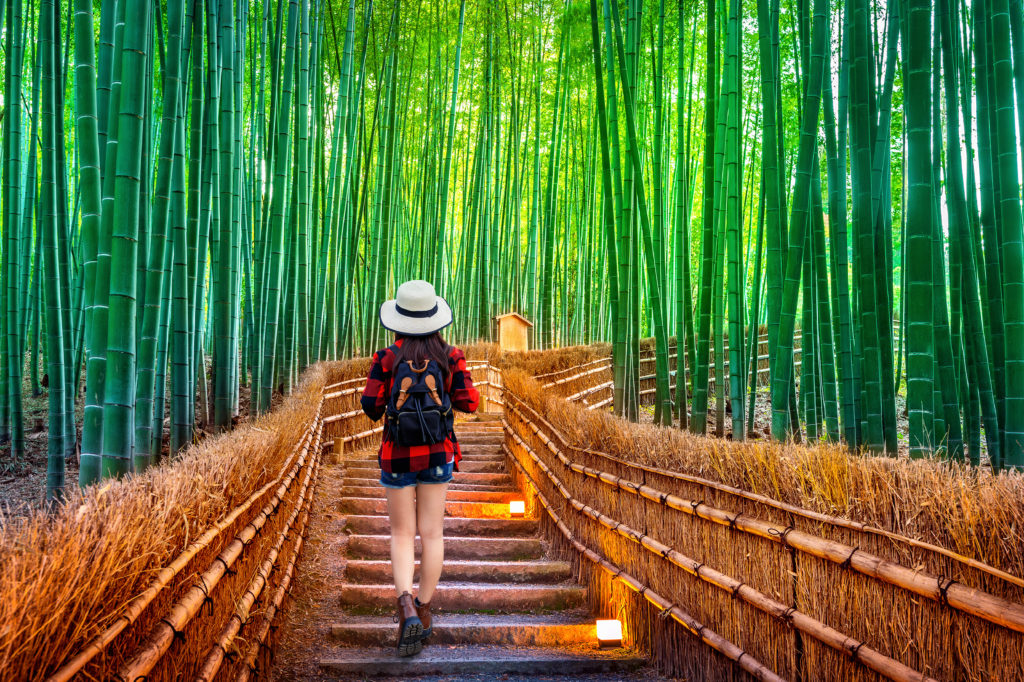
Arashiyama Bamboo Forest
There is a secret date spot for Japanese lovers in Arashiyama! You can also visit temples, check out the bamboo grove and feed wild monkeys all at the same place.
This area is outside the downtown area and has a lot of stops at temples and shrines so it’s best to explore it for half a day. There are a lot of cafes and restaurants around the area so there’s no need to worry about snacks and food.
Most pictures of the forest can’t hold a candle to the real thing. What you see on the web is just a fraction of the magical experience, so make sure you add this to your itinerary!
Visit the grove early in the morning or late in the afternoon to avoid the crowds!
#2 Kyoto Tea Ceremony #1 RATED KYOTO ACTIVITY
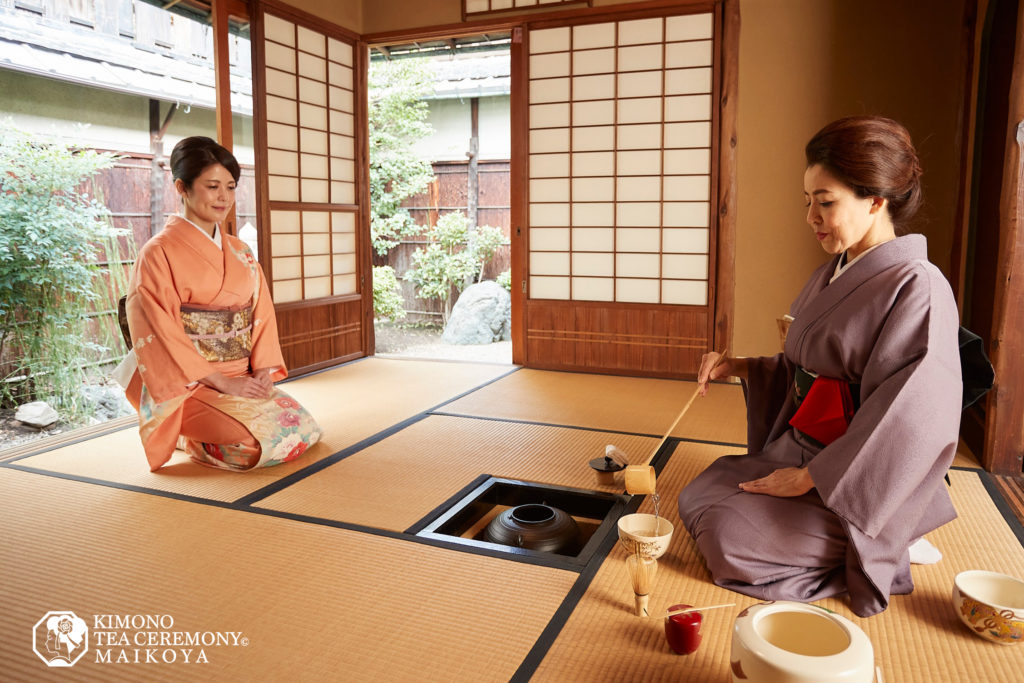
- Tea ceremony
According to Time Magazine, CNN Travel, and Lonely Planet , the traditional tea ceremony in Kyoto is a must-do bucket list item. Maikoya is a spectacular start for your tea ceremony experience, whether you’re new to it or not! You can even rent out a kimono for the tea ceremony and a stroll around the streets of the Gion Geisha District in Kyoto.
Their tea ceremonies cater to a number of groups from families with kids , casual tea ceremonies , and kimono tea ceremonies . You can also rent kimonos at Maikoya and then check out famous Sakura spots in Kyoto wearing a kimono like locals. BOOK TEA CEREMONY with 20% DISCOUNT.
If you’re on your honeymoon, the Maikoya staff may even have a surprise for you! So make sure you book their Honeymoon Photo Shoot and Special Lunch .
Maikoya staff can teach you where to get the freshest matcha tea and beautiful antique tea bowls! You can also ask about the best places to visit in the neighborhood.
#3 Samurai & Ninja Museum with EXPERIENCE #1 RATED MUSEUM & English Tours Held Every 15 Minutes
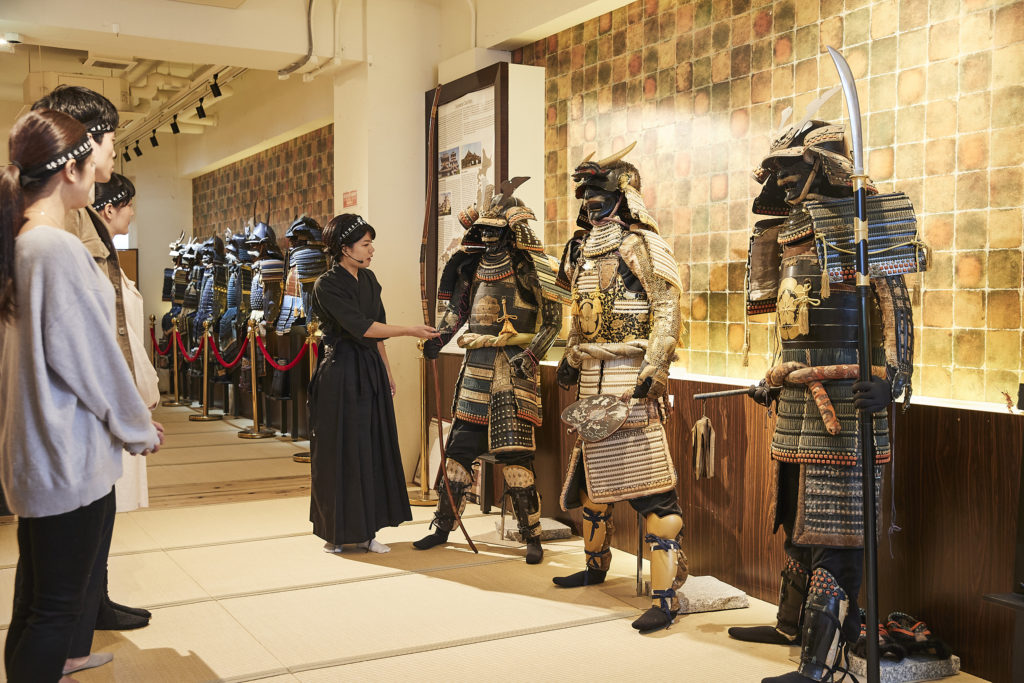
Samurai & Ninja Museum near Nishiki Market is the only museum in Kyoto where you can get history tours in English every hour.
The Samurai and Ninja Museum, which located right next to the Nishiki Food Market is a must-add to your itinerary. The museum showcases samurai armors, weapons, ninja outfits and many artifacts. The basic ticket comes with free tours in English and there are optional experiences such as training like a ninja or samurai , watching a samurai sword show, and even trying on costumes!
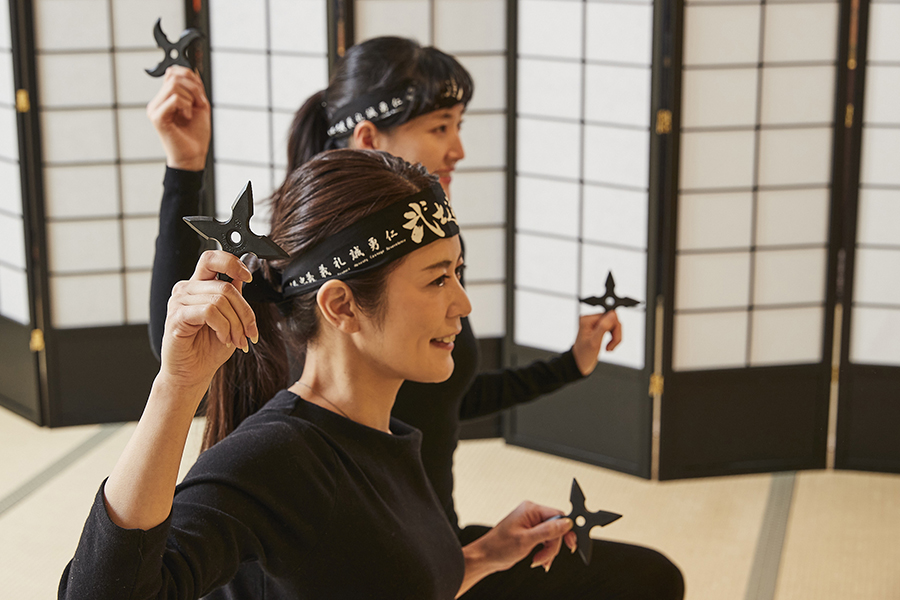
The museum is INTERACTIVE.
The museum also has exhibits from the Edo Period from samurai and ninja families, along with real katanas! You can even book a lesson to try them out with the Tameshigiri or Sword Cutting lesson –this is the only event that you can use a real samurai sword. All the workshops and classes use model swords so even kids can participate.
If you can’t decide on the packages, book a Basic Ticket to get a taste of what they have to offer.
#4 Fushimi Inari Shrine The 10,000 gates
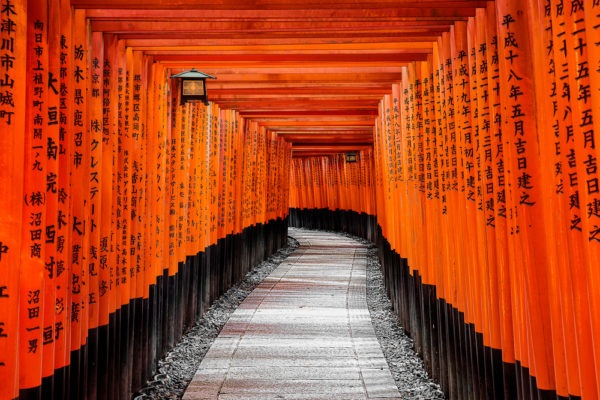
10,000 Gates, Fushimi Inari Shrine
The Fushimi Inari is one of the most visited spots in Japan! This is a great spot to go hiking and look for the hidden bamboo forest. Despite the high altitude, there are a number of cafes, tea shops, and noodle shops along the way.
Fushimi Inari has many attractions and spots of interest besides the 10,000 torii gates. You can find attractions to visit just a short walk away from the main shrine like the famous Tofukuji Temple and the Gekkeikan Okura Sake Museum which used to be a sake factory.
You must go there earlier in the day to beat the crowds!
#5 KINKAKUJI TEMPLE
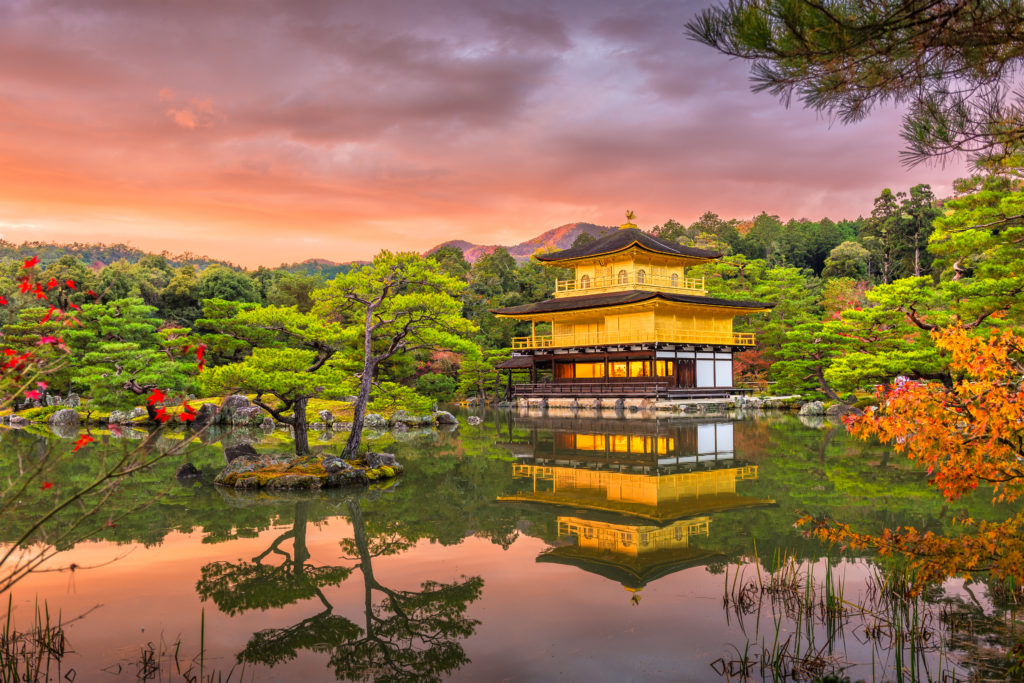
The Kinkakuji Temple is by far the most famous and the most picturesque temple in Japan! Catching sight of the gold-covered structure is an almost surreal experience–but the building is only covered in gold leaf for the top two floors.
The temple is open from 9 AM to 5 PM. Make sure to arrive a few minutes before it opens so you can avoid any crowds! You can also visit around 4 PM since the tourists start thinning out before closing time.
The Golden Pavilion is outside the city and you can’t actually enter the building, so there’s not much to do besides strolling around the garden.
I would sometimes skip visiting especially during peak seasons as the buses would be too crowded for me and I have to take a taxi.
See what people are posting about this place.
#6 Geisha Experience
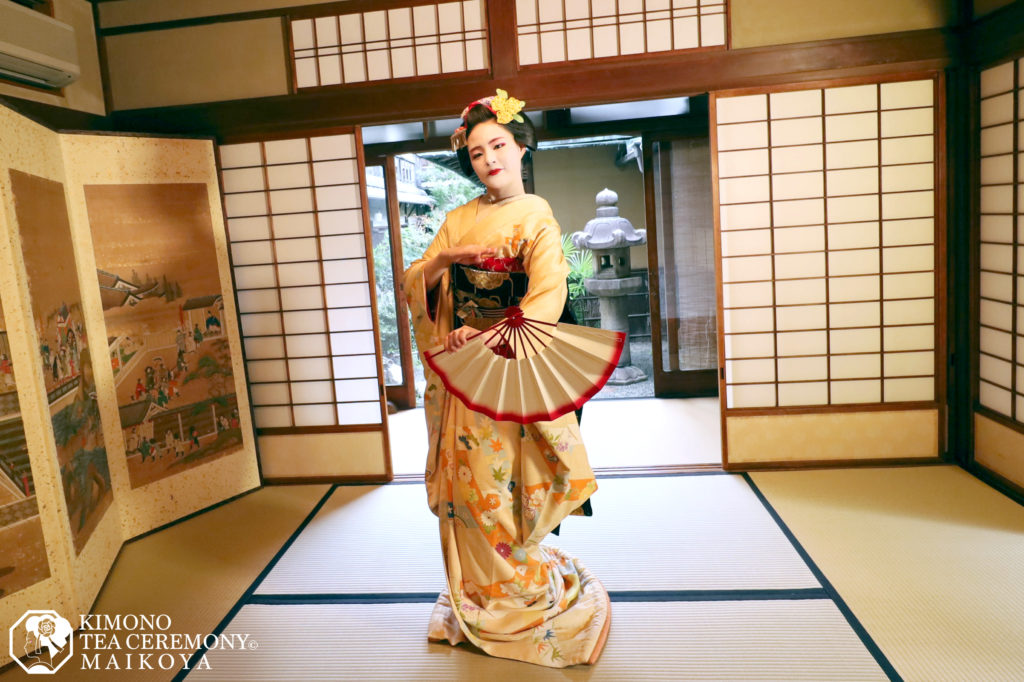
Gion District is well-known for its geisha culture and is a must-see destination in Kyoto! The geisha are called “geiko” in the Kyoto dialect, and their apprentices are called “maiko”. There are fewer than 200 geikos in Kyoto and it can be difficult to witness a show of their talents in traditional arts.
Luckily, you can book a tour that includes meeting with a geisha ! If you were interested in the tea ceremony item from before, hit two birds with one stone by booking Tea Ceremony in Kyoto by Kimono Tea Ceremony Maikoya . There are a variety of packages that we have to offer! You can even try being a geisha for a day to see what it’s like wearing their makeup and eye-catching accessories.
If you are lucky, you may be able to see a real geisha or maiko anywhere on Hanamikoji Street between 6 and 8 pm when the geishas are on their way to work. Please respect their privacy and remember, they are not objects.
#7 Kiyomizu-dera Temple
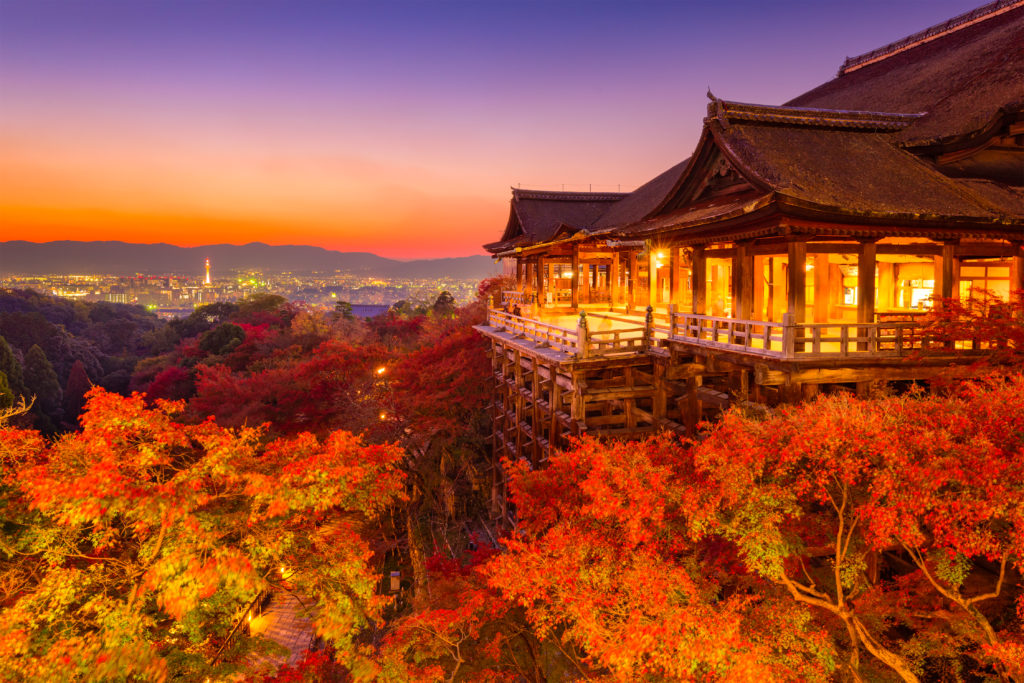
Kyoto, Japan at Kiyomizu-dera Temple.
This is a beloved tourist spot in C entral Kyoto!
The Kiyomizudera Temple main hall is completely made of wood! There is not a single piece of metal or nail that supports the structure. The temple is said to be named after a sacred water fountain that grants anyone who drinks from it the gift of health and longevity–“Kiyomizu” means “clear water”.
Just behind the main temple hall, you’ll find a shrine dedicated to the god of matchmaking and love. Legend has it that if you can find the two secret stones and walk from one to another your eyes closed your wish for love will come true.
Take note! The temple gets a lot of visitors and often undergoes structure maintenance.
Kiyomizu temple is right next to the historic Yasaka shrine and only about a 10-minute walk from the Gion Geisha District. Kiyomizu temple is right next to the historic Yasaka shrine and only about a 10-minute walk from the Gion Geisha District.
Kiyomizu temple has an amazing night view and night illuminations during most of the year. Don’t forget to check the historic streets and teahouses in the ninen zaka and sannen zaka areas which are right next to the temple. Recently Starbucks and Hard Rock cafe opened branches in traditional buildings, not far from the vicinity.
#8 Ni shiki Market
Nishiki Market is called the Kitchen of Kyoto and has more than 100 types of food to try! This is recommended for foodies and as a destination for rainy days. The market is also next to the Kyoto Samurai & Ninja Museum .
This is where the chefs of local izakayas and renowned sushi restaurants come early in the morning to pick up the best catch. You can find many things to try from fried tofu dumplings to black sesame ice cream. With more than 600 different types of fresh food to try and countless food stall types of stores, the Nishiki market is heaven for food lovers. Some notable places are the Sengyo Kimura Fish shop that was established in 1620, Aritsugu Knife Store run by one of the most famous blacksmith families of Japan and a 100 year old Daiyasu Oyster shop towards the end.
My most favorite is the baby octopus comes with a fried egg. I highly recommend trying it!
There are many other types of food to try including but not limited to:
- Marinated maguro sashimi on a stick
- Soy milk donuts
- Grilled shrimp and mackerel on a stick
- Green tea ice cream
- Pickled eggplants
- Dried seafood snacks
- Japanese fried tamago
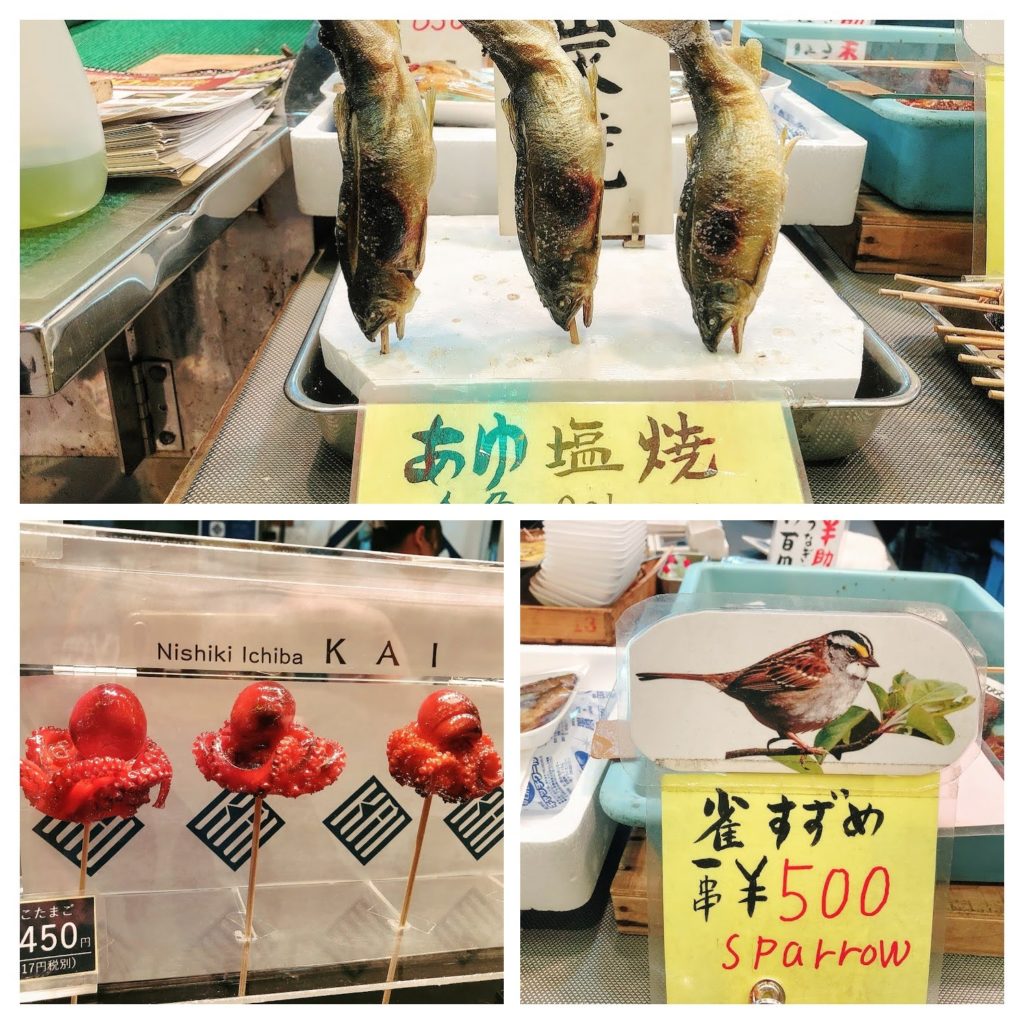
If you are not a fan of seafood, there are many places that serve red meat including Kobe beef.
Nishiki market closes at 6 PM sharp. Show up before 5 PM. There are many free samples! Make sure you bring cash since the stalls don’t accept credit cards. BOOK Nishiki Market Tour with 20% DISCOUNT
#9 Onsen & Sento
“ Onsen ” is the Japanese word for hot spring while “sento” is a public bath. The difference between them is that an onsen has multiple beneficial minerals and passes the strict requirements for hot springs in the country.
Typically, visible tattoos are not allowed in the onsens and public baths because of their association with the Yakuza. However, there are a number of tattoo-friendly onsens around Kyoto that provide exceptional service!
Remember! There are no onsens in downtown Kyoto , but you can find multiple sentos or public baths instead . If you want a hot spring with mineral waters, then you need to go outside of Kyoto City such as Kurama onsen or Arima Hot Spring. If you are okay with any public bath, I recommend Nishiki-yu in the downtown area or Goko-yu near the Gojo area.
Unfamiliar with onsens and public bath culture in Japan? Take a look at our guide so you can avoid the culture shock!
In Japan hot springs are called “onsen” and it is illegal to call a public bath “onsen” if it does not have natural hot springs with certain minerals.
For most foreigners though, it does not matter if it is a public bath (a.k.a sento bath) or onsen. After all, the traditional setup and the experience are pretty much the same.
Many ryokans and hotels have a traditional-style public bath! You can book an onsen-ryokan to get double the experience of a traditional Japanese inn and a relaxing hot spring bath.
#10 Ya saka Pagoda
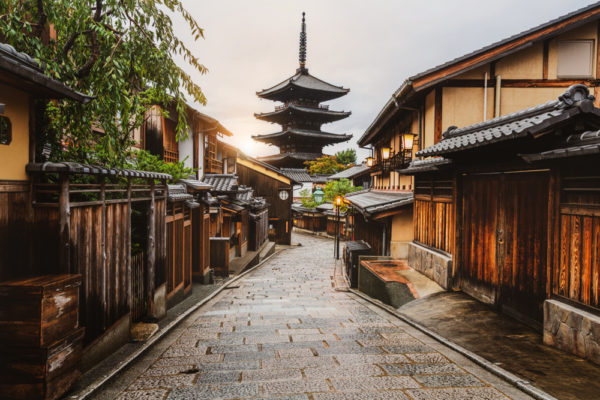
Yasaka Pagoda
Legend has it that if you can crawl under the huge stone you will dispel bad spells forever.
In Kyoto, almost all couples take their wedding pictures near the Yasaka Pagoda, right next to Ninenzaka. You can also visit the historic Yasui Kompiragu shrine nearby. People often purchase colorful balls to make a wish or crawl under the huge round rock to dispel bad luck.
Whenever I have guests, I always take them to this area and it is always a hit. Luckily the place is not far from the Kiyomizu temple area and the Gion area , so you can easily add the Yasaka Pagoda to your itinerary.
The Yasaka Pagoda is located close to a number of attractions in the Higashiyama District. You can create a short walking tour from Kiyomizudera to the pagoda and pass by many old-style shops, cafes, shrines, and temples: Chionin, Shorenin, Heian Shrine, and go further to Nanzenji, the Philosopher’s Path, and the Ginkakuji Temple.
#11 Night Food Tour at Pontocho (先斗町)
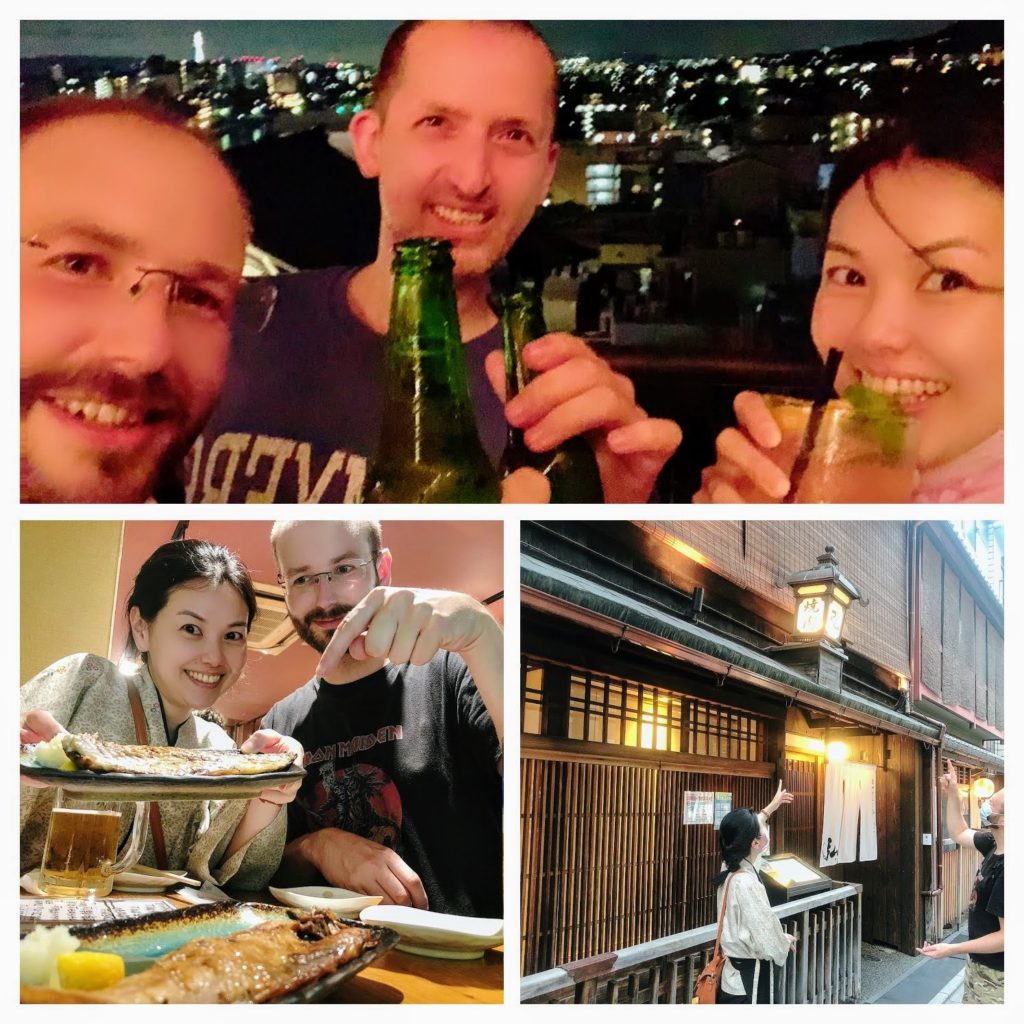
Kyoto food-tour
This is Kyoto’s liveliest bars & restaurants street which is also the 2nd largest geisha district in Kyoto. Best spot for things to do at night.
Wherever you go in Kyoto, you will always see the beautiful Kamogawa River running along the middle of the city. In the city center, right near the riverbank, you can find the narrow alley called Pontocho (先斗町) that runs from Shijo-dori to Sanjo-dori. This used to be a place where merchants would sell goods from Osaka.
Today, Pontocho is one of Kyoto’s most visited areas for its wide range of dining options, from street foods or yakitori to local and modern cuisine. The lively street is not only littered all the way with bars and restaurants but is also the 2nd largest geisha area! Make sure to look out for them as they head in and out of the local teahouses. You’d often find apprentice geisha, known as a maiko, heading off from one job to another.
This is also a great place to head to when you’re looking to enjoy and explore the nightlife in the city. A sports bar-type pub or hub where you can meet and make friends with friendly locals!
If you prefer, there are also different cuisines available in the area: Italian, Chinese, American, to name a few. Most establishments offer their services in English as well to make it easier for visitors who don’t speak fluent Japanese.
#12 JAPANESE GARDENS
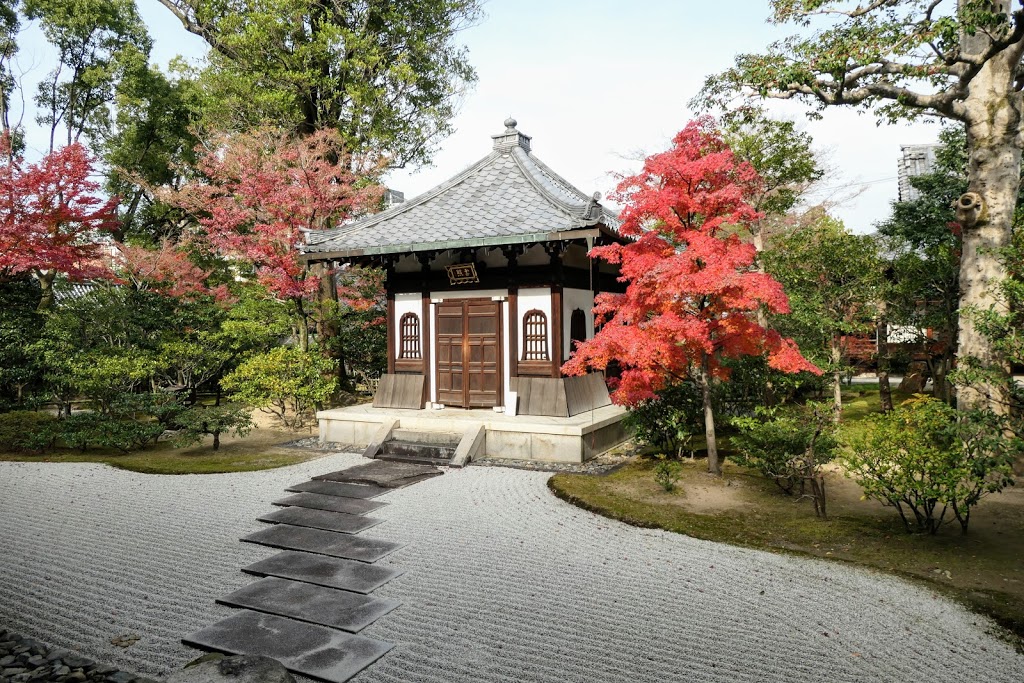
Each Japanese garden element has special meanings (e.g. pine trees: strength; circle-shaped pebbles: waves in the ocean and the transience of life; turtle stones: longevity) Top 10 gardens listed below.
Many people come to Kyoto to escape from the hustle and bustle of big cities but then face the hordes of tourists at main sites. Luckily Kyoto is home to a number of tranquil Japanese gardens some of which are just a walking distance from the downtown area. The meanings wary but both rock gardens and Tea ceremony gardens meant to bring a miniature version of nature in your backyard. Big rocks represent mountains, small rocks represent hills, pebbles shaped as circles represent waves in the oceans.
As a Kyoto resident, these are my most favorite Japanese gardens and ideal to visit if you are short on time:
- Kenninji near the Gion area.
- Kodaiji near Kiyomizu temple.
- Shosei-en near the Kyoto station.
If you’re staying for more than 3 days in Kyoto or visiting the northern part of the city, I recommend dropping by these spots to take a break from all the busy tourist areas:
- Katsura Villa
If you’re staying for even longer or about a week, you can add these gardens to your itinerary as well:
- Saiho-ji Temple , as UNESCO World Heritage Site
- Enkoji moss garden
- Isuien , the old Imperial tea garden in Nara
You can book a hassle-free tour of the Ken’ninji Temple here!
A majority of the gardens in Kyoto also hold tea ceremonies or shorter tea tasting! Make sure to check if the gardens you’re visiting offer this relaxing experience.
#13 RYOA NJI Z en G arden
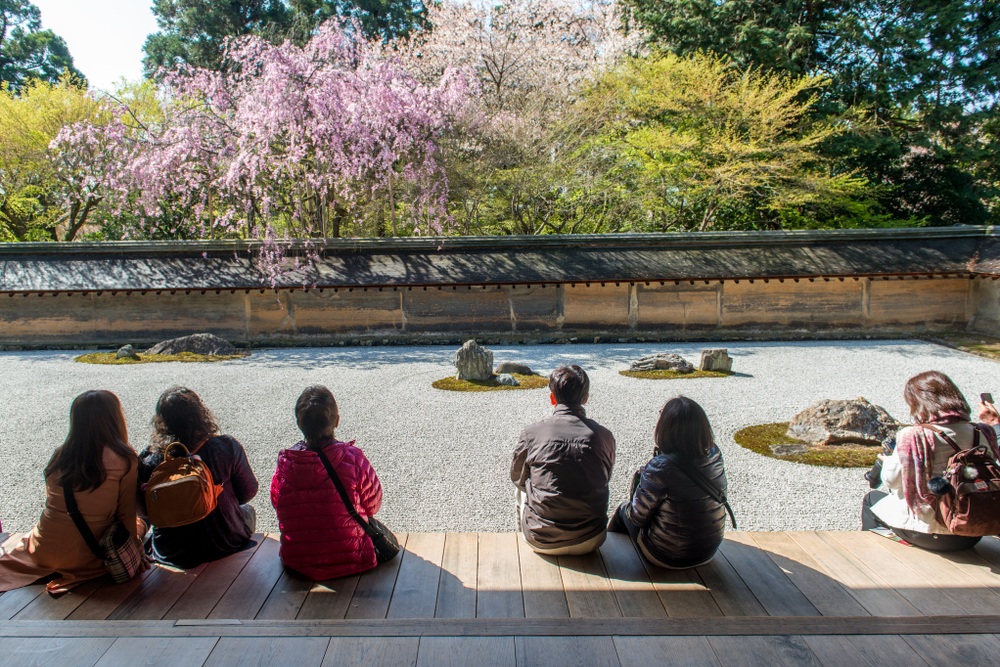
Ryoanji Zen garden
Drop by the zen garden when you visit the Golden Palace. This is a UNESCO World Heritage site and the most calming zen garden in my opinion.
Ryoanji means the “Temple of the Dragon at Peace”. It became internationally famous after Queen Elizabeth visited the temple in the ’70s. This zen garden has 15 rocks placed in a rectangular area but mysteriously you cannot see all 15 at once from any vantage point. It is presumed that the circles on the sand represent waves, small rocks represent hills, big rocks represent mountains and the moss represent the forest on an island.
Don’t forget to check the historic water basin in the backyard! Maikoya also has a walking tour available if you prefer to have a guide.
Besides the garden and trails around the area, you can also try the Yudofu or boiled tofu, which is a Kyoto specialty, or order drinks and other dishes.
#14 Kifune Shrine
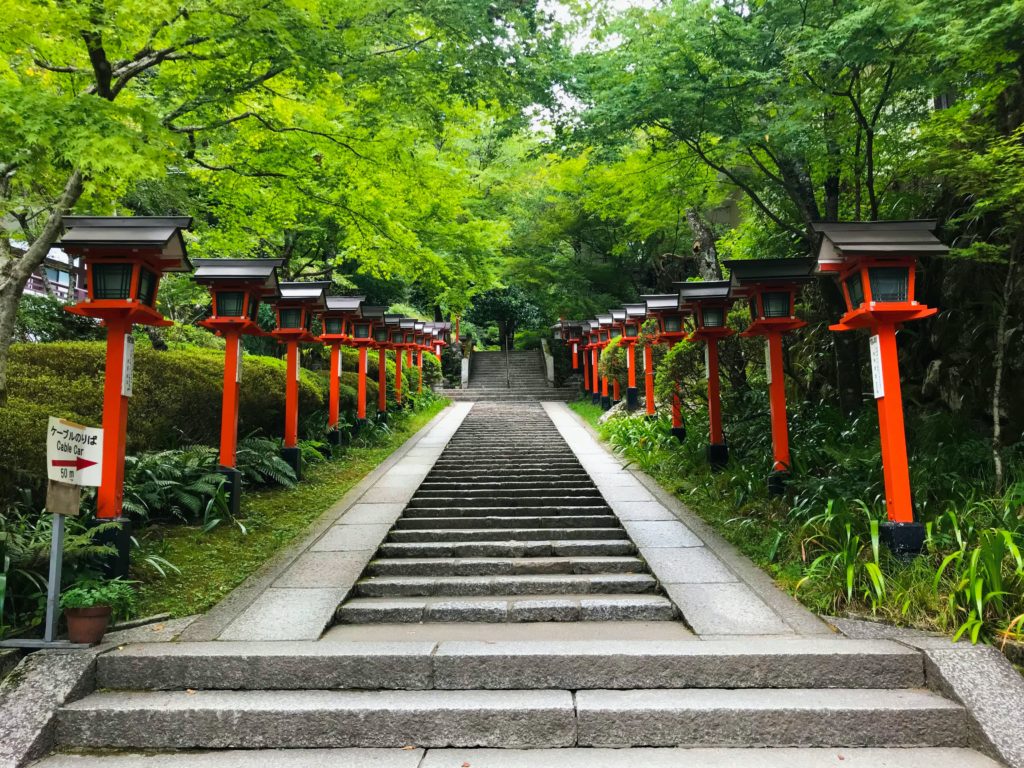
Photo by yoshie yokouchi on Unsplash
The Kifune Shrine is not in the city and located far from the downtown area! This site is not usually found in popular guide books because it’s a little out of the way. However, I highly recommend visiting as most of my guests enjoy their time here! During winters, you can have an amazing view of the orange lanterns in the snow. For the spring and summer seasons, you can have a picnic in the floating cafe.
This is a fun way to enjoy the view of nature as you try the local cuisine and Japanese sweets.
The floating cafes are best experienced during spring and summer!
#15 Try Traditional Japanese Calligraphy and Ikebana

Calligraphy – Shodo – Class in Kyoto
The Shodo calligraphy is used as a zen training method at temples.
Visiting the cultural capital of Japan, you’re sure to find even locals wearing kimonos and practicing traditional arts. One of the most prominent activities you’ll find is “Shodo” or Japanese Calligraphy, and “Ikebana” or flower arrangement. These two activities are not just hobbies to learn, they are also used as a form of Zen training.
In Shodo, it is believed that what comes out of your brush is your true spirit from how you make brush strokes on paper and so on. Japanese monks would often try to achieve satori or enlightenment by drawing Zen circles.
Ikebana, although on the surface may just be flower arranging, considers the aesthetic appeal of Zen and balance. This can range from the colors and angle degrees of the branches.
Both of these activities are great for bonding with friends, families, and couples!
You can book a shodo and ikebana class in advance at Maikoya!
#16 Nijo Castle
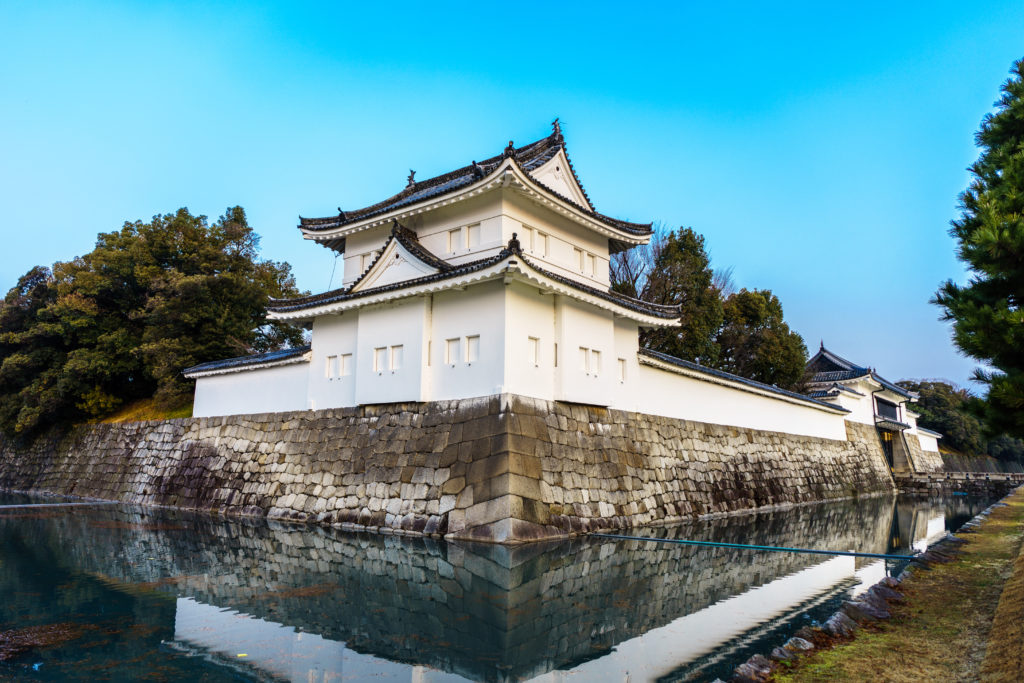
Nijo Castle
N ijo Castle (二条城) was built in 1603 at the start of the Edo Period and served as a residence of the Tokugawa Shogunate until it ended in 1867.
The castle is unique as it looks more like a temple than a typical castle. The reason for this unusual design was because it was built during peacetime, so there was no need for big keeps and an observation tower. If you come to visit, however, you may find that the floors squeak everywhere, no matter how light you are! This was specially made to detect any sneaky ninjas from raiding the castle at night while everyone is sleeping.
The castle closes early at 4 PM so make sure you visit by 3 PM at the latest if you plan on exploring! The Japanese garden requires a separate fee.
You can walk to the Imperial Palace from Nijo castle in less than 20 minutes. There is a convenient ramen shop right next to the Nijo castle.
#17 Kyoto KAISEKI Meal
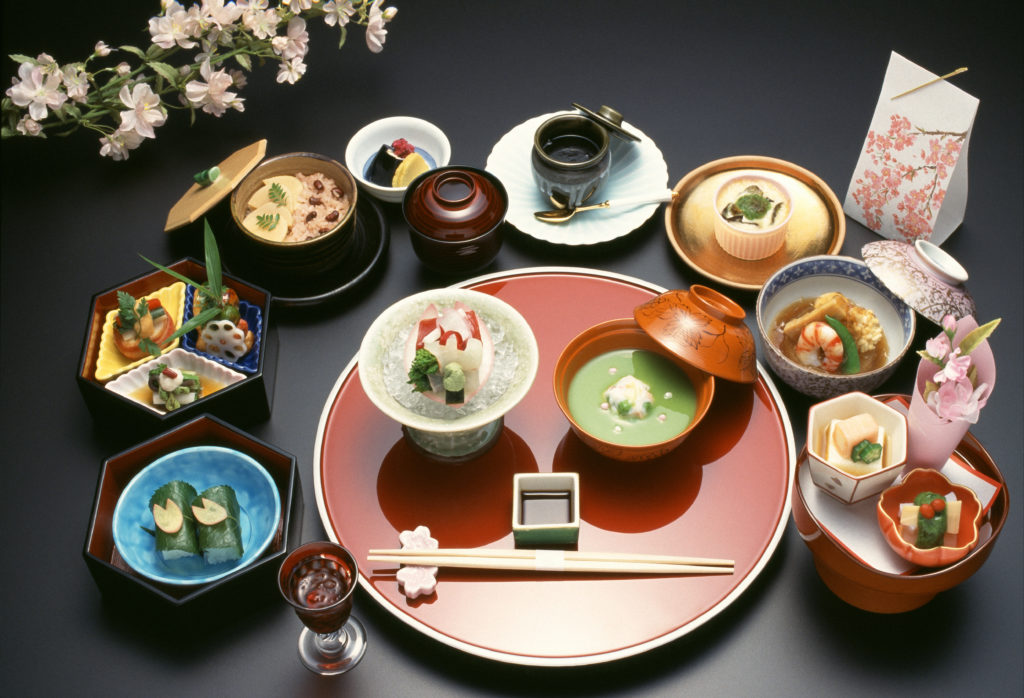
Kaiseki Meal in Kyoto
The kaiseki or kaiseki-ryori is a traditional multi-course Japanese meal. It was recently added as a UNESCO Intangible Cultural Heritage , as a valuable experience in Japan. Kaiseki meals are known to be a great way to experience the seasonal flavors of the country, as well as to enjoy the aesthetic arrangement of the ingredients.
Typically, kaiseki would be composed of:
- 5 different types of cooking (raw, simmered, fried, grilled, boiled)
- 5 different tastes (salty, sour, bitter, sweet, savory)
- 5 different colors (white, brown, red, yellow, green)
- Many different seasonal elements (leaves, flowers, mushrooms, etc.)
Kaiseki meal usually costs more than 100 USD but if you stay at a ryokan, you can get it cheaper as part of your room plan. You can also reserve kaiseki meal in downtown Kyoto here
#18 The Ginkakuji and the Philosopher’s Path #1 SPOT during the SAKURA SEASON
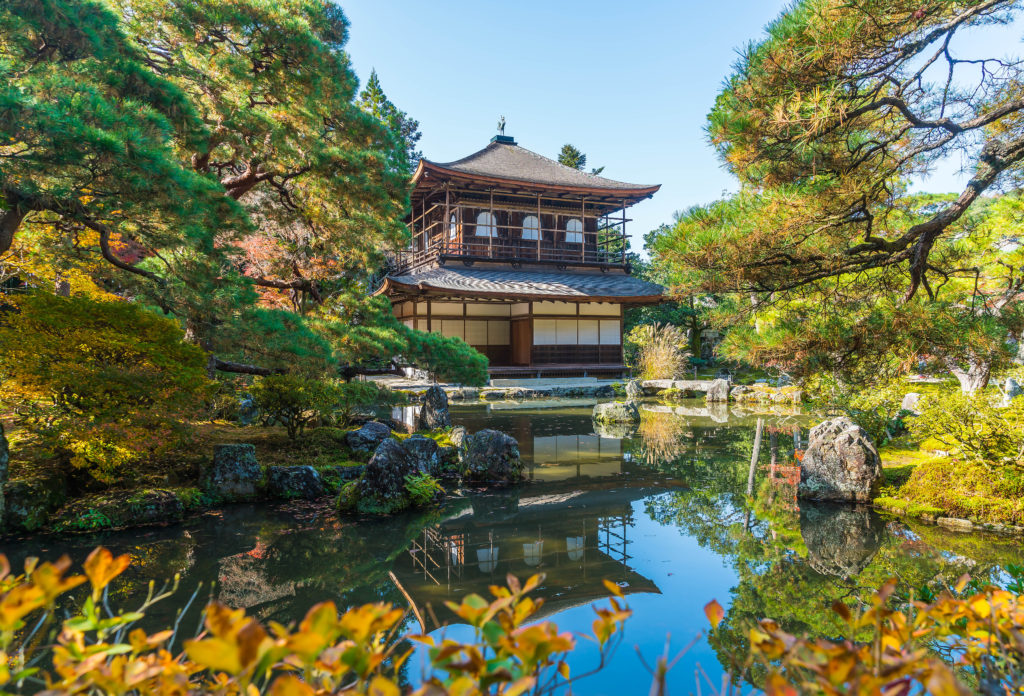
Also known as the Silver Pavilion , the Ginkakuji is a Zen temple located along the eastern part of Kyoto in Higashiyama. The villa was modeled after the Kinkakuji, and built as the retirement home of Ashikaga Yoshimasa. After Yoshimasa’s death, the residence was converted into a Zen temple in 1490.
Although you can reach the pavilion by bus, I highly recommend walking along the Philosopher’s path from Nanzenji especially in the spring.
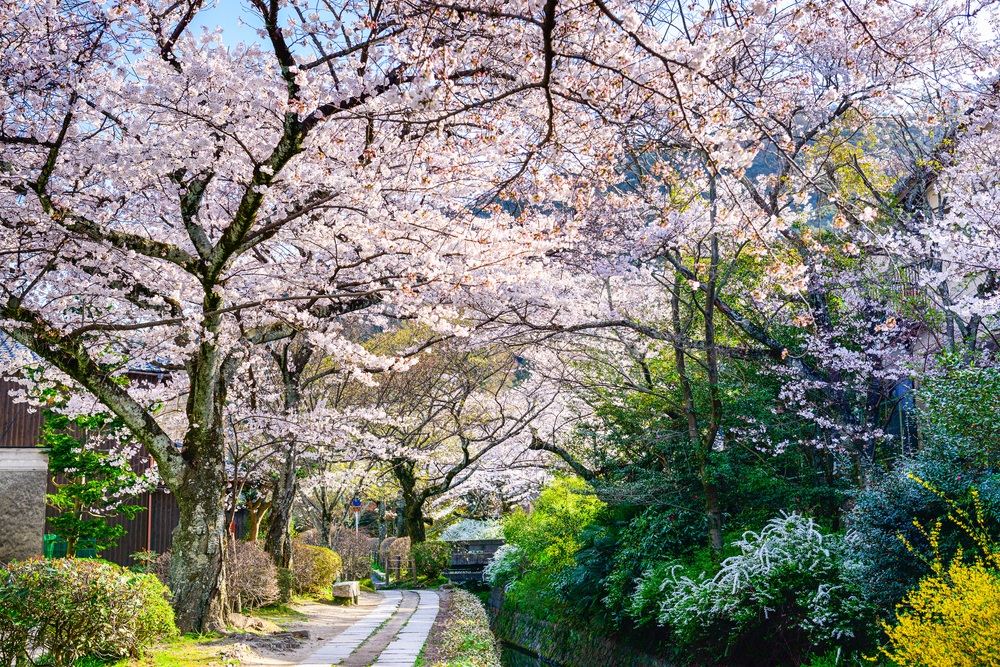
Philosopher’s Path during the Cherry Blossom
The Philosopher’s Path connects the Nanzenji to the Ginkakuji and is a great sightseeing spot on its own especially during spring when the cherry blossoms bloom along the walkways and the creek.
This sightseeing spot is best visited during the cherry blossom season in the spring, so make sure you time your visit!
#19 Sanjusangendo 1000 Buddhist Statues
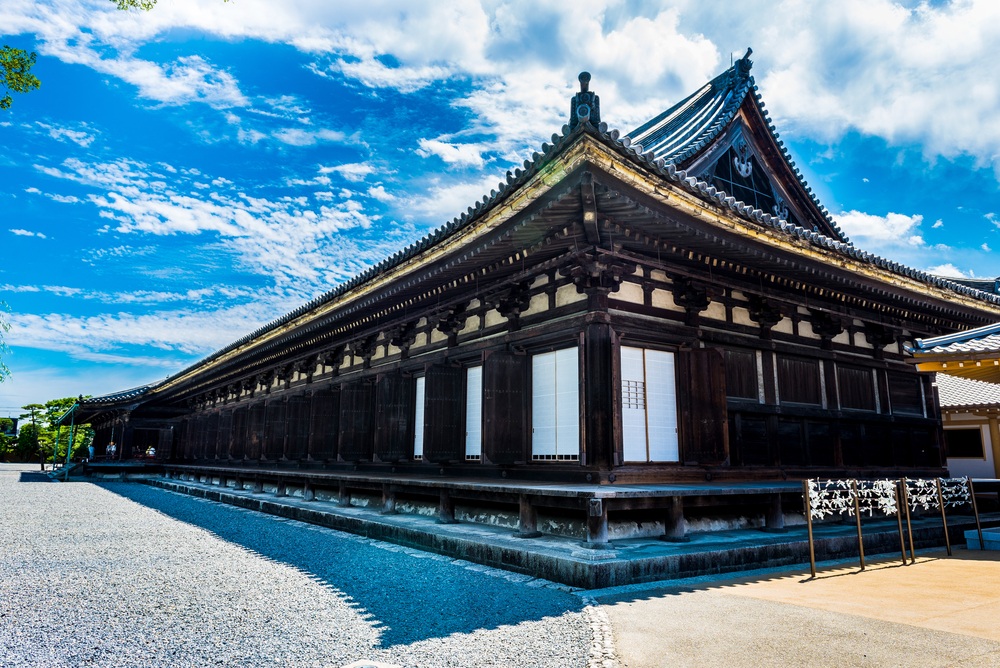
Sanjusan Gendo , 1000 Statues
Sangusangendo , unlike most Buddhist temples in Japan, does not have a lush landscape with perfectly maintained hedges. The temple is home to 1001 statues of Kannon, the goddess of mercy. The structure is the longest wooden temple in Japan, measuring up to 120 meters.
If you want to learn about Buddhism and if you only have one day then this is it. First, there are 1000 Cannon statues protected by 28 heavenly kings and also 2 Nio statues, the Raijin and Fujin. The long hall was originally built in the 12th century making it one of the oldest wooden structures in the world.
The place is right across from Yogen In where you can see the 400-year old samurai blood stains on ceilings. The place is near Kyoto’s National Museum and not too far from the Kyoto Station.
#20 Train like a Ninja in the KYOTO NINJA MUSEUM
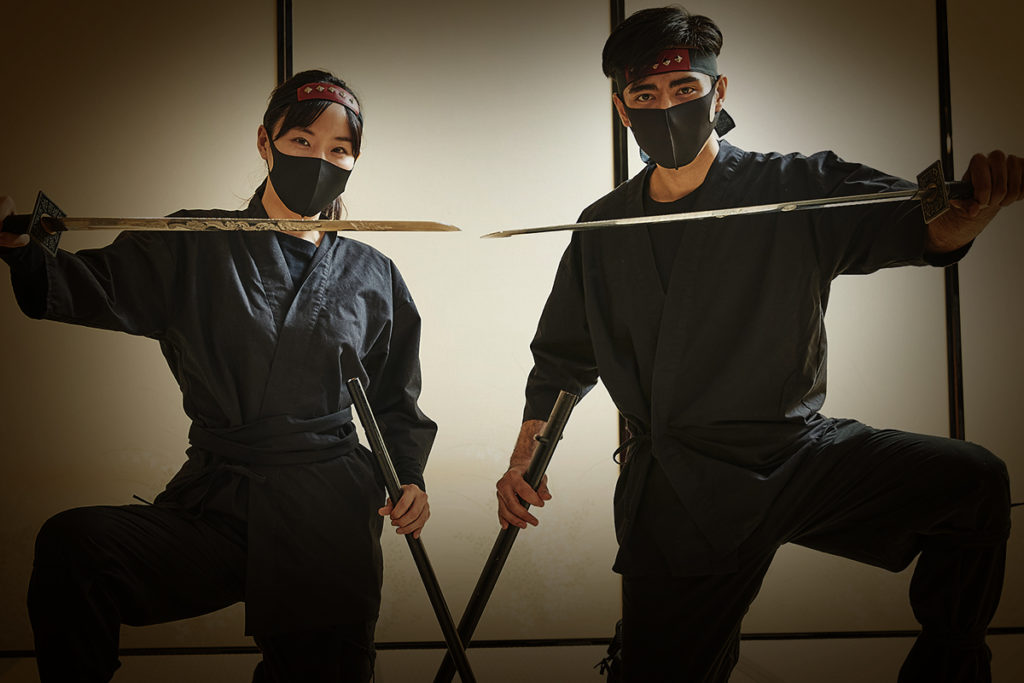
Dress up like a ninja, use a blow gun and throw ninja stars!
The Samurai & Ninja Museum is one of the only experience-based museums in Kyoto and Japan. You can try a variety of activities here from trying on samurai armor to using model ninja weapons!
The ninja tradition was born on the skirts of Mount Hiei which is in Kyoto. There were many ninjas living in Kyoto who frequented the Nijo Jinya, next to the Nijo castle during the Edo period. The Samurai & Ninja Museum near the Nishiki Market is one of the best places you could go that keeps the ninja traditions and stories alive.
They have a selection of activities, some of the best selling tickets are:
- Samurai & Ninja Museum Basic Ticket
- Ninja Experience for Kids and Families in Kyoto
- Ninja Experience in Kyoto for Adults SPECIAL Authentic Ninja Training Lesson
You can book your ticket at the museum in advance here and skip waiting in line during peak seasons!
#21 Imperial Palace Park
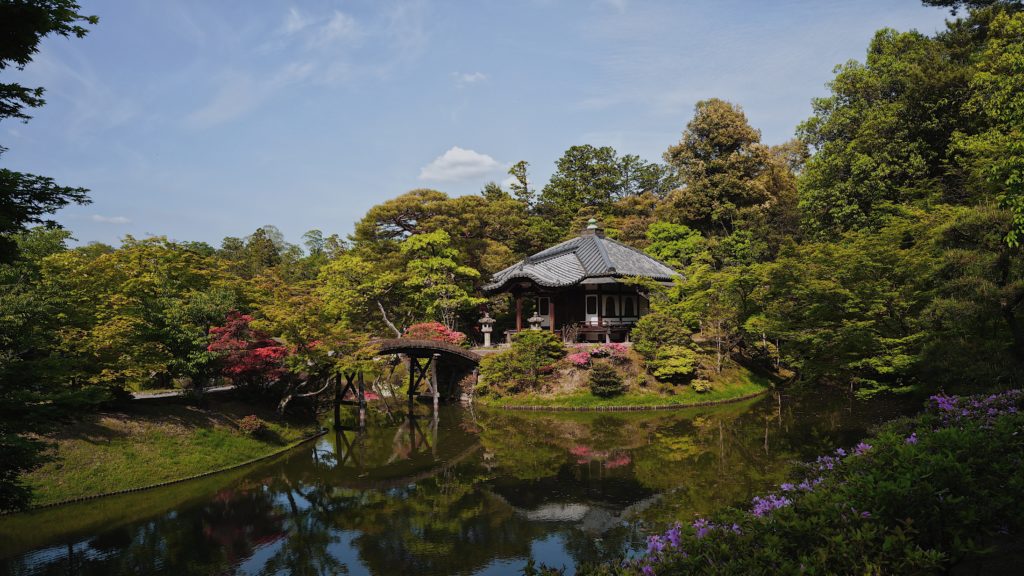
Photo by Kaito Kinjo on Unsplash
The Kyoto Imperial Palace (京都御所) served as the residence of Japan’s Imperial Family until 1868 when the capital moved to Tokyo. It is surrounded by the Kyoto Imperial Park or Kyoto Gyoen and located in the center of the city.
There are a number of small gardens at the park along with old buildings and villas. Locals would typically walk walks or go jogging at the park before 9 AM. Unfortunately, no one is allowed to enter the buildings.
There are guided tours available to explore the palace grounds. I would recommend this if you like to jog early in the morning or are staying in Kyoto for more than 3 days.
The park is also used for recreation including tea ceremonies at any of the four teahouses.
#22 Animal Cafes: Baby Pig Cafe or Cat Cafe or Owl Cafe
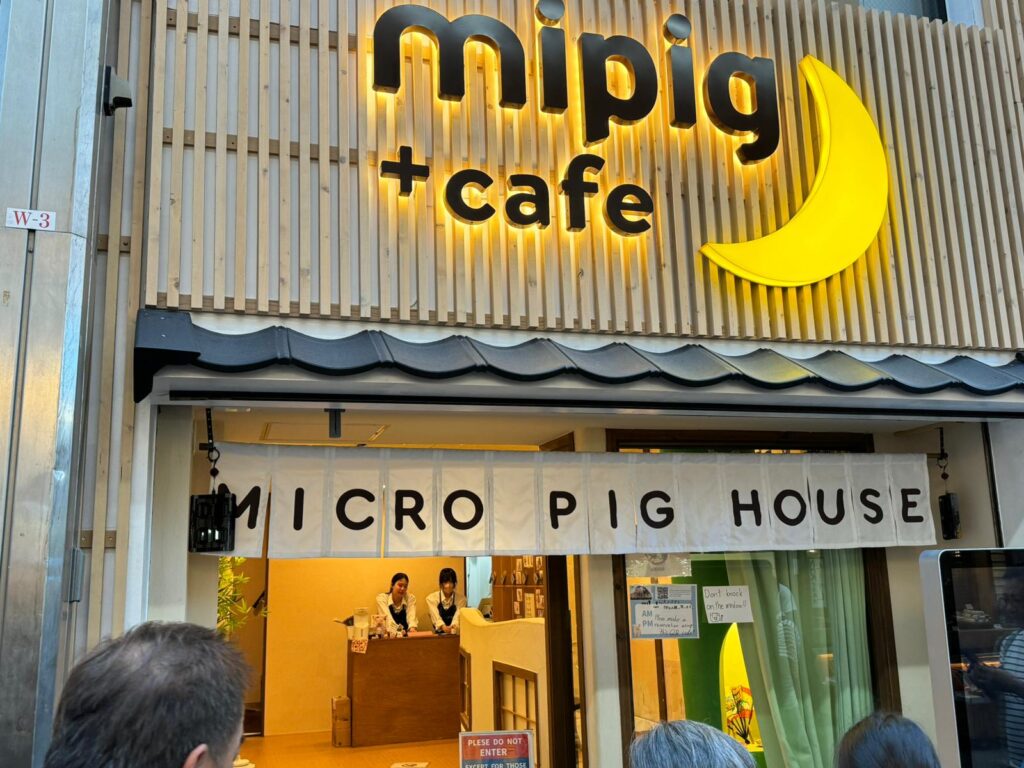
Animal Cafes are especially popular in Japan, and Kyoto is one of the places where you can visit them!
The baby pig Cafe is one of the most popular spots in Kyoto. This features miniature Shiba Inus, a type of dog breed that descended from the regular Shiba Inu–like Hachiko in the movie and in the real story.
Although animal cafes are not necessarily a Kyoto-exclusive attraction, Shinkyogoku still features a number of them for animal lovers! You can find different themed spots like a cat cafe, hedgehog cafe, or owl cafe.
Even though the animals are well-taken care of, please remember that loud noises, and big gestures may scare or stress them. If you want to have a good experience, be sure to treat your new furry friends with respect and gentle touches.
This is the type of dog that appeared in the movie Hachiko. An interactive petting activity. 1st floor is crowded, 2nd floor is quieter and nicer. Online reviews are mixed: some reviewers claim it is very crowded and the dogs are not friendly.
#23 NINENZAKA
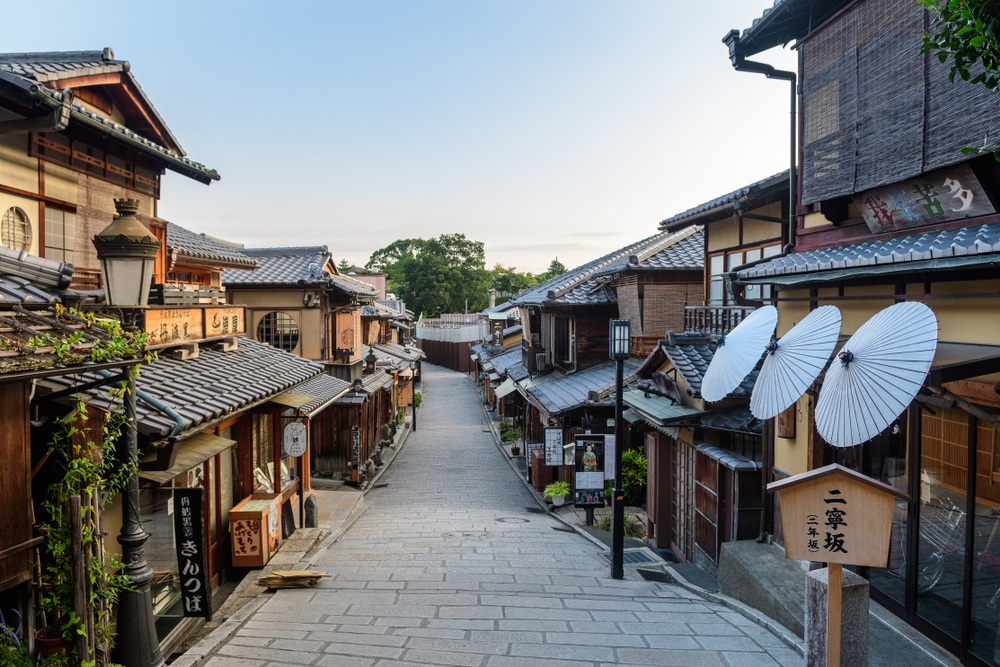
Ninenzaka Street near Kiyomizu Temple
Ninenzaka or “Two-year hill” is a paved pedestrian road in Higashiyama where you can find traditional buildings and antique shops! If you’re interested in more than just buying pottery, some shops will let you make your own bowl like the Kashogama Pottery School .
Ninenzaka is believed to help couples who are wishing for a healthy child and a safe delivery. If you’re wanting the same for yourself, make sure to walk down the cobblestone path on your way to the Kiyomizudera .
If you’re feeling parched for a cup of coffee, you can visit a Starbucks coffeehouse that’s set up in a 100-year-old traditional townhouse!
#24 Join a Sushi or Okonomiyaki Cooking Class
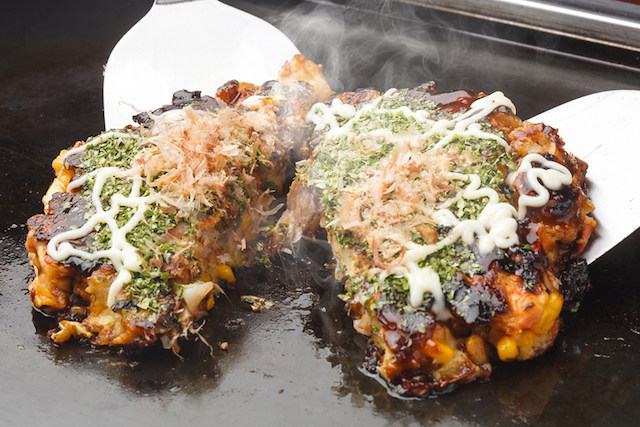
Okonomiyaki Cooking Class
If you have time, I would highly recommend booking a cooking class! There’s something more satisfying in making the local cuisine compared to just buying and snacking on them.
There are various cooking classes around Kyoto if you know how to look. Maikoya provides in-depth workshops that let you participate in the ingredient selection as well! Join the Nishiki Market Tour with Rolled Sushi Cooking Class Kyoto and learn how to make sushi from expert cooks, or Okonomiyaki cooking experience Kyoto .
Each of these classes will have you learning how to make the snack on your own from scratch. Surely you’ll be able to replicate the dishes at home and transport your taste buds back to Kyoto!
Maikoya has a variety of traditional cooking classes available in Kyoto! Each one is hosted by an experienced instructor and you can even learn how to make traditional desserts for the Tea ceremony .
#25 Hunt for Forgotten Antiques
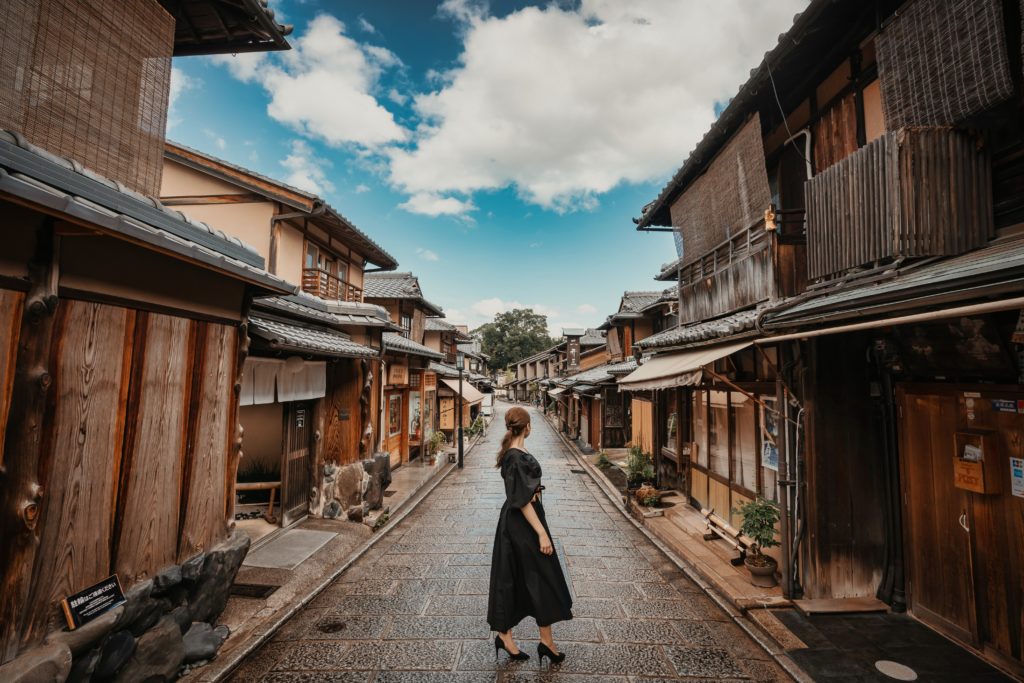
Photo by Koto Kyoto on Unsplash
Kyoto is an ancient city, making it the best place to go antique shopping! Besides Ninenzaka, Kyoto has a collection of historic neighborhoods that you can visit–one of my favorites is the Teramachi Street area between Oike and Karasuma.
If you like the Geisha district in Gion, I’m sure you’d also enjoy visiting the Kamishichiken area! This is the oldest geisha district and is home to the famous Kitano Tenmangu Shrine. The area is a lot like Gion but without the tourist crowds.
A more unique area is Yokai Street where you’ll find life-size monsters all over the street! It’s not a very large area but you can explore it with a quick walk around. The majority of the shops you’ll find here are secondhand and thrift stores that contain interesting knick-knacks.
There are a lot more places to find antique shops all over Kyoto! These are just some of the more visited and easy to navigate areas.
#26 See a Festival in Kyoto
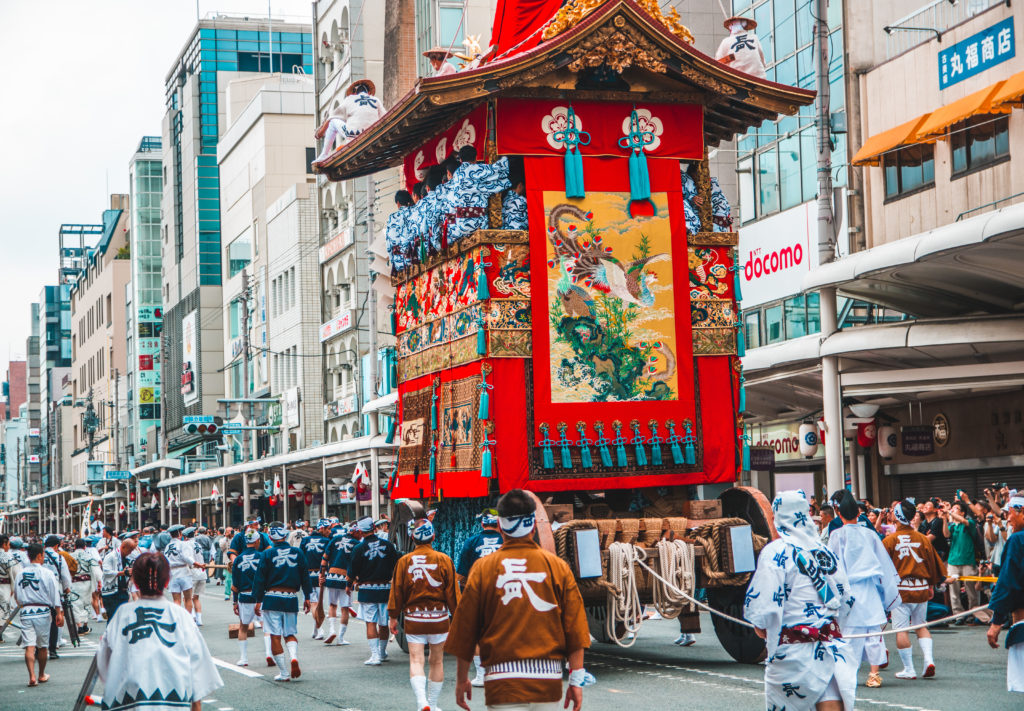
Japan has so many cultural traditions, and festivals are one of them! Similar to the ones you’ve likely seen in animes and pictures online, traditional festivals are regularly held to welcome the seasons and during significant dates in the area.
If you want to experience this in Kyoto, you should try to schedule your trip around them! The biggest festival is the Gion Matsuri as pictured above, which lasts almost 2 weeks in July . Thousands of locals would participate in this, wearing traditional outfits.
There are a number of festivals around Kyoto. Here are some of my recommendations if you want to plan your itinerary around them:
- In February, the Yasaka shrine hosts the Setsubun festival where you’ll see the Maiko and Geisha perform for crowds of spectators.
- On May 15 people dress up as aristocrats, walking from the Imperial Palace to the two main Shinto Shrines in Northern Kyoto.
- In April, there is a month-long festival called the Miyako Odori festival where you can watch Maiko and Geisha perform a dance.
- On August 16, there is Gozan no Okuribi where you can see giant kanji–shaped bonfires on the mountains surrounding Kyoto. This is to greet the spirits who come to visit the mortal world for a day in mid-August.
- In October, the Jidai Matsuri is held at the Heian Jingu Shrine and people would dress as major historical figures.
- In November, there is a number of festivals in Kyoto that celebrate the beginning of autumn.
As expected, these festivals would normally be attended by crowds of locals and tourists. Make sure you pack your essentials in an easy-to-carry bag and that it’s not heavy! Also remember to come to these festivals early so you get the best view.
#27 Yakiniku
Yakiniku is as much of an experience as it is a delicious dish. Similar to popular restaurant trends, you will get to grill prepared meat and vegetables at your table! This is also commonly referred to as Japanese Barbecue. A grill is normally installed into the middle of the table, making it safe for everyone including kids.
#28 Shabu-Shabu
Shabu-shabu is one of the internationally beloved Japanese dishes. It is a popular hot pot dish where you are normally served with thinly sliced raw meat and vegetables that you cook at your table in steaming hot broth. This is a great way to enjoy time with good company as you wait for your meal together.
#29 Nabe (Japanese hot pot)
Nabe or Nabemono is another variation or Japanese hot pot. Nabe can contain just about anything from vegetables, tofu, and meatballs that you boil in a cooking pot at the table. This is the dish that sumo wrestlers usually eat before the tournaments.
#30 Okonomiyaki
Unlike the cooking classes mentioned before, most okonomiyaki served in restaurants are prepared by a server. Restaurants normally feature table-side cooking where staff would prepare the dish right in front of you and use a hot steel plate called a teppanyaki.
#31 Zauo Fishing Restaurant
Although this experience is not in Kyoto, I highly recommend trying Zauo! It’s a short train ride to Osaka and you can catch your own fish which the restuarant will prepare for you as sashimi or any dish you prefer. This is also cheaper, and you can’t ask for a fresher catch!
#32 Kani Doraku Kyoto Honten
Kani Doraku is one of the most popular restaurants in Kyoto. They specialize in crab dishes, from crab hot pot to snow crab legs! They also serve a variety of other seafood and crustaceans. This is a great stop for foodies and lovers of succulent crab meat.
#33 Menbaka Fire Ramen
Although ramen is fairly common, this restaurant offers an extraordinary experience for guests. This small traditional restaurant is the only place in the whole world that you can get a fire show while watching the chefs prepare a fierce noodle dish for you.
As this is a popular attraction, make sure you get there early as they don’t accept reservations!
#34 Kushikatsu
Indulge in snacking on popular deep-fried street food like meat, fish, and vegetables on sticks served to your table and you get to chose toppings on your own at your table.
Things to do in Kyoto at Night
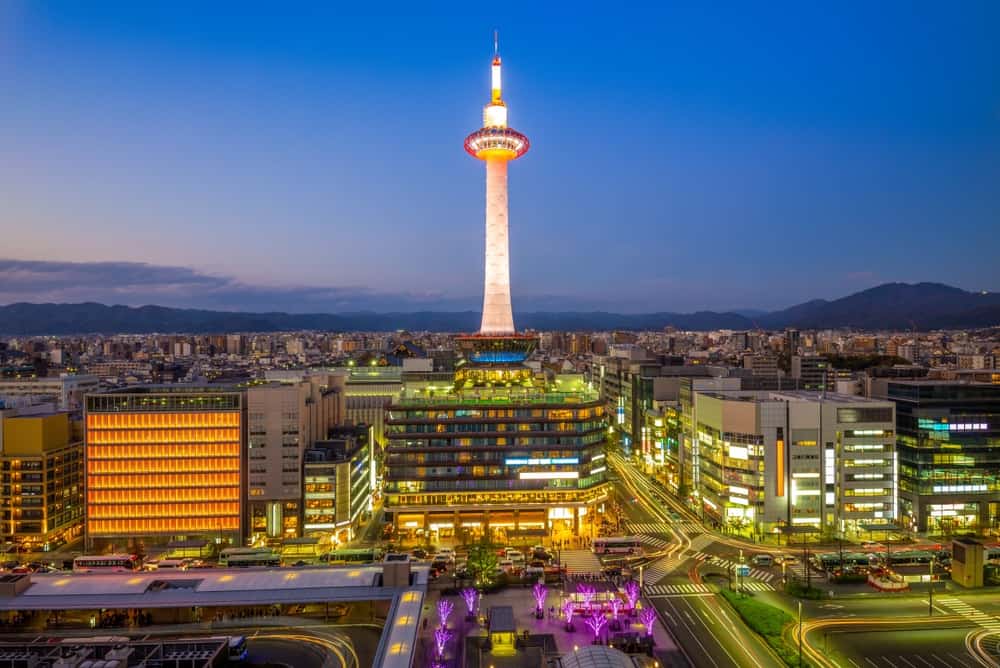
Kyoto Tower at Night
There are not many night activities geared toward tourists other than some kabuki performances at the Minamiza theater. However, you can do many things at night in Kyoto including but not limited to:
- Romantic walk by the Kamo River
- Meeting locals at HUB pub or other bars at the Pontocho entertainment district
- Walk in the Gion geisha district
- Try some theme cafes such as bluefish cafe/bar where you can touch baby sharks
- Wander in the temple gardens illuminated at night
- Go to the observation deck of Kyoto Tower and view the city lights
- Try some rooftop cafes such as my favorite, in the moon
Non-Touristy Things to do in Kyoto
Most people have jobs and work hard, so usually, people mostly hang out on weekends. Families who have a car can go to theme parks or fruit-picking and tea-planting farms outside the city.
City dwellers tend to go to the AEON shopping mall or the Teramachi shopping street just to enjoy window shopping. Young couples go to theme cafes in nearby cities (Nara, Osaka, Kobe).
Youngsters also enjoy karaoke at Jankara and bowling at Round 1.
MOVIX is another popular spot as it is the largest movie theater in Kyoto. MOVIX is surrounded by game arcades and a pachinko parlor (legalized arcade game-based gambling hall). People who are into sports, run by the Kamo river or go see sporting events such as soccer games or baseball games. People who are about to graduate from high school visit various universities for open-campus events. People who like reading go to libraries and bookstores.
The BAL/Maruzen bookstore in the downtown area has a great selection of books in English. Also every weekend there is a special exhibition, festival, or ceremony at certain temples and shrines. You can find out most local activities here on this website by using google translate.
KYOTO FACTS
- What does Kyoto mean? It means “capital city”
- What is the population of Kyoto? 1.5 million (foreigners are 2% of the population)
- How many Geisha (Geiko or Maiko) are there in Kyoto? Fewer than 200
- What is Kyoto’s original name? Heian City (became capital in 794 AD)
- Where is the Kyoto Airport? There is no “Kyoto Airport.” The closest airport in “Kansai airport” which is in Osaka. The Kansai airport is 45 KM away from Kyoto.
- How many UNESCO world heritage sites are in Kyoto? 17
- How many temples are there in Kyoto? 1600
- How many shrines are there in Kyoto? 800
- How many tourists stay in Kyoto? 13.2 Million (2019), 5.17 Million (2021)
- Best sushi in Kyoto: Musashi sushi . Not the best or cheapest but a decent place with a decent price and fresh sushi.
- Best ramen in Kyoto: Ippudo ramen . Not the best ramen but a decent place with an easy-to-understand menu with an affordable price.
- Best steak restaurant in Kyoto: Gion Karoku . Not the best steak restaurant but a decent yakiniku place in the historic geisha district where I take my guests. It is a bit pricey.
- Best izakaya in Kyoto: Ganko Sanjo Honten near the Sanjo bridge. There are also many good izakayas on Kiyamachi Street.
- Best Vegetarian restaurant in Kyoto : Ain Soph with unique vegan burgers.
- Best Halal food/restaurant in Kyoto: Istanbul Restaurant with a good selection of Mediterranean dishes.
- Best Italian Restaurant in Kyoto: Pizza Salvatore Cuomo Pizza & Grill . Definitely not the best but a decent place with decent price located by the river.
- Best Rooftop bar in Kyoto: In the Moon by the Kamogawa River.
- What is the climate of Kyoto like? Cold in the winter, hot in the summer. It snows in December and January. It rains in half of July.
- What is the terrain of Kyoto like? There is no sea or ocean in Kyoto. Kyoto is surrounded by tall mountains.
- What are the local sweets of Kyoto? Yatsuhashi (sweet beans paste in rice flour)
- What is the local dish of Kyoto? Obanzai (combination of small dishes mostly made out of vegetables grown in Kyoto)
- How far is Kyoto from other cities? Kyoto is 15 mins from Osaka, 30 minutes from Kobe, 45 minutes from Nagoya, and 2.5 hours from Tokyo (by bullet train).
- What are the famous companies in Kyoto? Nintendo, Kyocera (Kyoto Ceramic), Wacoal
- What are Kyoto local dialect phrases? Ookini: thank you; Oideyasu: Welcome…
- The cultural capital of Japan. There are fewer earthquakes in Kyoto and Kyoto was the only major city that was not bombed during WW2 since the war minister in the US had spent his honeymoon in Kyoto and really liked the city.
- Kyoto has the highest number of national treasures in Japan.
- Kyoto has the highest number of bakery shops per capita in Japan.
- Kyoto was modeled after the Tang dynasty capital in China.
- Kyoto has many old townhouses with gardens in the middle which are called “ machiya .”
- Kyoto is where the kabuki culture, geisha culture, kimono tradition, and the noh theater were born.
- In Kansai, Kyoto is known to be the place for education (there are many high-ranked universities).
- Japanese people consider Kyotoites a bit snobbish and conservative.
- Kyotoites are also known for their indirect communication style (it is believed that they never show their true face).
- People of Kyoto think the capital should be Kyoto, not Tokyo.
Kyoto Travel Tips
- Kyoto and Osaka are not far from each other (many Kyoto residents work in Osaka). You can stay in Osaka and still come to Kyoto every day during your visit.
- The downtown of Kyoto is not the Kyoto Station. The downtown area is near the Kawaramachi Station.
- The shopping district is Teramachi shopping Street . The souvenir shops and kimono shops are located on Shinkyogoku Street. The largest variety of electronics and cameras are found at Yodobashi Camera, a huge building right next to the Kyoto station.
- JR pass is not a great option in Kyoto as you either have to ride a bus or take the subway. If there are 3 or more people in your group, taking a taxi is usually a good option. UBER is not common in Japan and I usually use Didi and JapanTaxi instead. Both apps work just fine and have good rates.
- There are very few public bathrooms in Kyoto, always remember these 3 spots to find a bathroom: convenience stores, train stations, and franchise stores such as McDonald’s and Starbucks.
- There are very few public trash bins in Kyoto, always remember these 3 spots for public garbage can: convenience stores, train stations, and franchise stores such as McDonald’s and Starbucks.
- If it suddenly rains, or it gets too hot/cold, then you may want to go to the Teramachi shopping area where there are so many shops, cafes, and flea markets in a covered area.
- During the Sakura (Cherry blossom season) everywhere gets so crowded, but you can enjoy the city by going to any zen garden I listed above.
- Although it is changing, many shops still do not accept cards especially in the Nishiki market , so please always carry some cash.
- In Kyoto, store owners usually don’t jack up prices in tourist areas, so feel free to buy souvenirs anywhere.
- Always pick a young person to ask for directions . If you write what you are trying to say on a piece of paper, many people can understand you.
- Always pick the oldest person to complain about something. In Japan hierarchy almost always depends on age.
- If you have a heavy backpack you can always put it in the lockers available at every train station .
- The nearby cities are closer than you may think . You can go to Osaka in 15 minutes, Kobe in 25 minutes, and Nara City in 40 minutes.
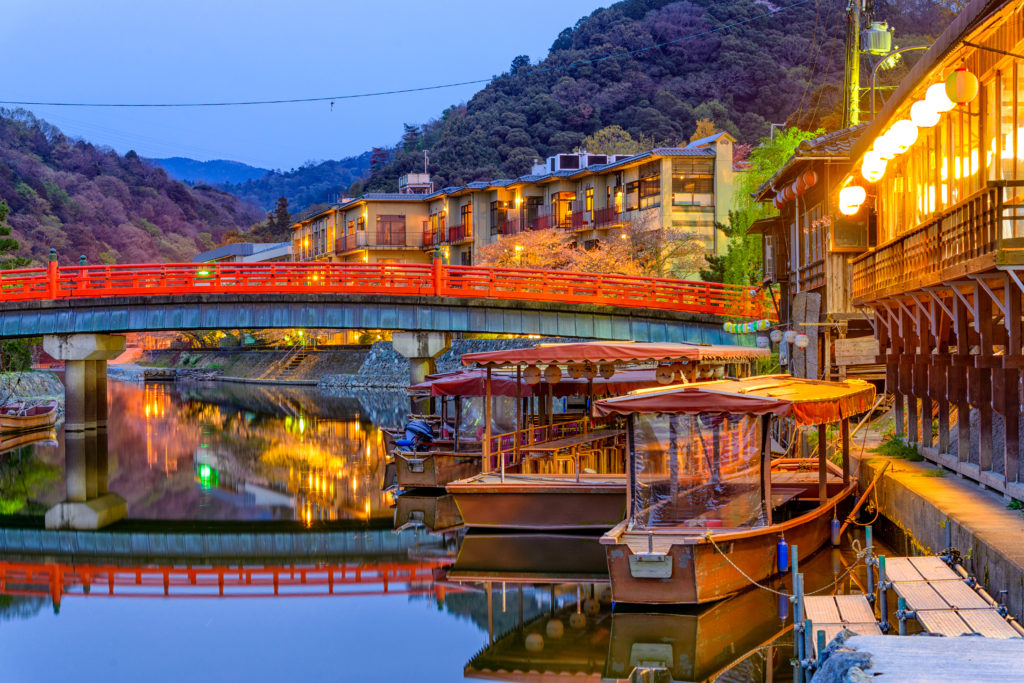
Uji, Kyoto Prefecture, Japan on the Ujigawa River
People would often ask me what they should do or see in Kyoto but I will always give the same answer: It depends on your personality and taste! There’s a little something for everybody in Kyoto whether you prefer experiences over sightseeing, being a tourist and experiencing the ancient city like a local.
Take your pick from any of the things I listed from the common tea ceremonies and kimono wearing to picnicking at the beautiful gardens and parks.
WELCOME TO MY HOMETOWN KYOTO: OIDEYASU!
- Culture Research
- Japanese Culture
- Japanese History
- Harakiri and Suppuku
- Tea ceremony Kyoto
- Geisha Tea Ceremony
- Ninja Experience & Samurai
- Kimono Wearing Experience
- Geisha Experience
- Cooking Class Kyoto
Contact us : [email protected]
Readers of this article also read
6 best massage places in kyoto.
Kyoto offers many travel opportunities and sightseeing areas for any local and international tourist to enjoy, from it’s famous Bamboo Grove in Arashiyama to the traditional and picturesque architecture in Gion District. Massages are a great way to refresh the body as well as treat and pa

8 Best Spas in Kyoto
Kyoto offers many travel opportunities and sightseeing areas for any local and international tourist to enjoy, from it’s famous Bamboo Grove in Arashiyama to the traditional and picturesque architecture in Gion District. Going around on foot is sure to be taxing on any traveler, no matter

6 Best Public Baths and Sento in Kyoto
Sento, or public baths, are fairly common and are easily found around the communities in Japan. The beginnings of this tradition can be traced back to the Heian Period in 794-1185, but the first proper public bath was built in Tokyo, formerly Edo, in 1591. This practice became popular

9 Best Photography Studios in Kyoto
Japan is a country full of traditional relics and advanced technology, balancing two different factors at the same time. It is also a place full of tourist attractions and sought-after cuisine. Kyoto is especially known for being the cultural capital of Japan. Most of its destinations are listed

Pontocho Kyoto
Ponto-chō (先斗町) is known either as a street, alley, or district in Hanamachi. There is a saying that “Pontocho” is a combination of Portuguese and Japanese words. Pontocho was said to be from the words “Ponte”, the Portuguese for “bridge”, and “cho” the Japanese for either blo
KIMONO TEA CEREMONY KYOTO MAIKOYA at NISHIKI
Kimono tea ceremony tokyo maikoya, kimono tea ceremony kyoto maikoya at gion kiyomizu, samurai & ninja museum with experience.

18 Top-Rated Tourist Attractions in Kyoto
Written by Meagan Drillinger and Bryan Dearsley Updated Dec 26, 2023 We may earn a commission from affiliate links ( )
Surrounded by the hills of central Honshu, Kyoto is one of Japan's largest cities. Although one of Japan's great tourist destinations , it is famous for having preserved much of the atmosphere of the past, having been the only major Japanese city to escape the devastation of WWII.
Celebrated as the residence of the Emperor , and Japan's principal cultural center for almost 1,100 years, Kyoto today boasts numerous things to do and great places to visit, including exploring the fine examples of sculptures, paintings, and other art forms in its many museums and galleries.
Your Kyoto travel itinerary should include seeing non-touristy sites, too. These should include the many examples of its centuries-old architecture, much of it influenced by Buddhism, which can still be seen in the splendid temples located in the quieter, less visited corners of the old city.
Kyoto continues to play an important role in Japanese religion, with 30 of the city's temples still serving as centers of various Buddhist sects, along with some 200 Shinto shrines within the city limits. All told, UNESCO World Heritage Site status has been designated to 17 historic buildings in Kyoto.
Find the best places to visit in the city with our list of the top attractions in Kyoto.
See also: Where to Stay in Kyoto
1. Nijo Castle
2. fushimi-inari taisha shrine, 3. kinkaku-ji: the golden pavilion, 4. kiyomizu-dera temple, 5. sanjūsangen-dō temple, 6. kyoto imperial palace, 7. nishi honganji temple, 8. the kyoto national museum and municipal museum of art, 9. gion's geishas and temples, 10. katsura imperial villa, 11. daitoku-ji temple, 12. the byōdō-in temple, 13. arashiyama monkey park, 14. arashiyama bamboo grove, 15. kyoto tower, 16. kyoto samurai and ninja museum, 17. enjoy a traditional kaiseki meal, 18. experience a tea ceremony, where to stay in kyoto for sightseeing, tips and tours: how to make the most of your visit to kyoto, map of tourist attractions in kyoto, kyoto, japan - climate chart.
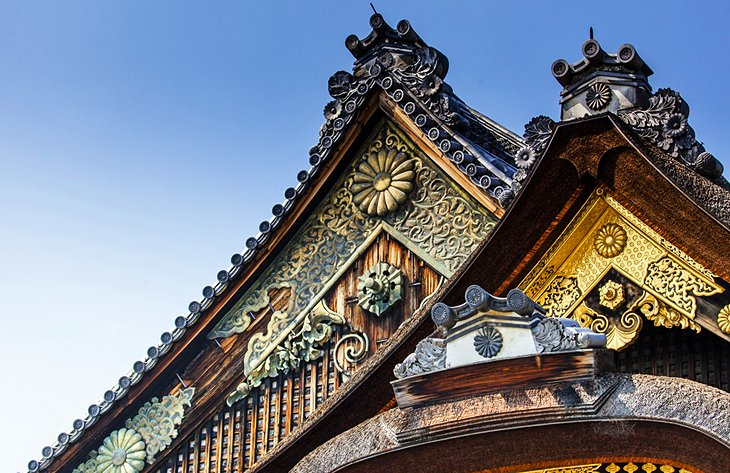
Nijo Castle (Nijō-jō), complete with well-preserved walls, towers, and a moat, was built in 1603 and later served as the seat of government. The complex has several buildings containing many significant works of art, and is famous as the location chosen by the emperor to issue the rescript abolishing the country's once powerful Shogunate.
Highlights include the castle's East Gate (Higashi Otemon, its main entrance), as well as the Inner Gate, or Karamon, notable for its fine carvings and decorated metalwork. Beyond this, the elaborate Mikuruma-yose is another must-see. The castle's fine gardens are also fun to explore.
The site's most important building is Ninomaru Palace . Consisting of five separate buildings linked by corridors, it boasts exquisite interiors decorated with many paintings by Kano Tanyu and his pupils. The principal apartment is the Hall of the Imperial Emissary (Jodan-no-ma), matched in splendor by the adjoining rooms, Ni-no-ma and Tozamurai-no-ma with their paintings of tigers.
Also of interest is the adjacent building with its large Audience Hall surrounded by a gallery and with sliding doors with large paintings of larches on a gold background. The fourth building, the Kuro-Shoin, has animal paintings by Kano Naonobu, while in the Shogun's private apartments are paintings of mountain landscapes.
If traveling as part of a tour, be sure to request a chance to tread the castle's famous "nightingale floors." These squeaking floorboards were specially designed to replicate the chirping of a nightingale.
Address: 541 Nijojocho, Nakagyo Ward, Kyoto, Kyoto Prefecture 604-8301
Official site: https://nijo-jocastle.city.kyoto.lg.jp/?lang=en
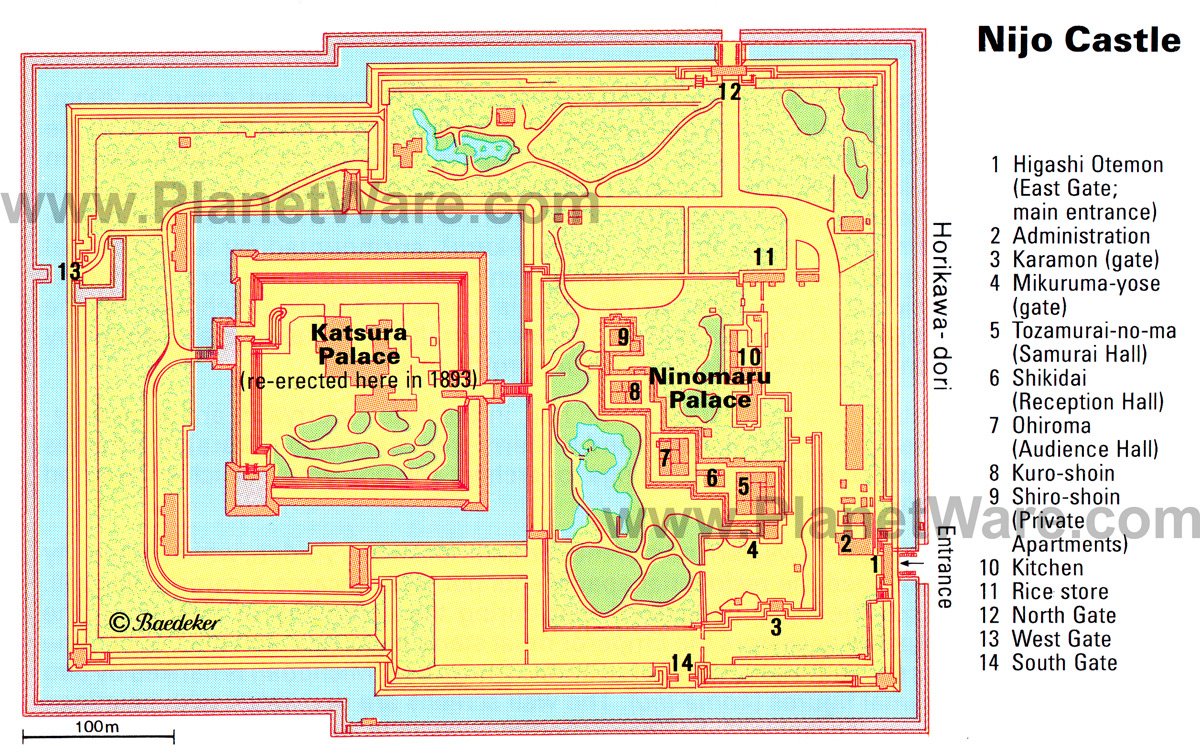
One of Japan's most famous shrines, the Fushimi-Inari Taisha Shrine is a must-visit when in Kyoto. Founded in AD 711 and dedicated to the goddess of rice-growing, Ukanomitama-no-mikoto, the shrine is still frequented by merchants and tradesmen who pray for prosperity.
The main building dates from 1499 and features a spectacular four-kilometer-long avenue of bright orange "torii," or arches, each dedicated by a business (it takes some two-hours to travel past the 1,000 arches lining the route). Also notable are its many sculptures of foxes, reputed to be messengers of the gods.
A great time to explore the shrine is at night. Not only will you be rewarded with a unique glimpse of this wonderfully illuminated heritage site, you'll be rewarded with few if any crowds.
Fortify yourself with the purchase of traditional Japanese fortune cookies from the shops and stands at the shrine's entrance. And to beat the crowds, visit as early in the day as possible (a 7am or 8am start is well worth it for the chance to avoid other visitors).
Address: 68 Fukakusa Yabunouchicho, Fushimi Ward, Kyoto
Official site: http://inari.jp/en/
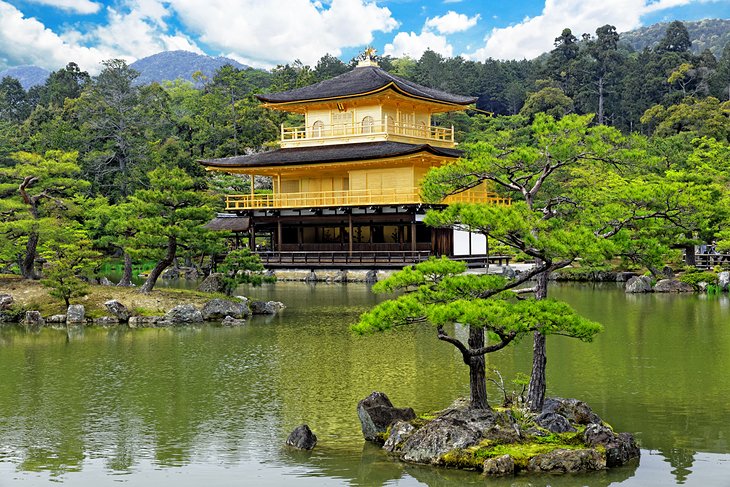
Originally built in the 14th century as a retirement villa for Shogun Ashikaga Yoshimitsu and now a Zen Buddhist temple, the magnificent Golden Pavilion (Kinkaku-ji) is one of Kyoto's most picturesque attractions.
Taking its name from the gold leaf adorning the top two of its three floors - a design element believed to alleviate any negativity associated with death - the structure has been rebuilt in its original form a number of times, this most recent incarnation dating from the late 1950s.
Built over a large pond, the site is also famous for its beautiful grounds, as well as its old stone pagoda and the Sekkatei Teahouse with its traditionally served beverages. For a different perspective of this wonderful tourist attraction, plus avoiding the summer crowds, time your visit for either winter or autumn (the latter is spectacular thanks to the fall colors).
Address: 1 Kinkakujicho, Kita Ward, Kyoto, Kyoto Prefecture 603-836
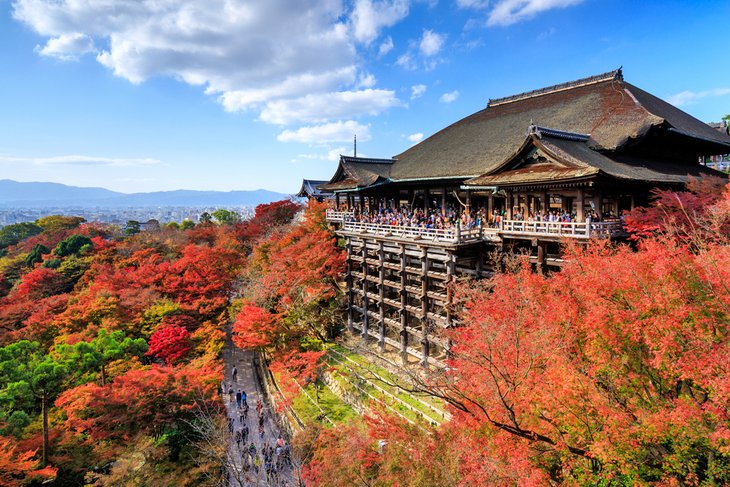
In the east part of Kyoto, the Kiyomizu-dera Temple, an important UNESCO World Heritage Site, lies in a picturesque location on Otowa Mountain overlooking the city. Visitors can enjoy a delightful stroll to the temple along quaint Tea-pot Lane with its small shops and craft stores.
This beautiful temple was founded in AD 790 and dedicated to the 11-headed Kannon, the Buddhist Goddess of Mercy whose statue can be seen here. The existing buildings were erected after 1633 in the period of the third Tokugawa Shogun, Iemitsu, and stand mainly on a rocky outcrop high above the Otowa Waterfall.
Highlights include the large terrace of the Main Hall, built on 30-meter-tall pillars with five rows of cross-beams and used as a stage for temple dances and ceremonies. The terrace affords spectacular views over the city and the surrounding wooded hills, especially when the leaves change color in fall. Personalized English language guided tours are available.
Address: 294 Kiyomizu 1-chome, Higashiyama Ward, Kyoto, Kyoto Prefecture 605-0862
Official site: www.kiyomizudera.or.jp/en/
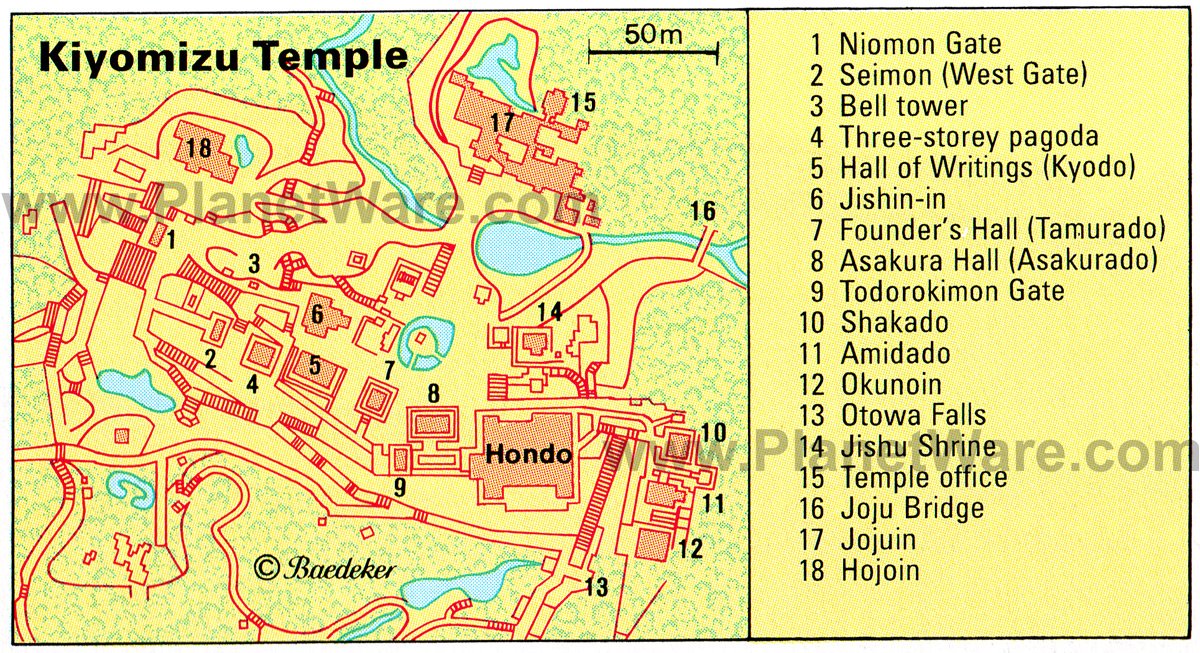
Sanjūsangen-dō (Rengyoin Temple), or the Temple of the 33 Niches, takes its name from its rather unusual structure: its façade is divided into 33 (sanjusan) niches (gen) to reflect the belief that Kannon, the Goddess of Mercy, could take on 33 different personifications.
Originally built in 1164, the present elongated building was constructed in 1266 after a fire destroyed its predecessor. Evidence of its former importance as a place of training in archery can still seen in the many holes in its ancient pillars and timbers made by arrowheads.
The most important of its many works of art is the Kannon with a Thousand Hands, a nearly three-and-a-half-meter-tall statue. Dating from the 13th century, it's famous for the 500 standing figures of Kannon lined up on either side of it. Also of note are the additional sculptures of the 28 "celestial auxiliaries," spirits considered subordinate to Kannon, located behind it.
Address: 657 Higashiyama Ward, Kyoto, Kyoto Prefecture 605-0941
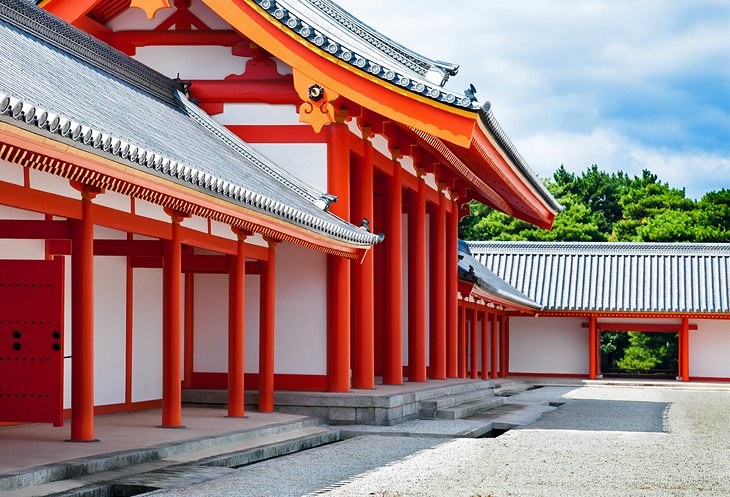
The original Kyoto Imperial Palace (Kyoto-gosho ) , built in AD 794 and replaced several times after being destroyed by fire, remains one of the city's most visited historic sites. Although the present building was constructed in 1855, it still impresses.
Occupying a large (once-walled) enclosure near the heart of the city, highlights include its finely decorated gates and important rooms and buildings. These include the Hall for State Ceremonies (Shishinden), the Emperor's Residence (Seiryo-den), the Courtroom (Ko-gosho), and the Imperial Library.
While the lovely grounds of this Kyoto landmark are open to the public, the palace itself can only be visited as part of a guided tour operated by the Imperial Household Agency. Be sure to plan ahead and check their website for reservations and application forms.
Address: 3 Kyoto-Gyoen, Kamigyo Ward, Kyoto, Kyoto Prefecture 602-0881
Official site: https://sankan.kunaicho.go.jp/english/index.html
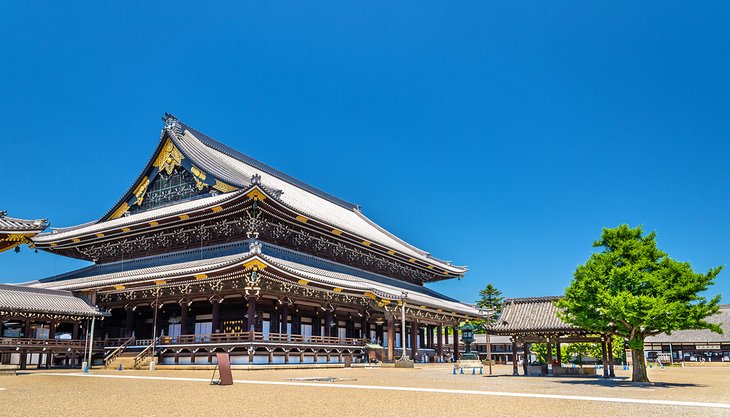
The chief temple of the original Jodo-shinshu sect, Nishi Honganji Temple is an outstanding example of Buddhist architecture. Highlights include the Hondo, or Main Hall. Rebuilt in 1760, notable features of this fine structure include a number of rooms decorated with paintings on gold backgrounds, and numerous important statues, some dating from the 6th century.
Also of interest is the Founder's Hall (Daishi-do). Here, you'll find the much-revered statue of Shinran, carved in 1244 and later covered with a coat of lacquer mingled with his ashes.
Another notable building is the Daishoin , or Treasury, with various rooms named after the exquisite wall and ceiling paintings with which they're decorated. These include the Sparrow Room (Suzume-no-ma), the Room of the Wild Geese (Gan-no-ma), and the Chrysanthemum Room (Kiku-no-ma) with its fine 17th-century paintings of flowers in gold and white by Kaiho Yusetsu.
Also of interest is the Higashi-Honganji Temple of the Jodo-shinshu sect. Founded in 1602, it's home to a number of examples of fine artwork.
Only a few parts of these temples are open to the public, so be sure to make arrangements through the temple's website in advance of your visit to include other areas not normally accessible.
Address: Shimogyo Ward, Kyoto, Kyoto Prefecture 600-8501
Official site: www.hongwanji.kyoto/en/
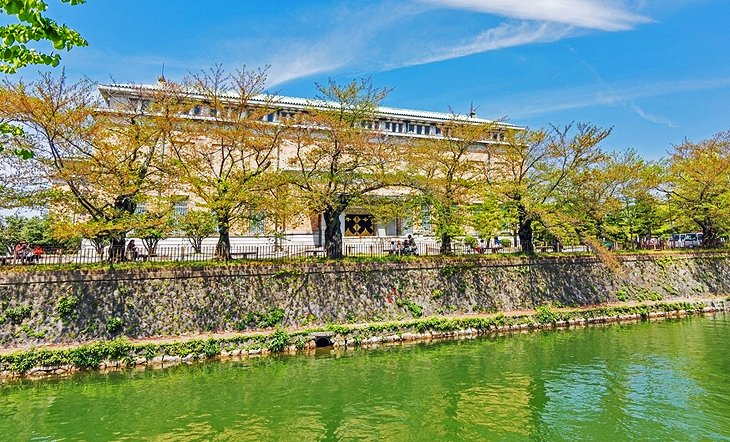
In addition to its many fine old temples with their important artworks, Kyoto also boasts a number of impressive collections in its world-class museums and galleries. Perhaps the best known is the National Museum, an art gallery established in 1897 that is widely considered the most important such museum in Japan.
Focusing predominantly on pre-modern Asian art, particularly examples from Japan, the museum has been completely renovated and includes a new wing designed by architect Yoshio Taniguchi . Highlights of a visit include seeing numerous examples of historic art and applied arts, along with regular exhibitions (be prepared for plenty of walking).
Also worth seeing is Kyoto Municipal Museum of Art. Opened in 1928, this fine gallery features important works by Takeuchi Seihō, one of Japan's leading artists of the 20th century.
Address: 527 Chayacho, Kyoto, Kyoto Prefecture 605-0931
Official site: www.kyohaku.go.jp/eng/index.html
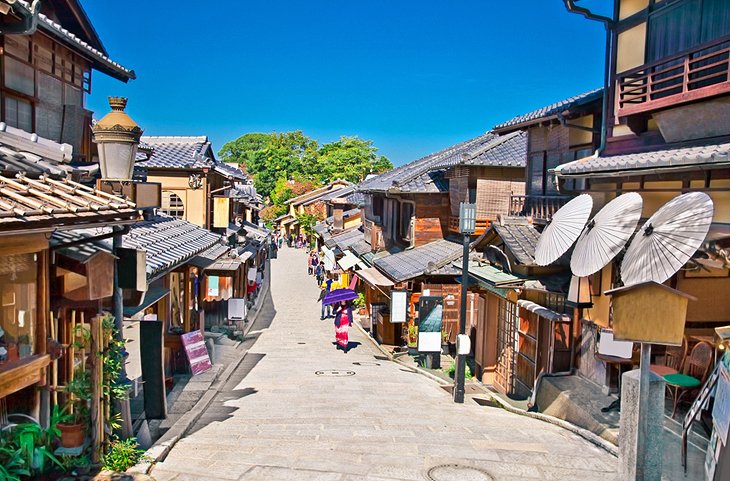
Famous as an entertainment and geisha district, Gion is an area of Kyoto that is well suited to explore on foot. Located on the eastern bank of the Kamogawa River, Gion is an eclectic mix of modern architecture and historical beauty that provides a unique taste of numerous Japanese traditions, from the elaborately dressed geishas to well-preserved 17th-century restaurants and teahouses offering a glimpse of old Japan.
Centered on an area encompassing Hanami-Koji Street, Shijo-dori Street, and the waterside promenades of Shirakawa Minami-dori Street, Gion is also famous for its many fine temples. The best-known of these are the 15th-century Silver Pavilion (Ginkakuji) and the Chion-in Temple .
Chion-in is one of Japan's most famous temples, notable for its 24-meter-high, two-story tower (Sammon-san), which houses the country's largest bell. Weighing 71 tons, it was cast in 1633, and is rung only during festivals in mid-April. Gion is a wonderful (and safe) place to enjoy a walking tour at night, too.
Address: Nishi Ten-o-cho, Okazaki, Sakyo-ku, Kyoto, Kansai 606-8341
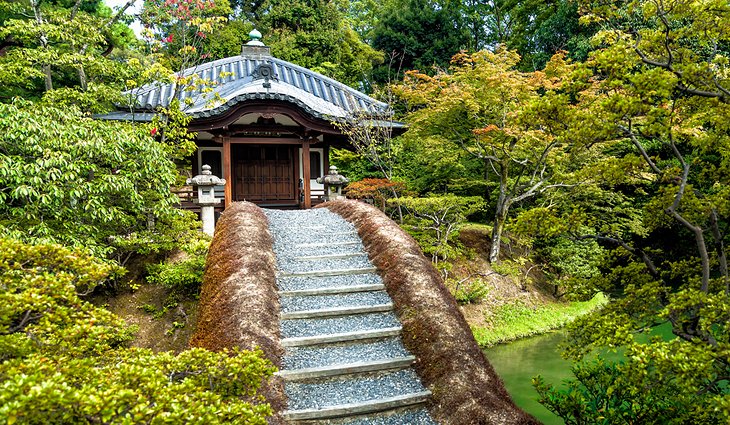
Originally constructed in 1624 for Prince Hachijo Toshihito, brother of Emperor Goyozei, Katsura Imperial Villa is home to splendid historic architecture and one of Japan's most famous historic gardens.
Designed by Kobori Enshu with assistance by the prince, this beautiful garden is laid out in such a way that the visitor always sees things from the front - smaller gardens are grouped around a large pool with the summits of Mounts Arashiyama and Kameyama in the background.
Highlights include the Miyuki-mon Gates and the many garden paths, some made from river pebbles and others of rectangular cobbles, edged by mosses and bushes. These lead through more gates into the inner garden with a group of buildings known as the Goten at its center.
A particular highlight here is the veranda of Furu-shoin, specially designed to permit observation of the moon, and the three rooms of the Naka-shoin with its many fine paintings by Japan's leading artists. If time allows, be sure to stop and enjoy a meal or light refreshments in one of the many on-site teahouses.
Address: Katsuramisono, Kyoto, Kyoto Prefecture 615-8014
Official site: https://sankan.kunaicho.go.jp/english/guide/katsura.html
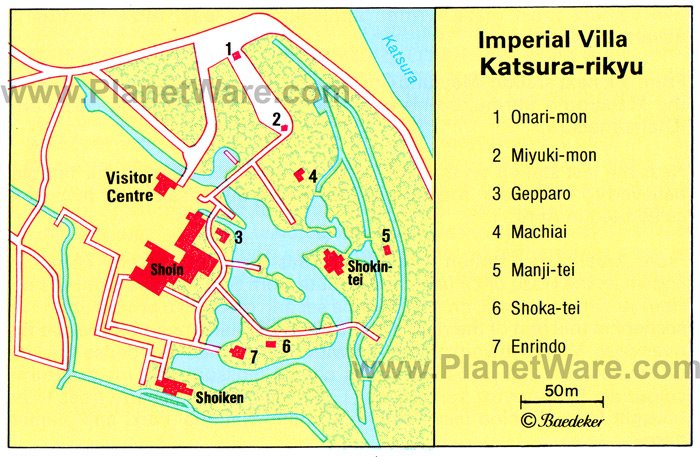
The Daitoku-ji Temple - the Zen Temple of Great Virtue - is one of the principal temples of the Rinzai sect and was founded in 1324. The present structures date from the 16th and 17th centuries.
Of the 22 buildings on-site, seven are open to the public. These include the Kara-mon, a Chinese-style gate with magnificent carvings, and the two-story main gate, Sammon, built in 1589 and notable for its many fine ceiling paintings and statues. The Main Hall, the Butsuden (or Daiyu-den), was built in 1664 and contains a statue of Shakyamuni with his disciples Anna and Kayo and a figure of Daito-kokushi, first Abbot of the temple.
Beyond the Main Hall is the Lecture Hall, or Hatto, based on Chinese models, and the Hojo, or Abbot's Lodging, with its paintings, wooden tablet, and adjoining garden.
Other highlights include the old Abbot's Lodging (Shinju-an) with its statues and tombs dating from the 14th century, and a lovely Zen garden.
Address: 3 Murasakino Daitokujicho, Kyoto, Kyoto Prefecture 603-8231
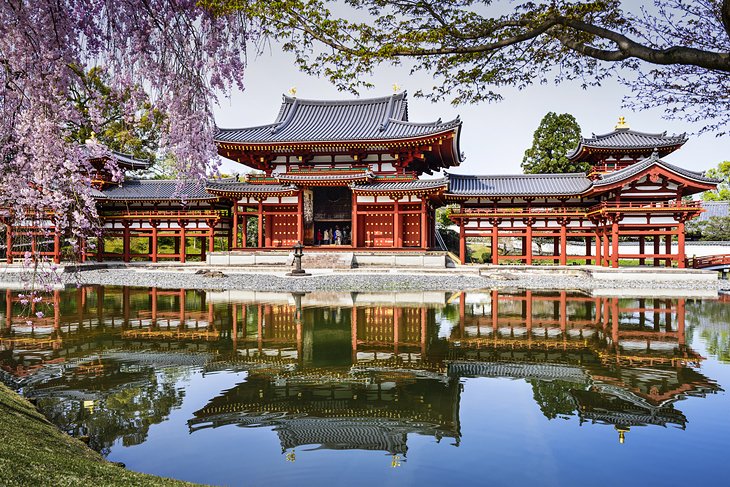
The Byōdō-in Temple, established in AD 988, boasts many unique buildings, shrines, and artworks and is worthy of a visit. Highlights include the Phoenix Hall (Hoo-do), with its bronze phoenixes on its two gables and rich interior décor. This attractive hall also features 11th-century paintings, including an imposing gilded figure of Amida, and an altar and ceiling inlaid with bronze and mother-of-pearl.
Adjoining is the Kannon-do, a hall directly above the river and known as the Tsuridono, or Fishing Hall. Be sure to spend time visiting the temple gardens with their many fine ponds, as well as the Byōdō-in Museum with its treasures relating to the temple site, including its 52 wooden Buddha statues, carved phoenixes, and the original temple bell.
Also worth a visit is the Zen Tenryu-ji Temple .
Address: Renge-116 Uji, Kyoto Prefecture 611-0021
Official site: www.byodoin.or.jp/en/
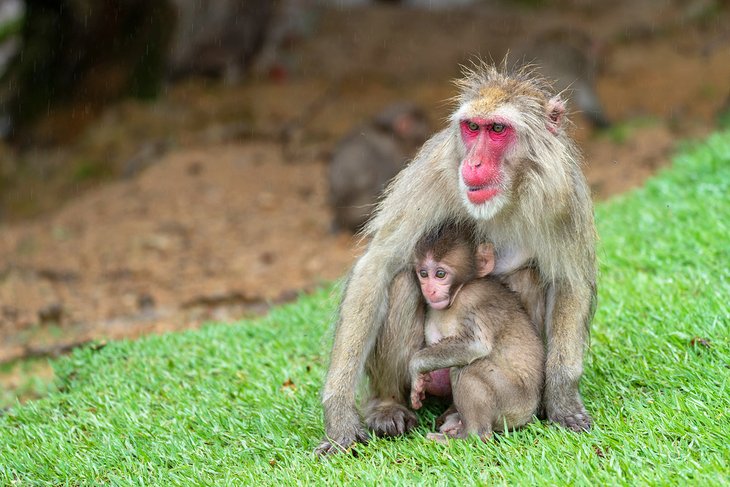
Perched atop a mountain in the tourist-heavy Arashiyama is one of the most interesting things to do in Kyoto – the Arashiyama Monkey Park. More than 100 snow monkeys call this park home, roaming freely amid the tourists who come to take a peek.
Getting so close to these wild creatures is a fascinating experience, but can also be a little unnerving, as the monkeys have no fear when approaching humans – especially if you've got a bit of food for them. The park features an enclosed area where you can buy bananas to feed to the monkeys. Don't worry – they stay behind the fence. But they do grab, so proceed with caution.
Even if you aren't interested in the monkeys, the top of the mountain has one of the best views of the city below. The walk up the hill takes about 30 minutes and is manageable for most levels.
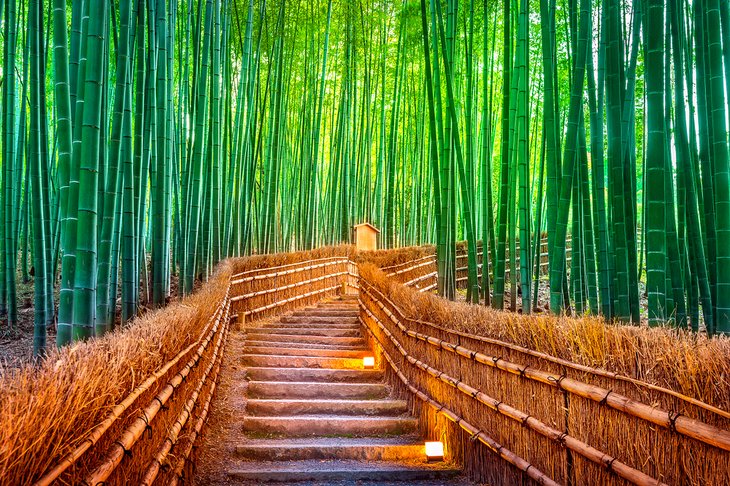
While in Arashiyama, no trip is complete without a walk through the magnificent Bamboo Grove. No experience is quite like this anywhere else in the world. Get lost among towering stalks of glowing green as you walk the paved path that winds its way through the sun-drenched bamboo forests. In some places, the bamboo is so thick that it's impossible to see through to the other side.
Walking through the Arashiyama Bamboo Grove is like being transported into another world. But because the legend of its beauty has traveled far and wide, it's a good idea to get here early, so you have the forest to yourself as much as possible.
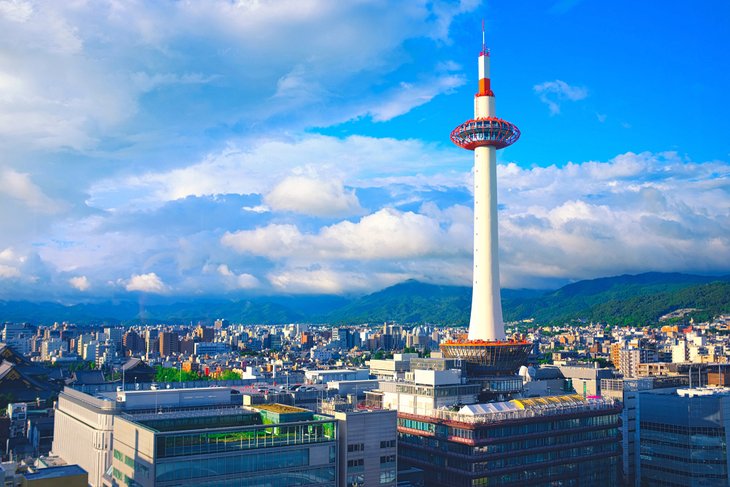
So much of Kyoto is steeped in ancient history. But that does not mean that Kyoto is not a modern city. One look at the soaring Kyoto Tower will snap you back into the 21st century.
Standing at 131 meters tall, Kyoto Tower is the tallest structure in the city. It features a viewing platform at 100 meters, which has one of the very best views of the entirety of Kyoto. On clear days, you can even see as far as Osaka.
The rest of the building includes offices, restaurants, shops, and a hotel. You can find Kyoto Tower across the street from Kyoto Station.
Address: 721-1 Higashishiokojicho, Shimogyo Ward, Kyoto, 600-8216, Japan
Official site: https://www.kyoto-tower.jp/
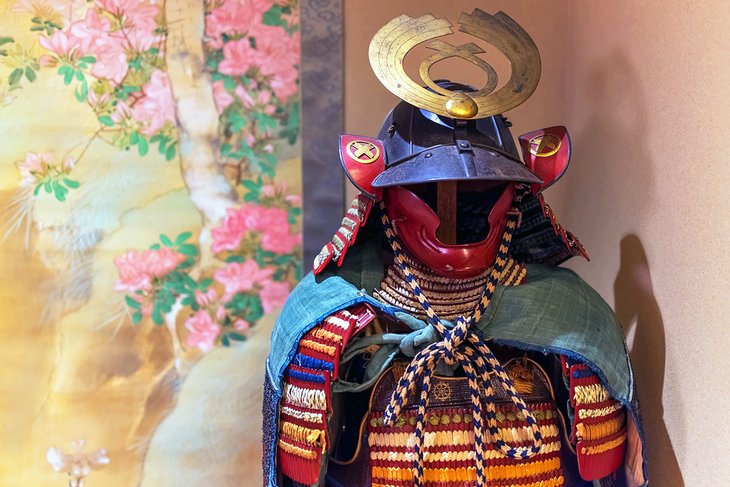
Japanese history spans centuries and touches on everything from architecture and religion to food and culture. Part of that culture includes the samurai and ninja. In Kyoto, it is possible to delve deeper into this world at the Kyoto Samurai and Ninja museum.
Home to many different exhibits, the museum covers everything from armor and weapons to medieval Japanese history. Many of the armor comes from the Edo period of Japan, which was more than three centuries ago.
For a bonus, the museum also offers a Samurai Experience, where visitors can learn the traditional sword movements that the Samurai used, trained by an actual Samurai master.
Address: Teramachi Utanokoji building 2F, 292, Higashidaimonjicho, Nakagyo-ku, Kyoto
Official site: https://mai-ko.com/samurai/
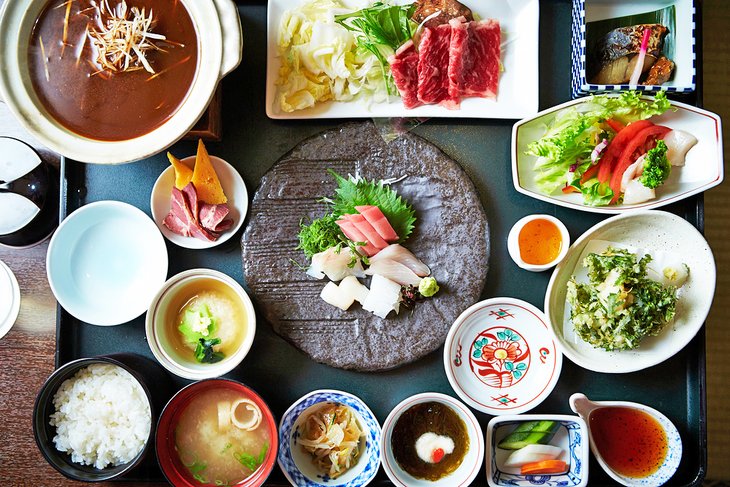
One thing you will be doing extremely well in Kyoto is eating. Why not learn a bit about Japanese dining culture with a traditional kaiseki meal? The kaiseki meal is a multi-course, meticulously prepared meal that is as equally delicious as it is a work of art. The purpose of kaiseki is to show the utmost hospitality, making guests feel that they are extremely special. Kyoto has many restaurants dedicated to the art of kaiseki.
The meals are always different, but the pillars are usually the same: an appetizer, a simmered dish, a sashimi, something seasonal, a grilled course, and a dish with rice. Most kaiseki meals are served on the ground, with guests sitting on tatami mats.
Kyoto's Gion district has many places to try a kaiseki meal. Meals tend to run on the expensive side. It is a good idea to make reservations ahead of time, as these experience rarely allow walk-ins. One of the best in the city can be found at Gion Owatari, which is a two-star kaiseki restaurant that is extremely popular among Japanese foodies.
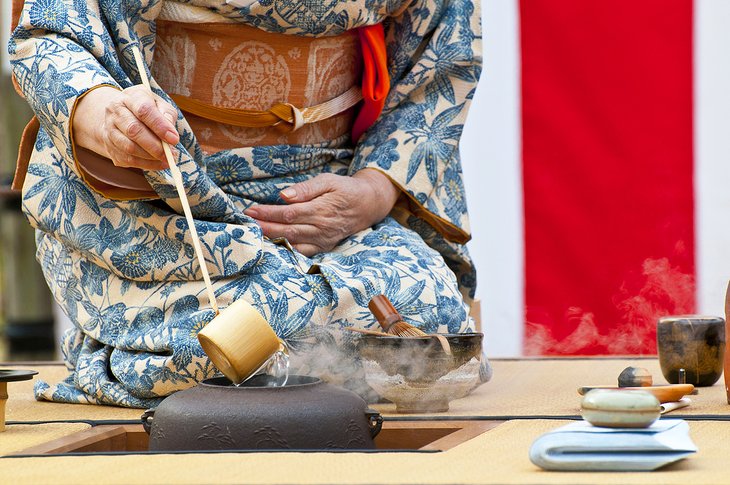
While in the Gion district , it may be interesting to try a traditional tea ceremony. The Japanese tea ceremony is a centuries-old tradition. It involves preparing and drinking green tea in a special, celebrated way. Like the kaiseki meal, tea ceremonies are meant to make guests feel special and welcome. Tea ceremonies are often performed while sitting on the floor.
Tea came over to Japan from China in the 8th century. Around the 14th century, tea-drinking parties became a form of socializing and a way to show off knowledge about tea. The most formal tea ceremony lasts multiple hours, and usually starts with a kaiseki meal. However, modern day tea ceremonies are much shorter.
A host will prepare the tea in front of the guests. Before the tea is sipped, guests are supposed to eat a sweet treat. Then the tea is poured and sipped from a special tea bowl, all the while adhering to the proper placement of the bowl. It is a beautiful, historic experience, and Kyoto is one of the best places in Japan to learn about this important part of Japanese culture.
The best place to stay in Kyoto is downtown, preferably in or near the Gion or Kawaramachi-Dori districts. These areas are central to many of the main attractions, as well as restaurants, shops, and entertainment venues. Below are some highly-rated hotels near these areas:
Luxury Hotels:
- The Ritz Carlton is on the banks of the Kamogawa River and offers unsurpassed luxury and service, four restaurants, and a well-regarded spa.
- The Hotel Kanra Kyoto is a short walk from the main train station and has large, modern rooms with beautiful cedar wood bathtubs.
- In the heart of the Gion area, the Maifukan offers well-appointed rooms with mini fridges. This hotel also has a rooftop garden terrace.
Mid-Range Hotels:
- Close to the main train station is the Ohanabo . This is a small, cozy hotel in a quiet area, with comfortable rooms and a popular restaurant.
- The contemporary Hotel Anteroom is perfect for those looking for something different. This hotel features an art gallery and unique rooms that are tastefully compact but highly functional, including some with terraces.
- The Citadines Karasuma-Gojo is a good option for longer stays, with large rooms that include kitchens and sitting areas.
Budget Hotels:
- The ibis Styles Kyoto Station hotel is in an excellent central location and offers efficient rooms and a complimentary breakfast.
- In the heart of the Kawaramachi-Dori shopping district and also serving a free breakfast is the Super Hotel , with modern and cozy rooms.
- For a more traditional Japanese experience, the Ryokan Shimizu features rooms that come with futons and tatami mats, and an onsen (hot spring) is on the premises.
- See the Best of Kyoto: If you want to cover all the highlights of Kyoto in a day, the Kyoto Full-Day Sightseeing Tour including Nijo Castle and Kiyomizu Temple is an excellent option. An experienced guide provides a fascinating historical context to the attractions on this full-day tour, which includes a visit to Kinkaku-ji Temple, Nijo Castle, and the Kyoto Imperial Palace. Cap off your tour with breathtaking views of Kyoto from the terrace of Kiyomizu Temple. Note that this tour involves plenty of walking around the attractions. Pickup from select hotels, lunch, and entrance fees are all included.
- Kyoto and Nara Day Trip: The Kyoto and Nara Day Trip from Kyoto including Nijo Castle is a great option for those wanting to see the best of this beautiful historic city and its surrounds. This popular 10-hour tour takes in Kyoto attractions including the Imperial Palace, Kinkaku-ji, and Nijo Castle before whisking you away to Nara to explore Todai-ji Temple and the Kasuga Shrine. Along the way, you'll enjoy a Japanese-style lunch (Western options also available), a professional guide, transportation (including hotel pickup), and admissions.
- Pedal Power: A great way to explore this historic city is by joining a Kyoto Small-Group Bike Tour . Lasting from three to four hours, you'll see the city's historic old architecture, explore its top shrines and temples, and even traverse the famous cherry tree-lined Path of Philosophy. Limited to just nine participants, the tour includes bike rental and a group guide.
- A Rural Walkabout: For those with the stamina, the Arashiyama and Sagano Morning Walking Tour is an excellent way to explore the best areas surrounding Kyoto. Highlights of this four-hour adventure include a walk through beautiful bamboo groves as you make your way to a number of iconic hilltop temples, including Tenryu-Ji and Jojakko-Ji Temple. All admissions are included, as is pickup and transportation.
More Related Articles on PlanetWare.com
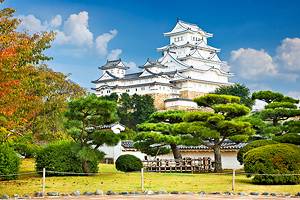
Places to Visit near Kyoto : Osaka is an easy day trip from Kyoto, and the city is less than 90 minutes away by high-speed train. Once there, you'll enjoy historic points of interest such as Osaka Castle and Shitennō-ji Temple, and more modern attractions including the Osaka Aquarium Kaiyukan and the huge Tempozan Ferris Wheel. For those wanting to see a few off-the-beaten-trail destinations, consider taking a day trip . Popular options include the historic temples of Nara and the busy port of Nagoya , each an easy rail journey away.
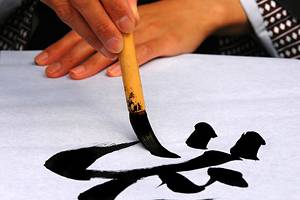
Explore Japan's Rich History : Chances are if you like Kyoto, you're also going to like the city of Fukuoka . This fascinating city is famous for its huge 17th-century castle, the splendid Sumiyoshi-jinja Shrine, as well as modern attractions like the beautifully designed Kyūshū National Museum. Nagoya is also worth visiting for its history. An easy train ride away, the city boasts numerous lovely shrines and temples, and its own well-preserved historic castle.

Japan Vacation Ideas : Japan, of course, offers no end of great vacation choices. A few favorites include exploring the sites of Tokyo , with its endless shopping, dining, and entertainment options; magnificent Mount Fuji , perhaps the country's most recognizable natural feature; and the beautiful island of Hokkaido, where you'll have the chance to explore the country's most northerly major city, Sapporo .

More on Japan

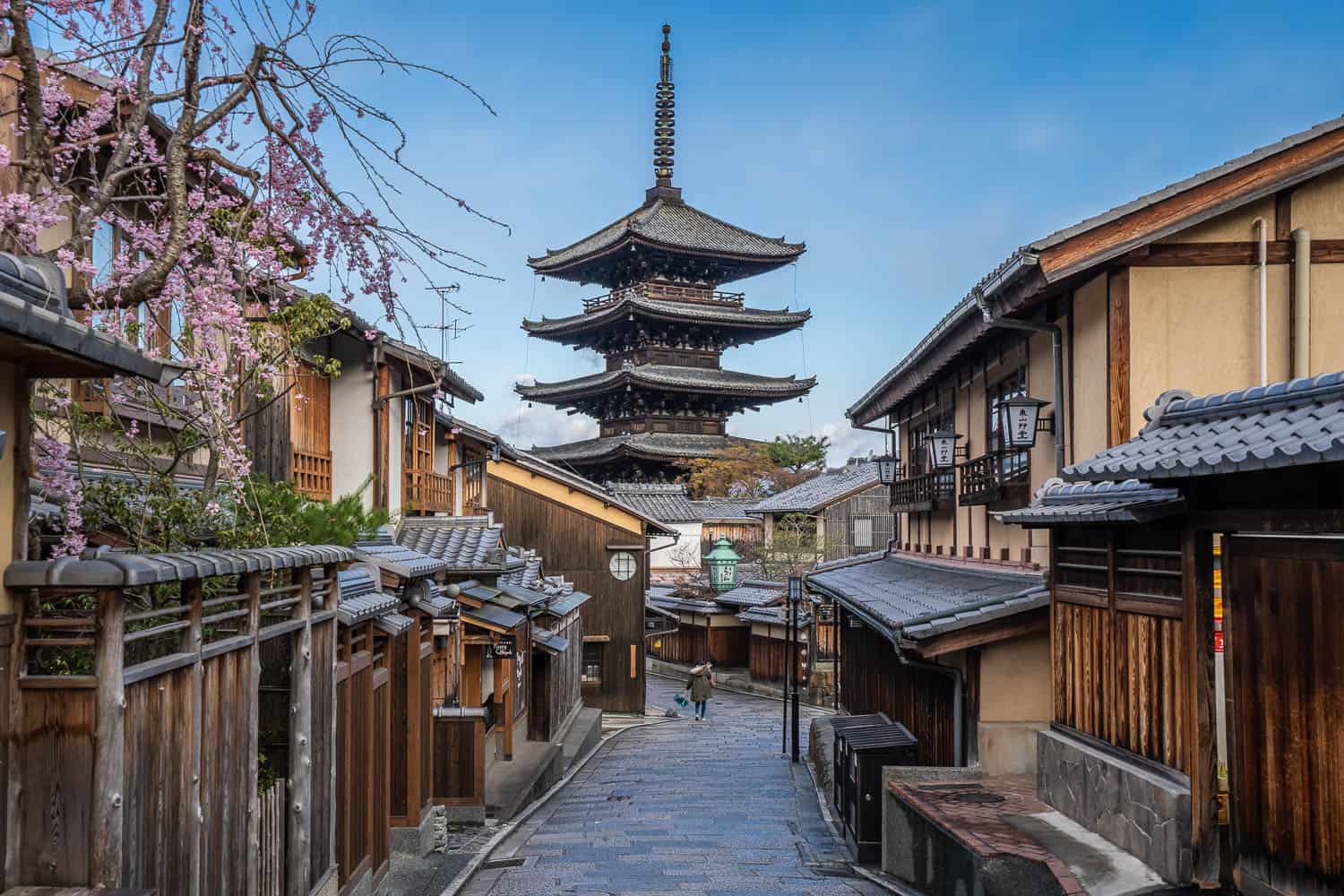
26 Unforgettable Things to Do in Kyoto, Japan
This page contains affiliate links. Please read our disclosure for more info.
Kyoto is a magical city like nowhere else. As the imperial capital of Japan for over 1000 years (until 1868), it’s the heart of traditional Japanese culture.
There are so many incredible things to do in Kyoto—you can visit golden temples and vermillion shrines, stroll through Zen rock gardens and swaying bamboo forests, slurp down bowls of ramen and participate in graceful tea ceremonies.
It’s one of the only places you can still glimpse geisha in extravagant kimono and white makeup rushing to appointments in wooden teahouses.
Monks still live and work in the city’s 2000 temples and shrines—you’ll see them in flowing robes performing ceremonies and hear the chanting.
You’ll visit a lot of temples in Kyoto, but even after spending two months in the city, we never tire of them. They all offer something unique—a shimmering pavilion, peaceful garden, forest hike, or a delicious vegetarian meal.
Although Kyoto is the centre of traditional Japan, it’s also a modern city with concrete high-rises, numerous vending machines, and a vibrant food scene.
But it’s on a smaller, more manageable scale than Tokyo or Osaka with plenty of green spaces, views of the surrounding hills, and neighbourhoods that feel like villages.
Despite the numerous attractions (including 17 UNESCO World Heritage Sites), Kyoto is best explored at a slower pace with time for aimless wandering down narrow stone streets.
In this Kyoto travel guide, I share all the best things to do in Kyoto as well as tips on avoiding the crowds and how to get around. You’ll also find a map with all the top Kyoto attractions.
Video: What to Do in Kyoto
How to avoid the crowds in kyoto, kyoto attractions map, top things to do in kyoto, quieter temples to visit in kyoto, foodie things to do in kyoto, kyoto activities in nature, cultural things to do in kyoto, how to get to kyoto, is kyoto worth visiting, more japan posts.
Watch our video for an overview of what to see in Kyoto, Japan.
Back to Contents
In 2011, when we first visited Kyoto, Japan received 6.2 million overseas visitors. In 2019, 32 million tourists visited the country.
That’s a huge increase, and as Kyoto is one of the most popular tourist destinations in Japan , we did notice a startling rise in crowd sizes on our last month-long stay in the city.
Even with the greater number of tourists, we loved Kyoto just as much on our second visit—it’s still a unique place with an incredible number of stunning sights.
Here are some tips to enjoy Kyoto despite the crowds:
1) Visit for as long as possible
Kyoto deserves more than the two days many people allocate it.
I recommend spending at least four full days here, but a week is ideal and allows time for some of these Kyoto day trips (Nara is the most popular).
We’ve spent two months in the city and still haven’t seen it all.
A longer stay will give you more time to explore less well-known Kyoto attractions and visit popular places at off-peak times.
2) Stay close to major sights
In order to do the next tip, it will help if you are staying close to the popular Kyoto tourist attractions.
You’ll be able to set out early in the morning, take a break in the busy afternoons, and head out again in the evenings without having to travel too far.
I think the best area to stay is Southern Higashiyama (including Gion) at the foot of Kyoto’s eastern hills.
There are a multitude of temples to explore as well as the most beautiful preserved streets and the chance to spot geisha.
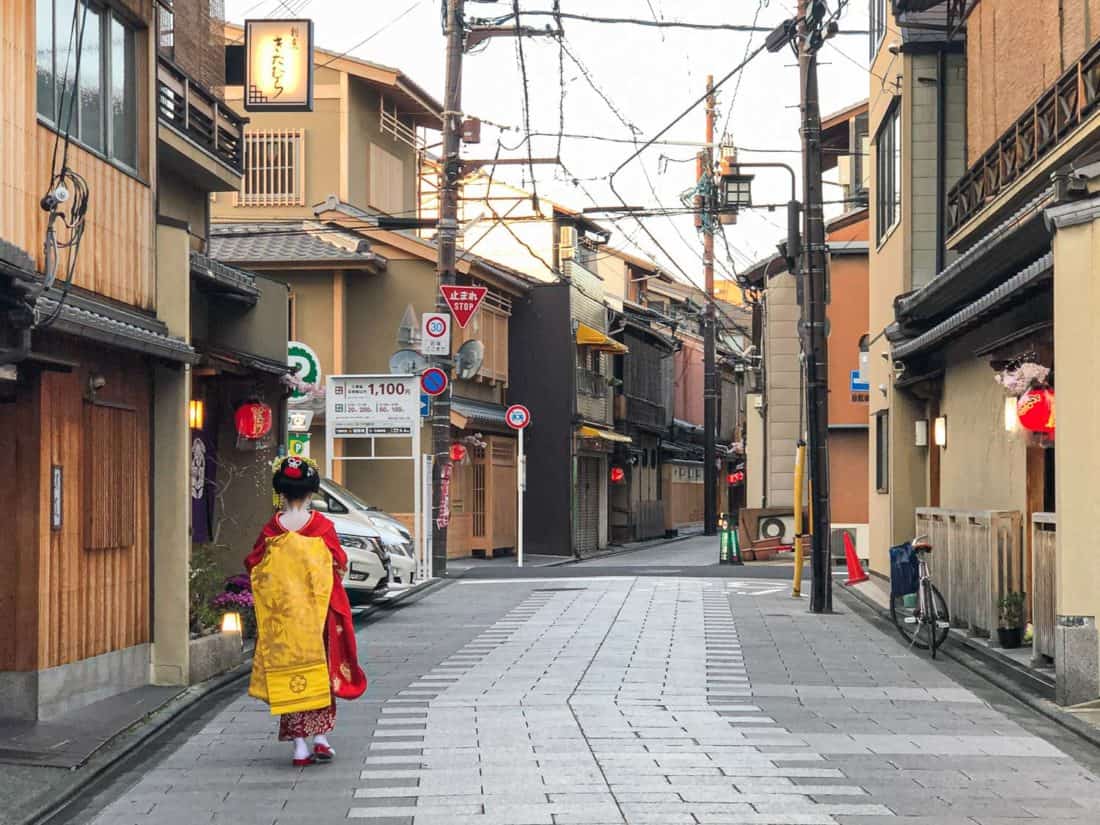
On our last visit we stayed in Miyagawacho, a geisha district along the Kamo River just south of the more well-known geisha area Gion.
It was the perfect location—traditional, quiet, but in walking distance to many attractions. We regularly saw geisha (or geiko as they are known in Kyoto) walking down our street on the way to appointments.
Our Vrbo apartment is no longer available but you can search for apartments in Gion here .
Hotel The Celestine Kyoto Gion is one of the few hotels in this quiet area. It has modern rooms, an onsite onsen and tempura restaurant, and gets excellent reviews.
Kyoto Inn Gion The Second is a more affordable hotel in an ideal location in Gion. Rooms are small but comfortable.
If you’d like to stay in a ryokan (traditional inn), Ryokan Yachiyo looks beautiful with Japanese-style rooms and garden views.
I am very tempted to book a room with a private open-air bath on our next Kyoto trip. It’s a little further from Gion but close to Nanzen-ji temple and the famous Philosopher’s Path. (Update: I’ve booked a garden view room with bath for this autumn so I’ll keep you posted!).
We also loved our stay at Sora Niwa Terrace , which is one of Kyoto’s newest hotels and has the most incredible views from its roof terrace and onsen. It’s just over the river from Gion.
Search for more hotels in Kyoto here .
3) Get up early
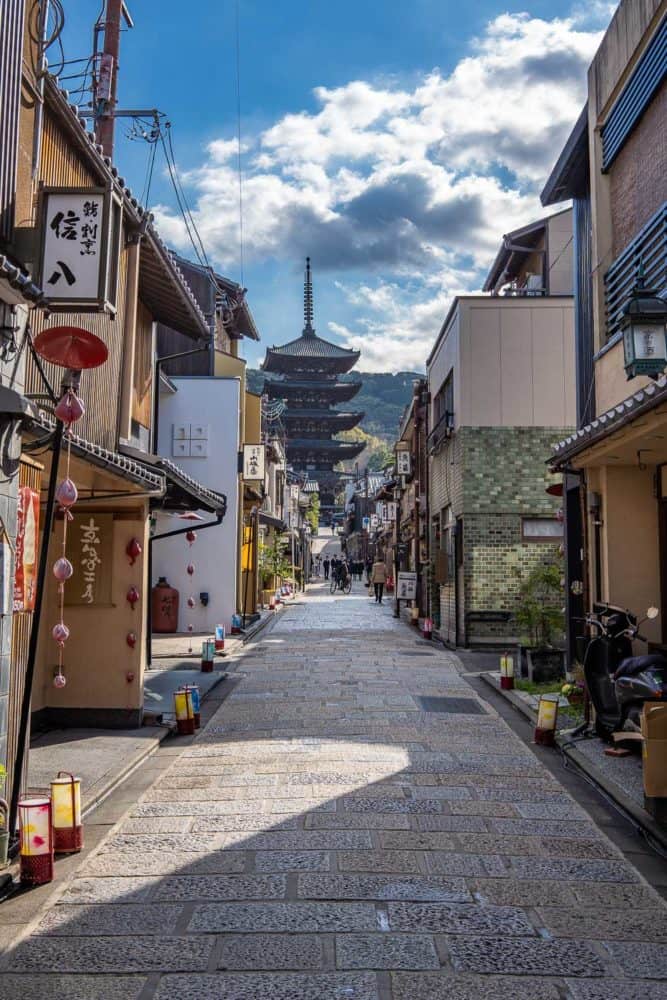
Visiting the most popular sights early in the morning is essential to truly enjoy them. It’s so much harder to appreciate the magic when you’re battling through tour groups.
These are the places that are most important to visit early (on weekdays if possible). If you can’t manage to make it early, then try an hour before closing.
- Fushimi Inari shrine – It’s open 24 hours so go around sunrise (6 am is best) or as late at night as possible (after 8 pm). It’s our favourite place in the city (and one of the most unique things to do in Kyoto), but we gave up after 10 minutes when we visited one afternoon as the crowds were intense.
- Kiyomizu-dera Temple – It opens at 6 am and this is the best time to visit (or definitely before 8 am). The picturesque streets leading up to it are also best enjoyed early (or late).
- Kinkaku-ji Temple (Golden Pavilion) – It’s open from 9 am – 5 pm so either arrive in time for opening or at 4 pm, but it’s hard to escape the crowds.
- Ginkaku-ji Temple (Silver Pavilion) – Arrive at opening at 8.30 am or at 4 pm (before it closes at 5 pm).
- Nishiki Market – It’s not as essential to arrive early, but lunchtime here is packed. 10 am is better or just before closing around 5 pm.
I could also add the Arashiyama bamboo grove to this list as it’s one of the most popular Kyoto tourist spots and gets horribly crowded (even before 9 am).
Honestly, I think it’s overrated and haven’t included it in my things to do in Kyoto list. I suggest some quieter, more enjoyable bamboo groves below.
If you have limited time in Kyoto and prefer exploring with a guide, this popular Kyoto early bird tour avoids the crowds at Fushimi Inari, Kinkaku-ji (Golden Pavilion), and the bamboo grove by starting before 7am.
More Kyoto, Direct to your Inbox!
Thank you for subscribing! You should receive an email from us very soon. Click on the link in the email to confirm your subscription.
4) Discover quieter temples and shrines
It’s easy to find quiet temples and shrines in Kyoto —they are often just around the corner from the crowded spots that everyone feels they have to see.
I highly recommend including some hidden gems along with popular attractions. Perhaps start your day early at one of the temples above and then head to some quieter alternatives.
5) Take a break from temples
Although the temples are incredible, save your energy by mixing them up with some fun and unusual activities.
Take a cooking class , stroll along a quiet canal, sip matcha in a tearoom, learn samurai skills , or hike through a forest—you’ll find plenty of ideas of what to do in Kyoto below.
This Kyoto sightseeing map shows the best things to do in Kyoto listed below. Temples and shrines are marked in red, interesting streets and walking paths in blue, and other points of interest in purple.
At the end of this post you’ll find transport tips for getting to and around Kyoto.
These are the most popular things to do in Kyoto and they do get crowded.
1) Hike Through Torii Gates at Fushimi Inari Shrine
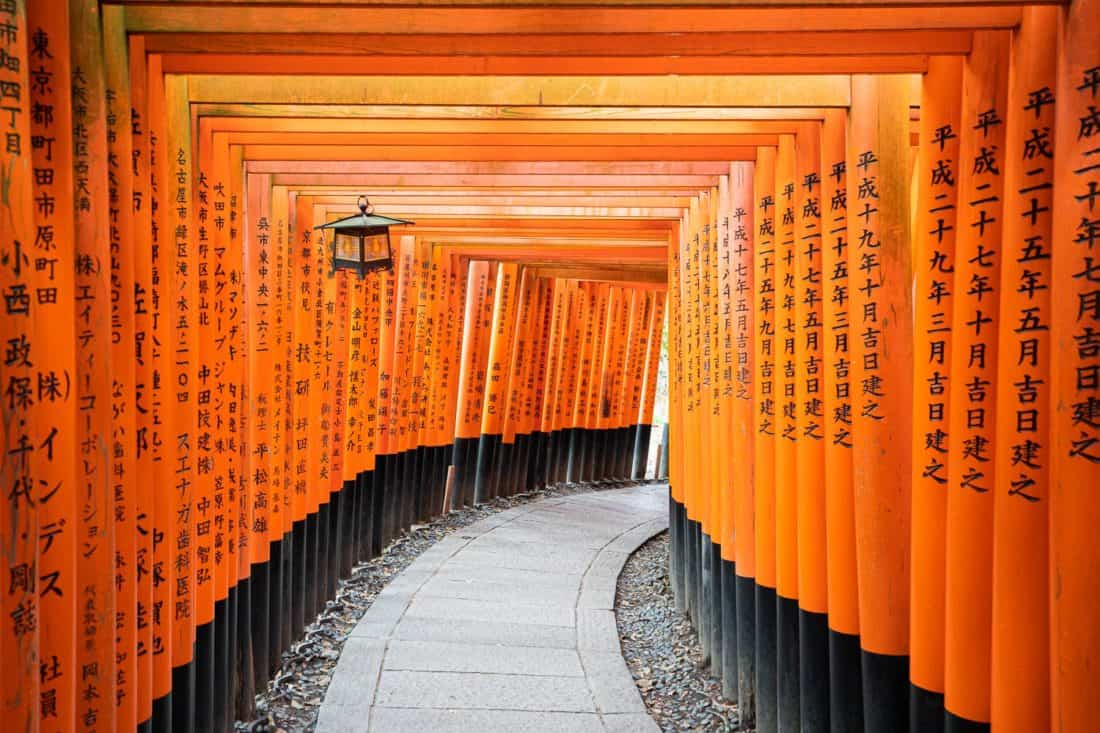
Fushimi Inari is a Kyoto must see. We’ve never visited anywhere else like it—thousands of bright orange torii gates snake up through the forest into the mountains.
It’s as much of a hike as a temple visit (and quite steep in parts), although you do pass many small shrines with stone fox statues and miniature toriis.
The fox is considered the messenger of Inari, the Shinto god of rice.
It takes us about an hour and a half to complete the whole walk (a 5 km/ 3.1 mile loop from the station), but you could easily spend two or three hours here.
You could also choose just to do the lower loop to a viewpoint over the city. I recommend continuing up the mountain as it gets much quieter and feels very peaceful as you walk through the deep forest.
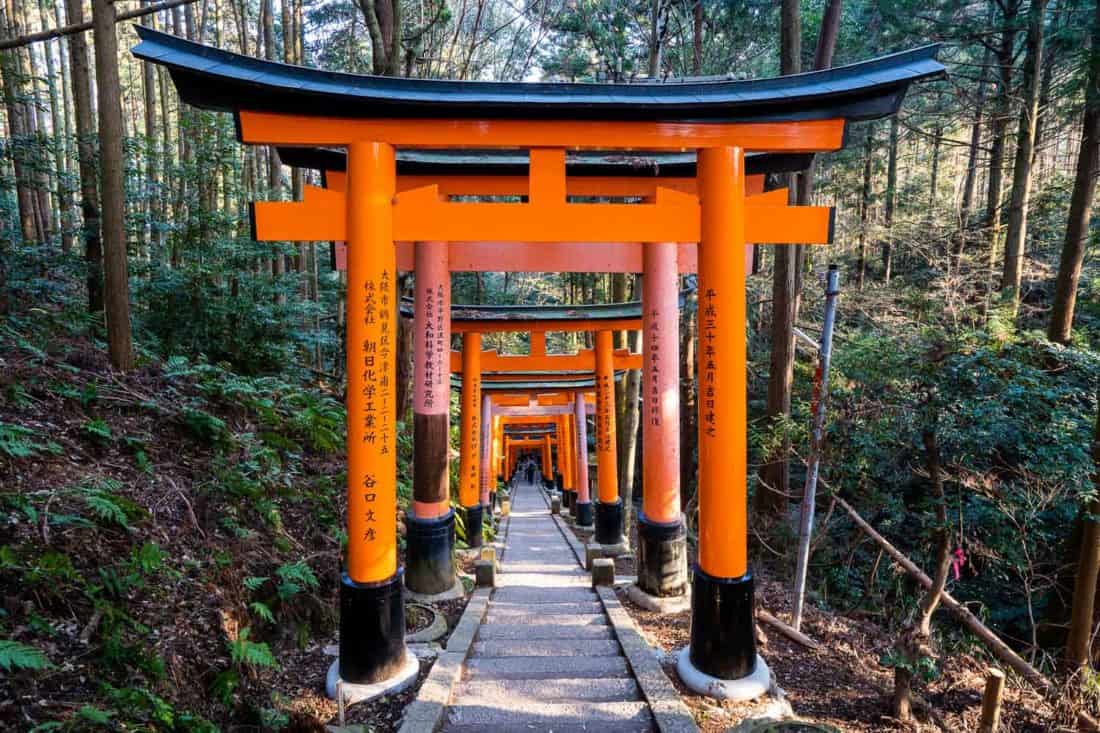
Fushimi Inari gets insanely busy and it’s no fun when you are walking with a crowd, so try to visit around 6 am (7 am at the latest) or after 8 pm.
It’s a very different experience at night with atmospheric lighting and a slightly spooky feel (we even heard a wild boar!).
Details: Free entry and open 24 hours. Take the train to Fushimi Inari Station on the Keihan Main Line (if coming from Higashiyama, 10 minutes from Gion-Shijo) or JR Inari Station on the JR Nara Line (if coming from Kyoto Station, 5 minutes).
2) Wander Around Gion and Southern Higashiyama
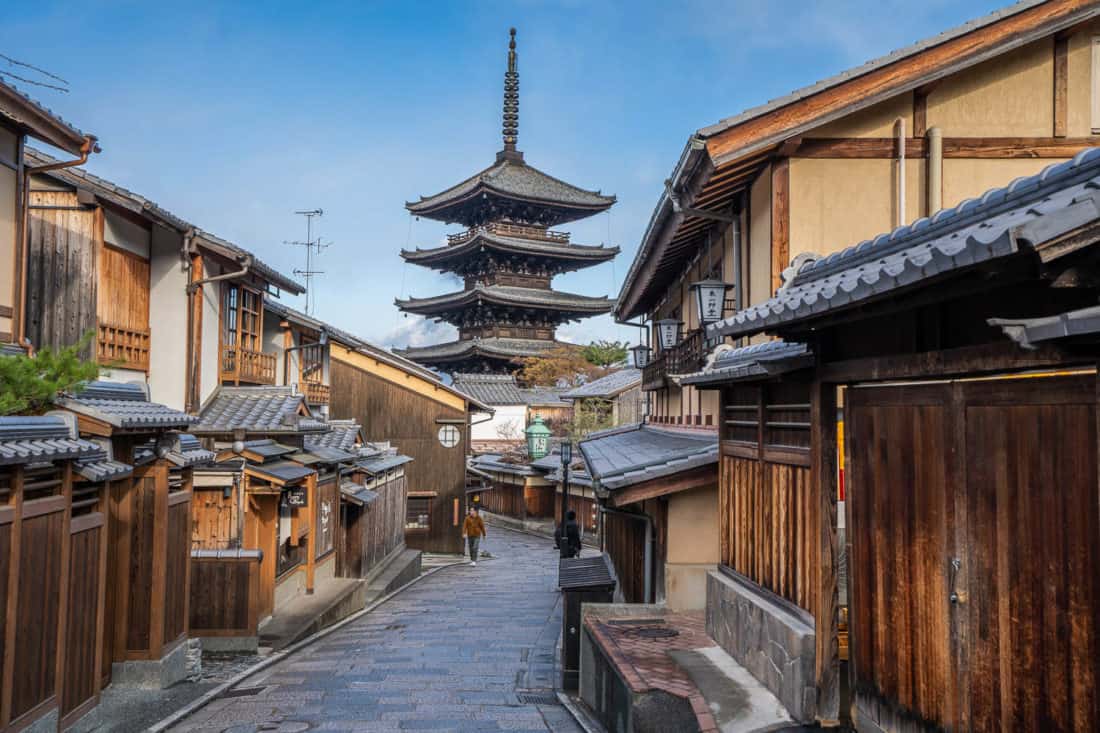
Southern Higashiyama, which includes Gion, is one of the top places to visit in Kyoto with some of the most picturesque and best-preserved streets in the city.
In this historic district you’ll find wooden houses on narrow lanes with paved stone pathways and paper lanterns lighting the way.
There are many temples to visit, but this area is perfect for aimless wandering (ideally early morning or late at night) and soaking up the charm.
Many visitors rent kimono for a day and explore in traditional Japanese attire.
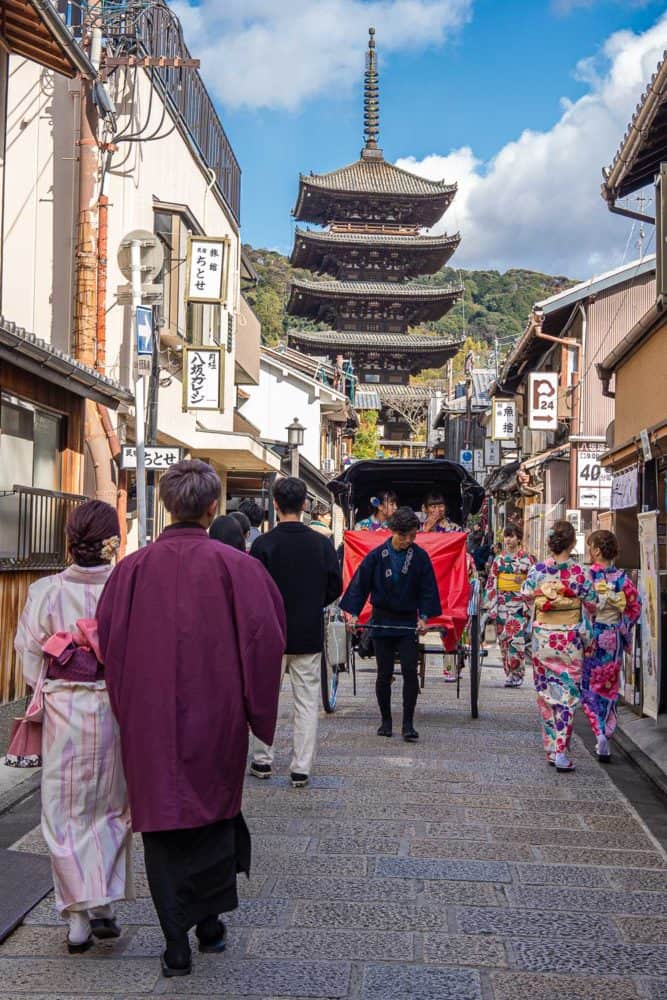
Streets not to miss include Yasaka-dori which leads to Yasaka Pagoda (Hōkanji Temple), Ninenzaka and Sannenzaka, Nene-no-michi, and Ishibei-koji lane (no photos allowed).
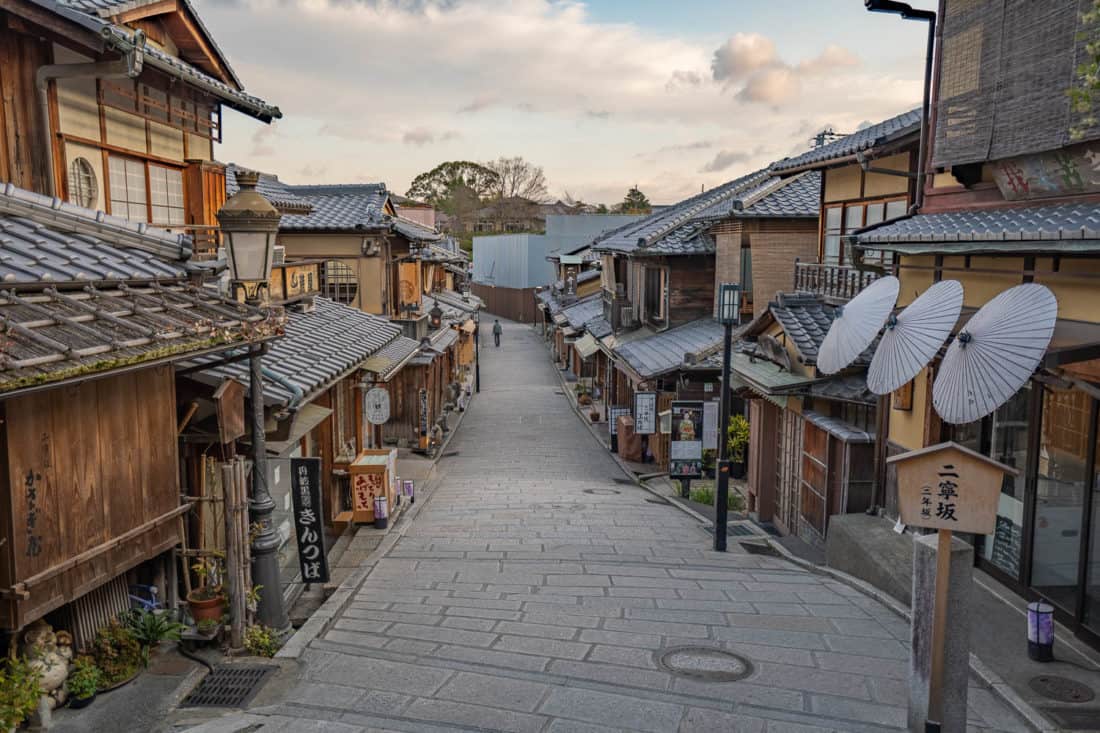
This area is especially wonderful at night in March during the Higashiyama Hanatouro Festival when the streets are lined with thousands of lanterns and there are special events and illuminations at the temples.
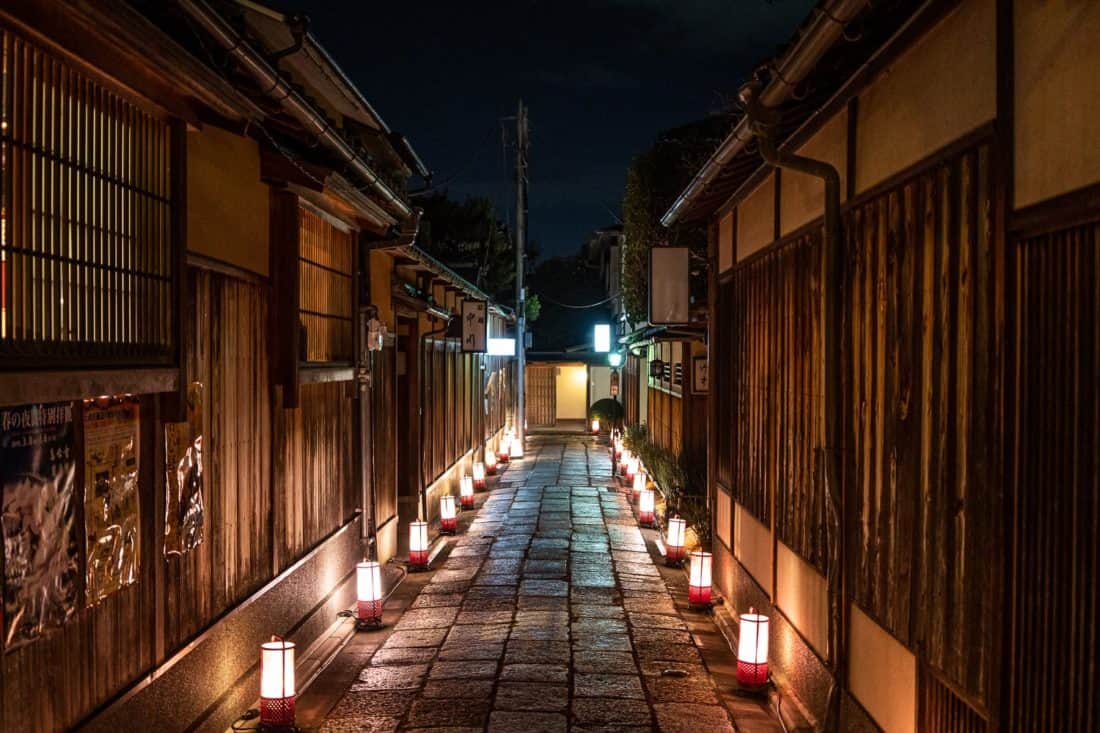
Gion, Kyoto’s main geisha district, is also lovely for strolling day and night. Don’t miss Hanami-koji, the Shirakawa Canal, Shinbashi-dori, and Yasaka Shrine (free entry).
On the traditional streets of Gion, you may spot a geisha rushing to an appointment at one of the teahouses (especially between 5.30 pm and 6 pm).
Yes, it’s exciting, but the hordes of tourists trying to take photos have made life unpleasant for them. Please keep your distance and be respectful.
We often saw geisha without mobs of tourists following them in the quieter Miyagawacho geisha district, where we stayed near Miyagawacho Kaburenjo theatre.
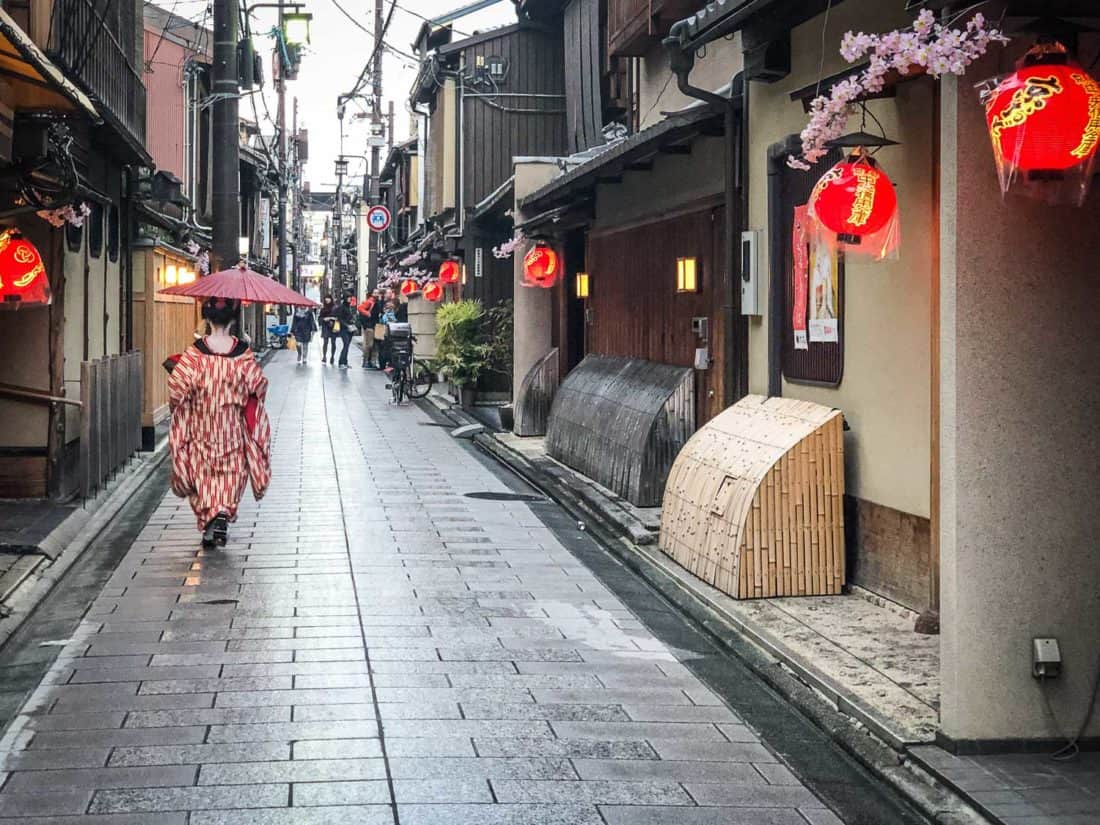
Wandering around Gion is one of the top things to do in Kyoto at night.
If you’d like to explore with a guide, this Gion at night group walking tour has excellent reviews and is a good way to learn about geisha culture.
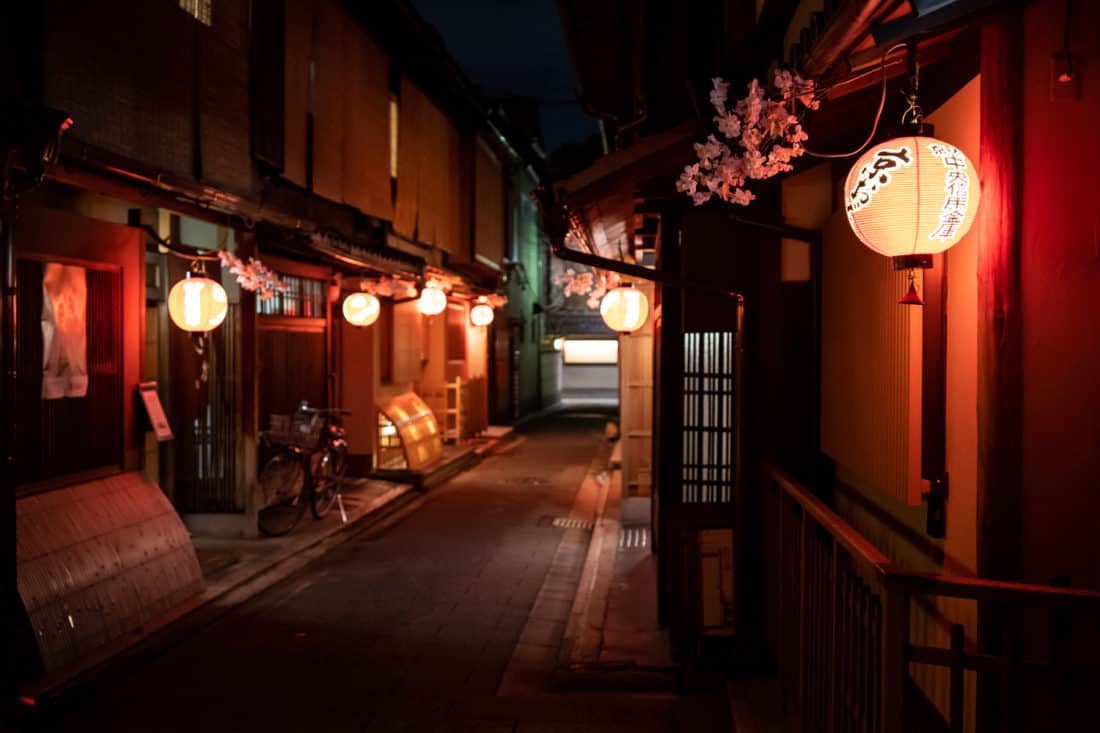
Details: Free to wander the streets. The nearest train stations are Gion-Shijo and Kiyomizu-Gojō on the Keihan Main Line.
3) Enjoy the View from Kiyomizu-dera Temple
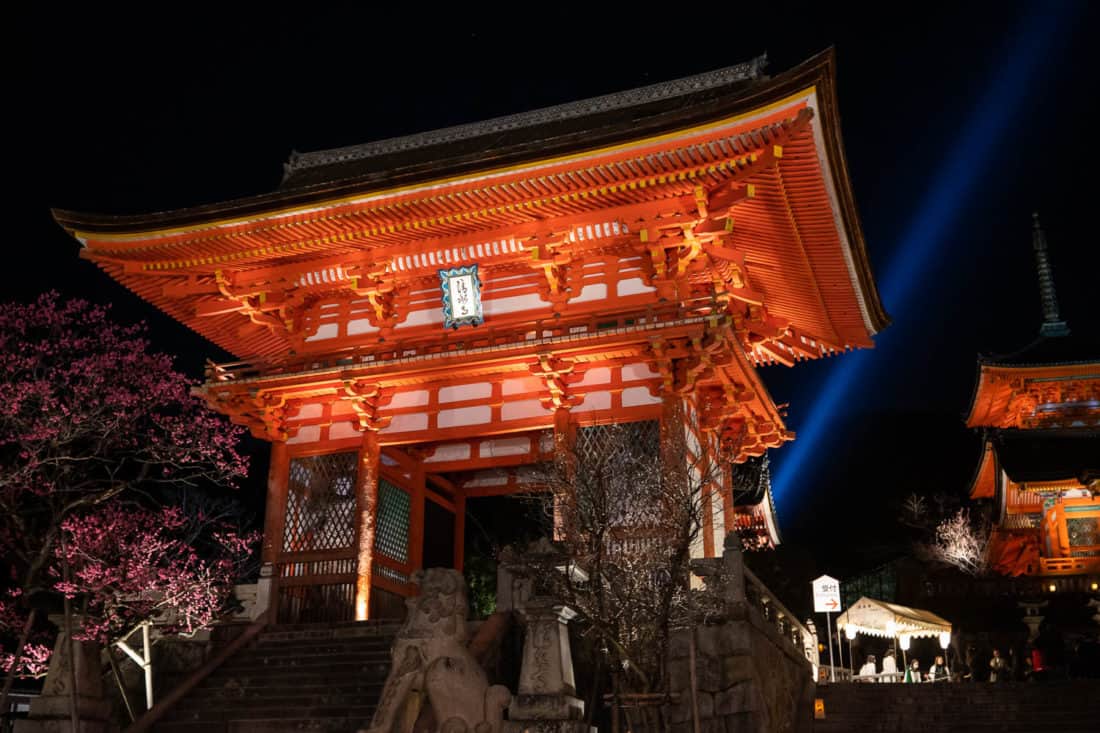
Another top Kyoto sightseeing spot, Kiyomizu-dera was founded in 778 AD and has a dramatic hillside location in Southern Higashiyama with views across the city.
The large wooden main hall was built without nails and houses a statue of the eleven-faced, thousand-armed Kannon.
It’s a large complex with many other buildings including an impressive entrance gate, red three-storey pagoda, quiet paths into the forest, and the bizarre Tainai-meguri where you enter into darkness to make a wish (one of the weirdest things to do in Kyoto).
Kiyomizu-dera opens earlier than other temples and it’s well worth visiting at 6 am to avoid the tour groups.
It can also be quieter during the night illuminations held in March, April, and November when it’s open until 9.30pm.
Details: 400 yen entry fee. Open 6 am – 6 pm. It’s a 20-minute walk from Kiyomizu-Gojo Station on the Keihan Main Line. Walking up through the atmospheric lanes full of souvenir shops is part of the fun, but they get extremely busy in the middle of the day.
4) Stroll The Philosopher’s Path
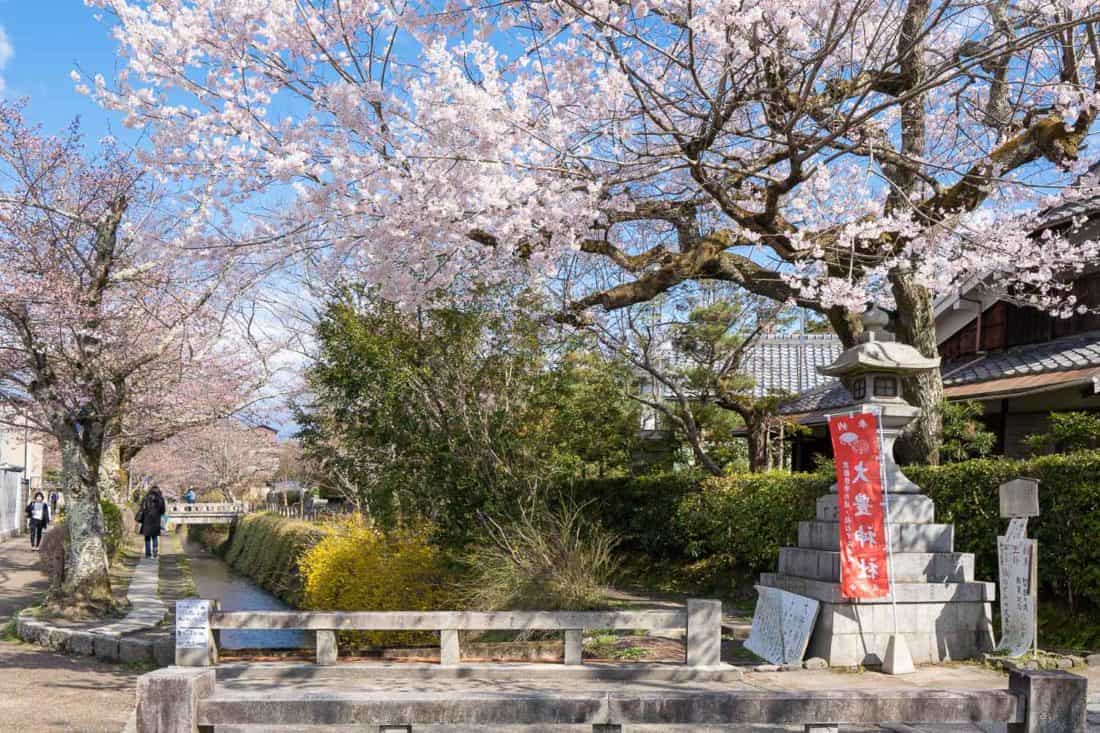
The Philosopher’s Path is a pedestrian walkway along a cherry-tree-lined canal in Northern Higashiyama.
It’s 2 km (1.2 miles) long and connects two of the most famous temples in Kyoto, Nanzen-ji and Ginkaku-ji.
It’s named because the Japanese philosopher Nishida Kitaro was said to have used it for his daily meditation.
The Philosopher’s Path is a pleasant place for a stroll and you can stop off at several quieter temples along the way including Honen-in.
In cherry blossom season, the path is a must do in Kyoto.
Details: Free to stroll the path. It’s not very near any train stations (Keage Station on the Tozai line is a 15-minute walk away).
We always walk here from Southern Higashiyama via Maruyama Park as there’s lots to see along the way. It’s about 5 km (3.1 miles) without detours from Yasaka Pagoda to the end of the Philosopher’s Path near Ginkaku-ji.
5) Explore Nanzen-ji Temple
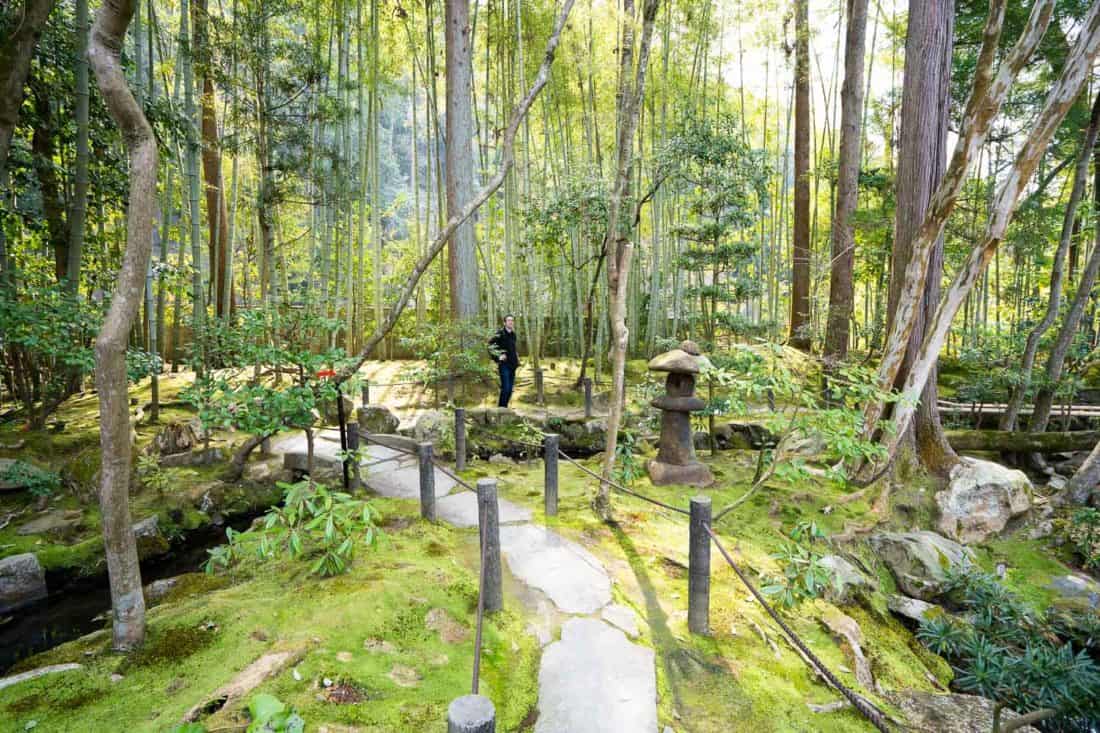
At one end of the Philosopher’s Path you’ll find Nanzen-ji, a large Zen temple complex that’s well worth a visit. It’s not usually too crowded and there’s plenty of space for everyone.
The shady grounds are free to wander and you can see the massive Sanmon entrance gate and a large brick aqueduct built during the Meiji period.
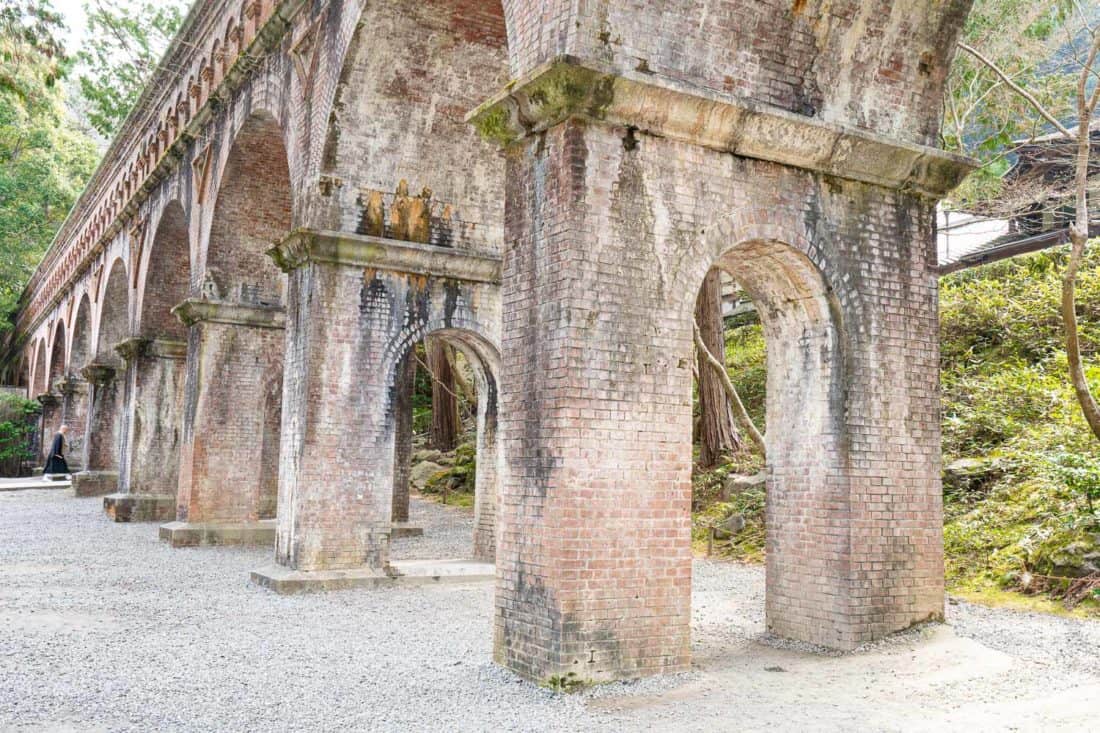
From here we like to head up the hill into the forest to the simple shrine Nanzen-ji Oku-no-in beside a small waterfall.
You can also pay to enter the sub-temples. We visited Tenjuan, which has two lovely gardens and is a peaceful escape from the crowds.
There’s a rock garden as well as a large pond garden featuring mossy rocks and a small bamboo grove.
It’s especially beautiful in autumn leaf season when it’s open for special evening illuminations (cancelled in 2023).
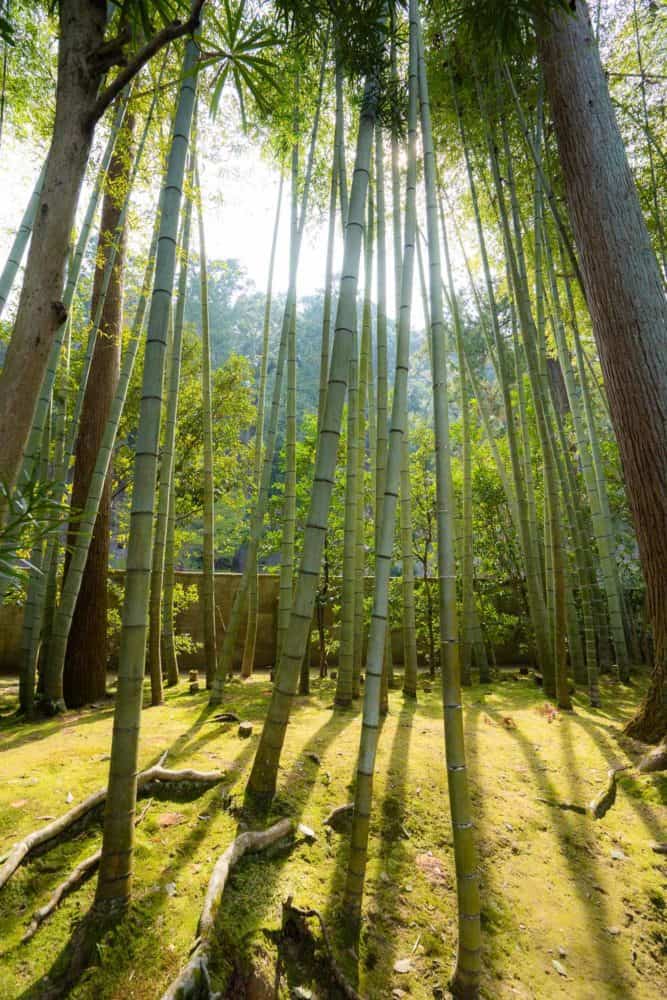
Details: Grounds are free. 500 yen to enter Tenjuan which is open 9 am – 4.45 pm. The nearest subway station is Keage Station on the Tozai line. We usually walk from Gion and continue along the Philosopher’s Path.
6) Visit the Ginkaku-ji Temple (Silver Pavilion)
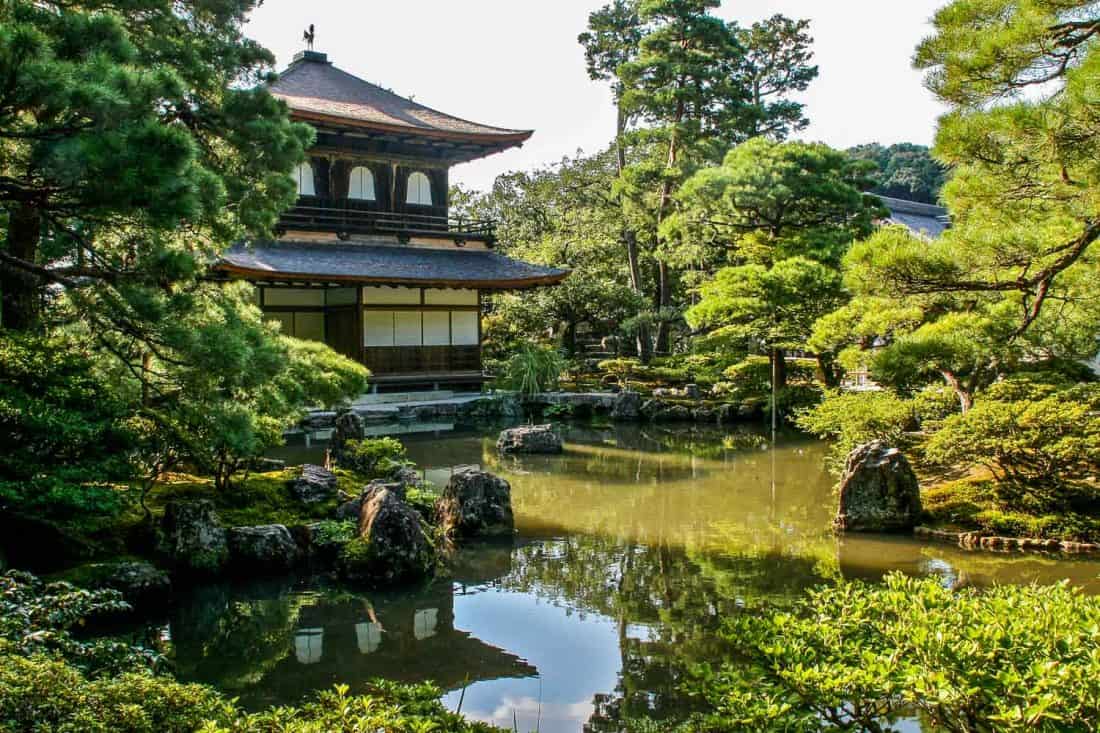
Ginkaku-ji means Silver Pavilion, but it was never covered in silver leaf. It’s one of Kyoto’s most popular temples and is located at the end of the Philosopher’s Path.
Even without the silver, it’s a lovely temple reflected in a pond.
The stunning gardens include an immaculately raked white sand Zen garden and a beautiful moss garden.
Make sure you follow the path up the hill to admire the temple from above.
Details: 500 yen entry fee. Open 8.30 am – 5 pm. It’s best reached by walking the Philosopher’s Path or you can take bus 17 or 100 from Kyoto Station (40 minutes).
7) See the Golden Pavilion at Kinkaku-ji Temple
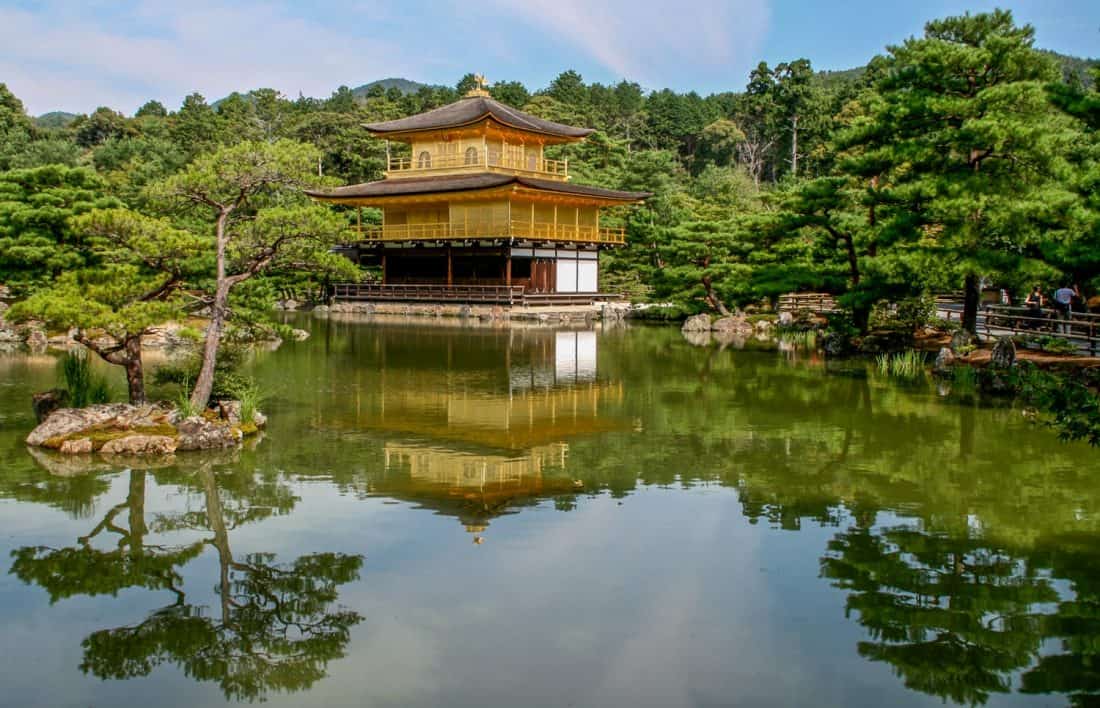
The Golden Temple or Kinkaku-ji is one of the most photographed sights in Kyoto.
We were prepared for the famous Zen temple to be overrated, and although it is almost always crowded, we couldn’t help but be impressed by the shimmering golden pavilion reflected in a pond dotted with islands of trees.
It was once the retirement villa of a shogun and it became a Zen temple after his death in 1408 (the building has been rebuilt after numerous fires since then).
The gardens are pleasant for a stroll (if not too busy) and it’s fun to get an English fortune from a vending machine.
Although it’s beautiful, it’s a bit out the way in northwest Kyoto, so if you only have one or two days in Kyoto, I would probably skip it.
Details: 400 yen entry fee. Open 9 am – 5 pm. There are no train stations nearby. You could cycle here (like we did), take a taxi, get the bus 101 or 205 from Kyoto Station (at least 40 minutes) , or take a guided tour like the Kyoto early bird tour .
8) Spend a Day in Arashiyama
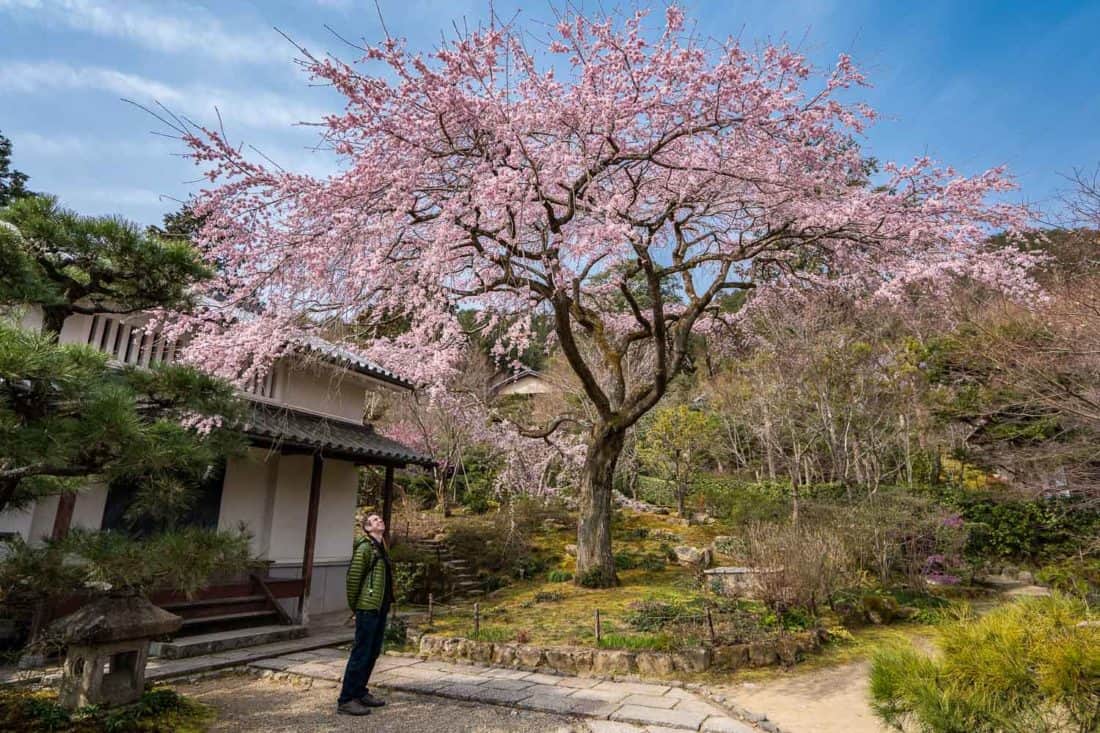
As I said above, I left out the Arashiyama bamboo grove from this list because the crowds have made it unenjoyable (see the bamboo groves at Kodai-ji or Tenjuan in Nanzen-ji instead).
That doesn’t mean you shouldn’t visit Arashiyama, though—we love this neighbourhood up in the western hills and recommend spending a day here. Away from the main sights it’s very peaceful.
Highlights include:
- Tenryu-ji – This Zen temple is the most popular attraction in the area and has beautiful gardens and delicious vegetarian lunches at the Shigetsu restaurant (see our Kyoto vegetarian guide ). The bamboo grove is just outside if you want a quick walk through (just keep your expectations low).
- Okochi-Sanso Villa – The former home of famous film actor Okochi Denjiro features lovely strolling gardens and views of the city.
- Jojakko-ji – See below.
- Gio-ji – A tiny temple with a thatched-roof main hall overlooking a moss-covered grotto.
- Otagi Nenbutsu-ji – See below.
- Daikaku-ji – A grand temple complex and large pond with cherry trees.
You could also explore with a guide and enjoy street food tastings on the way on this Arashiyama and Sagano Walking Food Tour .
Details: From Kyoto Station take the JR San-In line to Saga-Arashiyama Station (17 minutes) which is about a 10-minute walk from Tenryu-ji.
From Gion we walked to Kawaramachi station, took the train to Omiya then the Randen tram to Arashiyama, which took about an hour.
9) Seek out Cherry Blossoms or Autumn Leaves
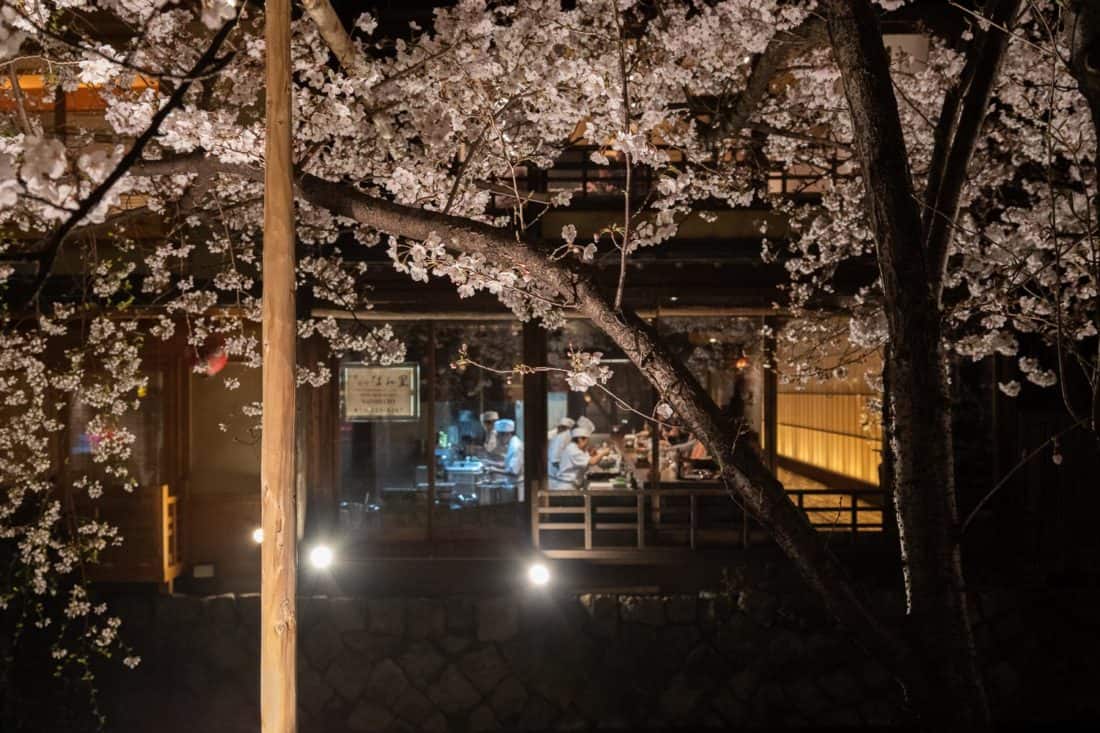
The beauty of Kyoto is that every season is different.
Winter is chilly and quiet; summer is hot, humid, lushly green, and festival-filled; but the most popular times to visit are spring or autumn.
In early April, the cherry blossoms (sakura) transform the city into a flowering wonderland.
While it’s crowded and expensive, it’s also magical and the festive atmosphere is fun. See our picks for the best places to see the Kyoto cherry blossoms .
Late November to early December is usually the best time to see the colourful autumn leaves in Kyoto, which can be just as beautiful.
Recommended Reading: If you’re also visiting Tokyo, check out our guide to the coolest things to do in Tokyo .
These temples may not be as well known as the ones above, but they can often be a more enjoyable experience without the crowds.
See our guide to Kyoto temples and shrines for even more hidden gems.
10) Otagi Nenbutsu-ji Temple
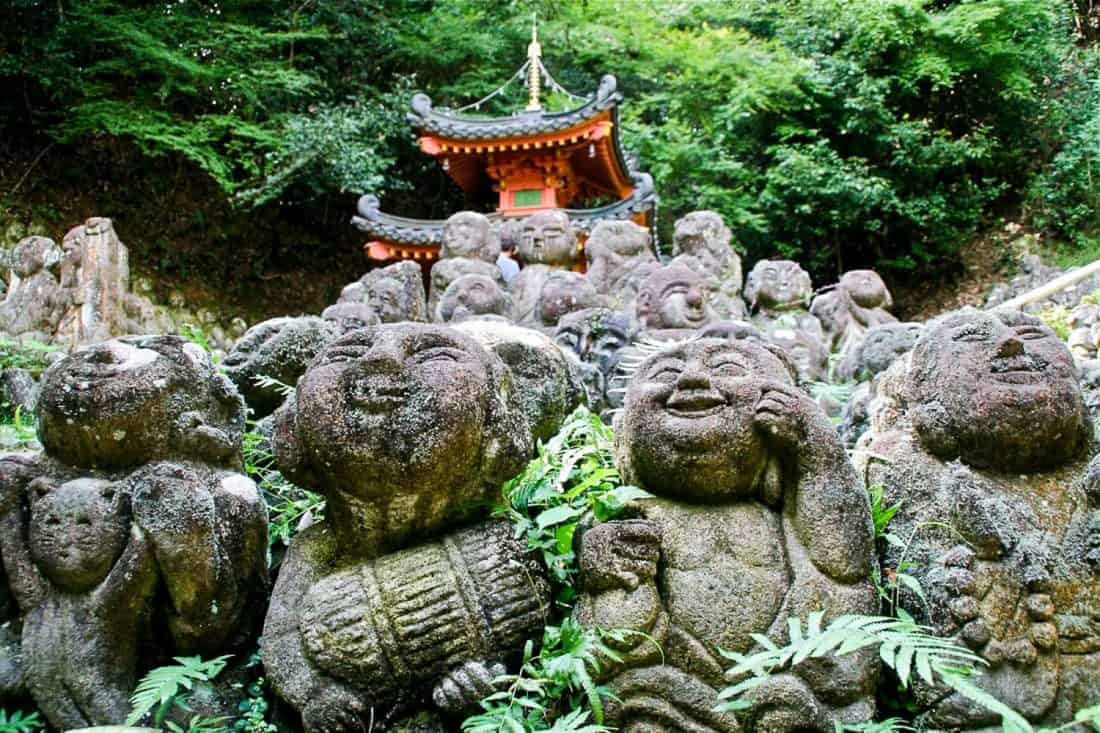
Otagi Nenbutsu-ji is a fairly long walk from the popular sights in Arashiyama, but it’s well worth it for an offbeat experience.
It’s the quirkiest temple we visited in Kyoto with 1200 stone sculptures of rakan, the Buddha’s disciples, scattered throughout a shady temple complex.
They all have different facial expressions and poses—scary, serene, cheerful, cute, and just plain bizarre.
Details: 300 yen entry fee. Open 8 am – 4.30 pm. We walked from the Saga Arashiyama station, which takes about 40 minutes, and there are other temples to visit on the way. There’s also an infrequent bus or you can take a taxi from the station for about 1000 yen.
11) Jojakko-ji Temple
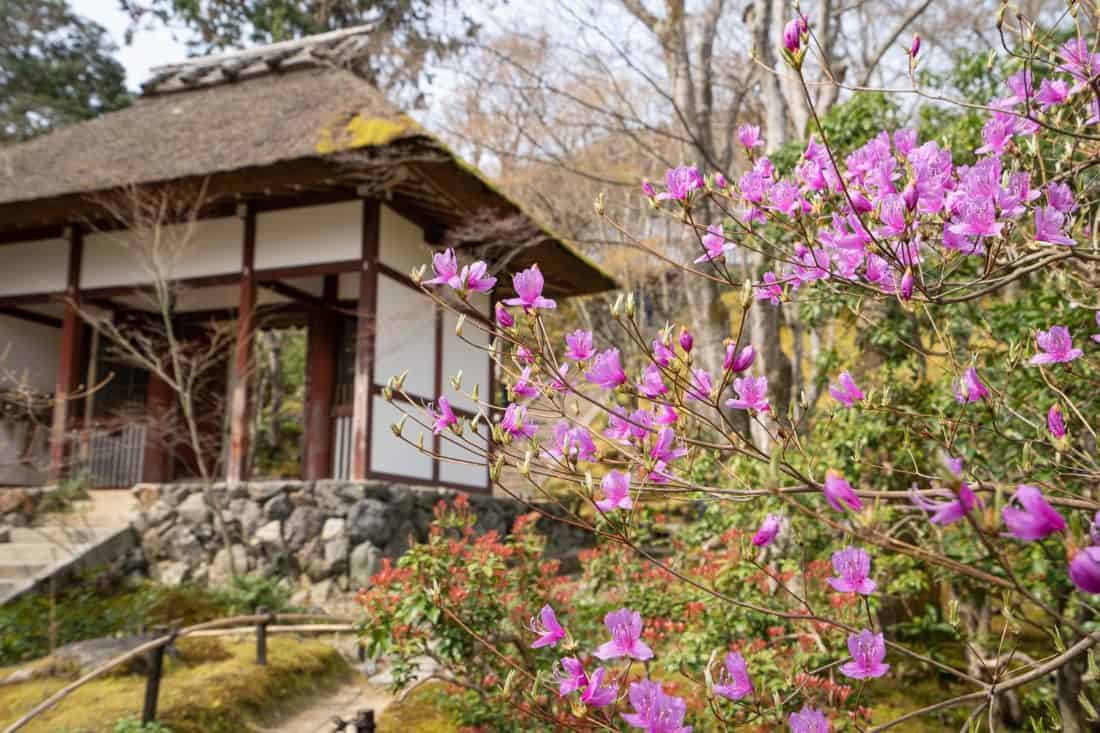
Jojakko-ji is another hidden gem in Arashiyama. Possibly due to lack of expectations and crowds, this was one of my favourite temples in Kyoto.
The hillside gardens are extensive and feature a large cherry tree, mossy roots, small bamboo cluster, a thatched roof gate, and pagoda. There’s a fantastic view of Kyoto from the top.
It’s a beautiful temple to visit in autumn, but it won’t be as quiet then.
Details: 400 yen entry fee. Open 9 am – 5 pm. It’s a 15-minute walk from Saga Arashiyama station.
12) Kodai-ji Temple
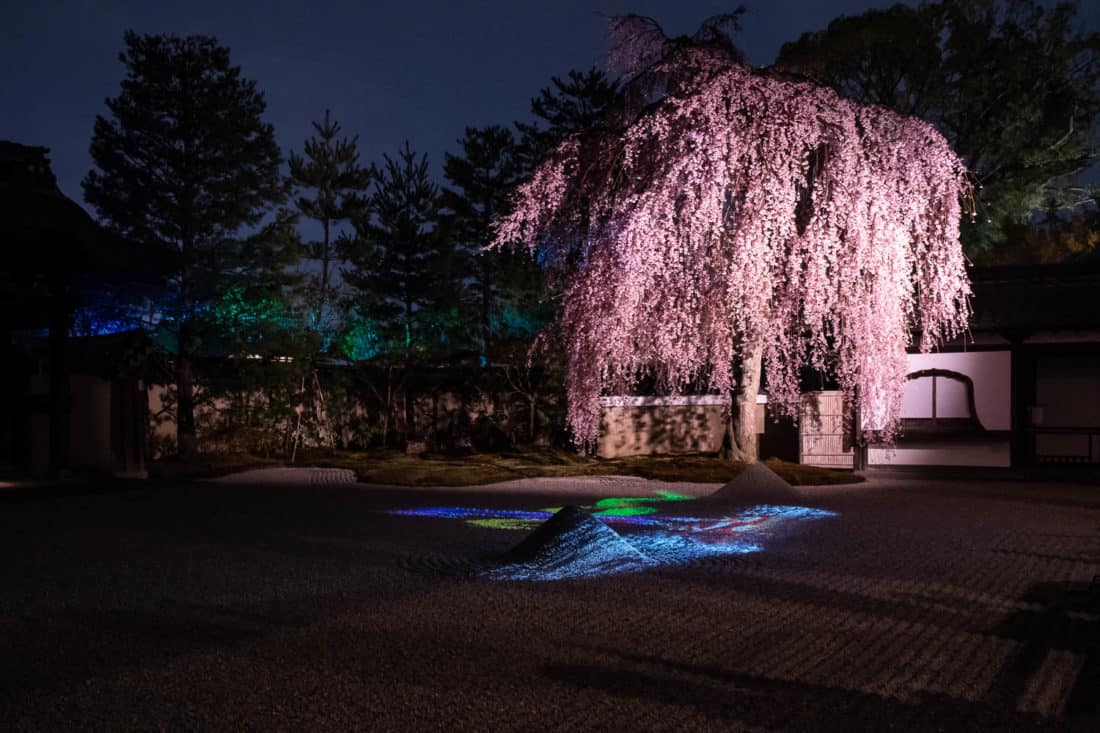
Kodai-ji isn’t quite as off-the-beaten-path as the two temples above, but we had it to ourselves when we visited at opening time.
It’s in a convenient location in Southern Higashiyama, so it’s easy to add in a visit while visiting more popular sights like Kiyomizu-dera.
The Zen Buddhist temple was established in 1606. The main hall features beautiful artwork and painted screen doors, but the gardens were the highlight for us.
The rock garden includes raked gravel and a weeping cherry tree, which is gorgeous in sakura season.
The other garden includes a pond and attractive teahouses. Make sure you walk up the hill to the bamboo grove, which is our favourite in Kyoto.
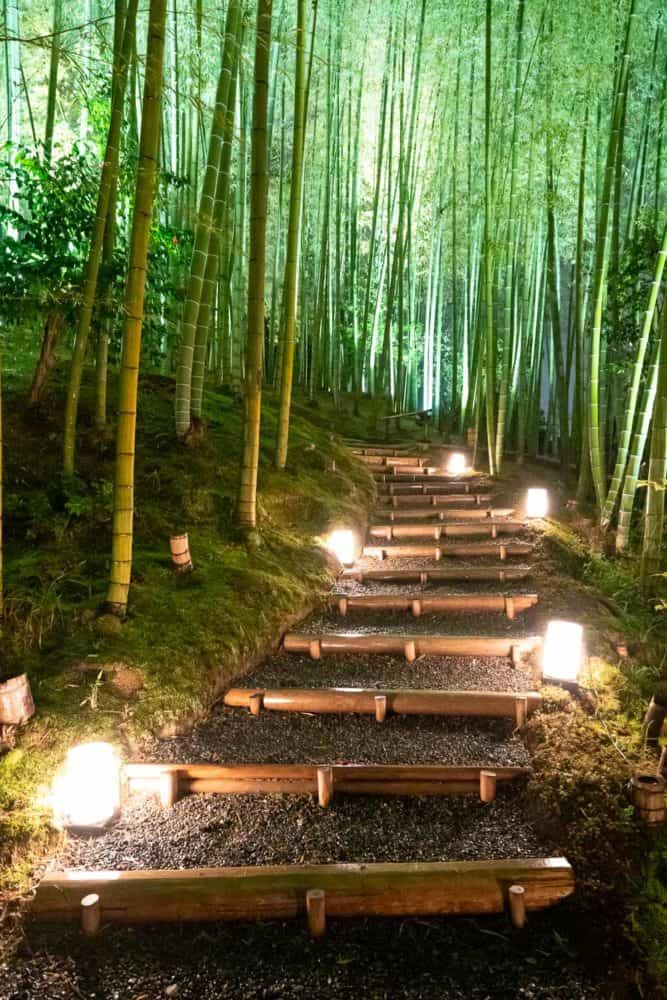
Three times a year (April, August, and November) the temple opens for special night illuminations, which are well worth visiting although it’s much more crowded.
Details: 600 yen entry fee (or 900 yen combo ticket with Entoku-in). Open 9 am – 5 pm. Best visited on a walking tour of Southern Higashiyama. It’s a 15-minute walk from Gion-Shijo station or a bus will get you closer.
13) Entoku-in Temple
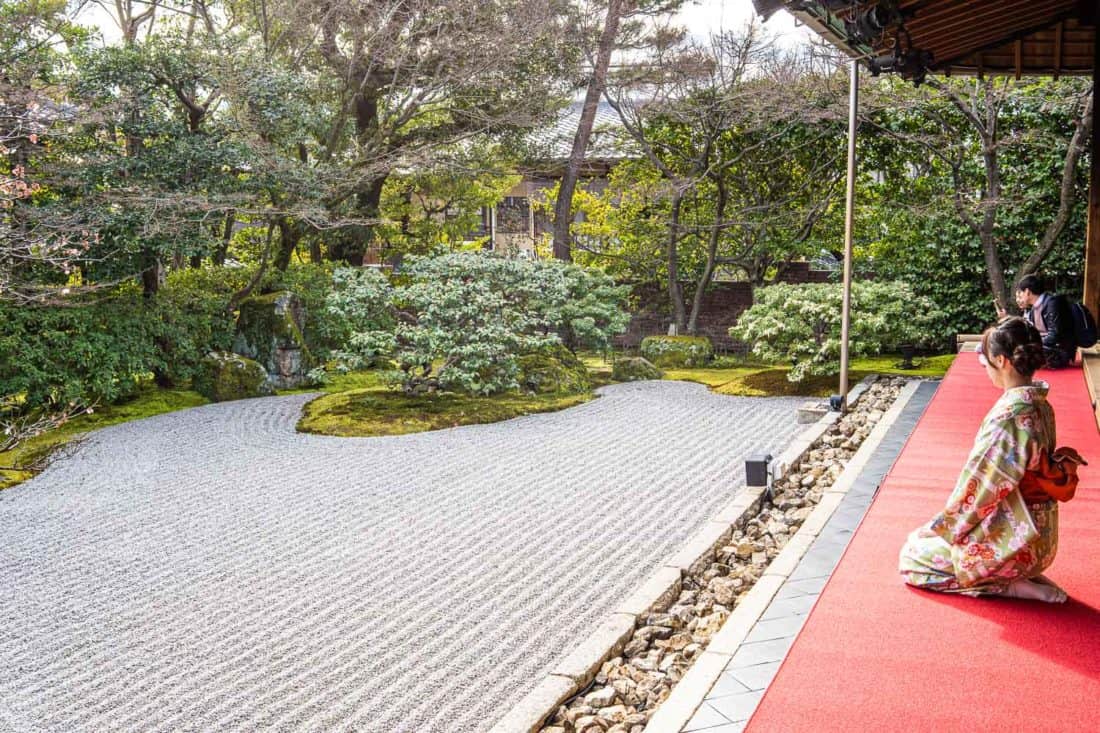
Entoku-in is a sub-temple of Kodai-ji that’s usually fairly quiet.
There’s a small karesansui (dry stone) garden and some beautiful screen paintings, but what we most liked were the interactive elements here. You can make your own raked stone garden, trace a Buddha picture or sutra, or try zazen meditation.
Details: 500 yen entry fee (or 900 yen combo ticket with Kodai-ji). Open 10 am – 5 pm. It’s a two-minute walk from Kodai-ji.
14) Kennin-ji Temple
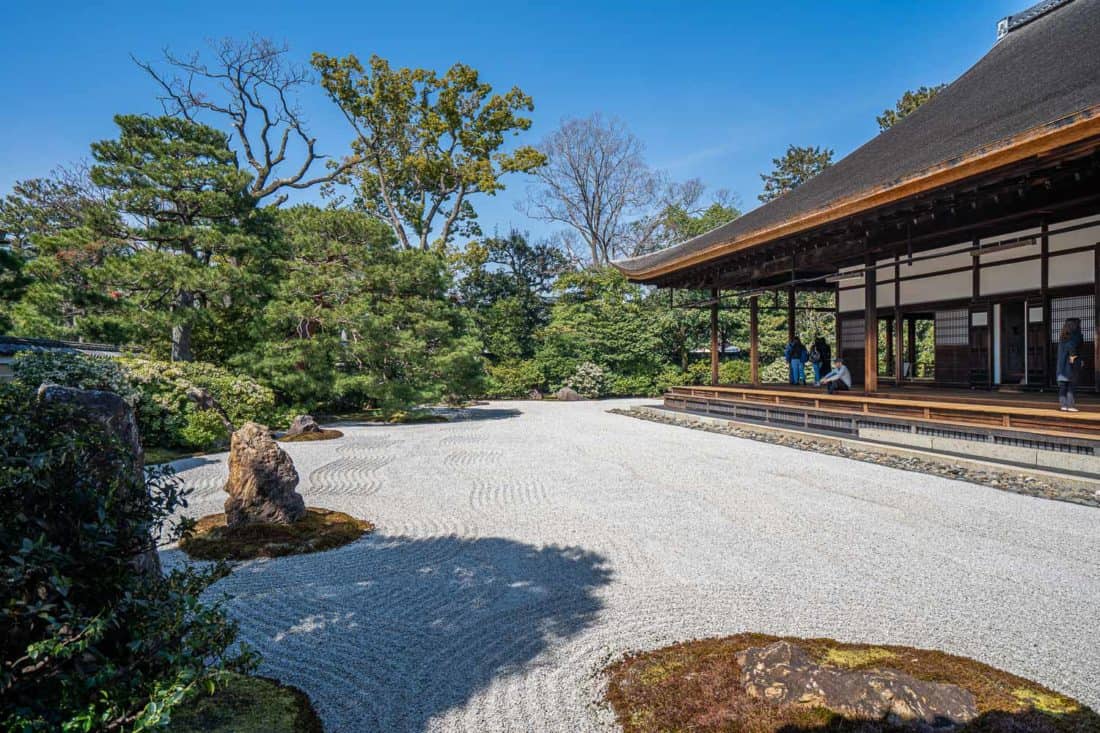
Kennin-ji is conveniently located in Gion and is close to other temples like Kodai-ji, but it doesn’t get too crowded, especially if you visit at opening.
It’s the oldest Zen temple in Kyoto and was founded in 1202. There’s a large complex where you can wander for free, but it’s worth paying to go inside.
The main building overlooks a large raked gravel garden, one of the best we visited.
There are lots of small rooms where you can admire beautiful screen paintings and you can walk in the gardens to an old teahouse.
Don’t miss the separate building where there’s a stunning ceiling painting of twin dragons, painted in 2002 to celebrate the temple’s 800th anniversary.
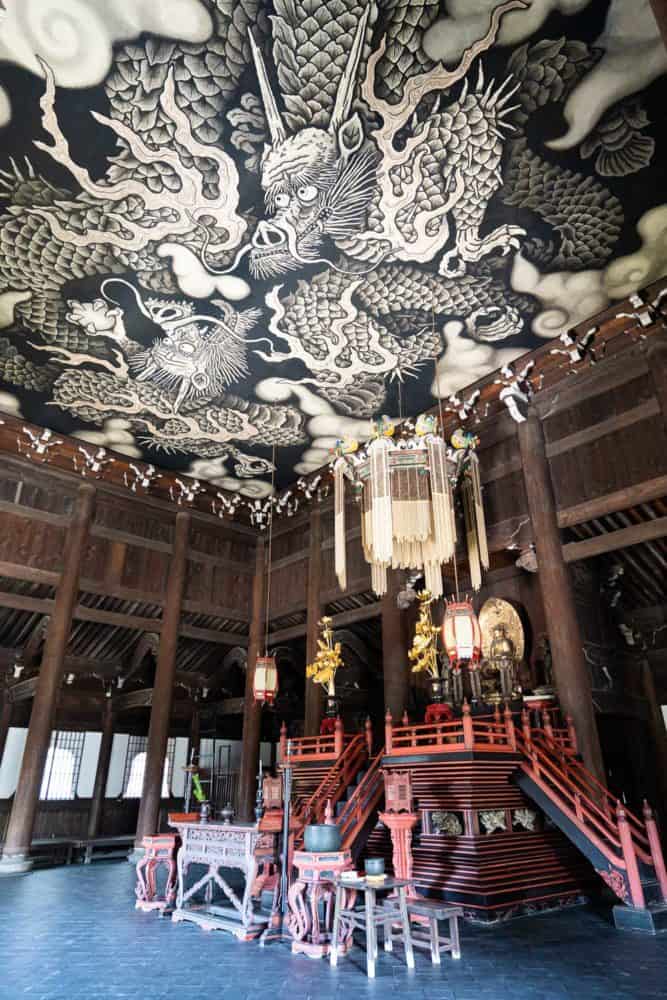
Details: 500 yen entry fee. Open 10 am – 5 pm. Gion Shijo is the nearest station.
15) Yoshida Hill Temples and Shrines
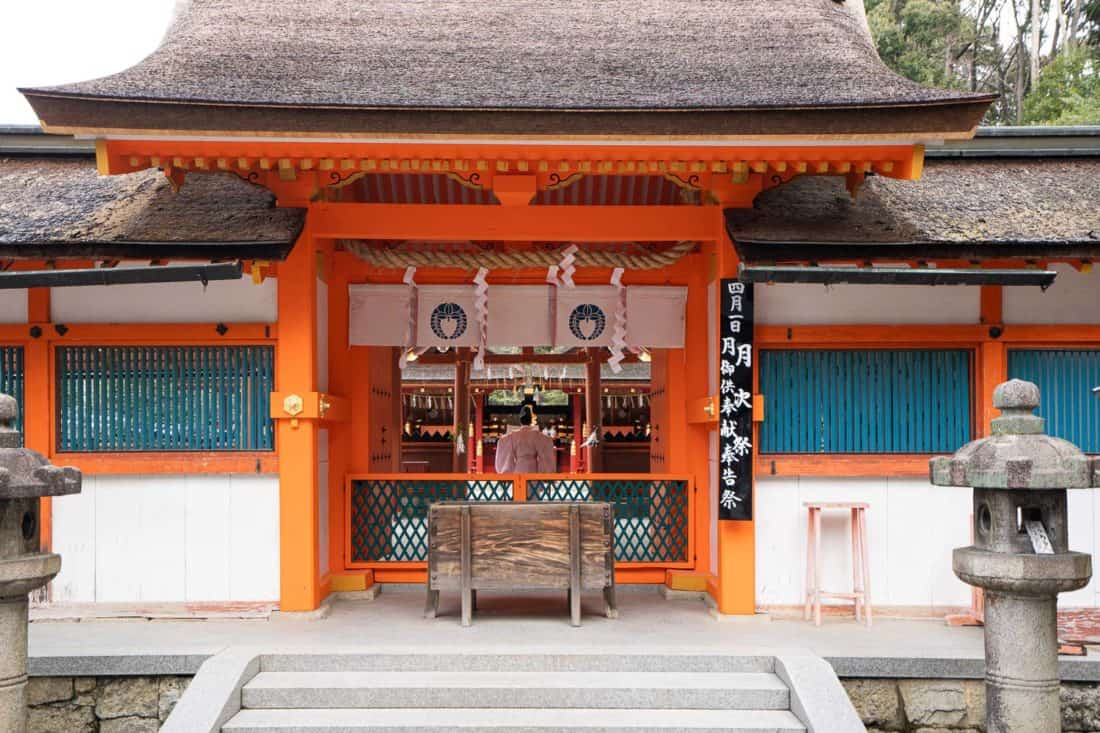
The temples and shrines on Yoshida Hill are hidden gems and are my top pick if you’re looking for non touristy things to do in Kyoto.
We couldn’t believe how empty they were despite the fact they are just as beautiful as some of the more well-known temples, entrance is free, and there are some good cherry blossom spots .
They are a little out of the way, but we combined them with a walk on the Philosopher’s Path—it’s a 2 km (1.2 mile) walk from the Ginkaku-ji end.
These are the four we visited with around a 5–10 minute walk between them.
- Takenaka Inari Shrine – A small shrine with a tunnel of red torii gates that is especially lovely in cherry blossom season.
- Yoshida-jinja Shrine – A peaceful forest shrine with many classic elements like torii gates and sake barrels. We saw a monk performing a ceremony here.
- Shinnyodo Temple – A large temple complex with a huge hondo (main hall) and small pond. We walked down the hill through the neighbouring graveyard to get to the next temple.
- Konkai-Komyoji Temple – Also known as Kurodani Temple, this large complex has an impressive grand entrance gate and staircase lined with cherry trees.
Details: Free entrance. Best explored on foot while in Northern Higashiyama.
Recommended Reading: If you’re looking for inspiration for the rest of your trip, see the 54 best things to do in Japan .
16) Eat Shojin Ryori in a Temple
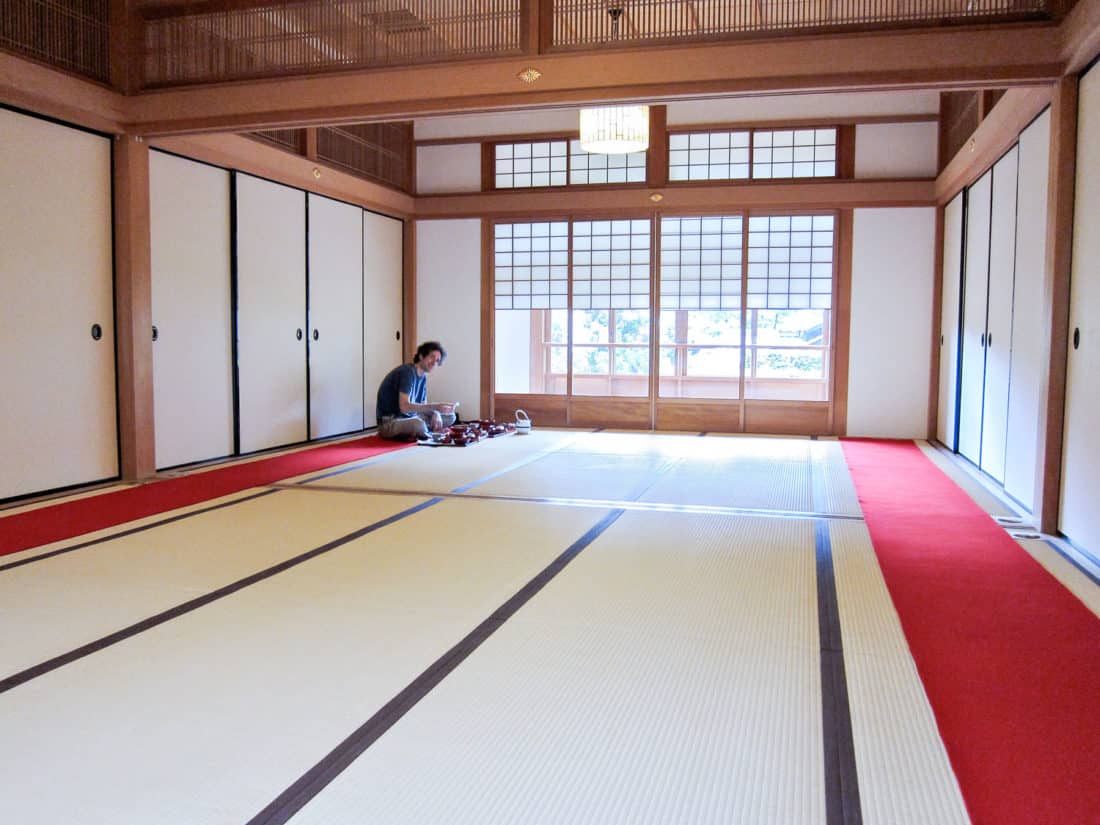
Kyoto is one of the best places in Japan for vegetarians as it’s the home of shojin ryori or Zen Buddhist temple cuisine, which is free from animal products.
Shojin ryori features multiple small dishes including tofu, seasonal vegetables, and rice. It’s healthy, balanced, and delicious, although you might find some of the unusual ingredients rather odd.
You can try shojin ryori at a number of temples including Shigetsu restaurant in Tenryu-ji in Arashiyama where you eat on the floor in a large tatami room overlooking the gardens.
See my vegetarian restaurants in Kyoto guide for more delicious places to eat.
Details: Shigetsu is open from 11 am – 2 pm and lunch sets costs from 3300 yen. You must also pay the 500 yen Tenryu-ji entrance fee. Make sure you book—ideally a month in advance or two months in peak seasons like autumn.
17) Take a Cooking Class
Japanese cuisine is fascinating and a cooking class is a great way to learn more about it beyond sushi and tempura.
We had an excellent lesson with Emi at Uzuki Kyoto Cooking Class but, unfortunately, the school has now closed.
Another option that looks good (and they can cater to vegetarians) is this Afternoon Japanese Izakaya Cooking Class with Cooking Sun where you learn to make 5-6 home-style dishes.
Other cooking classes available in Kyoto focus on different dishes such as bento boxes and ramen (with vegan option).
18) Shop at Nishiki Market
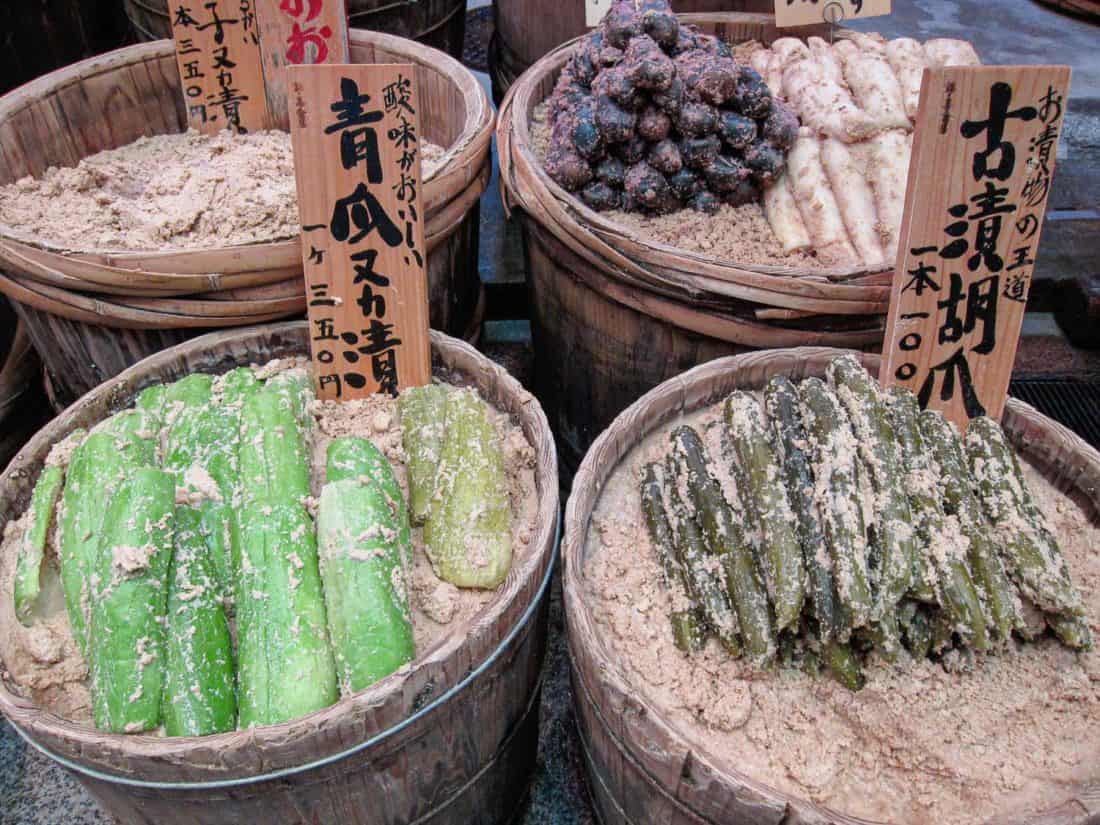
Once you’ve learnt miso from mirin on a cooking class, you can delve into Kyoto’s foodie culture some more with a visit to the Nishiki Market.
On this narrow shopping street you’ll find all the ingredients essential for Japanese cooking including an array of pickled vegetables, fish, tofu, giant miso-smothered aubergine, sweets, and other snacks.
There are plenty of opportunities to try free samples or to buy a snack to take with you. We liked the sweet black beans and the chilli coated rice cakes.
The market has become very crowded in recent years, so it’s best to visit early.
You might find it more relaxing to visit a basement food hall in a nearby department store such as Takashimaya or Daimuru instead. This is Kyoto’s main shopping area so there are plenty of options.
Nishiki Market can be overwhelming and confusing, so if you want to learn what everything is you might want to explore with a guide (we plan to next time). Options include:
- Kyoto Nishiki Market Food Tour – Visit 10-12 vendors with food tastings and enjoy a sit-down lunch afterwards.
- Nishiki Market and Culture Walking Food Tour – Combine tastings at Nishiki Market with a temple visit.
- Nishiki Market Food Tour with Cooking Class – On this private tour, you shop at the market then make a donburi (rice bowl) with the ingredients you’ve chosen.
Details: Opening hours vary by stall, but it’s best to visit between 10 am to 5 pm. The nearest stations are Shijo Station on the Karasuma Subway Line or Karasuma or Kawaramachi Stations on the Hankyu Line.
19) Drink Matcha in a Teahouse
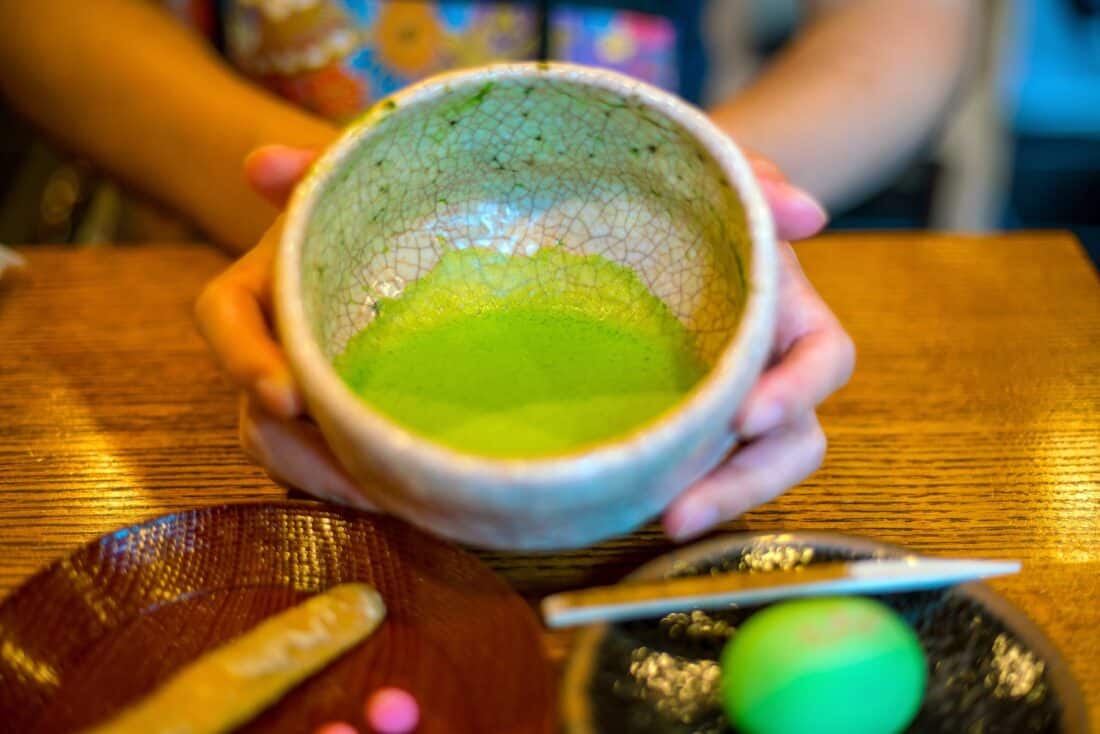
Kyoto is famous for its green tea and stopping at one of the many traditional teahouses is a Kyoto must do and the perfect break on a busy sightseeing day.
Slightly bitter, bright green matcha is served in beautiful bowls accompanied by wagashi, small Japanese sweets such as mochi made from pounded rice and sugar and stuffed with bean paste.
It can be an acquired taste, but even if you’re not a fan, it’s a great cultural experience and worth trying at least once.
There are many teahouses in Kyoto. We loved our experience at Ippodo Tea , a highly regarded tea shop that’s been around for nearly 300 years.
This is the ideal place to buy some high-quality tea to take home as a souvenir, but you can also sample it in their tearoom.
You can choose from a wide range of teas and you’ll be given exact instructions (in English) on how to brew it—they take their tea very seriously here. Our tea and wagashi were superb.
To delve deeper into tea culture, you can also participate in a tea ceremony. The tea ceremony ritual originated in Kyoto and is a fascinating insight into Japanese culture—it’s about so much more than just enjoying a hot drink.
We took part in a tea ceremony in Kanazawa , but there are many options in Kyoto including this 45-minute tea ceremony near the Golden Temple (with option to wear a kimono) or this tea ceremony at Jotokuji Temple .
Details: The Ippodo Tearoom is open from 10 am – 5 pm (currently closed until winter 2023 but the shop is open). It’s a little out of the way but it’s not far south of Kyoto Imperial Palace and a 15-minute walk north of Nishiki Market.
20) Cycle Along the Kamo River
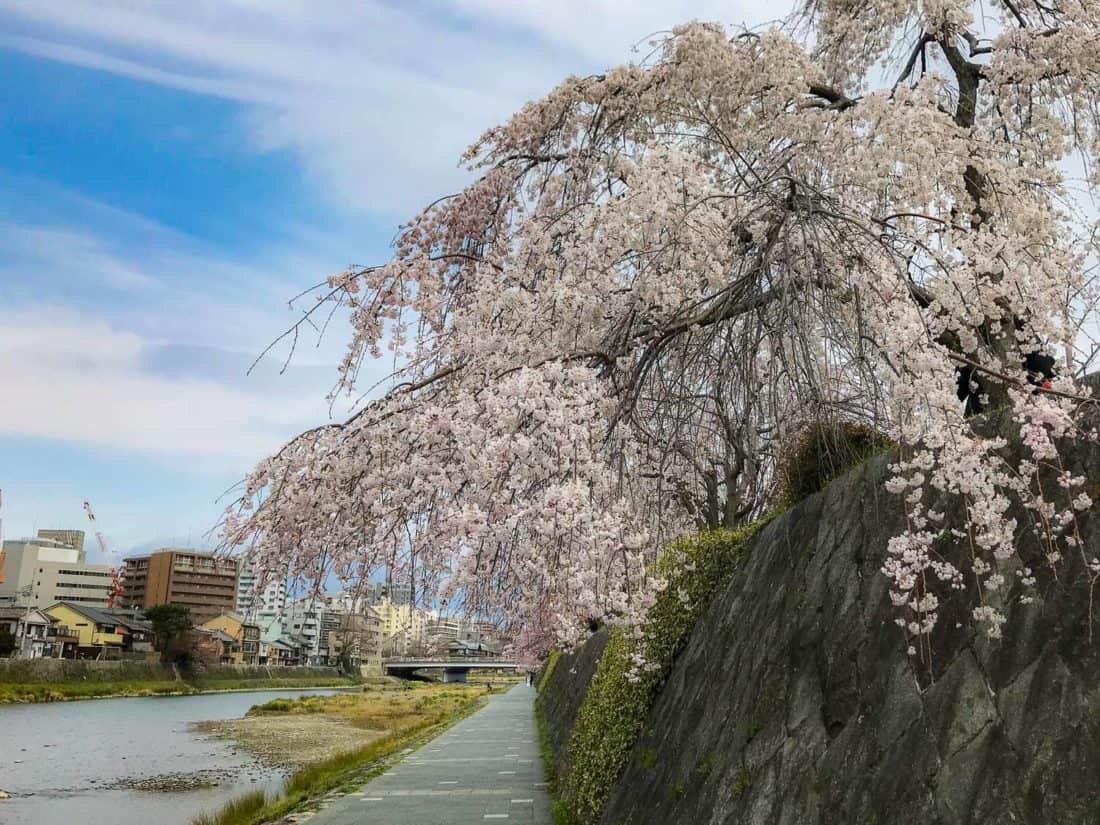
The Kamogawa or Kamo River cuts through the city and is a popular recreation spot for locals.
It’s a great place for a run, walk, or bike ride, especially in spring when the banks are lined with cherry blossoms.
On summer evenings, head to the Sanjo bridge where you’ll often find bands playing and young people hanging out and drinking—a cheaper night out than paying bar prices.
Cycling is an especially good way to explore and you can use the river path as a way of getting to northern Kyoto.
You could start in Gion and cycle north with a detour to the Imperial Palace. At the Demachiyanagi area the river forks and you’ll find the 2000-year-old shrine Shimogamo-Jinja.
Take the left fork to head to the Kyoto Botanical Gardens and the 7th-century shrine, Kamigamo-jinja.
The right fork will eventually take you to Takaraga-ike Park, an off-the-beaten-track spot that’s popular with locals for walks, picnics, and boating on the pond. I had a lovely birthday picnic here under the plum blossoms.
If you want to leave the river and cycle up Kyoto’s hills, I recommend getting an e-bike.
Details: The bike shop we rented from in Gion has now closed. Bicycle rental Raku-chari Nanajo is another option close to the river and a 10-minute walk from Kyoto Station.
A one-day rental from 9 am – 6 pm costs 1100 yen for a standard bike or 2200 yen for an e-bike.
21) Stroll by the Takase River
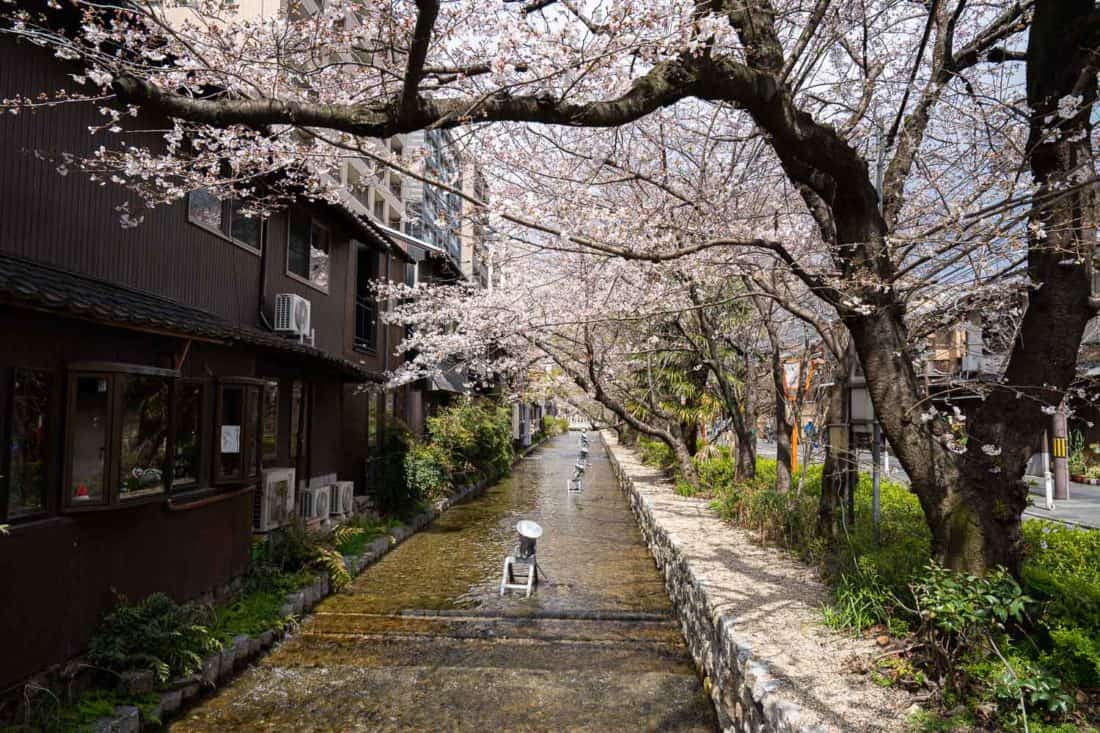
The Takase River is a narrow canal that runs next to Kiyamachi-dori parallel to the much larger Kamo River.
It was used for transporting rice and sake for over 300 years from 1611. You can see a replica of the flat-bottomed boats that were used at the starting point near Nijo-dori.
It’s an enjoyable place for a stroll by day and night, especially in spring when the cherry trees bloom, and there are lots of cafes and restaurants along the way.
The section between Sanjo-dori and Shijo-dori can be busy, especially in sakura season, but south of here it’s much quieter.
We often walked along the canal south of Gojo-dori and down past Kyoto Beer Lab and it was always a peaceful escape.
Details: Sanjo station is about a five-minute walk from the start of the canal near Nijo-dori. You could also start further south near Kawaramachi station.
22) Hike from Kibune to Kurama
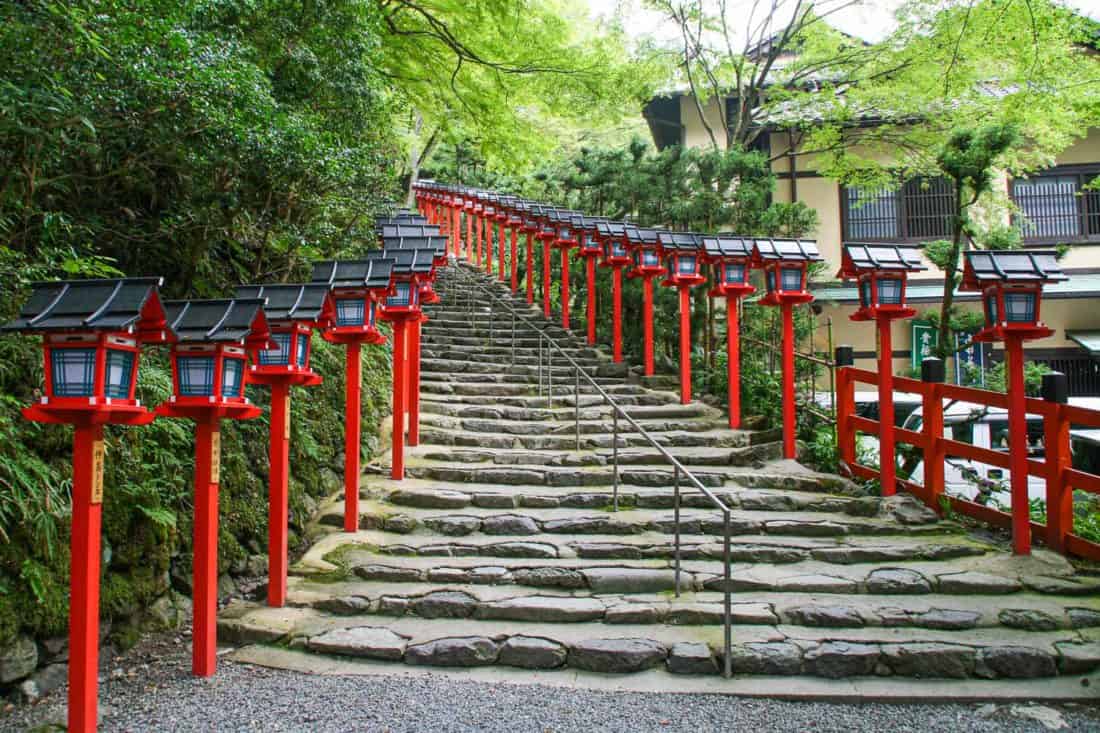
A lovely half-day trip from Kyoto is to the villages of Kibune and Kurama in the mountains a scenic 30-minute train ride north of the city.
You can do the walk in either direction. We started in Kibune, visited the Kifune Shrine, then walked through the forest up a steep path up and over the mountain to Kurama-dera temple, which has fantastic views.
The mountain section only took 35 minutes, but it felt longer as it’s uphill most of the way. It’s a peaceful walk over root-covered trails surrounded by tall trees with a number of small shrines along the way.
The village of Kurama is about 15 minutes downhill from the temple. We enjoyed a tasty shojin ryori (Buddhist vegetarian) lunch at Yoshuji before taking the train back to Kyoto.
This is a great walk in any season. When the weather is cooler, you can ease your muscles in the outdoor baths at Kurama Onsen (currently closed).
In summer, walk in the opposite direction and end with a meal on a suspended platform over the river in Kibune.
In autumn, it’s especially beautiful as the trees turn red.
Details: The train on the Eizan Kurama Line from Demachi-Yanagi Station to Kibuneguchi Station takes 30 minutes. Return on the same line from Kurama Station.
Entrance to Kurama-dera is 300 yen. Use of the outdoor bath at Kurama Onsen is 1000 yen (or 2500 yen for all baths).
23) Wander Around Kyoto Botanical Gardens
The extensive Kyoto Botanical Gardens are a relaxing place for a walk with a wide range of trees and flowers, a turtle and carp filled pond, and a huge conservatory with plants from different climatic zones.
We visited in late summer, but it’s even lovelier with the cherry blossoms of spring or red leaves of autumn.
Details: 200 yen entry fee plus 200 yen for the conservatory. Main gardens open from 9 am – 5 pm and the conservatory from 10 am – 4 pm.
The nearest subway station is Kitayama Station. This is a great place to cycle to as you can get there along the Kamo River.
24) Watch the Geisha Spring or Autumn Dances
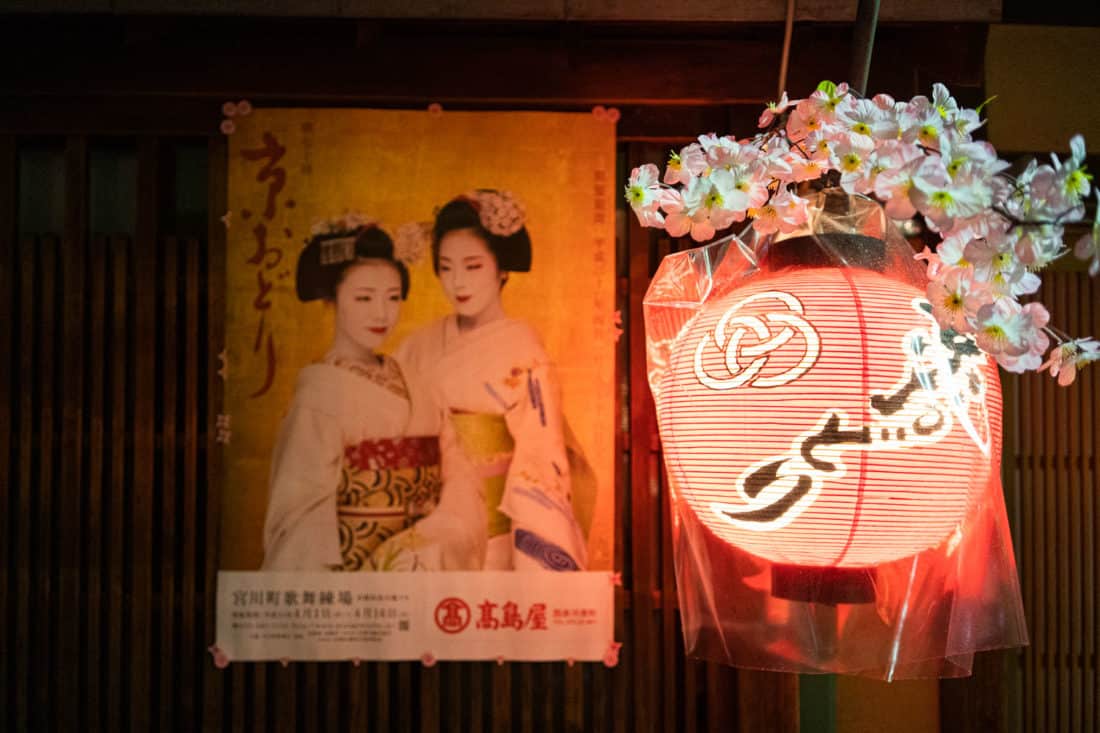
Geisha (or geiko) are one of the most fascinating aspects of Kyoto. These professional entertainers are highly skilled in traditional Japanese arts and wear elaborate outfits that belong to another time.
It’s exciting to glimpse geisha as they slip into the teahouses of Gion, but it’s even better if you can watch them perform.
Every year in April the geisha districts put on spectacular dances where you can see dozens of geiko and maiko (apprentice geisha) dancing, acting, singing, and playing traditional instruments.
They are stunning shows and I loved getting a closer look at those extravagant kimono and hairstyles.
Don’t miss a show if you’re visiting in April—it’s one of the best things to see in Kyoto.
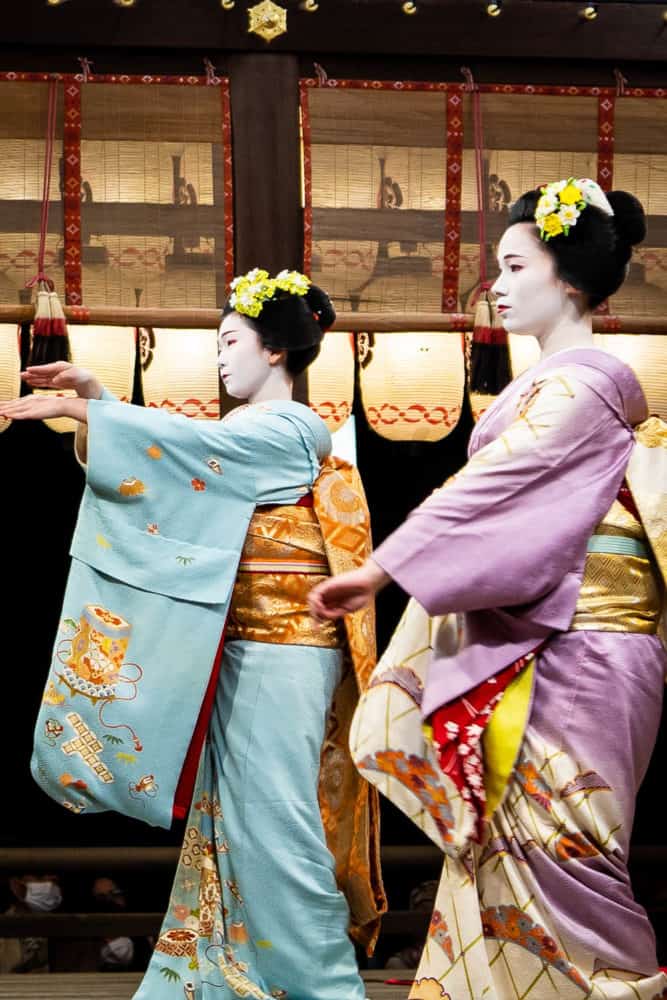
The Miyako Odori in Gion is the most famous, but we went to the nearby Kyo Odori in our neighbourhood Miyagawacho instead where there were very few tourists. See my Kyoto cherry blossom guide for more details.
In autumn, the Gion Odori is held from 1 – 10 November and we found it just as beautiful (if busier with tourists). We bought tickets a few days in advance from the Gion Kaikan Hall where it is held.
You can also look out for local festivals that include a geisha dance. We saw one as part of the Higashiyama Hanatoro Festival in March.
25) Geek Out at Kyoto International Manga Museum
If you are interested in manga (comics) culture, the Kyoto International Manga Museum is the ideal rainy day destination.
There’s a small exhibition looking at the role manga has played in Japanese culture, but mostly there are just lots and lots of manga comics and graphic novels.
The collection houses 300,000 volumes, and although they are mostly in Japanese, they have translations into many other languages, too.
Throughout the museum you’ll find towering bookshelves and geeky kids quietly reading.
Details: 900 yen entry fee. Open 10.30 am – 5.30 pm. Closed on Wednesdays. Karasuma-Oike is the nearest subway station.
26) Learn a Traditional Japanese Skill
As the home of traditional Japanese culture, there are many opportunities in Kyoto to learn more about the arts and try a unique activity.
We’re adding these fun things to do in Kyoto to our list for our next visit:
- Samurai Experience – Wield a real katana (Japanese sword) and learn about Zen and bushido (the moral code of samurai) in a 250-year-old samurai residence.
- Itajime Shibori Scarf Class – Learn the oldest dyeing method in Japan and take home a scarf you’ve made.
- Ninja Training Dojo – Learn ninja skills including how to use ninja weapons.
- Calligraphy Workshop – Make your own silkscreen-printed kanji t-shirt in this private calligraphy workshop.
Kyoto is best reached by train.
If you fly into Kansai International Airport (KIX), the Airport Express Haruka train to Kyoto takes 1 hour 20 minutes.
If you fly into Tokyo, you can take the shinkansen (bullet train) to Kyoto in 2 hours 15 minutes on the fastest train.
If you’ll be visiting a few other places in Japan, it’s well worth considering a Japan Rail Pass . It usually saves you money and makes travel easy as you just hop on the train.
Read my post on whether a Japan Rail Pass is worth it for more details.
The Japan Travel by Navitime website or app is the best way to check train times and prices.
Getting Around Kyoto
We love to walk as much as possible in Kyoto as we often discover hidden spots along the way.
Cycling is also great along the Kamo River, but I wouldn’t venture up to the main sightseeing areas of Higashiyama or Arashiyama as they’re too hilly and crowded.
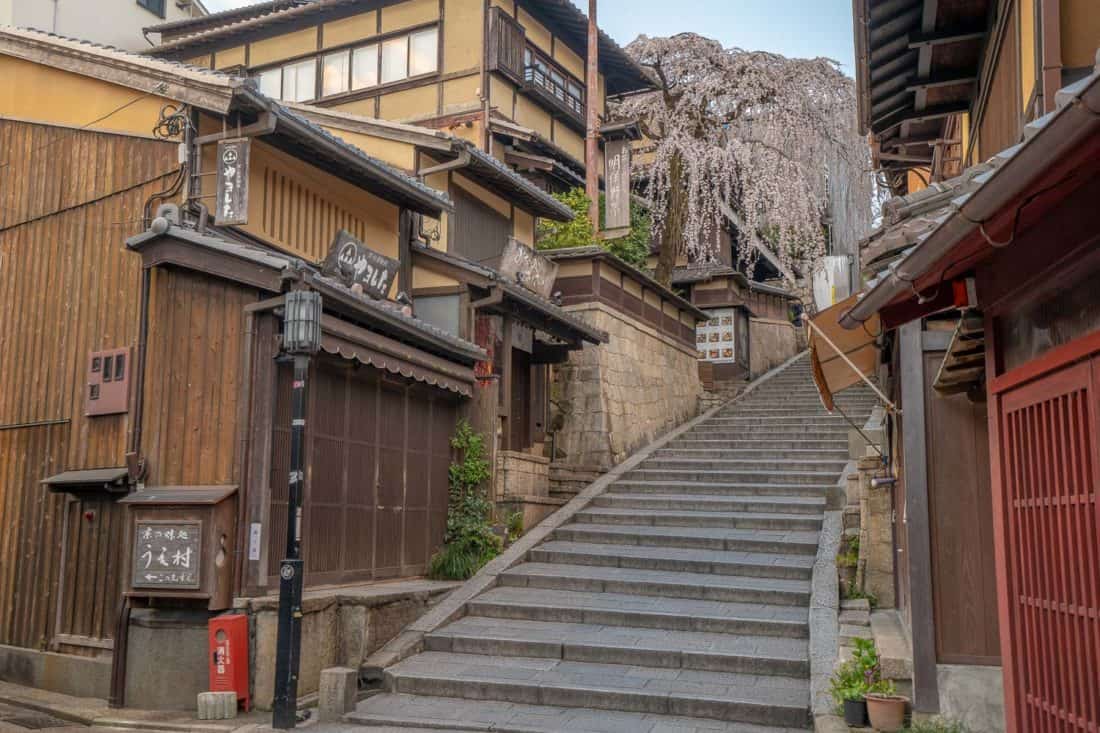
The public transport system isn’t brilliant and you’ll need to take a mix of trains, subway, and buses to get to every part of the city. A prepaid ICOCA card can be used on all of them.
We use Google Maps for public transport routes and directions.
Life will be much easier if you have a data plan on your phone—a Japan e-SIM by Airalo is the easiest way to get affordable data. You can set it up before you arrive and it doesn’t require a physical SIM card (so you can keep your home SIM in your phone).
Taxis can be convenient for out of the way locations and are much faster than the buses (which can also be crowded).
Drivers don’t usually speak English so it’s best to have your destination written down in Japanese (or show the Google Maps listing) unless it’s a well-known sight.
At Kyoto Station there’s now a foreigner-friendly taxi stand—the drivers speak English and accept credit cards.
Yes, Kyoto is absolutely worth visiting! It should be top of your list of places to visit in Japan.
It’s a wonderful mix of traditional culture, stunning temples, beautiful gardens, delicious food, and interesting activities.
I hope the ideas in this post will help you love Kyoto as much as we do! There can be an overwhelming amount to do in the city, but don’t try to see it all.
Choose a few activities from each of the sections above and you’ll have an amazing Kyoto trip that includes some classic spots as well as more peaceful sights off the beaten track.
Read more of our Kyoto and Japan travel tips.
- 14 Stunning Places to See the Cherry Blossoms in Kyoto
- The 16 Best Vegetarian Restaurants in Kyoto
- The Ultimate Guide to Kyoto Temples and Shrines
- 14 Best Day Trips from Kyoto
General Japan Tips
- Planning a Trip to Japan: Dos and Don’ts
- 16 Unmissable Places to Visit in Japan
- Two Weeks in Japan: A Detailed Itinerary
- 54 Best Things to Do in Japan for an Unforgettable Trip
- Is a Japan Rail Pass Worth it?
- Where to Stay in Japan: The Ultimate Guide to Accommodation
- Vegetarian Survival Guide to Japan
More Japan, Direct to your Inbox!
Enjoyed this post? Pin for later!
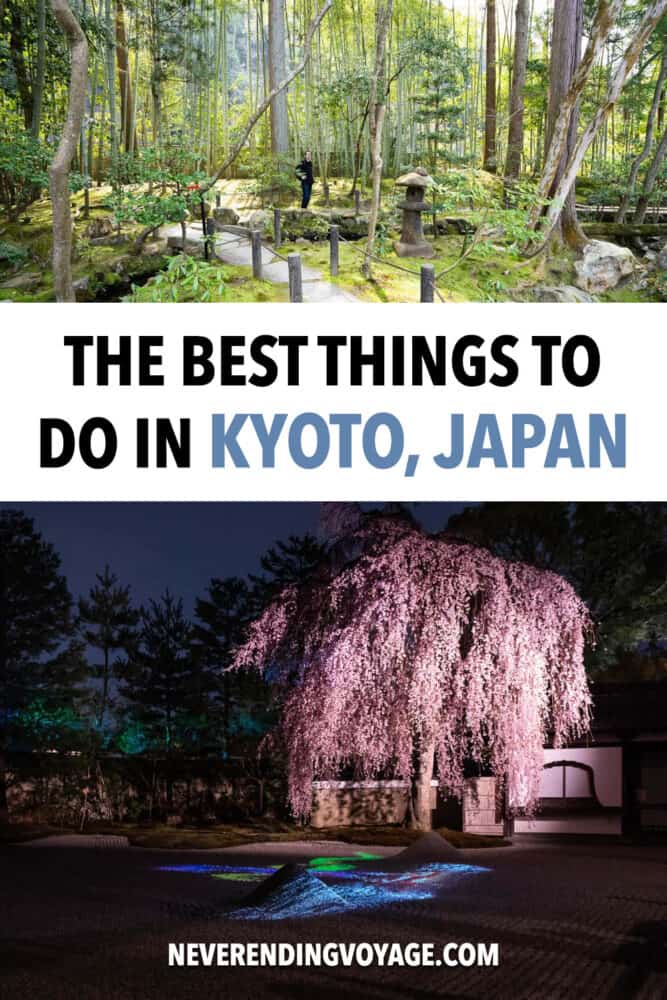
28 Comments
Thank you for the details of your trip. If I may ask, is there a place you can recommend where to rent kimono’s?
Reply ↓
I don’t have any personal experience, but if you want to book online and pick up downtown (near the Ju An Tea Ceremony that we enjoyed) there’s Kyoto Kimono Rental Yumeyakata .
Or there are loads of shops (no booking needed) in Gion (near Yasaka Pagoda) such as Rental Kimono Rose.
THANK YOU SO MUCH FOR THIS AMAZING GUIDE IT IS VERY HELPFUL
Wow! Thank you so much for this wonderful guide! It’s so beautifully written, and the attention to detail is much appreciated. I don’t have to look any further for my Kyoto plan.
Thank you Bharath and enjoy Kyoto!
Thank you for such a brilliant detailed post. I’ve been to Kyoto a few times and am here again currently! I was looking for other things to do aside from the usual recommendations and this post has given me lots of ideas :)
It’s been many years since I’ve visited Japan and though I went 4 times (with another one on the way!) there’s still more to explore. Thanks for the pointers (and reminders) for some good places to spend time. The photos are beautiful and the links are so helpful. Thank you so much for putting this together (and I completely agree re Arashiyama).
First Japan guide I’ve seen that mentioned eSim. I HAD NO IDEA about these. Thank you very much.
Definitely easier than the pocket wifis that everyone recommends!
Thank you. This gives so much information :-)
Amazing guide! Thank you for putting something so comprehensive together. Looking forward to using your list when we visit this weekend.
Enjoy Kyoto, Randy!
Thank you for putting so much time and energy into creating this excellent resource!
Aw, thank you Ryan! We love Kyoto and are lucky to have had so much time there.
Thank you for providing this information on places to visit. I plan to return to Kyoto once we are able to travel again. I loved it!! It is an amazing place to visit.
I am taking my Mom to Japan, I must confess, when ran across ur site, I must say, it was my 1st and last sop during my trip research process. your attention to detail and useful information is overwhelming, Thank you so much. I am a fan.
Thank you so much, Carlos! I’m glad you found it useful and hope you don’t have to wait too long to visit Japan.
Ugh it’s on my bucket list to visit Japan during cherry blossom season! Maybe next year!
Your article is brilliant, so informative. I’m planning a trip to Japan next summer and I’m torn between an extra day in Kyoto or a day trip to Nikko (when in Tokyo). What would you recommend? We would have 2 and a half days in Kyoto if we kept in the Nikko day trip but I’m starting to think I would prefer the extra day in Kyoto. Thank you.
I would probably go for an extra day in Kyoto – there’s just so much to do there. Enjoy!
If staying for a week in Kyoto, would you recommend hiring a car, or is driving too stressful?!
I think driving would be too stressful and it’s so easy to get around by train, it’s not really worth it. We spent a month in Kyoto and never felt the need for a car.
We went some time ago and I found by chance the railway museum there. Very interesting collection of equipment. Within walking distance of the regular railway station. The locomotives seemed to be a mixture of US and European designs.
We’ll have to check that out next time, thank you!
Excelent tips, will make my trip to Japan much enjoyaBle. Thanks a lo, will continúe to check the other articles
WOW, Kyoto is just beautiful, I will love so much to go and know this place!! The scenes are very beautiful, the great landscapes that you have in your pictures are amazing! I will love to go and take a lot of pictures!
Great pics. We spent 4 weeks in Kyoto a few years back and saw most of these temples. I like what you say about the tourists and how to avoid them…we were surprised by just how many tourists there were (all fighting to take photos…but politely because they’re Japanese :) ). And also about the local transport which, surprisingly, is not very good. Many of the temples on the foothills of the city and some only accessible by city bus which sometimes made for some long journeys.
We also did the Ninja training. Lots of fun, would recommend.
I would also mention a visit to the train station (Kyoto Station). Incredible building and some great views over the city.
And you’re very right about the Kamo river. Nice place for a walk or a jog and best of all free. We spent a lot of time walking it.
Frank (bbqboy)
Yes, Kyoto Station is lovely! Glad you enjoyed your stay as much as we did!
Leave a Reply Cancel reply
Required fields are marked *. Your email address will not be published. By clicking the Submit button, you give consent for us to store your information for the purposes of displaying your comment and you accept the terms of our Privacy Policy .
This site uses Akismet to reduce spam. Learn how your comment data is processed .
We’re in Myanmar right now and it’s SO epic… click here to follow along on Instagram.
- Meet the Team
- Work with Us
- Czech Republic
- Netherlands
- Switzerland
- Scandinavia
- Philippines
- South Korea
- New Zealand
- South Africa
- Budget Travel
- Work & Travel
- The Broke Backpacker Manifesto
- Travel Resources
- How to Travel on $10/day
Home » Asia » Japan » Kyoto
20 BEST Places to Visit in Kyoto (2024)
Kyoto is Japan’s ancient capital and is often described as one of the most beautiful in the world. And after you’ve spent some time there, you’ll understand just how it got that title.
There are endless amazing and historic places to visit in Kyoto, amazing food, and an incredible culture to explore. So, no matter how long you’re spending in the city, you won’t be short of things to see and do.
But there’s a downside to all of this beauty. Kyoto can feel like a very foreign city sometimes, and this can make it a little intimidating to visitors. It’s so old that it can be difficult to navigate if you don’t speak Japanese because it grew in a time long before people traveled for fun.
If you’re concerned about traveling in Kyoto, you shouldn’t be. With our easy guide, you’ll be able to find all the places you’re most interested in and go home with priceless memories and lots of great photos to put on social media!
Need a place quick? Here’s the best neighbourhood in Kyoto:
These are the best places to visit in kyoto, faq on the best places to visit in kyoto, final thoughts on the coolest places to visit in kyoto.
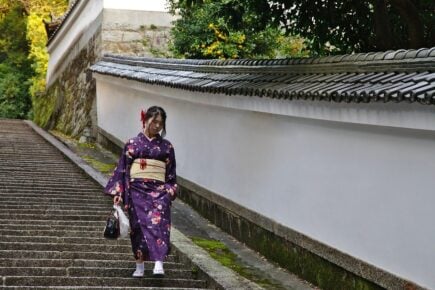
Southern Higashiyama
Southern Higashiyama is home to many of Kyoto’s most famous and popular tourist destinations. If you haven’t been to Southern Higashiyama, you haven’t been to Kyoto!
- Visit glorious well-known temples like Sanjusangen-do, Kiyomizu dera temple, Kennin-ji, and Chion-in.
- Try and spot geishas in Hanami-koji .
- Be wowed by the cherry blossom at Shimbashi (in season).
I know you can’t wait to get started so get yourself a matcha green tea latte while you peruse where to stay in Kyoto and learn all about the BEST neighbourhoods in Kyoto and the accommodation options they offer.
Book yourself an Airbnb next to your favourite attractions in Kyoto! Now, onto the bamboo forests…

Unlock Our GREATEST Travel Secrets!
Sign up for our newsletter and get the best travel tips delivered right to your inbox.
#1 – Kinkaku ji Temple & the Golden Pavilion
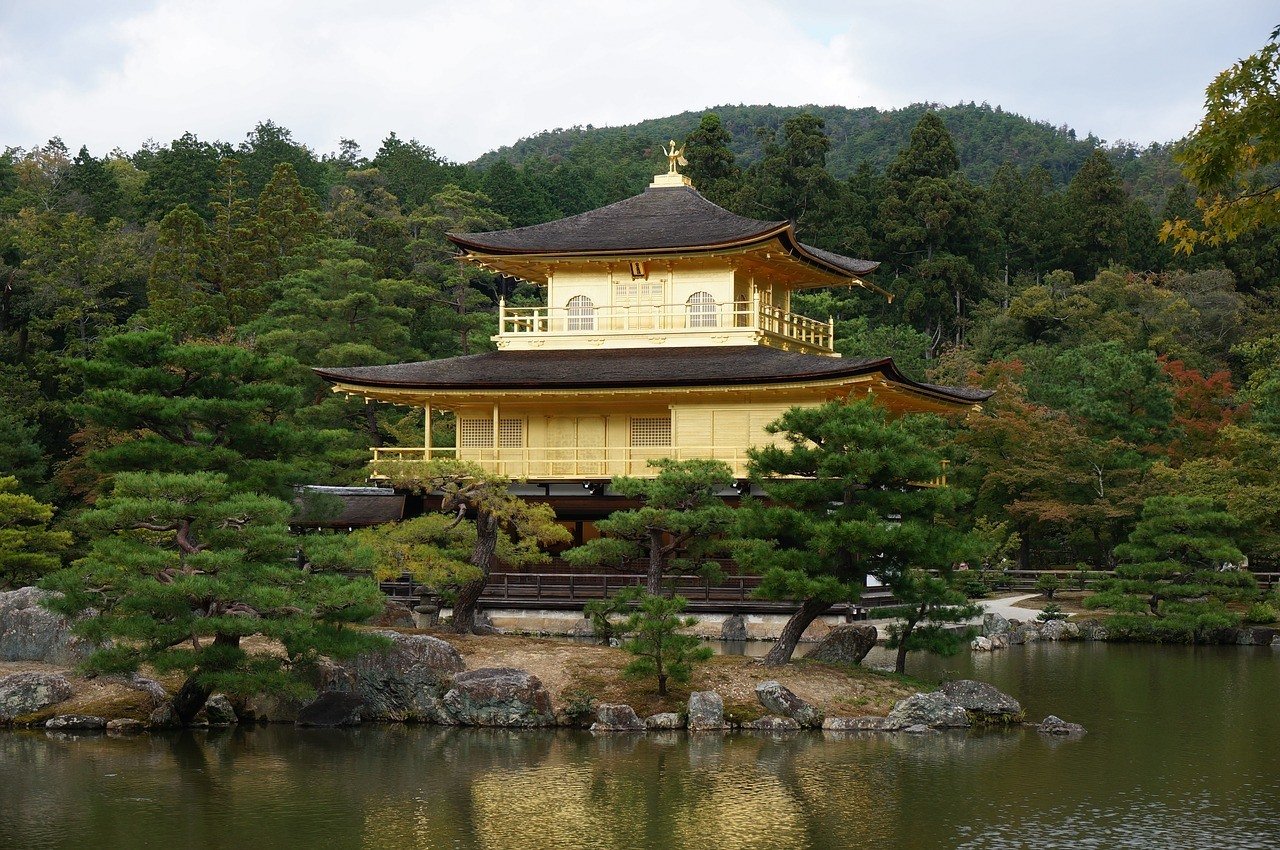
- One of the most instantly recognizable landmarks in Kyoto.
- You’ll be able to take some amazing pictures of this golden pavilion as you clamber around the lush gardens.
- This site gets really busy in tourist season, so try going in the off-season for a really amazing experience.
Why it’s so awesome: This temple is one of the most famous temples in Kyoto and it’s easy to see why. It’s a golden pavilion surrounded by gardens that are perfectly designed to invoke serenity and peace. The site was once built as a retirement home for a famous shogun and was made a temple after his death. Get this one on your Kyoto itinerary .
What to do there: This site is amazing at any time of day or year, but if you want to see the sun gleaming off the gold leaf that wraps around this building then go in the early morning. This will also allow you to get there ahead of the crowds because this Kyoto must see gets incredibly busy. The area is also incredibly beautiful in autumn, when you can see the building backlit by fire red trees.
#2 – The Fushimi Inari taisha Shrine – A must visit place to visit in Kyoto on the weekend!
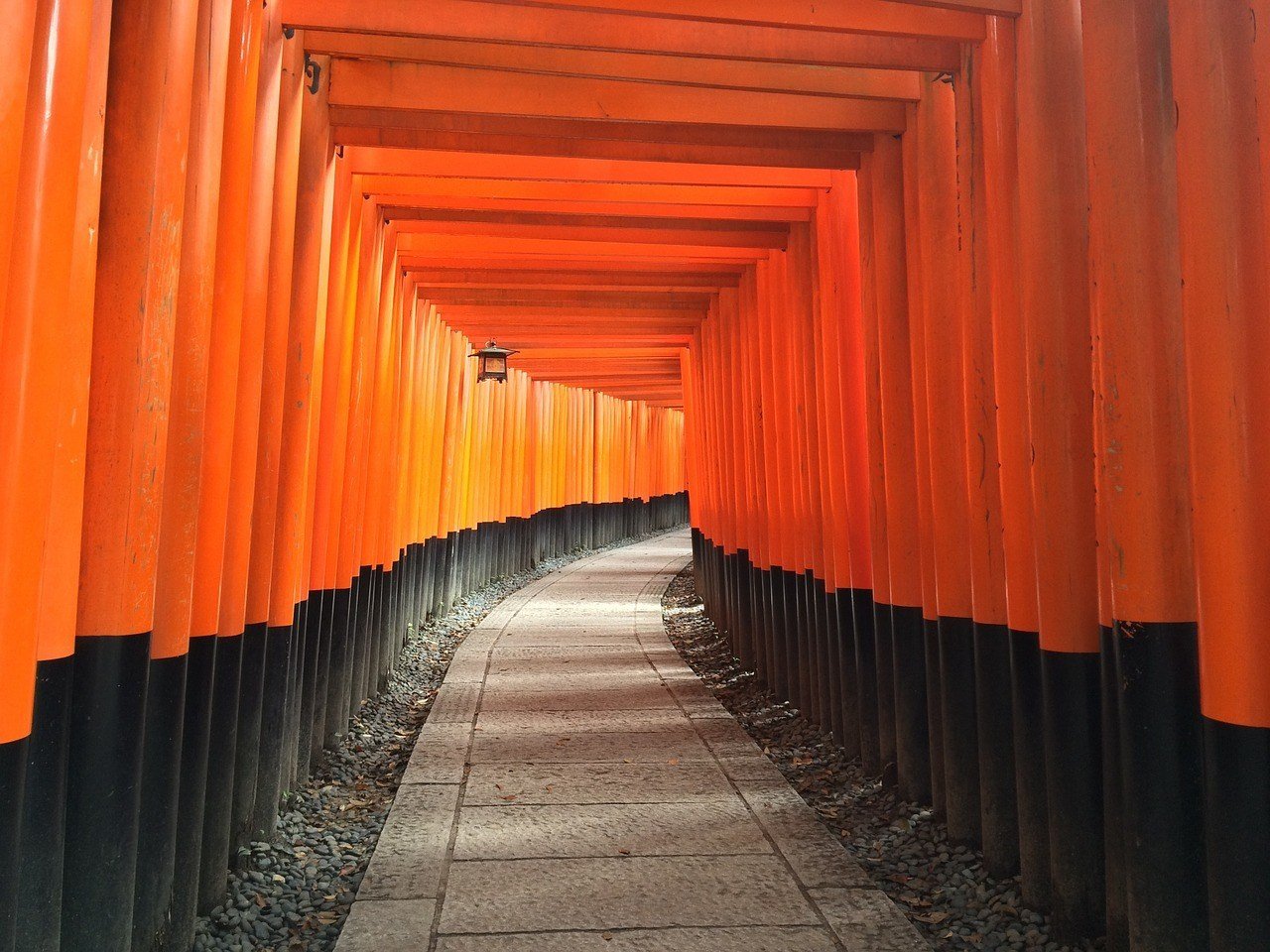
- Made famous in the book and movie, Memoirs of a Geisha.
- A stunningly beautiful and haunting set of trails that weave through the mountain.
- You’ll need to be physically fit to make it up the walkway, but the views and the ornate shrines are worth the effort.
Why it’s so awesome: If you’ve ever seen Memoirs of a Geisha and marvelled at the scenes where the characters walked along pathways lined with bright red pillars, then the Fushimi Inari shrine is where those images were shot. This Kyoto must-visit attraction is the city’s most iconic location and includes thousands of the red torii gates set along trails that wind their way up the mountain.
While it is an epic spot for Instagram photos, it is in fact a working shrine, dedicated to the shinto god of rice, Inari. You will see many fox statues around the site because foxes are said to be his messengers.
What to do there: You’ll need most of an afternoon to explore this site . The trails are surrounded by a network of shrines and you’ll get amazing views at key spots up the mountain. Make sure you spend some time at the Yotsutsuji Intersection, where you’ll be able to take some amazing pictures of Kyoto.
You should note that this is an incredibly popular spot for photos and if you want to get a nice shot without anyone in the background, that’s not gonna happen. Be expecting large crowds throughout the entire day and to be waiting a long time for people to move out the way for you to get a nice photo. Personally, I thought the busy atmosphere of this place takes away the magic.
I’ve come up with an EPIC Fushimi Inari travel guide to help you make the most out of your Japanese journey. Don’t miss it!
#3 – Kiyomizu dera Temple – A beautiful and scenic place to check out in Kyoto
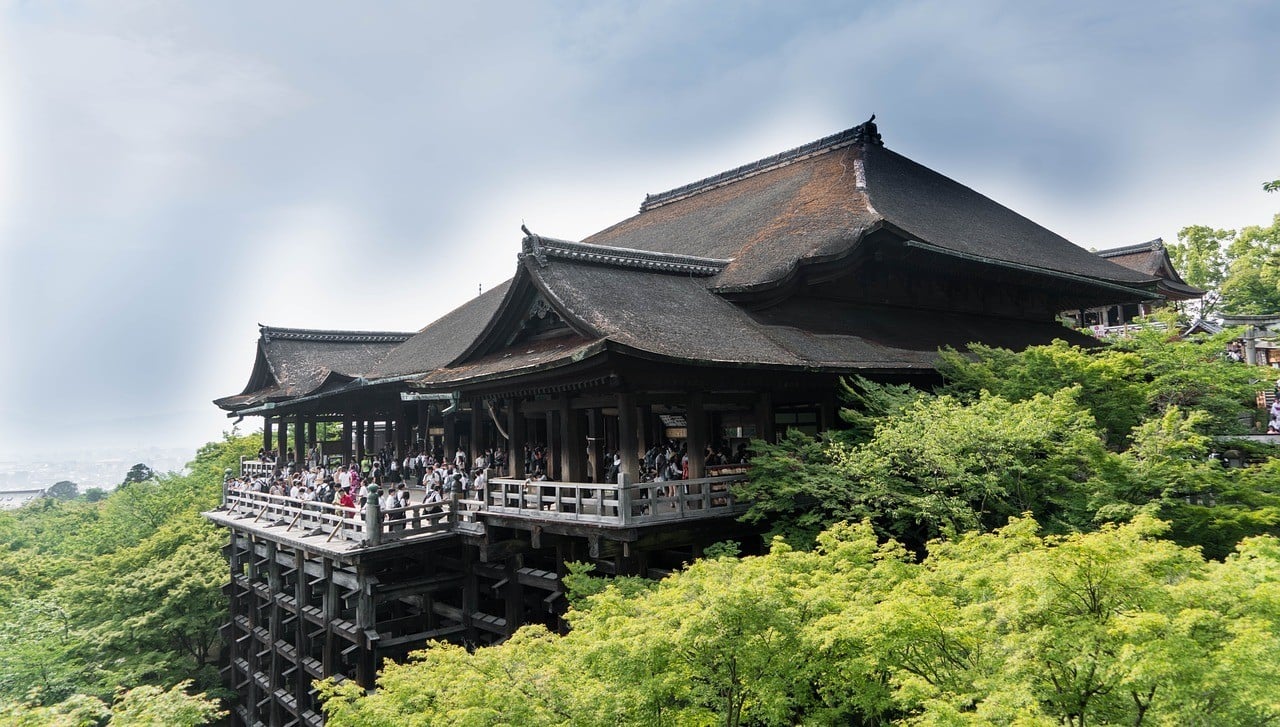
- While you’re visiting Kyoto, make sure you stop by this site for some peace and quiet.
- This is a UNESCO World Heritage Site, so be respectful!
Why it’s so awesome: This UNESCO World Heritage Site is set at the top of a hill and is surrounded by cherry trees, which is why it’s widely considered to be one of the most beautiful sites in the city. It’s also known as a magical temple, where you can find true love or drink from streams symbolizing love, success, or a long life.
What to do there: This is a beautiful, serene spot to spend some time in. When you arrive at the Jishu Shrine, try to walk between two stones with your eyes closed in front of it. This apparently will allow you to find your true love.
You should also spend some time at the Otowa Waterfall, which is divided into three streams representing love, success, and longevity. Drink from whichever stream symbolizes your greatest wish and really become a part of the mysticism that surrounds this beautiful site.
#4 – Kyoto Tower
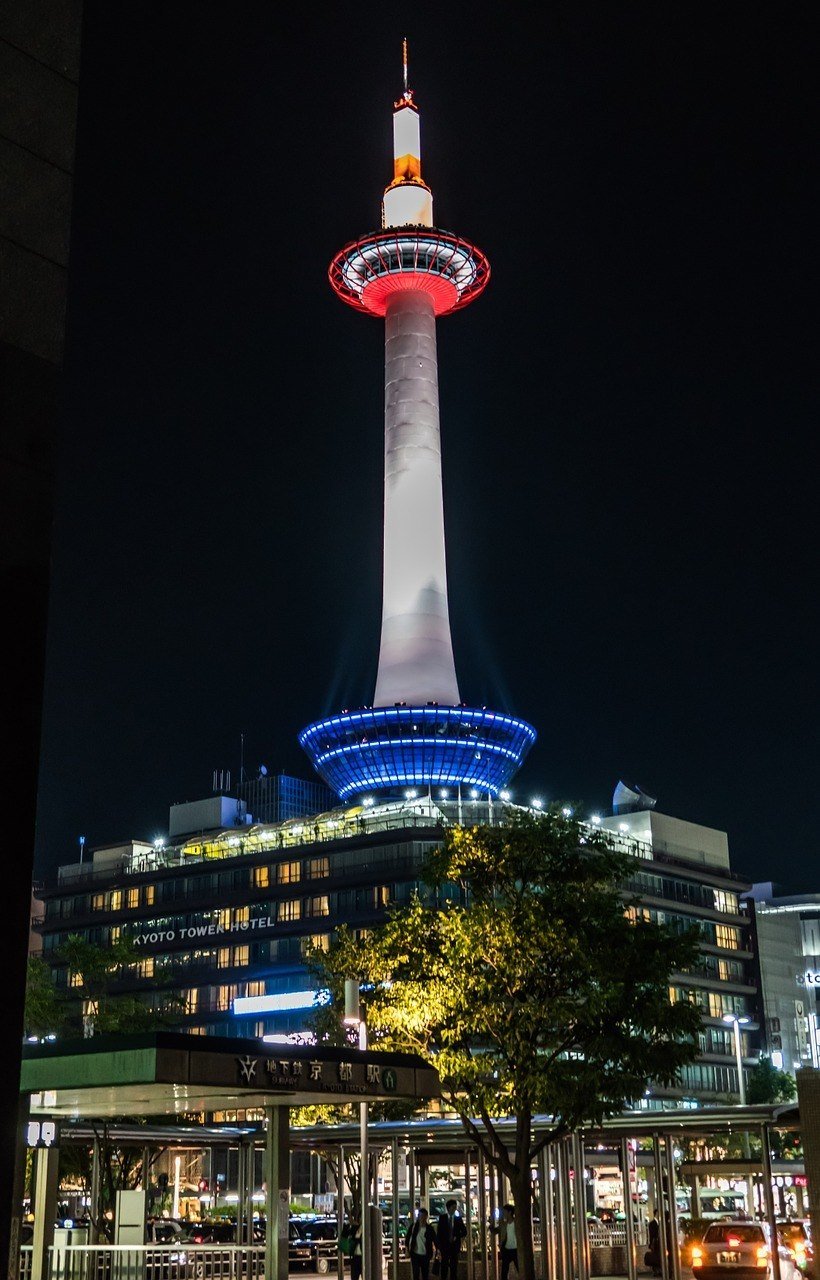
- You’ll get panoramic views from the top of Kyoto Tower and be able to see the whole city and all the way to Osaka.
- Go at sunset for the best views.
Why it’s so awesome: You may think by now that Kyoto is all temples and shrines, but it’s also a functioning modern city. The Kyoto Tower is the tallest in the city and offers incredible views that extend all the way to the next city!
What to do there: Go up the tower at sunset if you want to see the city against the coloured sky and make sure you spend some time exploring the telescopes and touchscreen at the top of the building. They highlight the best places in Kyoto for tourists, and you may get some new ideas for your trip from them!
Get A Local Kyoto Guide!
I’m sure you agree that our things to do in Kyoto guide is awesome. However, if you really want to get under the skin of Kyoto, then why not get yourself a tailor-made itinerary from a local Kyoto guide?! Via Hero can connect you with local Kyoto guides who will custom design a perfect itinerary for you.
#5 – Pontocho – A must-see for foodies!
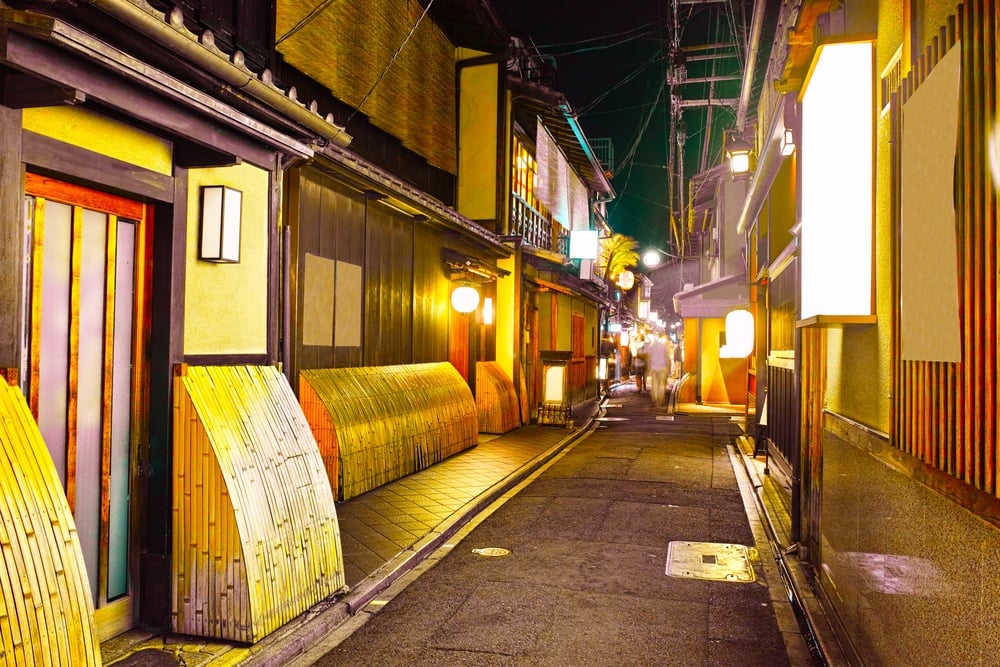
- You’ll find the best places to eat in Kyoto in this area!
- Don’t just follow your guidebook, the best restaurants are usually small and don’t have English menus.
Why it’s so awesome: Pontocho is a lively alley that’s lined with restaurants that offer a range of Japanese foods from fine dining experiences to snack foods that should be on everyone’s backpacking in Japan itinerary. This range and the quality of the food makes it one of the most popular places to visit in Kyoto for locals and tourists alike.
What to do there: The best restaurants in this area probably won’t have English advertisements, so ignore your guidebook and just explore. Look for a restaurant that smells and good and has lots of locals in it, because that’s where the best food will be. If it’s a hot night, try to choose a restaurant that overlooks the river, as you’ll be able to eat your meal in slightly cooler air.
#6 – Kyoto Imperial Palace
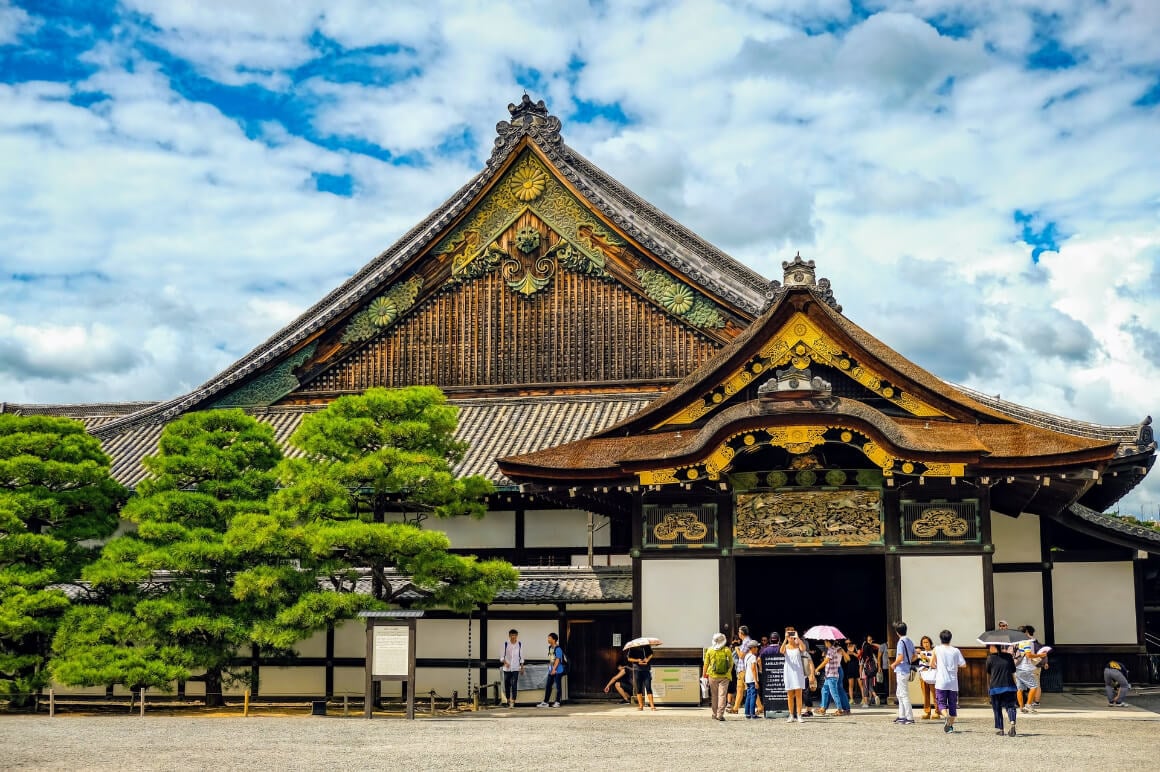
Why it’s so awesome: As one of the most important sites in Kyoto, Japan, the Kyoto Imperial Palace leaves everyone who visits it in awe. As the once former residence of the Emporers of Japan before they moved to Tokyo, you can be sure to see ornate detailing and gorgeous interiors throughout this centuries-old landmark.
What to do there: By taking a walking tour of the Imperial Palace, you can learn all about the history, marvel at the intricacies of the design and learn about the importance of the residence of the shogun.
For culture vultures and lovers of Japanese history, you cannot miss this attraction.

A new country, a new contract, a new piece of plastic – booooring. Instead, buy an eSIM!
An eSIM works just like an app: you buy it, you download it, and BOOM! You’re connected the minute you land. It’s that easy.
Is your phone eSIM ready? Read about how e-Sims work or click below to see one of the top eSIM providers on the market and ditch the plastic .
#7 – Yokai Street – Quite the quirky place in Kyoto!
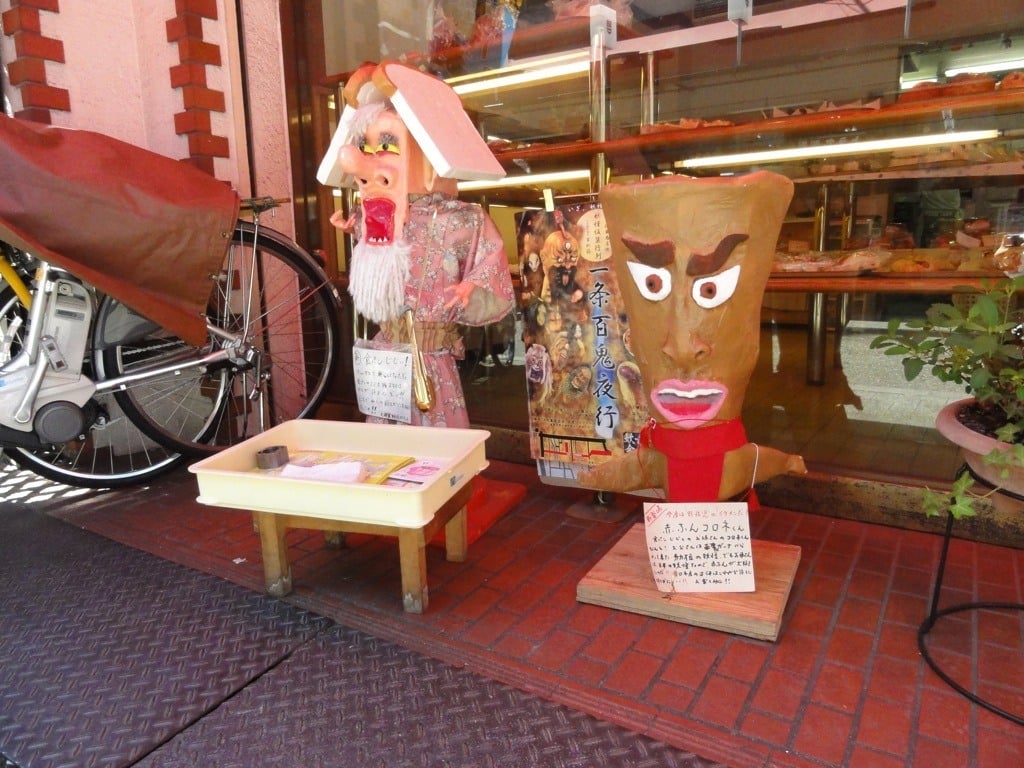
- This street reveals the more unusual side of Japanese culture.
- Make sure you take your camera to capture images of the imaginative little statues outside the businesses!
Why it’s so awesome: Japanese culture is incredibly detailed and unusual, and this small street reveals just how unique it really is. It’s a commercial street that celebrates local folklore, which includes the yokai, strange beings from Japanese legends. Some yokai are good, others bad, and some are inanimate objects that come to life. These ideas are explored by the business owners in this street, who all have small statues outside of their shops celebrating these stories.
What to do there: This street isn’t a tourist area and the clientele is mostly locals. The statues are just there to acknowledge Japan’s culture and past and to introduce it to curious passers-by. It’s located near the shrine on Imadegawa Dori and each display is different in a nod to the incredible variety in the yokai stories.
#8 – Sagano Bamboo Forest
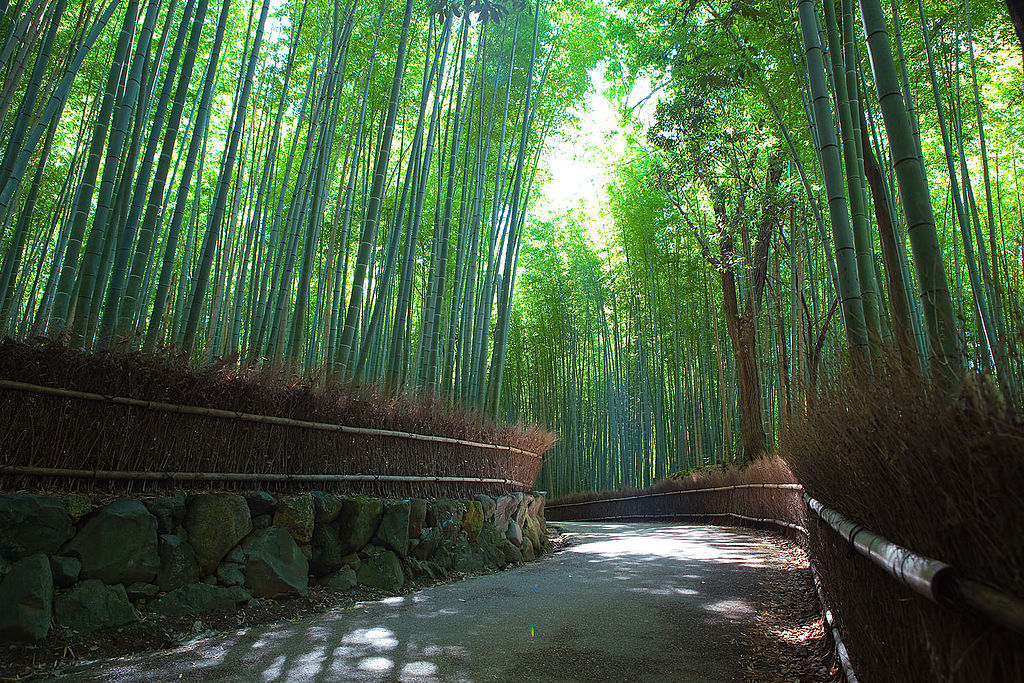
- If you’re visiting Kyoto and looking for little nature, then this is a great place to visit.
Why it’s so awesome: This site is located about 30 minutes from Kyoto’s city center and it’s a surprise to see so much nature so close to the city. The wooden paths weaving through huge bamboo stalks are a Kyoto must do and are the perfect place to wander and take in one of nature’s miracles.
What to do there: This site is very popular at the moment, so it often gets crowded with tourists. Fortunately, there are numerous paths through the bamboo, which means that you’ll be able to find a quiet spot to just stand and listen. Or, if you’re legs are feeling tired, one of my favourite things to do here is to take a rickshaw ride through the bamboo forest, which is a really zen activity.
The sound of the bamboo, the creaking and rustling, and twisting of wood, is one of Japan’s most important soundscapes, and you’ll never forget those sounds once you’ve heard them. It’s a strangely meditative sound, which is why this is one of the most unusual things to do in Kyoto.
#9 – Otagi Nenbutsu-ji Temple – One of the most underrated places to see in Kyoto
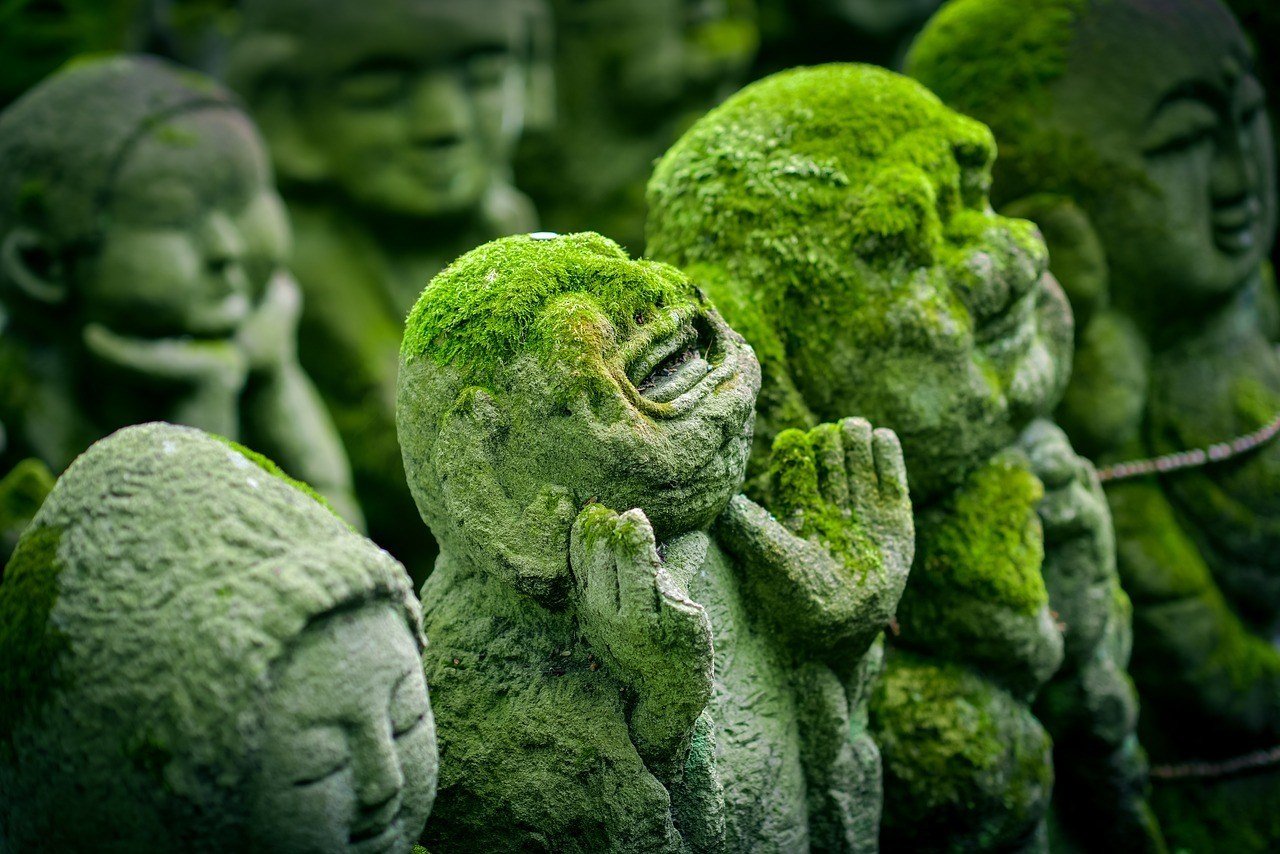
- A peaceful Zen Buddhist Temple that’s a little off the beaten track.
- A great choice if you’re looking for Kyoto vacation ideas where you can get away from the crowds at the more popular attractions in Kyoto.
Why it’s so awesome: This remote Buddhist zen temple is located on the top of a hill and surrounded by more than 1,000 stone sculptures. It’s an oasis of calm that encourages meditation and deep thought that might not have been there if it weren’t for the work of one man.
The temple was destroyed in the 1950s by a typhoon and painstakingly rebuilt by one of its priests with the help of the locals. They also created the carvings that surround the site.
What to do there: Pay close attention to the stone sculptures that surround the zen temple. They depict Buddha’s disciples and line the path like moss-covered guardians. They were created by the priest and the locals, so the small faces are unique and incredibly expressive.
#10 – Nishiki Market – A great place in Kyoto if you love to shop!
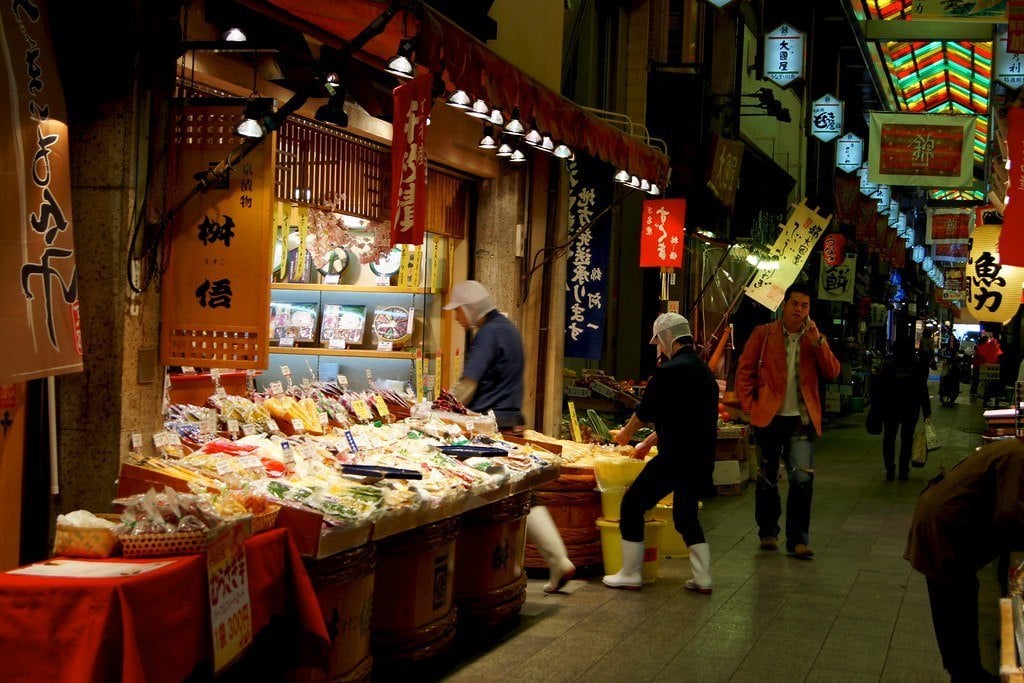
- A great place if you love to shop and even if you don’t!
- Make sure you sample all the food on offer, as Japan has one of the greatest snack cultures in the world.
Why it’s so awesome: The Nishiki market has enough shops, stalls, and food options to fill an entire day of your time! That’s why it’s one of the most popular attractions in Kyoto for tourists and locals alike. It’s also a good place to good on hot or rainy days as the entire area is shaded to keep you safe from the elements.
What to do there: Browse the stalls for souvenirs and just take in the action. This is the perfect location for some people watching as you’ll see everything from local families to crowds of tourists. Make sure you bring your appetite with you too, as the stalls offer a range of tasty snacks from fresh seafood to dumplings and yakitori.
#11 – The Philosopher’s Path, the Best Place to Visit for Cherry Blossoms
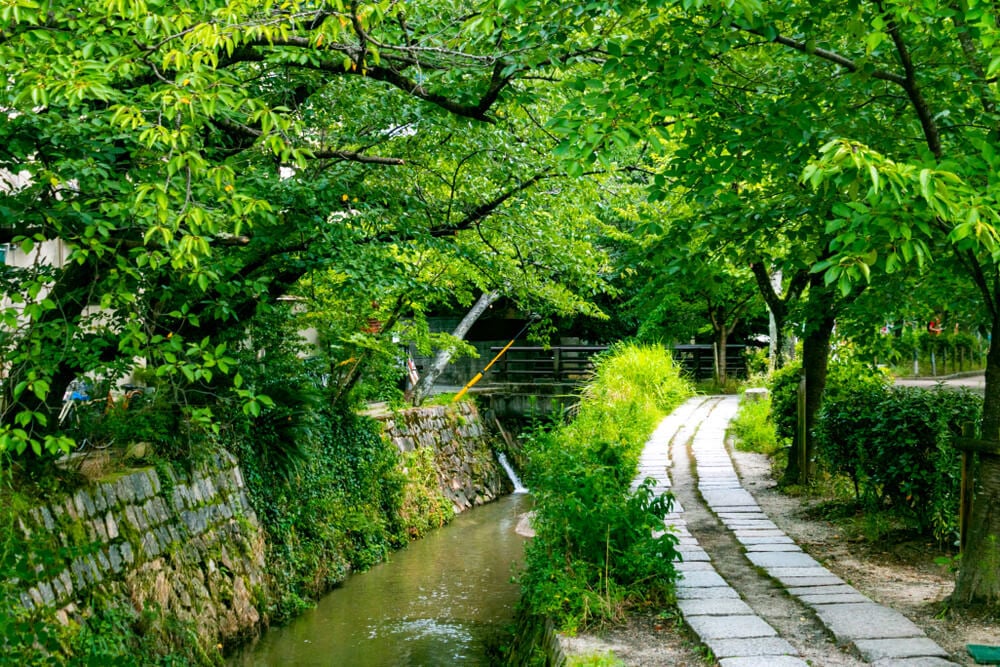
- One of the most meditative walks you’ll ever take.
- This path is a Kyoto must do and is popular with locals and tourists alike.
Why it’s so awesome: The Philosopher’s path winds its way from the Silver Pavilion to the neighborhood of Nanzenji. It’s a long walk if you go the whole way and designed to encourage meditation and peace. You don’t have to walk the whole way but treading in the footsteps of all those who have come before you is a strangely connective experience that shouldn’t be missed.
If you’re visiting during April and you’re lucky enough to be in Kyoto during the time. of the cherry blossom blooms, then this is the place to see them! The Philosopher’s Path is lined with cherry trees that flower a gorgeous pink for one week only. Cherry blossoms are short-lived, so you would be really lucky to witness them.
What to do there: Start wherever you choose and just walk. This is a beautiful part of Kyoto, so there’s plenty to see along the path. It’s also lined with cafes and restaurants, so when you get hungry or thirsty then stop off for something tasty before resuming your walk.
#12 – Maruyuma Park – A perfect place to visit in Kyoto if you are on a budget!
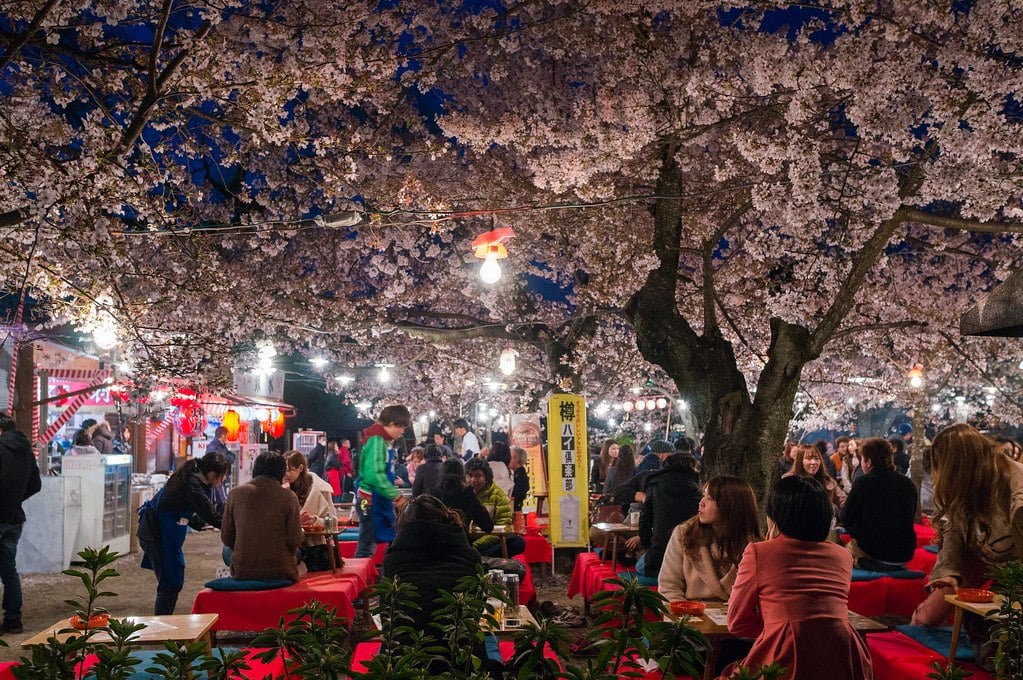
- The perfect place to visit in Kyoto if you need a break from the city.
- This park is a stunning example of Japanese design and form.
Why it’s so awesome: This is one of the most popular parks in the city and it’s a fairly young one as well. Until 1886 it was little more than a weed garden until it was redesigned by Jihai Ogawa, a renowned landscape gardener. The garden is done in a traditional Japanese style with ponds, decorative bridges and statues.
What to do there: If you’re in Kyoto during Japan’s cherry blossom season, then this is the perfect place to see them. It does get fairly crowded at this time of the year as well as noisy, but it’s the perfect place to see this beautiful spectacle. The rest of the year you can relax and have a picnic or explore this beautiful green space. And during festivals, the park is alive with portable food carts that will offer you some of the tastiest snacks you’ve ever tried.
#13 – Higashiyama District – Easily one of the most fun places to check out in Kyoto
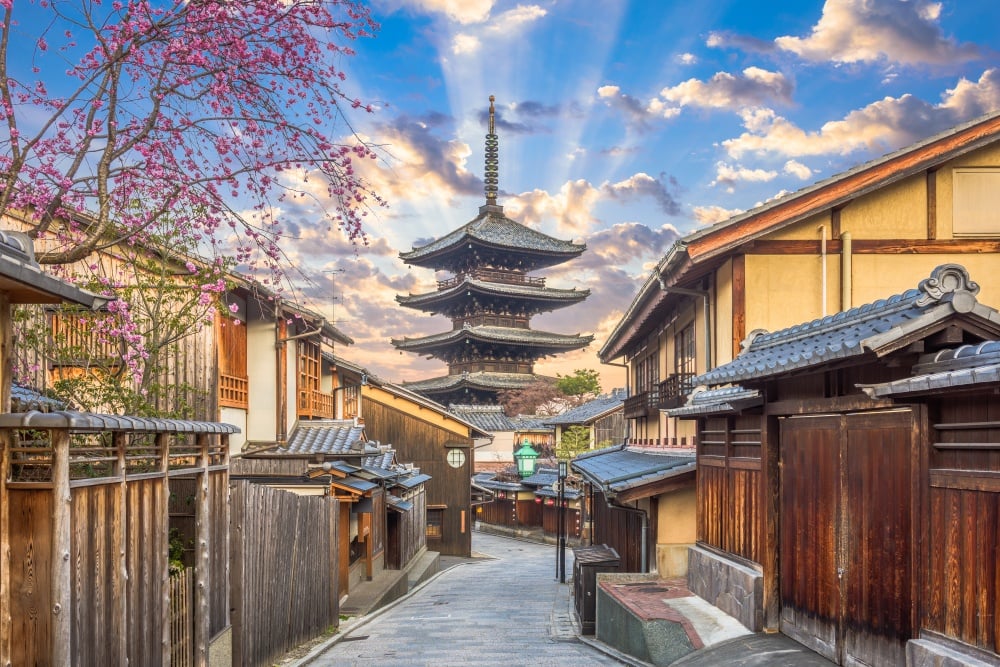
- When you walk through this district, you’ll feel like you’re walking through Japan’s ancient past.
- A great place to put on your Kyoto itinerary if you want to do some shopping.
Why it’s so awesome: This district of Kyoto holds all the age and the majesty that you would expect from such an old city. The streets are narrow and lined with wooden buildings and traditional stores that sell all manner of foods and goods. It’s a popular area for tourists and locals alike, but don’t let that stop you from spending an afternoon in this picturesque district.
What to do there: Put aside an afternoon just to wander. The narrow streets are a maze of dark wood buildings that smell of aged wood and incense, and the vibe and the history behind them will excite your imagination. Make sure you stop by the shops, restaurants and cafes that interest you. You’ll find everything from pottery to sweets and traditional crafts, so it’s a great place to pick up a souvenir to take home with you.

Wanna know how to pack like a pro? Well for a start you need the right gear….
These are packing cubes for the globetrotters and compression sacks for the real adventurers – these babies are a traveller’s best kept secret. They organise yo’ packing and minimise volume too so you can pack MORE.
Or, y’know… you can stick to just chucking it all in your backpack…
#14 – Gion, the Geisha District of Kyoto City
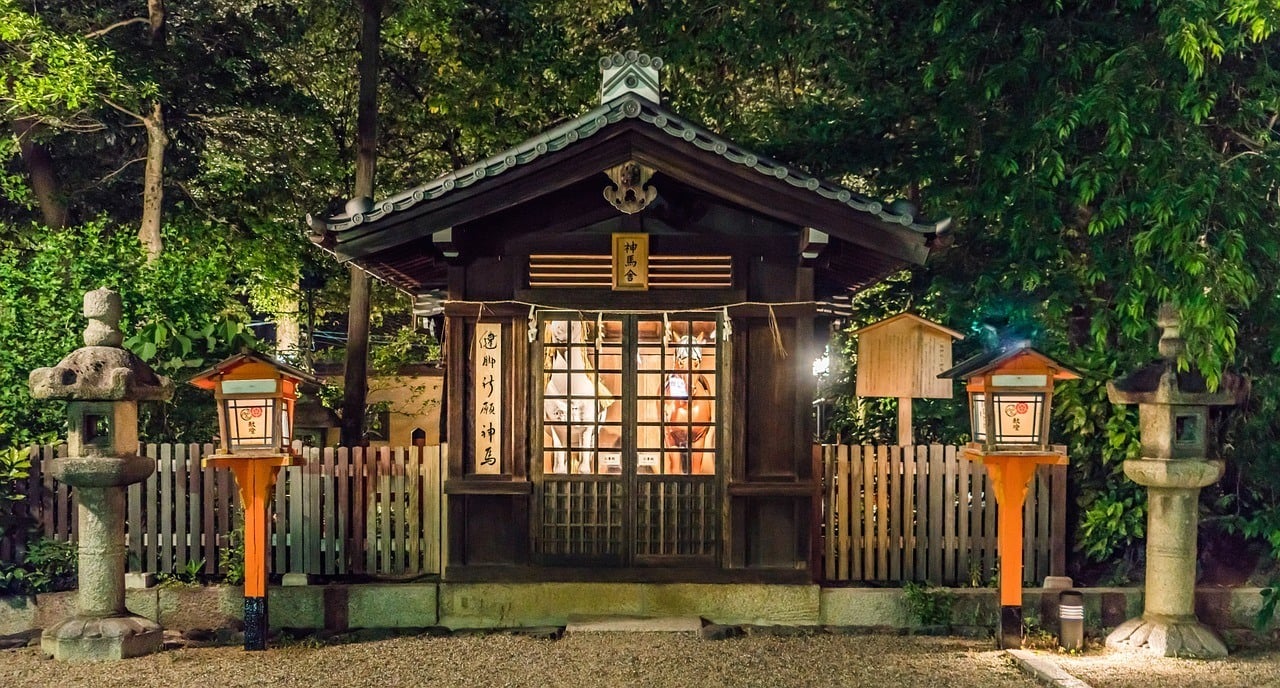
- Home of the famous geishas!
- This area has a variety of great places to eat, shop, and have a meal.
- If you enjoy people watching, this is the area to do it in.
What to do there: When you’re trying to decide what to do in Kyoto City, this is the place to go for inspiration. Gion is home to the famous Geisha bars, close to some of the best zen temples in the city and contains lots of restaurants and traditional tea houses, where you can enjoy a traditional Japanese tea ceremony . There’s always something going on in this area, and you could spend an entire day exploring it and eating amazing foods.
What to do there: Arrive during the day to take full advantage of everything this district has to offer. Have a meal and then rent a kimono and wander the streets in traditional fashion, looking at the traditional crafts and shops. You’ll be able to pick up some great souvenirs in this area and once it gets dark, you might be able to see some geishas hurrying towards their workplaces in traditional garb with cell phones in hand!
One of my all-time favourite things to do in Gion is to enjoy a traditional tea ceremony. In traditional japanese culture, the drinking of tea is not just to quench your thirst but a meditative process. A tea ceremony is one of the most unique things to do in Kyoto and there is no better place to enjoy it than in Gion, the heart of ancient Kyoto.
#15 – Shorenin Temple – An unknown (but awesome!) place to see in Kyoto!
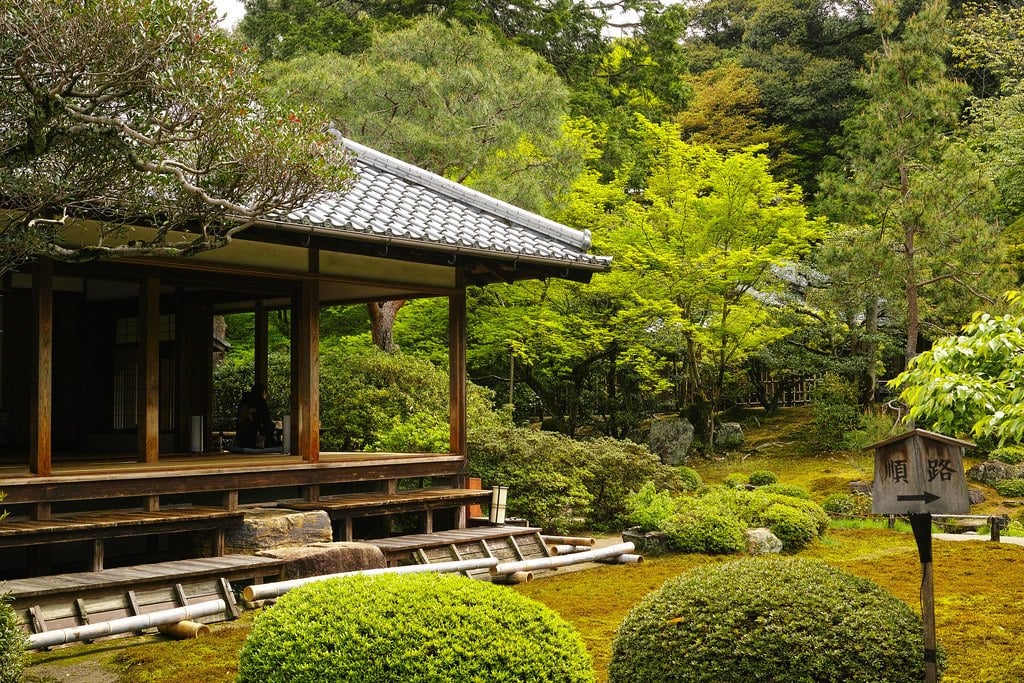
- One of the quieter and most beautiful temples in Kyoto with a great atmosphere.
- The gardens at this temple make it one of the best places to visit in Kyoto for quiet contemplation.
Why it’s so awesome: If you want to explore somewhere that’s traditional but not crowded, then this temple is a great choice. Despite being close to the Higashiyama District, this is one of the quietest temples in the city. It’s also a monzeki temple, which means that its head priest was traditionally chosen from Japan’s imperial family.
What to do there: This is a place of peace and tranquillity, and it’s a great place to go when you need to relax and get your energy back. There are also four gardens attached to the temple which are absolutely stunning and well worth exploring.
#16 – Nijo Castle
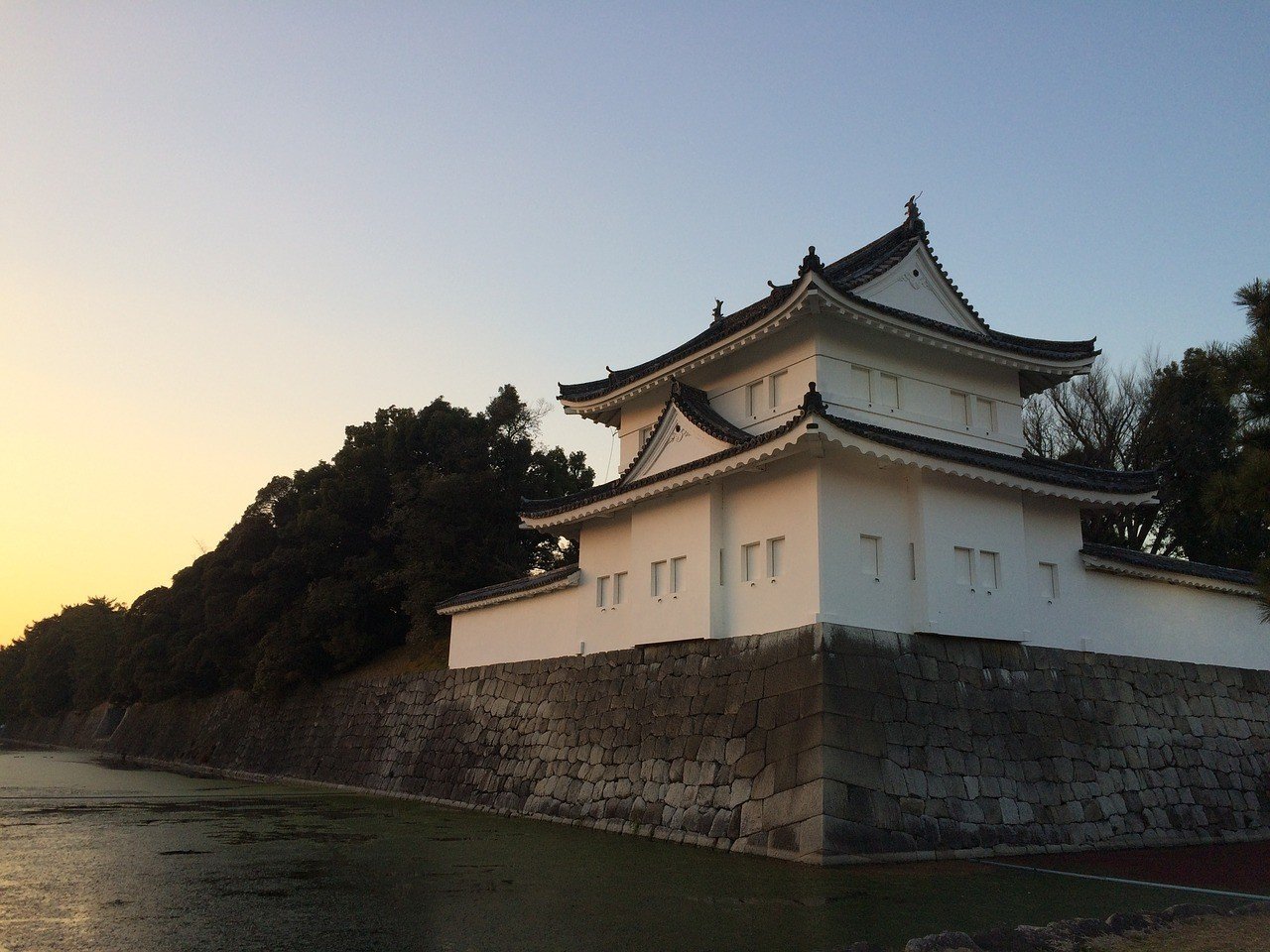
- A castle that dates back to the Edo-era and brings up thoughts of samurais and Shoguns.
- If you’re interested in Kyoto’s history, this is the perfect place to explore it.
Why it’s so awesome: You might not think of Japan in connection with castles, but there are a lot of these old structures all over the country. Nijo Castle is one of the best places to visit in Kyoto City if you want to explore this past, with its samurai, Shoguns, and flashing swords. The castle has two large moats and there are actually 2 palaces inside the castle itself. The first was owned by the Shoguns and the other by the emperor.
What to do there: The Shogun’s palace is open to the public, so take the time to explore it. The palace has what’s known as nightingale floors, which are deliberately created so that they squeak when you walk on them. This feature was an early alarm system for the Shogun, who was always at risk of attack!
This area is also buzzing with some of Kyoto’s best hostels . Book yourself in and visit the castle without paying for transportation!
#17 – Kyoto National Museum – A fascinating educational place to visit in Kyoto
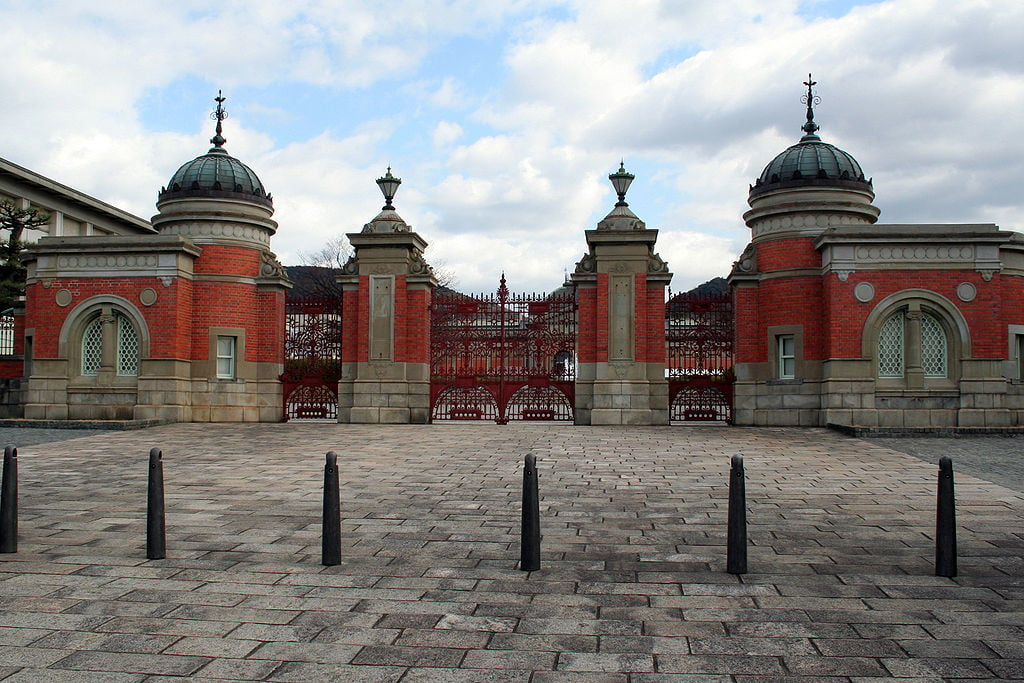
- If you want to learn more about traditional Japanese art, then this museum will give you a good knowledge base.
- It’s one of four national museums across Japan and has both permanent and temporary exhibitions.
Why it’s so awesome: There are four national museums across Japan and the Kyoto National Museum focuses on traditional Japanese art. If you’ve ever wanted to learn about the precise and very unusual artforms that were popular in Japan’s history, then this museum will give you a thorough education. The museum’s special exhibitions are shown in a building from the Meiji period, which adds some historical drama to the collections, while the permanent exhibition is in a modern building built in 2014.
What to do there: The collection in this museum changes constantly as special exhibitions are put on display. So, when you travel to Kyoto, make sure that you look up online to see what’s showing and don’t miss any special displays that pique your interest.

Our GREATEST Travel Secrets…
Pop your email here & get the original Broke Backpacker Bible for FREE.
#18 – Gekkeikan Okura Sake Museum
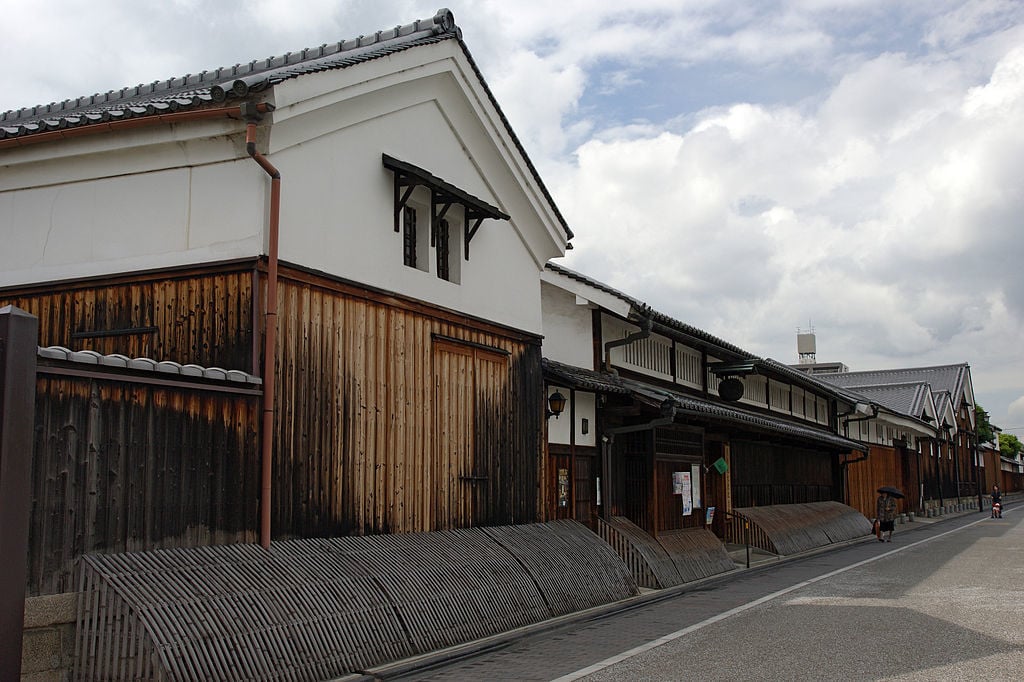
- The perfect place to have a drink and learn more about this traditional alcohol.
- There’s a free sake tasting after a visit to this museum, so make sure you have some food in your stomach before you go there.
Why it’s so awesome: Sake is absolutely iconic in Japan , and you can’t visit Kyoto without tasting some of this traditional alcohol. And the best way to appreciate it is with a visit to this museum, where you’ll be able to see the traditional tools and methods that are used to make some of the many varieties of sake.
What to do there: The museum is open during business hours throughout the year except over the Christmas and New Year’s period. You need to pay a small admission fee to get in, and then you’ll be able to explore the history of this fascinating and historically important beverage. Afterwards, don’t miss out on the free sake tasting, and don’t be surprised if it’s a little stronger than you expected!
#19 – Kyoto International Manga Museum
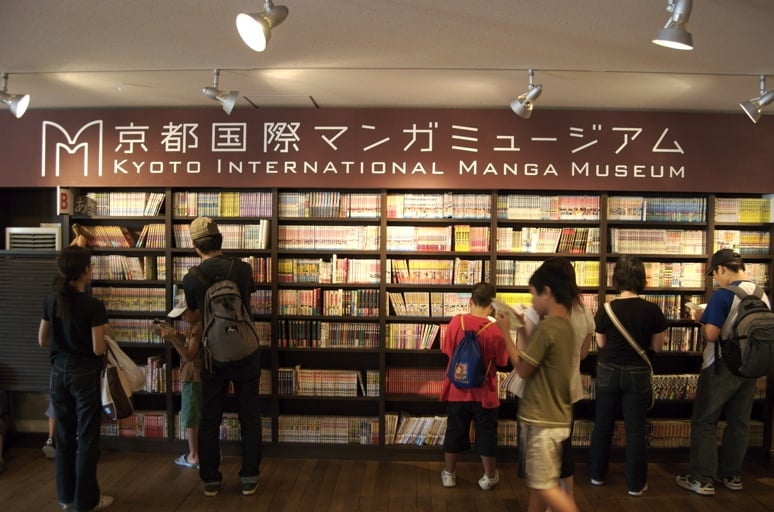
- The Kyoto International Manga Museum will allow you to explore this extremely popular Japanese artform.
- Manga are Japanese comic books, but they’re definitely not just for kids.
Why it’s so awesome: This museum serves as a facility for manga research and it also has a massive exhibition space where you can explore an incredibly wide range of different genres. They also hold regular special exhibitions on international manga themes, so make sure you check them out if you’re in Kyoto at the right time.
What to do there: This museum is open every day except Wednesday and there’s an entrance fee. The fee is well worth paying if you’re interested in Manga though because they have an incredibly wide range of these popular books as well as exhibitions on international manga. So, if you read manga, or if you’re interested in seeing what all the hype’s about, then put aside a couple of hours to explore this museum.
#20 – JR Kyoto Station – A great place to see in Kyoto if you love architecture
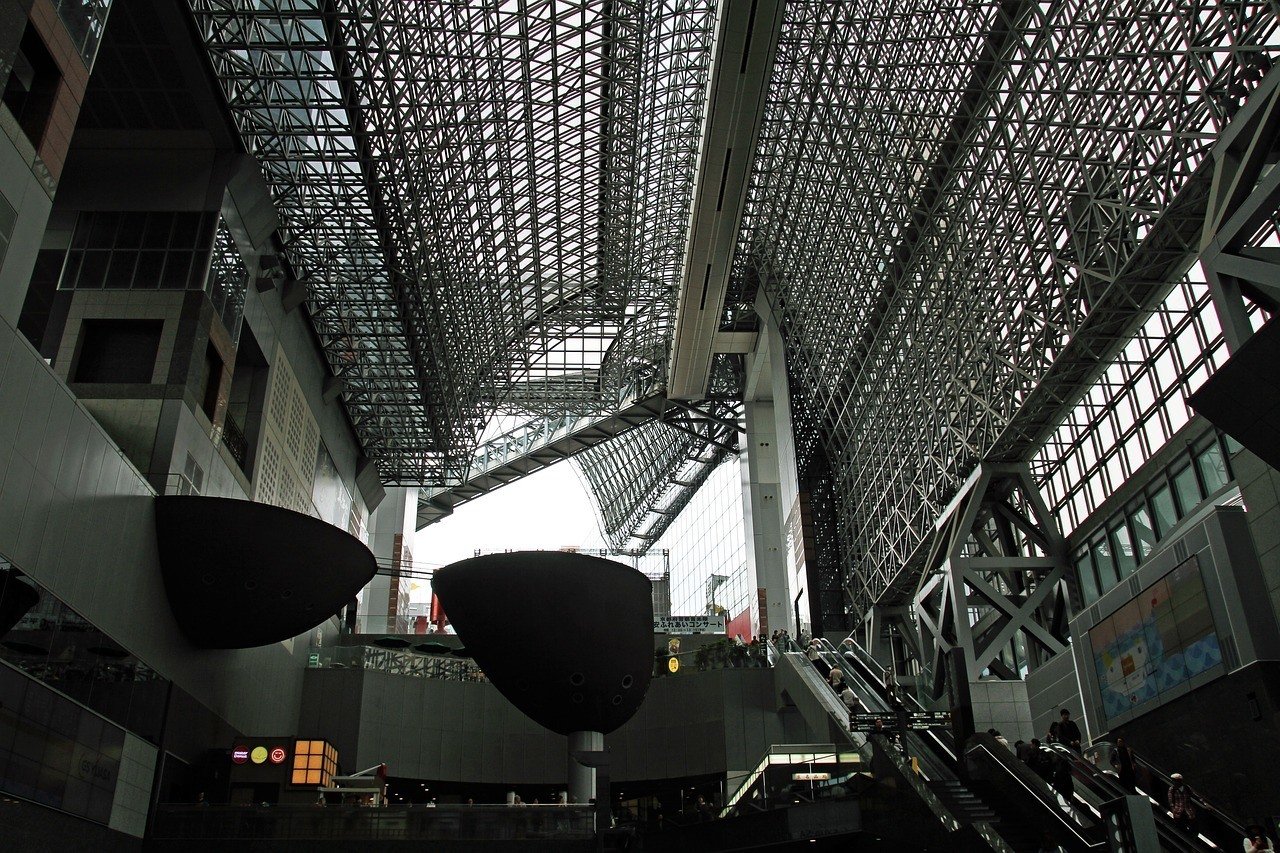
- A great place to start or end your trip to Japan.
- You don’t need to be traveling to visit this station – it has restaurants, shops, and food options that will keep you occupied for hours.
Why it’s so awesome: It might sound funny to hear that you need to see a train station, but Japan always seems to be the exception to the idea that functional places have to be boring and ugly. Kyoto station is amazing. It’s an architectural wonder that’s won several international awards and it’s also one of the biggest buildings in Japan.
What to do there: This station feels like a small world all packed into one area. It has a shopping mall, hotel, movie theater and department store all packed into one area and yet it always manages to feel comfortable and beautiful rather than crowded. Make sure you take the time to explore it while you’re in the area.
Have a meal, see a movie, or just wander around and take photos of the striking building. Japan is relatively safe , but don’t fall onto the tracks while looking up at the brilliant architecture around you, that one’s on you. It’s a fitting entry point into Japan and a great place to spend some time while you’re traveling around the country.
Get insured for your trip to Kyoto!
ALWAYS sort out your backpacker insurance before your trip. There’s plenty to choose from in that department, but a good place to start is Safety Wing .
They offer month-to-month payments, no lock-in contracts, and require absolutely no itineraries: that’s the exact kind of insurance long-term travellers and digital nomads need.

SafetyWing is cheap, easy, and admin-free: just sign up lickety-split so you can get back to it!
Click the button below to learn more about SafetyWing’s setup or read our insider review for the full tasty scoop.
Find out what people want to know about the best places to visit in Kyoto
Best places to visit in Kyoto during autumn?
The famous Kinkaku ji Temple is wonderful any time of year, but the colours of the golden pavilion are especially stunning during the autumn months.
Best places to visit in Kyoto in winter?
Head indoors to the Nishiki Market and indulge in some local food and pick up some unique souvenirs at the same time.
What is Kyoto best known for?
The city is best know for it’s historic sites, castles and geishas. Check out the Southern Higashiyama area of Kyoto for the highlights.
What should I not miss in Kyoto?
You can’t miss the Fushimi Inari-taisha Shrine… it’s that long walkway covered in red tori gates! Just be sure to go early to miss the crowds!
Kyoto is probably one of the most foreign feeling cities you’ll ever visit. It has a vibe and a sensibility that’s incredibly different to what you’ll find in western countries and a beauty that’s both ancient and restrained.
When you’re looking for the best places to visit in Kyoto, you’ll be confronted with a seemingly endless list of historic and stunningly beautiful sites. And that will be your hardest task when you’re in this city, sorting through all the options and deciding which ones you want to see.
That’s why I’ve created this list so you can spend all your time basking in the atmosphere rather than trying to make up your mind what you most want to see.

And for transparency’s sake, please know that some of the links in our content are affiliate links . That means that if you book your accommodation, buy your gear, or sort your insurance through our link, we earn a small commission (at no extra cost to you). That said, we only link to the gear we trust and never recommend services we don’t believe are up to scratch. Again, thank you!
Share or save this post

Leave a Reply Cancel reply
Your email address will not be published. Required fields are marked *
Save my name, email, and website in this browser for the next time I comment.
Notify me of followup comments via e-mail.
14 Unmissable Things to do in Kyoto, Japan
Beautiful Kyoto, once the capital of Japan , is still one of the most visited cities in the country. Known as the city of ten thousand shrines, Kyoto blends old and new; it’s a place where ancient Geisha districts are sandwiched by temple-dotted mountains on one side and towering steel towers on the other. Spend your days wandering among gold-leafed palaces, tranquil Japanese Gardens, and ancient bamboo groves, or immerse yourself in the creative culture at trendy art spaces, vintage shops, and kimono rental stores. There are so many incredible things to do in Kyoto — discover them all in this complete travel guide!
Things to do in Kyoto
Although Kyoto is a big city, it has a small-town feel. The harmony between contemporary high-rise buildings and traditional wooden teahouses makes it unique. Whether you want to explore the endless temples or surrounding mountains, there is something for every traveler.
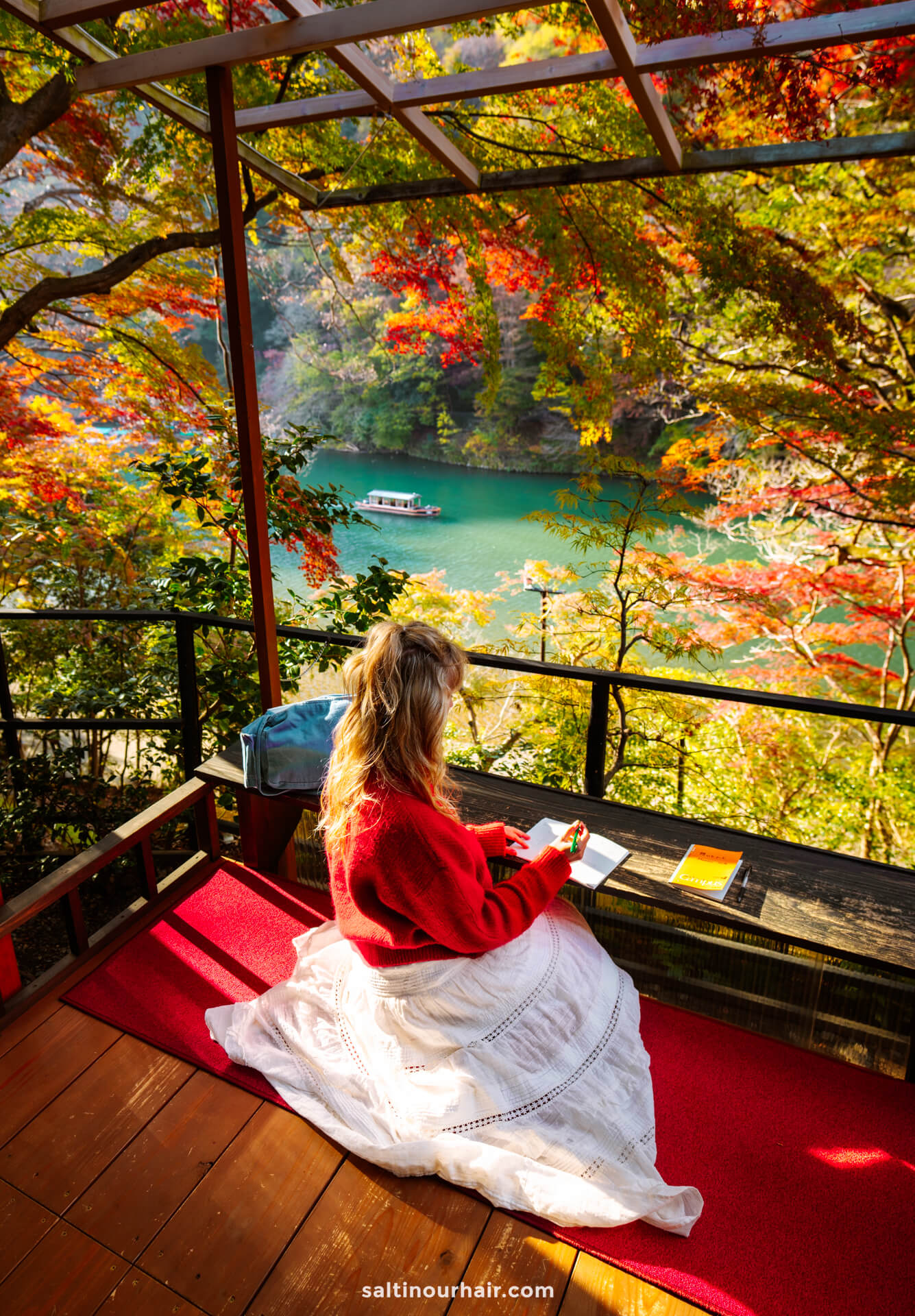
Because it offers so much diversity and history, Kyoto is one of the most popular places to visit in Japan. Although you can expect crowds and queues for the main things to do in Kyoto, it’s well worth it; it was one of the best and most beautiful place we visited on our trip!
Here are all your hotel options in Kyoto.
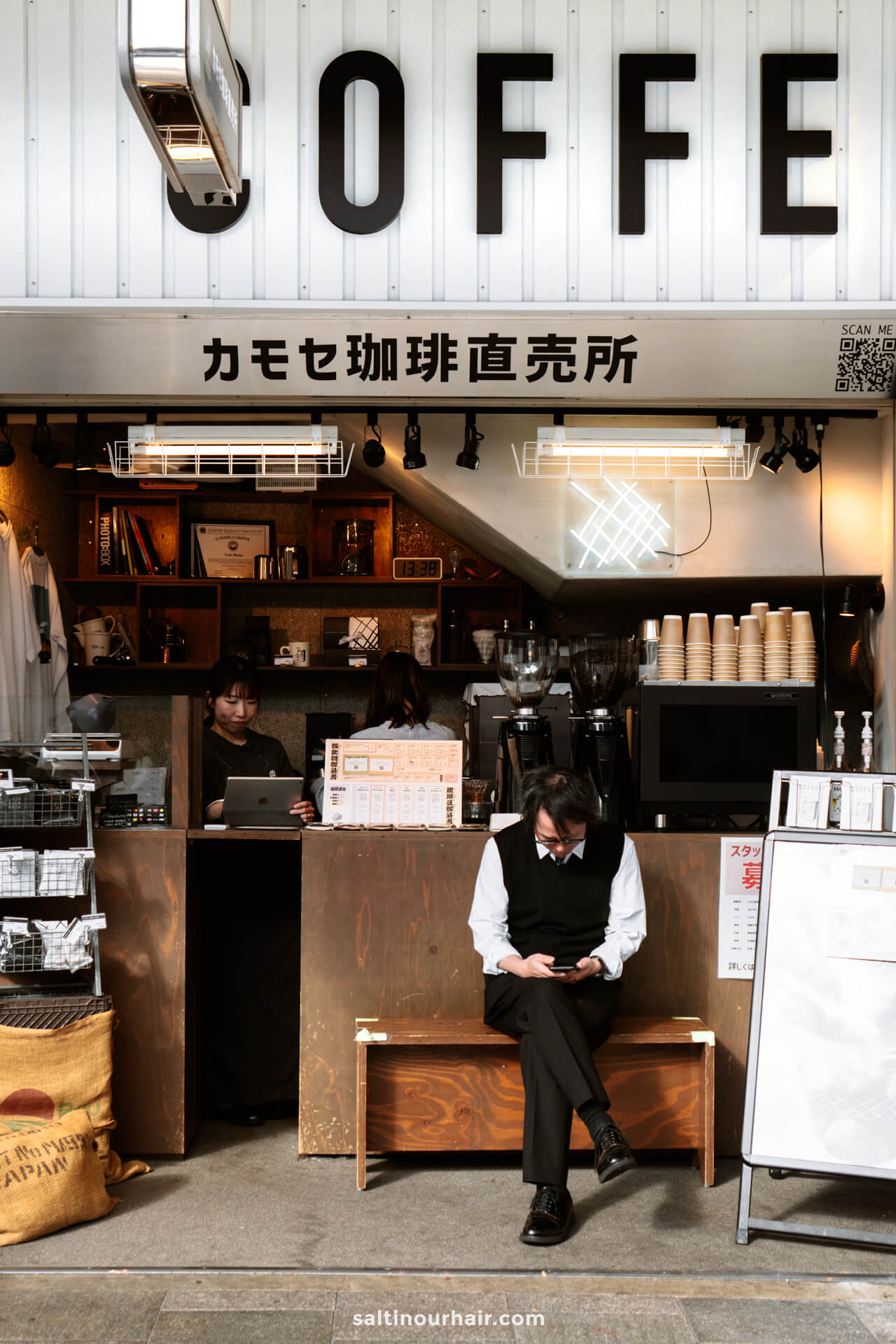
1. Sannenzaka, Kyoto
Sannenzaka, meaning ‘Three-Year Hill’, is one of Kyoto’s most traditional Japanese streets, full of teahouses, sweet shops, and wooden houses. The pretty stone-paved road slopes upward towards the beautiful 3-tiered Hōkan-Ji Temple, where you’ll find impressive views of the city and cherry trees in Spring.
Hotels in Kyoto 😴
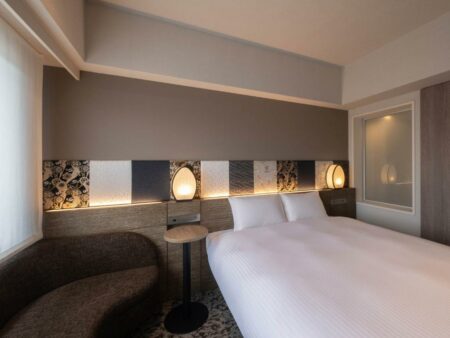
In the morning these street feels like a time machine to a bygone Japan, with just the sounds of birds as you climb uphill. But during the day, Sannenzaka comes to life, with locals and tourists arriving to check out the craft shops and delicious restaurants. Nighttime is equally enjoyable when there are no crowds, and the street lanterns give it a charming, cozy ambiance. Please note that during the high seasons, these streets can be busy even in mornings.
This area is very popular for tea ceremonies, which take place in the ancient tea houses. Book a tour to learn about this time-honored tradition .
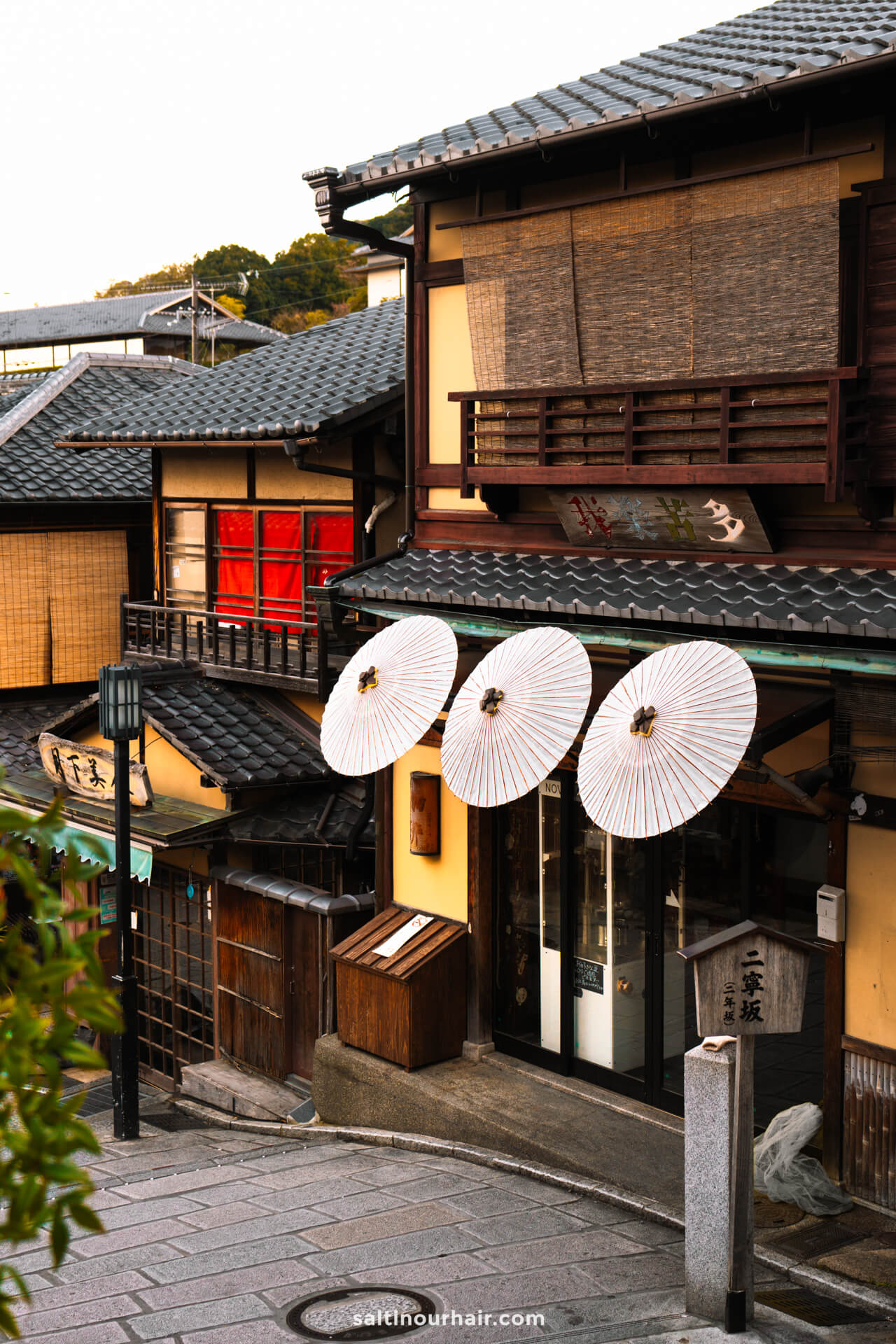
Hōkan-ji Temple
Hokan-ji Temple, popularly known as Yasaka Pagoda, stands as a symbol of Kyoto’s charm. Situated in the trendy Sannenzaka area, it’s highly favored on Instagram . The pagoda, soaring at 46 meters with five stories, dates back to 596 AD. However, due to wars and fires, it has undergone several reconstructions.
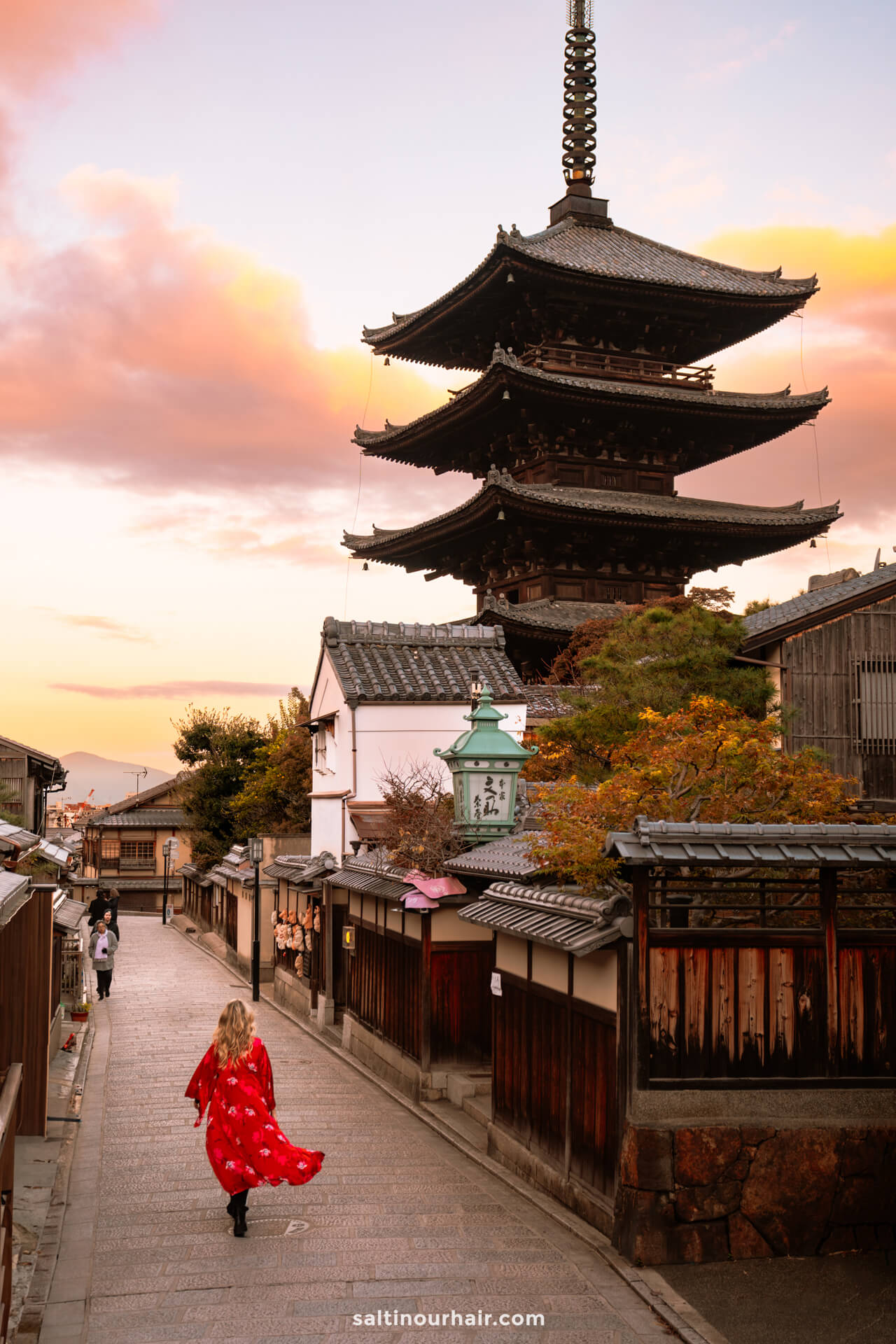
Walk to the top of the street in Sannenzaka to reach the beautiful temple, where you can admire its sloping tiled roof. You can also visit inside, where you’ll see some lovely paintings. Plus, if you’re brave, we recommend climbing to the top of the pagoda for incredible views over Kyoto.
Please note that due to the temple’s internet fame, it’s busy all day – including sunrise! It’s completely understandable, though, as it’s one of the most beautiful spots in Kyoto.
Opening Times and Entrance Fee: 10 AM – 3 PM. 400 yen (3 USD)
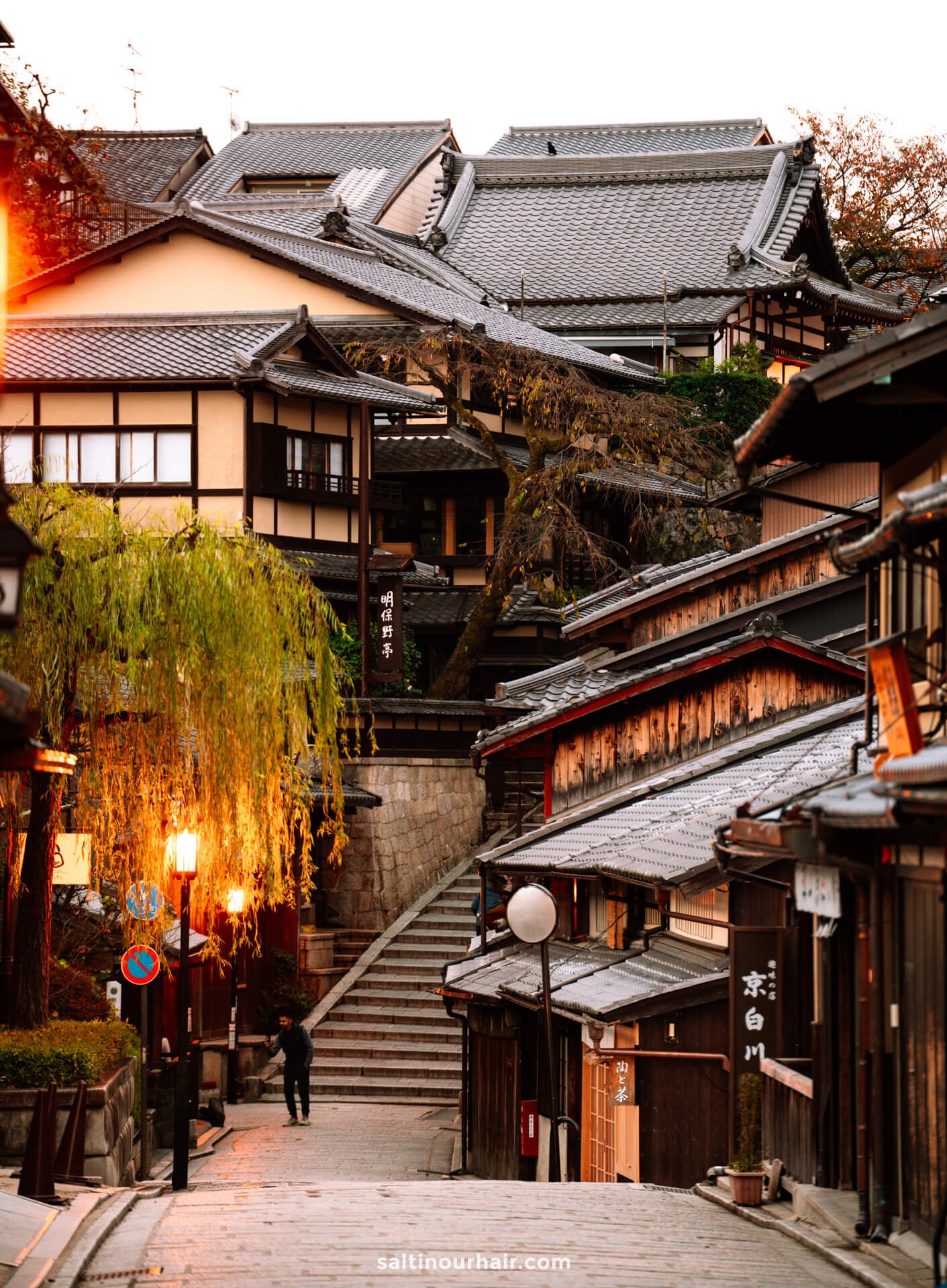
Kiyomizu Temple, Kyoto
Don’t miss seeing the stunning Buddhist temple complex, Kiyomizu-Dera, which sits halfway up the slope of Mt. Otowa, looking down on Sannenzaka. This UNESCO World Heritage Site is known as one of the holiest places in the city, with people coming here to worship the deity Kannon.

As you enter the beautiful red-painted gateways into the complex, you can feel the temple’s 1000+-year-old history. You might even be lucky enough to witness the ancient Buddhist ceremonies practiced here.
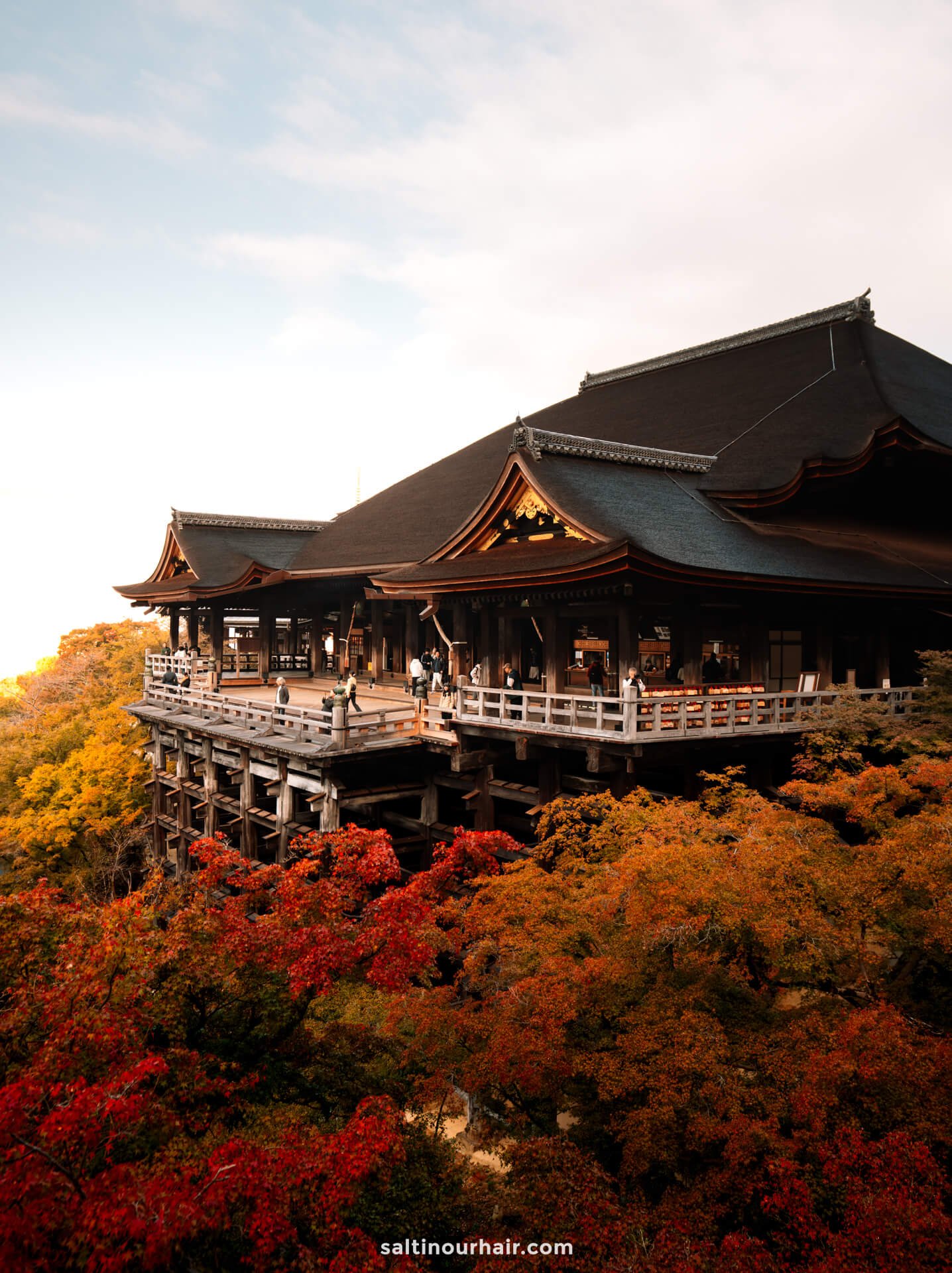
The Kiyomizu stage is the most famous part of the temple complex: a platform held up by mammoth wooden pillars that hang over the edge of the mountain slope. From the viewing platform, look out over stunning mountain scenery, with pink blossoms in spring, vibrant foliage in fall, and snow-covered trees in winter.
Book your tour of Kiyomizu Temple (including a tea ceremony)
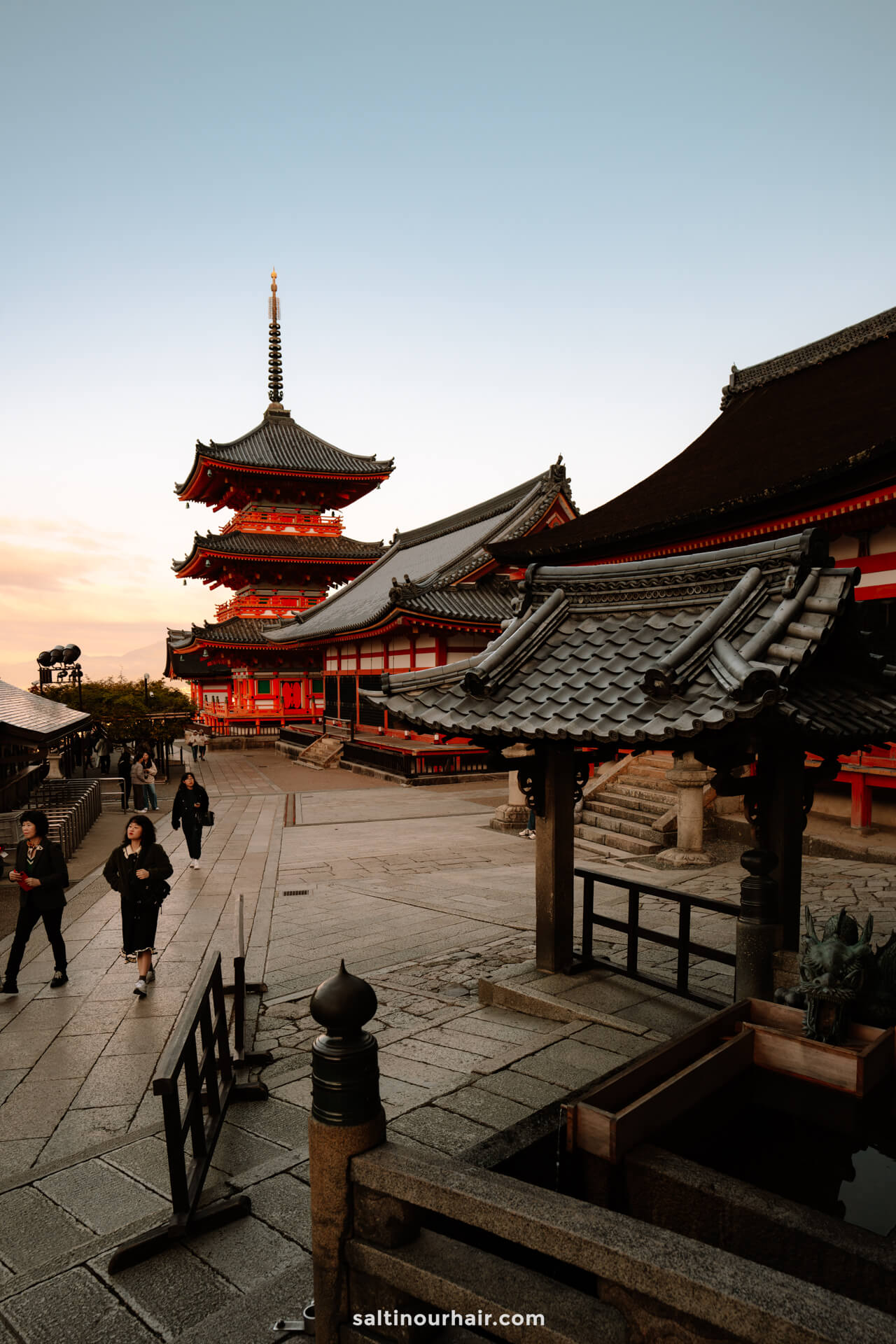
How to Visit Kyomizu Temple, Kyoto
Kiyomizu Temple is just a 10-minute walk uphill from Hokan-Ji Temple; it’s one of the top things to do in Kyoto!
The temple is open every day from 6 AM (beautiful at sunrise) – 6 PM or 9.30 PM, depending on the season ( check all the opening hours here ). Tickets cost 500 yen (3.50 USD), or you can join a guided tour .

2. Nara Park
While planning your trip to Japan, you’ve probably seen the famous images of cute deer interacting with tourists: this is the iconic Nara Park ! Set in the city of Nara, discover expansive woodland where hundreds of friendly (and cheeky!) deer roam wild. It’s especially lovely to visit during fall when the leaves pop in warm reds, oranges, and yellows. ( Book one of the many incredible tours around Nara )
Note: Admission to Nara Park is free. However, on arrival, you may want to purchase some natural crackers (200 yen/1.50 USD) to feed the deer. Please only feed them the crackers provided.
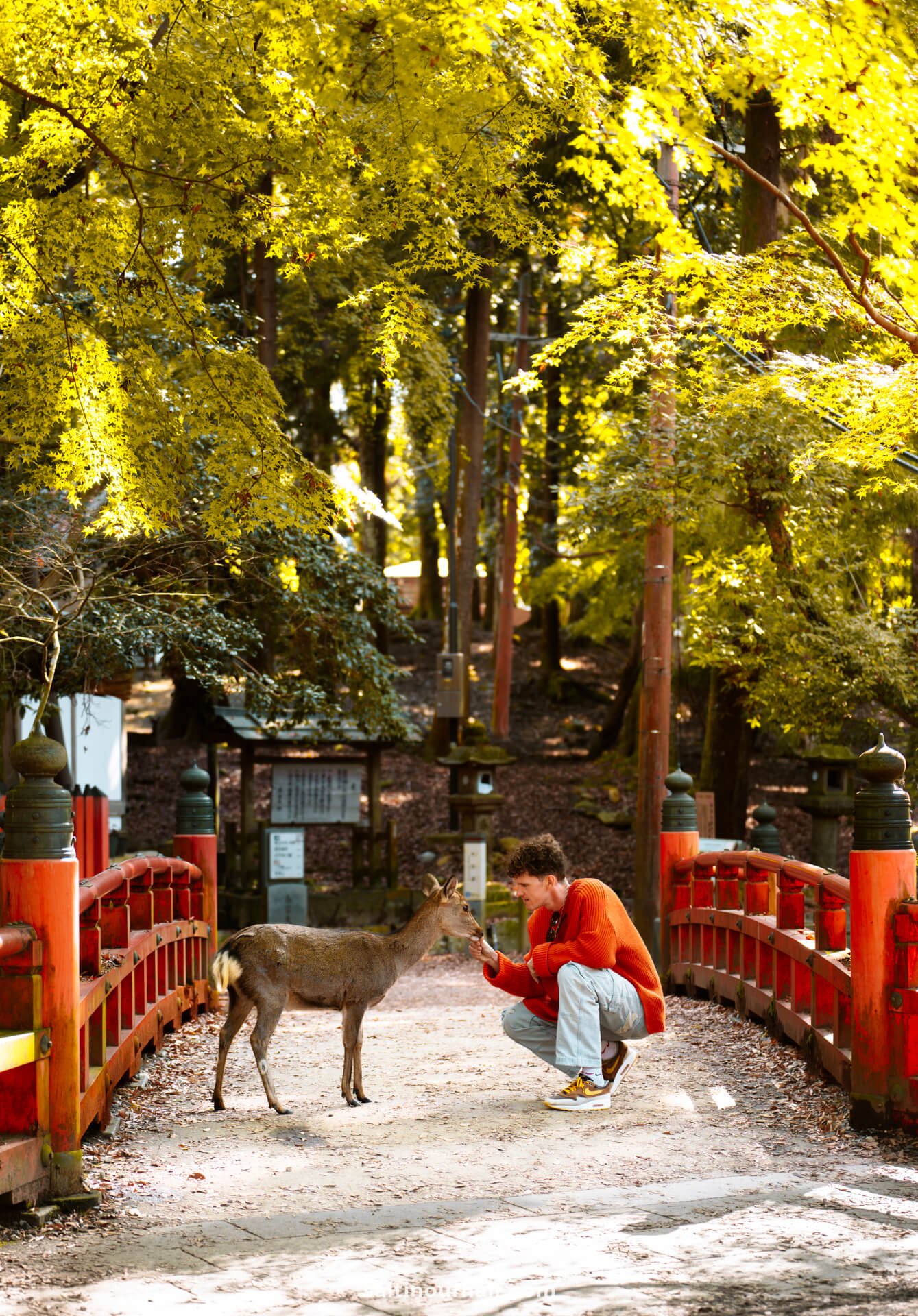
Although seeing the deer is the main draw for visitors, there are also many other fantastic things to do in Nara Park , such as visiting the majestic Todaiji Temple or the stunning botanical gardens. Best of all, at each site, you’ll always be accompanied by large groups of deer!
Explore Nara with a local guide. See tickets and availability for a half-day tour.
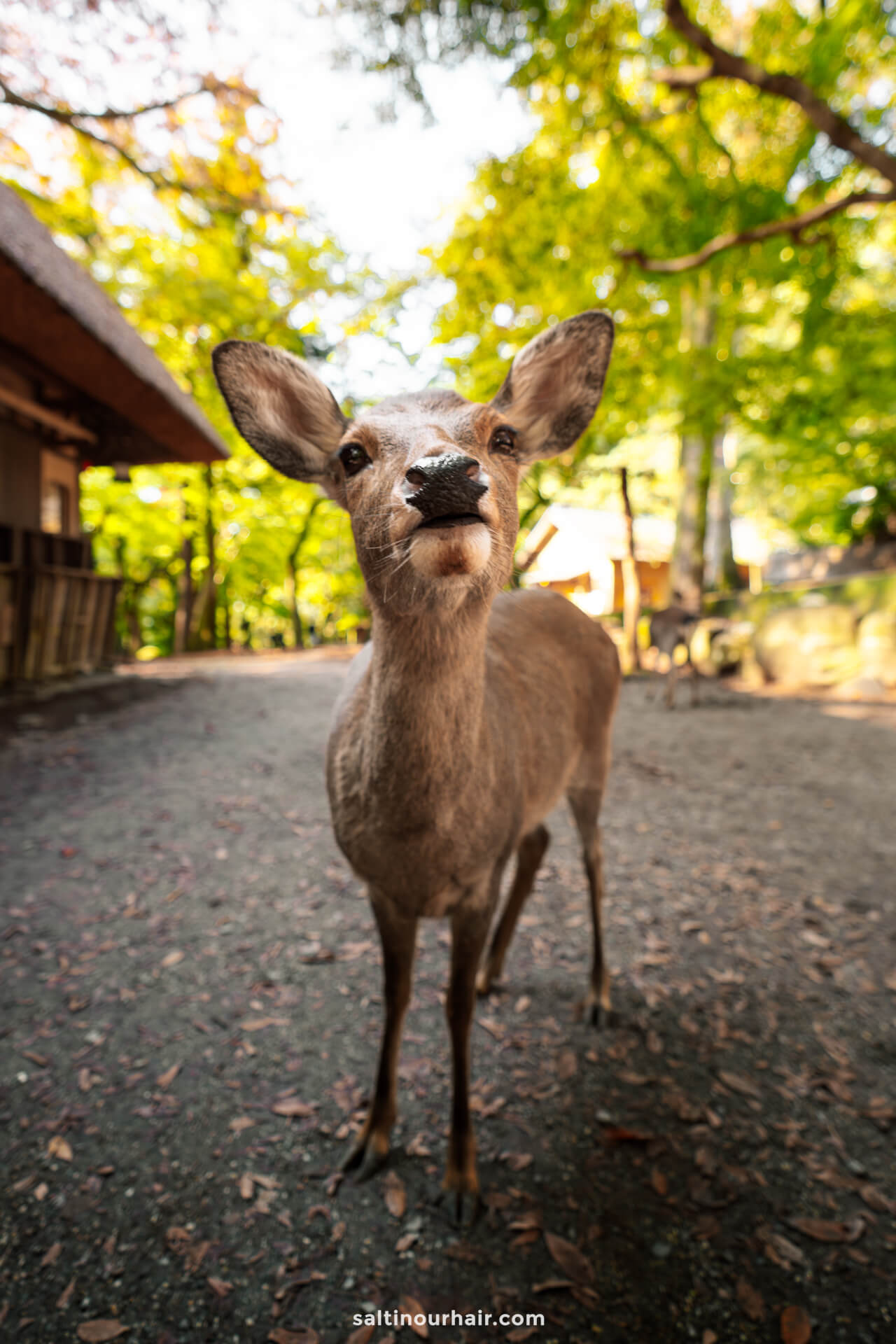
Getting to Nara Park
From Kyoto Station, you can take a direct train to Nara in under one hour. The train arrives at Kintetsu Nara Station, and the JR Pass (JR Nara line) covers this route.
Buy your Japan Rail Pass in advance
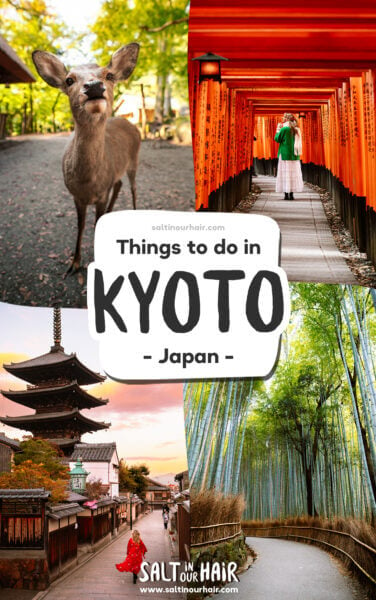
Tip: If you arrive from Nara JR station in the morning, take advantage of the Mochi-making show at Nakatanidou. Mochi is a jelly dessert made with rice flour and packed with sweet black bean paste inside; it usually comes in various colors, and it’s fascinating to watch the creation process!
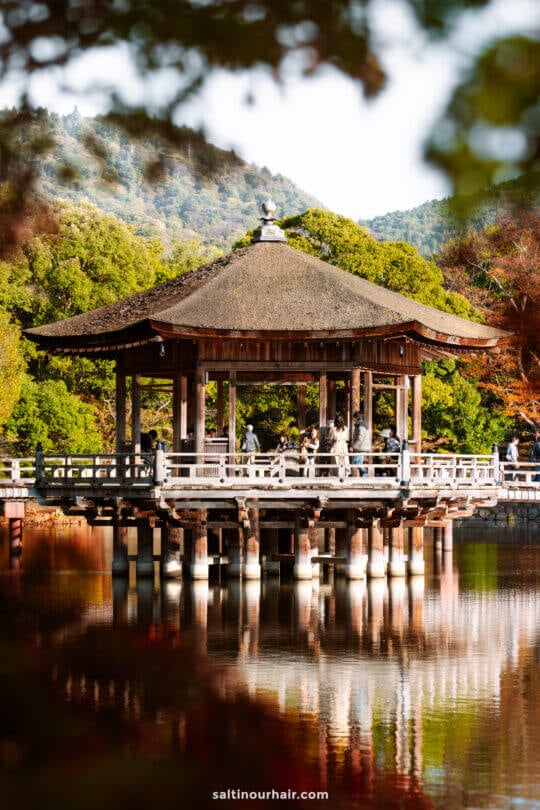
3. Diago-Ji Temple (Top Thing to do in Kyoto!)
Diago-Ji Temple was maybe our favorite spot in Japan! This peaceful area is a designated UNESCO World Heritage Site and spans the whole mountainside, with the main temple sitting at the base and smaller temples along the path to the summit.
The atmosphere of this place is incredible; the sounds, colors, and scenery are perfect – especially when visiting from late November to the first half of December, at which time it’s fall-colored heaven. It’s truly a photographer’s paradise!
Read: Best Things to do at Mount Fuji, Japan
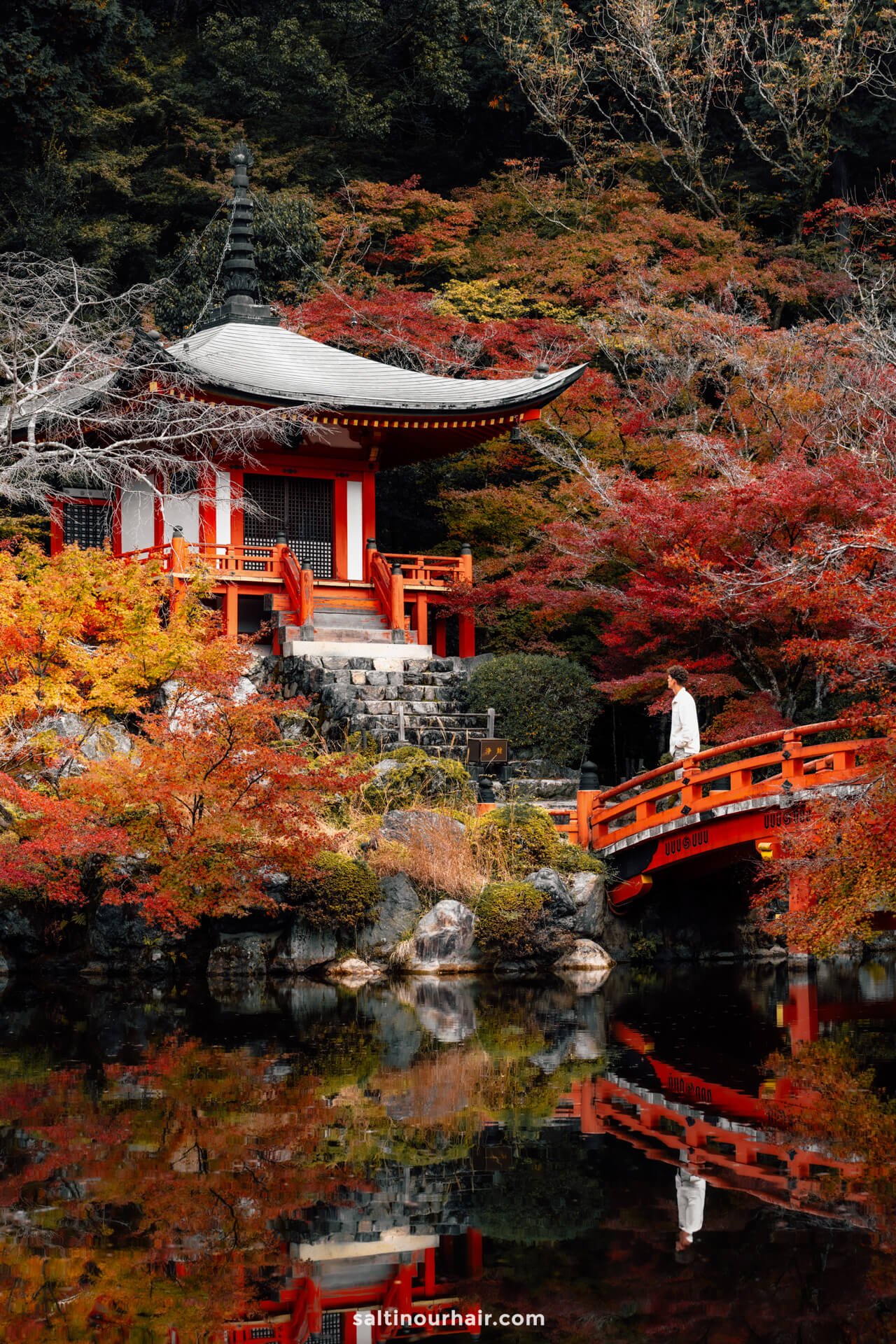
Sanboin Temple
Alongside the main Diago-Ji Temple, you’ll find the sub-temple: Sanboin (former residence of the head priest). Inside, there are many historical and cultural relics, including a preserved drawing room (Omote Shoin) with traditional sliding screens, straw mats, and romantic murals. There is also a stunning Japanese garden to explore with waterfalls, ponds, and cherry trees.
Opening Times and Entry Fee: Buy a combined ticket to see all the main buildings at the lower level for 1500 yen (10 USD). Open 9 AM – 5 PM (4.30 PM in the winter months). You can see the full price list here .
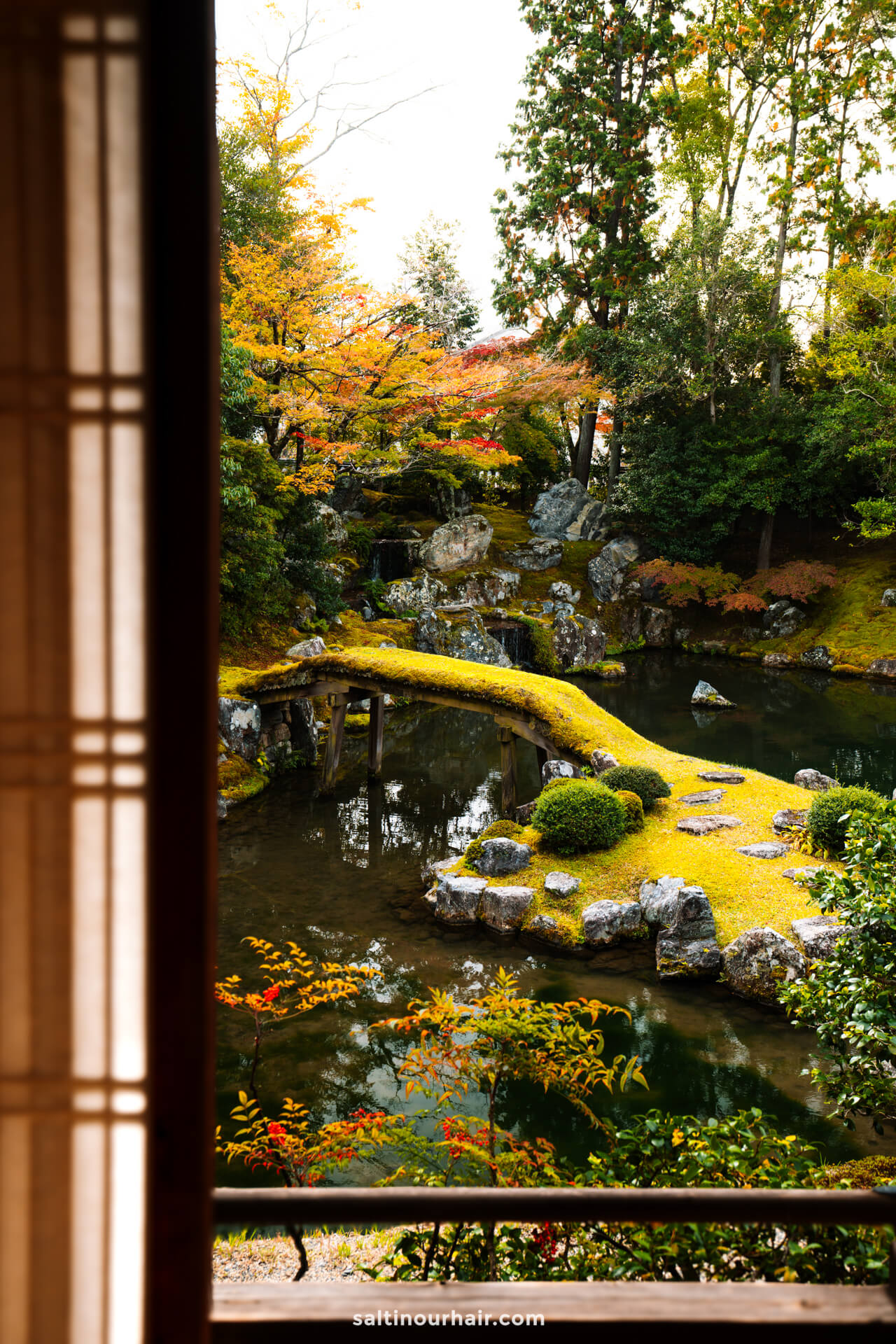
Getting to Diago-Ji Temple
The journey takes about 30 mins from the center of Kyoto. Head to Kyoto Shiyakusho-Mae Station and take the Tozai line to Daigo Station. It’s a 15-minute walk from there to the shrine.
We recommend allowing for 1 -2 hours to leisurely walk among the complex; you’ll find fewer crowds here than other popular things to do in Kyoto, mainly because it’s a bit out of town and less reachable by public transport.
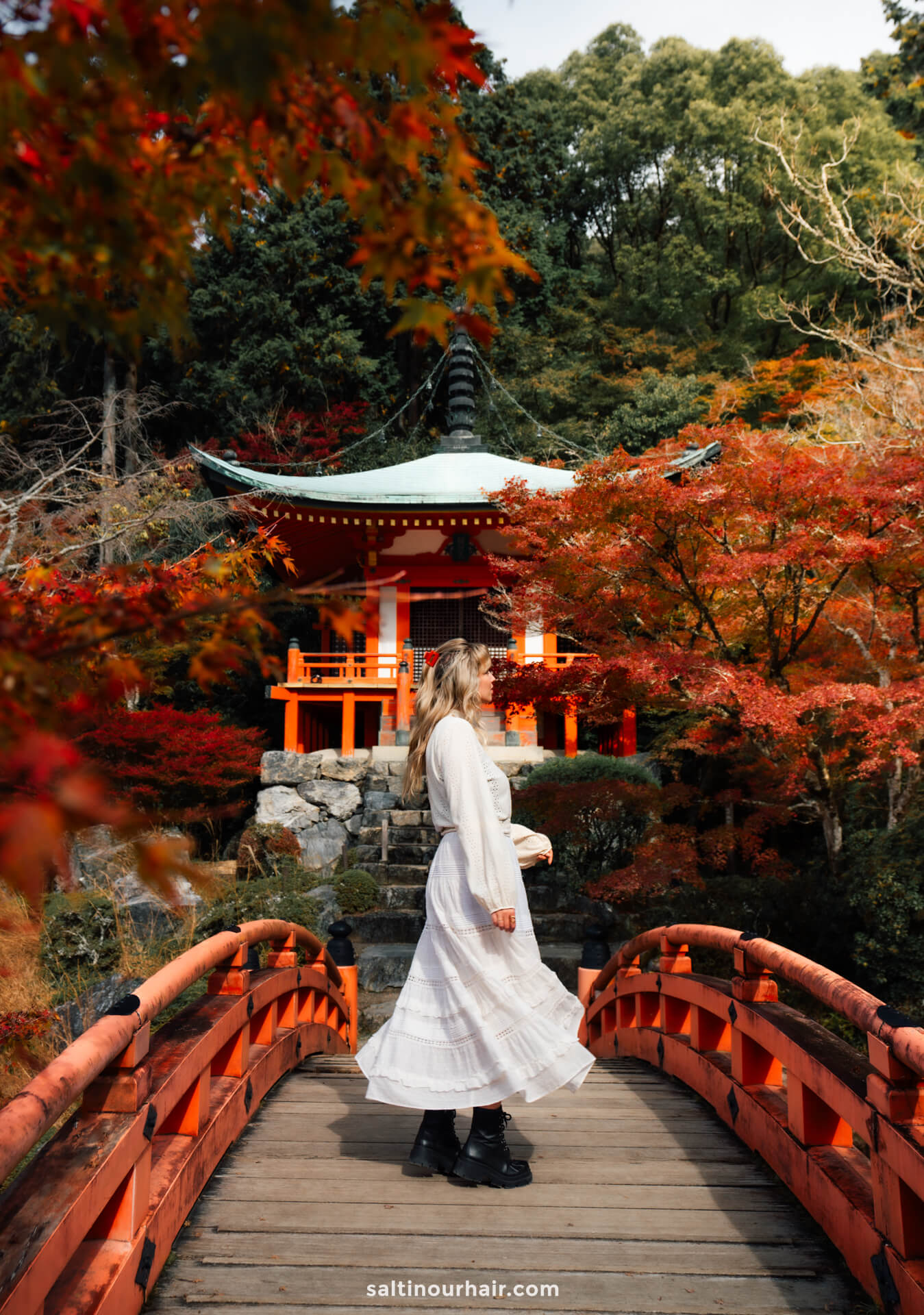
4. Day Trip to Arashiyama Bamboo Forest, Kyoto
Spend the day immersed in nature at the remarkable Arashiyama Bamboo Grove! Located in the cute town of Arashiyama (just a 20-minute train ride away from bustling Kyoto), discover a towering tunnel of bamboo trees that creates one of the most magical walkways. When the sun hits just right, it creates fractures of golden light through the trees — it’s the perfect place to snap some beautiful photos! ( Book your day trip here )
Did you know? The Airshiyama Bamboo Forest is a uniquely sensory experience; it was named one of the ‘100 soundscapes of Japan’ by the Japanese Ministry of Environment because of the sound of the bamboo blowing in the wind.
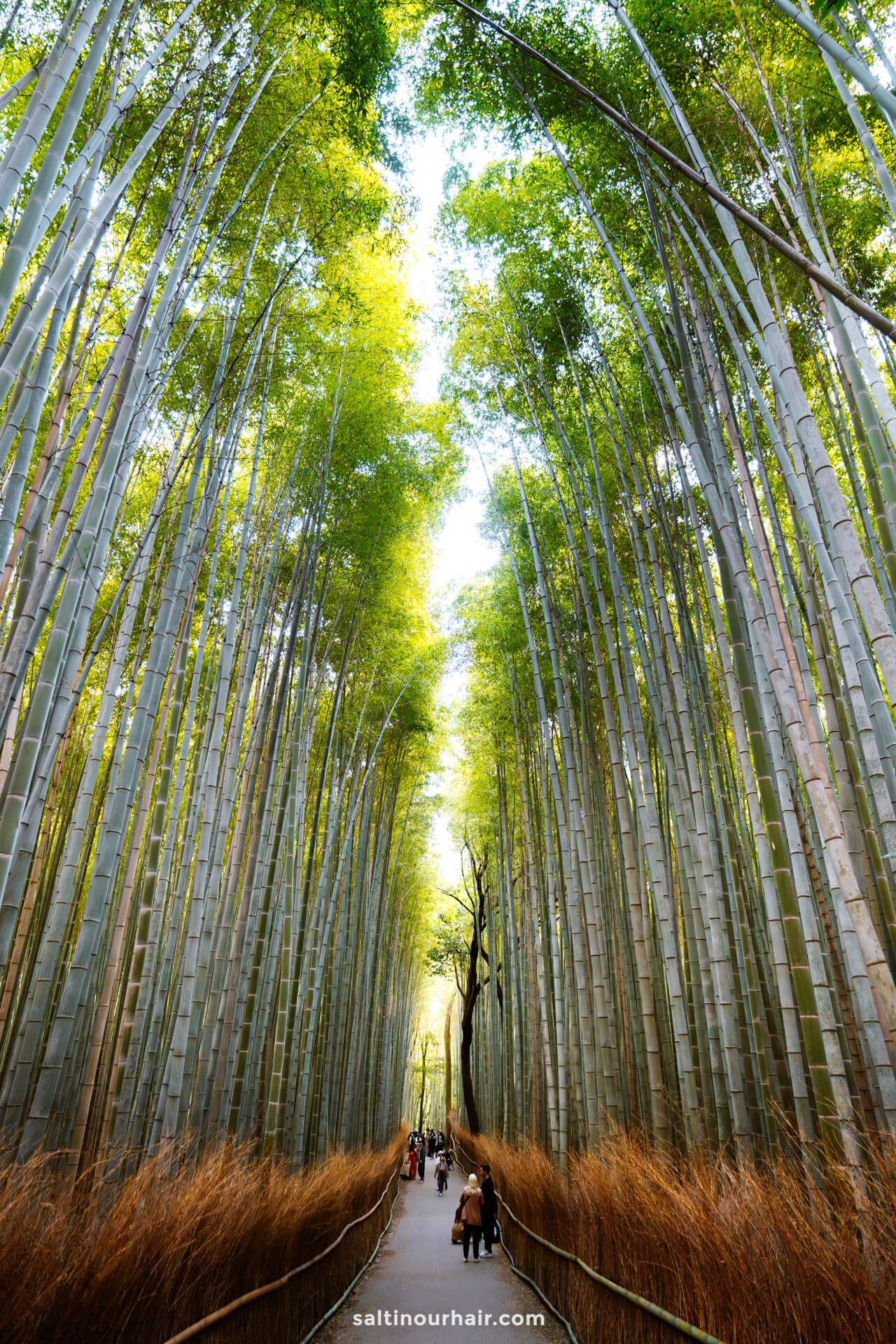
As you walk through the Arashiyama complex, you’ll find lots of other beautiful temples and gardens to visit:
- Jōjakkō-ji Temple
- Hōkyō-in Temple
- Otagi Nenbutsu-ji Temple
- Okochi Sanso Garden
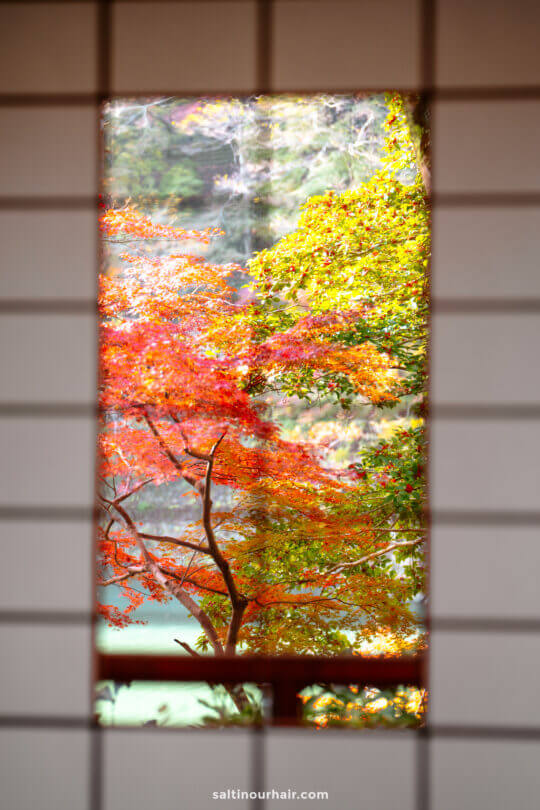
Entry Times and Opening Fee: General admission to Arashiyama Bamboo Forest is free! However, you may be required to pay admission fees for the smaller temples on-site. The grove is open 24 hours a day, so we recommend visiting at sunrise for the best light. It gets very busy after 9 AM, and taking photos with the crowds can be difficult.
Book this tour of Arashiyama’s top sites
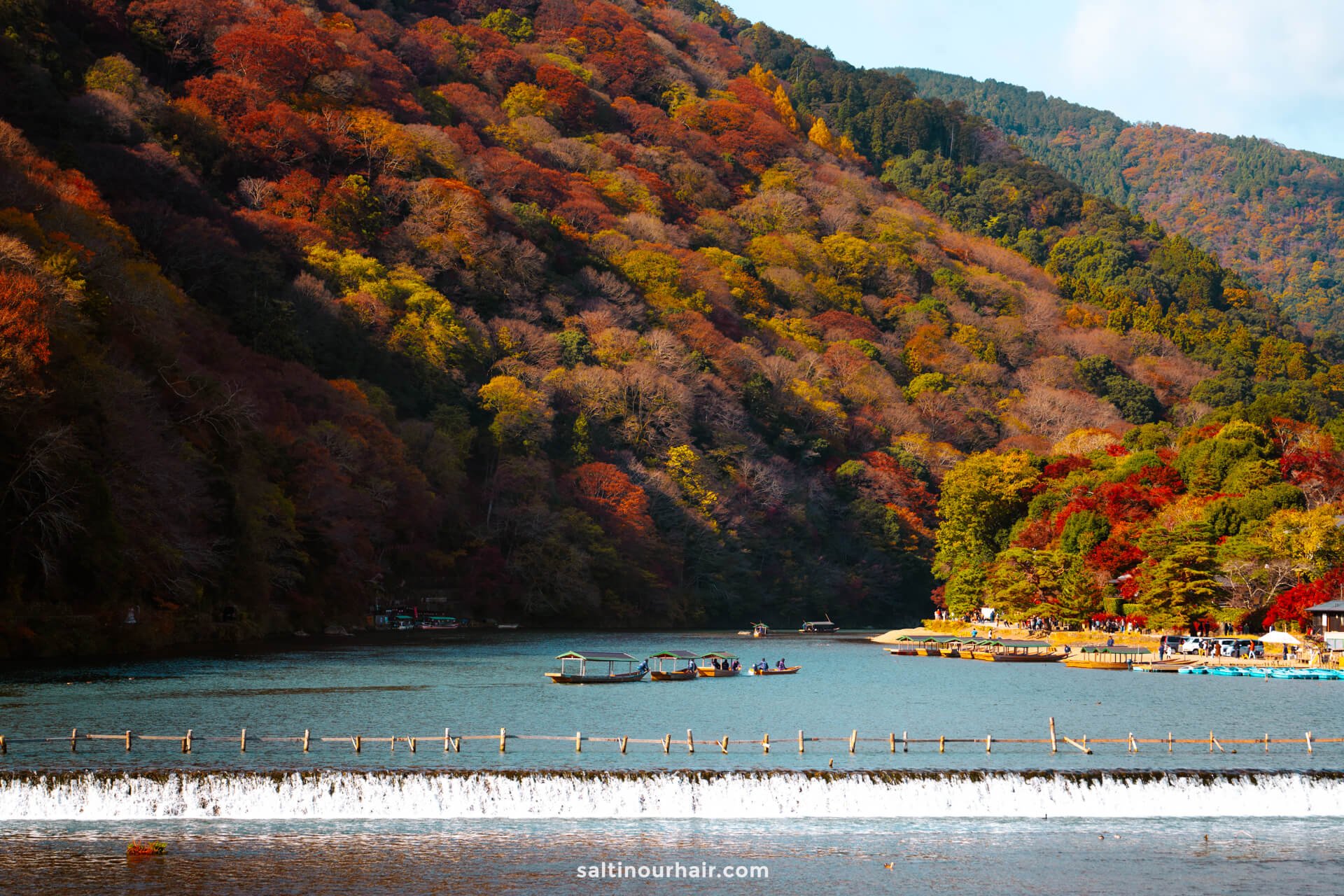
Iwatayama Monkey Park
Although visiting the bamboo grove is one of the top things to do in Kyoto, the actual walk doesn’t take long and is just a small part of what this wonderful area offers.
In front of the entrance, you’ll also see the lovely Tsytenkyo Bridge, which crosses the river and takes you into the Iwatayama Monkey Park. Here, you can see the Japanese Macaque (the very same monkeys you’ll see in the Snow Monkey Park in Japan – just without the snow!). You can get fairly close to the cheeky primates. However, always remember to be respectful and only feed them peanuts and fruit in the designated feeding area.
Opening Times and Entrance Fee: 9 AM – 4 PM. Tickets cost 550 yen (4 USD)
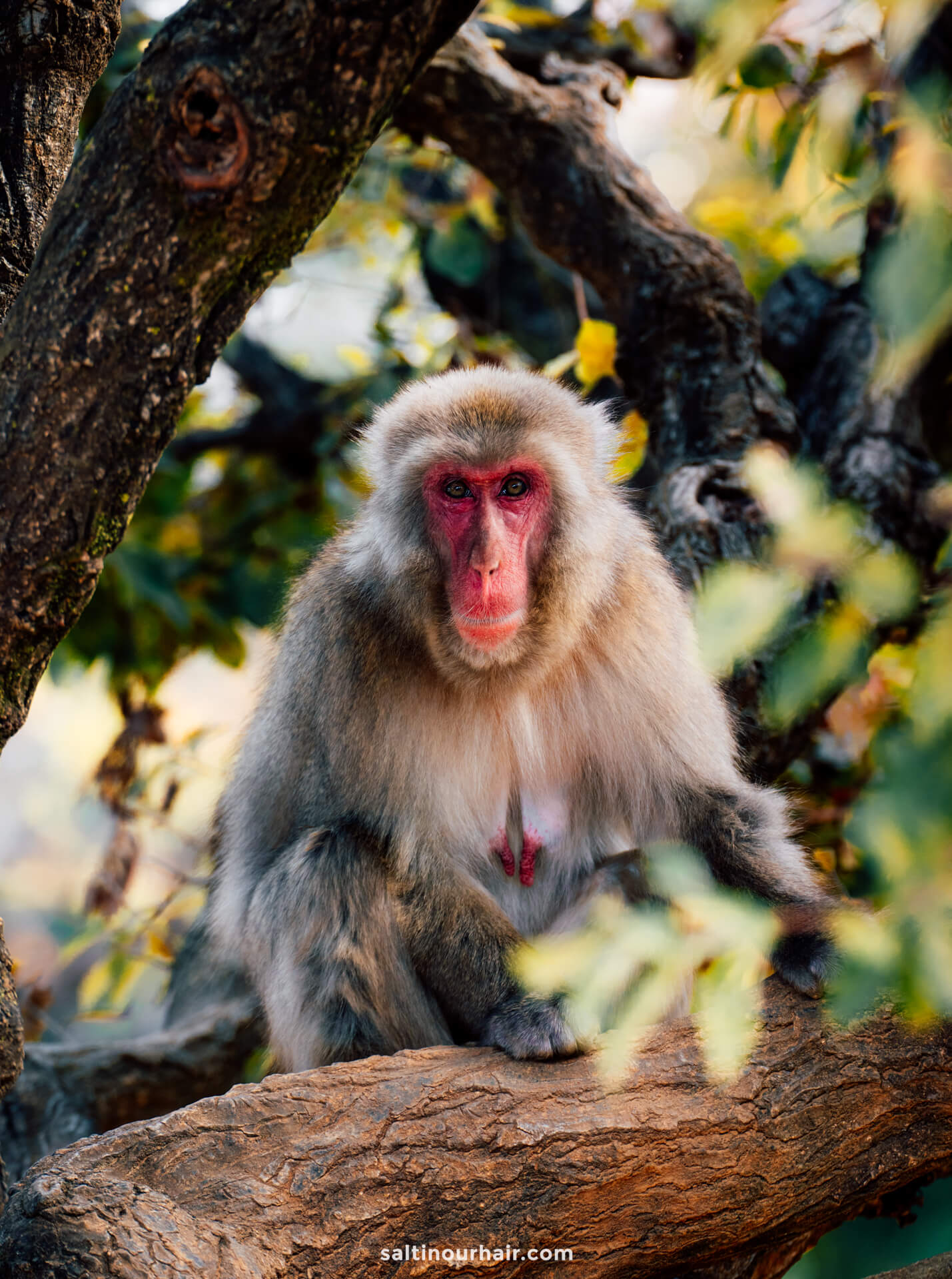
Tip: As you cross the bridge into Monkey Park, take a moment to admire the stunning blue water, which looks especially magical in the fall against the fiery red and orange foliage of the overhanging trees. You can go for a pleasant stroll downriver or eat at one of the restaurants that overlooks the water. If it’s too busy, there are plenty of great places to dine in town too.
Book this tour of Arashiyama’s top sites (including the Monkey Park!)
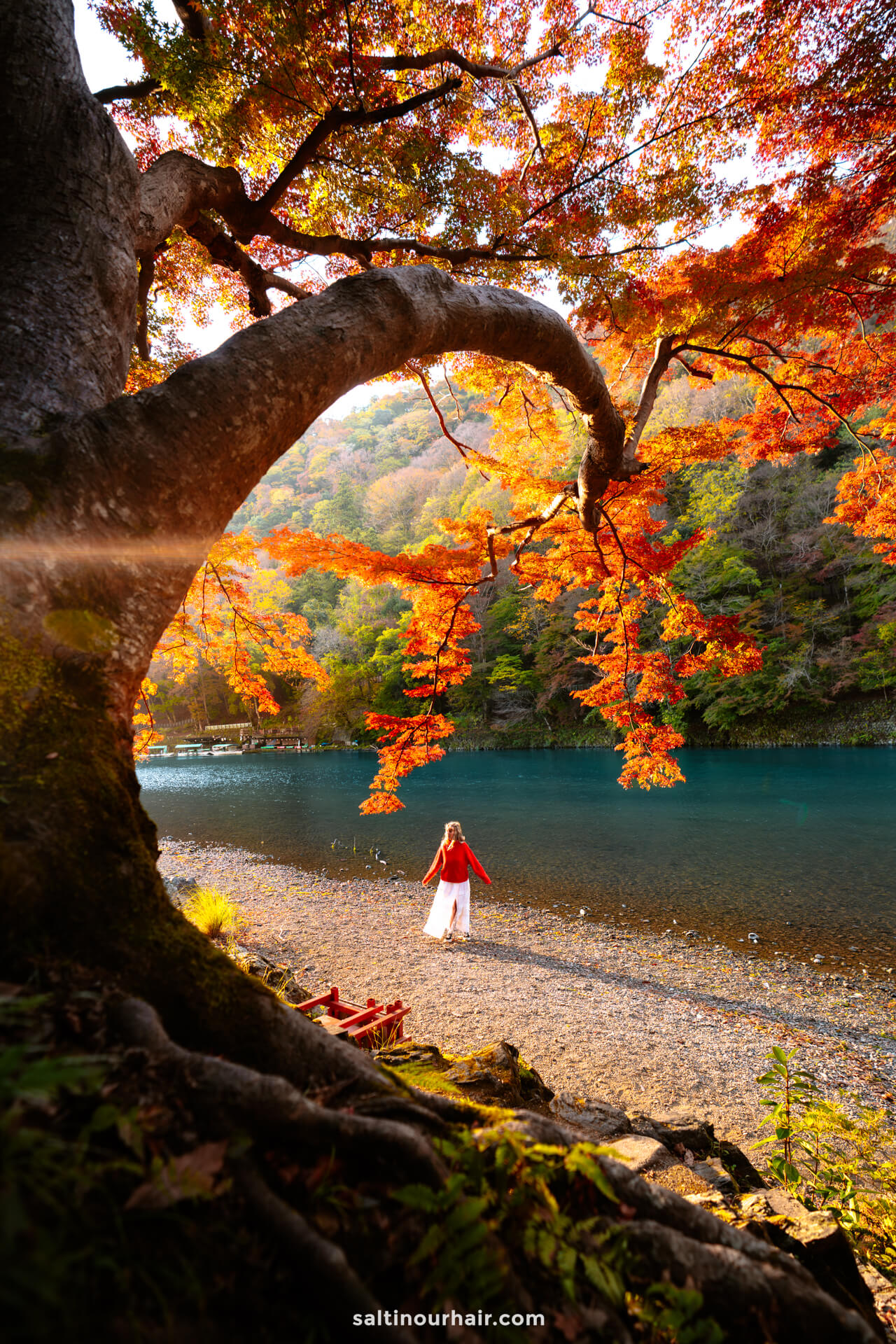
Join a Boat Tour
A boat tour along the river in Arashiyama is a great way to see more of the natural beauty of the area! You can hire a boat , either driving the boat yourself or hiring a captain for a few hours. Alternatively, for something really special, book the famous Hozugawa Cruise, a 2-hour boat ride that takes you from Kameoka to Arashiyama, hugging the winding ravine and offering spectacular views of the fall woodland in the cooler months.
Ticket price: Hozugawa Cruise tickets cost 4500 yen. Reserve your trip in advance here .
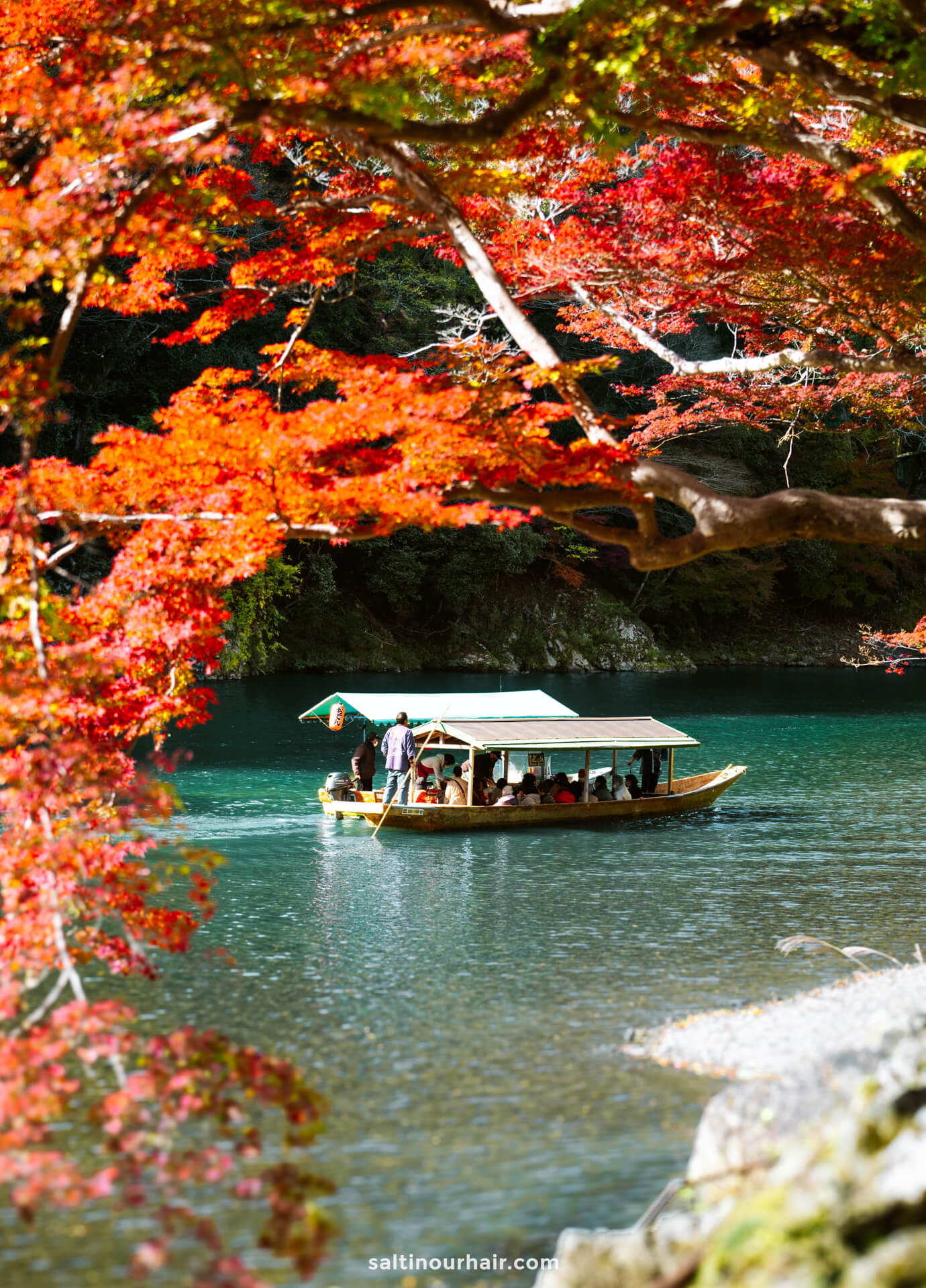
Adashino Nenbutsuj
Located next to the Bamboo Forest is an equally beautiful bamboo grove that leads the way to a unique temple. As it’s lesser known, you can enjoy this tunneled stairway through the trees with almost no people! Once you’ve reached the temple, you’ll find 8000 statues dedicated to ‘lonely souls’ — a tranquil and sacred place to commemorate those who died without kin.
Getting there: This hidden spot is at the back of the Arishiyama Bamboo Forest (a 15 – 20-minute walk from the entrance).
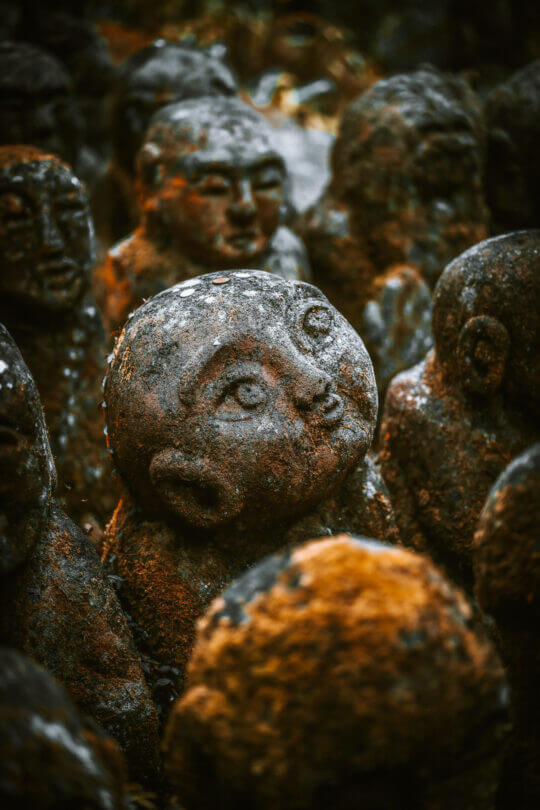
Somekobo Yumeyusai Art Gallery
Set on the banks of the Katsura River and conveniently located within Arashiyama Bamboo Forest, discover the fascinating Somekobo Yumeyusai Art Gallery. The gallery uses displays to teach visitors about an ancient Japanese dying technique — where the dye used causes the fabric to change color according to different lights. It is mainly known for its stunning views of the jade-colored river. Mirrors cleverly placed in the gallery make up for a great photo.
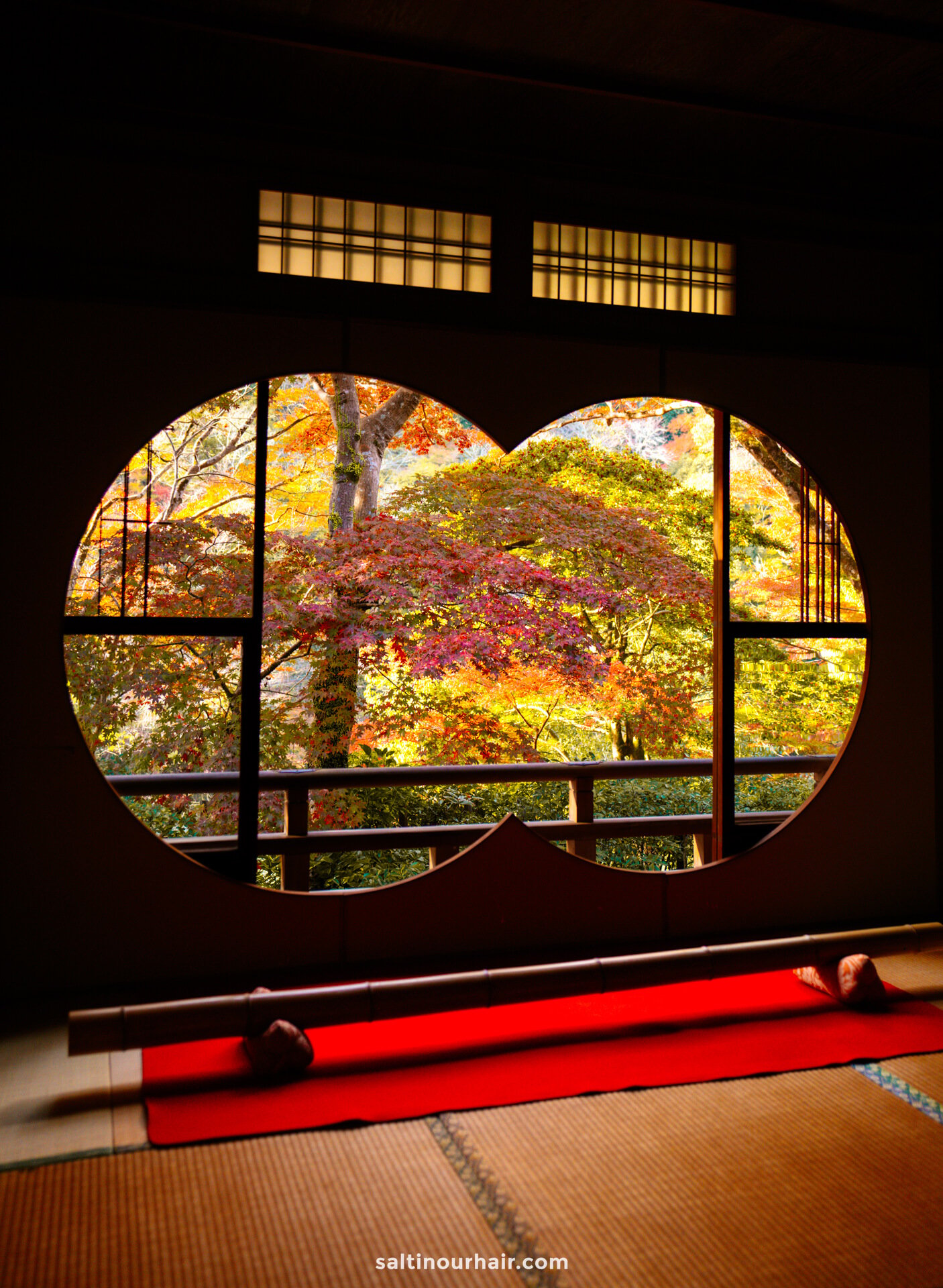
Tip: Somekobo Yumeyusai Art Gallery is very popular, so we recommend booking in advance online or arriving early so you don’t have to queue. Opening times vary (the day we visited, it opened at 8:30 AM, even though their opening time seems to be 10 AM), so it’s a good idea to check Google Maps on the day.
Entrance fee: 2,000 yen (13.50 USD). Reserve online here .
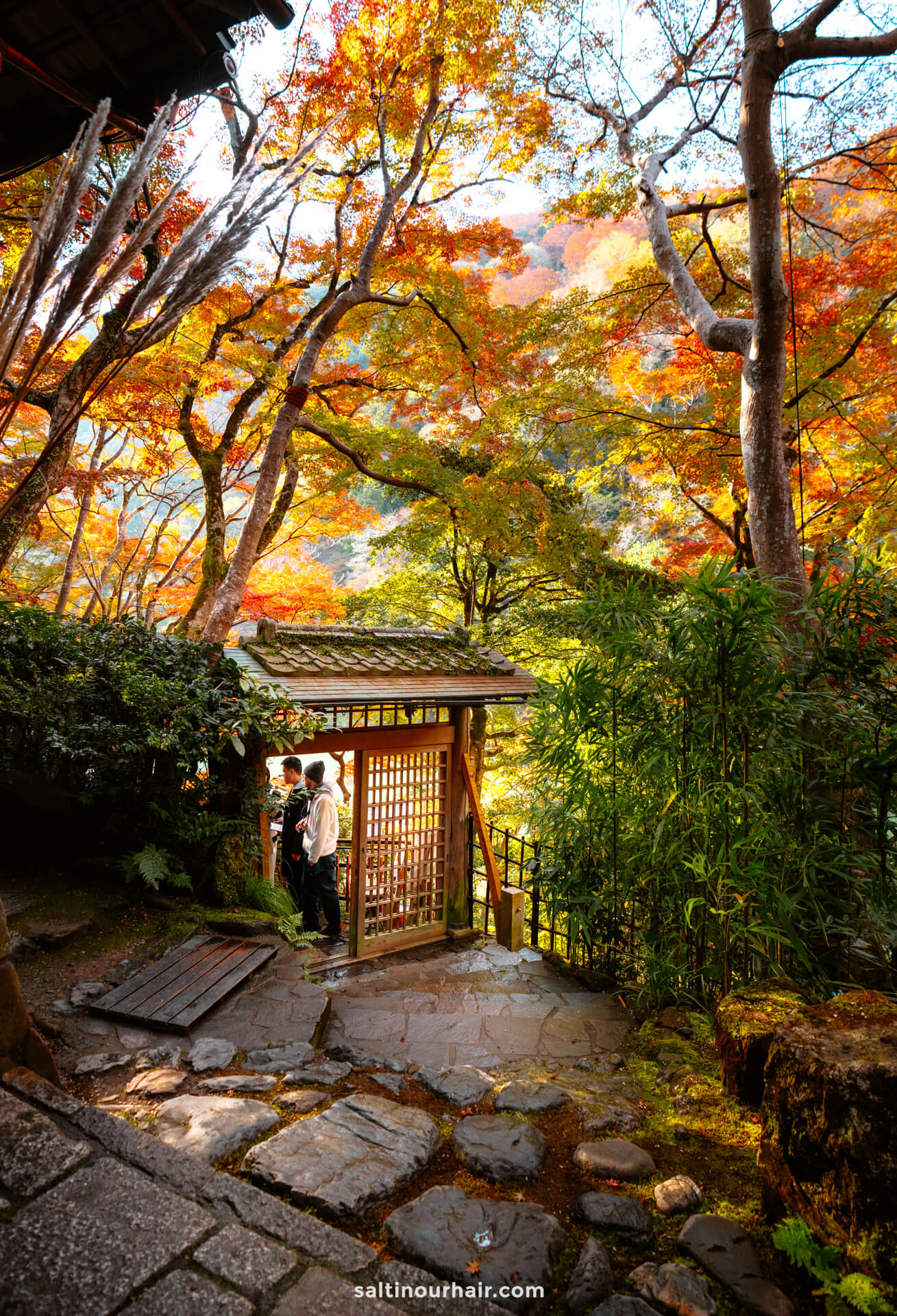
How to Visit Arashiyama Bamboo Forest, Kyoto
There are multiple ways to reach the Arashiyama Bamboo Forest from Kyoto. However, we recommend taking the train, as it only takes 20 minutes. Jump on the train from Kyoto Station (JR San-in or Sagano Line) to Saga Arishiyama Station, which is located in the middle of town. From here, it’s just a 15-minute walk to the entrance of the Bamboo Forest. This route is covered by holders of the JR Pass.
Please note: During the day, you may need to hop on the Randen line (tram). You pay a flat fare of 500 yen on the train.
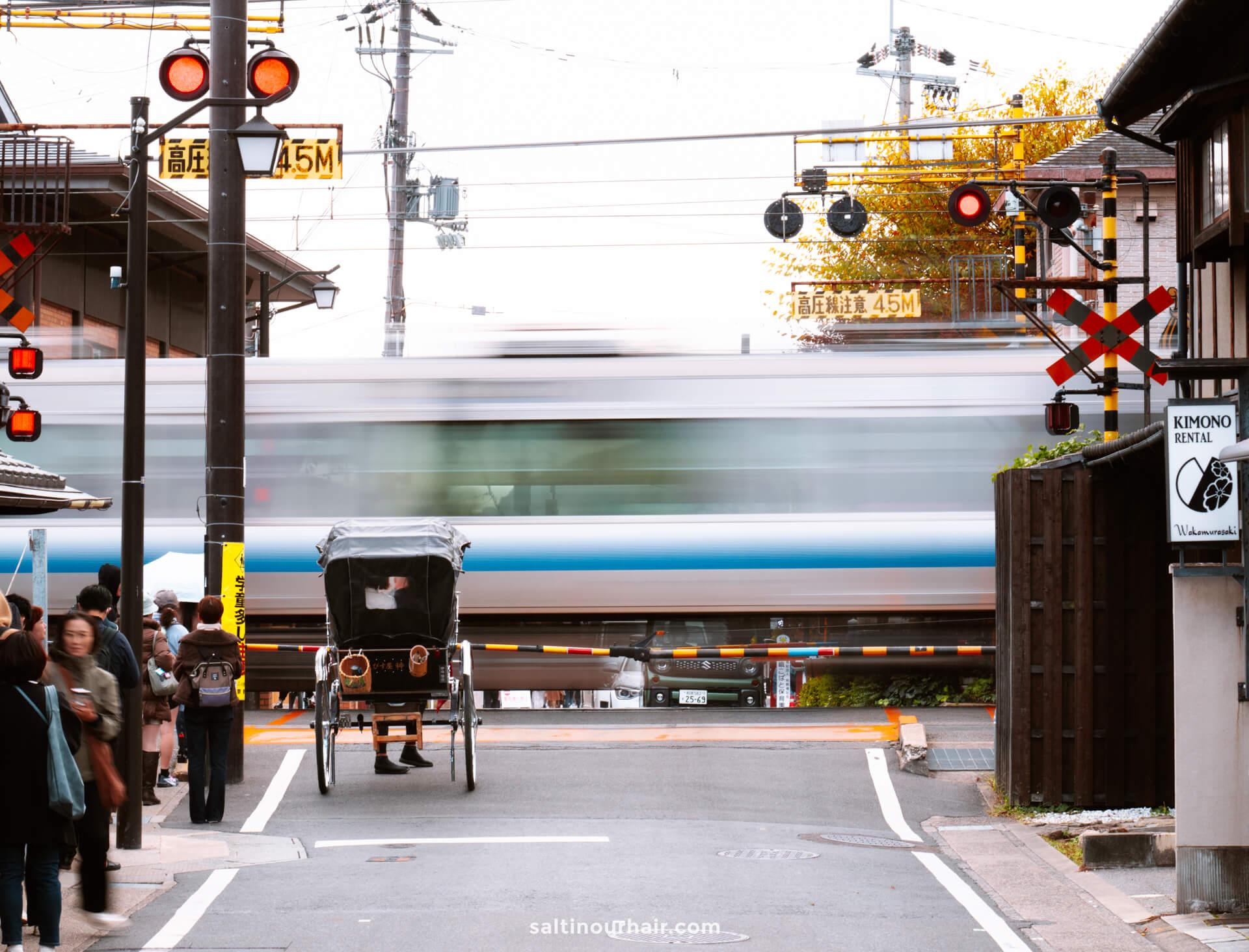
5. Vintage Shopping
Vintage shopping is a religion in Japan. Every city has countless fantastic thrift stores, and Kyoto is no exception! Dedicate a morning or afternoon to perusing the colorful stores, searching for treasures to take home.
Some of our favorite vintage shops in Kyoto were:
- Three Star Kyoto
- Furugiya JAM Kyotoshijoten
- Little Trip to Heaven
- Big Time (Hannah’s favorite! Don’t forget to check out the 2 men’s floors)
Tip: Most vintage stores are located in Shijo Kawaramachi (Downtown Kyoto), a bustling shopping district for all general stores.
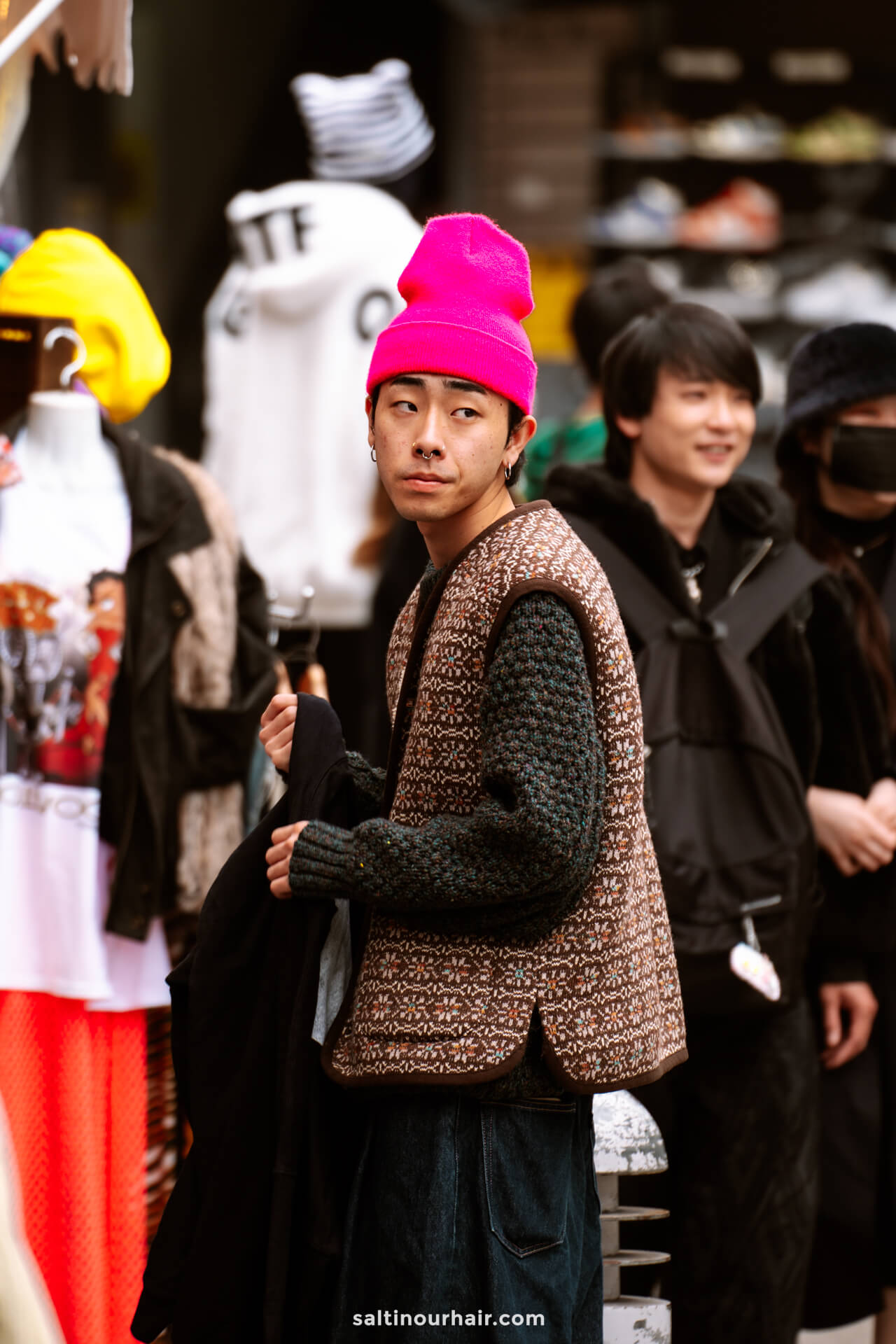
6. Gion, Kyoto
One of the top things to do in Kyoto is to visit the picturesque area of Gion. It gives a glimpse into traditional Japan at the heart of the bustling city. Originally, it was better known as a place of pilgrimage because of the sacred Gion Shrine. However, these days, locals and tourists alike come to admire the traditional architecture, iconic wooden townhouses named Machiya, pretty canals, and bridges.
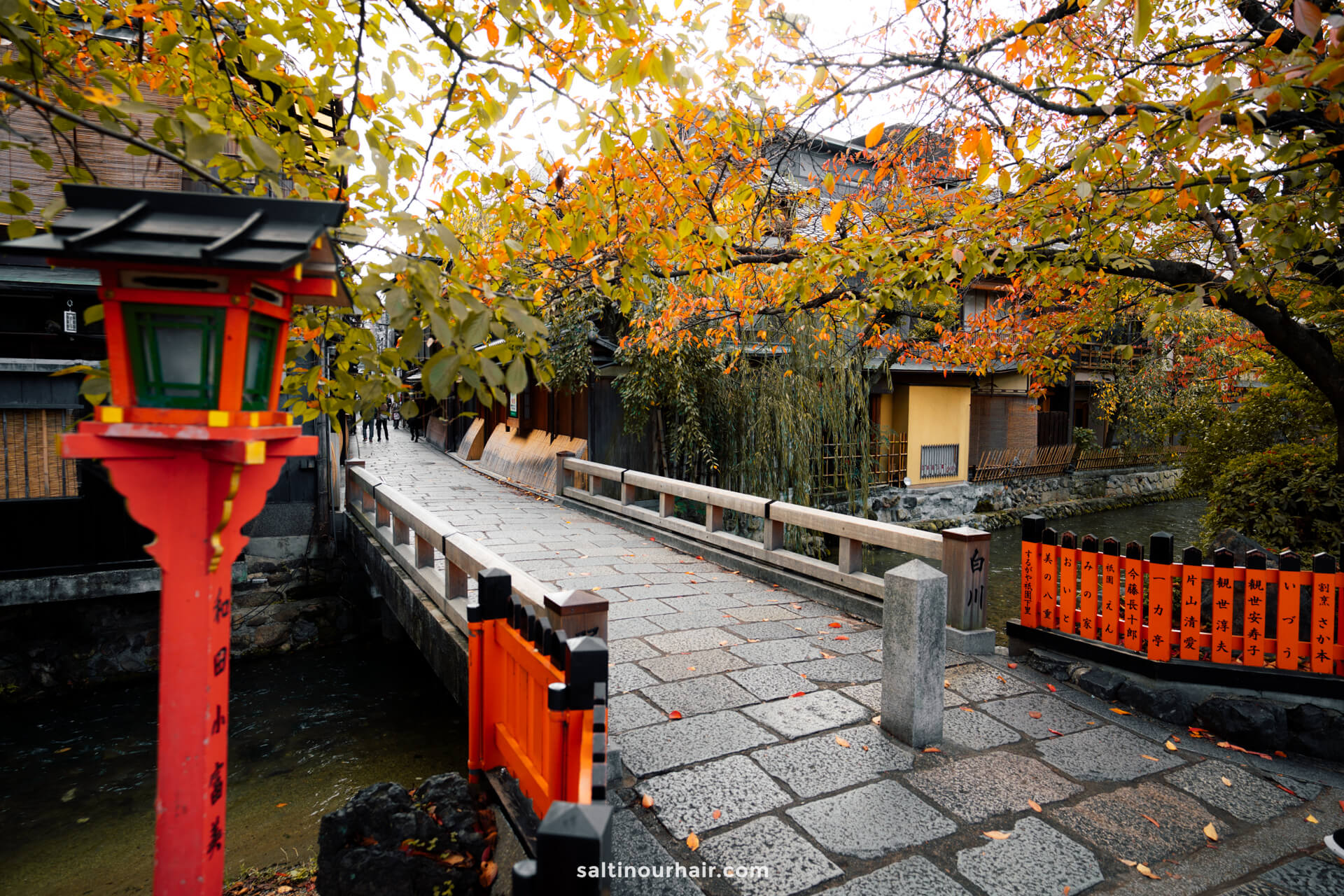
While in Gion, visit:
- Gion Shrine: Also known as Yasaka Shrine. This authentic red Japanese temple is lit by lanterns and is the perfect place to see cherry blossoms in spring.
- Shirakawa: an area that runs alongside the canal with traditional architecture.
- Gion Tatsumi Bridge: An iconic bridge, better known from one of the scenes in the film’ Memoirs of a Geisha’ that crosses the canal into Gion.
- Traditional Teahouse: Gion is full of teahouses, which are an essential part of Japanese culture. The most famous is Ichiriki Ochaya, known historically as the place where Samurai Soldiers would gather to discuss their plans.
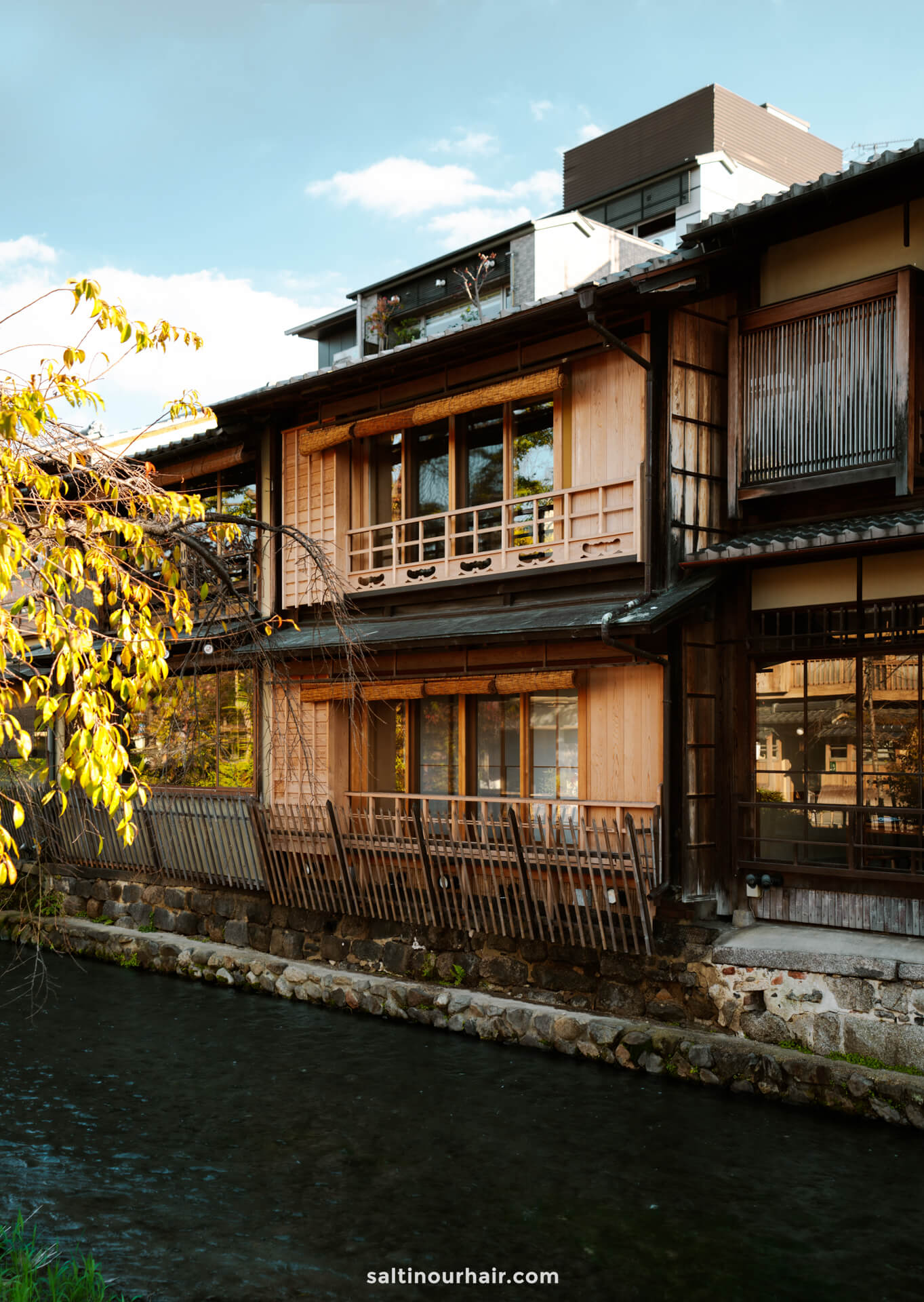
The Geisha District
Most interestingly, Gion is known as the Geisha district of Kyoto, specifically Hanamikoji Street. Here, you can see traditionally dressed women with painted white faces, pretty kimonos, and a fierce red lip going about their daily lives.
What are Geishas?
Geisha , known as Geika in Kyoto, are women of the arts (and not prostitutes, as many movies have depicted). They are trained in conversation, music, and dance, and their role is to host and entertain customers at special events and teahouses. Training to be a Geisha is rigorous; girls typically move into a house where they live and train from age 15. They continue to live in this special accommodation within a Geisha district for the rest of their career.
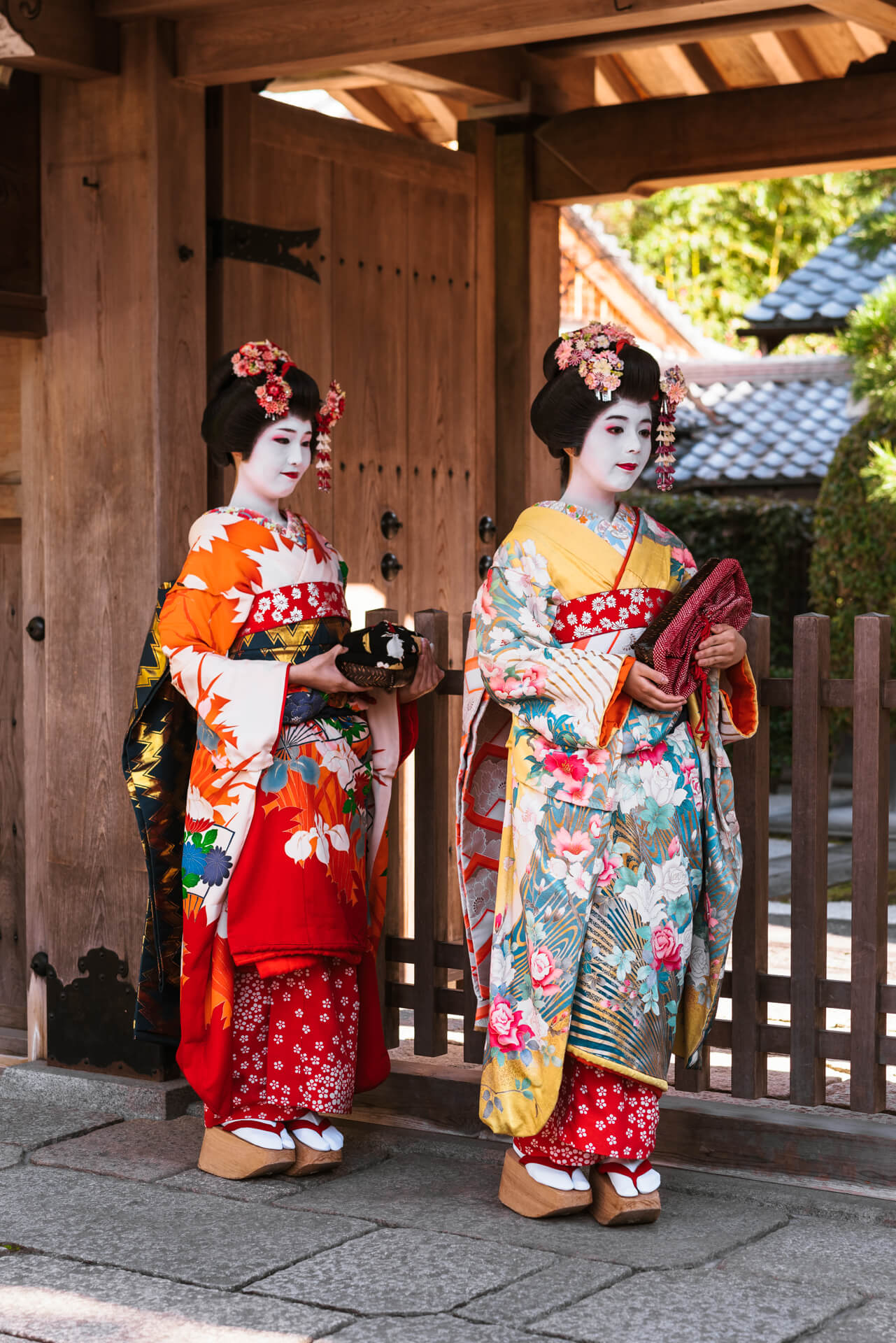
You’ll see Geisha throughout the Gion district, as this is the main area where they live and work in the city, including Maiko (the younger trainees).
See tickets and availability for a nighttime Geisha Tour
Tip: These ladies are working, so please don’t disturb them by approaching them to take photos. Instead, book a theater performance at Gion Corner — specifically designed for tourists who wish to interact with Geishas. Tickets cost 5,500 yen (37 USD).
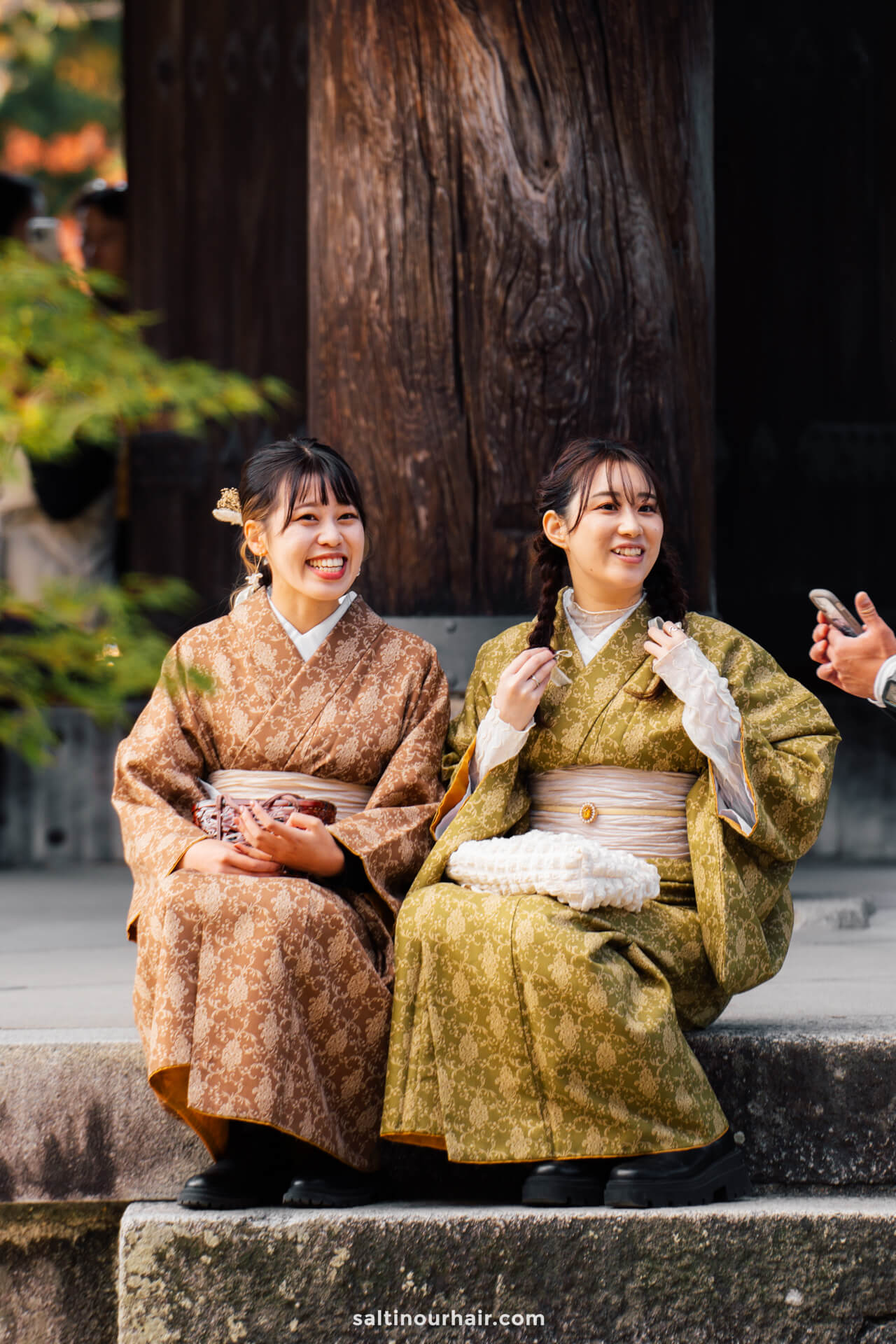
Rent a Kimono
Gion is the perfect place to try one of Kyoto’s cultural experiences, from flower arranging to enjoying a typical Japanese cooking class. It’s also the best place to rent a kimono , the traditional Japanese dress worn for special occasions.
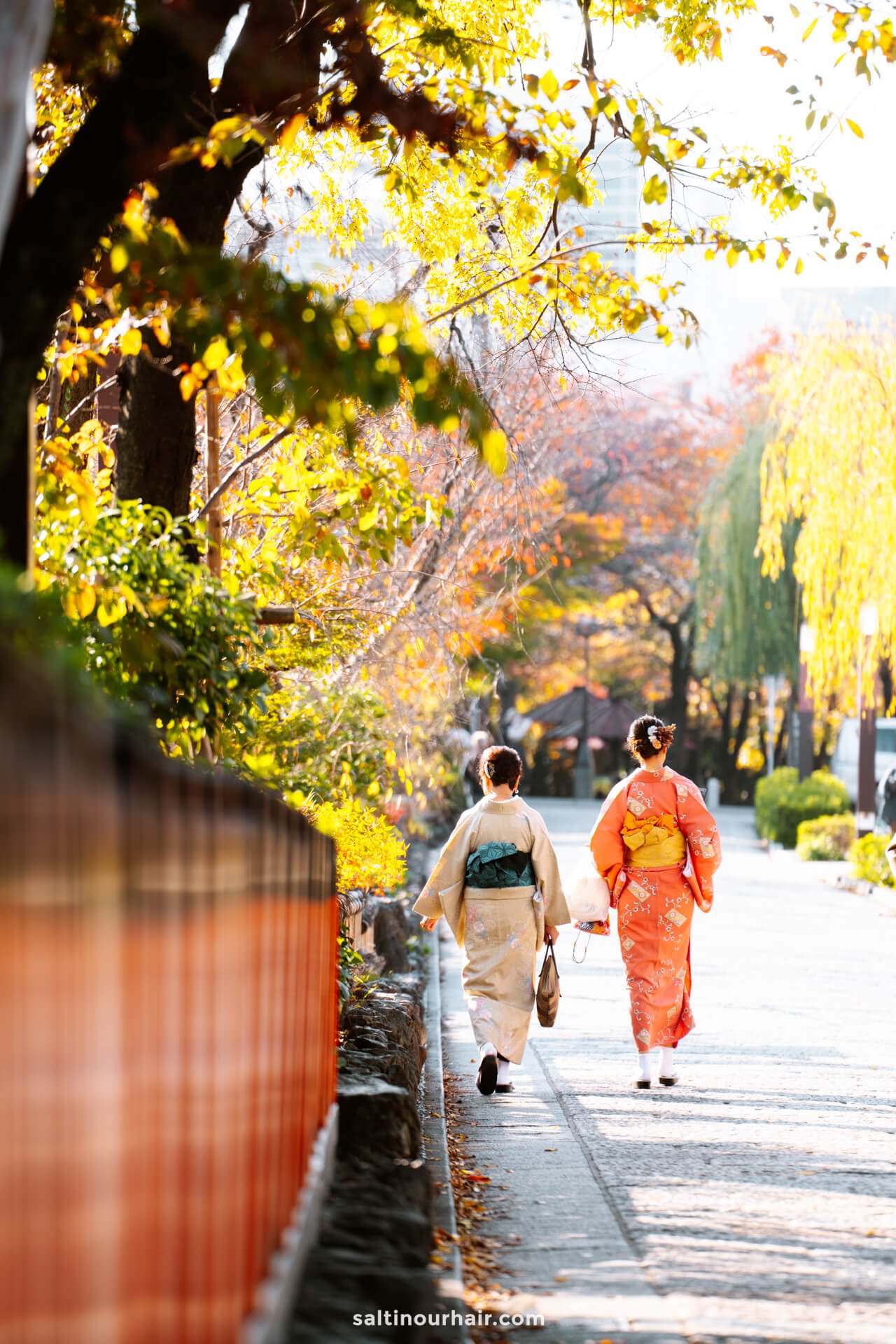
Unlike in many places, this is not considered cultural appropriation. In fact, it’s quite the opposite; locals encourage visitors to dress in Kimonos and better understand the cultural practice. You can rent a kimono for the day in Gion (or another area of the city) and take some beautiful photos.
Reserve your Kimono online here
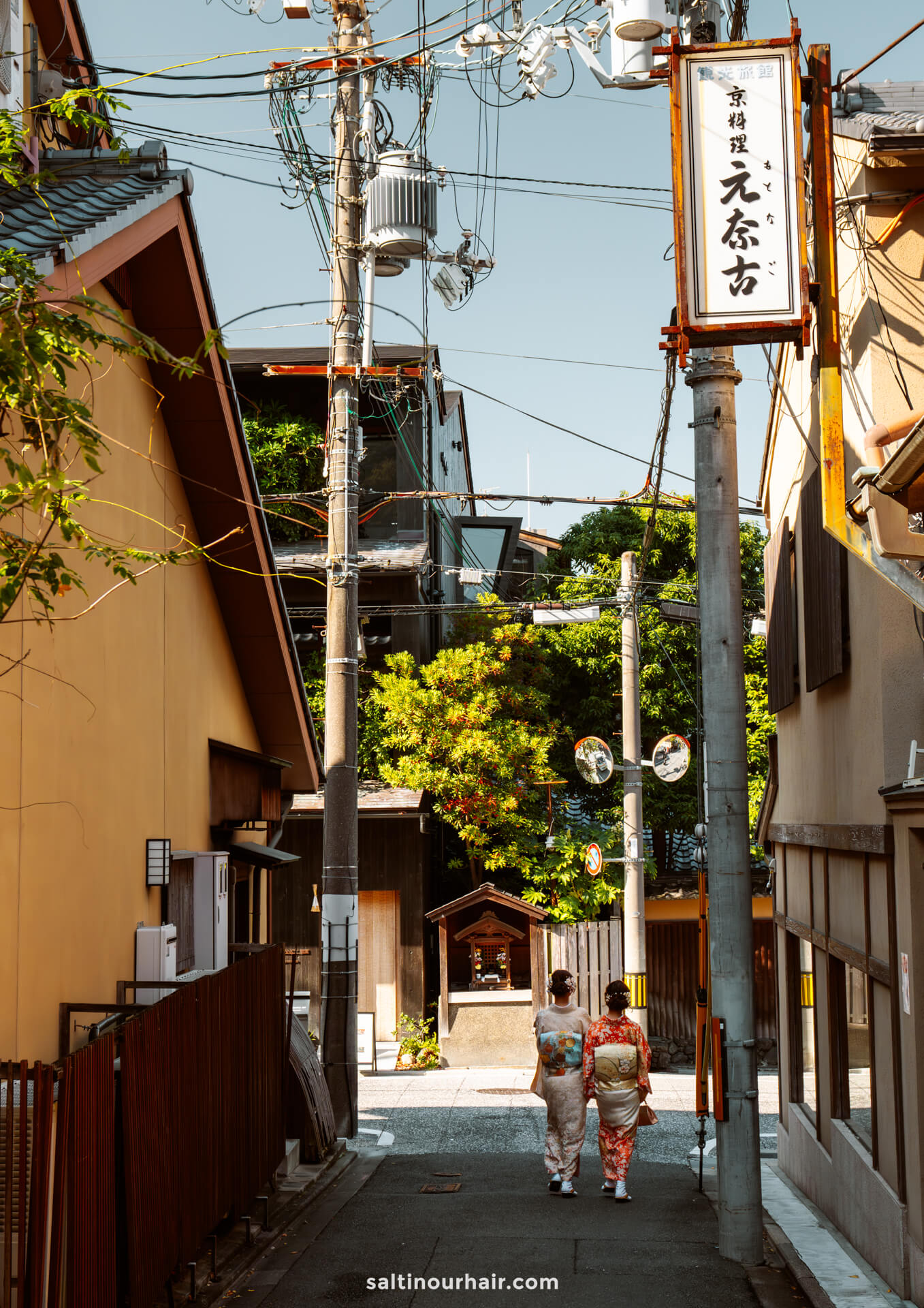
7. Fushimi Inari, Kyoto
Fushimi Inari is a remarkable Shinto shrine and the most sacred in Japan, dedicated to the God of Rice. The shrine is in the shadow of Mount Inari and marks the start of the pilgrim trail to the peak.
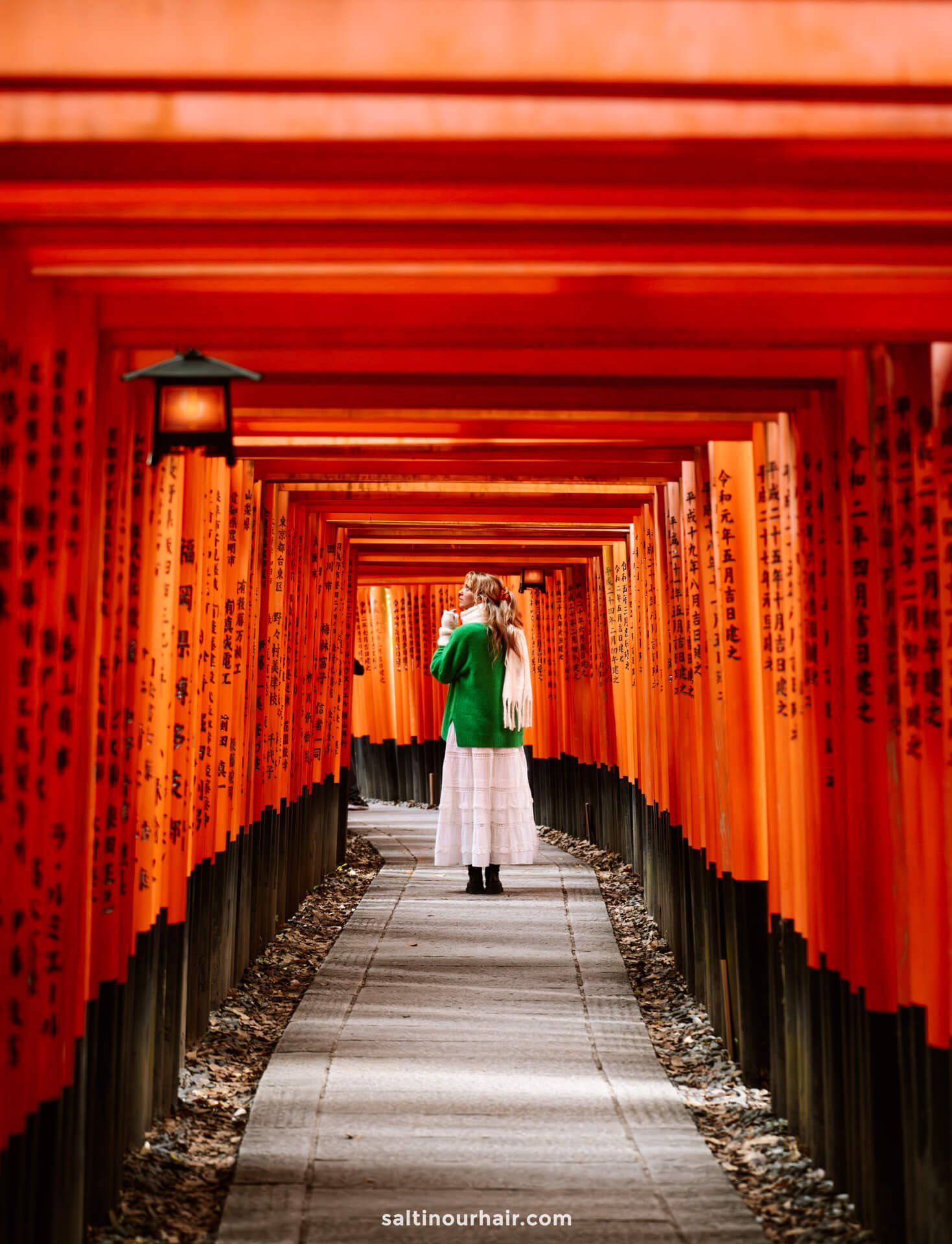
It’s most famous, though, for its 10,000 red-painted tori gates, which create a beautiful tunnel you can walk through. During the day, sunlight filters through the archways, and at night, it’s bathed in a warm lantern-lit glow.
Also read: Best Things To Do in Osaka, Japan
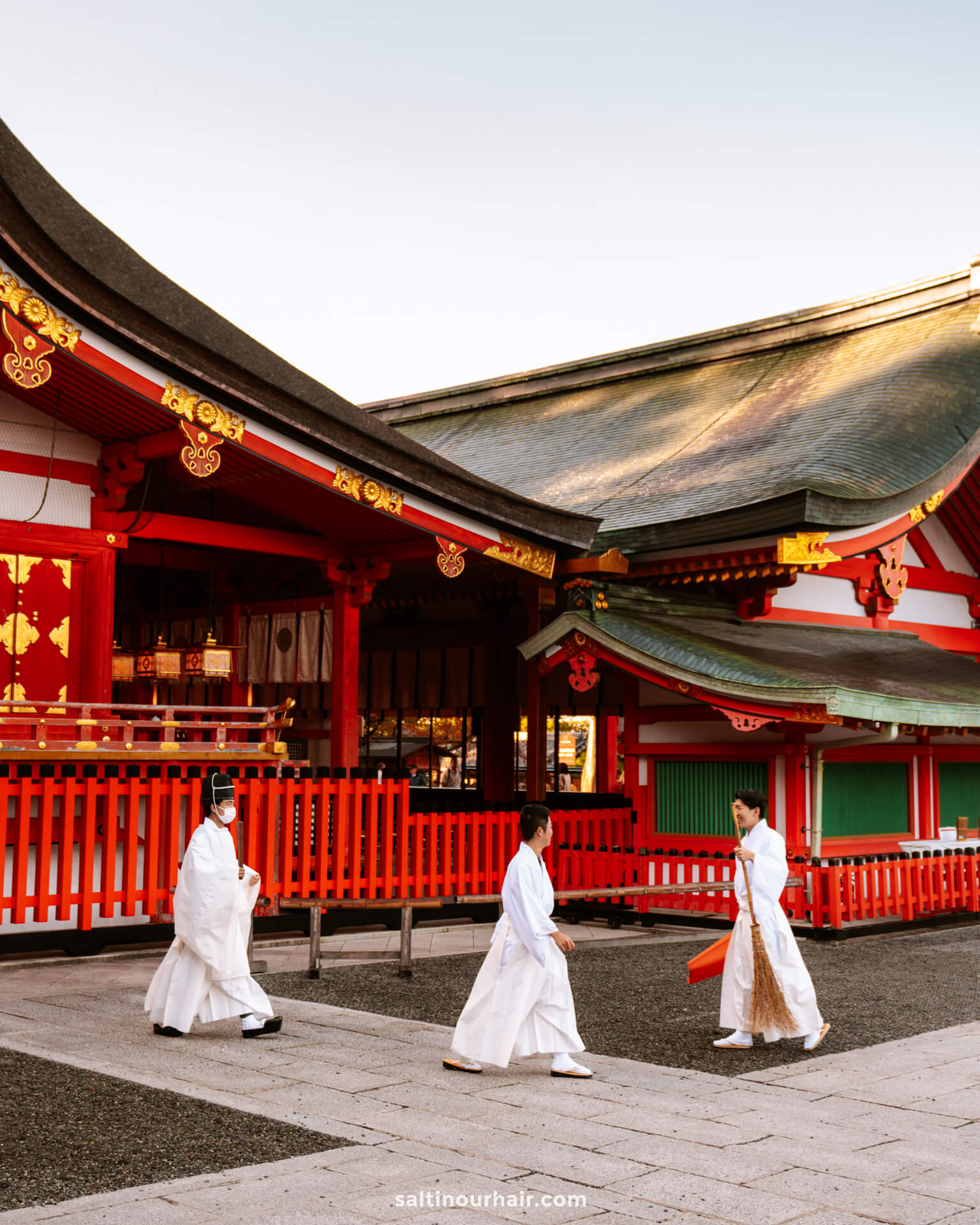
Once you’ve walked through the tori gates at Fushimi Inari Kyoto, you’ll reach the start of the mountain path. If you choose to embark to the top, it is a 2-3 hour hike. It’s a peaceful walk in nature that passes smaller shrines and teahouses.
Book this unique hidden hiking tour from Fushimi Inari
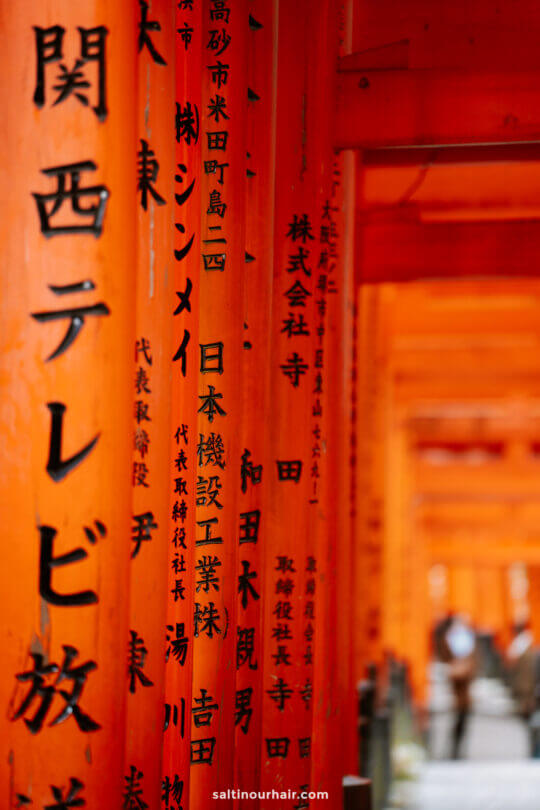
Opening Times and Entrance Fee
Fushimi Inari in Kyoto, Japan, is open 24 hours a day and free to visit. Sunset is a beautiful time to visit and a good option if you want to see the shrine change colors from day to night. However, it’s also the most popular, so expect crowds. The quietest time is at sunrise (anytime between 6 AM and 8 AM). After 10 AM, the site can become very crowded.
Tip: Don’t miss out on having a cup of tea at Vermillion Cafe. It’s a charming cafe 5 minutes walk from the shrine with an open terrace with riverside views. Here is the exact location .
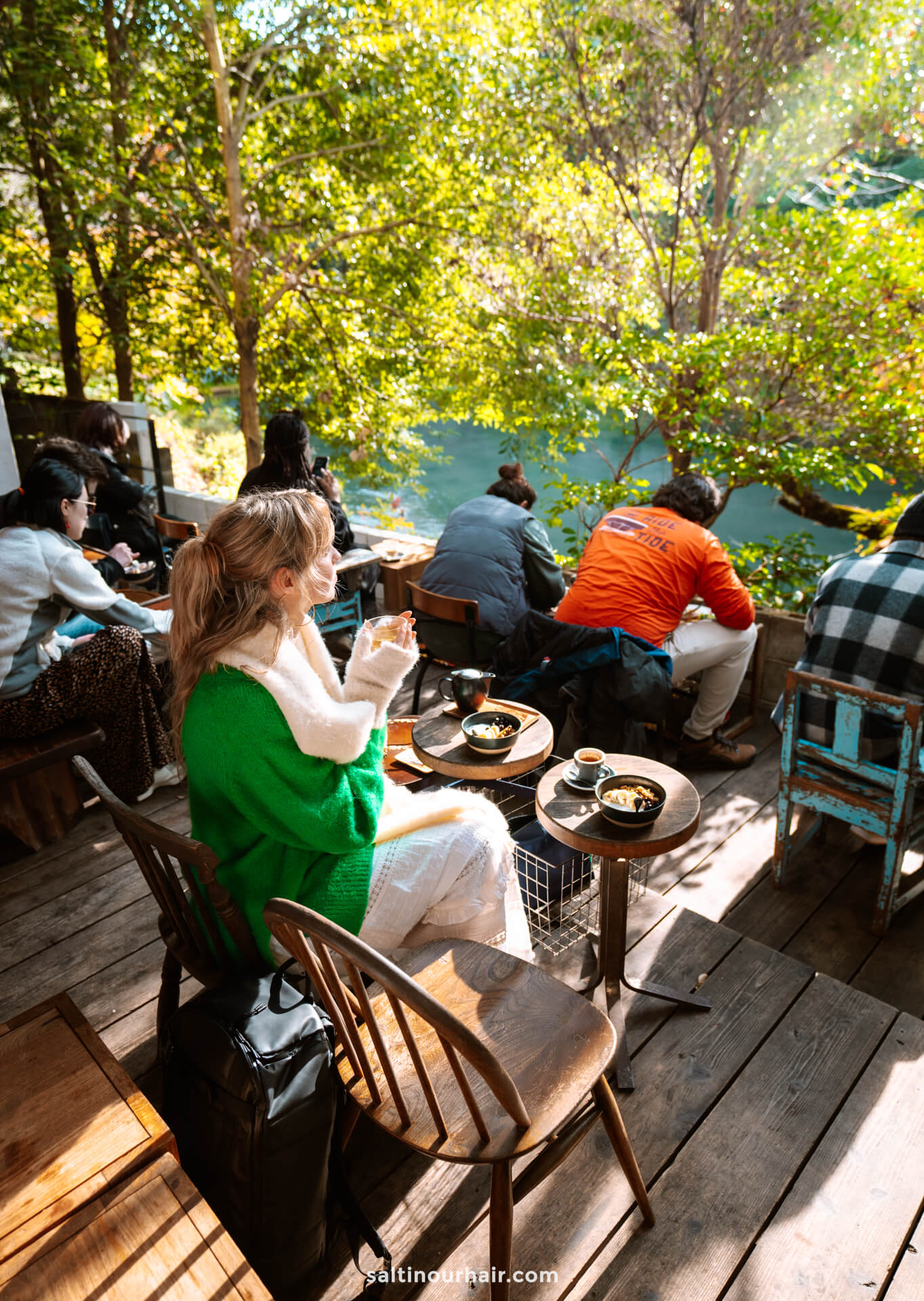
8. Pontocho
People watch to your heart’s content in the best nightlife spot in Kyoto: Pontocho! Located in downtown Kyoto, this traditional area has many upmarket restaurants and bars tucked down narrow alleys. ( Join this popular walking tour around Pontocho )
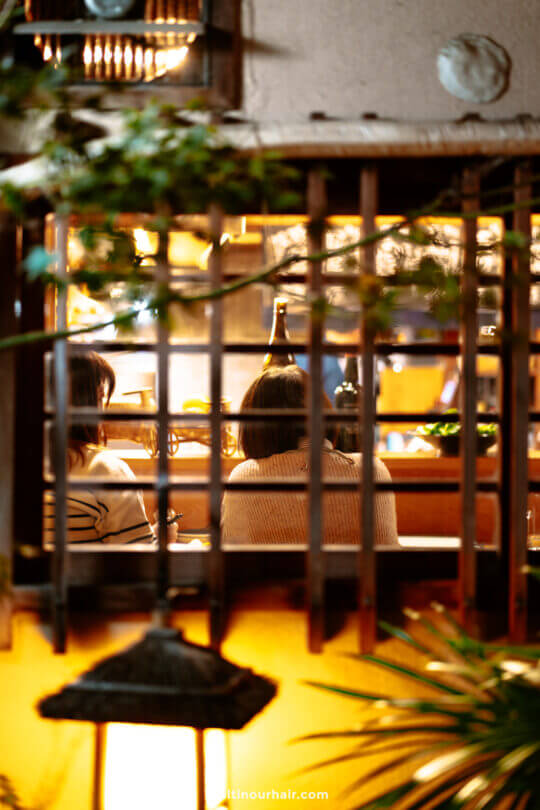
The atmosphere at night is especially fantastic when the streets are bathed in a lantern-lit glow and locals come to enjoy dinner together. It’s also one of the Geisha districts in the city, so you might be lucky enough to catch a glimpse of a Geisha.
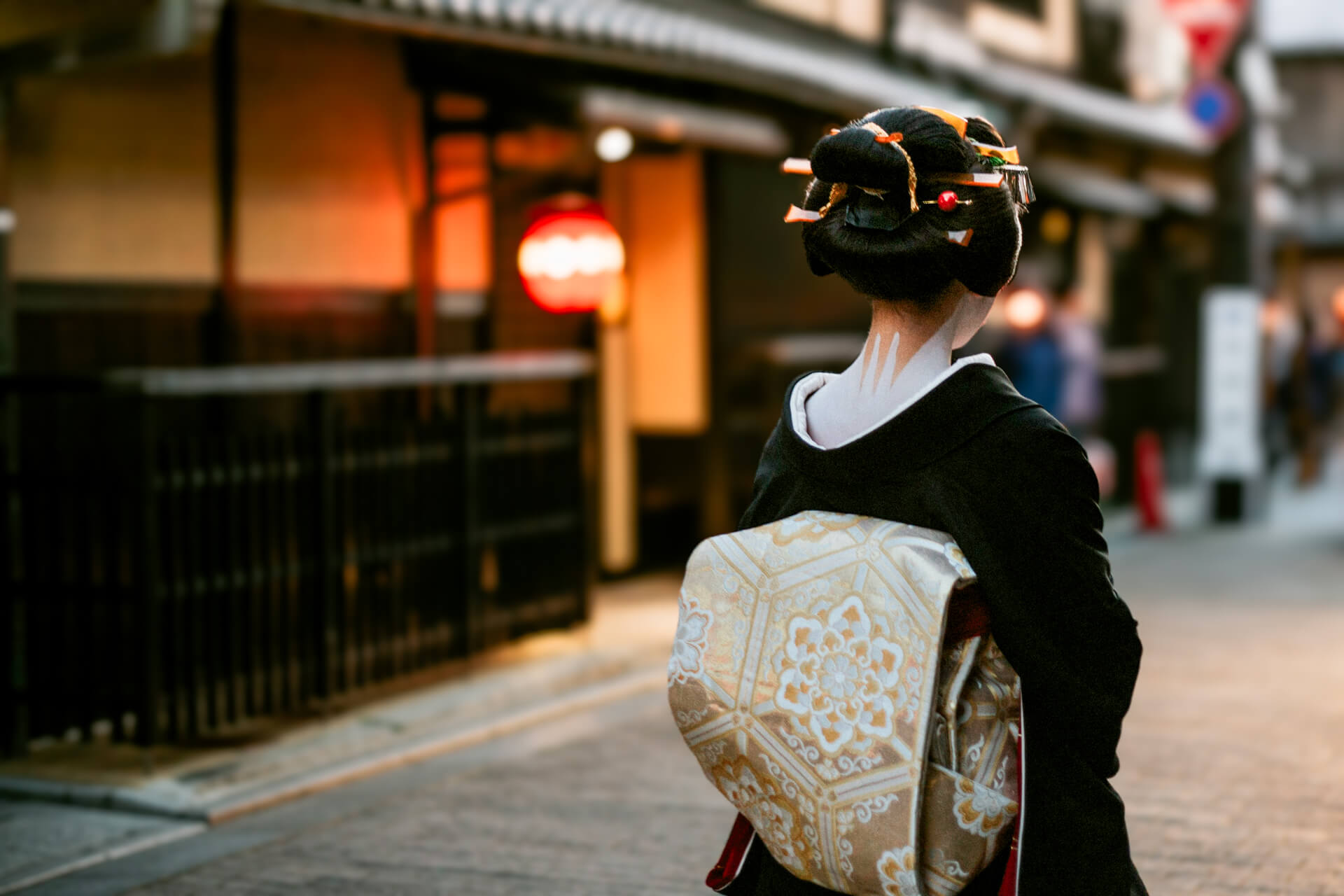
Tip: In the summer, the restaurants create temporary platforms that hang over the riverside, creating terraces for open-air dining. This is called Kawayuka, a dining experience designed to help customers feel cooler. Please note that Pontocho can get very busy, so it’s recommended to book a restaurant in advance.
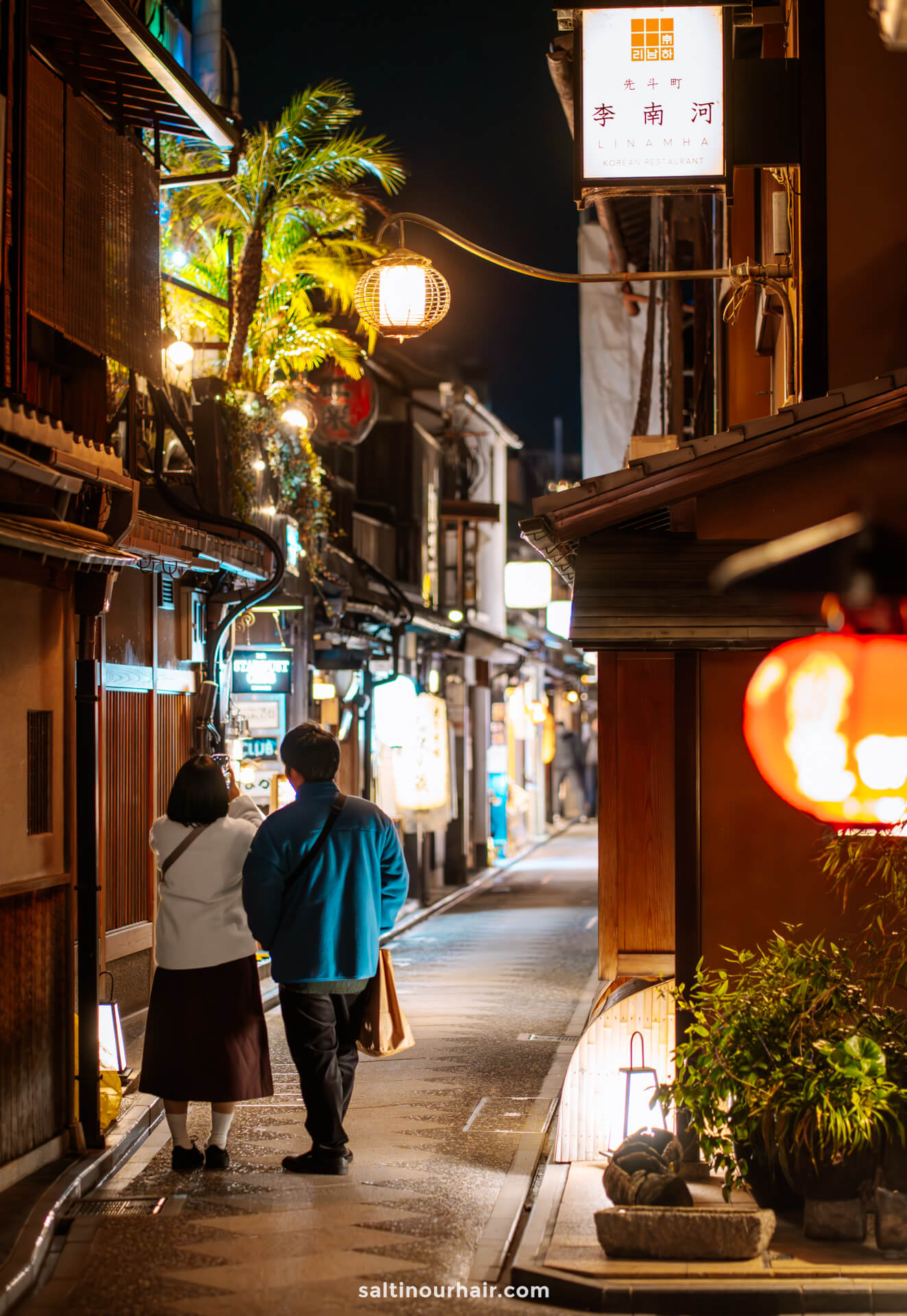
9. Nanzen-ji Temple
Nanzen-ji Temple is a must-see in Kyoto! The Zen Buddhist temple sits at the foot of the mountains on the city’s edge and is home to various sub-temples and gardens. Because of all the beautiful trees and foliage, it’s charming to visit during fall when the colors are at their most vibrant.
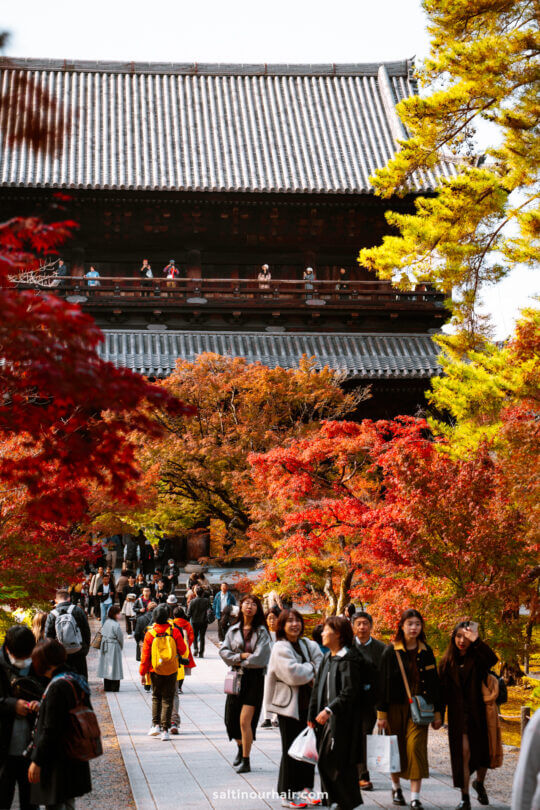
When you first arrive, you’ll pass through the huge entranceway known as the Sanmon Gate, which means ‘mountain gate’. Pay the entrance fee and climb to the top of the gate for great views!
Among the grounds, you’ll also find a spectacular stone garden, which has been awarded status as a ‘national site of scenic beauty’. Nearby, you’ll also see an unusual feature for a temple — a large stone-arched aqueduct.
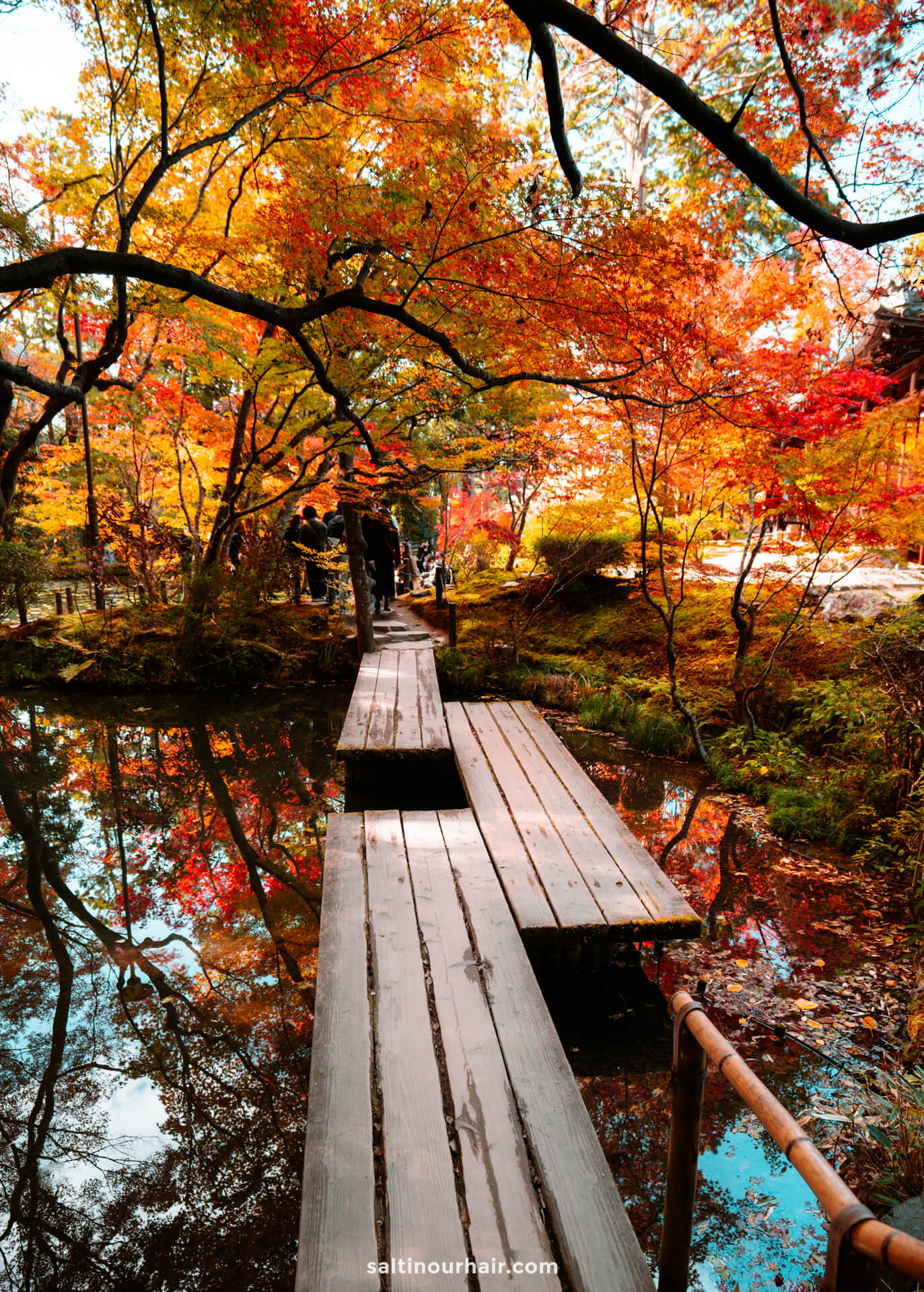
Visiting Information Nanzen-ji
The main temple grounds are open for free. However, you’ll have to pay different admission fees for all the smaller temples. You can see all the ticket prices per temple here .
Opening hours vary depending on the temple; the complex is open from 8.40 AM – 5 PM. Check all the times online before visiting.
Top Tip: Grab a drink afterward at a cute cafe near the temple, called Blue Bottle Coffee. Here is the exact location .
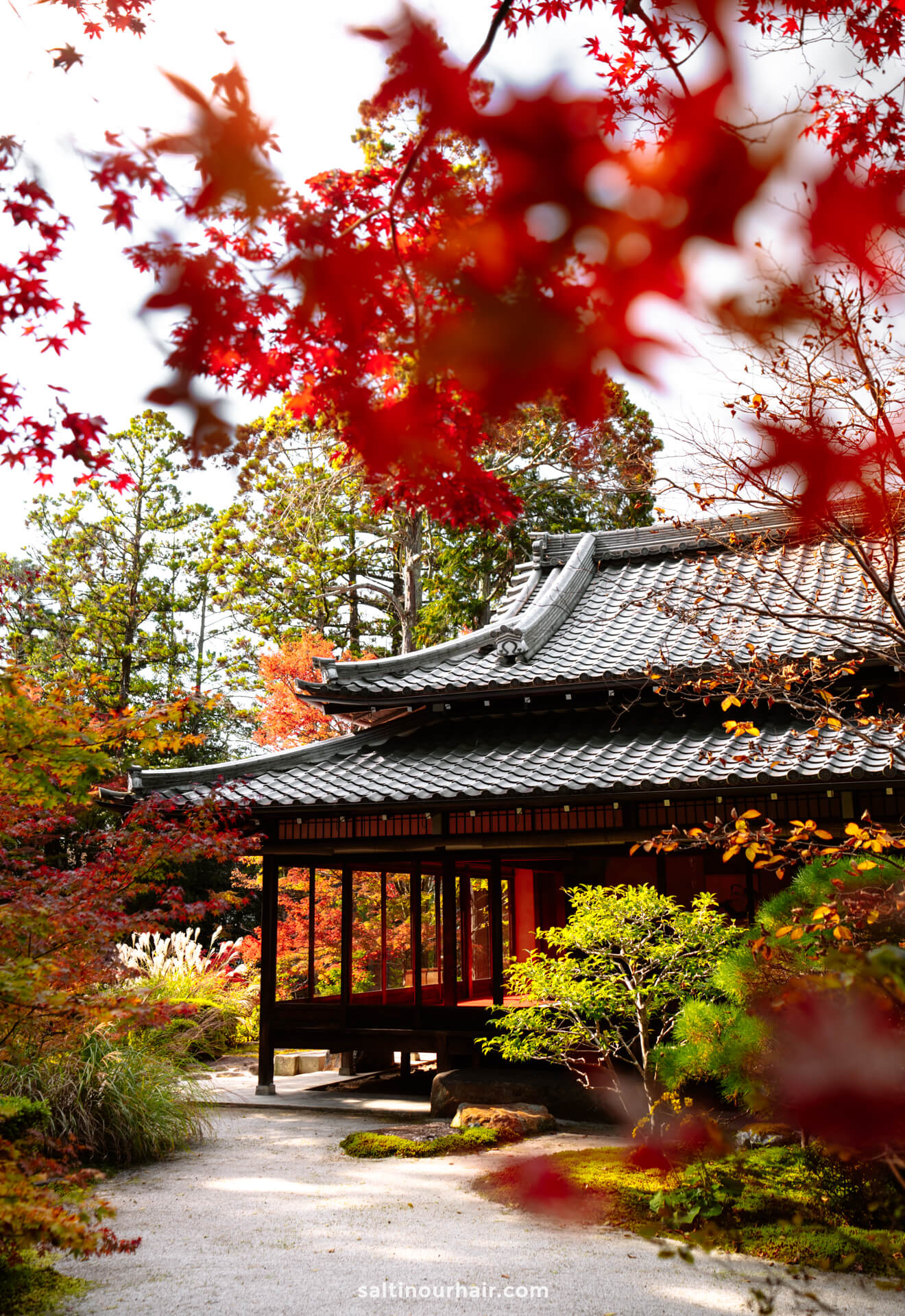
10. Nishiki Market
Get amongst the jostling crowds exploring Nishiki Market — one of the most popular things to do in Kyoto.
Known as ‘Kyoto’s Kitchen’, this market has a 400-year history and is home to 100+ food vendors. Each stall sells something unique, from seaweed and fresh sashimi to sake and piles of unusual spices.
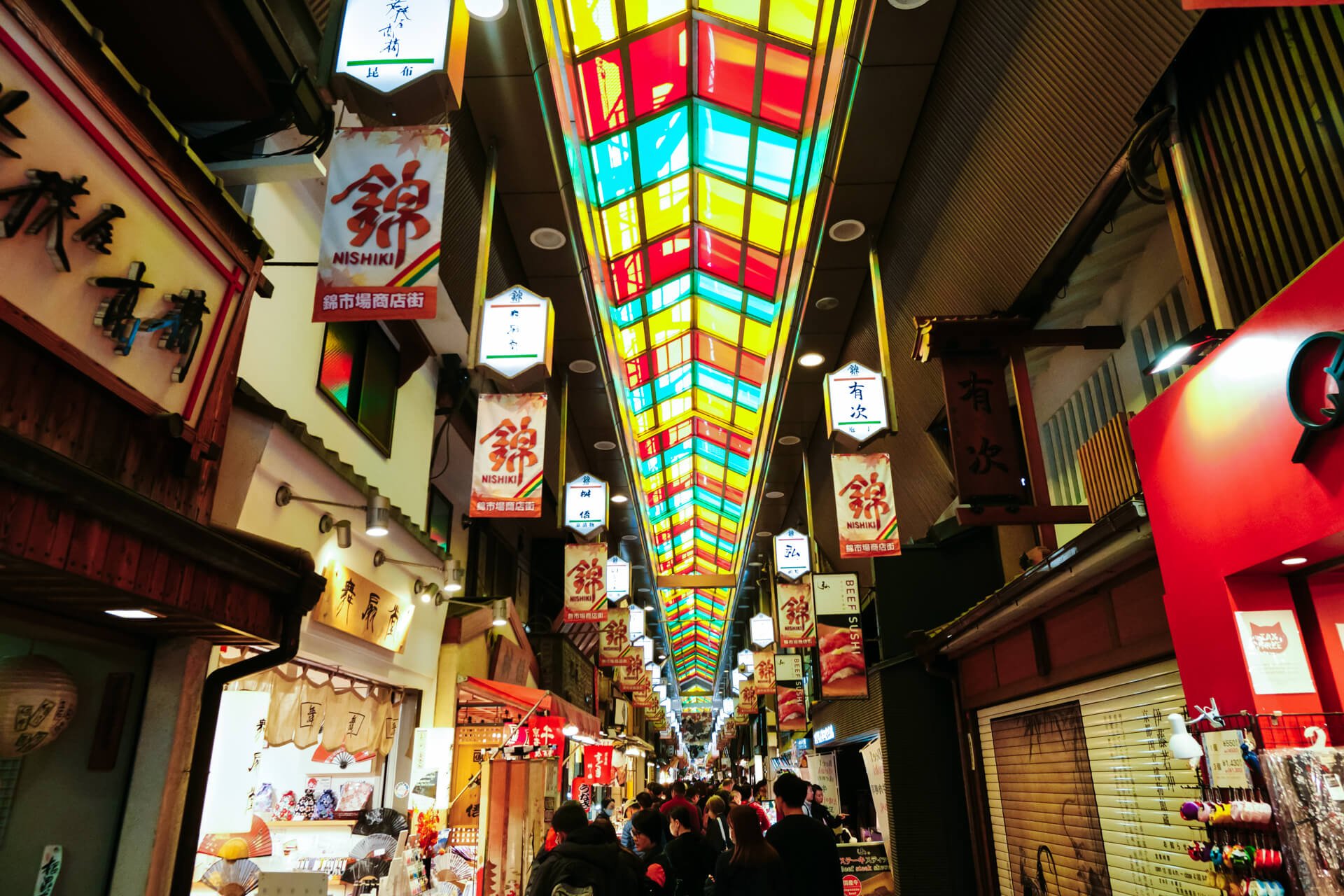
Tip: Join a food tour with a local who can point you toward the best food stalls and explain everything about all the weird and wonderful snacks.
Book this popular brunch food tour of Nishiki Market!
Opening Times: Hours vary depending on the stall, but most are generally open from 10 AM – 6 PM (closed Wednesday or Sunday, depending on the store). Please remember to bring cash, as some vendors don’t accept cards.
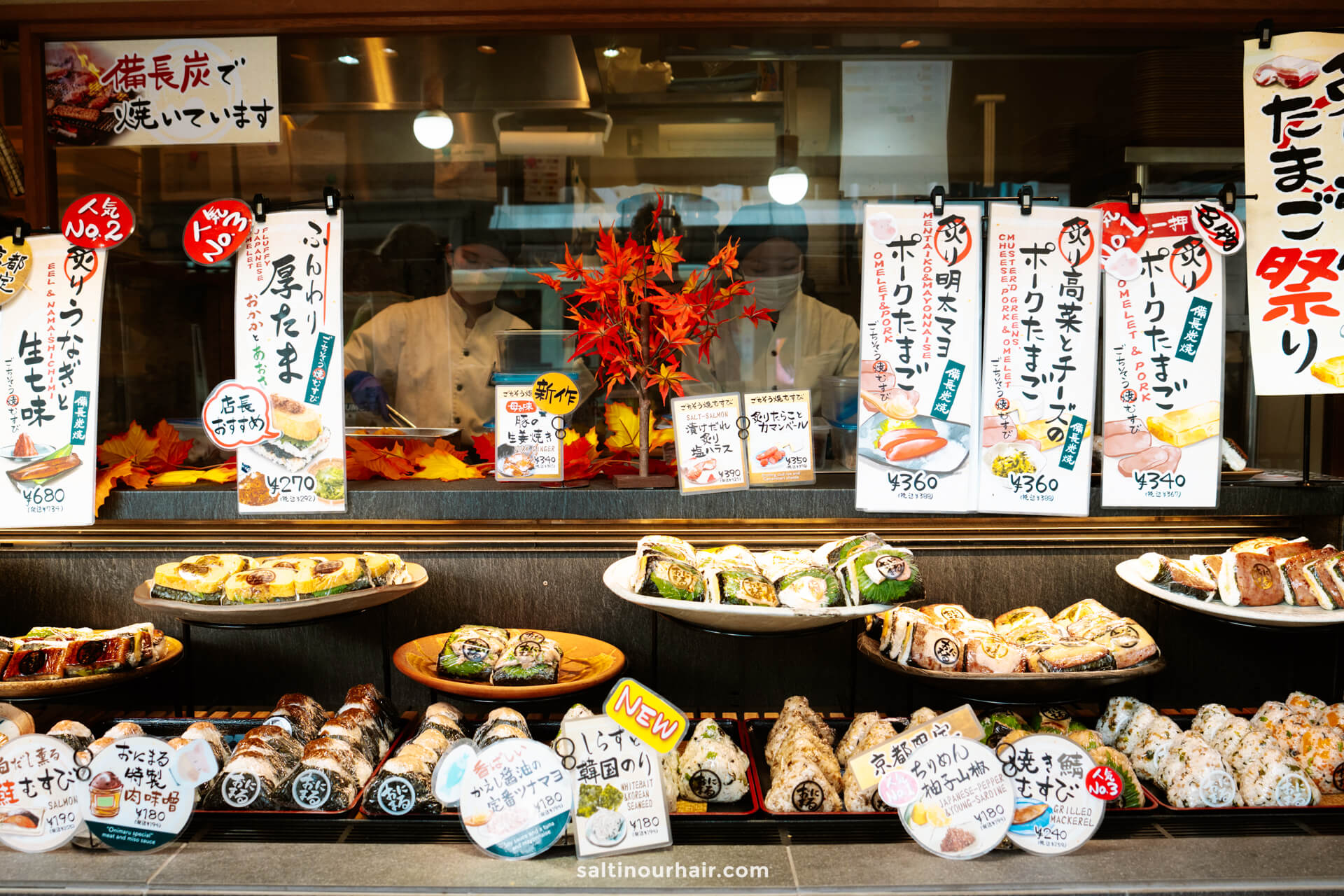
11. Visit Koyasan
One of the top things to do in Kyoto is to take a day trip to the sacred temple village of Koyosan, situated on the slopes of Mount Koya. This area is known as an important Buddhist pilgrimage site with over 100+ beautiful temples. Spend the day wandering among the temples, breathing in the cold mountain air, and visiting the snow-covered cemetery and gardens.
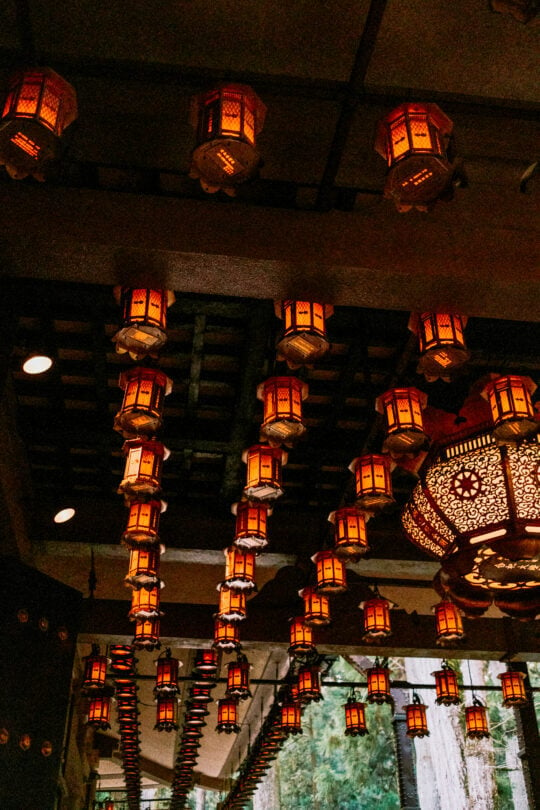
If you have time on your Japan itinerary, stay overnight in one of the temples in Koyasan and live as the monks have for hundreds of years. The lodgings are simple and traditional in line with the Buddhist teachings, with basic futons, sliding doors, and shared bathrooms. You’ll also get to join the monks for a typical dinner, morning prayer, and meditation — this was one of our favorite adventures on our trip to Japan!
Hotels in Koyasan 😴
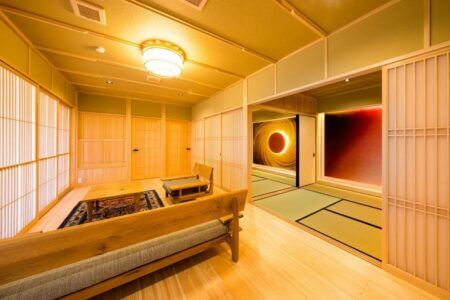
Getting there: Take a rapid train from Kyoto Station to Osaka Namba Station (covered by your JR Pass) in under 30 minutes. From here, jump on another train to Gokurabashi (1.5 hours) before taking the cable car up the mountain to Koyosan.
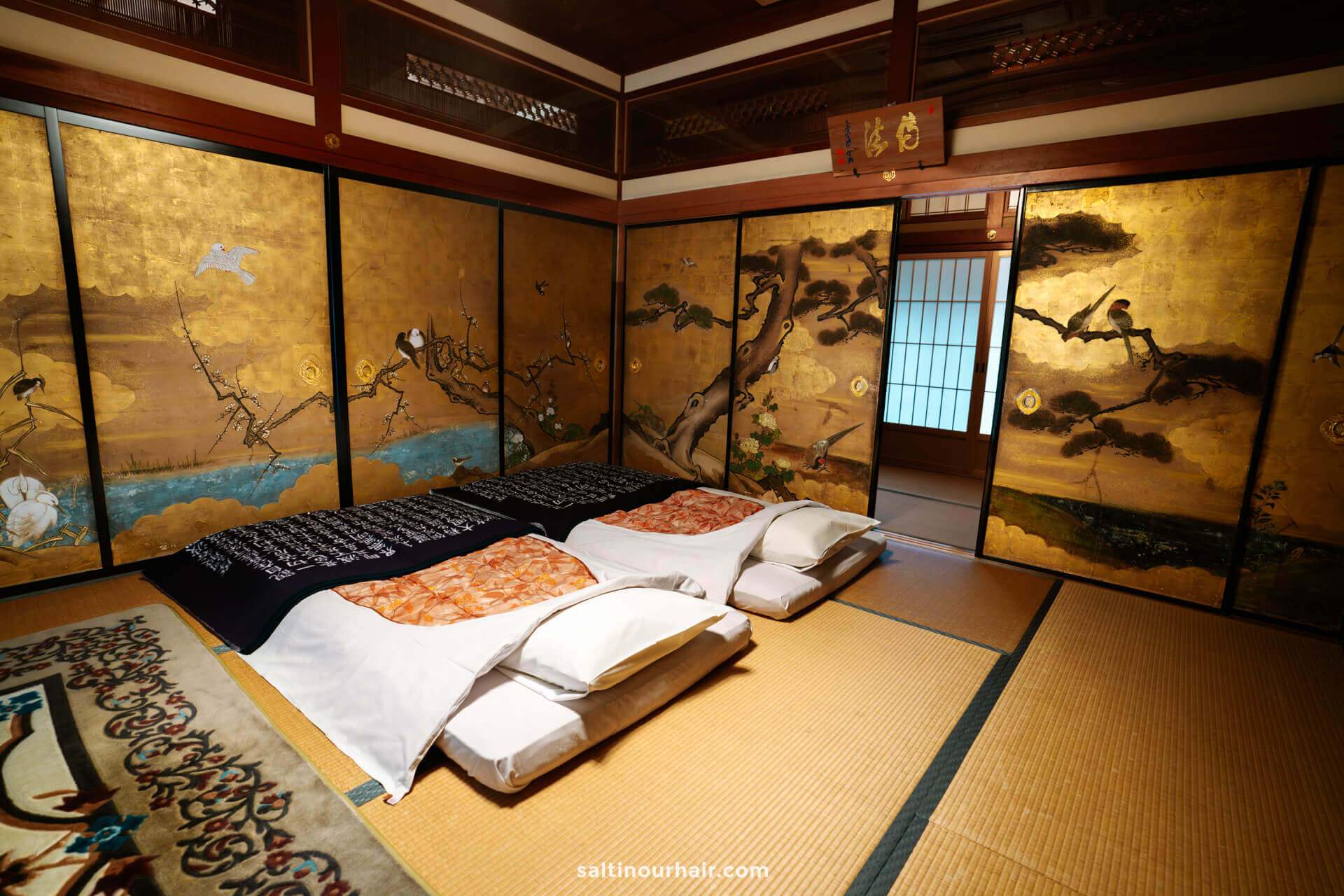
12. Day Trip to Universal Studios !
Osaka is close to Kyoto and home to Universal Studios Japan! If you have time on your Japan Itinerary, spend a fun day out enjoying the theme park and the various rides. Get your adrenaline pumping on rapid rollercoasters, eat snacks in the shape of your favorite film characters, and visit a real-life Hogwarts castle.
Book your Universal Studio tickets in advance here
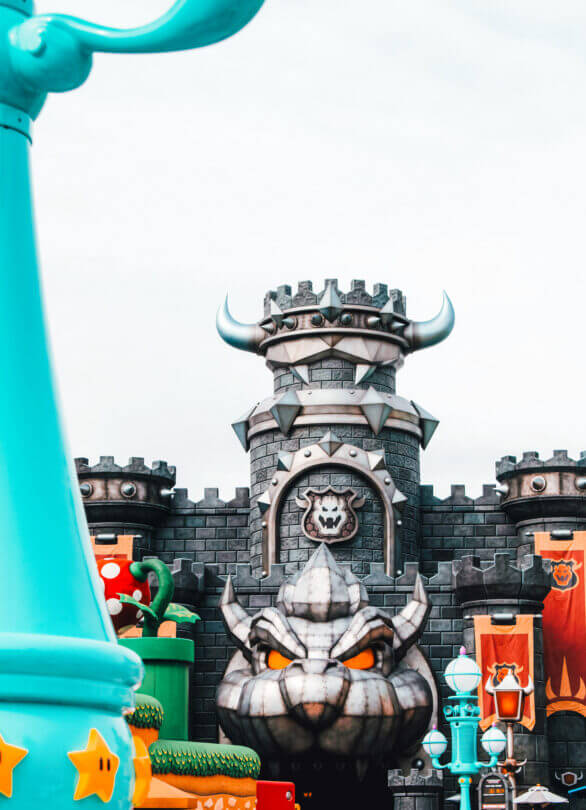
13. Golden Temple, Kyoto
The Golden Temple, also known as Kinkaku-Ji, is the most popular thing to do in Kyoto and the most-visited attraction in the city — for good reason! This majestic temple, balanced on the edge of a large pond, is covered in real gold leaf. It’s totally unique! On a clear day, when the light hits the gold just right, it’s truly magical.
Note: You cannot visit inside the Golden Temple, Kyoto. However, you can view it from the water’s edge before passing through the extensive gardens.
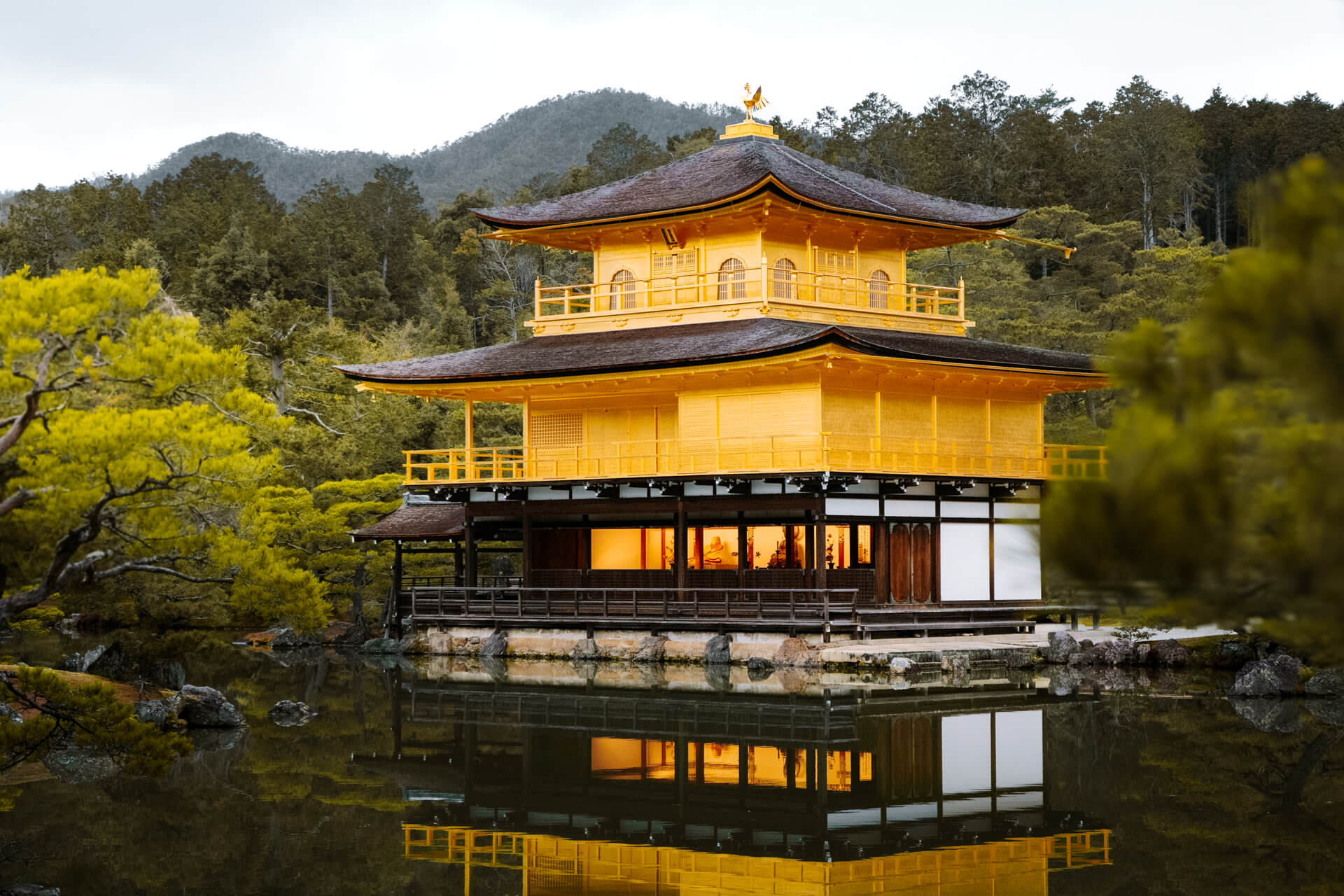
Golden Temple, Kyoto, is open from 9 AM – 5 PM and costs 500 yen (3.50 USD) to enter. An hour’s visit is sufficient. Try to arrive before 9 AM to be first in line. Generally, it is always very busy because of its popularity.
See availability for a tour of Golden Temple (includes a visit to Imperial Palace!)
Getting there: Golden Temple is a little bit further out of the center, but you can easily take a bus or train in around 30- 45 minutes. Check Google Maps for directions, updated times, and information.
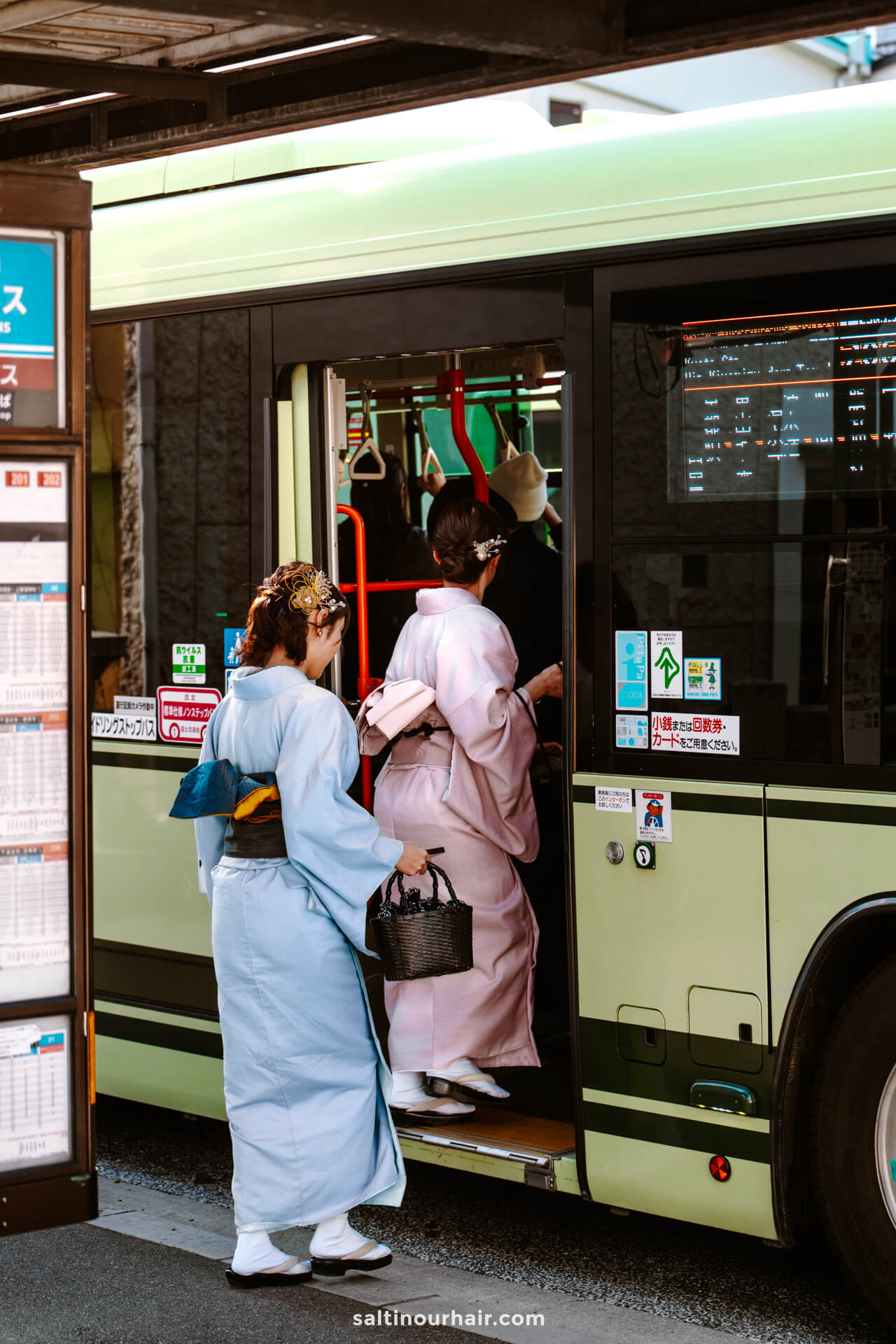
14. Imperial Palace
The Grand Imperial Palace is the former residence of the Emperor of Japan. Set in extensive parkland, it’s a place to escape the hustle and bustle of Kyoto and learn a bit more about the dynasties of Japan.
The facade of the palace itself is quite plain, and unfortunately, you can’t visit inside. It’s not as impressive as some other temples and parks in the city, so it’s an optional thing to do in Kyoto. Best of all, it’s free to visit!
Learn more about Imperial Palace on this multi-stop tour (includes Golden Temple)
Best Restaurants & Cafes
Kyoto is one of the greatest cities to eat in on your trip to Japan. The city is home to a particular vegetarian Buddhist cuisine (no surprise, as ‘the city of ten thousand shrines’), so it’s great for veggies and vegans. Other specialties include Kyoto soba noodles and matcha tea! Here are some of our must-try restaurants:
- Vermillion Cafe
- Wife&Husband (reserve a picnic)
- Trattoria Casa Verde
- AIN SOPH. Journey KYOTO
- Kyoto Onimaru
- Fiveran (bakery
- Cafe Bibliotic Hello!
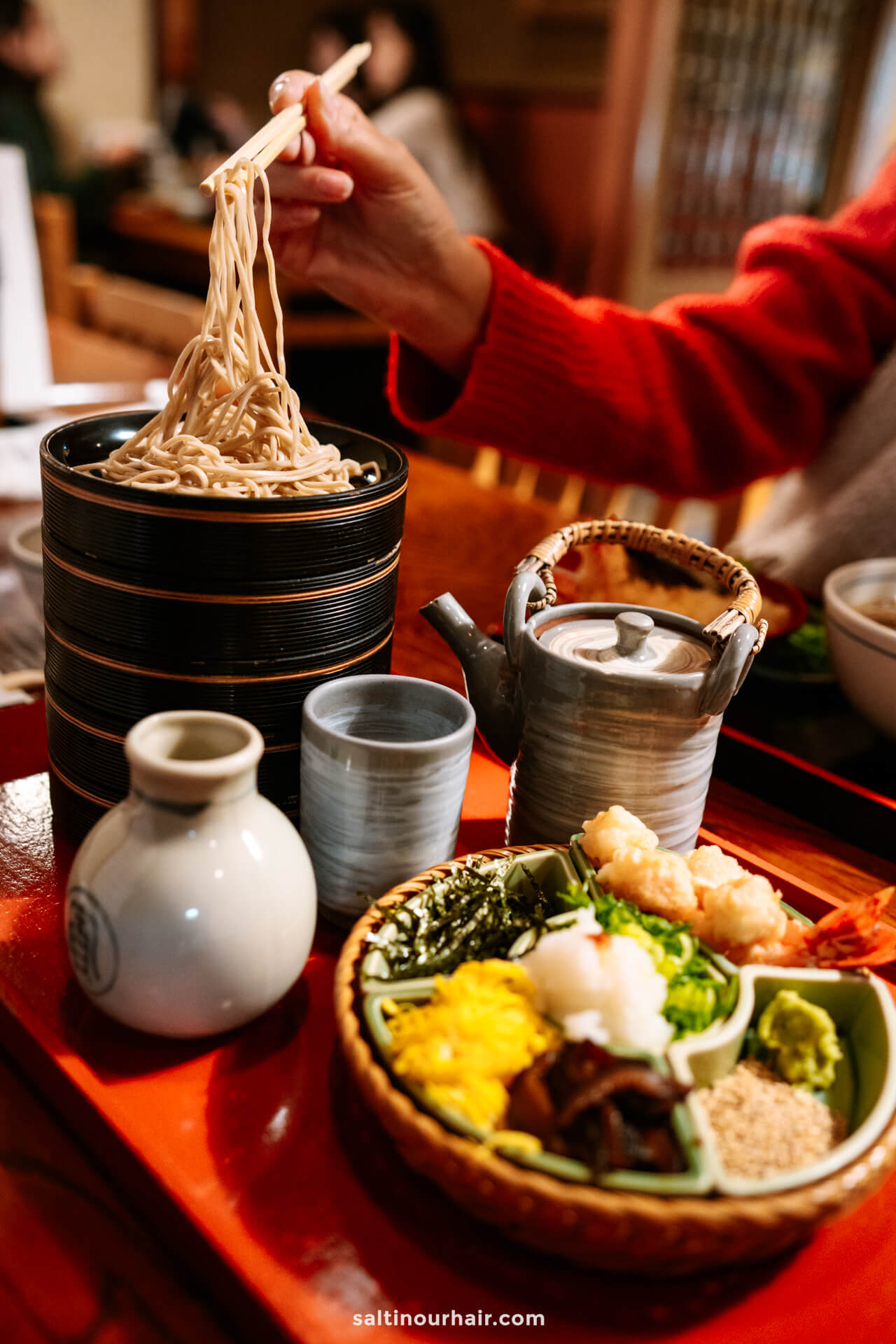
Note: Kyoto is a very busy place, and it’s commonplace to queue for a table in a restaurant. Book in advance where possible to avoid disappointment.
Top Tip: It’s no secret that Japan is expensive, and Kyoto is no exception! If you want to keep costs lower, you can grab a quick snack or an affordable takeaway lunch at the supermarkets 7-Eleven, Family Mart, or Lawson. You can find delicious Onigiri (a rice ball with fish inside and packed in crunchy seaweed) or even mix a cup of frozen fruits into a smoothie.
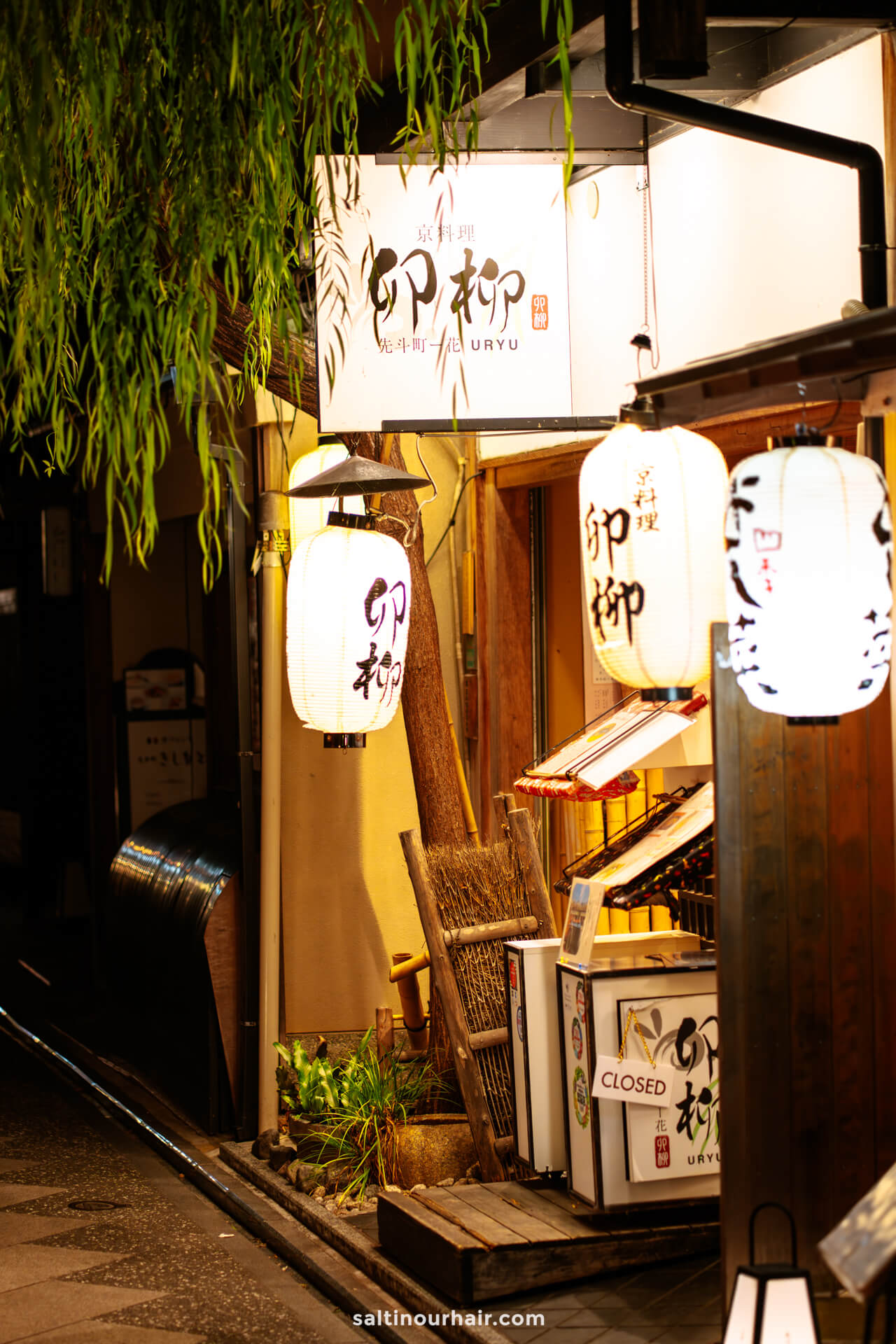
Hotels in Kyoto, Japan
Kyoto is a sprawling city with many of the top things to do located both on the outskirts and in the center. Where you choose to stay depends on the type of trip you’re planning. For example, if you want to do some day trips out of the city, we recommend staying in Shimogyo , which surrounds Kyoto Station. Otherwise, choose a hotel in Kyoto located within Nakagyo (the central district) or Gion (the traditional Geisha district).
- Hotels in Shimogyo (near Kyoto Station)
- Nakagyo Hotels (Central)
- Hotels in Gion (Geisha District)
Tip: We stayed in Insomnia KYOTO OIKE , which was located in Nakagyo and close to all public transport. Book your stay here .
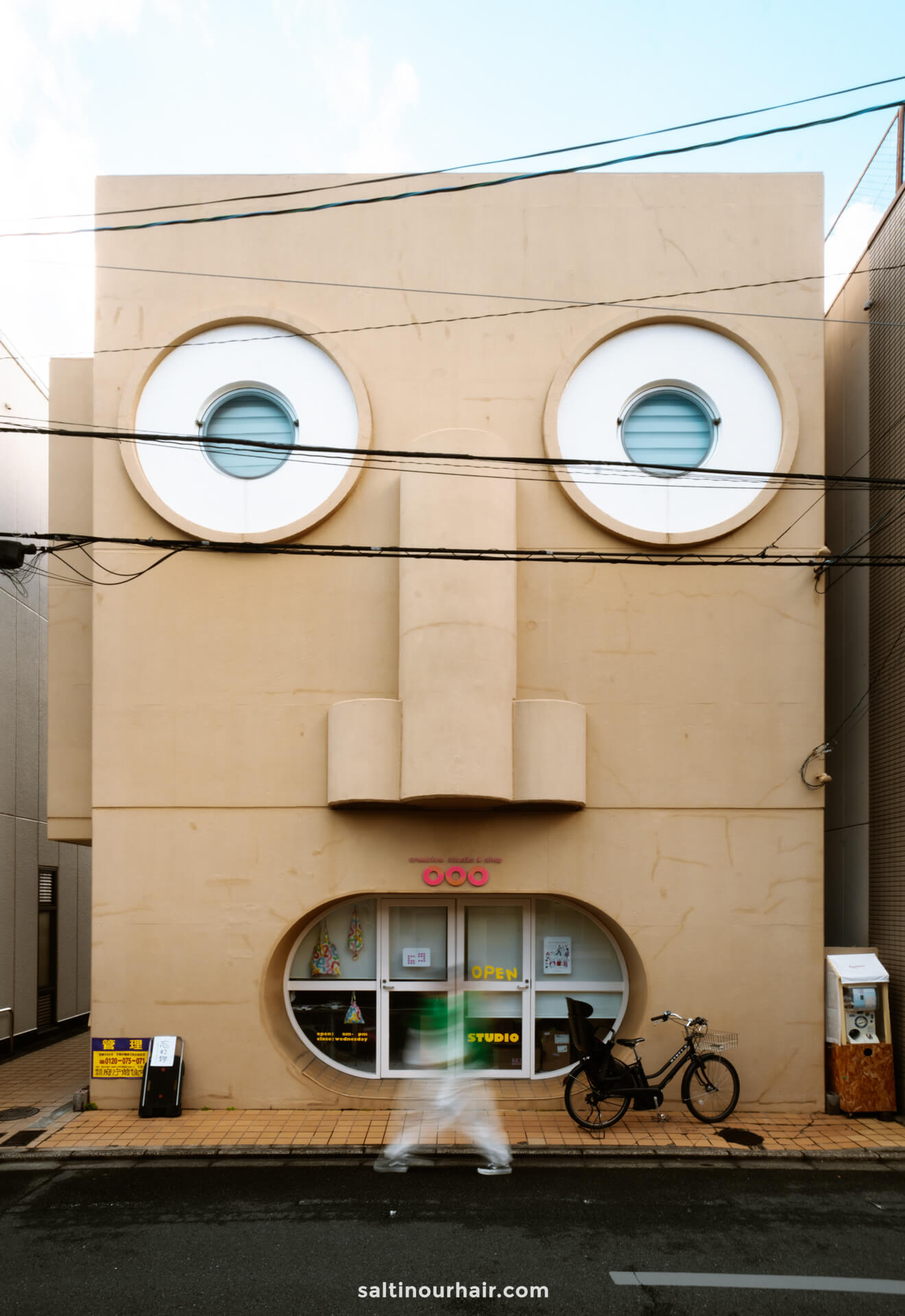
How Many Days in Kyoto?
With so much to see and do in Kyoto, it’s well worth taking a bit more time out of your Japan itinerary for this awesome city. A 2-3-day trip will allow you to see all the main sites in the city (including Arashiyama Bamboo Forest). Meanwhile, 4-6 days will allow you to visit Nara Park, Koyosan, and even Universal Studios.
Travel Insurance Don't forget a travel insurance for your Japan trip! Heymondo covers medical emergencies, theft, delays, cancellations, lost luggage, and more, with 24/7 worldwide assistance and medical chat. As a Salt in our Hair reader, we've got you 5% off! Check Heymondo here
How to Visit Kyoto
The nearest international airport to Kyoto is Osaka Itami, which is a 50-minute drive away using the airport shuttle bus. Alternatively, Kansai International Airport is located slightly further out at Osaka Bay (you can take the train from here to Kyoto in 70 minutes – covered by your JR pass. Book tickets here ).
Tip: It’s best to get an eSim in advance so you’re directly connected when you land in Japan. Buy your sim online here .
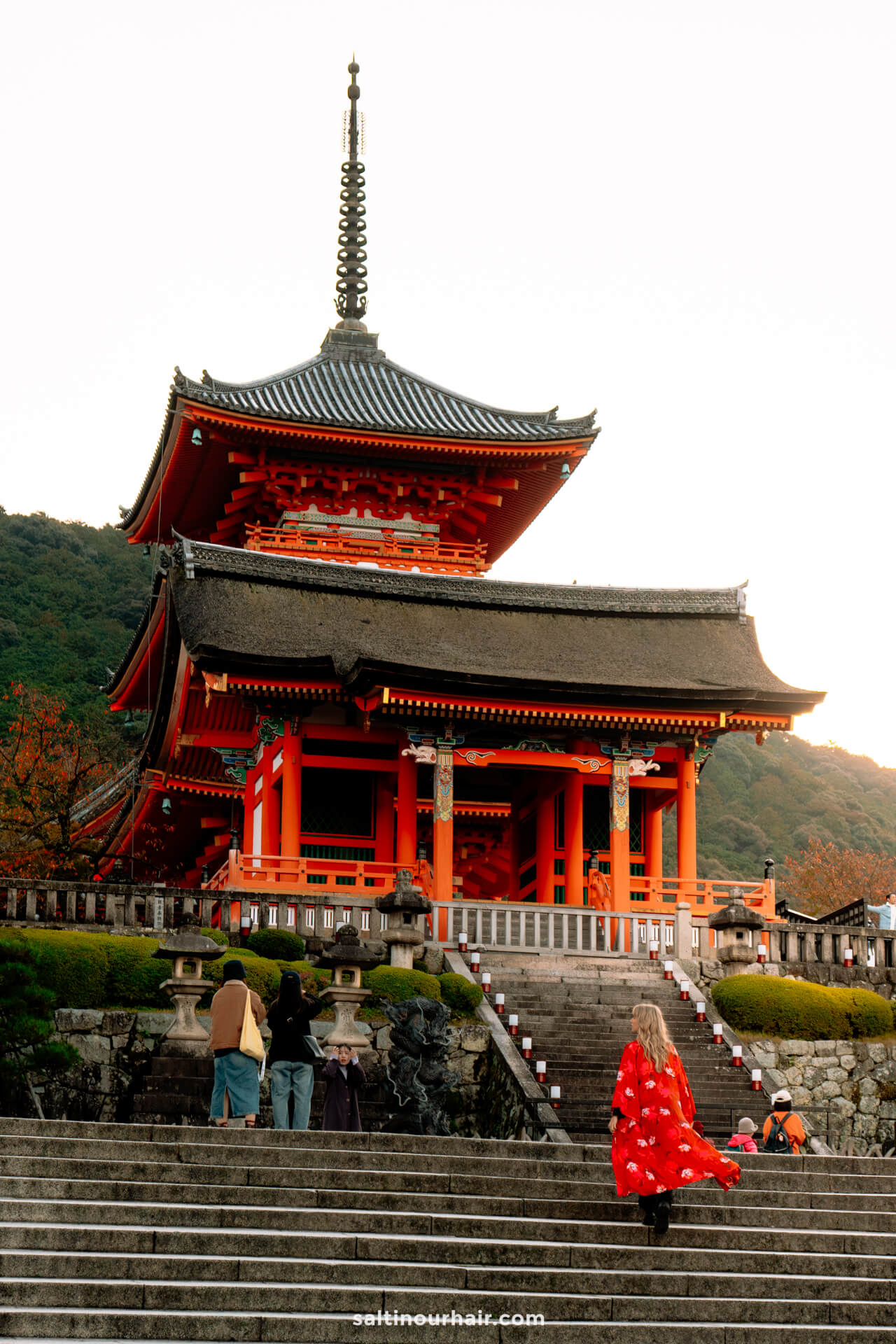
If you’re traveling from Tokyo, hop on the super speedy bullet train to Kyoto in around 130 minutes (also included with the JR Pass).
Book your train tickets from Tokyo in advance
Otherwise, if you’re hiring a car, you can drive from Tokyo to Kyoto in under 6 hours — or add Kyoto as a stop-off on your Japan itinerary!
We recommend to rent a car in Japan through Rentalcars.com with many rental locations and flexible cancellation. Book your rental car here .

Is the JR Pass worth it? ( Calculate it here ). The Japan Rail Pass gives you unlimited access to all public transport throughout Japan, so it’s a great option if you plan on taking the Shinkansen (bullet train) several times. It’s also multi-use for other trains, ferries, and buses throughout the country.


Getting Around
Getting around Kyoto is super easy; the organized city is built in an easy-to-navigate grid system. Although there are only 2 subway lines, these connect you to most of the top things to do. However, the bus system is also incredibly efficient.
Note: Japan’s travel network is so organized that you’ll never experience delays; trains and metros depart precisely at the specified minute.
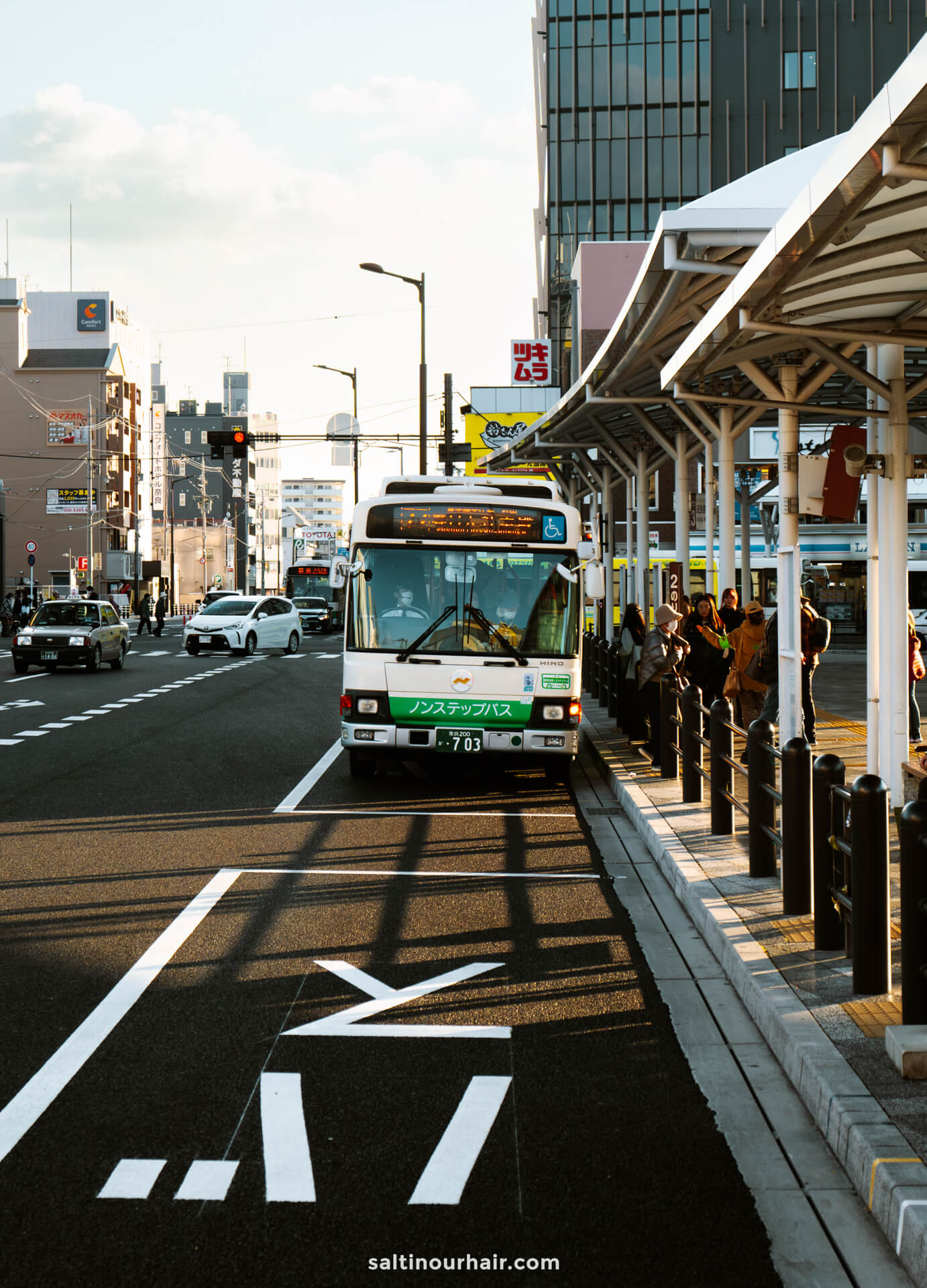
The best way to discover Kyoto is by walking! The city is very flat and easy to explore using Google Maps. Plus, you’ll be able to take in the atmosphere and stop off for plenty of matcha refreshments on your way.
Rent a Bike
We also recommend hiring a bike for the day to explore, as there are great paths throughout town and along the river. If you stray from the main roads, the streets are quiet, making for a tranquil and safe cycling experience. Hire your bike at The Good Day Velo Bikes & Coffee Kyoto .
Tip: The city provides special bike parking; you can see all the locations here . Please note that a one-day parking pass, which costs 200 yen (1.50 USD), is required when parking in the city.
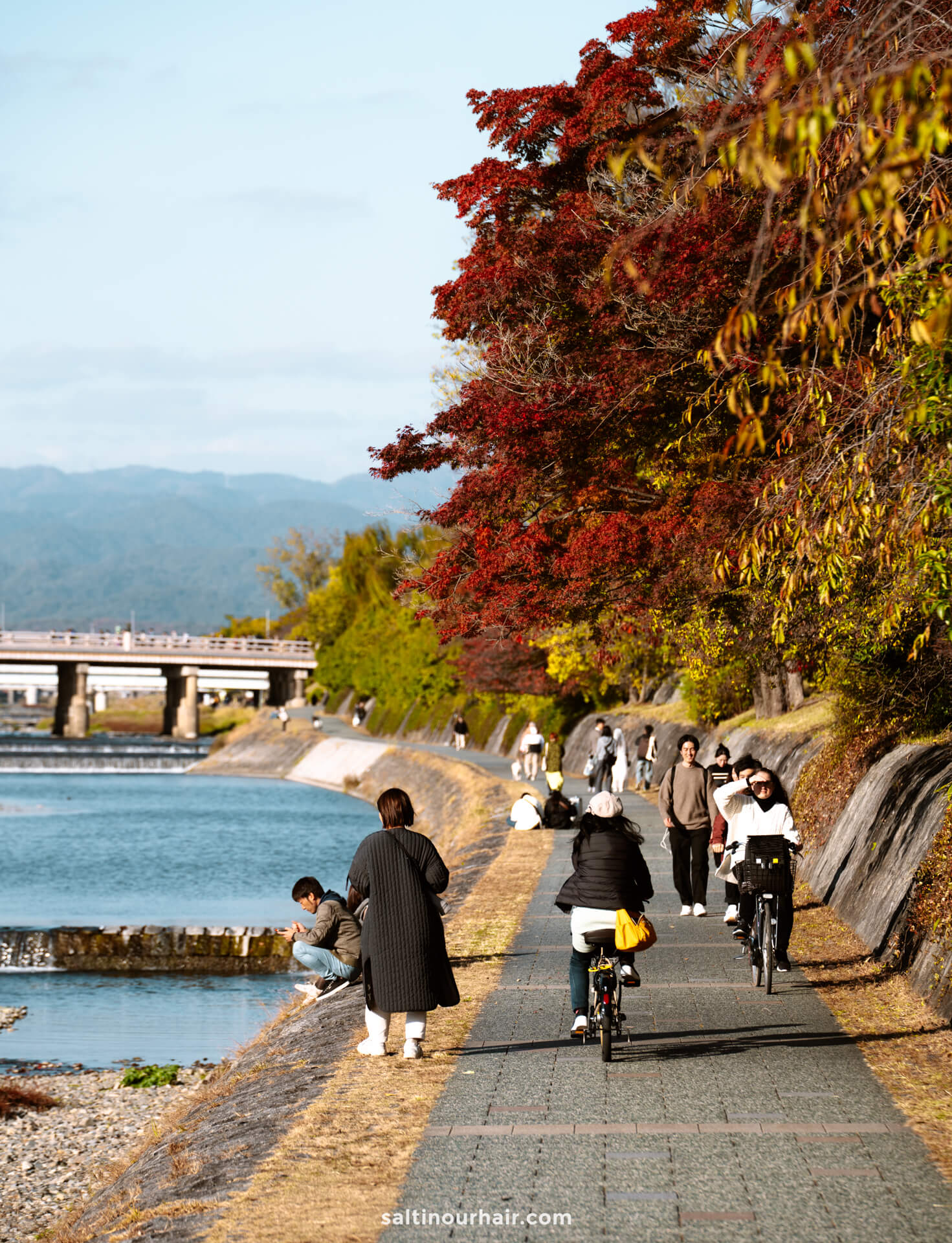
How Much Does Kyoto Cost?
Kyoto is one of the most expensive cities to visit in Japan. However, it’s considerably cheaper than Tokyo . You can find some great places to stay and eat without breaking the bank. Keep costs down by taking a picnic lunch with you on day trips out of the city and booking accommodation well in advance.
Make sure to bring your reusable water bottle with you; you can drink water from the taps in most places in Japan! This is a good way to save money and travel plastic-free .
Costs of Traveling in Kyoto
Travel on a budget in Kyoto, from $480 − $910 USD weekly per person, mid-range $1750 − $3730 USD, and high-end from $3400 − $5380 USD. However, costs depend on factors like accommodation, transportation, and activities. We did not include flights. Check flight prices here
- Hotels: $100 − $400 USD Check available hotels
- Hostels: $20 − $80 USD Check available hostels
- Transport: $5 − $40 USD Book public transport
- Car Rental: $35 − $150 USD Book a rental car
- Food: $30 − $150 USD
- Activities: $10 − $60 USD See tickets & tours
- Sim: $1 − $3 USD Get an eSIM or SIM here
- Travel Insurance: $2 − $6 USD Get Travel Insurance
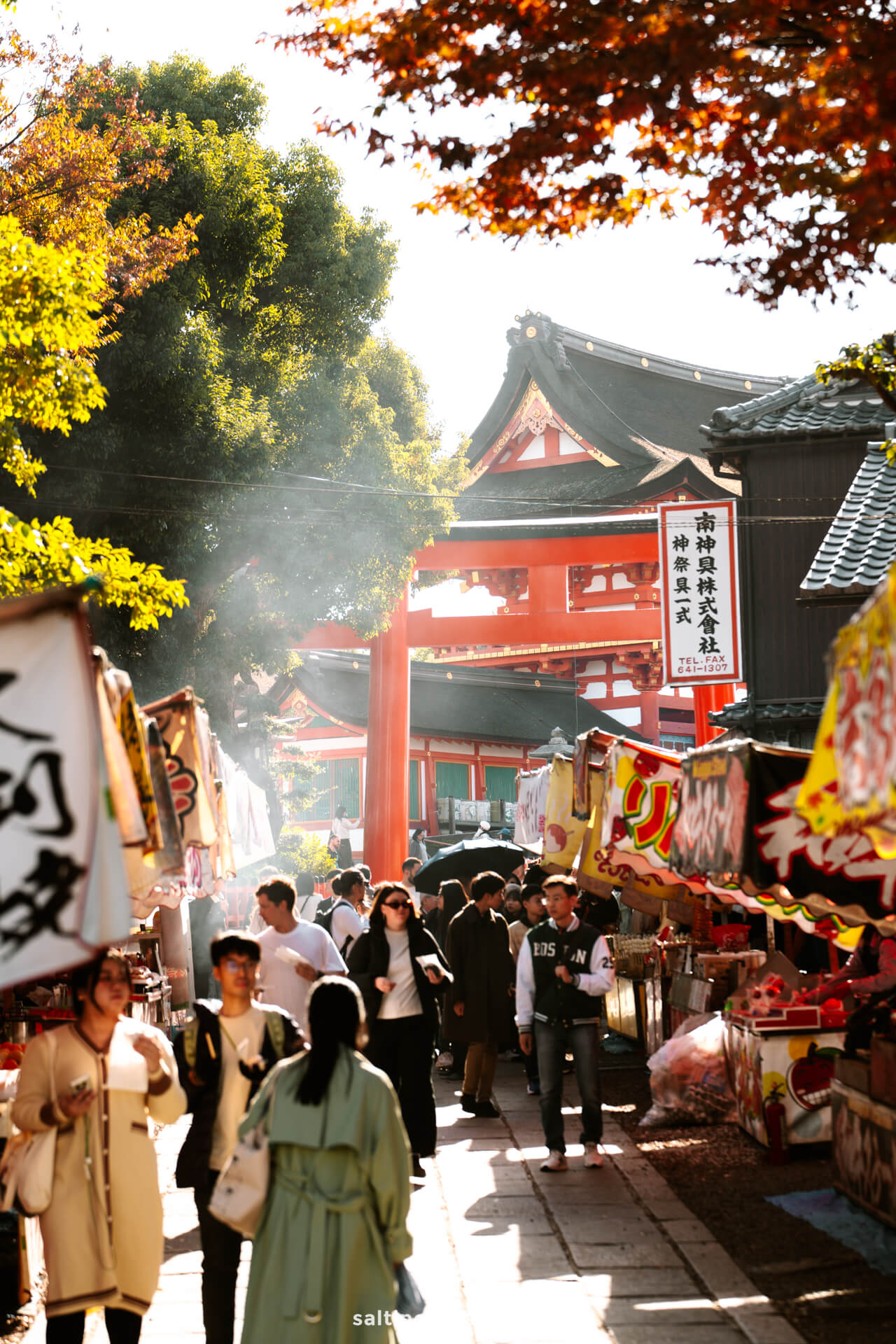
Best Time to Visit
October and November are some of the best months to visit Kyoto, as during this time, the woodland and parkland areas burst into warm fall colors. Although it’s a little colder, it does mean that you might be lucky enough to spot snow, particularly if you head up into the more mountainous areas like Koyasan.
Spring is also beautiful because of the cherry blossoms. However, hotels and tours can get booked quickly (and prices rise), so consider booking things well in advance.
By purchasing through our links, you support us at no additional cost. Thank you for your support. ♥️
- Find Hotels via Booking.com
- Find a Rental Car via Rentalcars.com
- Find Flights to Kyoto via Skyscanner
- Get a Travel Insurance via Heymondo
- Book Tours & Attractions via GetYourGuide
- Book a Bus/Train/Transfer via 12Go
15 Memorable Things to do in Osaka, Japan
17 unmissable things to do in tokyo, japan, snow monkey park: japan’s hot spring oasis.
Looking for more travel information? Plan a chat with us for personalised travel advice or get an answer from the Salt in our Hair Travel Community on Facebook.
We got back from Kyoto a couple of months ago, it was great fun to relive some of those places we visited through your photos!
Thank you so much Ben, appreciate that a lot!
Your email address will not be published. Required fields are marked *
Notify me when new comments are added.
Kyoto 4 Day Itinerary: Best Places to Visit [+ Map]
Latest update: July 24, 2023
Kyoto is an absolute must-visit for any trip to Japan. The city was the capital of Japan for several centuries and so you’ll find historic buildings galore in Kyoto. You can easily spend a week here and you still won’t manage to visit all the sights and temples in and around Kyoto.
Most travelers don’t have that much time anyway. That’s why we’ve have compiled a 4 day itinerary for Kyoto in this post.
We’ll tell you which temples we’ve seen in Kyoto, what we thought of them, which ones you absolutely have to see, and we’ll give you a route suggestion for a tour of Kyoto.
Our Kyoto post features 4 walking tours for 4 days in Kyoto . If you have more than 4 days in Kyoto, you can obviously see even more, and if you have less time on your hands, we’ll tell you which sights we’d skip.
And as always, we have a lot of practical tips on where to stay in Kyoto, our favorite restaurants, and local public transport.
You can use the table of contents to jump to a section of your choice or read the entire article from top to bottom. Have fun!
Read all our posts about Japan
Kyoto sights and our route suggestion
When we started planning for Kyoto, we were completely overwhelmed by the huge number of temples and sights. The individual highlights in Kyoto are also quite far apart, so you have to plan ahead if you want to see as much as possible in a relatively short time.
To help you with your planning for Kyoto, we’ll show you the order in which we visited the temples and give you our tips for a route through Kyoto.
We read elsewhere that you should buy the Kyoto Bus Pass for a price of 500 yen per day to use all the buses in Kyoto. We can’t really confirm that though. Most days we didn’t need one as our hotel in Kyoto was in a perfect location and we were able to use our Japan Rail Pass on the local train.
We’ll tell you in each section whether the pass is useful for that day’s tour or not.
Of course we didn’t manage to see all the temples, but that’s completely impossible in just a few days anyway. Nevertheless, we did manage to see all the most important sights in Kyoto and also some checked out some well-kept secrets that you won’t find on your average itinerary for Kyoto.
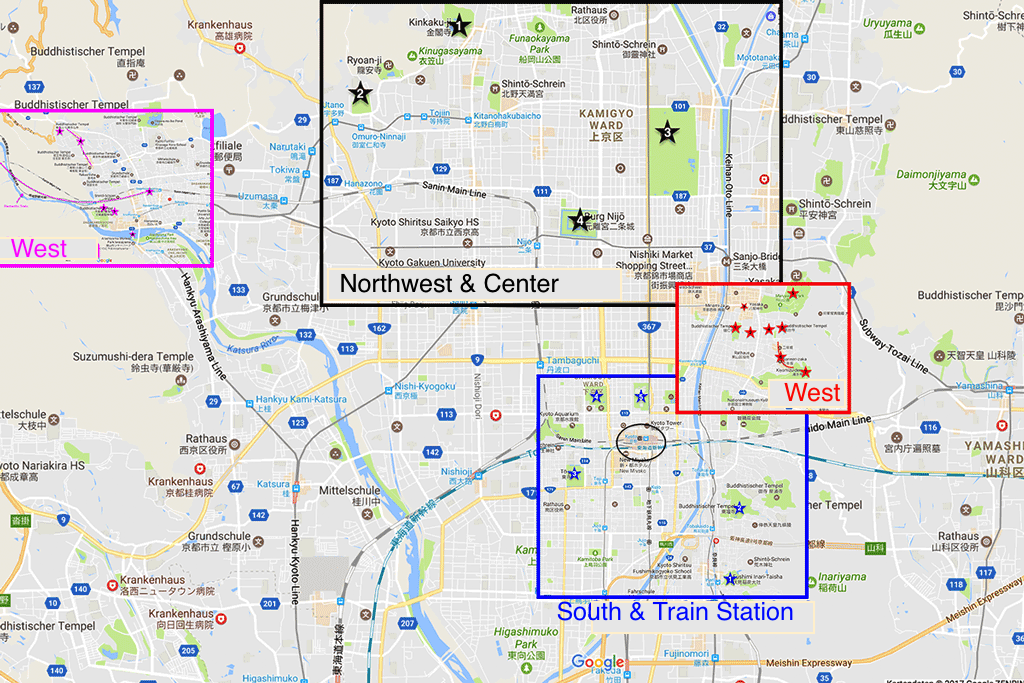
Day 1: Guide to the temples in the east of Kyoto
For starters, we scoped out the temples in the east of Kyoto on our first day there. These temples are all close to the city center, making it a good first-day tour.
All the sights and attractions are within walking distance so there’s no need to buy the Kyoto Bus Pass on day 1 of our itinerary.
Our feet ached a bit at the end of the day, but all in all the distances between the temples don’t warrant taking the bus.
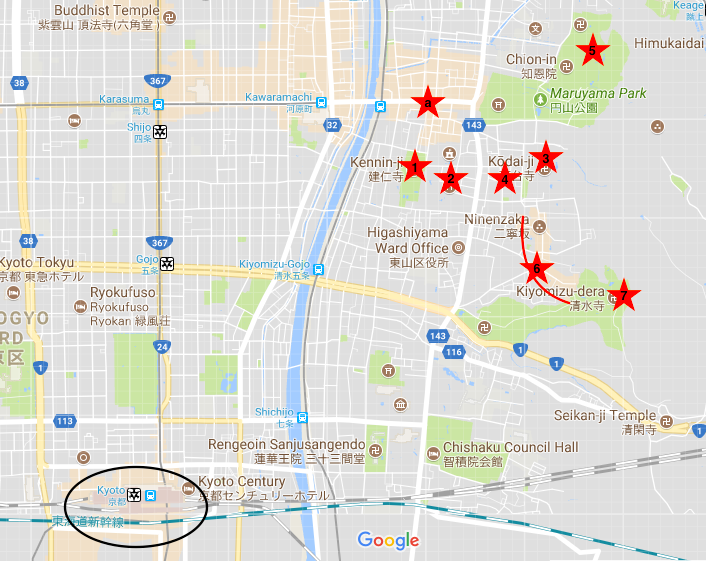
#1 Gion and Kennin-ji
Passing through the Gion district (a), which has developed into the center of Japanese geisha culture over the years, we headed to Kennin-ji Temple.
The 12th-century Kennin-ji is the oldest Zen temple in Kyoto. The vast temple complex is really worth seeing and not as crowded with tourists as many of the other temples.
The temple might not be all that spectacular, but it’s still a good entry point into world of temples in Kyoto.
Our verdict: Nice enough, but not a must-see.
10:00 am to 5:00 pm
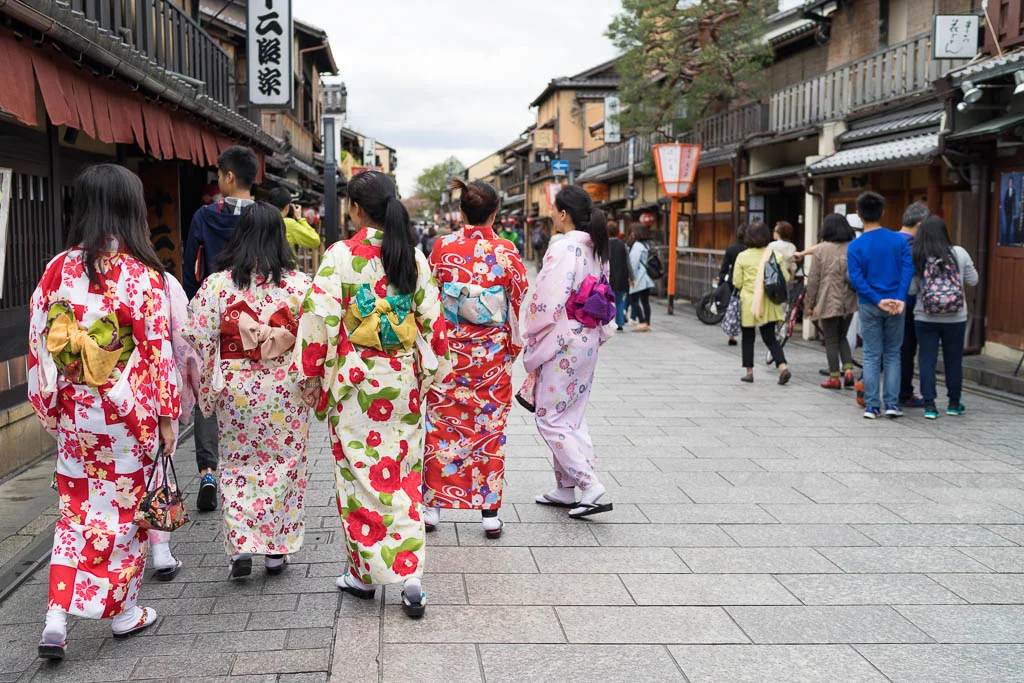
#2 Yasui-konpira-gu
If you explore Kyoto on foot, you’ll come across small hidden temples that you’d never get to see if you had just taken the bus from A to B.
That’s how we came to visit Yasui-konpira-gu Shrine, which we stumbled upon by chance after our visit to Kennin-ji. At first glance, the small temple doesn’t really stand out amidst Kyoto’s large and well-known temples.
If it wasn’t for one wonderfully weird thing: There’s a large stone covered with notes standing in the temple complex. And there’s a hole in this stone that grown-up men and women actually crawl through – first in one direction, then in the other. The things people do…
Of course we wanted to know what it was all about, so here’s what we found out: The stone has the power to help you with your relationships with other people. If you want to establish a relationship with someone or to end a relationship, then this is the stone for you.
Here’s how it works :
- First you have to pray in the main hall of the temple.
- Then you buy a note to stick on the stone for 100 yen.
- Write down your wish on the note.
- Then you crawl through the stone from front to back while reciting your wish.
- Next you crawl back in the other direction while you continue to recite your wish.
- When you’re done, you stick your note next to all the others and the magic stone will take care of the rest.
Sounds good, doesn’t it?
Our verdict: A real hidden delight that we highly recommend. Plus it’s magic, so there’s that.
Open 24 hours
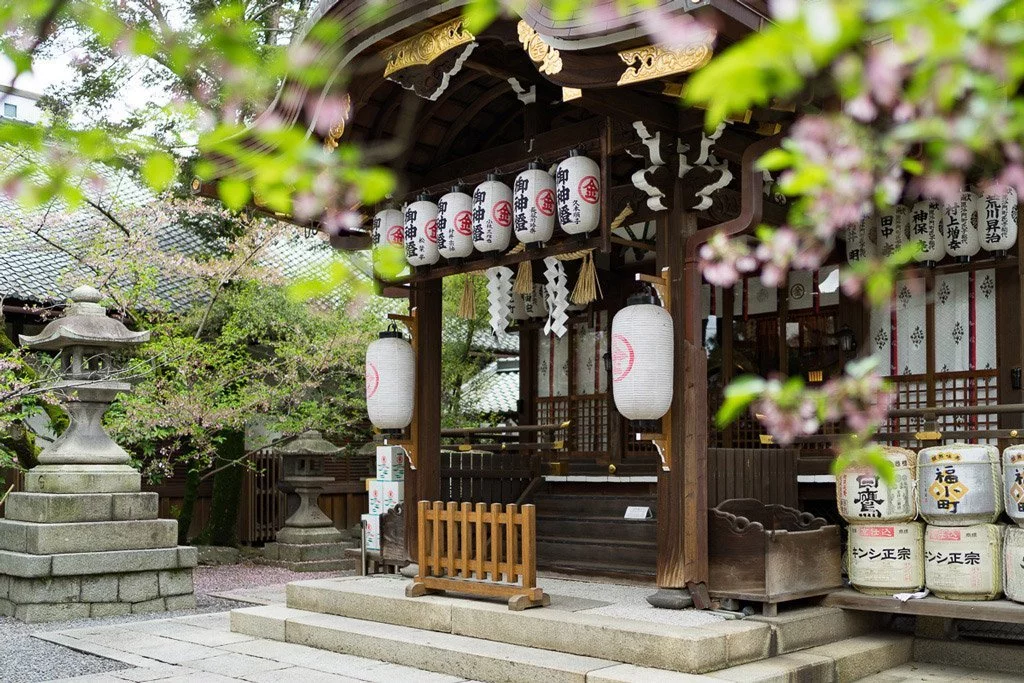
#3 Kodai-ji
Kodai-ji is a Zen temple that we liked a lot. Surprisingly enough, we hardly encountered any tourists here. That’s probably because the bus tours don’t visit the temple, so only independent tourists come here.
The vast temple complex includes a Zen garden and a small bamboo forest that’s great for taking pictures.
Our verdict: One of the most beautiful temples in Kyoto and absolutely worth seeing.
9:00 am to 5:30 pm
600 yen or 900 yen in combination with the Entoku-in Temple
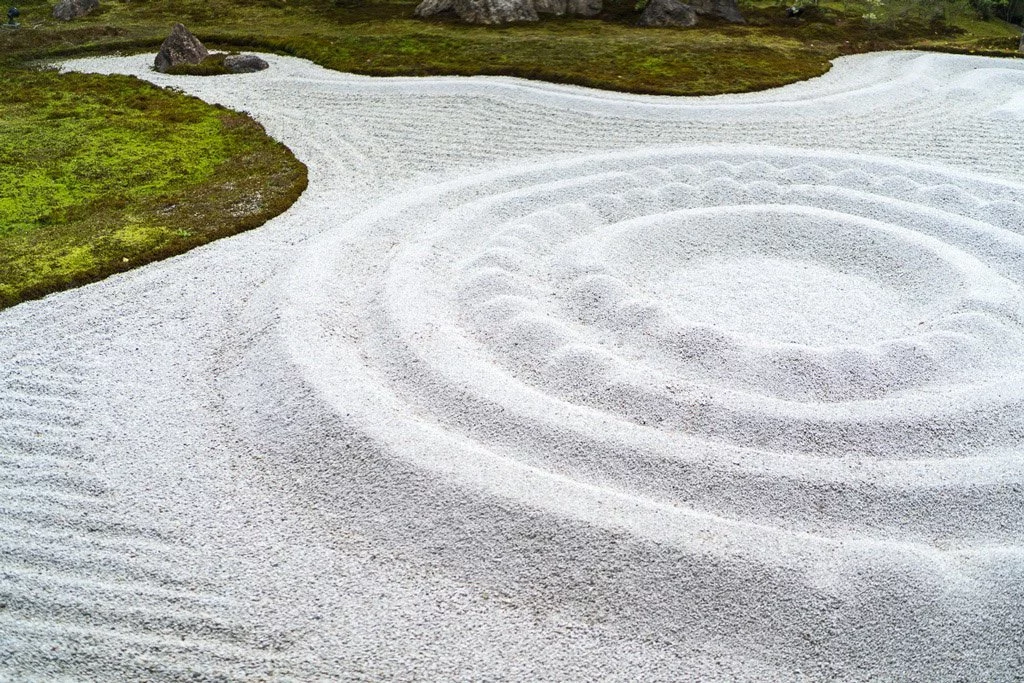
#4 Entoku-in
Entoku-in is a small sub-temple of Kodai-ji, located right on the opposite side of the road. The temple has a nice garden, but apart from that it isn’t particularly spectacular.
Sometimes Entoku-in hosts light shows in the evening, which we hear are very worthwhile.
Our verdict: Not something you really need to see.
500 yen or 900 yen in combination with Kodai-ji Temple
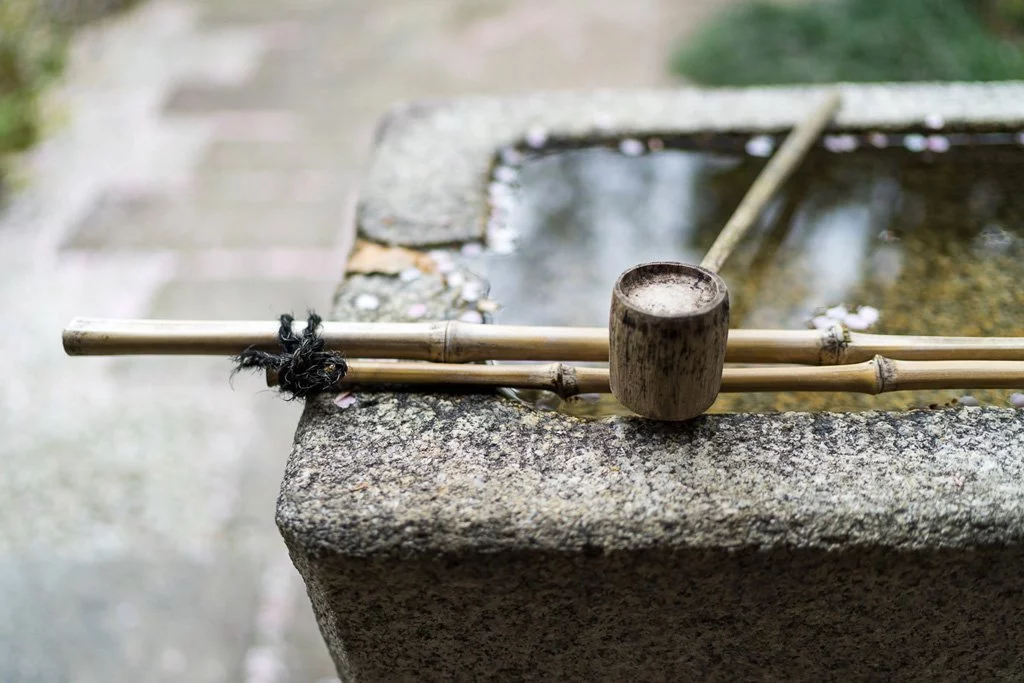
#5 Chion-in
Chion-in is a Jodu Shinshu Buddhist temple. This particular version of Buddhism is particularly popular in Japan.
The huge entrance gate is especially interesting, with the stairs leading up to the temple right behind it. The main hall is currently undergoing renovation and is hidden beneath a huge corrugated iron construction.
The inside of the hall is partly accessible though and a huge ceremony with lots of believers was in progress while we were there.
Our verdict: Due to the ongoing construction work, scheduled to last until 2019, the temple isn’t a highlight at the moment.
9:00 AM to 4:30 PM
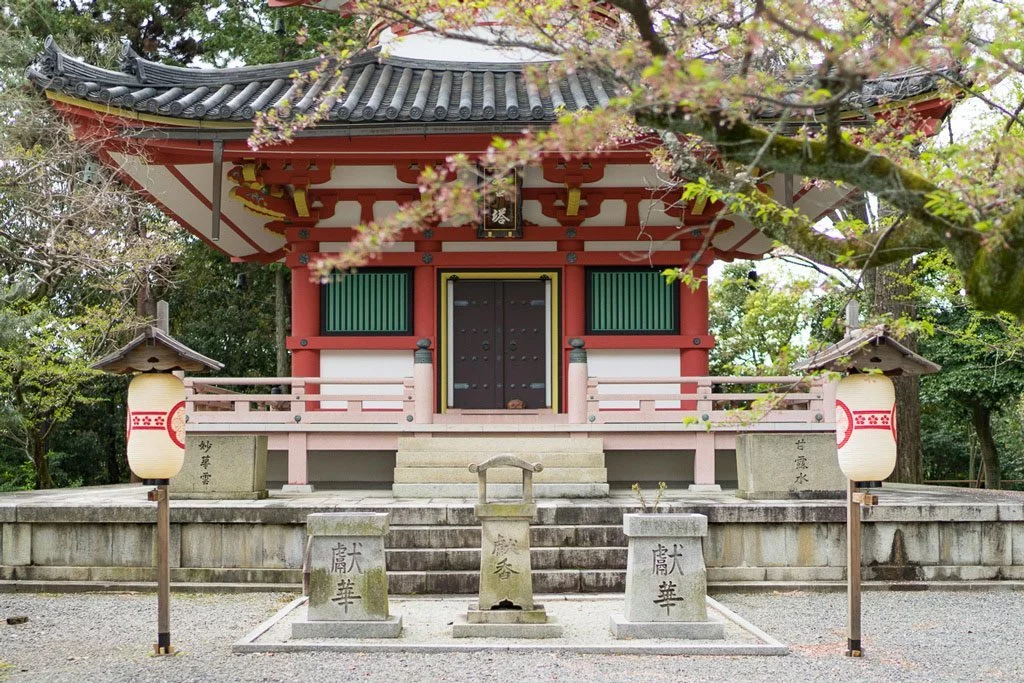
#6 Ninning-zaka, Sannen-zaka & #7 Kiyomizu-dera
At the end of the day we visited Kiyomizu-dera Temple. The 8th-century Kiyomizu-dera is one of the most famous temples in Kyoto, which makes it a prime destination for all tourist groups. The pretty streets, Ninnen-zaka and Sannen-zaka, exude the ‘old’ Kyoto charm.
Since Kiyomizu-dera is one of the best-known sights in the city, the streets are packed with tourists and souvenir shops. If you have the time, try to get off the main roads and explore the side streets.
Kiyomizu-dera’s main hall is under renovation and is hidden behind an impressive bamboo scaffolding. That’s not that big a problem though, the hall isn’t that photogenic on the outside anyway. You can still get inside despite the ongoing construction work.
Our verdict: Of course Kiyomizu-dera is a must-see in Kyoto and the location with a view overlooking the city alone is worth the visit.
6:00 am to 6:00 pm
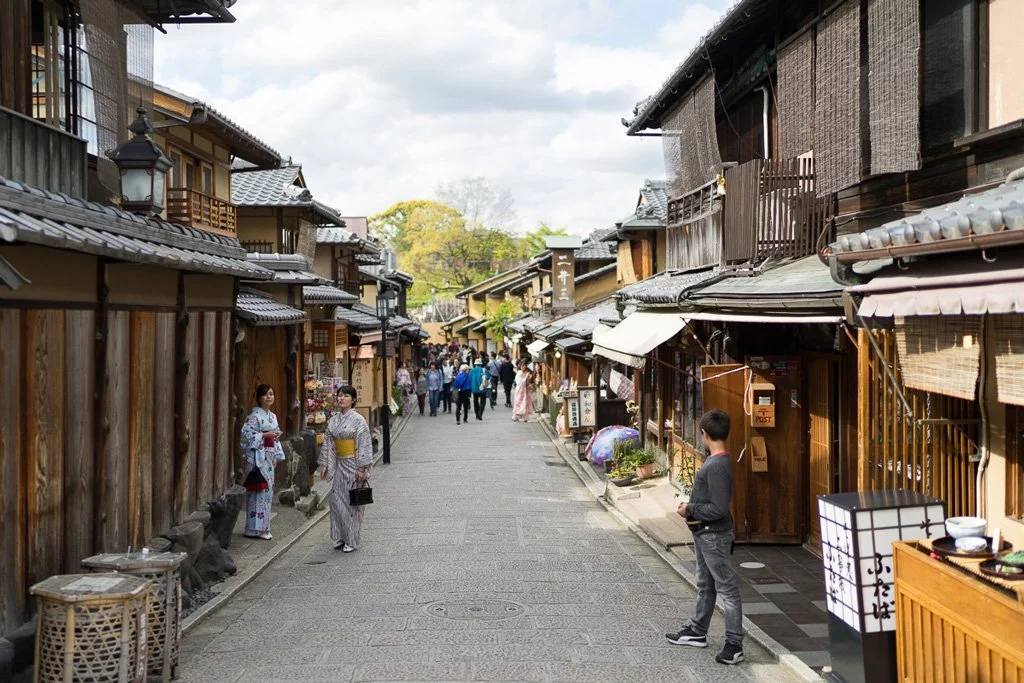
Day 2: Temples in the south and around Kyoto Station
We started the second day in the south of Kyoto. The temples there are too far to walk from the city center, but you can get there in a few minutes by train. You don’t have to get a ticket if you have a JR Railpass. If not, the trip still only costs about 2 euros.
Once again, the Kyoto Bus Pass isn’t worth it for day 2 of our itinerary.
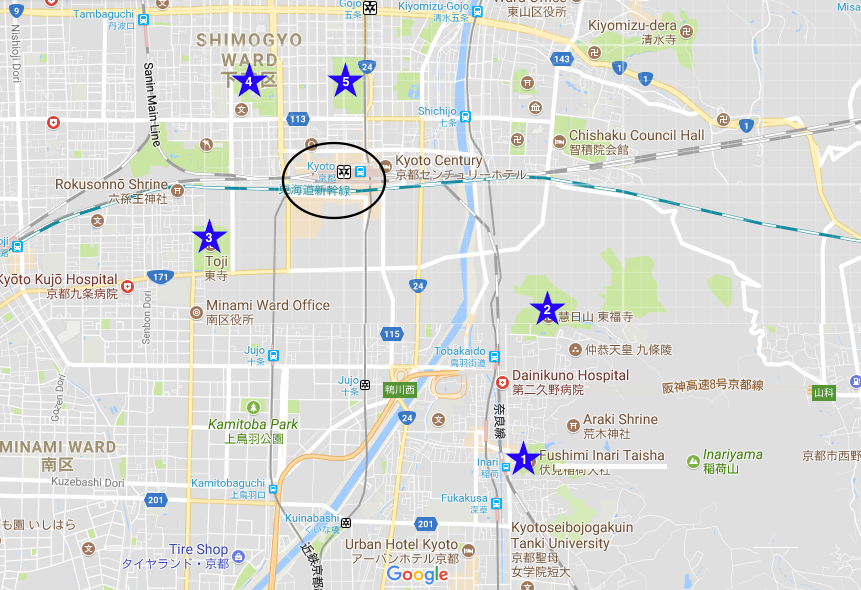
#1 Fushimi Inari Shrine
Fushimi Inari Shrine is one of the absolute highlights of any Kyoto visit. The shrine itself is rather unspectacular, but the red torii you pass through on your way up the mountain more than make up for it.
In total, there are more than a thousand of these red gates, all of them donations by individuals or companies. In the beginning, the torii are very dense, but later on the gaps between them get larger and larger.
It’s still very crowded right at the bottom around the first torii, and taking pictures is almost impossible when you’re surrounded by that many people. Fortunately, the bus tourists don’t go very far up the mountain, so it empties out as you get closer to the top.
Have a bit of patience and you’ll get a chance to take some great souvenir photos.
Our verdict: An absolute highlight that you mustn’t miss.
open 24 hours
It’s a 14-minute train ride to Inari Station from Kyoto Station with the JR Nara-Line. The ascent starts right outside the train station.
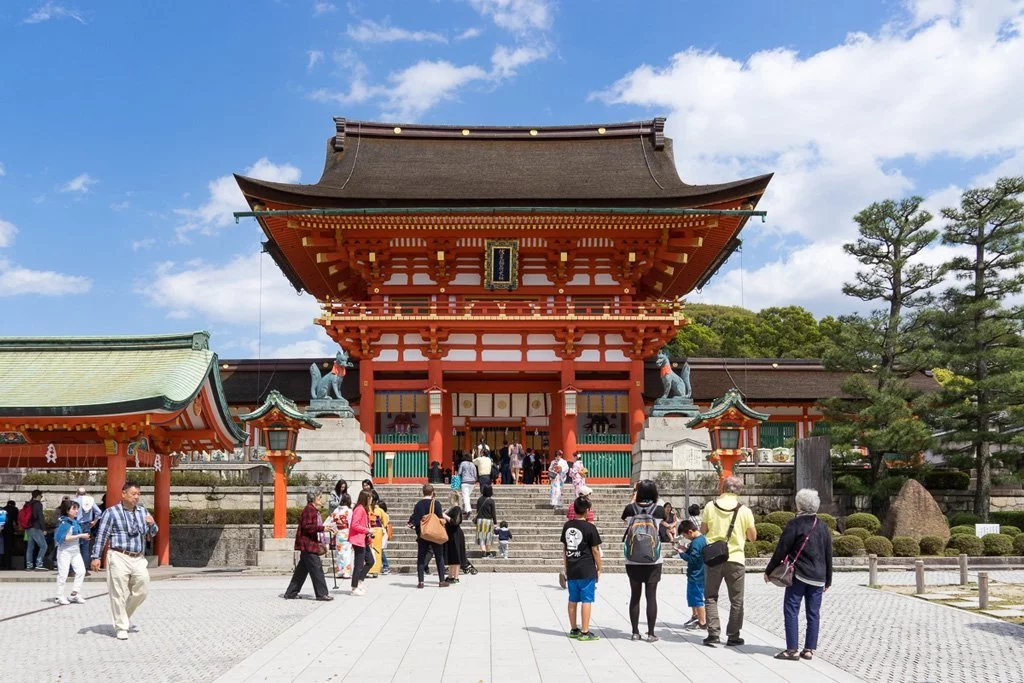
#2 Tofuku-ji
After Fushimi Inari, we walked to Tofuku-ji. Tofuku-ji is a Zen temple, one of the most beautiful temples we’ve seen in Kyoto. Surprisingly, only few tourists come here.
The temple complex is beautifully idyllic, with an old wooden bridge, a small stream, lots of greenery, and beautiful gardens.
Our verdict: Apparently it’s a well-kept secret, but one you definitely shouldn’t let slip you by.
9:00 am to 4:00 pm
The main buildings are free, while the area with the bridge and the Zen garden cost 400 yen each. But both they’re both really worthwhile.
It’s 20 minutes’ walk from Fushimi Inari. When you’re done here, you can take the JR train from nearby Tofuku-ji Station to Kyoto Station.
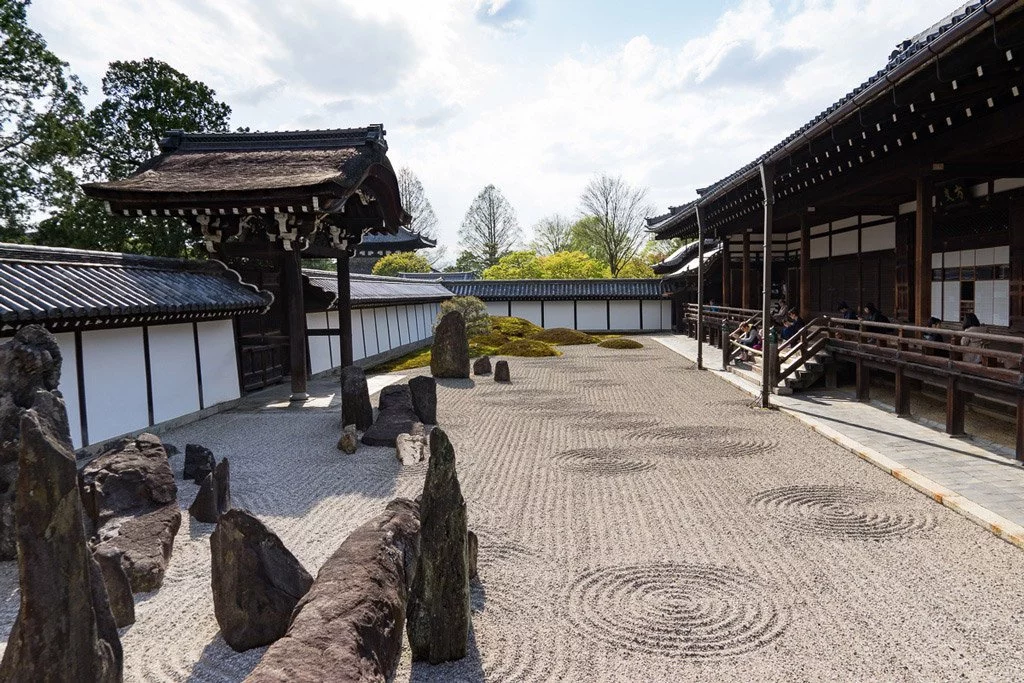
To-ji Temple is located to the south of the train station. It dates back to the 8th century and is mainly known for its 5-storey pagoda, which rises up from the beautiful temple garden.
To-ji isn’t featured on the usual tourist routes, so it isn’t particularly crowded here.
Our verdict: Pretty temple away from the crowds. But not something you absolutely need to see.
8:30 am to 5:00 pm
It’s a 10-15 minute southbound walk from Kyoto Station.
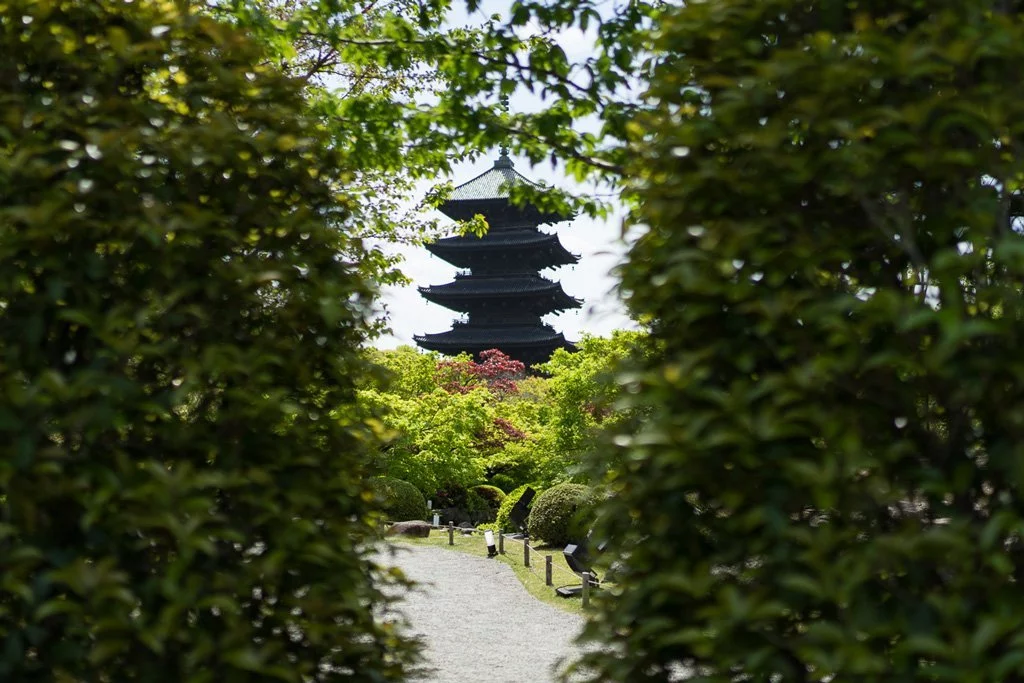
#4 Higashi Hongan-ji and #5 Nishi Hongan-ji
As the final stop on our temple tour around Kyoto Station, we checked out the two Hongan-ji twin temples. The two temples look very similar on the outside.
But the golden interior of the huge halls is what makes these temples worth seeing. They’re the largest of their kind in Kyoto. The two temples are only 5 minutes apart and are a good way to end, or if you want to do it in reverse, start this day’s itinerary.
Our verdict: Their proximity to the station make them a nice way to finish the day, but they’re not an absolute Kyoto highlight.
5:50 am to 5:30 pm
5 minutes’ walk from Kyoto station
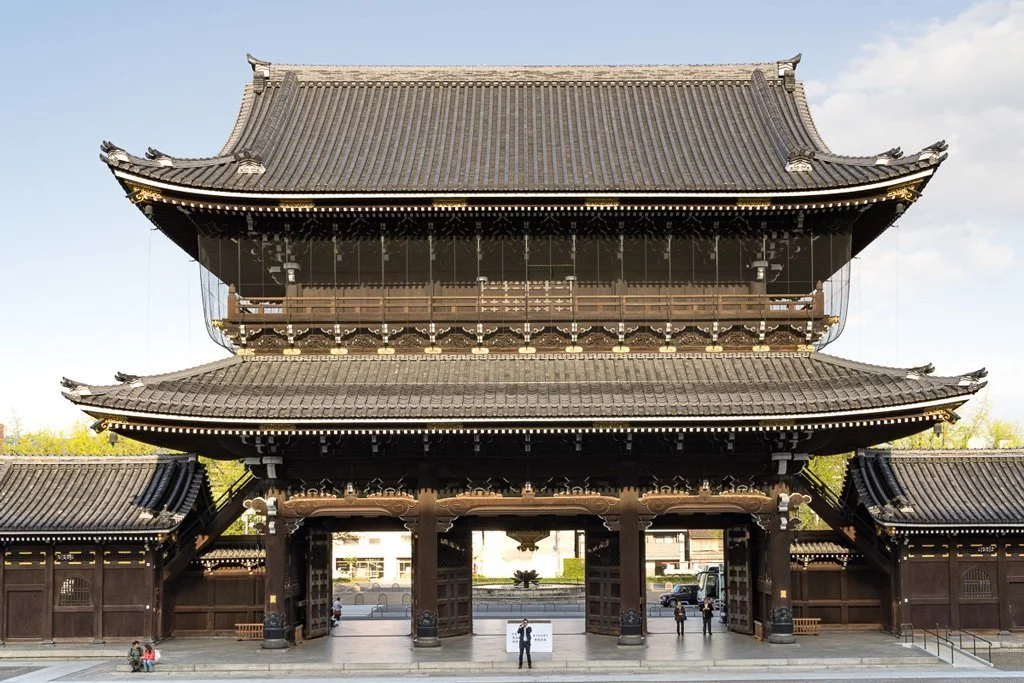
Day 3: Sightseeing in the northwest and center of Kyoto
It’s actually worth buying a Kyoto Bus Pass for day 3 of our itinerary. Taking the bus is the only way to get to the temples in the northeast because they’re not connected by train or metro.
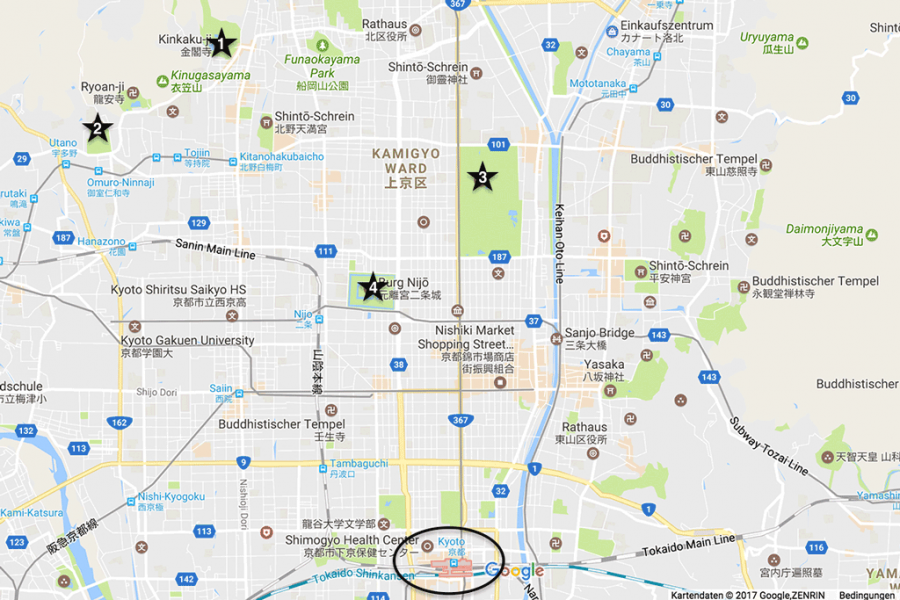
#1 Kinkaku-ji – The Golden Pavilion
The first stop of the day is an absolute highlight on any Kyoto itinerary, Kinkaku-ji Temple. The pavilion languishes in a picturesque setting by a small lake a small lake and is a real eye-catcher with its entirely gold-plated facades.
If you want some peace and quiet here, you should make sure to be at the front of the line when the ticket counter opens at 9 am.
Otherwise, be prepared to be buoyed along by tourist groups pushing their way through the rather narrow pathways. Of course the pavilion is really beautiful, but it’s no place to relax.
Our verdict: The golden pavilion looks great, there’s no question about it. But the masses of tourists really cloud the picture. This was the most crowded place we visited in all of Kyoto.
9:00 am to 5:00 pm
Bus routes 12, 59, 101, 102, 204, and 205 go straight to the temple from Kinkakuji-michi Station. The bus ride takes a good half hour from the city center.
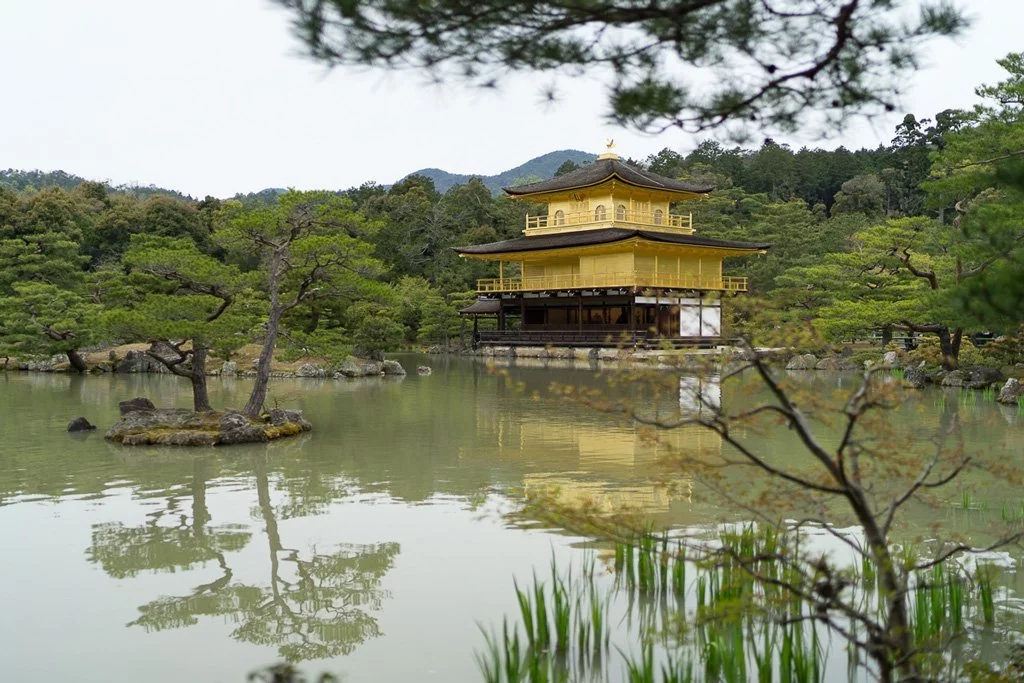
#2 Ninna-ji
About two kilometers to the west of Kinkaku-ji lies the Zen temple Ninna-ji. The temple has a beautiful garden and is an especially popular place during cherry blossom season.
There’s a vast cherry tree park on the grounds, which must look absolutely magnificent when the trees are in bloom.
We were there towards the end of cherry blossom season, so unfortunately many of the flowers had already dropped. It was still very pretty.
If you feel like it, you can stop at Ryoan-ji Temple on the way from Kinkaku-ji and Ninna-ji, which is known for its beautiful rockery.
Our verdict: During cherry blossom season, this temple is an absolute highlight. If you’ve already taken the long journey to the Golden Pavilion, a little detour here is definitely worth your time.
500 yen (and an additional 500 yen for the orchard in the back during cherry blossom season)
The bus number 59 takes about 10 minutes from Kinkaku-ji to Ninna-ji.
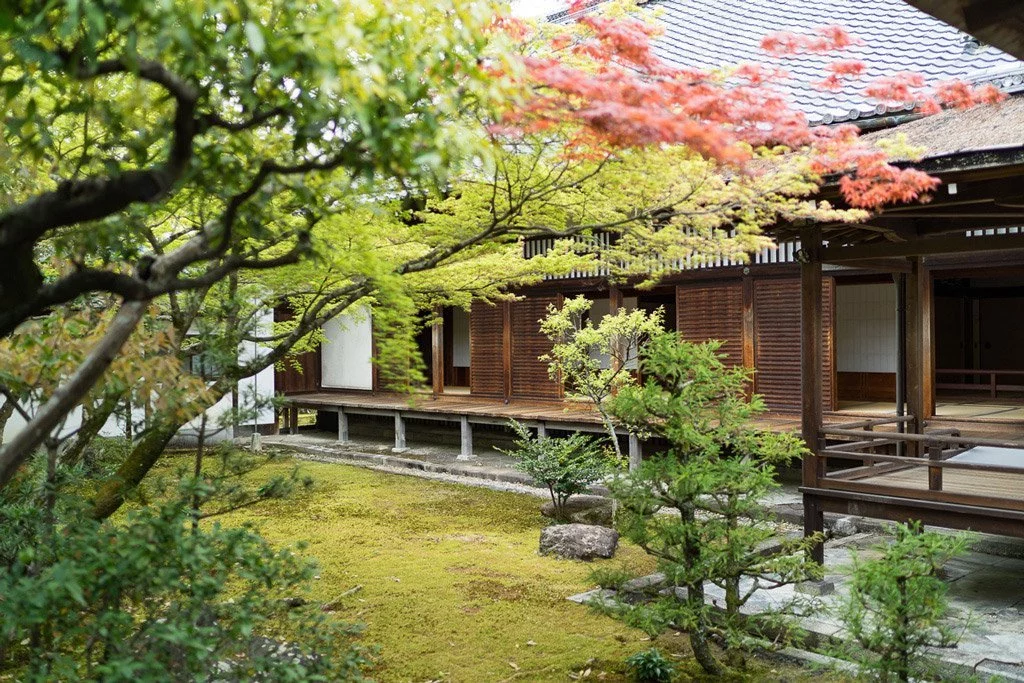
#3 Imperial Palace
The Imperial Palace is located in the center of Kyoto and was the seat of the Japanese Emperor for many centuries. It wasn’t until the 19th century that the Emperor moved to Tokyo, which has been the capital of Japan ever since.
Many travel guides and online sources claim you need to apply to visit the Imperial Palace in advance, but that’s not true any more.
The grounds are open to everyone nowadays. And there’s a free guided tour in English at 10 am and 2 pm every day.
Our verdict: Huge grounds and an interesting insight into the world of the powerful. But if we had to choose between the Imperial Palace and Nijo Castle, we’d probably opt for the castle.
9:00 am to 4:00 pm (until 5:00 pm from April to August), closed on Mondays and during special ceremonies
The bus number 59 takes about 20 minutes to get from Ninna-ji to the Imperial Palace. From the train station, the fastest way is to take the metro (closest stop: Imadegawa, Karesama Line).
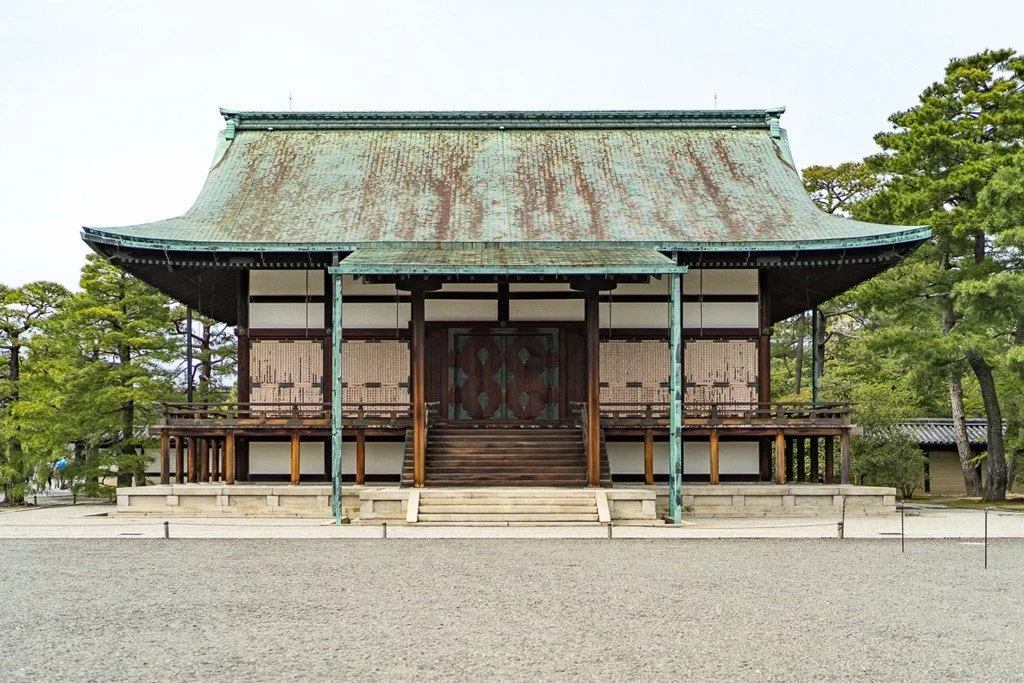
#4 Nijo Castle
Nijo Castle is located just over a kilometer from the Imperial Palace. The castle used to be the residence of the shoguns, the leaders of the samurai.
The castle buildings are very impressive and the circular path through the gardens is very worthwhile. The castle is particularly famous for its squeaking parquet floors, which are said to have been specially built so no one could enter undetected.
It’s been said that the squeaking sounds like a nightingale. We think it sounds more like bats.
Our verdict: Nijo Castle is very impressive and definitely one of the highlights in Kyoto.
Unfortunately, there’s no direct connection from the Imperial Palace to Nijo Castle. But it’s only a 20-minute walk. You can also take the metro (closest stop: Nijojo-mae).
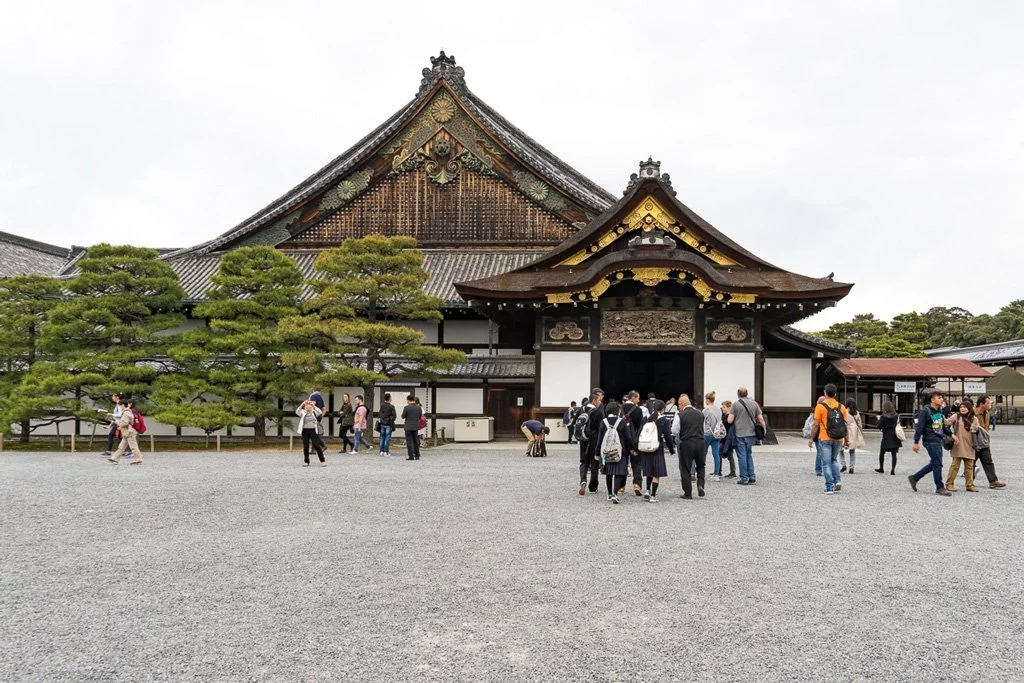
Day 4: The sights in the west of Kyoto
Day 4 of our itinerary takes you a bit further out from the center to the Arashiyama district in the west of the city, home to some of Kyoto’s most famous attractions.
Arashiyama is also a major destination for many travel groups, so brace yourself for masses of tourists, but there are also some great places off the beaten path where you can get away from them.
If you want to do everything on the itinerary, we recommend starting by 9 am at the latest, otherwise you’ll be cutting it very close.
How to get to Arashiyama: Take the JR Sagano Line from Kyoto Station to Saga-Arashiyama. The whole journey takes about 15 minutes. The trip’s free if you have a JR Pass, otherwise it costs 240 yen. There are buses going to Arashiyama too, but it takes a lot longer and is much less comfortable than by train.
The Kyoto Bus Pass isn’t worth it for day 4 of our itinerary. It doesn’t even cover the buses going to the more distant sights in Arashiyama, so you’d have pay anyway.
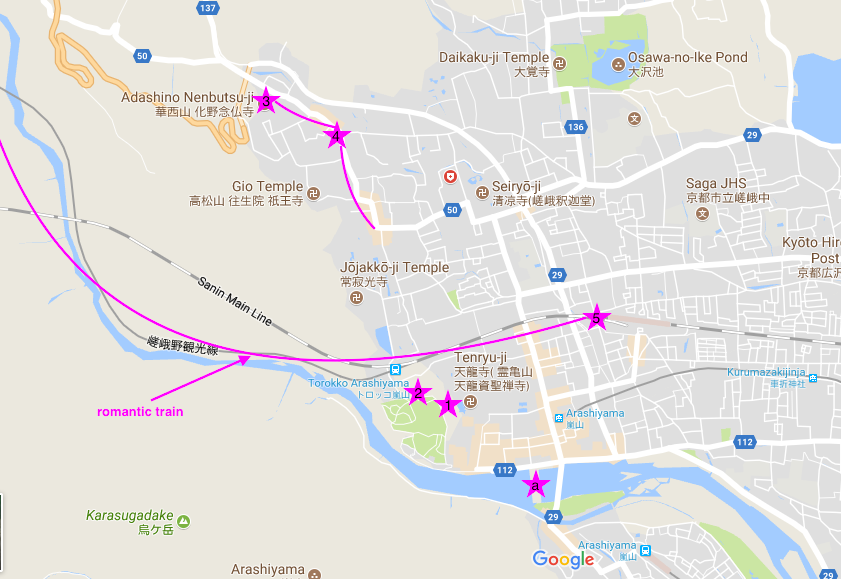
#1 Tenryu-ji
The most frequented tourist attractions in Arashiyama are all along the main street, which is lined with souvenir shops and leads to Togetsukyo Bridge (a).
Located along this road is Tenryu-ji, the main temple in Arashiyama. Its huge garden is particularly impressive. You have to buy separate tickets for the temple buildings and the garden, but it isn’t worth paying to see the buildings. The garden runs right past the buildings, so you can see everything from there.
Our verdict: The garden is definitely worth it, the temple itself less so.
8:30 am to 5:30 am
500 yen (garden), 300 yen (temple)
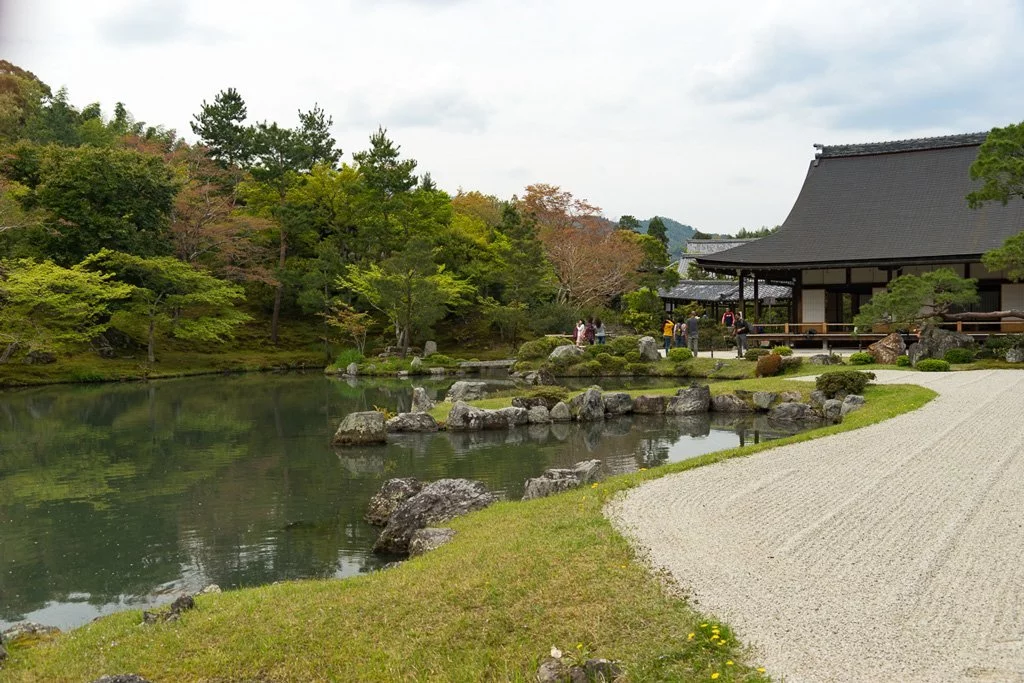
#2 Bamboo Forest
Next head through the Tenryu-ji Gardens straight to the famous Bamboo Forest of Arashiyama. There’s a relatively wide path leading through the huge bamboo grove.
Everyone wants to take a selfie among the huge bamboo trees. But you’ll need to bring a lot of patience to take pictures because masses of tourists push their way down this path too.
Our verdict: The bamboo forest is impressive, but the masses of people are just extremely distracting. If you want to take a selfie among bamboo plants, we’d recommend Kodai-ji (day 1) or Adashino Nenbutsu-ji Temple, which is also located in Arashiyama.
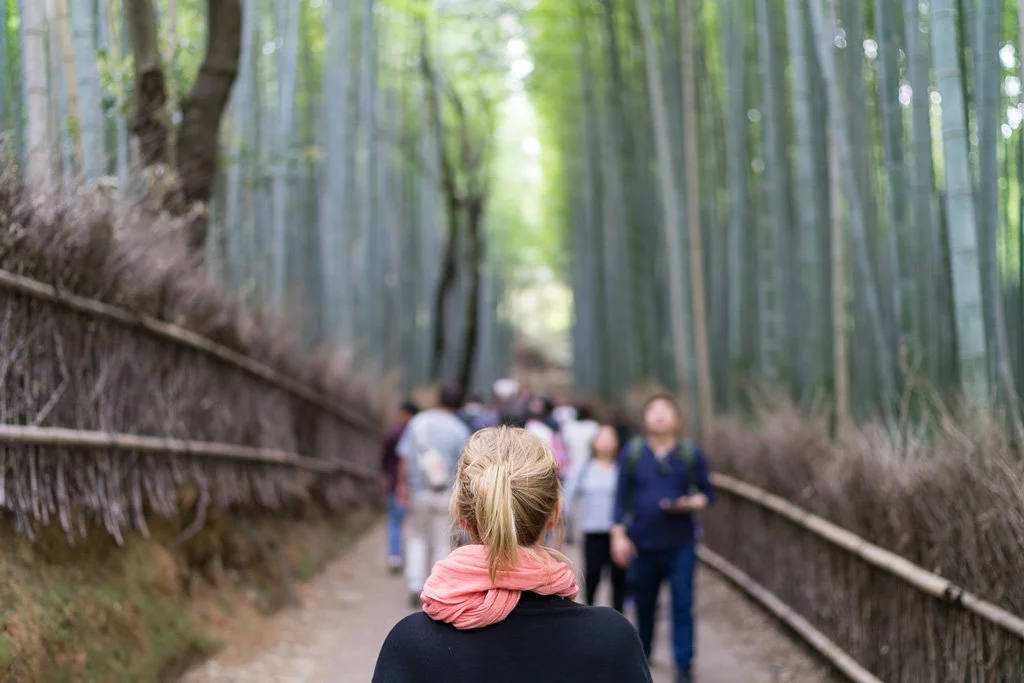
#3 Adashino Nenbutsu-ji
Up until this point, our visit to Arashiyama hadn’t really convinced us yet, and we wouldn’t recommend taking the trip to Arashiyama just for the Bamboo Forest and Tenryu-ji.
But for us, the real highlight of Arashiyama is the northwest. Adashino Nenbutsu-ji Temple is located in the extreme northwest and it was basically deserted during our visit.
There’s a cemetery in Adashino Nenbutsu-ji with more than 8,000 stone statues. Very impressive! There’s also a bamboo grove right next to the temple, and unlike the more famous Bamboo Forest of Arashiyama, there isn’t another soul to be seen.
Our verdict: Adashino Nenbutsu-ji was our absolute highlight in Arashiyama and the entire area in the northwest is simply beautiful.
It takes about three quarters of an hour to walk from Saga-Arashiyama Station to Adashino Nenbutsu-ji. Or you can take the bus number 91. The closest stop is called Toriimoto and the trip costs 230 yen.
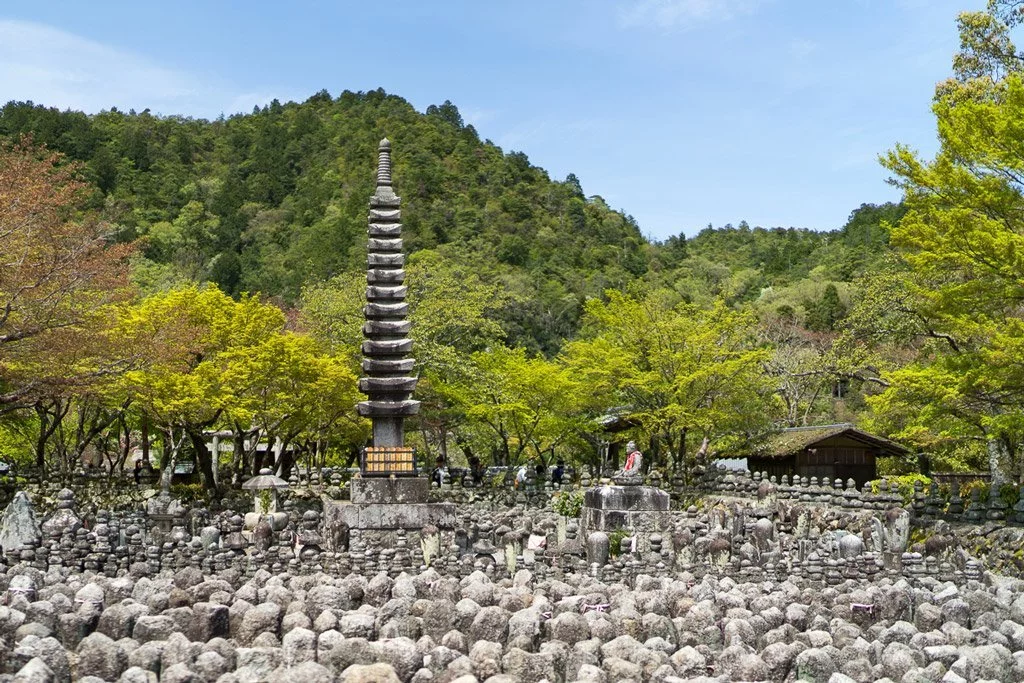
#4 Stroll through the northwest of Arashiyama
The walk from the station to the northwest of Arashiyama is very idyllic and there are many beautiful temples along the side of the road. We’d definitely recommend walking one leg of the way there or back. We took the bus there and walked back.
Tourist groups don’t stray that far northwest and so suddenly you’ll find yourself alone in an idyllic suburb with traditional houses and lots of tiny temples.
It’s really worth spending some time exploring the area.
#5 Romantic Train in Arashiyama
A perfect end to a day out in Arashiyama is a ride with the so-called Romantic Train. The ancient train happily hurtles down the line on its 25-minute journey through a beautiful landscape from Torokko Saga Station to Torokko Kameoka Station about 7 kilometers to the west.
The trip goes down a gorge and past a wide river, through tunnels and over two slightly dubious looking bridges. In terms of scenery, it probably isn’t the most spectacular train ride there is, unlike the train ride from Kandy to Ella in Sri Lanka for example, but it’s worthwhile nonetheless.
And at the end of the trip, the conductor, who was almost as old as the train, even burst into song!
The trip is especially pretty in the fall when the leaves start to get some color. But it’s also really popular around that time, so make sure to book a few days in advance. The same goes for the cherry blossom season.
You can buy tickets at the JR counter at Kyoto Station, or right at the station if the train isn’t full. We were lucky and managed to get a ticket right on the spot.
The last train leaves Torokko Saga Station, which is right next to Saga Arashiyama Station, at 4:01 pm. The train’s destination, Torokko Kameoka, is about a 10-minute walk from Umahori Station, where you can catch a JR train back to Kyoto.
Instead of ending the day with the trip, it’s also a good way to start it. In that case, take the JR to Umahori from Kyoto and then take the first Romantic Train from there to Arashiyama at 9:29 am. It’s a single-track railway, so the journey is just as nice in both directions.
Our verdict: A nice end to a day in Arashiyama!
The train leaves Torokko Saga (Arashiyama) once every hour between 9:01 am and 4:01 pm. The return trip to Arashiyama leaves Torokko Kameoka Station every hour from 9:29 am to 4:29 pm.
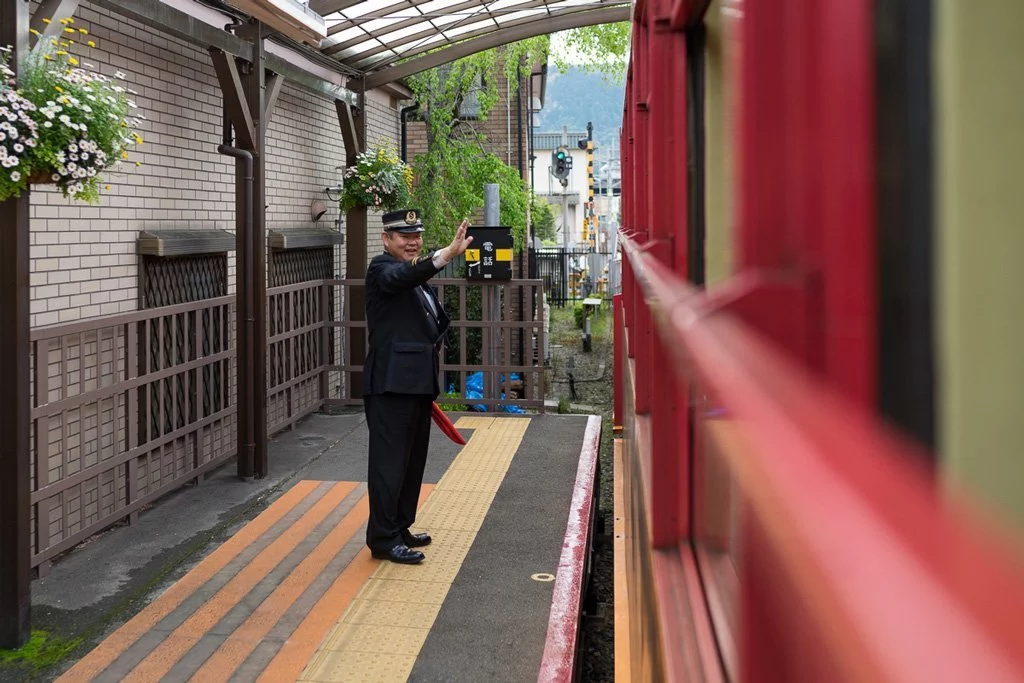
Kyoto: Guided tours and special tours
Of course it’s fun exploring Kyoto on your own, but sometimes you might like to head out to discover the city with a local guide.
We’ve found you some special guided tours through Kyoto where you’ll get to know the city from a different perspective and are guaranteed to get some real insider tips.
The tours can all be booked online and are led by an English-speaking guide.
Kyoto Welcome Tour : This tour is perfect for your first day in Kyoto. Your local guide will accompany you on your first steps around Kyoto and give you lots of tips for your time there, which you can explore for yourself in the next few days.
Tea ceremony in Kyoto : A Japanese tea ceremony is a real experience and Kyoto is a perfect place to experience that kind of thing.
Cycling tour through Kyoto : You don’t always have to get around by bus or your own two feet. Why not explore Kyoto by bicycle for a change? You can do so on this tour.
Kyoto highlights with private guide : This tour is for great if you don’t have much time and want to see as much of Kyoto as possible. A private guide will take you to the most important sights of Kyoto in tour.
Food tour through Kyoto : This culinary tour through Kyoto is something for true connoisseurs. The guide will take you to a food market where you can try many local specialties.
Getting around in Kyoto: Buses and metro
The sights in Kyoto are relatively far apart and are sometimes they’re even all the way out in the suburbs. We planned the individual days of our 4-day itinerary for Kyoto so you can spend most of the time on foot. But that doesn’t always pan out and you can’t go completely without taking the bus or metro in Kyoto.
Buses in Kyoto
The most common means of transportation in Kyoto is the bus. Buses will take you to most distant corners of the city.
But bus travel isn’t all that comfortable because on the one hand, buses are usually packed with people and on the other hand, they stop every 2 minutes, so it takes forever to get from A to B. That’s why we tried to avoid buses and took the train whenever we could.
A bus ride costs 230 yen and the easiest way to pay is with an IC card. If you were in Tokyo before, you can also use your Suica card from there in Kyoto.
A Kyoto Bus Pass costs 500 yen and is valid for unlimited bus travel for one day, which is worth it if you plan to take three or more trips. The bus pass is available at Kyoto Station, tourist information offices, and other major stations in the city area.
We only used the bus pass on the third day when we visited the temples in the northwest. On the other days we only took the bus once or twice.
By the way, unlike in most of Europe, you enter the bus at the back and exit at the front. You pay for your trip when you get off, either in cash (have exact change ready!) or with the IC card. If you have a bus pass, then you only validate your ticket the first time you get off, and then just show it to the driver the next time.
Metro and local trains in Kyoto
The metro and local trains are generally a lot faster and more comfortable than buses in Kyoto. Metro lines mostly run in downtown Kyoto while local trains are most suitable for visiting the temples scattered outside the city center.
We’ve already told you which train goes to which attraction in our 4-day itinerary above.
Where’s the best place to stay in Kyoto? Our Kyoto hotel tips!
Unfortunately, staying in Kyoto doesn’t come cheap. Especially in the main travel period in spring and autumn, the already exorbitant prices go up even further.
We really recommend taking a hotel in downtown Kyoto because the distances are far enough as it is without having to commute into town first.
The area around Kyoto Station is a great location for exploring the Kyoto’s sights and attractions. So is everything north of the station to the left and right of the main shopping street Karasuma Dori.
Our hotel in Kyoto: Tabiya Hotel
Attention : The Tabiya Hotel is currently closed and we don’t know if it will open again.
Originally, we had booked an apartment in Kyoto via Airbnb, but that was a complete disaster. So we had to move into a hotel at the last minute and were lucky that the Tabiya Hotel still had a free room. After all, the city was already at 97 percent (!) occupancy.
The Tabiya Hotel is located in a quiet side street to the east of Karasuma Dori. Restaurants, stores, and the Shijo metro station are just around the corner. The temples in the east and the station aren’t far away either. The perfect location!
The rooms were really tiny and even more cramped than our hotel in Tokyo . But everything was very new and modern, the bed was comfortable, of course the toilet seat was heated, and the Internet connection was excellent. Weird how quickly you get used to things in Japan.
You just shouldn’t bring too large suitcases, otherwise things might get a little tight. The room was cleaned every day and you can take a small free breakfast (yogurt and pastry) from the fridge in the hallway.
Our tip : We stayed in the Tsuyukusa room and felt very comfortable there. We recommend asking for one of these rooms: Wakaba, Tsuyukusa, Kaki, and Matsuba. Because they all face the street and each have a large panoramic window. That made our room feel very homey and bright. The rooms facing the back, Koiai, Akane, and Sakura, only have small windows.
To the hotel: Tabiya Hotel
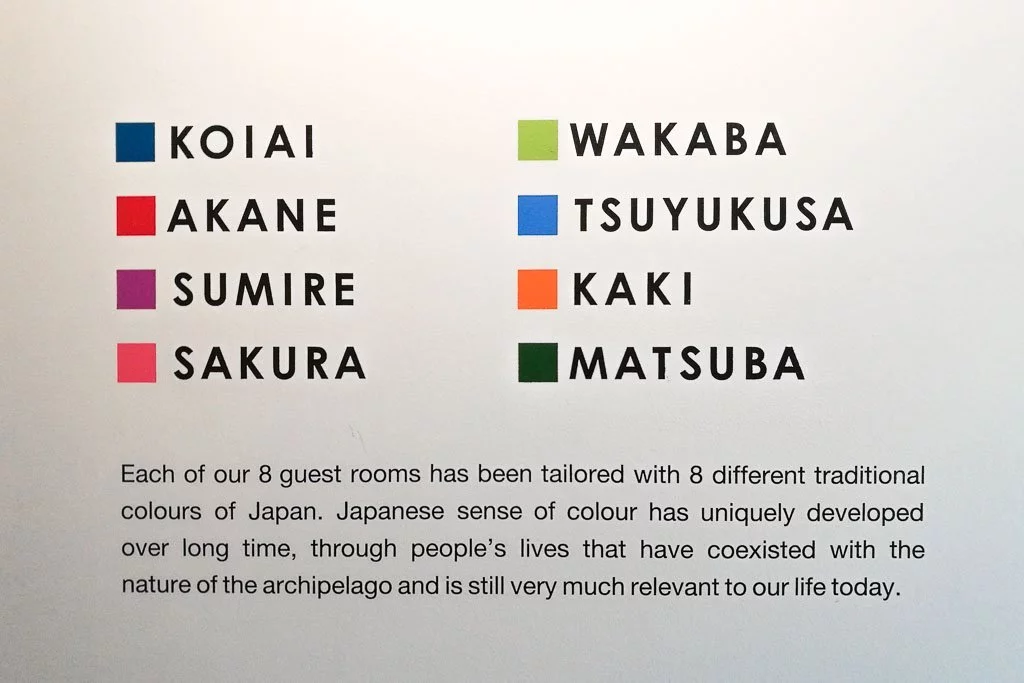
Other hotels in Kyoto
Our hotel only had 8 rooms and it isn’t unlikely that your preferred hotel in Kyoto might be fully booked. So we’ve found you a few other recommended places to stay in Kyoto.
Cheap hostels in Kyoto:
Fairfield House Backpackers Hostel Piece Hostel Mosaic Hostel
Mid-range hotels in Kyoto:
Len Kyoto Kawaramachi Sakura Terrace The Gallery Kyoto Itoya Hotel
Upscale hotels in Kyoto:
Aoi Hotel NAZUNA Kyoto Nijo-tei Hotel Kanra
Our favorite restaurants in Kyoto
We also discovered some great restaurants in Kyoto that we’d like to share with you.
Musashi: Running Sushi in Kyoto
Musashi is a running sushi restaurant in Kyoto and what a place it is! The plates are slightly more expensive than in other running sushi restaurants and cost 146 yen, or 346 yen for special dishes.
The selection and quality is really great, so we ate here three times. There are two Musashi branches in Kyoto: One is located at the back of the Kyoto Station in Hachijo Dori. The other is in the center on the corner of Sanjo Dori / Kawaramachi Dori. We like the restaurant in the train station a bit better, but both are good of course.
Both restaurants are very popular, so you may have to wait to be seated. We always got there before 6 pm and got a table right away.
Opening hours: 10:00 am to 10:30 pm (at the station); 11:00 am to 10:00 pm (in the city)
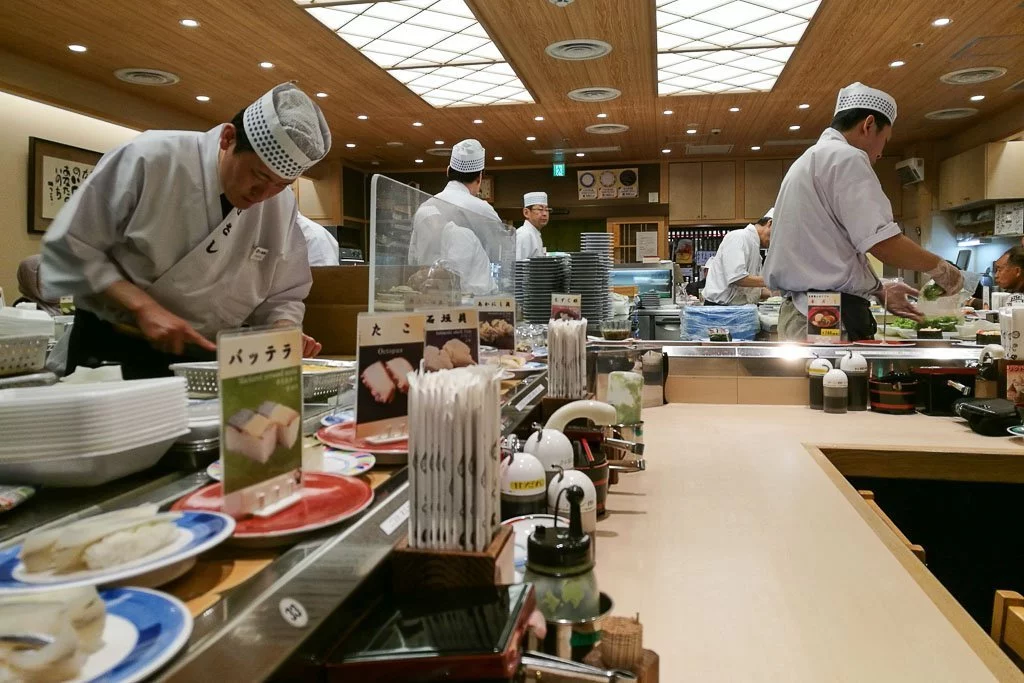
Tadka: Indian restaurant in Kyoto
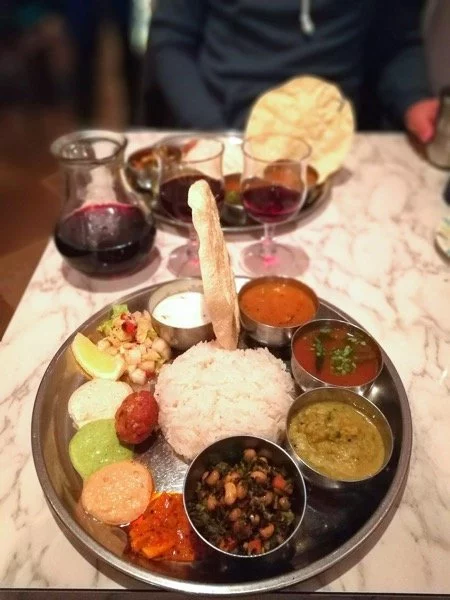
Tadka in Oshikoji Dori is a super-delicious Indian restaurant in Kyoto. If you’re looking for an alternative to Japanese food, then Tadka is a great choice.
The menu isn’t very long, and many dishes are completely vegetarian or even vegan. Everything we tried was extremely tasty and authentic, so we came back here a second time.
It mainly attracts a younger crowd of eco-conscious Japanese hipsters. Something we only rarely got to see on our trip. Very pleasant!
Opening hours: Noon to 3:00 pm and 6:00 pm to 10:30 pm. Closed on Sundays and Mondays.
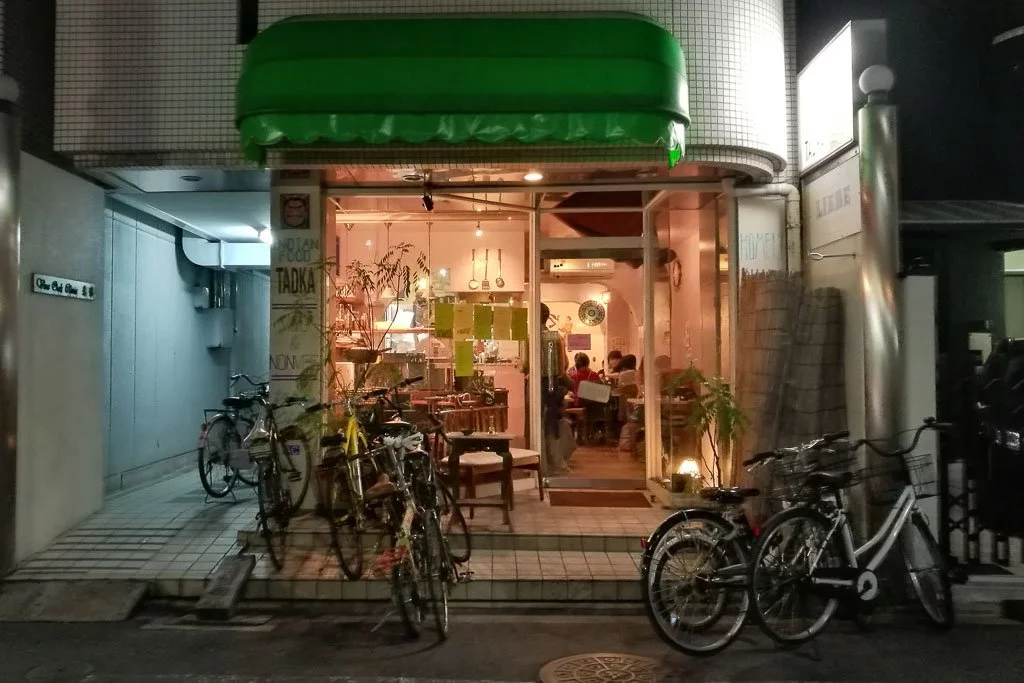
Organic House Salute: Vegan restaurant in Kyoto
The Organic House Salute, five minutes from the station, is a cute, completely vegan restaurant. You take off your shoes at the entrance and sit at the small tables on the floor.
The menu is relatively short. The dishes are super-delicious and the different cakes top off a great dining experience!
Opening hours: 11:30 am to 2:30 pm, and also from 5:00 pm to 6:45 pm on weekdays, closed on Thursday.
Tenkaippin: Delicious ramen in Kyoto
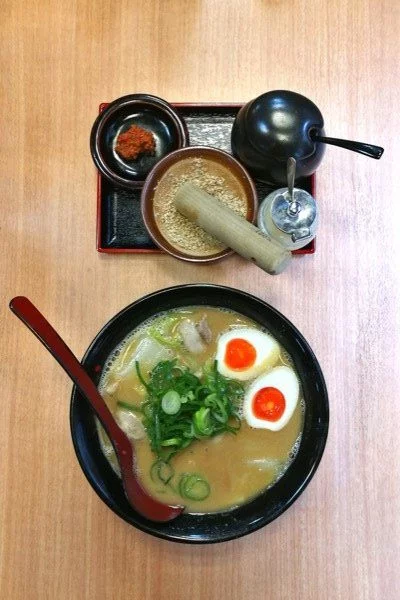
Tenkaippin is a small chain of ramen restaurants in Kyoto. We were at the one in Imadegawa Dori, just around the corner from the Imperial Palace. They have very tasty ramen, the typical Japanese noodle soup, one of the best we ate on our trip.
Our tip : We took the ramen dish where it said in the menu that we could spice it to taste.
The opening hours vary depending on the restaurant. But most of them open every day and stay open well into the evening.
Day trips from Kyoto
Many travelers go on day trips from Kyoto to Nara and Osaka. Nara, like Kyoto, is a former capital with many impressive temples. You can take the JR Miyakoji Line to get from Kyoto to Nara in about 45 minutes.
Osaka is another popular destination for a day trip from Kyoto. Japan’s third largest city is also only a half hour away by train and has some great sights and attractions to offer.
Our tip: Since you’ll be going from temple to temple anyway when you’re in Kyoto, we’d recommend not going straight from Kyoto to Nara. The charm of Nara pales a bit when you come directly from Kyoto.
Therefore we’d recommend not just going on a day trip to Osaka from Kyoto, but staying there a few days instead. Then you can go on a day trip from Osaka to Nara, which will make it appear much more beautiful in contrast to the modern city rather than to the other historic city of Kyoto.
Another popular day trip destination from Kyoto is Amanohashidate, a more than three-kilometer-long sand bank along Miyazu Bay to the north of Kyoto. Getting there from Kyoto is a bit more complicated and not exactly cheap, so booking a private tour is a worthwhile option.
Kyoto travel guide
Lonely Planet has two English-language travel guides for Kyoto:
Kyoto City Guide Pocket Guide for Kyoto and Osaka
More tips for your trip to Japan
We hope that our guide to Kyoto will help you plan your time in Kyoto and will also be useful when you get there. We’re really looking forward to your feedback and would be pleased to hear from you with more travel tips, ideas, and hints for Kyoto.
What did you think of the city? Was it your absolute highlight in Japan or did you grow a bit temple-weary? Please let us know in the comments below!
14 Places to Visit in Kyoto + Things To Do

If there’s only one place you should visit in Japan, it has to be Kyoto! This historic city is a must-see destination for travelers hoping to get a glimpse of Old Japan.
Kyoto is one of Japan’s most beautiful cities, famed for its, which includes 17 UNESCO World Heritage Sites.
Here are the main places that I enjoyed in Kyoto. This list is perfect for first-timers planning a quick visit.
Kyoto travel essentials: (click below to view prices online)
Where to stay Tours + discounts WiFi/SIM
Japan WIFI/SIM Card
See also : Kyoto Itinerary | Osaka Tourist Spots | Best Places to Visit in Japan | Best Places to Visit in Tokyo | Japan Itinerary
1. Fushimi Inari Shrine (Fushimi Inari Taisha)
Location : 68 Fukakusa Yabunouchicho, Fushimi Ward, Southern Kyoto . Save on Google Maps .
Dedicated to Inari, the Shinto god of rice and success in business, the Fushimi Inari Shrine is one of the most famous sights in Japan. Here, you’ll find the iconic vermillion torii gate covered trail that leads to the sacred Mount Inari. The Fushimi Inari Shrine is perhaps the busiest tourist spot in Kyoto, so visit early in the morning before the crowds arrive.
How to go :
Take the JR train (JR Nara Line) to JR Inari Station, two stations away from Kyoto Station. You’ll find the shrine right outside the station. It’s also a short walk away from the Fushimi Inari Station along the Keihan Main Line.

Kyoto and Nara Day Tour from Osaka/Kyoto
See discounts
Kimono Rental in Kyoto
To help with your trip planning, I’ve added links to the locations on Google Maps. Feel free to click/tap on the links posted. Then, use the “save” feature on the Google Maps app for easy reference. I’ve also shared photos from my Instagram feed . Use Instagram’s save feature for quick access to your travel/feed goals.
Follow me on Instagram
2. Arashiyama Bamboo Forest
Location : Arashiyama, Ukyo Ward, Western Kyoto . Save on Google Maps .
Found in the western outskirts of the city, the Arashiyama Bamboo Forest is one of the most scenic attractions of Kyoto. A walking path cuts through the bamboo grove allowing you to get immersed in the serene view of towering bamboo trees.
Take the JR train to the JR Saga-Arashiyama Station. The bamboo grove is a 15-minute easy walk away from the station.

Sagano Romantic Train Ticket Ticket
Arashiyama rickshaw tour.
3. Tenryuji Temple

Tenryuji Temple in Arashiyama, Kyoto, Japan
Located beside the bamboo grove, the Tenryuji Temple is a must-visit when in Arashiyama. It the top Zen Buddhist temple in Kyoto and registered as a UNESCO World Heritage Site, as part of the “Historic Monuments of Ancient Kyoto”. Don’t miss the sprawling Zen garden with the Arashiyama mountains as its backdrop.

4. Togetsu-kyo Bridge, Arashiyama

Togetsu-kyō Bridge in Arashiyama, Kyoto, Japan
Location : Arashiyama, Ukyo Ward . Save on Google Maps .
The Togetsu-kyo Bridge, which literally means “Moon Crossing Bridge” is a well-known central landmark in Arashiyama. Stopover for a peaceful view of the riverside and surrounding mountains.
5. Kinkakuji Temple (Golden Pavilion)
Location : 1 Kinkakujicho, Kita Ward, Northwest Kyoto . Save on Google Maps .
In the northwest part of the city, you’ll find the Kinkakuji Temple or the Golden Pavillion, one of the most photographed sites in Kyoto. Take your spot from across the large pond to enjoy the landscape garden and the Zen Buddhist temple, which has its top two floors covered in gold leaf.

6. Kiyomizu-dera Temple

Kiyomizudera Temple view overlooking Kyoto, Japan
Location : 294 Kiyomizu, Higashiyama Ward, East Kyoto . Save on Google Maps .
Kiyomizu-dera Temple, which literally means “Pure Water Temple” was ) is a Buddhist temple founded on the site of the Otowa Waterfall in the eastern hills of Kyoto. A beautiful view can be seen from the terrace, which overlooks the canopy of trees and the Kyoto cityscape.

7. Kyoto Old Town (Sanneizaka & Nineizaka Streets)
Location : Higashiyama Ward, East Kyoto . Save on Google Maps .
Get a feel of Old Japan at the historic streets of Sanneizaka & Nineizaka. Walk through the stone paved streets lined the whole way with traditional wooden shophouses and landmarks like the Hōkan-ji Temple.

8. Kodaiji Temple

Kodaiji Temple in Kyoto, Japan
Location : 526 Shimokawaracho, Higashiyama Ward, East Kyoto . Save on Google Maps .
You’ll find the Kodaiji Temple temple near the northern end of Nineizaka Street. This Buddhist temple is famous for its stunning Zen gardens and special illumination shows in autumn and spring.

9. Yasaka Shrine & Gion District

Location : 625 Gionmachi Kitagawa, Higashiyama Ward, East Kyoto . Save on Google Maps .
From Kodaiji Temple, you can walk farther north and explore Gion, Kyoto’s geisha district. One of the main places to visit here is the Yasaka Shrine, home to the most famous festival in Japan, the Gion Matsuri. Visit during the evening to see hundreds of lanterns lit up at the dance stage fronting the main hall.

10. Nijo Castle

Location : 541 Nijojocho, Nakagyo Ward, Central Kyoto . Save on Google Maps .
Nijo Castle is another interesting place to go in Kyoto aside from its famed temples and shrines. This castle features massive stone walls surrounded by a wide moat, heavy gates, and a richly decorated palace.
Nijo Castle and Ninomaru Palace Admission Ticket

11. Kyoto Tower

Kyoto Tower in Kyoto, Japan
Location : 721-1 Higashishiokojicho, Shimogyo Ward . Save on Google Maps .
Get a breathtaking view overlooking Kyoto from the Kyoto Tower, the tallest structure in the city. It’s conveniently located beside Kyoto Station.
12. Sushi no Musashi

Location : Atsy Road, Kyoto Station (near the Shinkansen Hachijo entrance on the southern side of the station), Central Kyoto . Save on Google Maps .
If you’ve always wanted to try a conveyor belt sushi restaurant (kaiten-sushi), check out Sushi no Musashi, which has three branches in Kyoto including one right inside the Kyoto Station complex.

13. Ramen Sen no Kaze

Location : 580 Nakanocho, Nakagyo Ward, Central Kyoto . Save on Google Maps .
One of the best ramen I’ve had in Japan! Ramen Sen no Kaze is a must-try in Kyoto. The queue was long when I went but it was worth the wait.

14. Teramachi Shinkyogoku Shopping Arcade

Location : Central Kyoto . Save on Google Maps .
What places have you added to your bucketlist? Have you been to beautiful places in Kyoto that should be on this list? Feel free to share your thoughts!
Places to visit in Kyoto
Kyoto tourist spots, things to do in Kyoto, where to go in Kyoto & more.
Note: Destinations featured above are not listed by rank.
Where to Stay in Kyoto
Click below & search recommended Kyoto hotels/hostels/home rentals within your budget. Remember to set your min/max price , travel dates, and sort by review ratings . I often book online with these trusted booking sites below for rock-bottom prices & convenient bookings.
Agoda Booking.com
Book sooner rather than later if you already have your dates set. Cheaper-priced rooms and hotels with high reviews tend to get fully booked faster, especially during busy days like weekends, holidays & peak tourist seasons.
Kyoto Essentials & Top Discounts
Japan mobile data sim card/pocket wifi.
Travel with ease & confidence throughout your trip. Get a data SIM card or pocket WIFI device! Access Google Maps and all your favorite travel apps. Share your travel stories instantly with all your friends. Click below and choose your pick-up location:
Japan SIM card Pocket WIFI See all discounts
JR Kansai WIDE Area Pass (5 Days)
Unlimited JR rides in Kyoto, Osaka, Nara, Himeji, Kobe & more
ICOCA IC Card
Kyoto hop-on hop-off sightseeing bus pass, jr pass for whole japan.
Popular discounts and tours booked by other travelers:
Japan Trail and Shinkansen Tickets
Bus Transfers between Osaka or Kyoto and Kansai International Airport (KIX)
Kimono Rental in Kyoto with Optional Photoshoot
One Day Kimono Rental
JR Takayama-Hokuriku Area Tourist Pass (5 Days)
JR West Kansai Pass (1, 2, 3 or 4 Days)
Kyoto JR Car Rental (1, 2, 3, or 4 Days)
Randen + Subway 1 Day Pass
Click below to see more on:
Don’t Stop Here
Click below for more travel inspiration:

Don’t leave yet. There’s more!

Discover more blogs and travel tips in:
Leave a Reply Cancel reply
Your email address will not be published. Required fields are marked *
This site uses Akismet to reduce spam. Learn how your comment data is processed .
March 16, 2020 at 6:31 pm
Nice places i wanna check there. Thanks ;)
April 24, 2020 at 4:37 pm
There are three things I want to do in Japan: 1. Visit the temples 2. Eat Ramen and Sushi 3. Visit the Kyoto Tower And adding Arashiyama Bamboo Forest on my list must be fun. Thanks for this!
August 7, 2021 at 12:06 am
Seems like covid isn’t going away the earliest we want, but I’m planning our Japan trip as early as now 😁 Thanks for the ideas and I got inspired by how you presented Kyoto. This is perfect because we’re planning to enter through Osaka and a quick trip to Kyoto will be included in the itinerary. Thanks, Marcos!

Kyoto (���s, Kyōto) served as Japan's capital and the emperor 's residence from 794 until 1868 . It is one of the country's ten largest cities with 1.5 million inhabitants and a modern face.
Over the centuries, Kyoto was destroyed by many wars and fires, but due to its exceptional historic value, the city was dropped from the list of target cities for the atomic bomb and escaped destruction during World War II . Countless temples , shrines and other historically priceless structures survive in the city today.
Top attractions in Kyoto
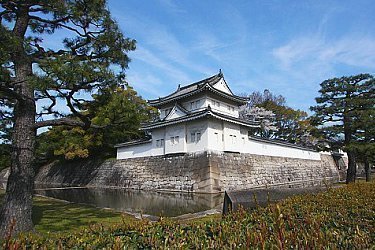
Nijo Castle ••
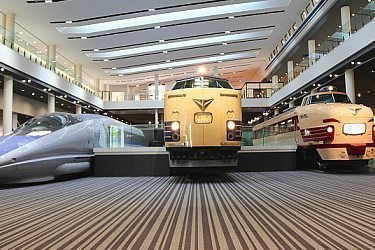
Kyoto Railway Museum •
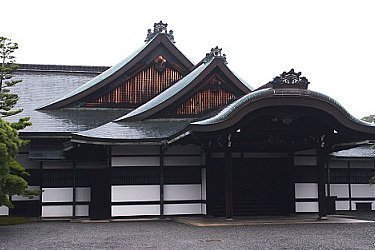
Sento Palace •
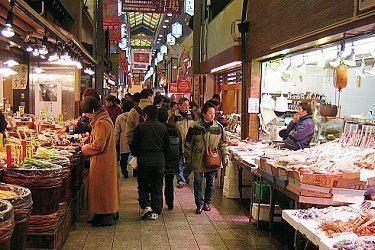
Nishiki Market •
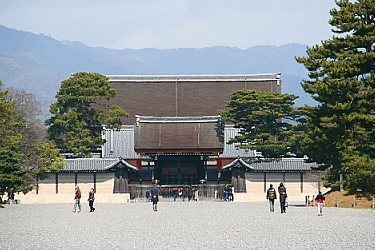
Kyoto Imperial Palace •
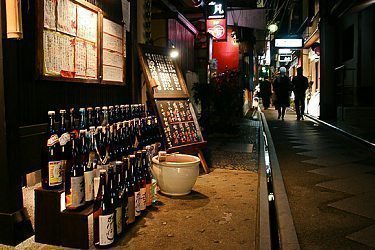
Pontocho •
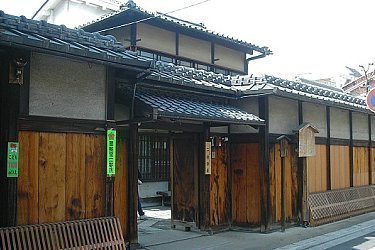
Nijo Jinya •
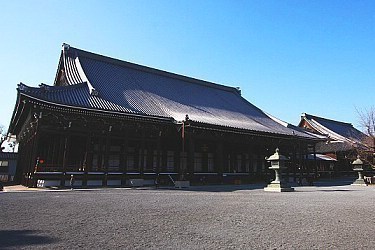
Honganji Temples •
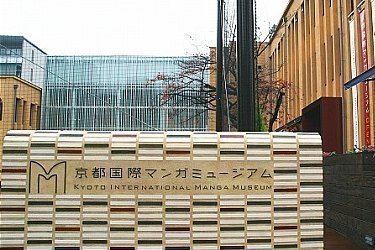
Kyoto Manga Museum
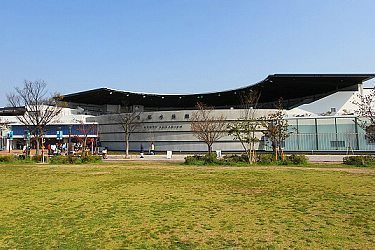
Kyoto Aquarium
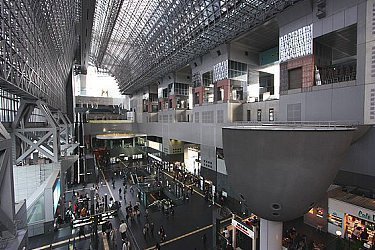
Kyoto Station
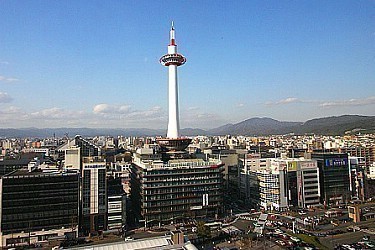
Kyoto Tower
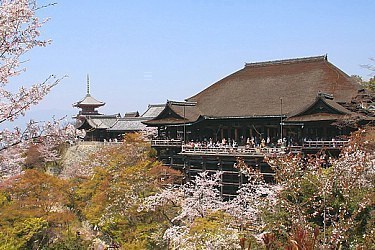
Kiyomizudera •••
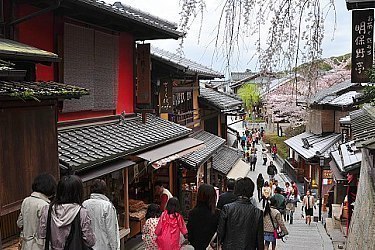
Higashiyama •••
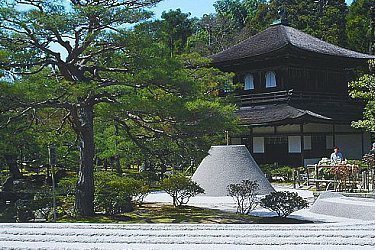
Ginkakuji •••
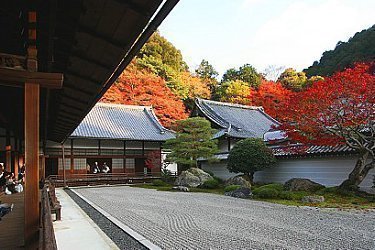
Nanzenji Temple ••
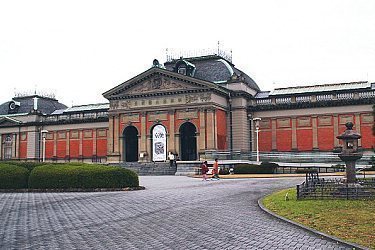
Kyoto National Museum ••
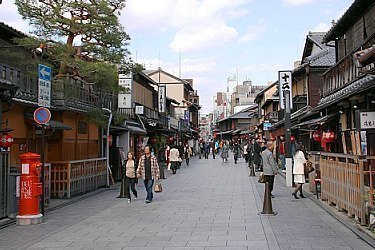
Gion •
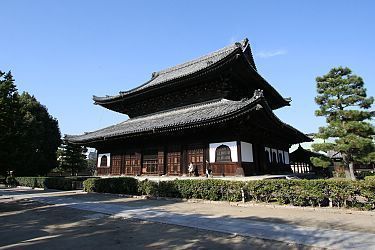
Kenninji Temple •
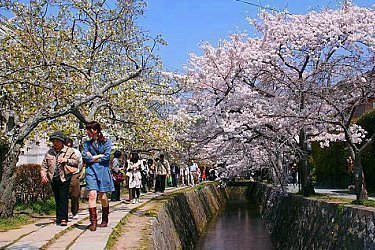
Philosopher's Path •
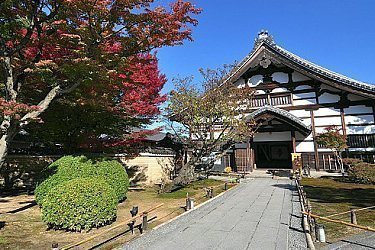
Kodaiji Temple •
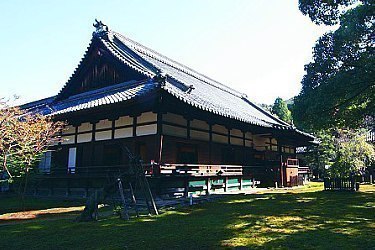
Shorenin Temple •
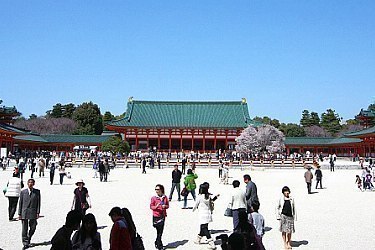
Heian Shrine •
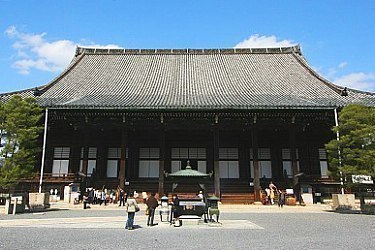
Chionin Temple •
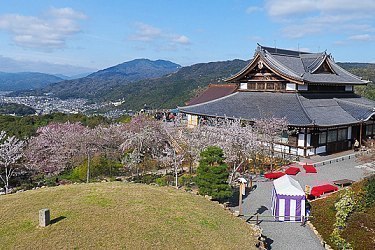
Shogunzuka Mound
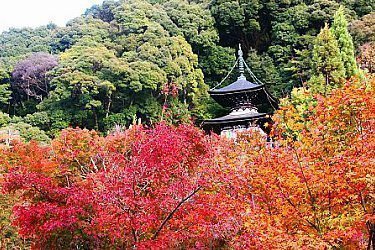
Eikando Temple
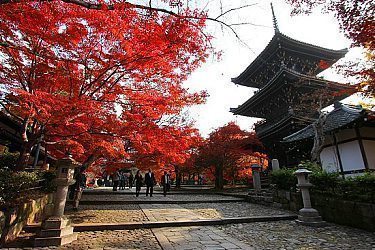
Shinnyodo Temple
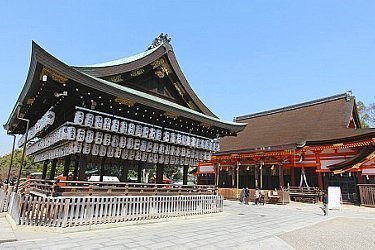
Yasaka Shrine
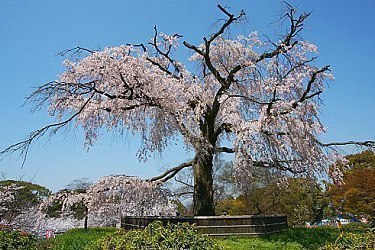
Maruyama Park
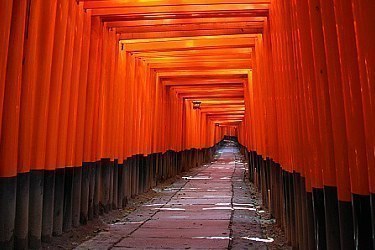
Fushimi Inari Shrine •••
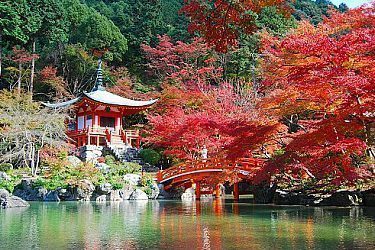
Daigoji Temple •
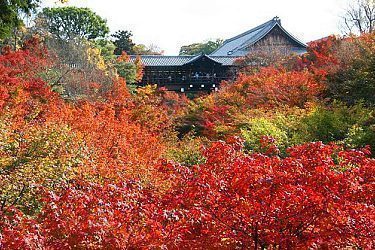
Tofukuji Temple •
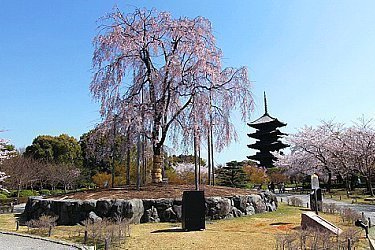
Toji Temple •
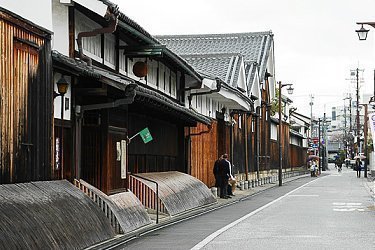
Fushimi Sake District
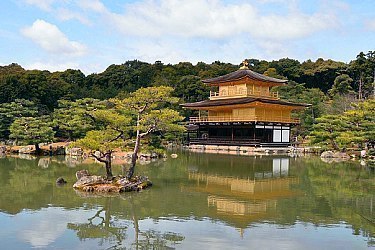
Kinkakuji •••
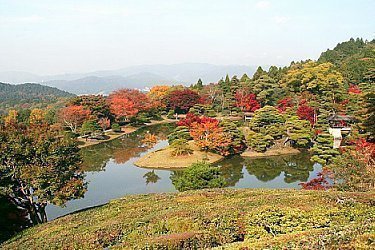
Shugakuin Villa ••
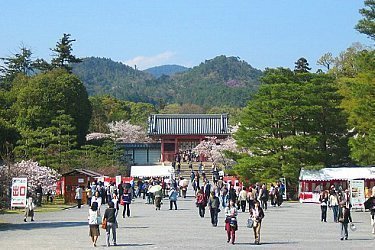
Ninnaji Temple ••
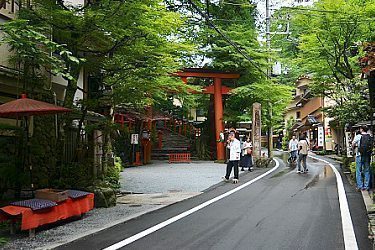
Kibune •
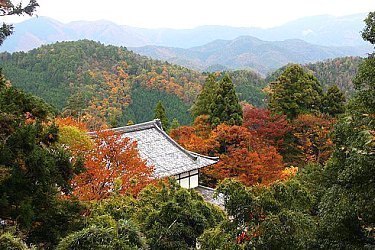
Kurama •
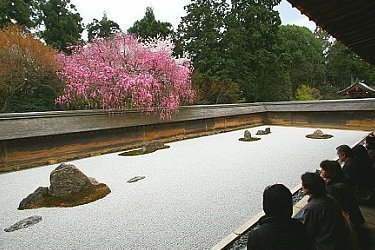
Ryoanji Temple •
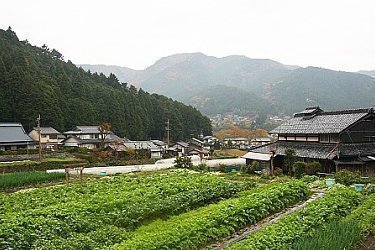
Ohara •
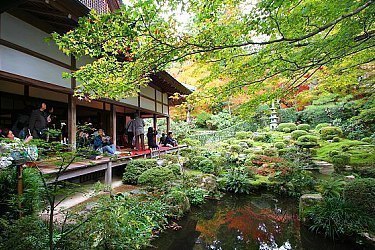
Sanzenin Temple •
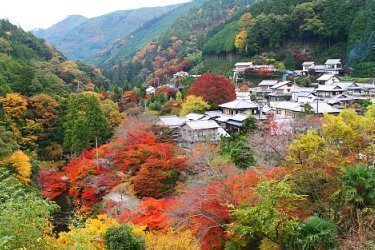
Takao •
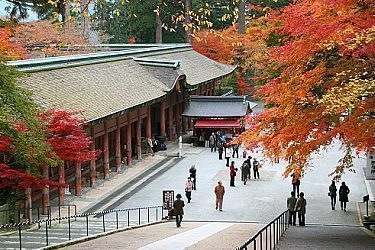
Hieizan •
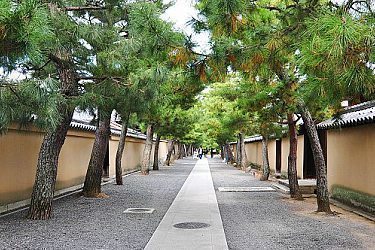
Daitokuji Temple •
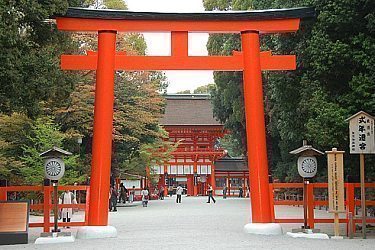
Kamo Shrines •
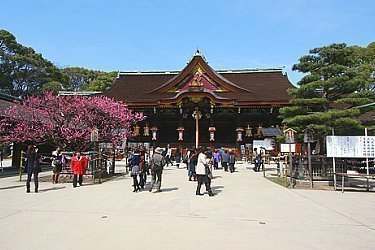
Kitano Tenmangu •
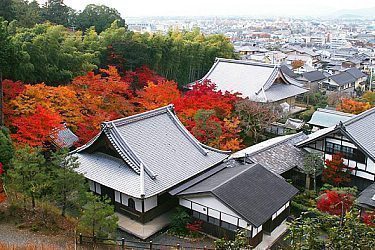
Enkoji Temple
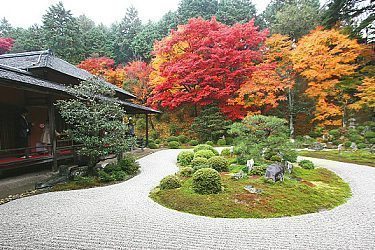
Manshuin Temple
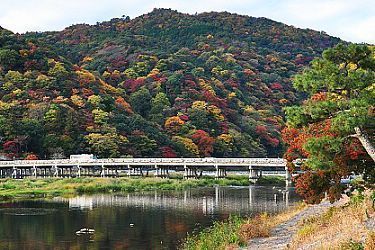
Arashiyama ••
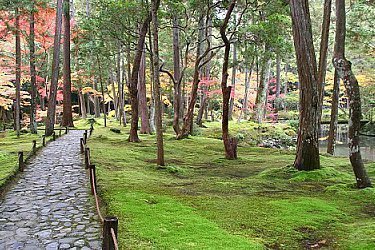
Kokedera ••
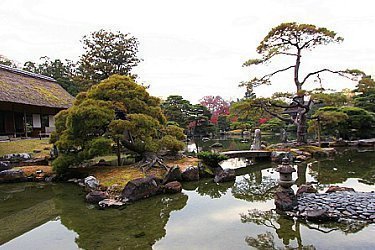
Katsura Villa ••
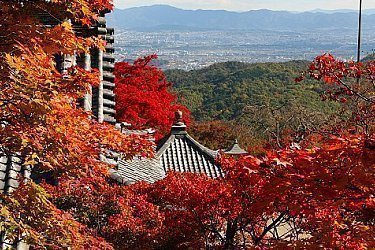
Yoshiminedera •
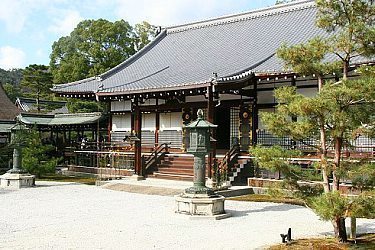
Daikakuji Temple •
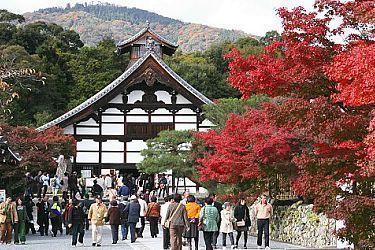
Tenryuji Temple •
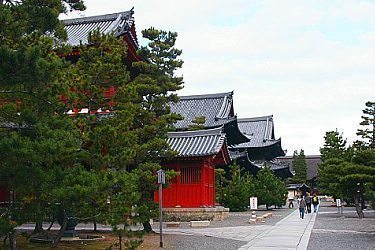
Myoshinji Temple •
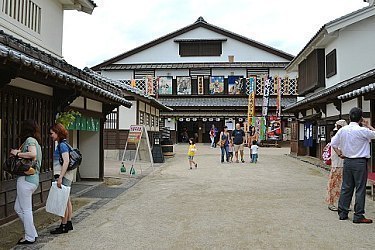
Toei Eigamura •
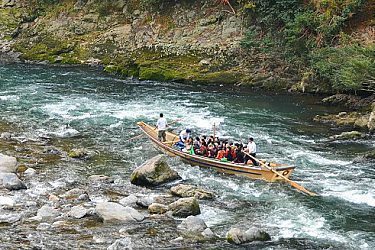
Hozugawa Cruise
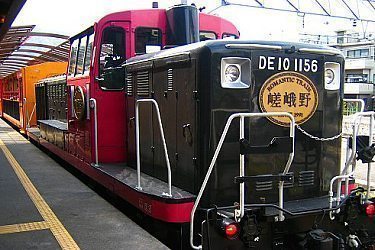
Sagano Railway
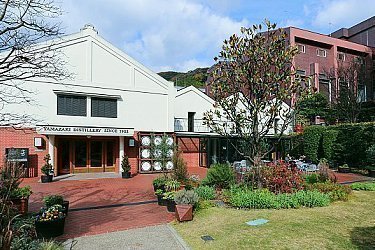
Yamazaki Whisky Distillery
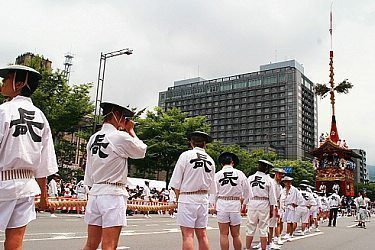
Gion Matsuri ••
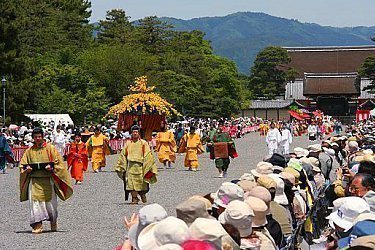
Aoi Matsuri •
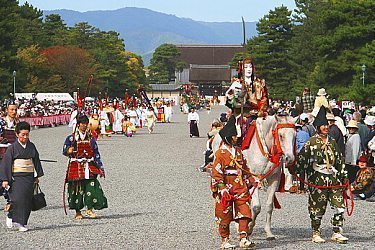
Jidai Matsuri •
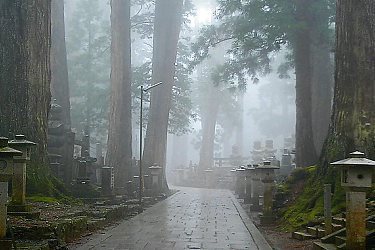
Mount Koya •••
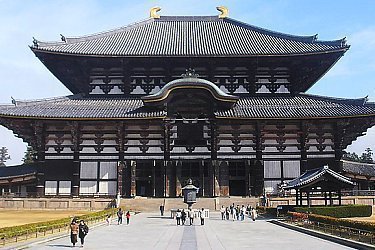
Nara •••
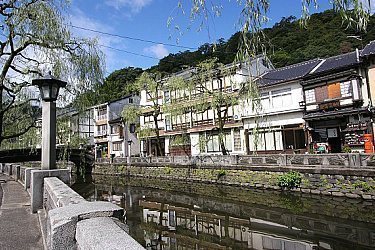
Kinosaki ••
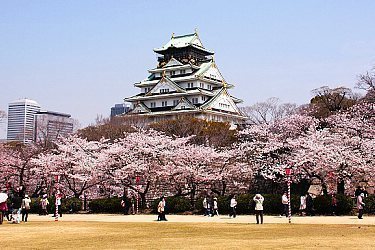
Osaka ••
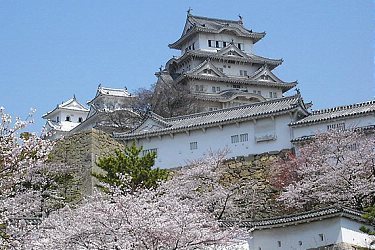
Himeji ••
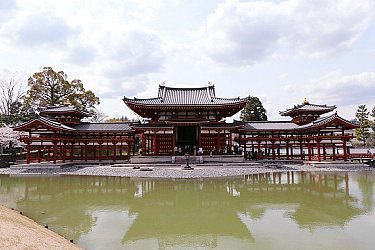
Amanohashidate •
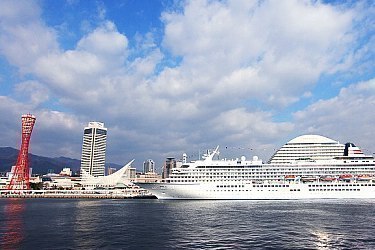
Kobe •
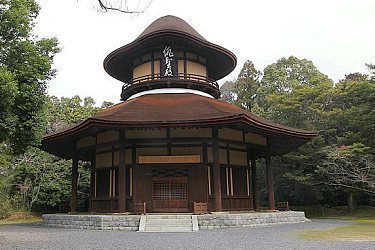
Iga Ueno •
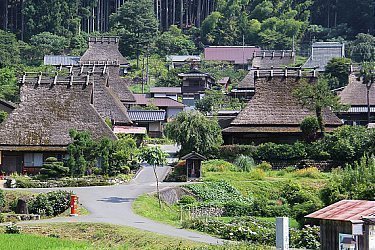
Asuka and Sakurai
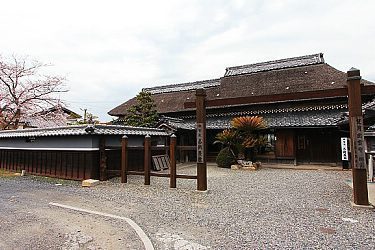
Kyoto by interest

Getting there and around
Itinerary ideas.
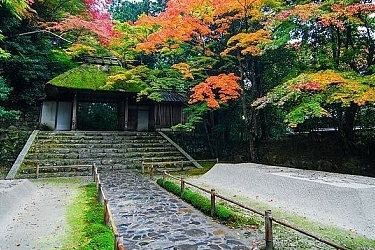
- Walk the Philosopher's Path
- Beautiful temples and shrines
- Attractive Higashiyama streets
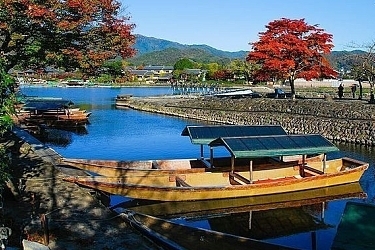
- See the bamboo groves
- Visit the monkey park
- Serene temples and gardens
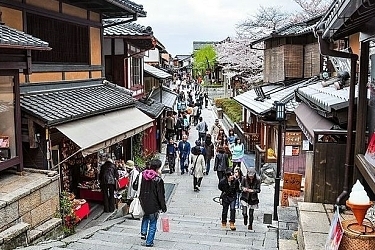
- Visit beautiful temples
- Explore Higashiyama and Gion
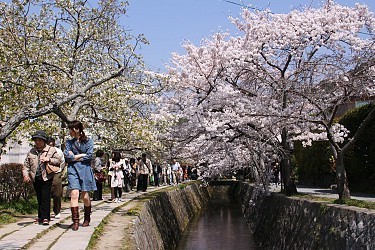
- Visit beautiful temples and shrines
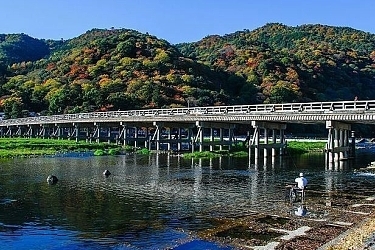
- Explore attractive Arashiyama
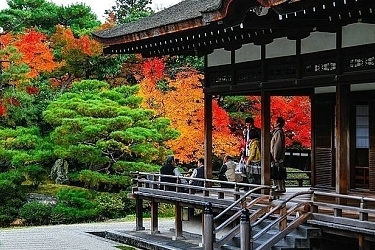
- Explore Kyoto's northern side
- Visit Kinkakuji , Ryoanji and Ninnaji temples
Questions? Ask in our forum .

Links and Resources
Kyoto official travel guide, cycle kyoto, hotels around kyoto, kyoto hotel guide.
How to choose the best places to stay in Kyoto
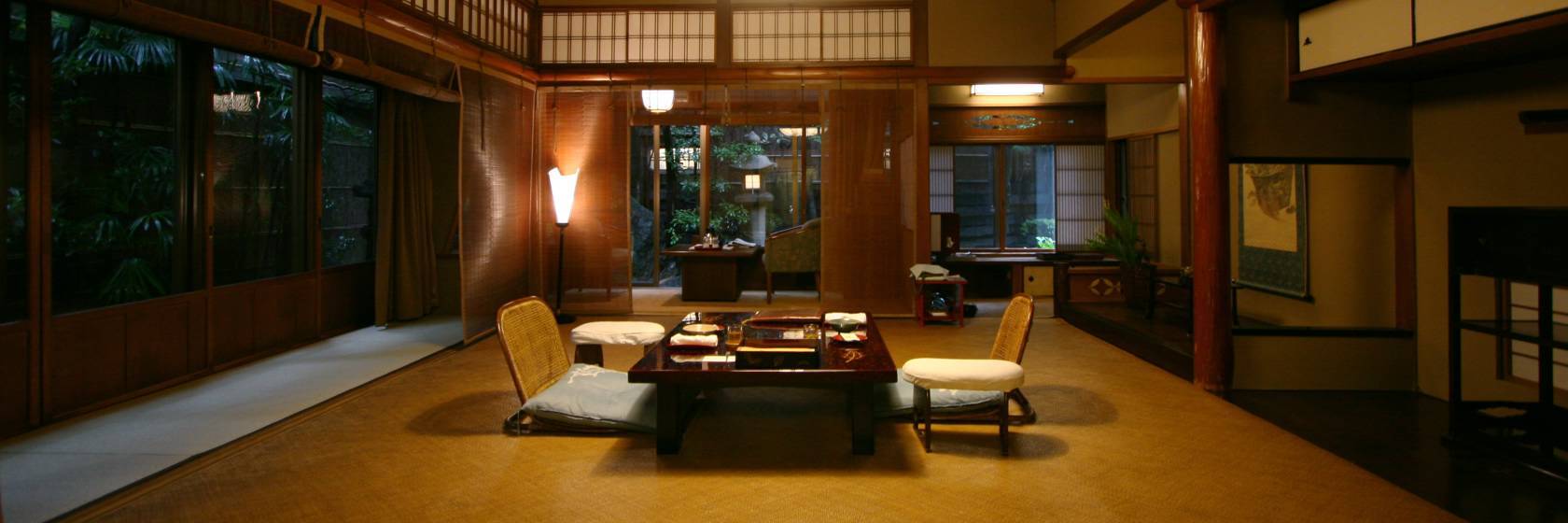
Experiences around Kyoto
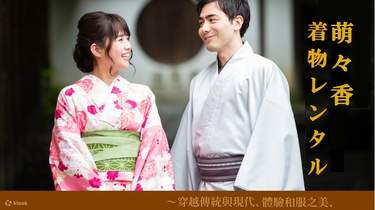
- Tokyo Cheapo (繁體中文)
Kyoto Top Attractions: 12 Must-See Sights in Japan's Ancient Capital
If Japan’s ancient capital is on the top of your travel hit list, but you’re not sure where to begin, here’s a starter’s guide to the top Kyoto attractions!
Kyoto easily has enough to keep you entertained for weeks. But if you’re on a whirlwind tour or just want to make sure you don’t miss anything major, look no further. Once the capital of Japan and considered today’s cultural capital, Kyoto has no shortage of temples and shrines, but there are also markets and bamboo forests to explore too.
- Kinkaku-ji (Golden Pavilion)
- Fushimi Inari Taisha
- Higashiyama District
- Sagano Bamboo Forest
- Nishiki Market
- Ginkaku-ji (Silver Pavilion)
- Geisha spotting in Gion
- Philosopher’s Path
- Yasaka Shrine
1. Kinkaku-ji | 金閣寺

Featured on the cover of every Kyoto guide book, Kinkaku-ji is also known as the Golden Pavilion. The Zen temple was destroyed on multiple occasions (including once by an enraged monk who set it alight), with the current iteration built in 1955.
Perched beside a lake and surrounded by well-manicured gardens, the gold-leaf-covered temple is a sight to behold. It’s best visited when it opens in the morning as it is a tad quieter. If you have time, enjoy some green tea and a small gold-leaf-dotted wagashi sweet in the garden tearooms.
Take Bus 205 from Kyoto Station.
- Kinkaku-ji Temple
2. Fushimi Inari Taisha | 伏見稲荷大社

Follow the famous trail of red gates as far as you can up the sacred Mount Inari. The main shrine will welcome you from the station, with a huge 16th-century torii gate, the main shrine buildings and plenty of food stalls.
Pro tip: Go on a Kyoto sake brewery tour in the famed Fushimi sake district.
Dedicated to Inari — the Shintō God of rice — the main shrine of Fushimi Inari was built in 1499. But some of the earliest parts of it date all the way back to 711. Foxes are believed to be messengers of Inari and plenty of appearances throughout the area, so keep an eye out. The most densely layered gates are found early on in the trail, so don’t worry about hiking the whole way to the top if you don’t have time (or energy).
Take the JR Nara Line from Kyoto Station to JR Inari Station.
- Fushimi Inari Shrine
3. Kiyomizudera | 清水寺

Known for its wooden veranda with stunning views of Kyoto, Kiyomizudera is a highlight of the city. It’s also the perfect way to end a walk through Higashiyama (next on our list).
Meaning “Pure Water Temple”, it was built close to the Otowa Waterfall and is now part of the Kita Hosse sect of Japanese Buddhism. As well as admiring the view both from and of the temple, you can pray for love at Jishu Shrine behind the main hall. Or choose between longevity, educational fortune, or luck in love by drinking from one of the waterfall’s three streams.
Kiyomizudera is a 15-minute walk from Kiyomizu-gojō station on the Keihan Railway Line. Alternatively, take Bus 86 or 206 from the Kyoto Station.
- Kiyomizu-dera
4. Stroll the streets of Higashiyama | 東山

For that ancient-Kyoto feel, Higashiyama is the place to visit. It has narrow, winding streets, and traditional shop fronts for you to explore. And don’t forget the beautiful shrines and pagodas to admire too. Hōkan-ji’s pagoda and the brightly colored kukurizaku (decorative balls) of Daikoku-san Kongō-ji Kōshin-dō (or Yasaka Kōshin-dō for short) are just some of the highlights.
The most popular and photogenic streets are Ninnen-zaka and Sannen-zaka, which feature restored wooden-fronted teahouses, shops, and restaurants. These streets are close to Kiyomizudera and the walk between is one of the highlights of any trip to the city.
Higashiyama is located between Yasaka Shrine and Kiyomizudera, best accessed from either Gion-shijō, Kawaramachi, Higashiyama or Kiyomizu-gojō stations. Buses 86 or 206 will take you to Kiyomizudera and you can explore from there.
5. Relax at Sagano Bamboo Forest

Stroll through the famous and picturesque bamboo forest and enjoy one of the top 100 soundscapes of Japan. With swaying trees and shady pathways stretching up to 500 m, you can explore the hidden spots around Tenryūji (#10 on our list).
Be sure to visit Nonomiya Shrine to make a wish on the tortoise stone and admire the beautiful heart-shaped ema . If you know anyone getting married or expecting a child, this is a great place to buy a small charm to wish them luck. The bamboo forest is extremely popular of course, so if you want to see it at its emptiest, arrive early!
Sagano Bamboo Forest is a short walk from Arashiyama Station on the Keifuku Dentetsu tram. It’s a little farther from Saga Arashiyama Station on the JR San-in Line, which has trains direct from Kyoto Station. Arashiyama Station on the Hankyu Line will take you to the otherside of Togetsukyo Bridge which is a slightly longer but pleasant walk.
6. Fill up at Nishiki Market | 錦市場

Squeezing over 100 shops into a five-block street, Nishiki is nicknamed Kyoto’s Kitchen, and certainly delivers on the food front. Originally a fish market started in 1310, today you can find stores that have stayed in families for generations, with traditional Japanese foods like pickled vegetables, locally grown rice and dried fish.
Many stalls offer tasters and there are plenty of stalls serving fresh food from steamed buns to homemade tofu and you can even try a quail-egg-stuffed mini-octopus!
Nishiki is close to Shijō station on the Karasuma Subway line and Kawaramachi Station on the Hankyu Line.
7. Go Zen at Ginkaku-ji | 銀閣寺

Often known as the quieter counterpart of the Golden Pavilion, Ginkaku-ji (the Silver Pavilion) is a Zen temple with a more toned-down style. Originally a retirement villa styled after Kinkaku-ji, it’s believed to have been named after the sight of the moonlight reflecting on the thatched roof.
Converted into a temple in 1940, it was a hub of cultural development including the progression of tea ceremony, flower arrangement, and Noh theater. The Sea of Silver Sand contains the carefully constructed cone known as the moon-viewing platform, and the moss garden is equally beautiful.
You can either walk the Philosopher’s Path from Nanzen-ji (around 40 minutes) or catch the number 5 or 17 buses from Kyoto Station.
8. Ryōan-ji | 龍安寺

Home to Japan’s most famous rock garden, Ryōan-ji is a Zen temple under the Rinzai sect of Buddhism. Originally though, it was an aristocratic villa. The garden features 15 different rocks, and it is thought to be impossible to see them all at once. However, if you manage to do so, you will be enlightened. There’s also a beautiful garden and pond to explore and a restaurant which specializes in yudofu (boiled tofu).
The temple is a few minutes on Bus 59 from Kinkaku-ji. Or it’s 10-minute walk from Ryōan-ji Station on the small Keifuku Kitano line.
Ryoanji Temple
9. spot a geisha in gion | 祇園.

The most famous of the five hanamachi (flower towns) of Kyoto, Gion is a well-known place for geisha spotting . Gion is filled with ancient ochiya (teahouses) and ryotei (restaurants) that host high-class evenings of entertainment. Many won’t accept new customers, so you may have to stick to street-watching if you are keen to catch a glimpse of the mysterious women (but be respectful, they are often surrounded). With or without the elusive figures, Gion is a beautiful area to explore day or night, with a traditional atmosphere and popular with couples for a stroll after dinner.
Gion Shijō Station is the closest option for those arriving by train. Bus 206 can also take you close by.
10. Tenryū-ji | 天龍寺

UNESCO World Heritage Site Tenryū-ji is the most important Buddhist temple in Arashiyama. Built to appease the spirit of an emperor in 1339, various disasters have lead to re-building, but the garden has survived and remains a beautiful example of Zen design. With a central pond and the Arashiyama mountains forming an equisite backdrop, the view is perfect for a stint of contemplation, and exploring the grounds is a relaxing journey into nature.
Tenryū-ji is across the road from the Arashiyama Keifuku Dentetsu tram station. Saga Arashiyama Station is a few minutes away and has direct trains from Kyoto Station, whereas the Hankyu Arashiyama Station is a pleasant walk from across the bridge.
- Tenryuji Temple
11. Philosopher’s Path | 哲学の道

A peaceful place to reflect, the Philosopher’s Path runs along the canal in the Higashiyama District and is covered with cherry blossom in spring. It is beautiful throughout the year however, and is lined with the occasional cafe or shop with detours to shrines and temples along the way.
The path stretches between Ginkaku-ji and Nanzenji and is around 2 km long. One of Japan’s most respected philosophers, Nishida Kitaro, would walk this path to university each day and practice meditation, giving the path its name.
The path is located right next to Ginkaku-ji, which can be reached by Bus 5 or 17 from Kyoto Station.
12. Yasaka Shrine | 八坂神社

Just across the Kamo River and the welcoming gate to the Higashiyama District , Yasaka Shrine is well known for festivals, weddings and hanami parties. Founded over 1,300 years ago, it is home to the most famous festival in Japan — the Gion Matsuri — which takes place every July. The shrine is surrounded by Matsuyama Park which is great for cherry-blossom viewing. It also contains Shōren-in, a temple with close associations to the Imperial Family dating back to the 12th century.
Yasaka Shrine is a few minutes’ walk from Gion Shijō Station on the Keihan Main Line.
Only have a weekend in Kyoto? Read our sightseeing itineraries for city’s east and west sides.
This post was originally published in September 2018. Last updated in February 2023 by Maria Danuco.
- The Philosopher’s Path
- Attractions
- Sightseeing
Get the best Japan Cheapo hacks direct to your inbox

[UPDATED] 2024 Japan Cherry Blossom Forecast
Forecast #4 is out — with some big changes to the bloom dates. Here's when to see sakura in all the major cities.

5 Reasons To Visit Ishikawa
The prefecture extends a warm welcome, as part of its efforts to rebuild in the wake of the Noto earthquake.

February 2024: Top Events Around Japan
Winter wonderlands, oyster festivals, and rituals to chase away demons.

The Sanyō Shinkansen: Everything You Need To Know
A complete guide to the bullet train between Osaka and Fukuoka, including stops, services & discounts.

Mega Guide to the Sapporo Snow Festival
So very cold. So very worth it.

January 2024: Top Events Around Japan
Kick off the new year with fire festivals, water festivals, and even festivals featuring ogres!

Japan's 7 Best Winter Festivals — And How To Get There From Tokyo
Winter in Japan is so much more than just the Sapporo Snow Festival (but check that out, too).

5 Best Kyoto Winter Illuminations 2023–24
Head to the old capital for the fanciest festive feels in Kansai.

Top 7 Picks for Osaka Winter Illuminations 2023–24
Neon-lit Osaka will shine even brighter during the holiday season.

December 2023: Top Events Around Japan
Attend traditional festivals, run a marathon & enjoy the illuminations before ringing in the New Year!

The Essential USJ Itinerary [With Expert Tips]
With areas like Super Nintendo World, Harry Potter, and Minion Park, it's essential to plan before you go.

10 Natural Wonders in Japan to Visit in Winter
Add snow monsters, frozen waterfalls, and steamy hot springs to your itinerary.

Recommended hotels located nearby

Close without accepting
- Destinations
17 Best Places to Visit in Kyoto
Best Kyoto Tourist Attractions including New Spots and Classic Locations
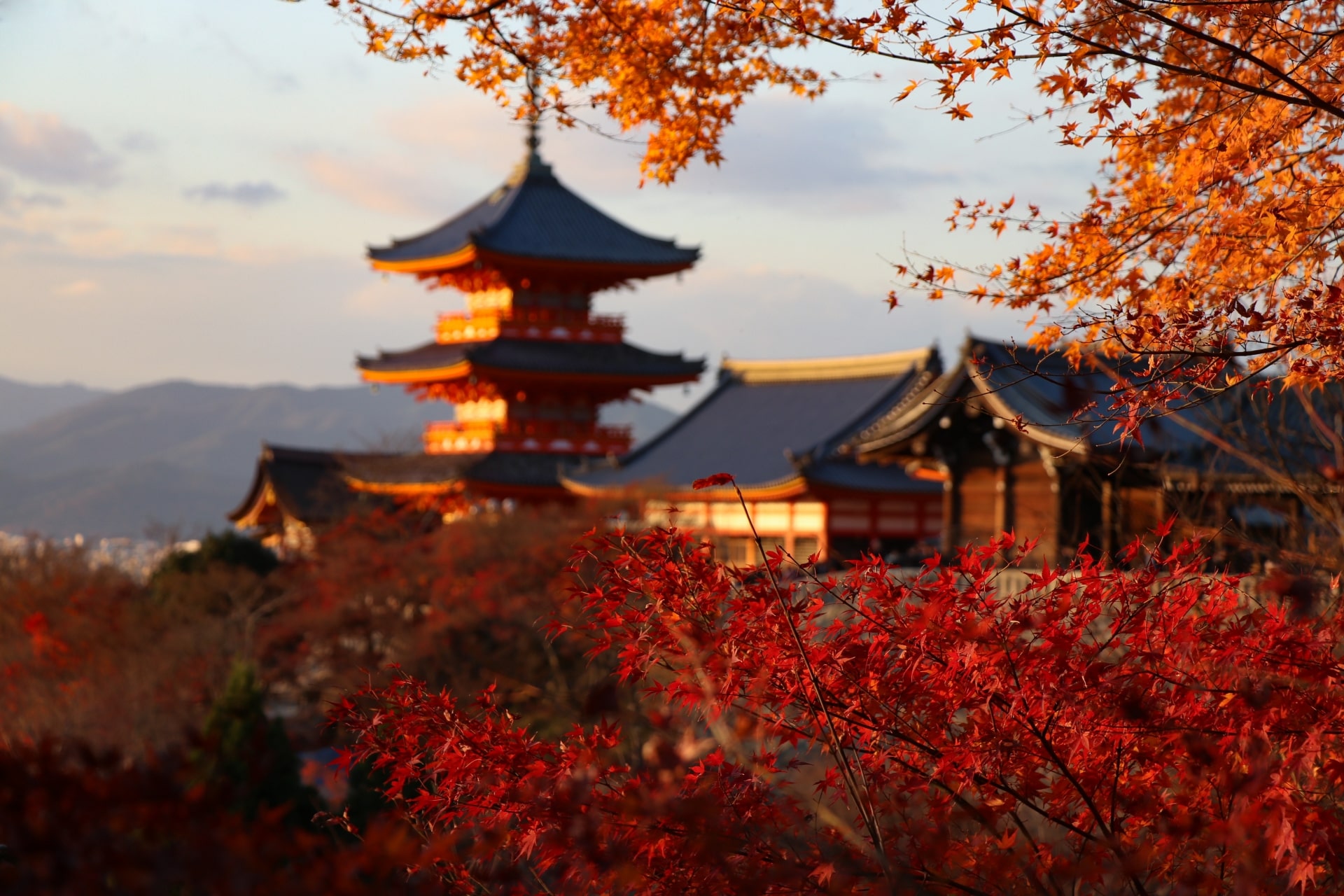
When it comes to tourism, Kyoto is always among the most visited cities, not only in Japan but also in the entire world. Historic locations that are beautifully preserved and are photogenic such as the Fushimi Inari Shrine, Kiyomizudera Temple, and Kinkakuji Temple are always among the top spots in “favorite tourist spot” rankings.
Not only historically important locations but there are also many popular cultural and natural spots that are equally popular. This makes Kyoto a unique city where you can experience the many expressions that Japan can offer to foreign visitors. However, having so many fascinating tourist spots can make it difficult for one to decide where to visit.
In this article, I would like to share with you our countdown list of the 17 best places to visit in Kyoto. In this list, I will introduce to you not only popular spots but also some lesser-known (but equally interesting) spots that you should definitely consider when you come to visit Kyoto. I hope this article becomes a good reference for those planning on spending a few days in this culturally and historically rich city.
*Please note that this article contains affiliate links.
Explore Kyoto with a local guide to learn about its rich history and culture, and discover its hidden charms! Magical Trip provides a wide range of small group tours in popular tourist areas in Kyoto such as Gion, Fushimi Inari and Arashiyama. Food, history, cultural experience, etc, find a perfect guided tour depending on your interests and make your travel in Kyoto unforgettable! Click the link below to find available guided tours in Kyoto for your trip.
▶Book your best tours with local guides in Kyoto!
17. Kyoto Station
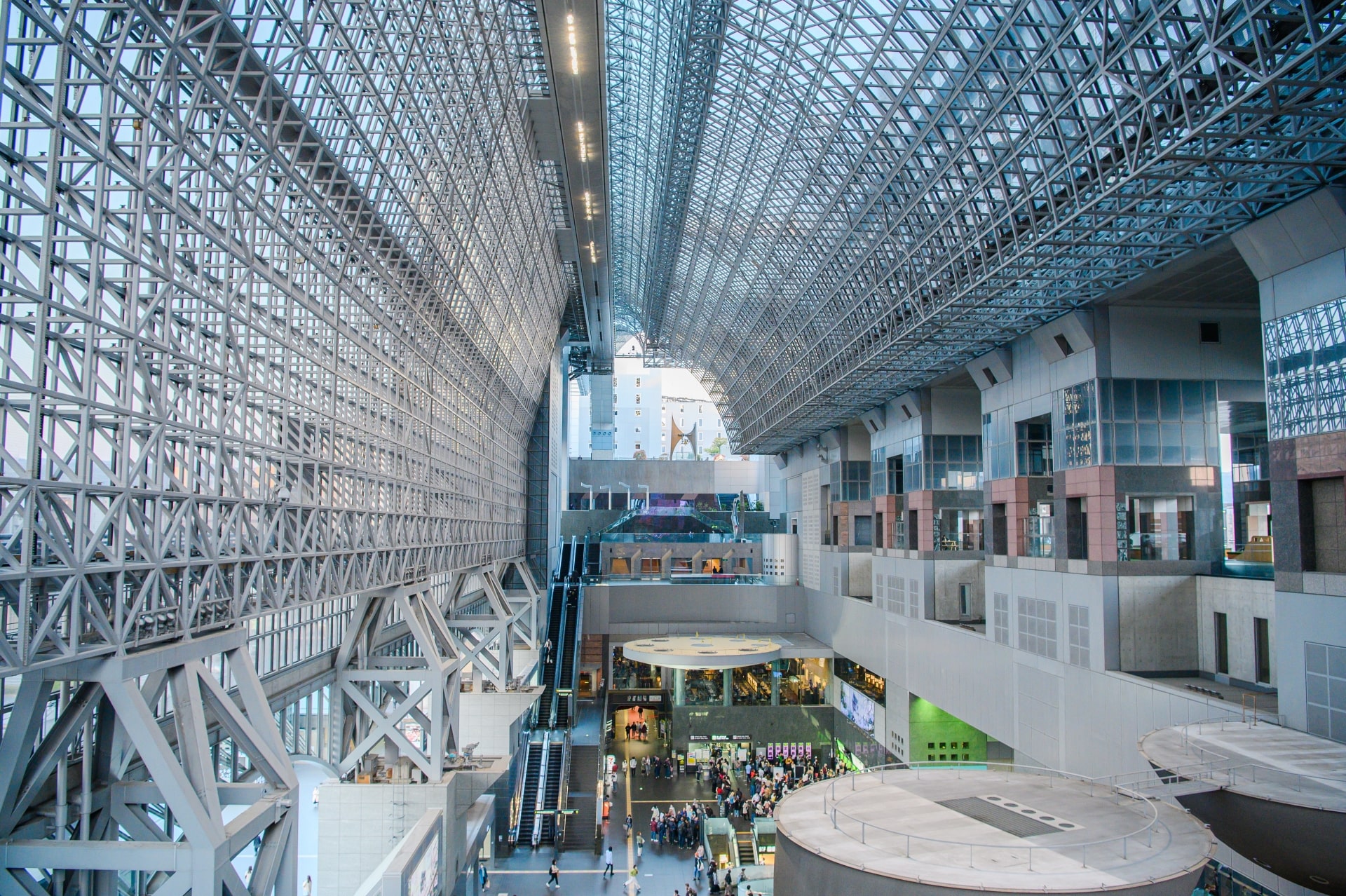
The first place I’d like to recommend is right there in Kyoto Station (京都駅) . Being one of Japan’s largest train stations, Kyoto Station isn’t just a transportation hub; it’s an architectural marvel and a popular destination in itself.
Beyond facilitating travel, it houses a plethora of shops, restaurants, and attractions. The station’s contemporary design contrasts with Kyoto’s historic image, featuring vast glass expanses and a skyway offering panoramic city views. The terraced roof becomes a gathering point for both locals and travelers, especially during evening hours when it’s beautifully illuminated.
Its location, convenience, and vibrant atmosphere make Kyoto Station a favorite hangout spot, providing a mix of modernity amidst the city’s ancient backdrop.
▶ Kyoto Station official website: https://www.kyoto-station-building.co.jp/lp/english/
16. Ine no Funaya
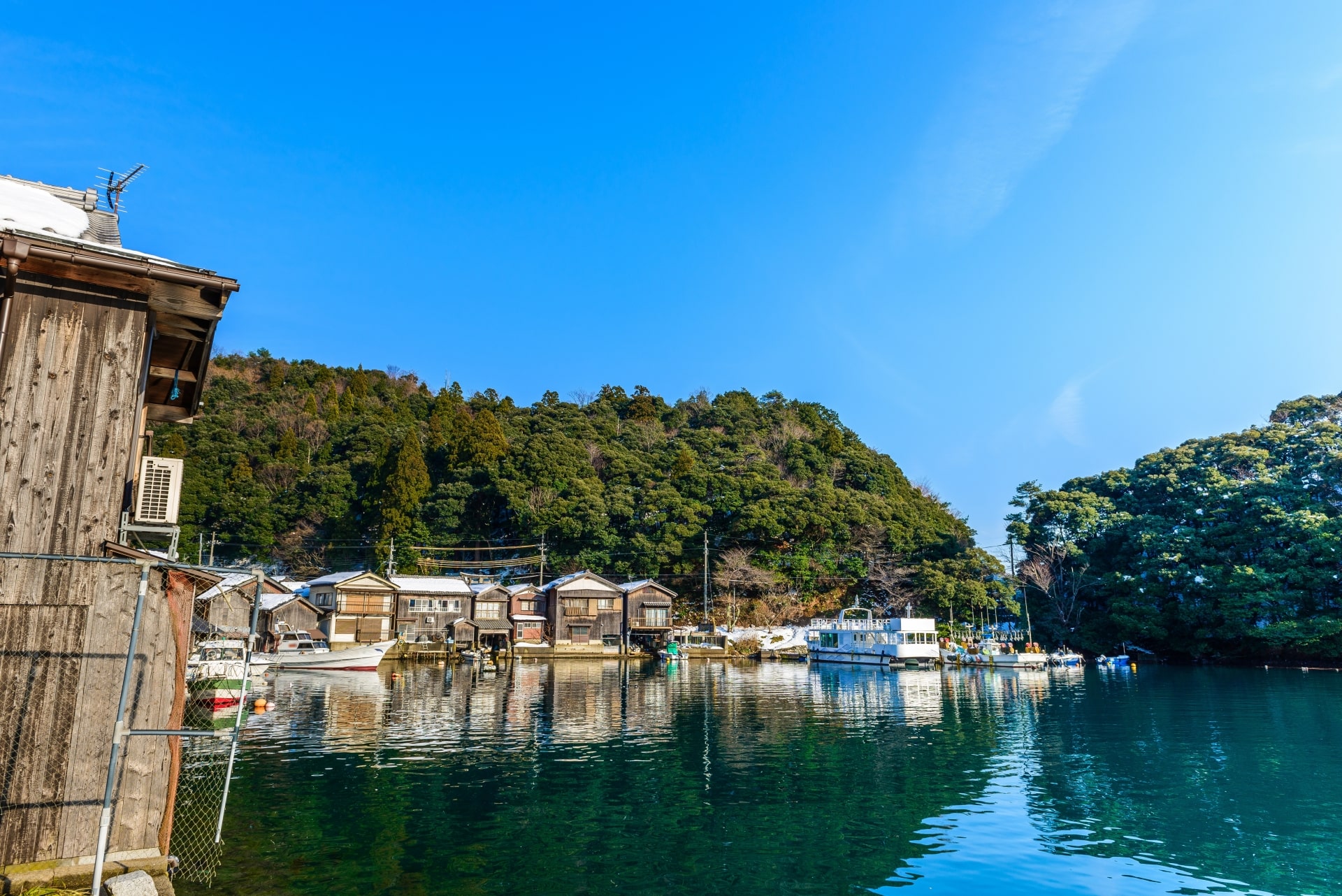
Next on our list is a small town located about 130 km away from Kyoto city. Ine no Funaya (伊根の舟屋) is a small village located in Ine town in the northmost part of Kyoto prefecture. The village stretches approximately 5 km along Ine Bay facing the sea of Japan and you can see a unique scenery with over 200 rustic boathouses floating on the bay.
Visitors can stay overnight at the village since some of these boathouses serve as guest houses. Some of these boathouses even organize boat tours around the village so that you can have a taste of what it is like to live in this fascinating and unique village.
Check out more about Ine no Funaya in the following article!
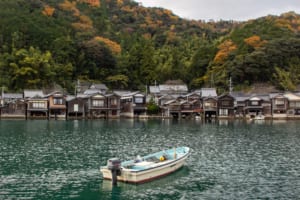
15. Arashiyama Monkey Park Iwatayama
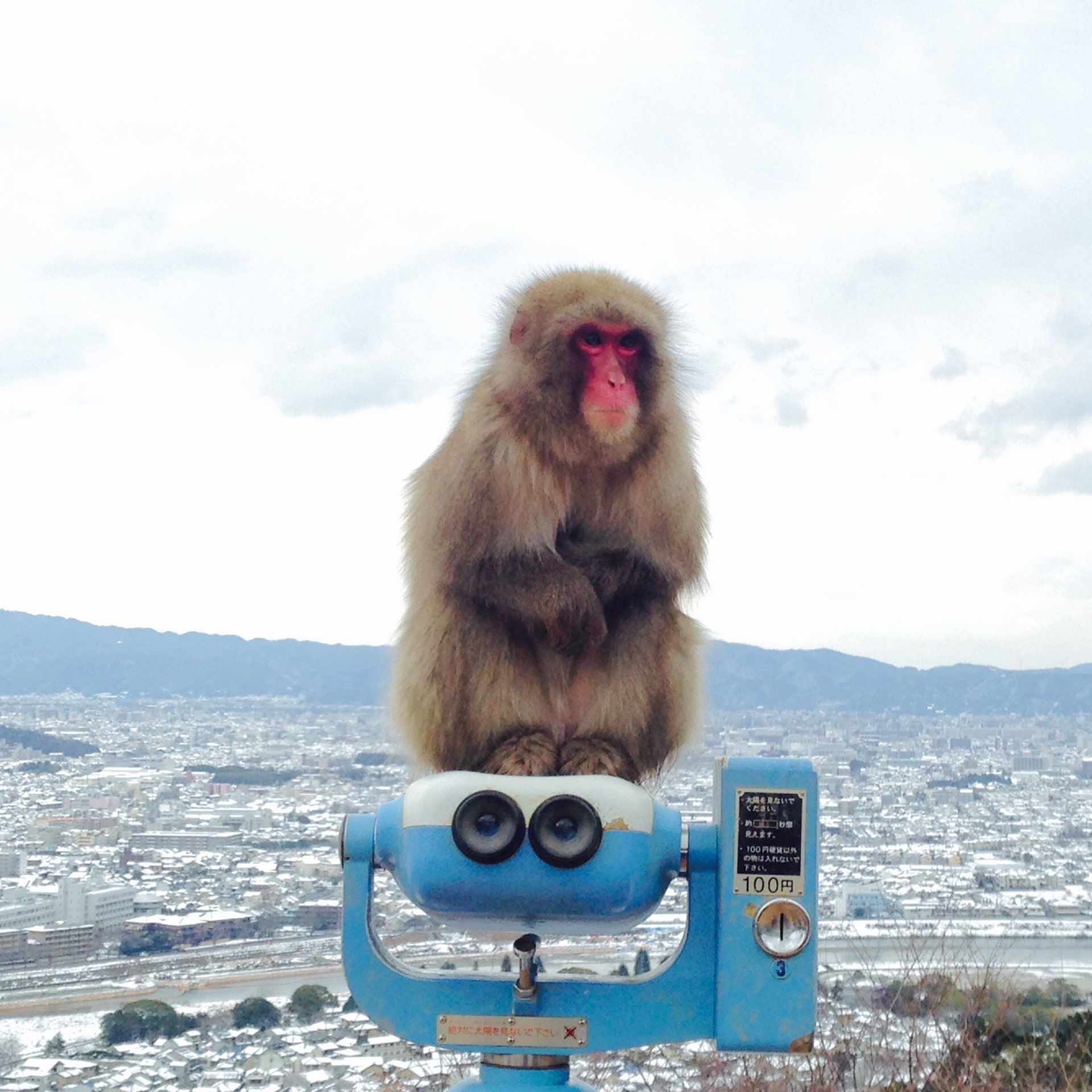
This next place is for those who love animals. Arashiyama Monkey Park Iwatayama (嵐山モンキーパーク) is a place located in Arashiyama mountain, north-west of central Kyoto.
This mountain itself is a popular hiking mountain, and the monkey park is located mid-mountain after hiking uphill for about ten minutes. Not only will over 100 monkeys welcome your visit, but you will also have access to a nice view of the city.
Check out more about Arashiyama Monkey Park Iwatayama from the following article!

14. Kamogawa River
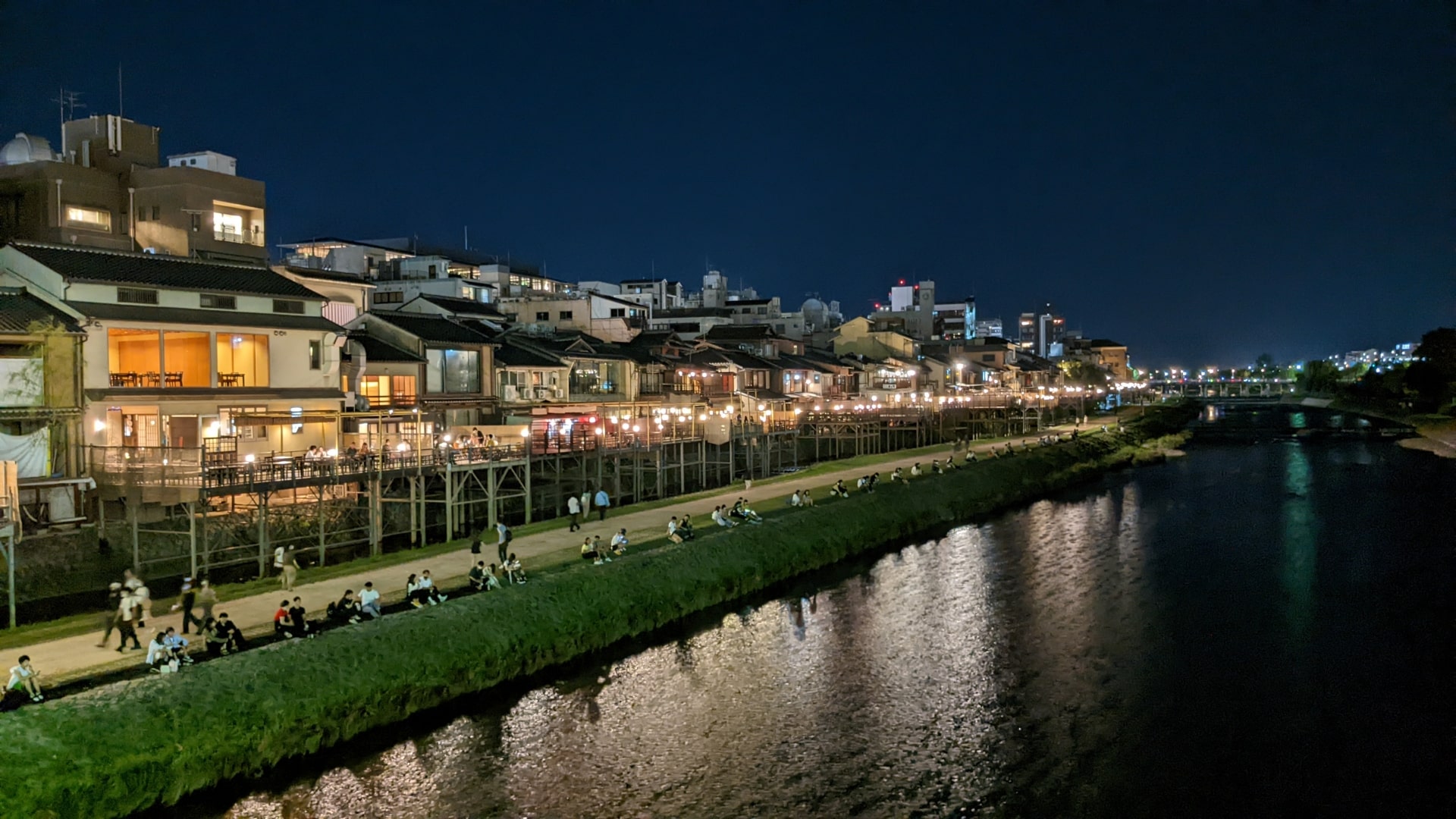
During spring, there are parts of the Kamogawa river that will display incredibly beautiful cherry blossoms. And during summer, many restaurants that face the river will open and enlarge the terrace areas where you can dine and drink while enjoying the river views.
Check out more about Kamogawa River from the following article!
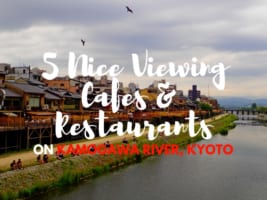
13. Rurikoin Temple
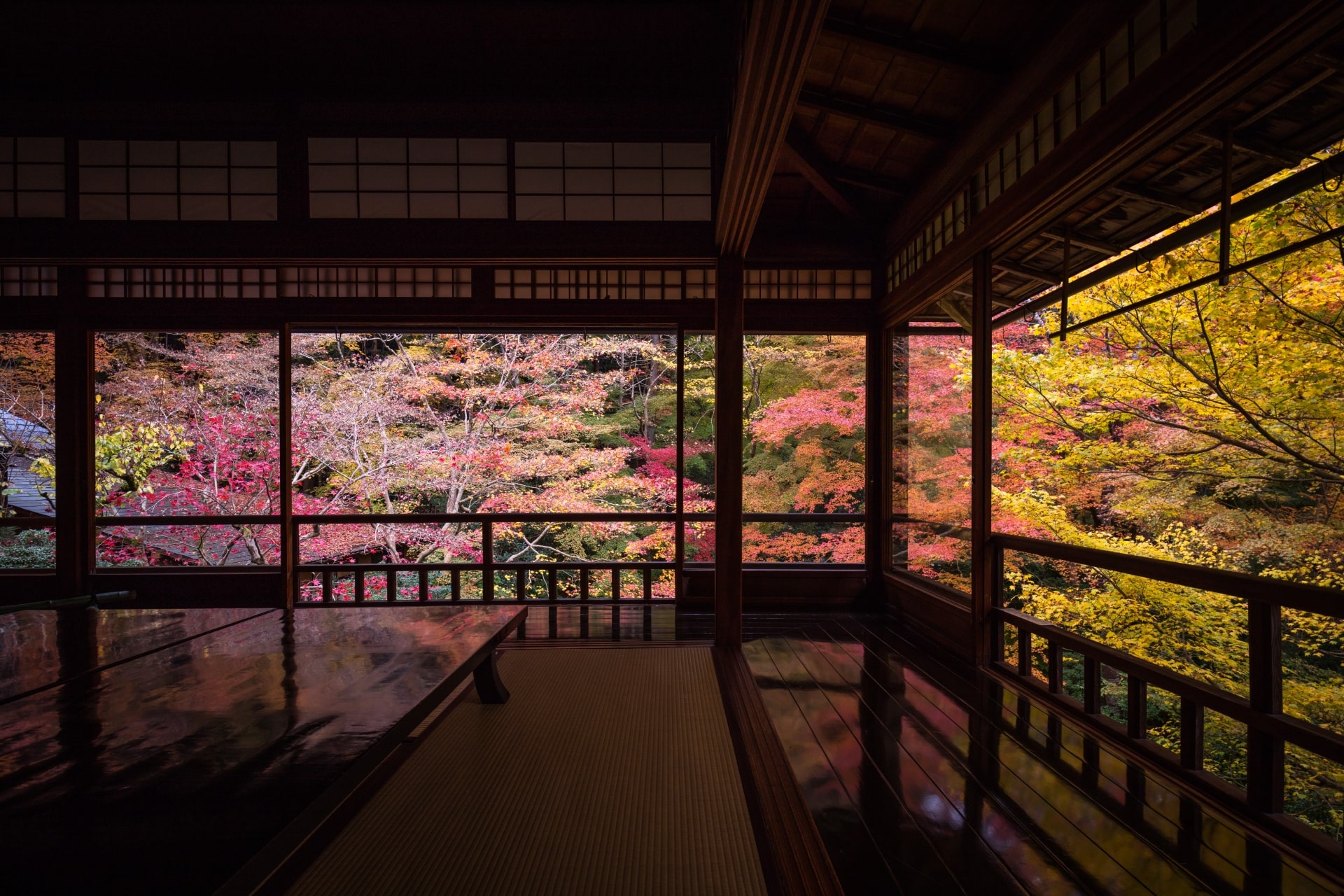
Now that you know where to visit during spring and summer, the next place on this list is best visited during autumn. Rurikoin Temple (瑠璃光院) is a beautiful and peaceful temple located in northern Kyoto near Mt Hiei.
The large temple complex is surrounded by beautiful nature and it is open to the public only twice a year; in spring and autumn. The expression that nature shows in this place change dramatically depending on which season you visit, making it a “must-visit” location in Kyoto. You’ll want to visit this place multiple times after your first visit.
Check out more about Rurikoin Temple in the following article!
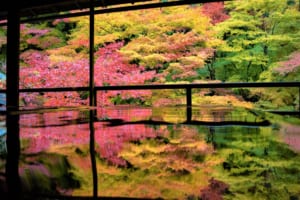
12. Kyoto Imperial Palace
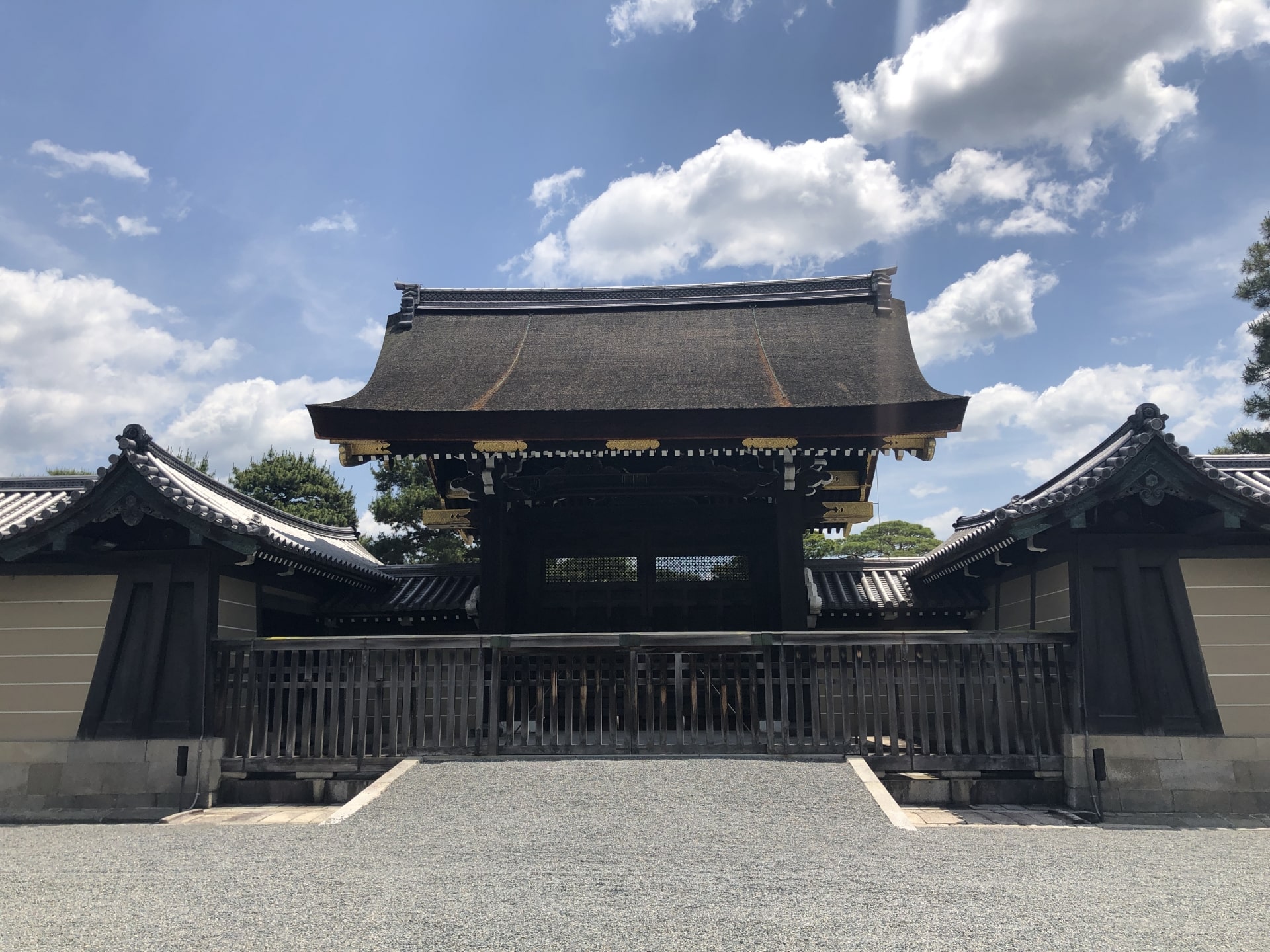
Nowadays you can visit this place free of charge, almost any time of the year. You can see for yourself where the Japanese emperor used to live and held official ceremonies. Many of the buildings here are valuable not only because of their historic value but also because of the unique architectural techniques used to build them.
▶ Kyoto Imperial Palace official website: https://sankan.kunaicho.go.jp/english/index.html
11. Ninenzaka and Sannenzaka

Both these slopes were created at the beginning of the 9th century and their scenery has been beautifully preserved. You can find many shops, restaurants, and cafes on your way heading to Kiyomizudera Temple. It is definitely one of the most photogenic streets in the country.
Check out more about Ninenzaka and Sannenzaka in the following article!
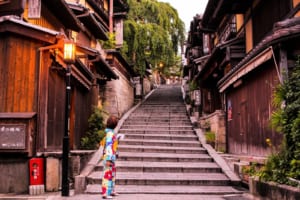
10. Kyoto Tower
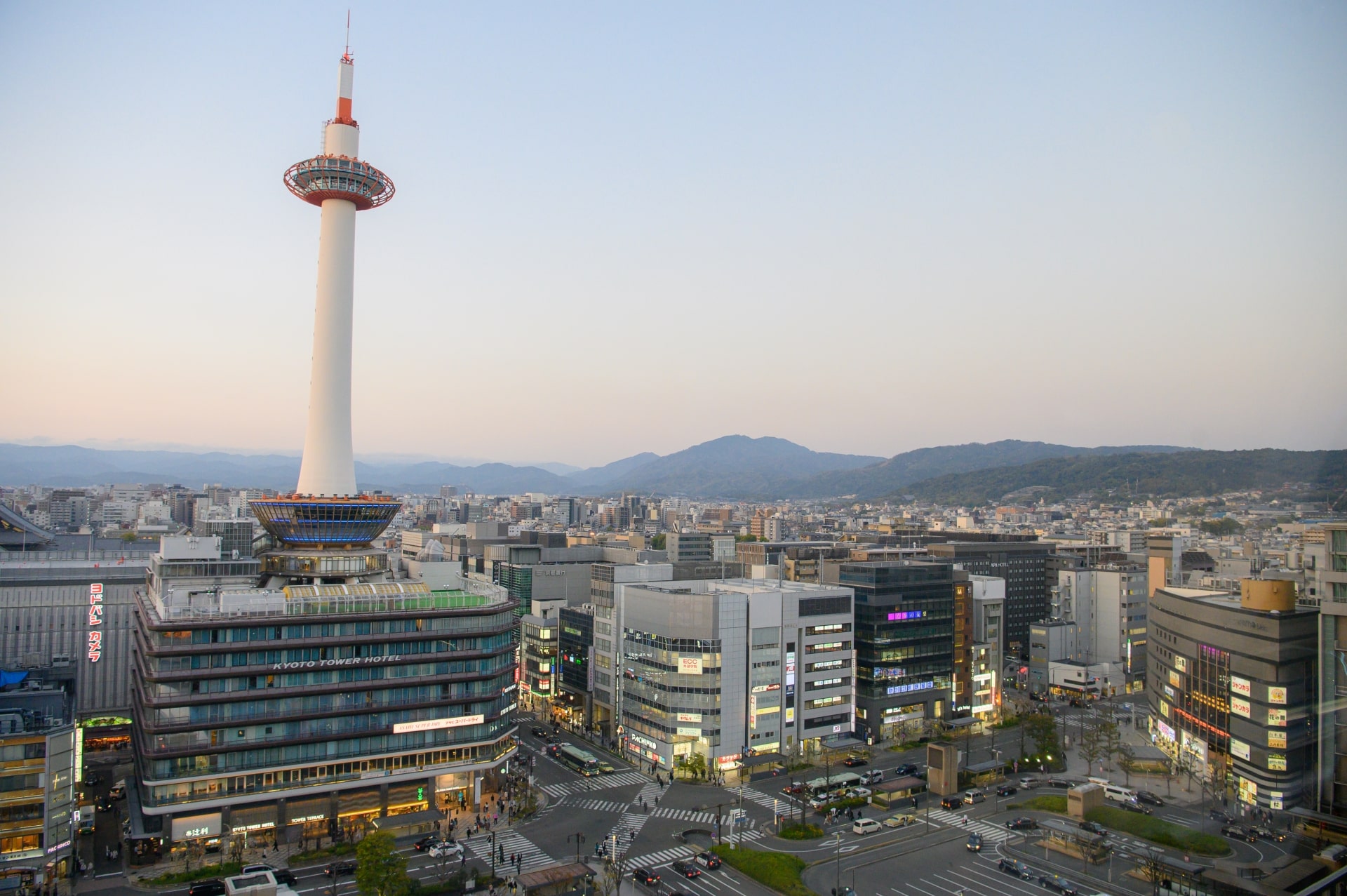
Contrasting the traditional temples and shrines, this modern beacon is a symbol of Kyoto’s blend of the old with the new. Located just opposite Kyoto Station, it’s a popular spot for travelers to get their bearings with its observation deck.
Beneath the tower is Kyoto Tower Sando , a vibrant commercial facility boasting an array of shops, restaurants, and cultural experiences. Its central location and the blend of shopping, dining, and breathtaking views make Kyoto Tower a favored hangout for both locals and visitors.
▶ Kyoto Tower official website: https://www.kyoto-tower.jp/en/
▶ Kyoto Tower Sando official website: https://www.kyoto-tower-sando.jp/
9. Nijo Castle
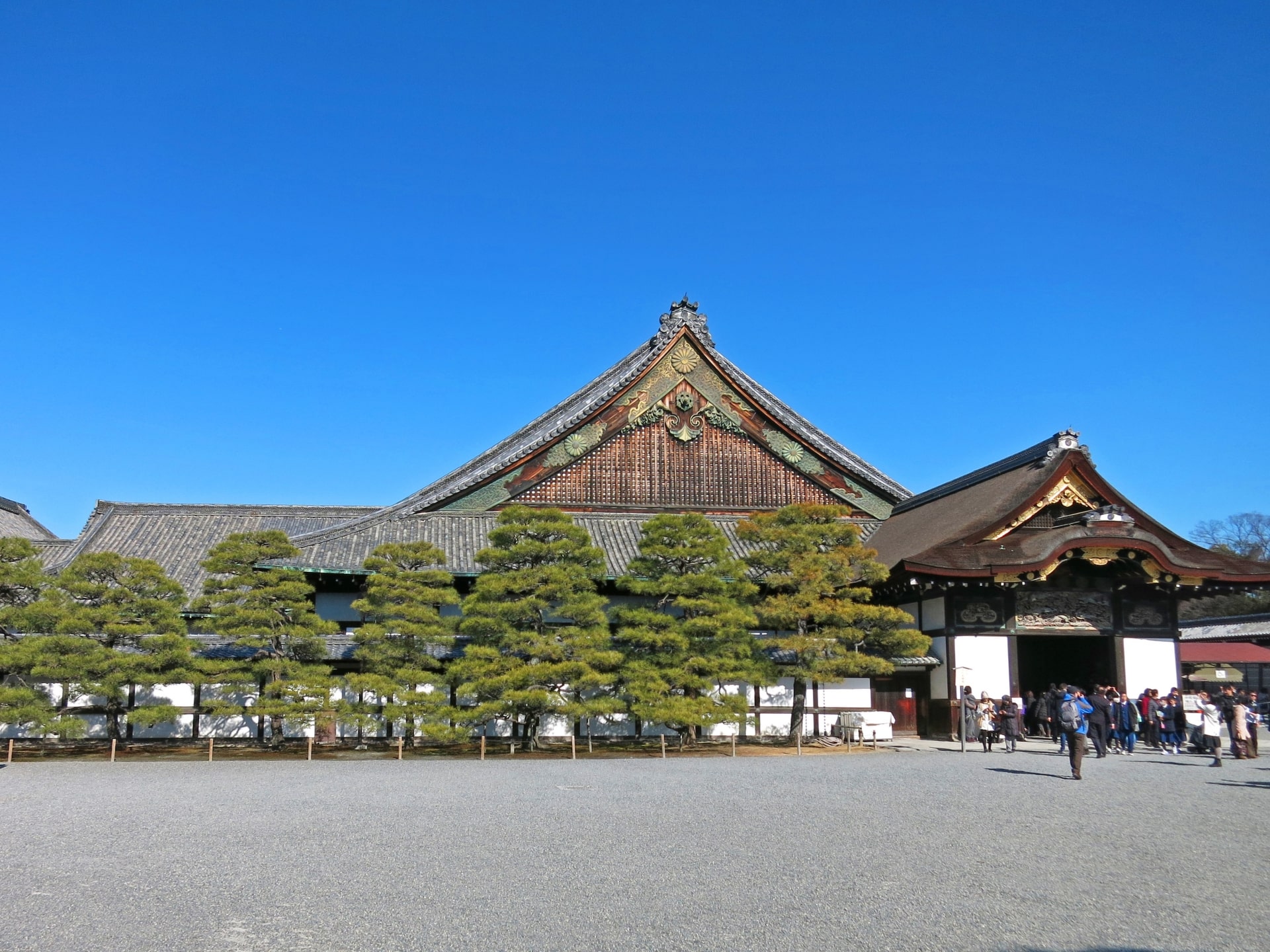
This is a place where several historically important things happened such as the Taiseihoukan (Restoration of Imperial Rule). Even if you’re not a history enthusiast, you can also enjoy the beautiful Japanese garden as well as the unique architectural structures within the vicinity.
▶ Nijo Castle official website: https://nijo-jocastle.city.kyoto.lg.jp/?lang=en
8. Arashiyama Bamboo Grove
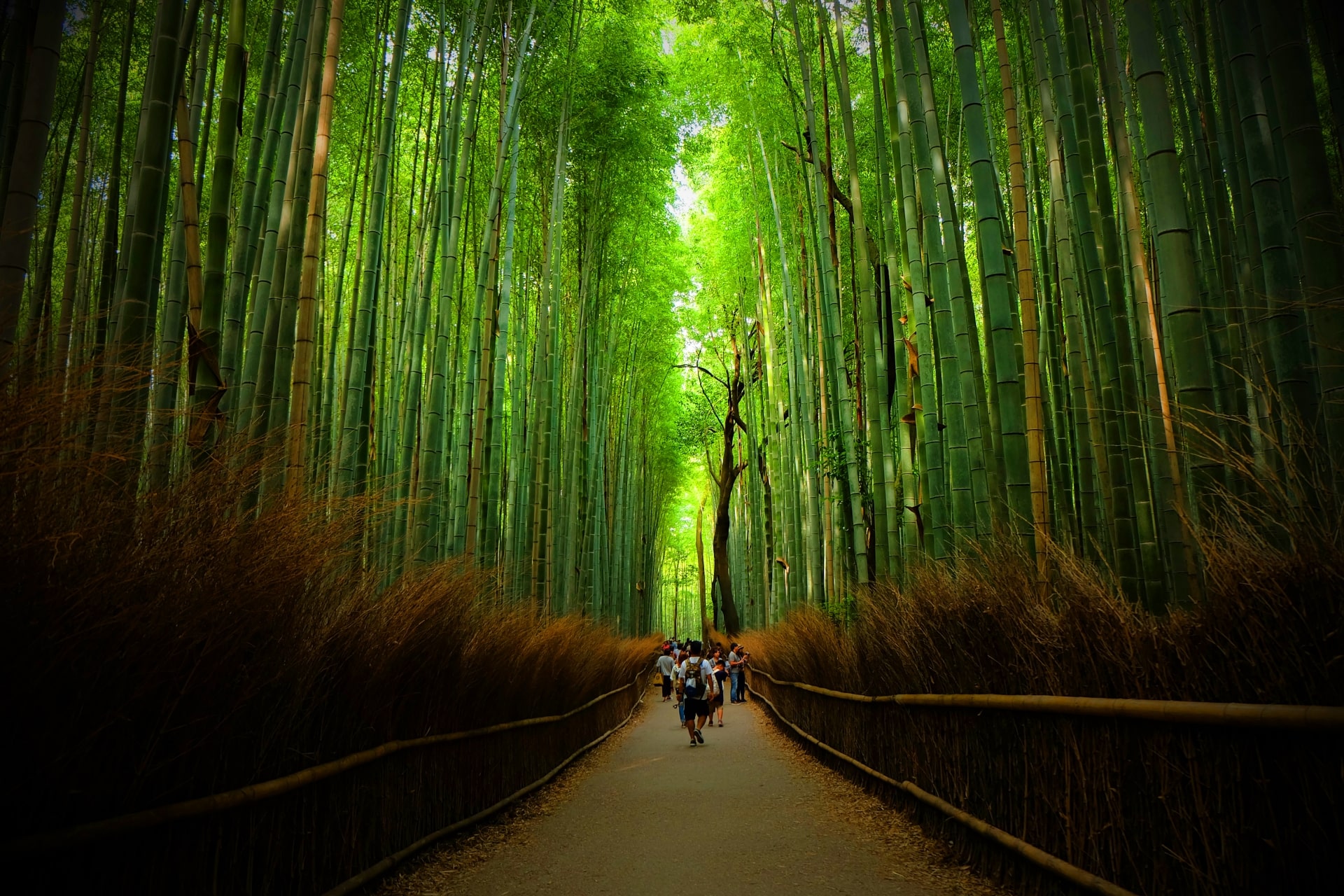
Next on this list is one of the most recognizable spots in all Kyoto. Arashiyama Bamboo Grove (嵐山竹林) is a path located in the Arashiyama-Sagano area, the beautiful outskirt of Kyoto city. It is right between Tenryuji Temple and Okouchi Sanso Garden, both of which are also popular tourist attractions.
The of the bamboo in this forest is somewhere between 5 to 10 m high, though some of them can reach up to 20 m in height. The grove has approx 200 m long walking paths cutting through the refreshing forest where visitors can enjoy a pleasant walk while listening to the sound of the wing running through the bamboo leaves.
Check out more about Arashiyama Bamboo Grove from the following article!

7. Kyoto Gion
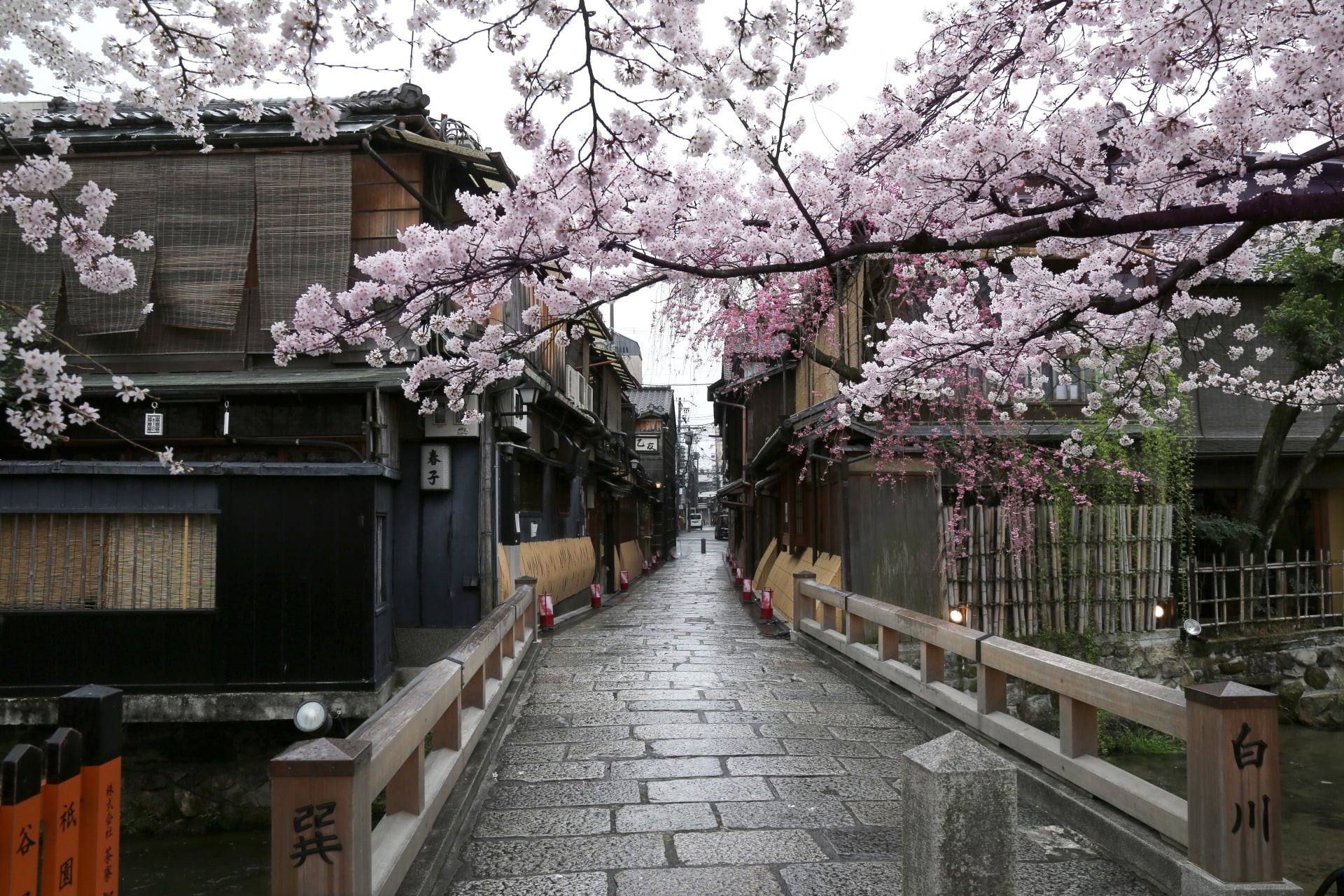
It is a very popular area for tourists, mostly because here, you can experience pretty much everything that a tourist expects when coming to Kyoto. There’s the Shinto Shrine, the Kamogawa river with the sakura trees, the old Japanese street atmosphere, and most of all, being able to see a real-life Geisha.
Check out more about Gion in the following article!
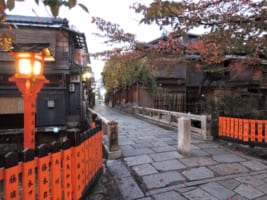
6. Sanjusangendo Temple
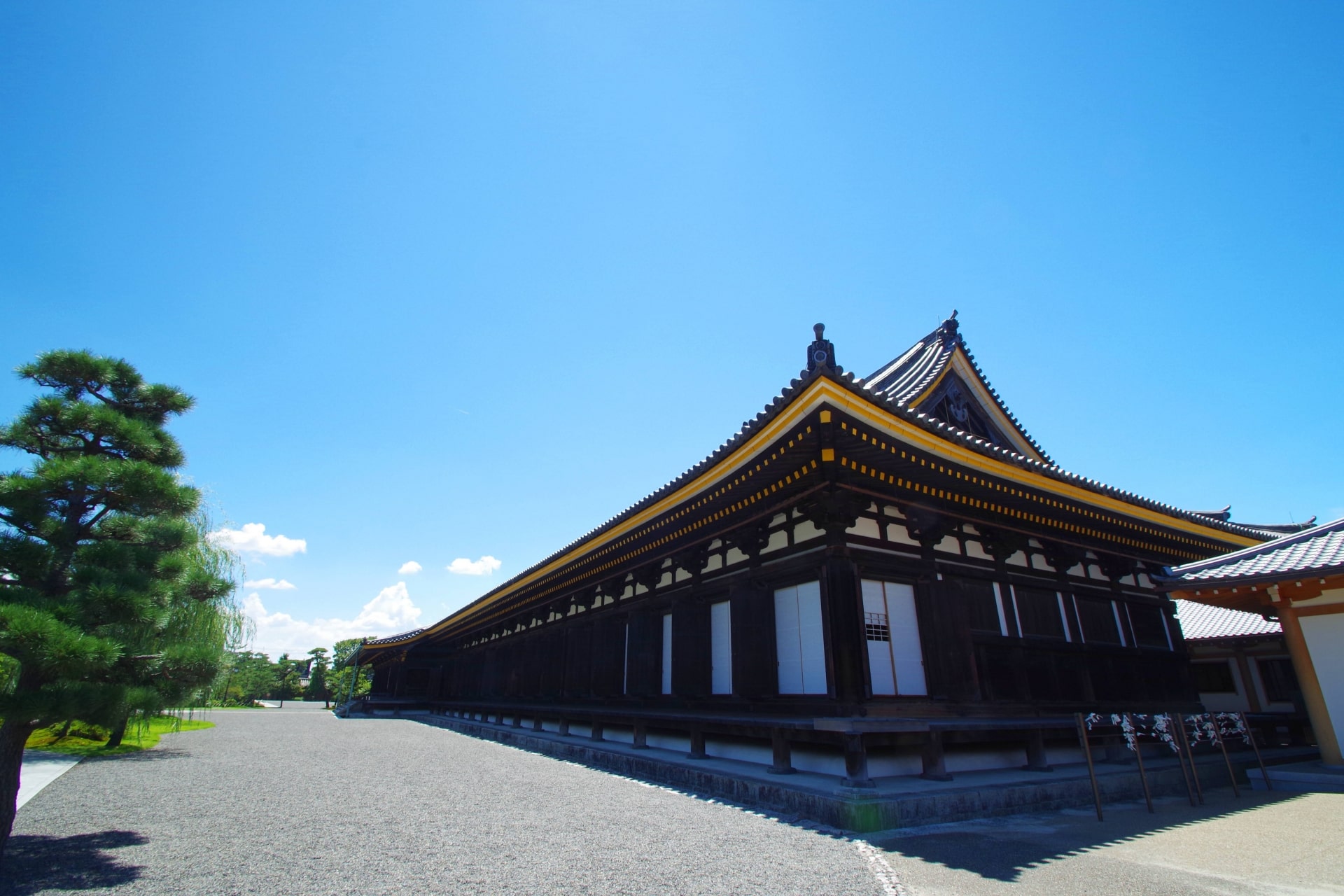
Access is really convenient since it is located just 10 minutes by bus from Kyoto station, or 15 minutes by foot.
Check out more about Sanjusangendo Temple in the following article!
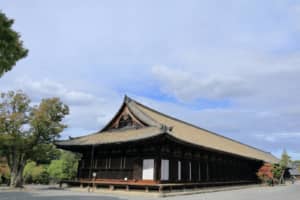
5. Nintendo KYOTO
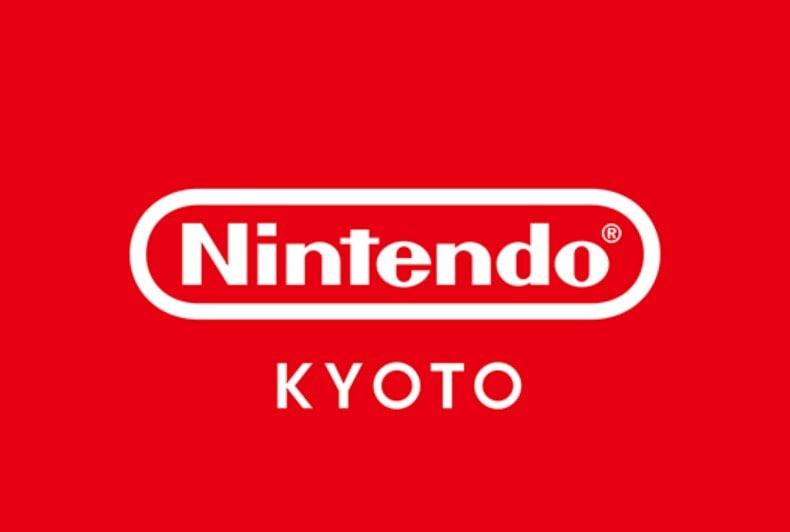
Nintendo is set to launch Nintendo KYOTO on October 17, 2023, marking its third official store in Japan after Nintendo TOKYO and Nintendo OSAKA.
Located in the new “T8” specialty zone of Kyoto Takashimaya S.C., this store reinforces Nintendo’s presence in major Japanese cities. These outlets are more than just retail spaces; they’re experiential hubs where visitors can buy gaming products and partake in events, offering a comprehensive Nintendo experience.
In essence, Nintendo KYOTO exemplifies the brand’s commitment to blending commerce with immersive gaming encounters.
4. Kiyomizudera Temple
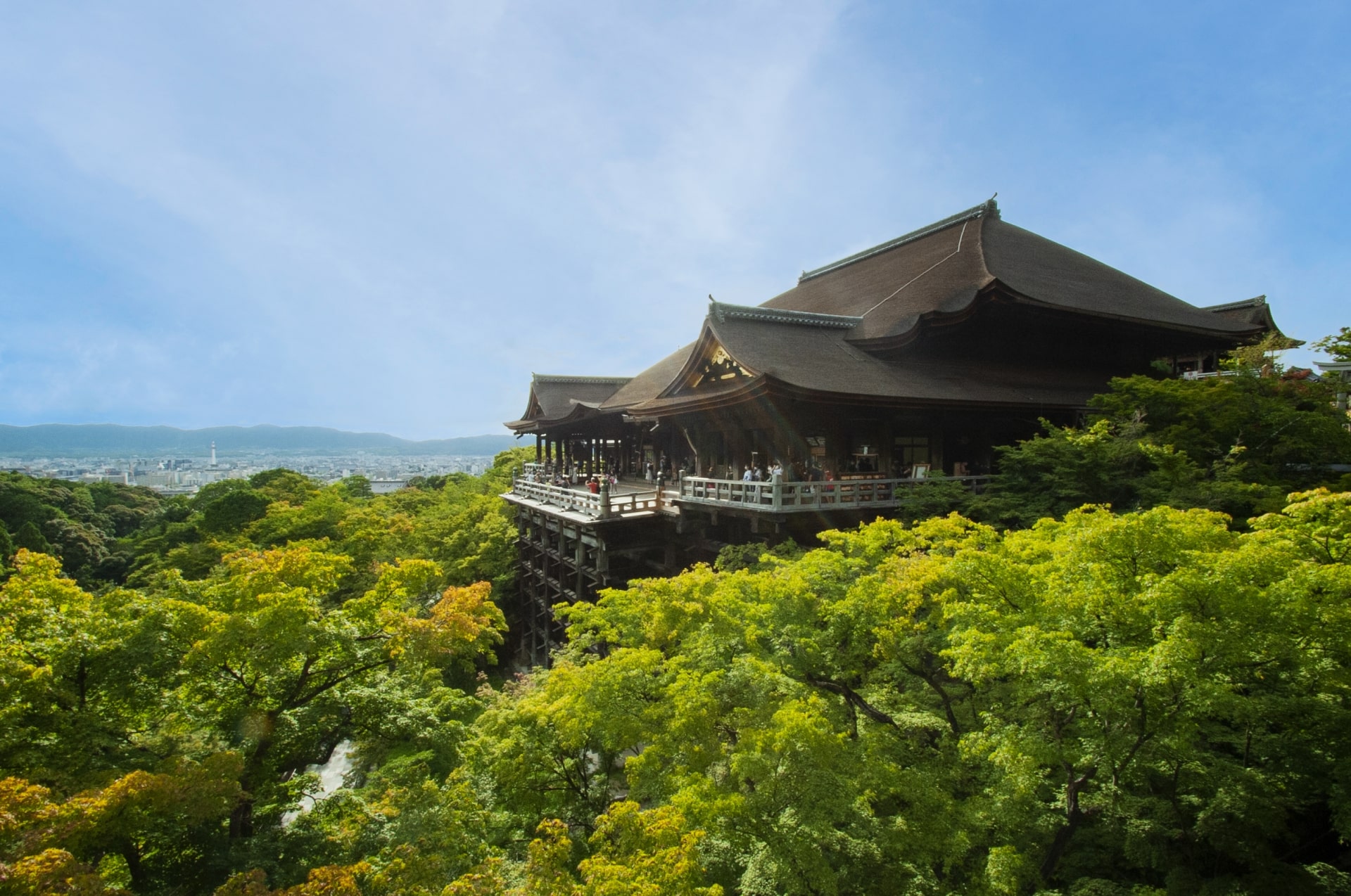
One of the attractive points about this temple is the surrounding trees that change expression depending on the season go choose to visit. Not only will you see a difference between seasons, but also, you can visit here during the nighttime when the temple is illuminated.
Check out more about Kiyomizudera Temple in the following article!
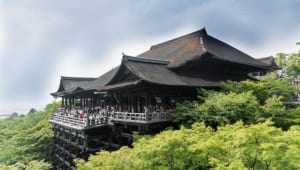
3. Yasaka Pagoda
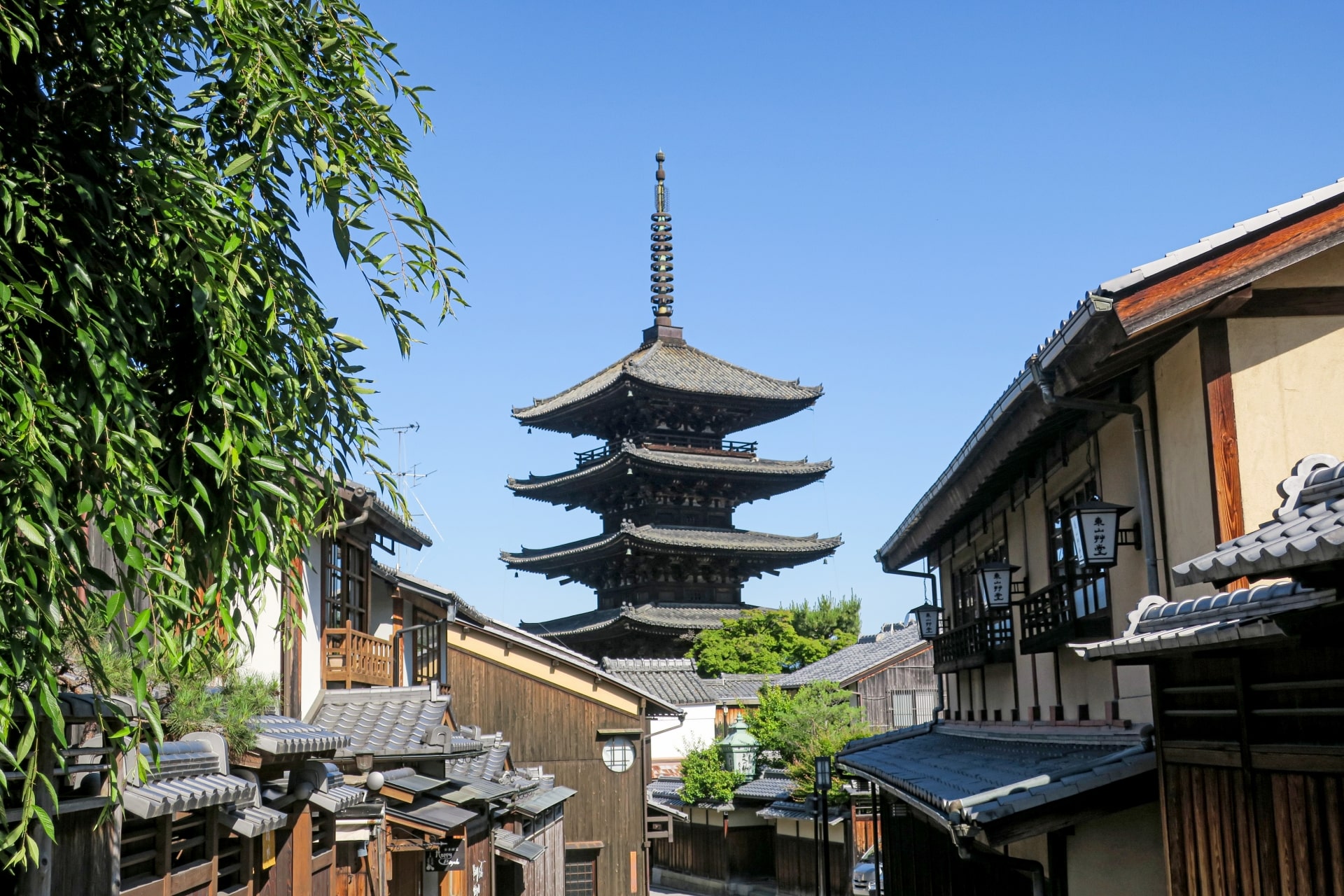
Located in the vicinity of the previously mentioned Kiyomizudera Temple, is the Yasaka Pagoda (八坂の塔) . This pagoda is so famous, that many people actually relate it to the image of Kyoto’s scenery.
This pagoda is part of Hokanji Temple (法観寺) and was built in the late 6th century. Visitors can enter the pagoda up to the 2nd floor. Similarly to Kiyomizudera Temple, this is another place you’ll want to visit twice (once during the daytime and once again during the nighttime). The illuminated tower at night along with the traditional Japanese scenery of the streets make the perfect photo spot.
Check out more about Yasaka Pagoda from the following article!
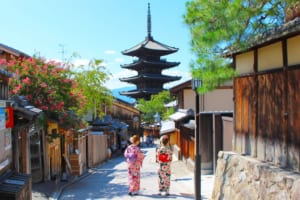
2. Fushimi Inari Shrine
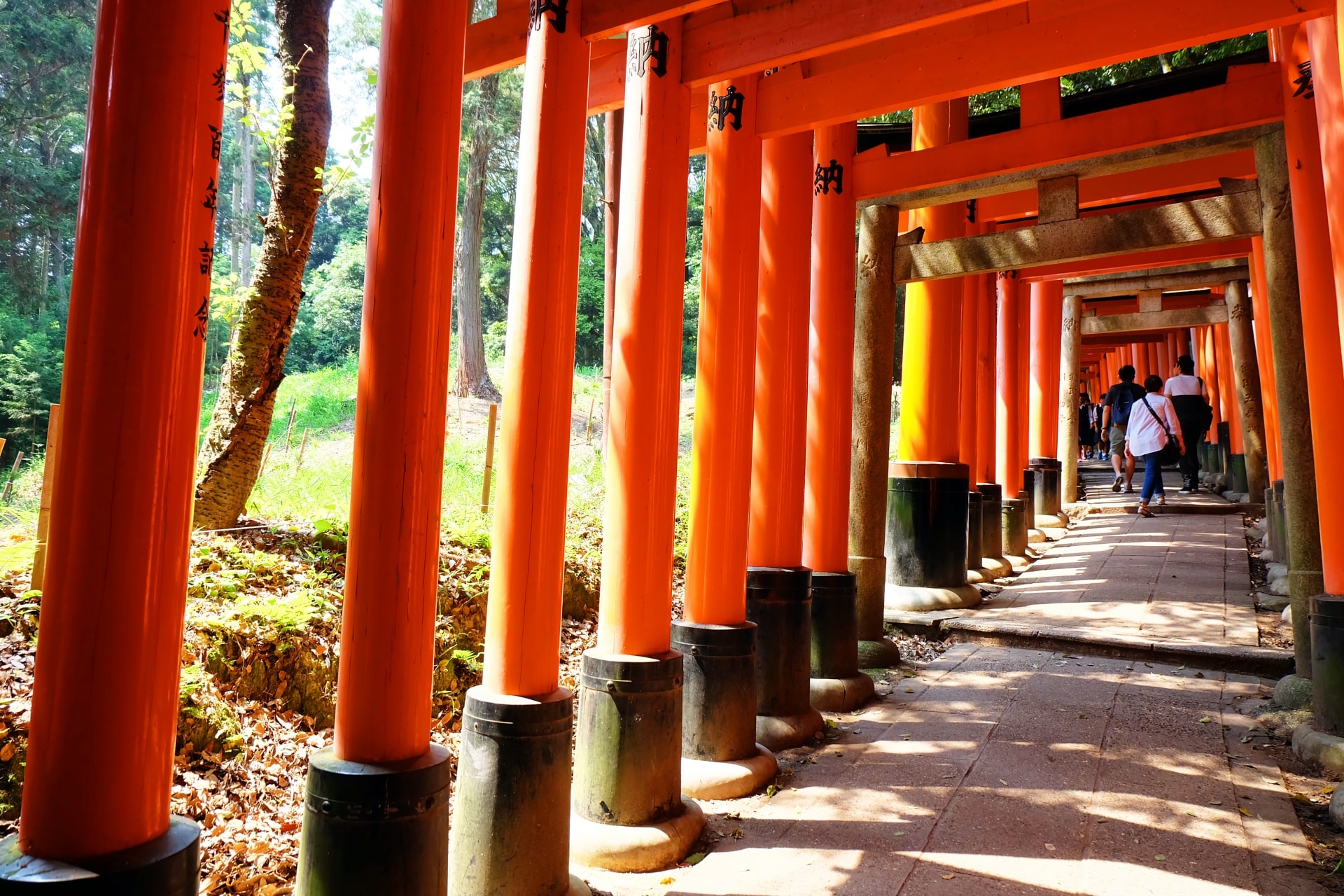
The shrine is famous for the Senbon Torii which is formed with over 5,000 red torii gates, creating a tunnel of Torii gates. It became popular due to the appearance of this place in movies and TV.
Check out more about Osaka Expo Park from the following article!
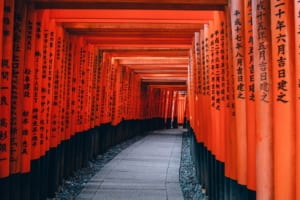
1. Kinkakuji Temple
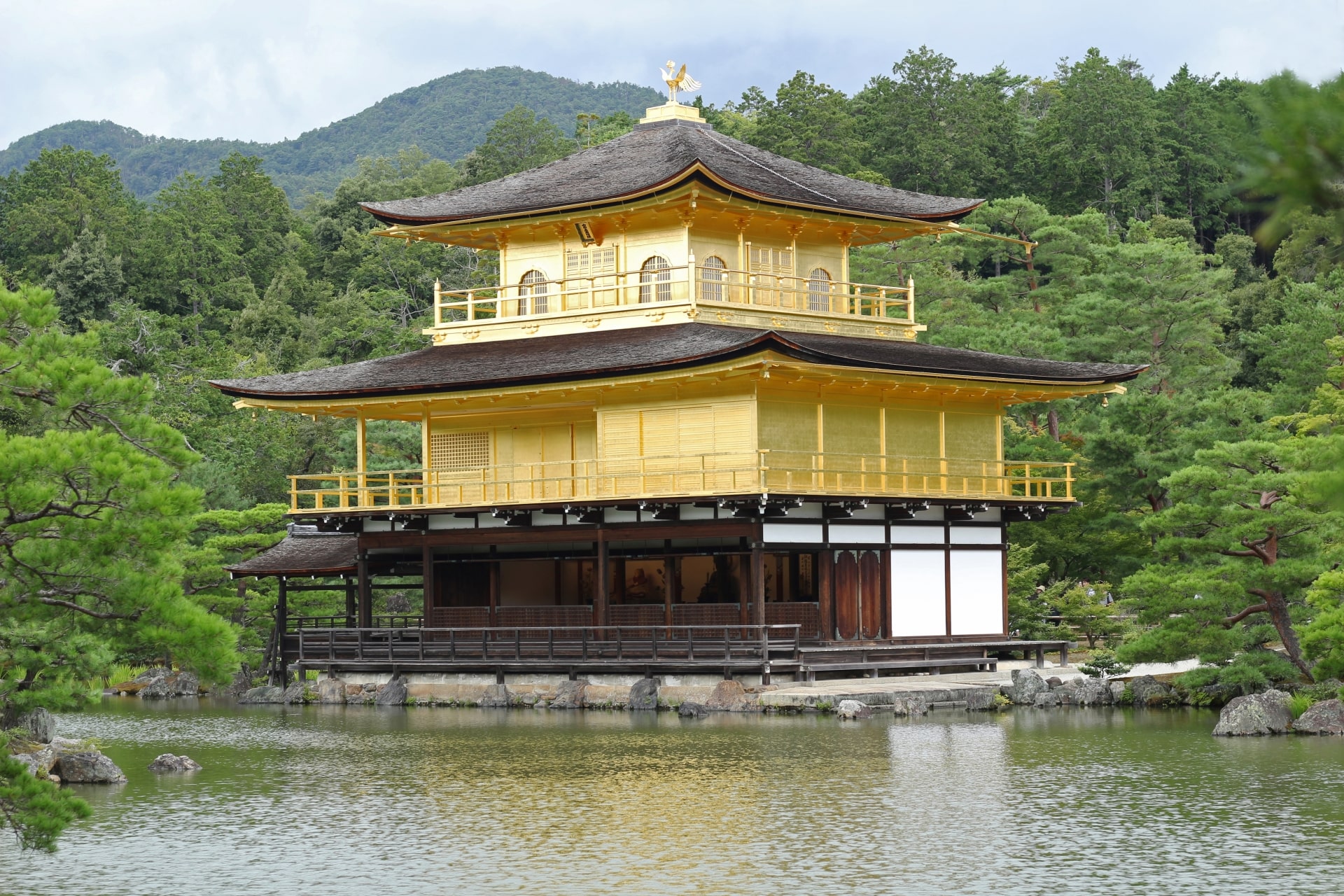
And lastly, on our countdown list of the best places to visit in Kyoto is Kinkakuji Temple (金閣寺) . Along with the previously mentioned Fushimi Inari Shrine, this Buddhist Temple is another highly popular tourist spot for foreign visitors. It is located north-west of central Kyoto and it is one of 17 locations of the Historic Monuments of Ancient Kyoto which are designated as World Heritage Sites.
The completely golden exterior is so impressive and you can enjoy the contrast with the surrounding nature that changes colors depending on the season you come to visit.
Check out more about Kinkakuji Temple from the following article!
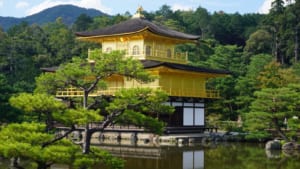
▽Check out the best places to visit in other popular areas in Japan!▽

So, what did you think about this article? I hope it helped give you some new ideas for places to visit when you go to Kyoto. If you enjoyed this article and want to read more about Kyoto, check out our other pieces from the links below.
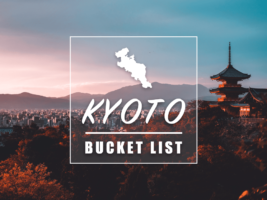
▽Related Articles ▽
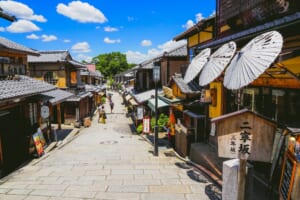
▼Editors’ Picks▼

Born and raised in Costa Rica, I started living in Tokyo from college. I love traveling within Japan & around the world. Since I wasn’t born in Japan, I know the cultural impact that you can get when visiting Japan for the first time and what you might be worried about before your trip. And I’ve lived long enough to somewhat understand the nuances of the Japanese culture that make this country such an attractive place to visit. Hopefully I can provide to you both the information you’re looking for and the information you didn’t know you needed to know.
- Things to Do

Places to Visit in Kyoto – My Favorite City in Japan
Written By: Chris Kane
Updated On: February 19, 2024

Kyoto is the 7 th most populated city in Japan, though to most people, it is their favorite place to visit.
This is because Kyoto still has all the conveniences you get in a larger city yet possesses a vast array of historical and cultural entities that are quintessentially Japanese.
Kyoto is my favorite Japanese city and this itinerary highlights all of the best places to visit in Kyoto to make the most of your stay.
Table of Contents
Kyoto Itinerary
- Day 1 – Nijo Castle, Kinkaku-Ji and Ginkaku-Ji, Philosopher’s Path, Nishiki Market
- Day 2 – Bamboo Forest, Fushimi-Inari Taisha Shrine’s famous Tori Gates
- Day 3 – Kyoto Day Trip Ideas: Himeji castle, Osaka, Nara Park
- Other Kyoto Ideas – Tea Ceremony, Manga Museum, Imperial Palace
Getting Around Kyoto
Wondering where the where to stay in Kyoto? I feel that the best area to stay in Kyoto is the Gion District .
Here you will find shops, traditional Japanese teahouses, stores, restaurants, temples, architecture, history, and culture.
It has everything you want to see and makes for a great base for Kyoto sightseeing.
The Gion District can be quite busy during midday so try to take an early morning or later evening stroll before it gets crowded.
We (Dave and Deb) suggest booking a Ryokan in Kyoto.
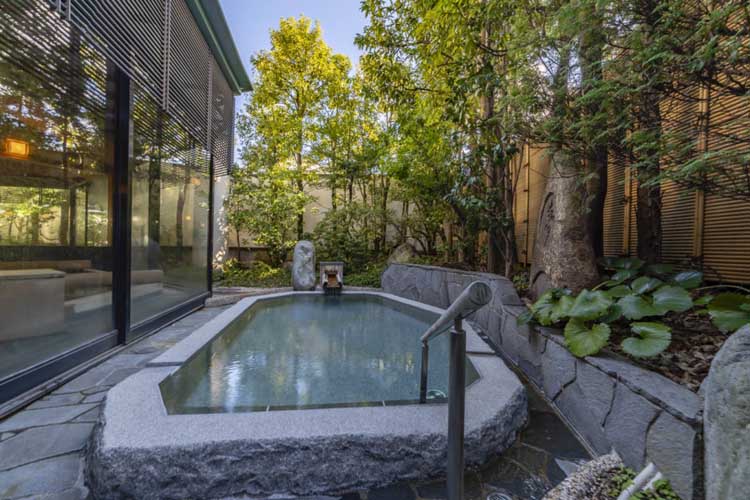
A Ryokan is a traditional Japanese Inn usually attached to hot springs. Here you’ll stay in tatami rooms with yukatas (summer kimonos) supplied for dining and leisure activities.
Search for Ryokans in Gion on TripAdvisor
Check out TripAdvisor or Booking.com for more Kyoto Hotels and reviews in the Gion District.
Kyoto Attractions Map
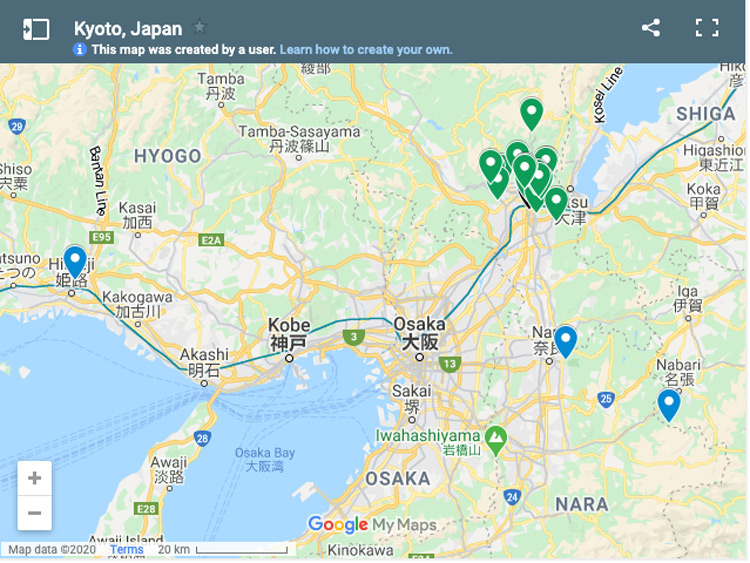
- Click here or on the map for an interactive version of all the places to visit in Kyoto
Day 1 in Kyoto
To get you charged up and ready to explore Kyoto, look no further than Coffee House BAU .
It’s located just north of Nijo Castle and is run by an older Japanese gentleman who seems to have a PhD in the art of making coffee.
All joking aside, he carefully and methodically made me a wonderful brew which I enjoyed in the confines of his shop before starting off on my day. You can tell he was so dedicated to his craft and it showed in the taste.
Nijo Castle
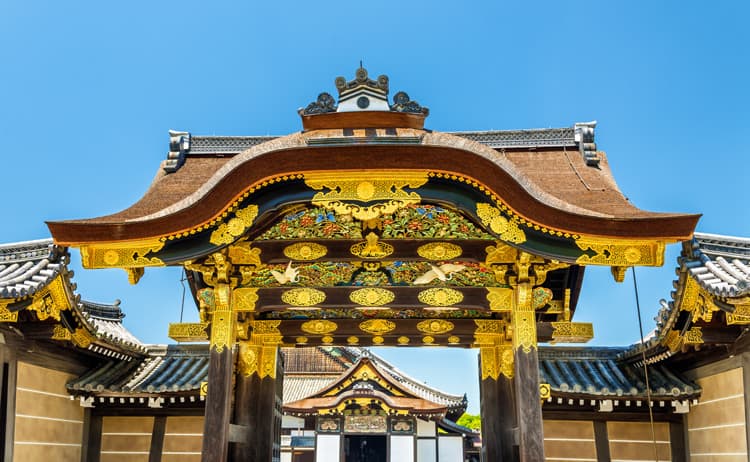
With Nijo Castle right around the corner, you can take in the architecture and surrounding gardens while the caffeine begins to take its effect.
The castle has the designation as a “Historic Monument of Ancient Kyoto” and is used as a venue for state-sponsored events for official visitors.
Official guest or not, you can venture around and see the various fortifications, gates, and towers in addition to Ninomaru Palace .
When taking the time to view Kyoto’s temples, always try to go early in the mornings.
These are immensely popular sights that are best enjoyed at first light with few people around.
Kinkaku-Ji – The Golden Pavilion
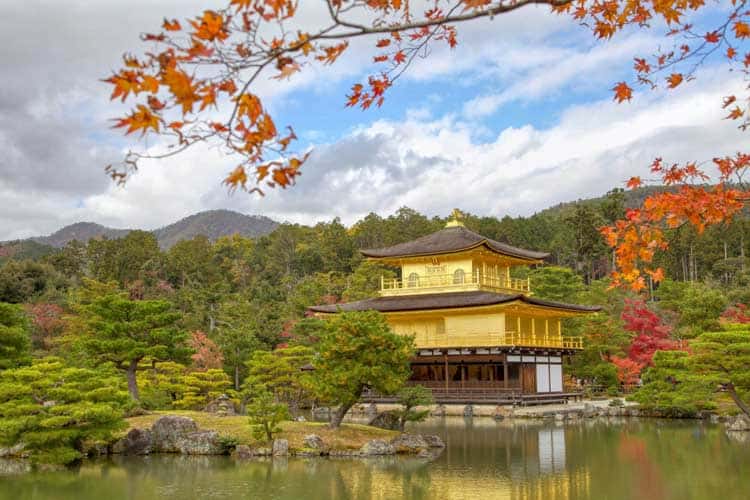
The Golden and Silver Pavilions, better known as Kinkaku-Ji and Ginkaku-Ji , respectfully, are situated across the city from one another, so it is best see them on two different days.
- Fun fact: These two temples are two of Kyotos 17 UNESCO World Heritage-listed temples and shrines.
Since you are on this side of the city at the Ninomaru Palace, I suggest starting with Kinkaku-Ji.
Kinkaku-Ji is covered in gold leaf, hence the name the golden pavilion.
The temple grounds boast exceptionally well-manicured gardens that emphasize the zen-like atmosphere.
Ginkaku-Ji – The Silver Pavilion
You can either move on to GinkakuJi temple across town or save it for day 2, but while I am talking about it, here is some information.
It was modeled after the Ginkakuji temple but it was never plated in silver. Instead, there is a long silver cone within its garden and its walls remain unpainted.
Ginkaku-Ji is a Zen temple that is very scenic and possesses a traditional Japanese sand garden.
Philosopher’s Path
Don’t miss the Philosopher’s Path .
About two kilometers in length and starting from Ginkaku-Ji, it is a stone walkway following the canal that is lined with cherry trees.
This was named after a famous Japanese philosopher who would walk this path and practice meditation on the way to Kyoto University.
The path is a top draw for visitors flocking to see the famous Kyoto Cherry Blossoms in April.
Nishiki Market
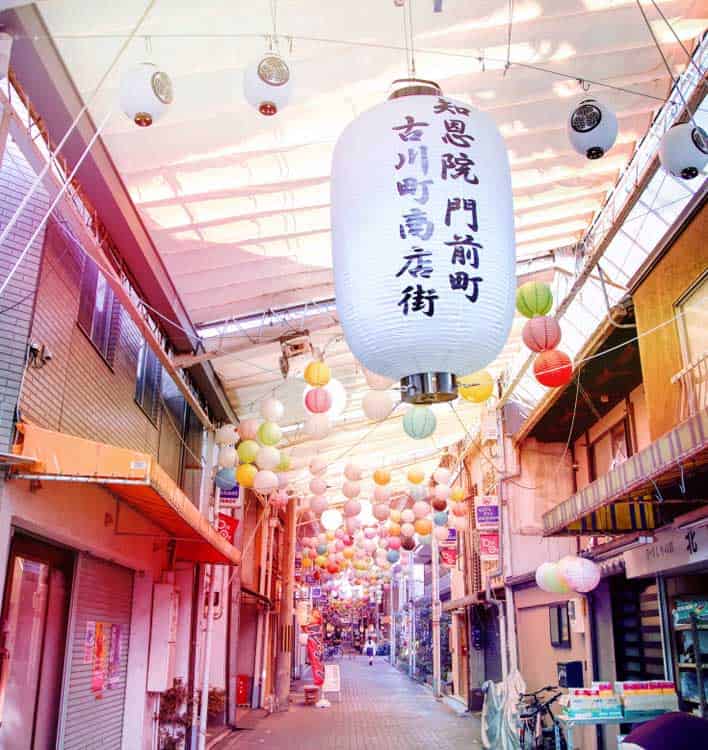
The next stop is Nishiki Market, which has anything from matcha ice cream to a variety of seafood dishes, Japanese souvenirs, and high-end clothing.
Ramen is an incredibly ubiquitous dish in Japan and you can find it anywhere.
Good ramen places are easy to find, but if I had to recommend one place, I would say highly Kyoto Gion Raman Muraji , also in the Gion District.
It’s well priced, has a great atmosphere, and the ramen is top notch.
On the outskirts of the Gion district lies the Kiyomizu-dera temple.
Kiyomizu-dera
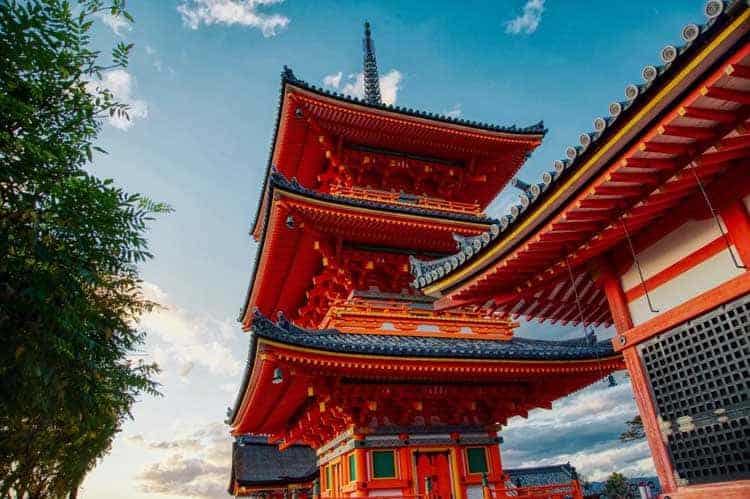
The Kiyomizu-dera is a Buddhist temple boasting fantastic views of the entire city of Kyoto and its catalog of gardens and brilliantly colored buildings make it a gorgeous backdrop for any photographer.
This UNESCO World Heritage Site is immensely popular, especially in November where the site holds special evening illuminations (an extra ticket charge).
The temple is free to see up to a certain point, then further access requires a proper ticket.
Geishas of Kyoto
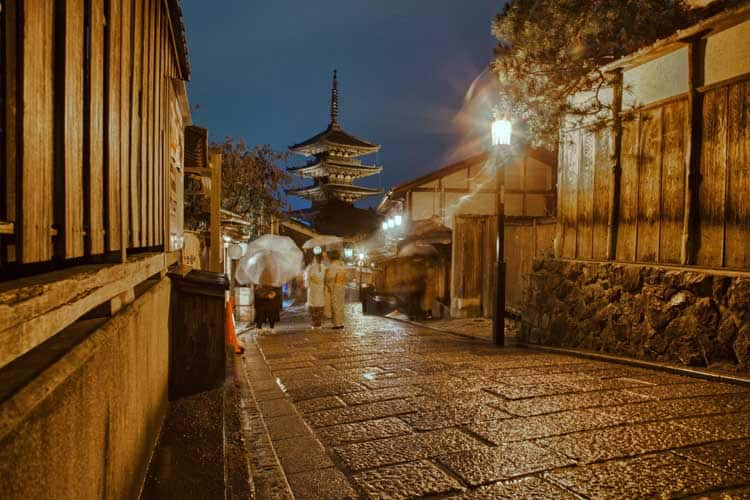
If you’re lucky, you may see geishas strolling around Gion before or after their daily training.
If you do see one, you may find that many people are trying to snap photos of them (often while chasing them), which can create quite the stir.
Instead of this, I suggest simply asking one if it’s ok to take their photo since unauthorized photography of them can now result in a fine.
But I find it best to just sit back and admire them for their dedication to their profession and keep the camera packed away.
Day 2 in Kyoto
The Arashiyama Bamboo Grove in western Kyoto is known for its bamboo-tree lined pathways and serene atmosphere.
Bamboo Forest – Arashiyama Bamboo Grove
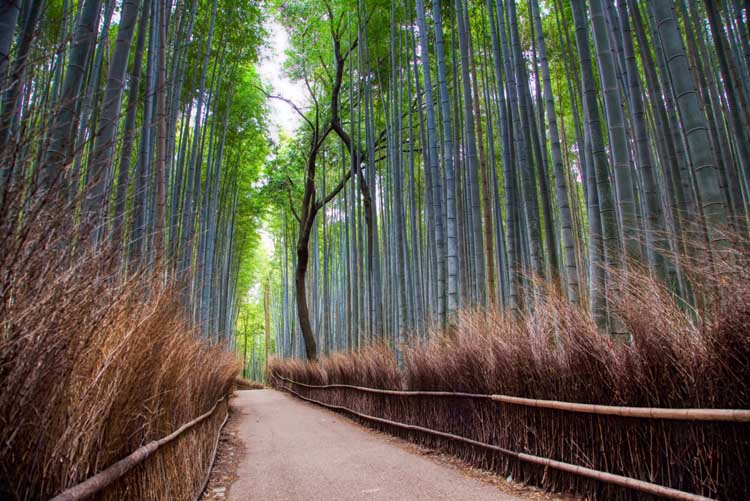
Arguably, the most special place in Kyoto may be the bamboo forest.
The Arashiyama Bamboo Grove is idyllic, serene, and tranquil and is best visited right after sunrise.
This is just the spot to unwind after the busy city pace of Tokyo or to relax right after arriving in Japan.
This short path is in the western part of Kyoto and is accessible by the San-in Line train from Kyoto station to Saga-Arashiyama station.
Since the trains start a bit later after first light, it’s best to take a taxi to Arashiyama (if you’re also looking to get a photo without many people).
Taxis starting from Kyoto station to this area will run you about 30,000 Yen (about $30), a small price to pay for having such a place to yourself.
Fushimi-Inari Taisha shrine
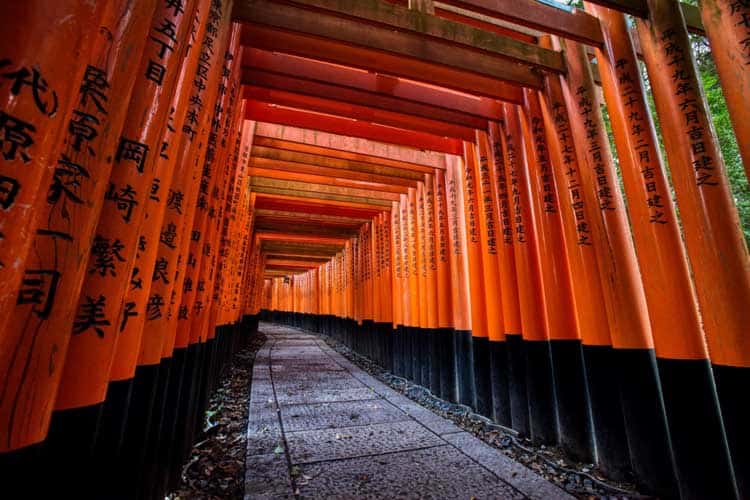
Known for its over 1000 orange tori gates, the Fushimi-Inari Shrine is at the top of every Japan traveler’s list.
A veritable ‘must-do’ in Kyoto is the Fushimi-Inari Taisha shrine , known for its plethora of orange tori gates lining its entire path all the way up to the top of Inari Mountain.
Admission is free and this shrine is open all day and night. Like the other temples in Kyoto, it is best enjoyed around sunrise.
The Japanese characters are visible on the back side of the gates, so they can be seen when coming back down the mountain.
This was easily my favorite place in all of Kyoto.
Kyoto Day Trips
Some other attractions to see around Kyoto, easily accessible by train in less than an hour include:
Himeji Castle
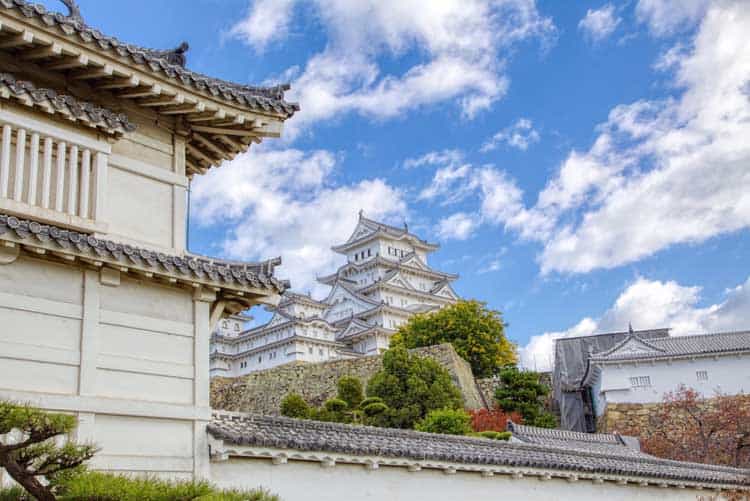
The most pristine castle by far is located in the city of Himeji. Himeji castle has never been damaged by a natural disaster or war.
Have you ever asked yourself, “Is there a castle in the world that has never been damaged by natural/manmade disasters and has never been attacked in war?”
It doesn’t matter if you’ve asked yourself that or not, but this castle DOES exist and it’s in the small city of Himeji.
Himeji Castle is therefore the most pristine and well preserved castle in the country.
It is located about 20 minutes (walking) from Himeji rail station and entry is 1000 Yen/Adult.
The culinary mecca of Japan.
Some people oftentimes spend days in Osaka and visit Kyoto for a day trip as well, just depends on your preferences.
Nonetheless, Osaka is reachable by train in less than an hour’s time.
About an hour south (by train) of Kyoto is the city of Nara. Nara Park is home to hundreds of friendly deer.
They are used to human interaction and will often go up to you without any fear.
Make sure you grab some rice crackers from a nearby vendor to feed them and keep them around long enough to get that perfect shot.
With it’s central location in Japan, collection of historically significant monuments and temples, array of markets and shops, and culinary delights, you have no excuse not to go. Enjoy!
Whether for just a few days or a few months, Kyoto should be a stop that you intend to make on your holiday.
Other Things to do in Kyoto
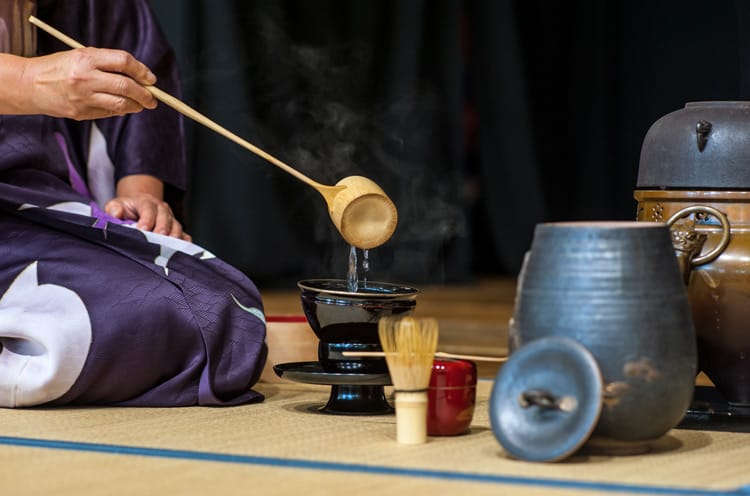
Kyoto is known for its shrines and temples, but there are other things to see and do.
If you are looking for a few more ideas, check out these highlights of Kyoto.
Tea Ceremony
Kyoto is one of the most traditional places to visit in Japan.
The tea ceremony originated in Kyoto and there is nothing more authentic than taking part in a tea ceremony while visiting the city.
Kyoto is a large producer of green tea and you can tour the Kyoto Obubu Tea farms or even take a two week tea masters course there.
Many people study in Kyoto and there are many options to book a tea ceremony at Get Your Guide.
Ryoanji Temple
Ryoanji Temple houses one of Japans most famous rock gardens.
A UNESCO World Heritage Site, it is one of Japan’s most visited tourist attractions.
This Zen rock garden houses meticulously raked gravel surrounding rock covered boulders.
Kyoto Imperial Palace
Before moving to Tokyo, the ruling family of Japan resided in Kyoto. Located in the Kyoto Imperial Park it is a tranquil place to visit.
It is worth spending an afternoon here as there are plenty of things to see in the park.
- For more Kyoto Tourist Attractions check out these Top 10 Things to do in the City.
Protip: Kyoto Food
No matter your culinary preference, don’t leave Kyoto, or Japan for that matter without trying Octopus balls, also called takoyaki .
These are made by a wheat flour-based batter and cooked in a special molded pan and is filled with minced or diced octopus (tako) with tempura scraps, pickled ginger, and green onion.
Kyoto is very bike-friendly which is a preferred form of transportation as most people rely on a massive network of buses with just a few subway lines along the main avenues
You can get a 2 day subway/bus pass for 1700 Yen/Adult
There you have it. An excellent Kyoto itinerary for about 4 solid days in this Japanese city.
Read More About Travel to Japan
- Top 10 Things to Do in Kyoto, Japan
- Things to do in Kamakura Japan – The Ultimate Seaside Escape
- 50 Awesome Things to do in Tokyo, Japan
- Male Geisha Transformation in Tokyo, Japan
- Tokyo on a Budget – How to Travel Without Breaking the Bank
- Japan Travel Guide
- Complete Nikko Japan Travel Guide – 18 Things to do and Places to See
- Japanese Ryokan – Our Stay in a Traditional Inn
- 7 Unique Japanese New Year Traditions
If you enjoyed all these amazing places to visit in Kyoto, save it to Pinterest for future travel planning.
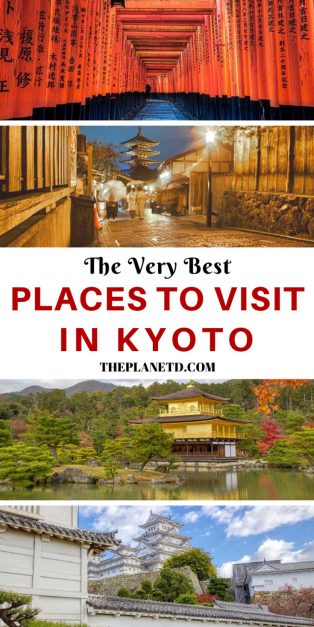
Travel Planning Resources
Looking to book your next trip? Why not use these resources that are tried and tested by yours truly.
Flights: Start planning your trip by finding the best flight deals on Skyscanner
Book your Hotel: Find the best prices on hotels with these two providers. If you are located in Europe use Booking.com and if you are anywhere else use TripAdvisor
Find Apartment Rentals: You will find the cheapest prices on apartment rentals with VRBO .
Travel Insurance: Don't leave home without it. Here is what we recommend:
- Allianz - Occasional Travelers.
- Medjet - Global air medical transport and travel security.
Need more help planning your trip? Make sure to check out our Resources Page where we highlight all the great companies that we trust when we are traveling.
You May Also Like
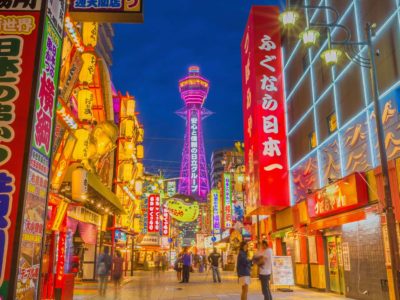
22 Best Things To Do In Osaka, Japan in 2024
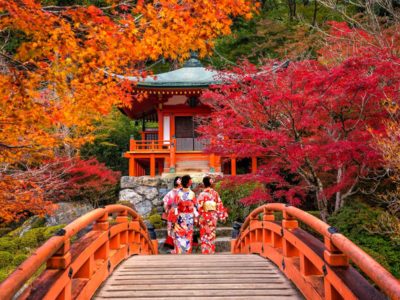
The 20 Best Things to Do in Kyoto, Japan
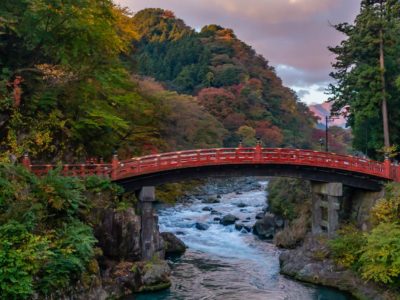
9 Amazing Day Trips from Tokyo, Japan
About Chris Kane
Chris, or CK for short is a chemist by trade, but can be found outside his natural laboratory habitat, often with a camera in hand. The Eckplorer.com is dedicated to adventurers and photographers who like to plan, without sacrificing spontaneity but is also on a part-time schedule. Follow Chris at eCKsplorer / Facebook / Instagram / Pinterest
Join thousands of others who get our monthly updates!
Leave a comment cancel reply.
Save my name, email, and website in this browser for the next time I comment.
1 thought on “Places to Visit in Kyoto – My Favorite City in Japan”
Thanks for sharing this blog. Japan seems one of the good tourist destinations, especially due to the cultural richness. Thanks for sharing the places to visit in Kyoto.

The Best Spots To View Gorgeous Cherry Blossoms In These Two Popular Regions Of Japan
I f you're flying into Japan for cherry blossom season, there's a good chance you'll land in one of two regions: Kanto or Kansai. The country's three busiest international airports are all located here. Narita International Airport and Haneda Airport, otherwise known as Tokyo International, are gateways to the capital and the rest of the Kanto region (including Japan's second-largest city, Yokohama). Kansai International Airport services the area where other big cities like Kyoto, Osaka, and Kobe are clustered together in the same railway network. Wherever you're headed in Kanto or Kansai, there are plenty of places to see the sakura, or Japanese flowering cherry, in bloom.
Though the blooming period only lasts about two weeks, the cherry blossoms give spring tourism a multi-billion-dollar boost across Japan. As the unofficial national flower (the semi-official one is the imperial chrysanthemum), it's an indelible part of the culture here. Even the cherry blossoms in Washington, D.C. , can be regarded as an extension of that since they were a gift from the City of Tokyo in the early 1900s.
Hanami (the common Japanese term for cherry blossom viewing) can be tricky when you've planned your trip months beforehand. The timing of the peak bloom varies depending on the place and weather each year, so it's good to watch the cherry blossom forecast and keep your travel itinerary fluid. It also helps to have backup plans in mind and know your many options with spots like these in Kanto and Kansai.
Read more: 22 Underrated Tourist Destinations In Asia To Add To Your Bucket List
Places To See Cherry Blossoms In Tokyo
One picturesque cherry blossom viewing spot in the heart of Tokyo is Chidorigafuchi. Part of the Imperial Palace moat, it has a walking path and pier where you can ride rowboats with blossoms sloping down the banks. Though it tends to get crowded with picnickers, Ueno Park is another popular spot with convenient access to multiple museums, plus a zoo with two rock-star giant pandas.
Just two stations away on the Yamanote Line, in Nippori, is Yanaka Cemetery, which provides a quieter atmosphere and an appropriate reminder of life's fleeting nature amid the short sakura bloom. Shinjuku Gyoen has a nice green lawn filled with cherry trees, while the riverside flowers of Sumida Park will put you near Sensō-ji Temple. In Inokashira Park, you can board a swan boat for cherry blossom viewing near the Ghibli Museum.
Rikugien Gardens is known for its seasonal illumination of an almost 50-foot shidarezakura (weeping cherry tree) at night. The Tokyo Midtown complex has a promenade of a hundred cherry trees that light up pink, and some of its restaurants have terraces with a view of the blossoms by day or night. The trees of the Meguro River also draw visitors before and after dark, and that's where you'll find Tokyo's branch of the Starbucks Reserve Roastery, one of only six in the world. Alas, the sakura Frappucino season begins early and is usually finished by the time the actual sakura petals open.
More Kanto Spots: Yokohama, Kamakura, And Chiba
Yokohama is a city just as fabulous as Tokyo , and that includes its cherry blossom viewing options, such as the pond and pagoda backdrop of Sankeien Garden. To see some well-known city landmarks juxtaposed with cherry trees, stroll along Sakura-dori in the "harbor of the future," Minato Mirai. Yokohama Landmark Tower, once Japan's tallest building, is further visible from the cherry-blossom-filled Kamonyama Park, which overlooks Minato Mirai. If you grab some to-go lunch in Chinatown, you can walk over to Yamashita Park and picnic among cherry trees along the water.
In the seaside town of Kamakura, you'll see one Instagrammable cherry tree beside the famous Great Buddha statue at Kōtoku-in Temple (a place Barack Obama visited more than once). For a fuller view of cherry blossoms, get back on the Eno-den railway to Kamakura Station and visit the nearby Shinto shrine, Tsurugaoka Hachimangū. It has a long approach that will take you down the middle of a beautiful, cherry-tree-lined avenue called Dankazura.
Chiba Prefecture, which neighbors Tokyo to the east, is home to the world's two best-rated Disney parks , where you might catch sakura blooming in front of Cinderella Castle. For a more traditional view of Japan, try the Bōsō Peninsula, where cherry trees surround the reconstructed Tateyama Castle in Shiroyama Park. The Japan Cherry Blossom Association ranks three other sites in Chiba — Mobara Park, Shimizu Park, and Izumi Nature Park — among the top 100 in Japan.
Places To See Cherry Blossoms In Kyoto And Osaka
In Kyoto, the road to cherry blossom bliss is paved with stones along the Philosopher's Path. It's a scenic, 1.25-mile, canal-length walk from the Silver Pavilion, Ginkakuji, down to the brick aqueduct of Nanzenji Temple. The sakura-lined tracks of the Keage Incline, a former railway, are only about a 10-minute walk from Nanzenji. On the subway — which helps you avoid the long lines for Kyoto's overcrowded buses — it's a straight shot from Keage Station to the cherry trees of Nijō Castle.
Chion-in Temple, Maruyama Park, and the Gion Tatsumi Bridge area are also within walking distance of each other. Like Nijō Castle, they each do sakura light-up events at night. Chion-in is notable for its massive main gate, while Maruyama Park has another big weeping cherry tree as its centerpiece. Gion is the geisha district, though some of its back alleys are now off-limits due to the paparazzi tendencies of tourists. As the official posters say, "Mind your manners when in Kyoto."
Over in Osaka, you'll find cherry blossoms in Tempozan Park, named for its bayside hill, which is actually the smallest mountain in Japan. The Tempozan Bridge and Tempozan Giant Ferris Wheel tower over it, and Osaka Aquarium Kaiyukan is nearby. With over 4,000 cherry trees encircling its wheelchair-accessible main tower, Osaka Castle Park is perhaps the city's premiere hanami destination. Locals also flock to Kema Sakuranomiya Park to see almost 5,000 cherry trees growing along the Okawa River.
More Kansai Spots: Nara, Kobe, And Himeji
From Kyoto and Osaka, you can take the train to other cities in Kansai, like Nara, Kobe, and Himeji. Hiroshima isn't the only place where hundreds of deer roam free . Nara Park also has them, along with plenty of cherry trees. You can feed the deer senbei crackers and take pictures of them with cherry blossoms in the background on the way to Tōdaiji Temple. Cherry blossoms also mark the approach to Tōdaiji's Great Buddha Hall.
There's more to Kobe than its world-renowned beef or its waterfront park. The Ōji Zoo is a sakura wonderland, as are some of the mountain spots bounding the city. A ropeway links Mount Rokkō with Arima Onsen, a walkable hot spring town where cherry trees show their seasonal splendor along a winding river. You can see a cherry blossom tunnel along Takao-dori near the cable car station for Mount Maya, which is known for its stellar night views.
Himeji's main draw is its castle, often cited as the most magnificent of Japan's 12 surviving original castles. The centuries-old hilltop fortress, nicknamed the White Heron Castle, is even lovelier than usual when you see it rising over the 1,000-plus cherry trees planted around it. These include the usual pale-pink somei-yoshino variety and the late-blooming, deeper pink yaezakura. If you're looking to end your Kansai sakura tour with a bang, Himeji Castle is arguably one of the most beautiful places to see cherry blossoms around the world.
Read the original article on Explore
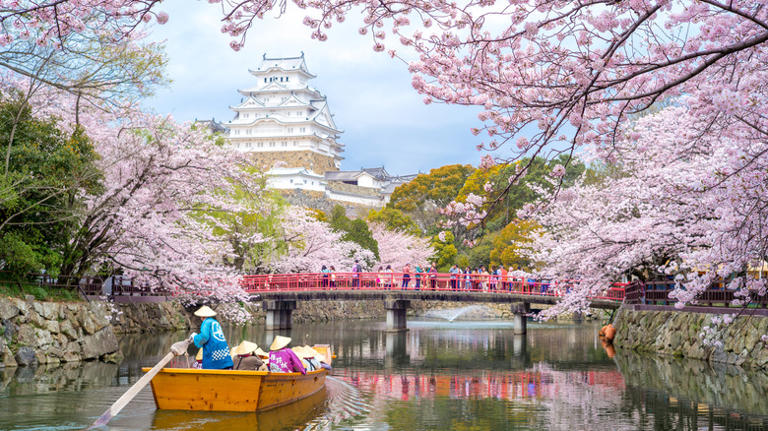

IMAGES
VIDEO
COMMENTS
12. Wander through Arashiyama. The sound of bamboo in the wind is part of Japan's national heritage. Located in the Western Kyoto district of Arashiyama, the Arashiyama Bamboo Grove is one of the most famous places in the world to hear it.
Some of Kyoto's other famous tourist destinations include the Imperial Palace and the Gion district. Kyoto is often combined with day trips to some of Japan's famous tourist destinations that are located nearby, including Nara, Kobe, and Hiroshima. 1. Kyoto Station.
See ways to experience (39) 2023. 5. Arashiyama. 6,732. Neighborhoods. Arashiyama is a small town on the Oi River. Its moon-crossing bridge, Togetsu-kyo, is a beautiful, much-beloved wooden structure. Arishiyama also has Tenryu-ji temple, one of the 14 World Heritage Sites in Kyoto.
Holly Johnson|Alissa Grisler November 10, 2023. Ranking of the top 15 things to do in Kyoto. Travelers favorites include #1 Fushimi Inari Shrine, #2 Kiyomizu-dera Temple and more.
Top things to do in Kyoto tourist attractions, sightseeing and experiences: 1. Bamboo forest 2. Fushimi Inari Gates 3. Gion District 4. Kiyomizu Temple 5. Samurai & Ninja Museum 6. Kyoto Onsen 7. Nishiki Market 8. Kimono Tea Ceremony Maikoya 9. Nishiki Market 10. Imperial Palace
See the Best of Kyoto: If you want to cover all the highlights of Kyoto in a day, the Kyoto Full-Day Sightseeing Tour including Nijo Castle and Kiyomizu Temple is an excellent option. An experienced guide provides a fascinating historical context to the attractions on this full-day tour, which includes a visit to Kinkaku-ji Temple, Nijo Castle ...
3. Visit Pontocho Alley. Pontocho Alley, a narrow historic district in Kyoto, Japan, offers a glimpse into traditional Japanese culture. Lined with teahouses, restaurants, and bars housed in historic wooden buildings, this atmospheric alley transports visitors back in time.
Read more of our Kyoto and Japan travel tips. Kyoto. 14 Stunning Places to See the Cherry Blossoms in Kyoto; The 16 Best Vegetarian Restaurants in Kyoto; The Ultimate Guide to Kyoto Temples and Shrines; 14 Best Day Trips from Kyoto; General Japan Tips. Planning a Trip to Japan: Dos and Don'ts; 16 Unmissable Places to Visit in Japan
Southern Higashiyama. Southern Higashiyama is home to many of Kyoto's most famous and popular tourist destinations. If you haven't been to Southern Higashiyama, you haven't been to Kyoto! Places to visit: Visit glorious well-known temples like Sanjusangen-do, Kiyomizu dera temple, Kennin-ji, and Chion-in. Try and spot geishas in Hanami-koji .
13. Golden Temple, Kyoto. The Golden Temple, also known as Kinkaku-Ji, is the most popular thing to do in Kyoto and the most-visited attraction in the city — for good reason! This majestic temple, balanced on the edge of a large pond, is covered in real gold leaf.
One of the best places to visit in Kyoto for a taste of modering Japan is the highest structure in the city, Kyoto Tower. Located in central Kyoto, the tower offers spectacular 360-degree views of the surrounding area as well as telescopes and touch screens that show the names of what you are looking at. It is strange to see such a structure in ...
Day trips from Kyoto. Many travelers go on day trips from Kyoto to Nara and Osaka. Nara, like Kyoto, is a former capital with many impressive temples. You can take the JR Miyakoji Line to get from Kyoto to Nara in about 45 minutes. Osaka is another popular destination for a day trip from Kyoto.
Kyoto is the best place to learn "Bushido" (the way of the warrior) and feel Zen. Book activities now! Guided Museum Tour and Samurai & Ninja Experience. Tripadvisor rating of Kyoto Samurai & Ninja Museum: 4.5/5.0 (1,324 Reviews) ... 15 Best Places to Visit in Kyoto Kyoto Guide: ...
See ways to experience (39) 2023. 5. Arashiyama. 6,732. Neighbourhoods. Arashiyama is a small town on the Oi River. Its moon-crossing bridge, Togetsu-kyo, is a beautiful, much-beloved wooden structure. Arishiyama also has Tenryu-ji temple, one of the 14 World Heritage Sites in Kyoto.
Location: 625 Gionmachi Kitagawa, Higashiyama Ward, East Kyoto. Save on Google Maps.. From Kodaiji Temple, you can walk farther north and explore Gion, Kyoto's geisha district. One of the main places to visit here is the Yasaka Shrine, home to the most famous festival in Japan, the Gion Matsuri.
Ryokan Tori. Mid-range. Ryokan Tori is located in Kyoto, 2 km from Kitano Tenmangu Shrine. The property is around 2.3 km from Nijo Castle and Kyoto Imperial Palace. The property is 3.2 km from Kinkaku-ji Temple and 3.7 km from Kyoto International Manga Museum. All guest rooms in the ryokan are fitted with a kettle.
For that ancient-Kyoto feel, Higashiyama is the place to visit. It has narrow, winding streets, and traditional shop fronts for you to explore. ... 5 Best Kyoto Winter Illuminations 2023-24 December 1st, 2023 | JC Team Head to the old capital for the fanciest festive feels in Kansai. Things to Do. Top 7 Picks for Osaka Winter Illuminations ...
And lastly, on our countdown list of the best places to visit in Kyoto is Kinkakuji Temple (金閣寺). Along with the previously mentioned Fushimi Inari Shrine, this Buddhist Temple is another highly popular tourist spot for foreign visitors. It is located north-west of central Kyoto and it is one of 17 locations of the Historic Monuments of ...
For more details, take a look at our list of the best places to visit in Kyoto, Japan. Read Also: 10 Tatami Hotels In Kyoto, Japan - Updated 2024; Top 9 Skiing & Snowboarding Resorts Near Kyoto, Japan - Updated 2024; 12 Best Ryokans Near Kyoto Station, Japan - Updated 2024; 1. Kyoto Imperial Palace (from USD 69.0)
Kyoto is the 7 th most populated city in Japan, though to most people, it is their favorite place to visit.. This is because Kyoto still has all the conveniences you get in a larger city yet possesses a vast array of historical and cultural entities that are quintessentially Japanese.. Kyoto is my favorite Japanese city and this itinerary highlights all of the best places to visit in Kyoto to ...
In Kyoto, the road to cherry blossom bliss is paved with stones along the Philosopher's Path. It's a scenic, 1.25-mile, canal-length walk from the Silver Pavilion, Ginkakuji, down to the brick ...